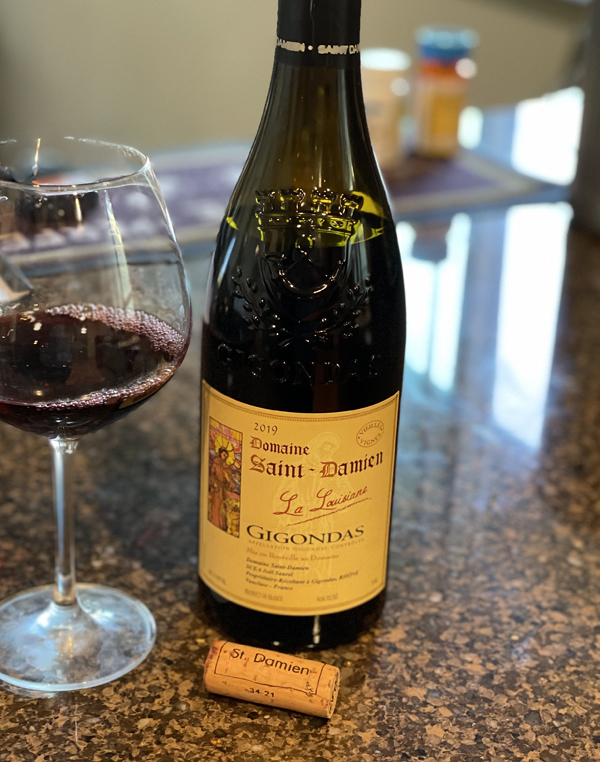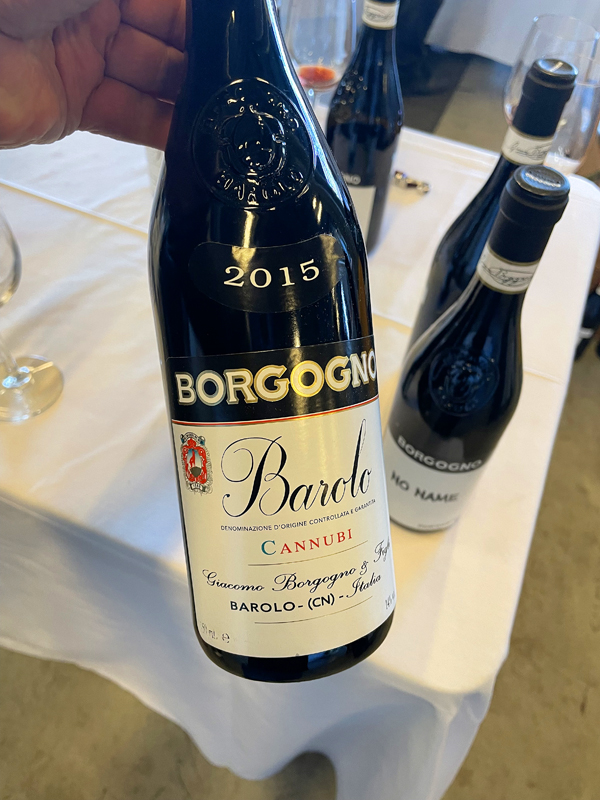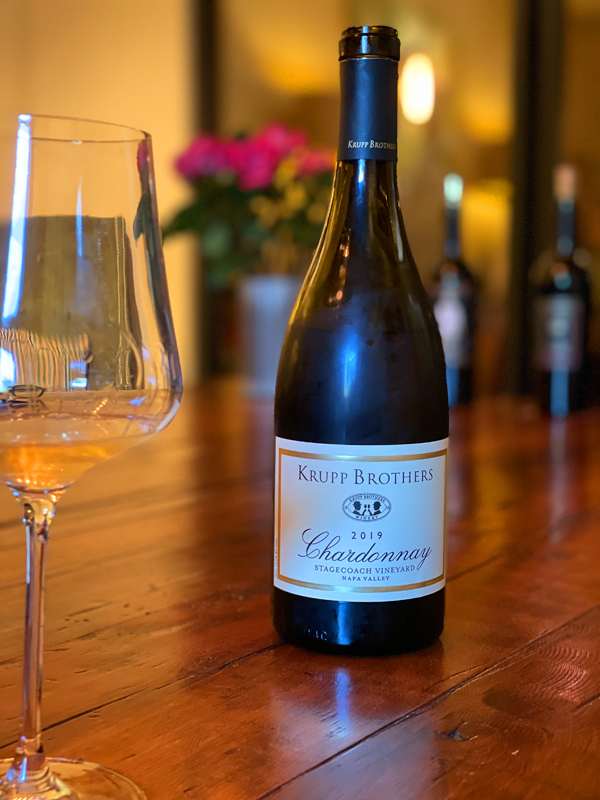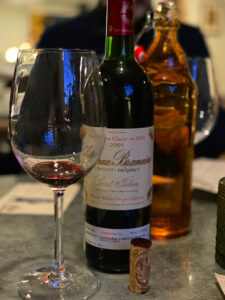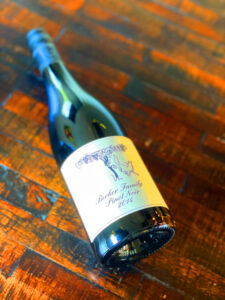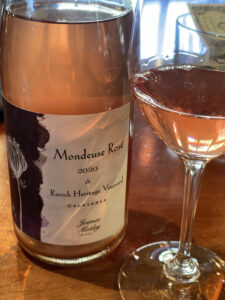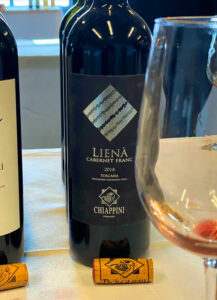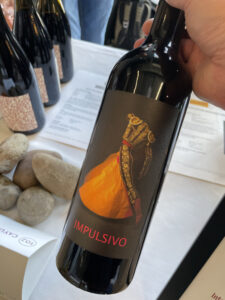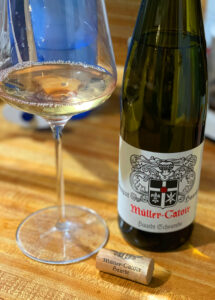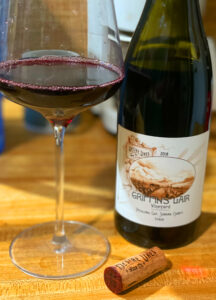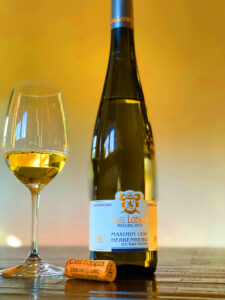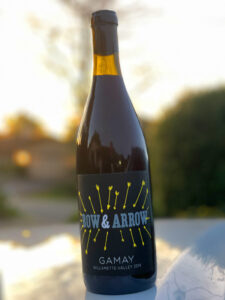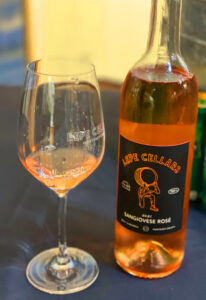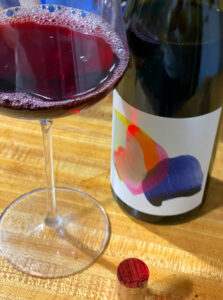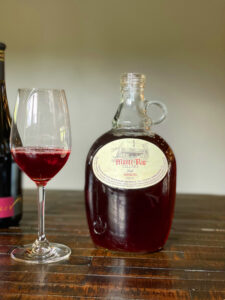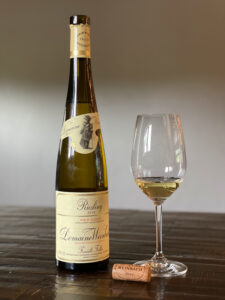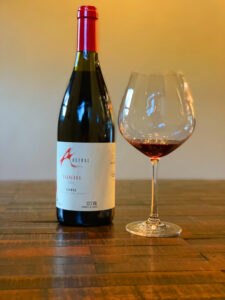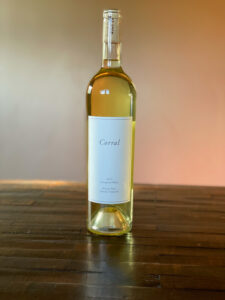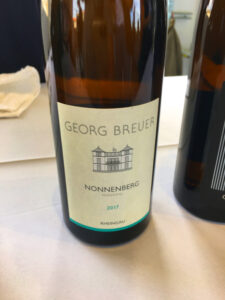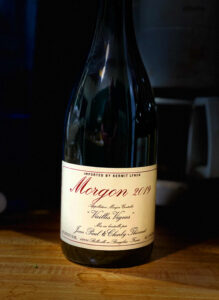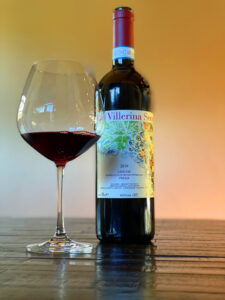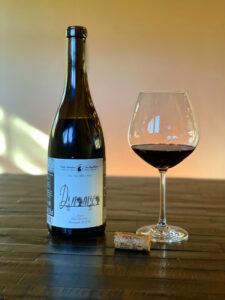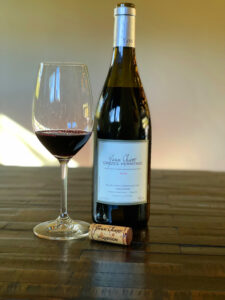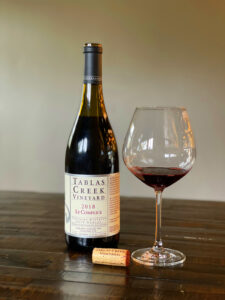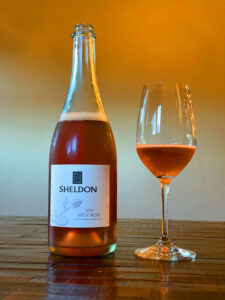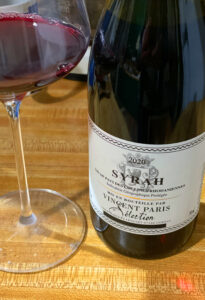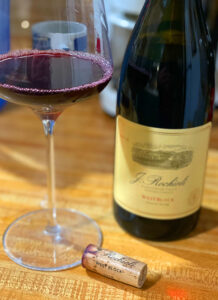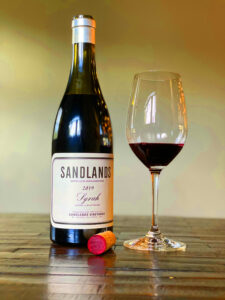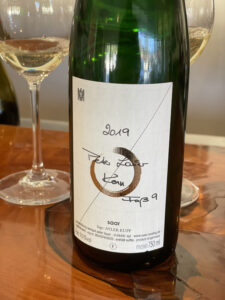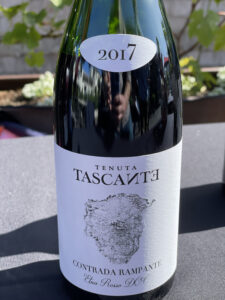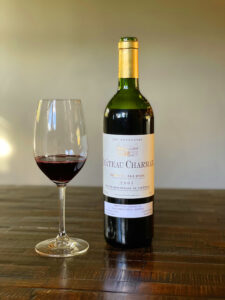Grapelive.com – Reviews – November 2022
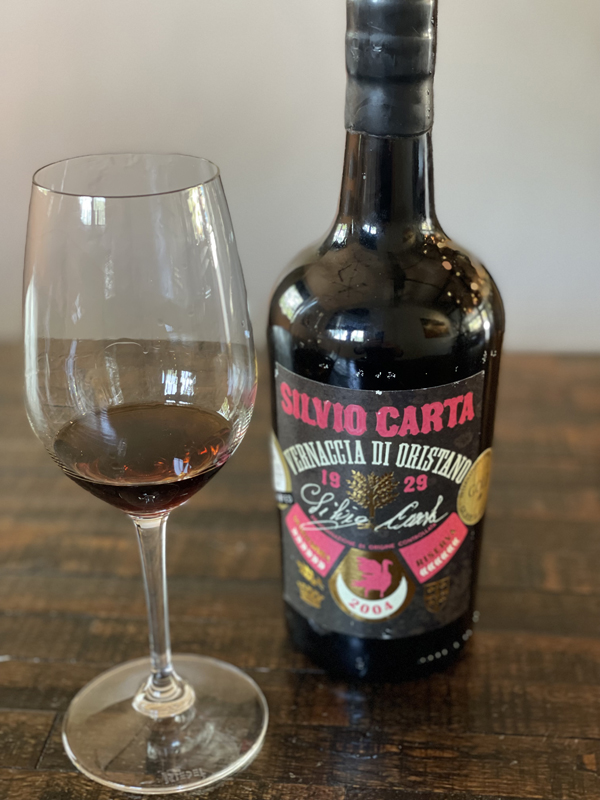
2004 Silvio Carta, Vernaccia di Oristano DOC Riserva, Sardinia, Italy.
A rare treat and a wine almost never seen outside of the Oristano region on the island of Sardinia, the traditional Vernaccia di Oristano, which has the aromas, flavors, and structure that remind some of a quality version of Amontillado sherry, though this 2004 Silvio Carta has the exotic and sweeter personality of Pedro Ximenez, though not as sweet and or an aged Marsala, with the color of motor oil and a round palate of fig, apple sauce, walnut, orange rind, dried apricot and tropical essences, as well as having an oxidative core, with light earthy tones and savory nuttiness. This was the first real experience with a classic vintage Vernaccia di Oristano DOC and while not an everyday wine, I was very much impressed with this fascinating offering by the legenday Silvio Carta winery, founded in 1929, an estate well known for their historic and traditional examples, it is a wine that goes great with a variety of desserts and or as an after dinner sipper with a hard cheese plate, though locally it also goes with Bottarga, the dried and cured fish roe delicacy of Sardinia. The Vernaccia di Oristano grape is one of many varietals to be called Vernaccia, but is unrelated any others found in Italy and it is certainly not to be confused with Vernaccia di San Gimignano, the crisp and light Tuscan white wine. The Sardinians have an ancient, traditional and unique method for tapping these Vernaccia di Oristano barrels, done to not disturb the flor atop (inside the cask) of the wine, which is called spiseddadura, where they cut a hole in the lower part of the barrel to extract wine and after they plug it with hemp. These Vernaccia di Oristano wines can be multi vintage blends, but this one is all from a single harvest and is vintage labeled and saw some passito fruit (riper picks) and comes in at closer to 16% natural alcohol.
Originally established in 1971, Vernaccia di Oristano was the first D.O.C. established in Sardinia to promote this white grape, who origins are somewhat murky, with locals claiming it is native to their island, while most believe it came with the Phoenicians in ancient times, maybe coming from Greece. In order for a wine to bear this D.O.C. on the label, the wine must be made from 100% Vernaccia di Oristano and must be grown and made within the municipalities of the lower Tirso subregion, near the sleepy seaside village of Oristano itself. The rules say maximum vineyard yields are set at 80 quintals per hectare and there is a 15% minimum alcohol requirement under this D.O.C. The wines can be both sweet and or dry in style. There is a two-year minimum aging period in barrels and the Superiore designation requires a minimum alcohol level of 15.5% and a minimum of three years barrel aging, while the Riserva designation, as in this wine, goes a step further with a four-year minimum barrel aging requirement. Like Sherry wines, Vernaccia di Oristano is aged under flor and unlike Sherry it is rare that wines are fortified with spirit and sees locally made chestnut barrels, usually close to a hundred years old, employed here. The Flor forms a biofilm on the wine’s surface, and during years of aging, the wine undergoes a gradual oxidation under this protective layer, making for the mentioned oxidative characteristics, with nutty, savory, or umami aromas and flavors. As noted, mainly chestnut wood is traditionally used during the maturing period, though oak can be used if desired, and are filled to about 90 percent capacity, leaving some headspace for oxygen that the Flor yeast needs. These wines are complex, not overtly sweet and reward the adventurous, I enjoyed this Silvio Carta Riserva version a lot and hope to try it again!
($40 Est.) 93 Points, grapelive
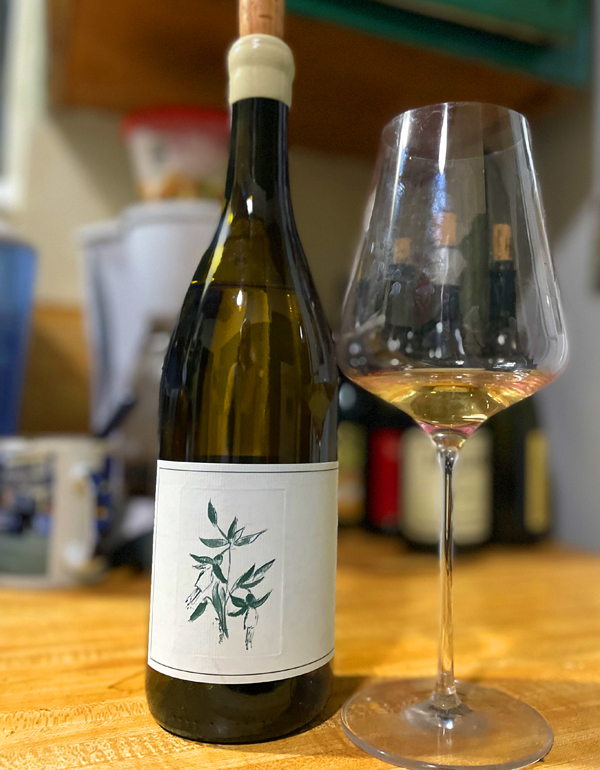
2019 Arnot-Roberts, Chardonnay, Watson Ranch Vineyard, Napa Valley.
Arnot-Roberts has come to be known as an adventurous winery, exploring unique varietals and finding out of the way undiscovered vineyards, many that have now become coveted gems, like their Watson Ranch site. This is where they get these quality Chardonnay grapes, along with some Cabernet Franc which joins the lineup for the first time with the 2021 vintage and is a wine that I plan on reviewing shortly, as I have just received my allocation. The 2019 Watson Ranch Chardonnay reminds be of a quality Saint-Veran and or a Pouilly-Fuisse with classic white Burgundy character and elegance with a cool toned palate that shows a hint of reductive earthiness on the nose and a medium bodied and lively palate of lemon, apple and Asian pear fruits, a touch of salty and chalky stones, hazelnut, clove spice and subtle oak. As mentioned here, Arnot-Roberts, which was originally founded in Healdsburg in 2001 by two childhood friends, Duncan Arnot Meyers and Nathan Lee Roberts, has grown comfortably into one of California’s most noteworthy wineries. For this vintage, Arnot-Roberts made 48 barrels of their Watson Ranch Chardonnay that was barrel fermented and aged in mostly used French oak to promote purity, transparency and the terroir. This lightly golden and pale Watson Ranch Chardonnay usually is fairly easy to find and is one of the best values in the Arnot-Roberts collection and it enjoys being paired with fish, poultry dishes and soft farm cheeses, especially Mt. Tam and Red Hawk from Cowgirl Creamery.
The Watson Ranch Vineyard, as Arnot-Roberts notes, is perched on a steep hillside overlooking the San Pablo Bay at the southernmost end of the Napa Valley. The ranch was named after early Napa attorney, Augustus Watson, who owned the property in the early 1900s. Interestingly, the adjacent property, to Watson Ranch and its vines, is an abandoned limestone quarry, which, as the winery continues, historically employed hundreds of people, it was most famous for mining material used to rebuild San Francisco after the 1906 earthquake. This unique Napa location is exposed and unprotected from the elements, this wind-whipped site was planted in 1993 by the talented Napa Valley veteran grower Salvador Ramos, who Arnot-Roberts has great respect for. The soils here at Watson Ranch are calcareous clay over limestone, extremely rare on the North Coast but, but as the winery explains, it shows itself at the tail end of the Vaca Mountains in Southern Napa County. The well-drained calcareous soils, along with organic farming and cool windy conditions, has the potential to produce world-class Chardonnay wines as seen in this wine. Arnot-Roberts uses vineyards throughout Northern California, including a selection of vines in the Napa Valley, the Sonoma Coast, the Santa Cruz Mountains, the Santa Rita Hills, as well as Clearlake (Lake County) and the Sierra Foothills and they produce a collection of Pinot Noir, Chardonnay, Syrah and Cabernet Sauvignon, as well as some rarities made from lesser known varietals, like their Trousseau (a Jura inspired red wine), Gamay, Ribolla and their Touriga Nacional based Rosé, all of which I highly recommend looking for.
($40 Est.) 90 Points, grapelive
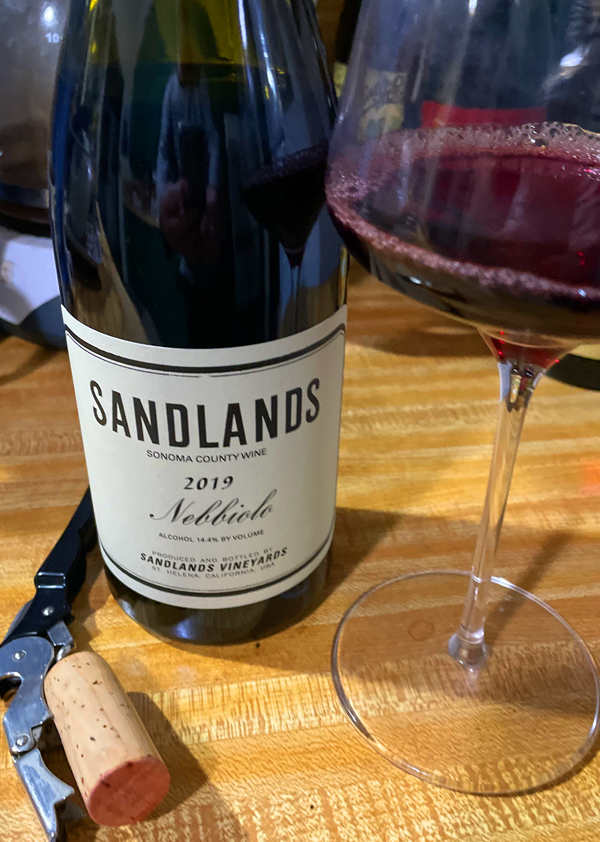
2019 Sandlands Vineyards, Nebbiolo, Sonoma County.
Tegan Passalacqua’s Sonoma County Nebbiolo is quite astonishing for its true varietal character and it could be easily mistaken for Langhe Nebbiolo and or a real Barolo, though it charms for its subtle personality and confidence in the glass with a raw presence and no pretense, showing a quietly powerful structure with dry tannins and a classic array of earthy flavors. The 2019 vintage perfectly captured the grape’s best features with full ripeness, but with bright acidity and savory notes providing a sublime balance and tension with this garnet and brick red edged Nebbiolo showing brandied cherry, damson plum, balsamic strawberry and dark berry fruits, along with hints of minty herbs, anise, leather, chalky stones and cedar notes that accent this impressive effort. This Piedmonte inspired wine, which I believe is Sandlands debut release of Nebbiolo, is absolutely stunning stuff, and as a huge lovers of the old world versions, this Sonoma County Nebbiolo far exceeded my expectations, and as it opened up it continued to intrigue gaining depth, mineral tones and pretty floral aromatics. This will be a tough get, unless you are on the Sandlands list, but I highly recommend searching it out.
Sandlands Vineyards, as noted here, is the personal project of Tegan Passalacqua, who is the head winemaker and vineyard manager at the famed Turley Cellars, and his Olivia, is an exciting small lot winery and must follow label, especially for those that want to taste California wine history. Their line-up of wines, as they note, includes some the forgotten classic California varieties, like this Cinsault, but also includes the Mission grape, Carignane, Mataro (Mourvedre), Chenin Blanc, Grenache and Zinfandel field blends from old vine vineyards, mostly planted on California’s sandy decomposed granite soils. Over the last ten years, Tegan Passalacqua, along with a few others of his generation, have become the keepers of the faith of California wine history, and he is very influenced by old school wines rather than modern trends, with his wines being made using native yeasts and raised in mostly used oak to promote purity and transparency. The Nebbiolo, which is best enjoyed with hearty cuisine, was traditionally made with carefully sorted sustainable de-stemmed grapes and saw an extended aging regime, with I believe, close to 24 months in cask before bottling. This wine now joins Sandlands’ Cinsault, Syrah, Carignane and Mataro as my favorites in Passalacqua’s lineup of small lot and authentic offerings!
($38 Est.) 95 Points, grapelive
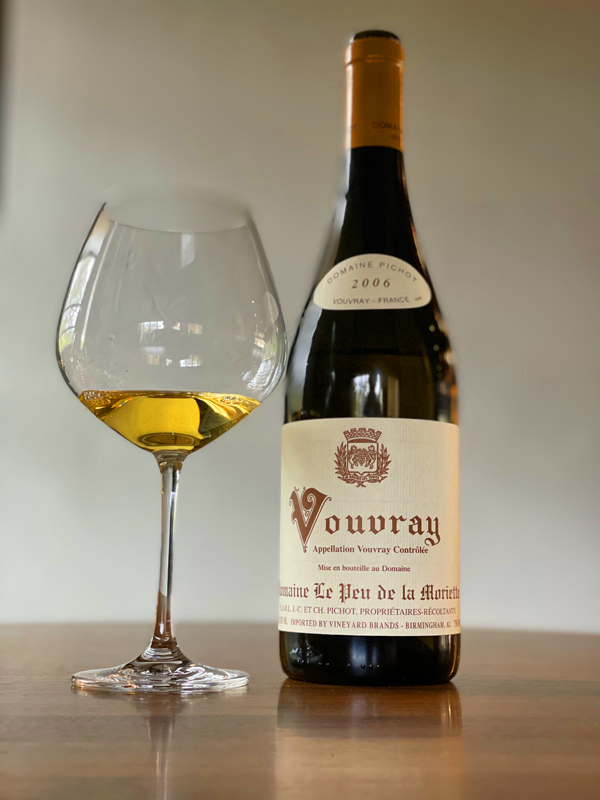
2006 Domaine Pichot, Vouvray “Domaine le Peu de la Moriette” Loire Valley, France.
The mature, bright golden/yellow and exotic Domaine Pichot demi-sec late cellar release Domiane le Peu de la Moirette Vineyard Vouvray from the 2006 vintage is lush and complex on the medium bodied palate with a touch of residual sugar giving a beautiful and expressive honey tone to go along with the lovely evolved fruit that includes classic peach, lemon preserves, dried apricot and nectarine. The wine is showing the best of its age with waxy notes, earthy truffle, bitter almond and dried florals with some round minerallity and stoniness as well, it makes for a rewarding wine that should go exceptionally well with holiday meals, especially roast poultry and baked glazed ham. There are some nice spicy, clove and herb notes that allow for this off dry wine to feel nicely balanced and not be cloying, this is drinking incredible right now and is a ridiculous good value. This terroir is set on clayey limestone and the Domiane le Peu de la Moirette vines have about 25 acres of high density plantings, which is perfect for making concentrated fruit driven wines, as this bottling shows perfectly. Domaine Pichot and winemaker, now Christophe Pichot, offers a Dry, Demi-Sec (off dry), young and cellar aged, and a Vouvray Moelleux, a sweeter version with Botrytis (noble rot), plus a sparkling Brut Chenin Blanc, in the Méthode Champenoise style.
Jean-Claude Pichot’s family, as the winery proudly notes, is one of the oldest in Vouvray, with origins as viticulturists and restaurateurs dating back to 1739, and with cellars cut from limestone which was once quarried to provide stone to construct the beautiful and historic grand châteaux of the Loire Valley. Domaine Pichot, imported to the states by Vineyard Brands, was established in 1996, with the estate consisting of the family’s three historic vineyards, Coteau de la Biche, Le Peu de la Moriette, as used for this late release bottling, and Le Marigny. The Pichot property is close to 60 acres of vineyards, which are all in the Vouvray appellation, located just six miles east of the town of Tours on the right bank of the Loire River. The vines here are thirty years old on average, with some over 60 years old and are 100% planted to Chenin Blanc. For this wine, Pichot picks a bit riper and used a soft pneumatic press on the Chenin grapes to not extract too much green phenolic bite and the wine was then allowed to cold settle for four days before fermentation, with 80% done in stainless and 20% in large oak vats. Then this wine was allowed to finish secondary, but was then bottled quickly and cellared aged in bottle for, in this case, over a dozen years. The younger versions of Pichot are bright, lightly aromatic, quince like tangy and fresh, underpinned by firm and crisp acidity, which is also value priced, and I can easily recommend them, along with the extended cellar aged wines, like this.
($28 Est.) 93 Points, grapelive
Grapelive.com – Reviews – October 2022
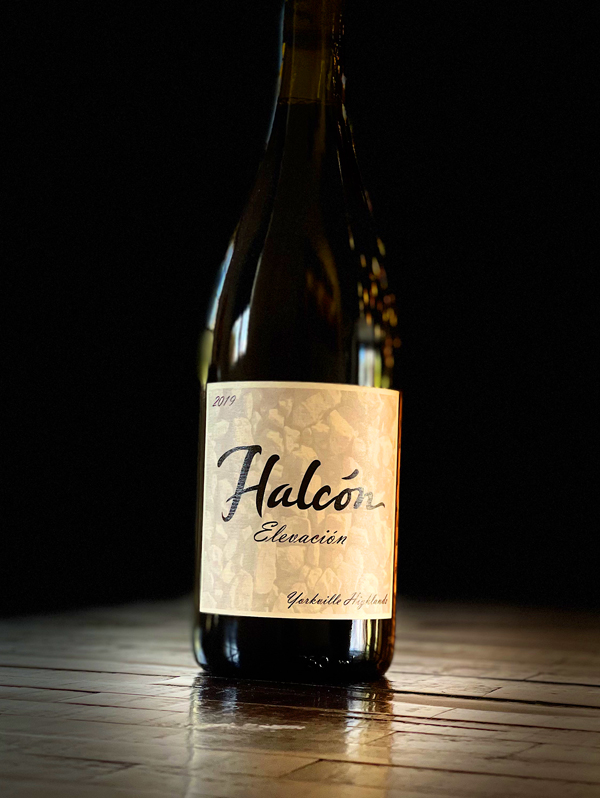
2019 Halcón, Syrah, Elevación, Yorkville Highlands, Mendocino County.
As mentioned in my recent reviews of Halcón wines, it is sad that owner and winemakers Jackie and Paul Gordon have sold the estate and dissolved the label after their swan song 2019 vintage, which is turning out to be pretty magical, as this fantastic Elevación Syrah shows, it looks to be a wine of stellar proportions with a wild feral edgy personality. This Northern Rhone style Syrah starts with black olive tapenade, crushed violets, peppercorns and dense black raspberry fruit, all of which rotate on the nose and palate with hints of bacon, dried herbs, creme de cassis and woodsy truffle. Rarely do California Syrahs reach this level of excitement, ripe in fruit and be this savory, at this cost level, so I really hope that enthusiasts get a chance to try these Halcón versions, with their Alturas and this Elevación both being exceptional. But if not, I suggest checking out Jolie-Laide, Piedrasassi, Desire Lines Wine Co., and Farm Cottage Wines, which also produce Syrah(s) with that whole cluster intensity and sultry earthiness at remarkably affordable prices, making for incredibly rewarding and value packed wines.
The Halcón Elevación Syrah is a specal small batch cuvée of 100% heritage clone Syrah that was grown at the higher part of the Halcón Estate Vineyard on the rocky schist soils of the Yorkville Highlands, which has a slightly cooler climate than Ampuis, the village closest to Côte Rotie, where the inspiration for this wine came from, modeled after the legendary wines of Domaine Jamet and others employing the old school and traditional methods of winemaking. This wine was done using 100% whole cluster and native yeast fermentation in vats with a long maceration and no additions or adjustments before being basket pressed and aged in a neutral, old and well seasoned, French oak Puncheon to allow all of the raw and rustic character to shine through here, it was bottled completely unfined and unfiltered, again to show all of the nuances of vintage and vineyard. This awesome Syrah has transparency, tannic grip and beautiful texture, it is best enjoyed with robust cuisine and should age for decades. Jackie and Paul Gordon are certainly missed by Syrah lovers here in California and this wine is one of the last that they produced at the Halcón Vineyard before they sold it and moved back to Europe. I’m glad I put a few bottles away and I look forward to re-visiting these Halcón wine in the coming years, I recommend grabbing any you still see out there!
($46 Est.) 95 Points, grapelive
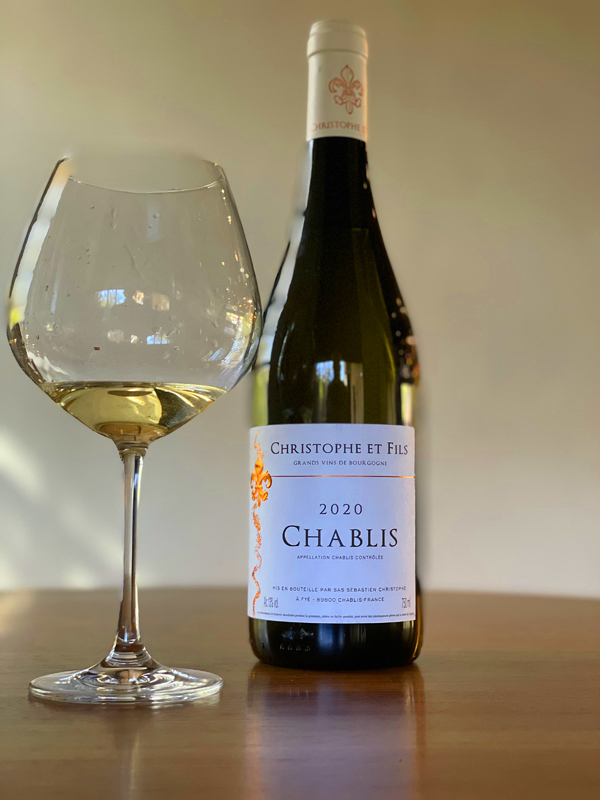
2020 Christophe et Fils, Chablis AC, White Burgundy, France.
As per normal, the latest release of Christophe et Fils Chablis starts with white flowers, wet stones, bright citrus oil, green apple and steely vitality with a slight salty essence, in a pure Chardonnay that has a laser sharp light to medium framed palate that also includes lime, flinty mineral tones and a bright clove spice, all adding to crisp personality in this beautiful white. The body gains texture and subtle roundness with air, but this racy Chablis stays vigorous and energy filled throughout, appealing to those that love Raveneau and Dauvissat, and who doesn’t? I was first turned on to this producer by Raj Parr, the renowned sommelier, like always he was right, and Christophe has now become a cult producer, though still an exceptional value for what you get, and this 2020 vintage is quite stunning and crystalline with chiseled detailing, lemony zip and lingering with chalky oyster shell. As mentioned in my prior reviews, the Christophe et Fils wines, imported by The Source, are affordable and brilliant and I highly recommend chasing them down, especially this ultra delicious vintage, though I will say, every year I’ve tried has been fantastic. I know, Christophe’s Premier Crus are even more outstanding and collectable, but damn this basic Chablis is everything I could ever want and goes fabulous with a range of food options from oysters and clams to soft farm cheeses and light poultry dishes. In Burgundy, terroir is everything and this wine comes from a good portion of Chablis’ vineyards that face the Grand Cru Blanchots and vines that sit just west on the hill that is home to the Premier Cru, Montée de Tonnerre. The soil here is unusually brittle Kimmeridgian marl with clay and lots of the fossils for which this type of limestone is most famous for, and is the secret sauce to these great, cool toned and steely wines.
Even the Christophe et Fils Petite Chablis, from the family’s original vines, is absolutely gorgeous as well, but this regular Chablis AC is at another level, on par with many much more expensive Premier Crus, even by some famous names, such is the precision and quality here. As noted, with a holistic view to farming and a very gentile touch in the cellar these Christophe et Fils Chablis bottlings are true terroir driven wines, they are vibrant and expressive in a way that really captures the essence of the region and winemaker Sebastien Christophe is a star. His story is awesome and there is a lot more to come, but as a young kid with just a couple of acres of average vineyard land at best, plus a small half hectare parcel of Petit Chablis, he has risen fast, seemingly out of nowhere to become of of the region’s brightest and most gifted talents, with now three of the most heralded Premier Cru parcels in the region, Fourchaume, Mont de Milieu and my all time favorite Montée de Tonnerre! In recent years Sebastien even added a few rows of Blanchots, of which is now his most rare offering. Christophe has vines set on Chablis’ classic soils, with a combination of the legendary Kimmeridgian limestone marls and Portlandian limestone scree with various topsoil mixtures of clay and rocks, all of which give these distinct Chardonnay wines their unique and coveted personalities. The purity of this wine is exceptional, the grapes were pressed and then settled for 24 hours before being racked into another tank where it went through a natural yeast fermentation in stainless steel tanks for 1-2 months. The juice saw a single stirring of the lees (batonnage), typically employed in cold vintages to add texture and then the wine, which went through malolactic was then aged about 8 months, again solely in stainless, before bottling with low SO2. This is excellent and exciting stuff and I am as thrilled now as when I first tried my first bottle of Christophe!
($32 Est.) 94 Points, grapelive
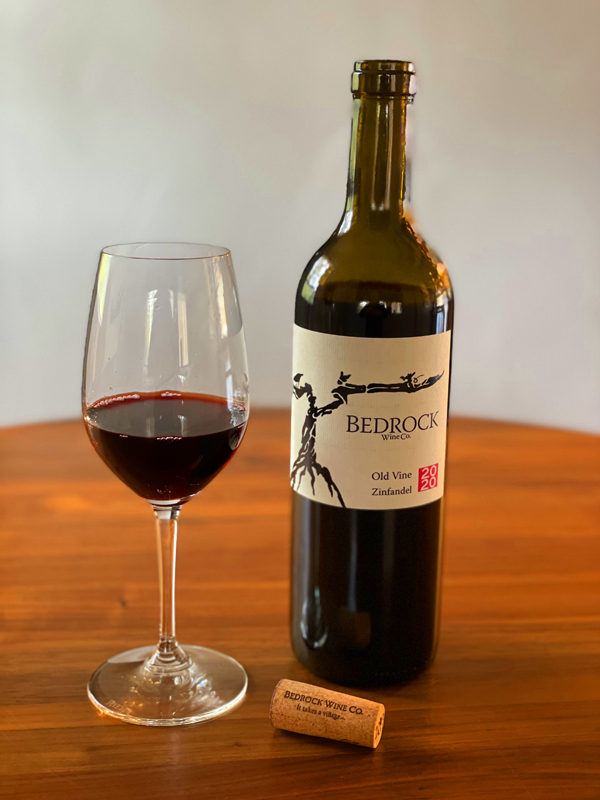
2020 Bedrock Wine Co, Old Vine Zinfandel, California.
As the Fall weather takes hold here in California and you are looking for something to warm you up and to enjoy with richer cuisine, wines like this Old Vine Zin from Bedrock really hit the spot with dark fruit, a dusting of spices and a satiny full body this wine is eager to please. Coming from a wide collection of old vine sites throughout California, including Sonoma and Contra Costa counties, this 2020 saw grapes sourced from vines that average 80 years old and with some much older than 100, so you are really tasting history here, rather than a single site, terroir or vineyard, but blended to showcase the grape in its best character or quality. With 2020, there was always going to be a concern about smoke taint, which fortunately is not the case case here, with only unaffected grapes being part of the Old Vine Zinfandel, some of which is luck, as Zin ripens early and missed some of the worst of fires, as well as the winery only choosing areas without problems, so you can be confident in Bedrock’s 2020 vintage, and this wine is proof. The palate is fruit dense with layers of crushed black raspberries, Italian cherries, plums and currants, which is accented by classic bramble and briar spices, sweet cedar, minty herbs and dried flowers with a bright pop of acidity and a hint of fig paste. The Old Vine Zinfandel includes a who’s who of top Zin sites with Teldeschi Ranch, Beeson, Sodini, Nervo, Dommen, Pagani, Papera, Evangelho, Pato, Katushas’ and of course Bedrock all playing roles here.
Bedrock Wine Co is run by Morgan Twain-Peterson, who’s family has a significant history making Zinfandel in California, with his dad Joel Peterson, famous for crafting some of the best Zins of the 1980s and 1990s under his ex Ravenswood label, with Morgan carrying on the traditions, but with the added responsibility of caring for two of the state’s most prized old vine Heritage vineyards, their namesake Bedrock, in the Sonoma Valley and Evangelho in the deep sands of Contra Costa County. In the winemaking, Bedrock’s main mission is to keep things simple and let the grapes do the talking, with Morgan saying that they try to use native yeast and natural fermentation(s) without additions, similar to how Ridge and Turley do their Zinfandel based wines, with the Zinfandel lots being made with almost entirely de-stemmed grapes, even though the winery embraces whole-cluster fermentation in their other varietals. Bedrock ultimately for their wines, focus on ideal ripeness, freshness and aromatics in their offerings and age their wines in top notch oak. Bedrock’s most prized wines are field blends which include many black grapes, but with this Old Vine Zinfandel there is a more single varietal style than their other efforts, with the finished blend being about 85% Zinfandel, plus 7% Carignan, 4% Cinsault and, as Twain-Peterson notes, there is also, bits and bobs of Grand Noir, Petite Sirah, Alicante Bouschet and other field-blended varieties. With this entry level wine, Bedrock wants to express generosity and release a wine that can be enjoyed in its youth, as this 2020 succeeds in doing, and it is drinking nicely indeed.
($25 Est.) 91 Points, grapelive
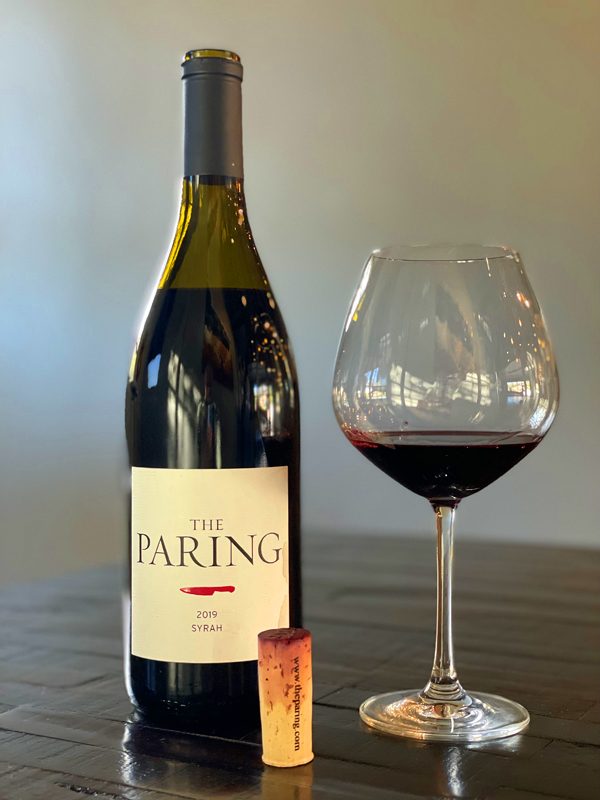
2019 The Paring, Syrah, Santa Ynez Valley.
There’s a lot of wine here for the money, with The Paring 2019 Syrah showing tons of northern Rhone character and deep fruit density, making for a wine that begs for hearty foods and offers outstanding purity, richness and structure for money with an intense inky dark color in the glass and a complex array of flavors on the full bodied palate from boysenberry to almost feral gamey and savory notes. Gripping and full in the mouth, I was impressed with this vintage’s range and length, while powerful, the tannins feel sweet and opulent, a nod to the year and California’s ripeness, but still without heat or an alcohol presence getting in the way. There’s a rotation of blueberry, plum and black currant fruits along with a hint of bacon, tar, licorice and sage to contrast, as well as a good dose of violets, mocha, smoky sandalwood and lingering kirsch too. Seriously, there’s not much to fault here and this wine, especially for the money is excellent stuff that you can almost guilt free enjoy with your Tuesday night pizza and or just enjoy with a burger, though capable of partnering up with more haute cuisine. Here is a tasty Syrah, with a pedigree (see below) that delivers an exceptional performance and looks to have a good shelf life, it should provide joyous drinking pleasure for another three to five years with ease, and it makes for a very savvy buy for BBQs and parties, as well as a good bargain gift for your Syrah enthusiast friends. Most Syrah at this price are rather bland or less edgy in style, so I was quite surprised by the Intensity found here in The Paring Syrah and love the natural thrill it shows.
Made by the same team that produces Jonata and the Hilt Estate wines with Matt Dees, the hugely talented winemaker here, overseeing things here, with the Paring label delivering the company’s value focused wines, including a collection of Pinot Noir, a Bordeaux Cab blend, a Sauvignon Blanc, Chardonnay, this Syrah and even a Rosé. Dees, with a degree in Soil Science from the University of Vermont and vintages at Staglin in Napa and a stint at Craggy Range in Hawkes Bay, New Zealand has become a star in the Santa Barbara area, showing a real gift with the cool climate grapes as well as Bordeaux varietals grown in the warmer Happy Canyon area in the Santa Ynez Valley. The Paring Syrah was Fermented with partial whole cluster and saw a good maceration, where the cap was kept wet with great attention to extract loads of color, depth of flavor and a savory crunch, before being pressed to barrel, where it was aged, 100% in French oak, with 35% new and 65% neutral barrels for 22 months, with this vintage seeing high quality cooperage, including Marcel Cadet, Ermitage and Remond. The final blend, which was a special selection of lots that may not have gone into the much more expensive Jonata offerings, but still way over deliver for this price point, and to capture every nuance, the Syrah was bottled unfined and unfiltered, with about 680 cases in total being produced, making it a superb value and it is available for Syrah lovers to track down. I have admired the recent releases I’ve tried from the upper end The Hilt, especially the 2018 vintage Chardonnay and Pinot, all of which, along with this one, I highly recommend.
($25 Est.) 92 Points, grapelive

2021 Gaintza, Txakolina Blanco, Getariako Txakolina D.O., Spain.
Usually I wait between reviews of the same wine, but the new 2021 vintage of Gaintza is strikingly fresh and differs from the recently reviewed 2020 version, with smoked lime, fresh and steely mineral tones and tangy/tart peach leading the way here in a crisply dry, light bodied and slightly effervescent wine that almost literally screams for raw oysters on the half shell! These zingy and zesty Txakoli whites, made almost exclusively from the Hondarrabi Zuri grape, come from the Basque country on the cool Atlantic coast of Northwest Spain, not far from San Sebastian and with the terroir being made up of limestone and clay soils, that all gives these ultra pale wines their brisk and salty personality. The main areas of this Basque region include, DO Txakoli de Álava, DO Getariako Txakolina, where this wine is from, and DO Bizkaiko Txakolina, and are home to these ancient varietals, the white Hondarrabi Zuri and the red Hondarrabi Beltza, which is used in all of the wines, including sparkling, white, red and Rosé, adding complexity and structure to the Txakolina wines. This 2021 is a nice step up from the previous vintage and I highly recommend chasing it down, it will go great with sardines, mackerel and or smoked trout, as well as being a vibrant aperitif option.
As noted in my prior reviews, the Gaintza label is made by the Lazkano family, with a long history in the Getaria zone of the Getariako Txakolina region, they have 25 hectares of vineyards here in the Basque Country, that is influenced by the Atlantic Ocean, and its cool maritime climate that promotes eye popping natural acidity and very ow alcohol in these wines. Interestingly enough, the Gaintza Txakolina blanco is made using 85% Hondarrabi Zuri, with its delicate herbaceous and floral character, as mentioned above, it’s the main white grape here, but it also has 10% Gros Manseng (more commonly found in France’s Basque regions!) and even 5% of the red Hondarrabi Beltza, that is directly pressed without any skin contact. In the cellar, all of the grapes are quickly direct pressed to temperature controlled stainless steel tank for fermentation where the wine captures its own CO2, which gives it that spritz. This wine was quickly bottled right after fermentation without any aging and it is meant to be drunk young. The vines, used for the Gaintza, are all hand farmed, tended and picked using sustainable methods, and average between 25 and 50 years old. Txakolina whites provide great refreshment and go sublimely with briny seafoods and pure raw fish or with picnics, with this Gaintza being a great and thrilling example to look for.
($22 Est.) 91 Points, grapelive
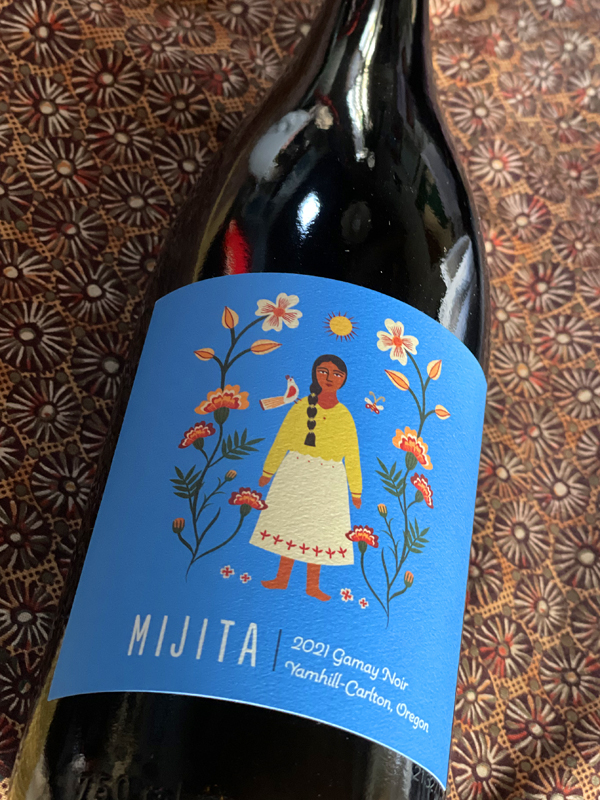
2021 Mijita Wine Company, Gamay Noir, Abbey Road Farm Vineyard, Yamhill-Carlton AVA, Willamette Valley, Oregon.
Winemaker Lizzy Esqueda’s first two wines are tiny micro releases under her brand spanking new the Mijita Wine Co. label, featuring a skin contact Pinot Gris “orange wine” and this vibrant and charming Gamay Noir, both are from the 2021 vintage, a year which is starting to create a buzz with the Oregon natives. This dark garnet/ruby 100% Gamay is already drinking well with a medium bodied palate, that is very silken and Pinot Noir like, with an array of dark fruits, crunchy herbs, a light spiciness and some subtle earthy elements that gives this well made Gamay a fine tension between ripe fruit and savory tones. The flavor band here rotates smooth in the mouth with a layering of black cherry, brambly raspberry, tart plum and Misson fig fruits, along with a touch of walnut, saddle leather, anise and cinnamon. This wine, with its low alcohol (12.3%), is excitingly old world themed and has hints of pretty florals to go with its rustic personality, it opened up well and stayed impressively entertaining all evening and was joyous with a simple, but hearty meal. I look forward to following Lizzy Esqueda’s Mijita Wines and I can’t wait to try her skin fermented Pinot Gris.
New on the Oregon wine scene, Esqueda, who has been putting in the time in at Grochau Cellars, says her wines are “bright, textural wines made with grapes that are organically and sustainably farmed.” Her single vineyard Gamay comes from from young vines at Abbey Road Farm Vineyard in Yamhill-Carlton, set on marine sediment soils and made in a transparent and raw style that would seem right any home in Côte de Brouilly. Just four barrels were made of this 2021 vintage which was aged for 10 months in neutral French oak to allow the Abbey Road Farm Vineyard Gamay to show off all its fresh purity. Lizzy adds that she likes to chill this wine down for about 15 minutes in the fridge before popping the cork to really show the juicy, spicy notes, and I found that a slight chill did indeed make everything pop, but air in the glass also brought out an extra dimension and made it even better with food, this is a lovely first time effort from a young winemaker to watch. True Gamay Noir is a big hit in Oregon and the grape thrives here with many outstanding examples from which to choose. There’s a lot new stuff going on in Oregon, especially in the Willamette Valley, and a whole new generation of winemakers, like Lizzy Esqueda, who are creating a new future of wines and who are exploring lesser known varietals, it is a great time to explore them.
($28 Est.) 92 Points, grapelive
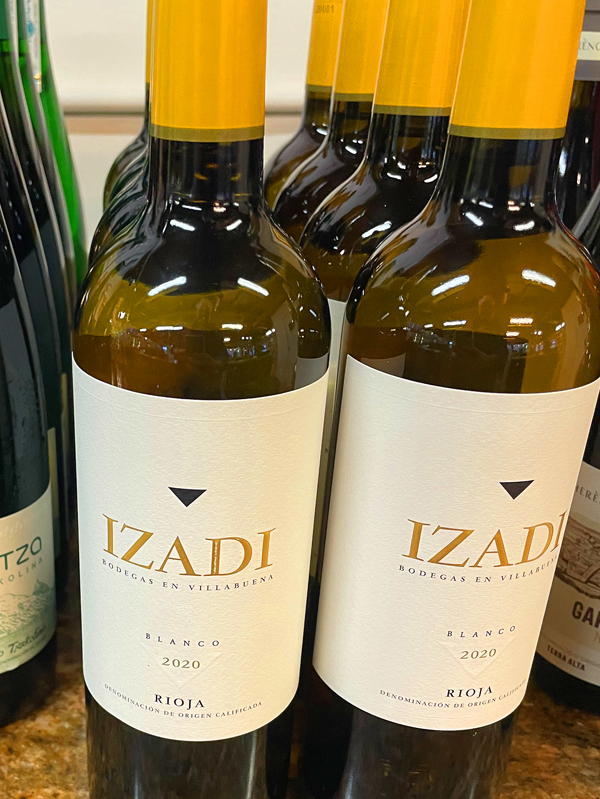
2020 Bodegas Izadi, Rioja Blanco, Rioja D.O., Spain.
In a recent tasting of an eclectic mix of Spanish wines, I was reminded that one of the most overlooked categories in Spain is the Rioja Blanco offerings, always over shadowed by the reds here and the country’s more hip whites, like the Rias Biaxas Albariño(s) and Godello, the other Galician white catching a lot of attention in recent years, but wines like Izadi’s Rioja Blanco prove this region is still relevant. The masterful and classic Lopez de Heredia, maybe the region’s most prized and iconic bottling, and Remelluri’s gorgeous and rare version, are not to be missed white Rioja offerings, of course and well known by collectors and enthusiasts, though wines like this Izadi give a good account of themselves too and are extremely affordable. The 2020 Izadi is made from blend of indigenous varieties Viura, Malvasía, Garnacha Blanca, Tempranillo Blanco, Maturana Blanca and Turruntés, making for a complex and entertaining dry white that has a lovely textural mouth feel and round mineral tones with layers of citrus and fleshy orchard fruits, sitting nicely between a crisp Sauvignon Blanc and a more lush Chardonnay, it goes wonderfully well with appetizers or tapas and or sea food dishes. The wine starts subtly with a hint of white blossoms, wet stones and clove spice before the medium bodied palate opens up to reveal some apricot, lemon and golden fig fruits and a lessy creaminess, without losing its vitality, this wine quietly impresses and is very enjoyable. This vintage really gave a strong performance and I highly recommend Izadi’s Rioja Blanco for its value and especially those that what to get a full picture of Rioja’s wines, the winery, Interestingly also has the very desirable Finca Villacreces property in the Ribera del Duero, which is also a great value.
Located in the small town of Eskuernaga, Bodegas Izadi uses a collection of old vine vineyards located in Villabuena, Samaniego and some ancient recovered vineyards in Rioja to make their delicious Rioja Blanco. The white is crafted from 65% Viura, the region’s most popular grape, 10% Malvasía, 10% Garnacha Blanca, 5% Tempranillo Blanco, which is a mutation of the red grape and also known as Albana, 5% Maturana Blanca and 5% Turruntés. Like what happened in Burgundy, generations ago, when some Pinot Noir vines seemingly mutated overnight to a white varietal becoming a new grape, Tempranillo Blanco is a recent discovery here, first noticed in 1988 by a wine grower in a Tempranillo vineyard near Murillo de Río Leza in the La Rioja province, and it is now allowed in white Rioja wines. Viura, the most important white grape of Rioja, which plays the dominant role here, retains vibrant acidity and is long lived in the bottle, and In Catalonia, Viura is called Macabeo, where it is the primary varietal in most Cava sparkling wines. The Izadi Blanco, made by winemaker Ruth Rodríguez, comes from mainly the higher elevation Rioja Alavesa zone, from vines mostly from a 1960 planting, at close to 500 meters above sea level on the classic clay based chalky soils, along with an Atlantic continental climate with just a touch of Mediterranean influence. The vinification for the Izadi Rioja Blanco is traditional with all de-stemming fruit and a stainless steel fermentation with no malolactic allowed before being aged mainly in stainless with a small portion seeing an elevage in oak casks, which adds a touch of richness here, it is a wine that should be enjoyed over the next 2 to 3 years.
($20 Est.) 90 Points, grapelive
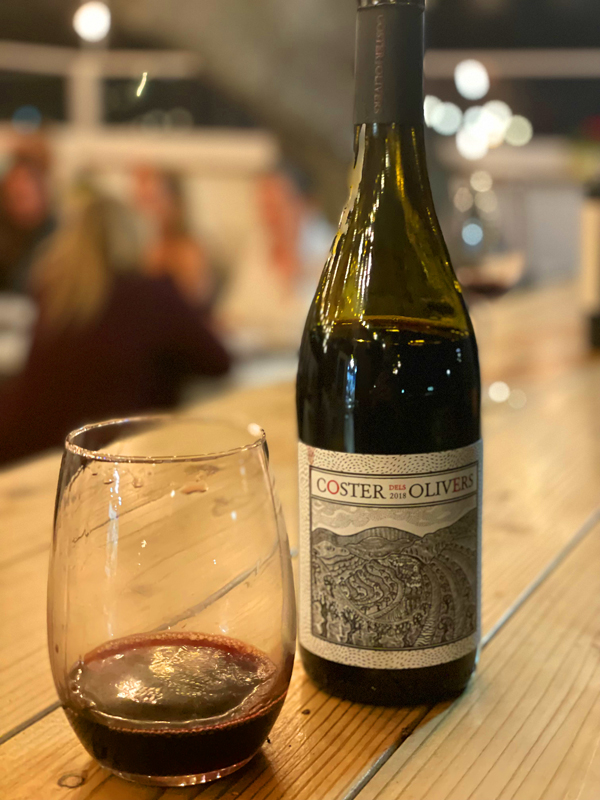
2018 Coster dels Olivers, Priorat D.O., Catalonia, Spain.
The inky purple and opulent 2018 Coster dels Olivers red by winemaker Joan Sangenis comes from the Priorat’s intense and small yielding vines, set on slatey hillsides, with a blend of Carinyena (Carinan), Garnatxa (Grenache) and Cabernet Sauvignon, all classic varietals found in this dramatic region, with this wine perfectly capturing the terroir here. The palate is dense and mouth-coating, slightly smoky and loaded with blackberries, currant jelly, plum and kirsch fruits along with liquified violets, dried herbs, mocha and black licorice unfolding in the glass, held all together with sweet tannin which feels almost creamy, but still providing grip here, making for a wine that impressively tastes more like a hundred dollar wine than the twenty bucks this will cost you. The modern Priorat wines are in part the result of the pioneering four founding estates of the Priorat, led by Daphne Glorian, Alvaro Palacios, Josep Luis Perez, and Rene Barbier, who took this remote and almost forgotten region from obscurity to world wide acclaim (and fame) with their dark and powerful efforts in the course of just more than a quarter of a century.
The Coster dels Olivers Priorat red is sourced from sustainable bush vine vineyards with organic farming methods, with all the grapes being hand harvested and carefully sorted before reaching the cellar. The fermentation is done in a combination of stainless steel tanks and concrete vats, after which the wine is allowed to macerate with hand punch downs for an extended period before it is pressed to casks to mature. The aging, for this Coster dels Olivers, as the winery notes, is in well seasoned and neutral used French (90%) and Hungarian (10%) oak barrels, including 220L, 300L and 500L formats to promote purity, while allowing the wine to soften and develop its luxurious nature and richness of detail. This Coster dels Olivers is a blend of 60% Carinyena, 30% Garnatxa and 10% Cabernet Sauvignon that is grown on slate/schist soils by the Sangenis family in Porrera, with this offering getting fruit from the cooler northern exposure and vines that range from 15 to 65 years old that are up close to 500 meters above sea level, these vineyards see hot days and cool nights, making for a nicely balanced effort here. Those that love big, dark and juicy wines will immediately be seduced by this Coster dels Olivers and will want to grab this stuff by the case load and enjoy with hearty cuisine!
($20 Est.) 93 Points, grapelive
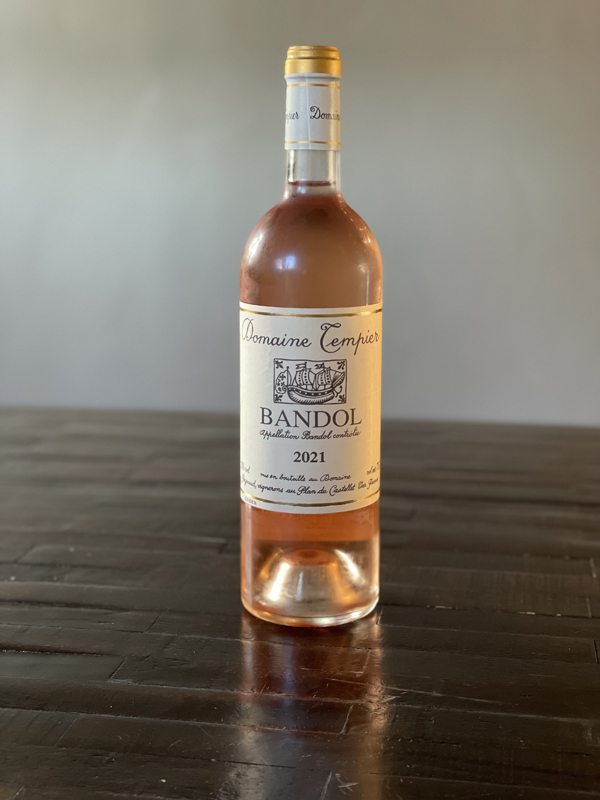
2021 Domaine Tempier, Bandol Rosé, Provence, France.
The Domaine Tempier Bandol Rosé, which regardless of season is like Summer in the glass, with it’s inviting salmon color and mouth filling palate, it sits nicely between hedonistic density and lively refreshment. This gorgeous texture and sharp details here in this 2021 version provides everything expected with layers of bright fruit, mineral tones and a fine stony element, it shows pink grapefruit, strawberry, watermelon and tart cherry along with a hint of rosewater, saline and a faint spiciness. It used to be a Summer cannot be a Summer without a bottle of Domaine Tempier Bandol Rosé, and while there are dozens of quality and distinctive dry Rosé wines available now, this wine remains a must have offering, with this edition being one of best in recent years. The Tempier Rosé getting an extra bit of time in bottle allows for more complexity and refinement upon release, as this one clearly shows. There’s a lot to admire and treasure in Tempier’s collection, especially their trio of specialized Bandol Rouge cuvées of Cabassaou, La Migoua and La Tourtine, which are all highly coveted by collectors and Mourvèdre lovers, as well as their Bandol Blanc, which is a blend of Clairette (60%), Ugni blanc (30%) with small amounts of Rolle (Vermentino), Bourboulenc, and Marsanne. That said, you should ever miss a chance to enjoy Tempier’s Rosé, it is by no means cheap these days, but worth the spurge and it goes great with Mediterranean inspired cuisine as well as our California fare, with its fresh flavors, as well. Over the years I’ve been lucky enough to sample all of the Tempier wines and even have tasted many of them with Kermit Lynch, their importer, who really helped put this domaine on the map and who passionately brought fame to Tempier in America.
The late Lulu Peyraud, who was the matriarch of Domaine Tempier, a legendary figure in the world of food and wine, who’s estate has long crafted red wines can easily age with the elite Bordeaux, they are Mourvèdre led wines that litter the top cellars of the rich and famous. It was her husband, Lucien, who help push through the AOC status for this unique terroir back in the late thirties and early forties, and Tempier championed Mourvèdre here, helping making it the main grape of Bandol. Lulu herself, was a renown chef and sought to bring Provencal cuisine to the world, she has entertained the likes of Alice Waters and Julia Child, inspiring everyone she met and being one of France’s great ambassadors of culture. Tempier is now farmed all biodynamic, the vines have a great view of this spectacularly picturesque sea side region of France’s Provence. The Domaine Tempier Rosé is made from mostly Mourvèdre of course, grown on clay and limestone soils, overlooking the blue Mediterranean, all overseen by the talented Daniel Ravier, the consulting winemaker, who now has Lulu’s sons, Jean-Marie and François taking care of the estate’s management and working in the vineyards. The Rosé is crafted from 55% Mourvèdre, 25% Grenache Noir and 20% Cinsault, which is now pretty much the recipe these days, coming from mainly 20 year old organic vines, and made by using 50% saignée and 50% direct press (with early picks), it then goes through primary and malolactic fermentation, which adds that sensation of a full body and opulence, it sees 50% aging in stainless steel vats and 50% in concrete tanks, lasting close to 7 months. I recommend enjoying this Tempier Bandol Rosé with steamed mussels in a spicy broth and or as sunset beach sipper.
($60 Est.) 93 Points, grapelive
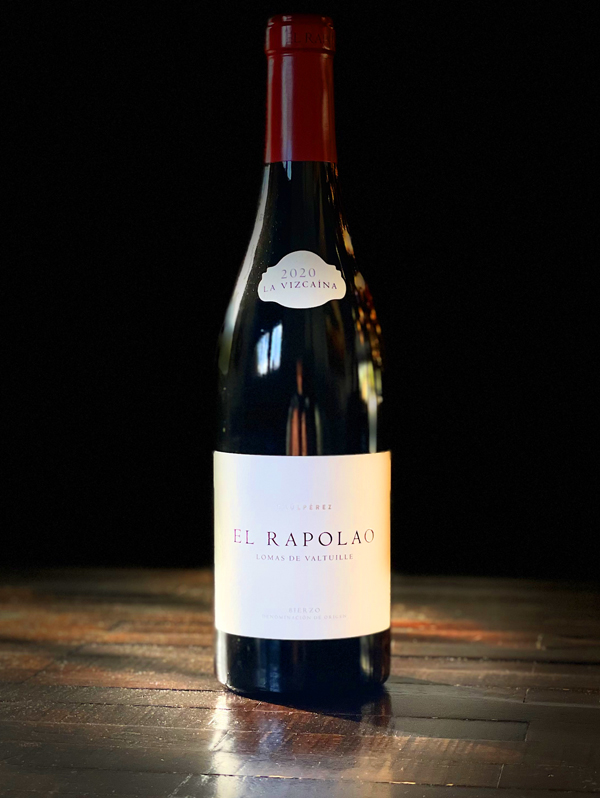
2020 Bodegas y Viñedos Raúl Pérez – La Vizcaina, Mencia “El Rapolao” Lomas de Valtuille, Bierzo DO, Spain.
The gorgeous and brightly detailed El Rapolao, crafted by the legendary Raúl Pérez, is mostly his loved old vine Mencia, but with some Bastardo (Trousseau) and Garnacha Tintorera (Alicante Bouschet), that are interplanted and co-fermented, all from organic 100-year-old vines in the Bierzo’s renowned El Rapolao Cru in Lomas de Valtuille, this dark and vibrant wine delivers an awesome performance, getting better and better as it opens up. There’s an exciting thrill to Raúl Pérez’s wines and this one impresses with its purity and vibrancy, with a medium bodied palate of fresh blackberry, currant, black cherry and tart fresh picked plum along with some nice spicy accents, mineral notes, snappy herbs and pretty florals. For his El Rapolao, Pérez, the godfather of modern Mencia wines, used 100% whole cluster and a natural yeast fermentation in a large chestnut wood cask, with this wine seeing at 30 day maceration on the skins to extract color and depth of flavors here. After fermenting and macerating the wine was gently pressed to a combination of oak, which were neutral (well used) French 225L and 500L barrels, where the wine matured a full year before being bottled unfixed and unfiltered. The terroir here, set on sandy and clay based soils, is less affected by the Atlantic Ocean than the Ribera Sacra and is more continental in climate and the vines get a bit more sun and warmth, making for more concentration, as this El Rapolao shows, this wine has the stuffing to age for another decade with ease.
Raúl Pérez, who is well admired around the world now, helped put the Bierzo appellation on the map and has been a winemaker of note since he was 22 years old when he took over the job for his family’s winery back in 1994. To explore his own path, he started his Bodegas y Viñedos Raúl Pérez in 2015, and this label has been a source of some greatest and most distinct Spanish wines in modern times. Raúl has, as his importer notes, expanded his sphere of activity to include the appellations of Rías Baixas, Ribeira Sacra and Tierra de León, but his biggest passion is the old vines in Valtuille de Abajo, his home village in Bierzo, where his family has been tending vines for well over 300 years. I’ve met and tasted with Raúl Pérez on a couple of occasions, making for some incredible experiences, and I try not to miss a chance to sample his wines, I buy a few bottlings for personal enjoyment almost every vintage, with this El Rapolao being my latest purchase. While mainly doing Mencia based wines, Pérez does some other rarities like Prieto Picudo, a grape that is almost unknown outside of the Castilla y León region, which makes for a unique Nebbiolo like wine, plus Raúl’s whites are fabulous as well, with his Godello offerings rivaling outrageously expensive White Burgundies! To get started, those who haven’t had Raúl Pérez’s wines, I recommend getting his lovely entry level Ulteira St. Jacques Mencia and this El Rapolao, a deeper expression of Mencia. These offerings are sublime values and deliver everything that is promised, they also are outstanding wines to enjoy with food, and are a great way to celebrate your holiday meals, going excellently well with a wide range of dishes.
($40 Est.) 94 Points, grapelive
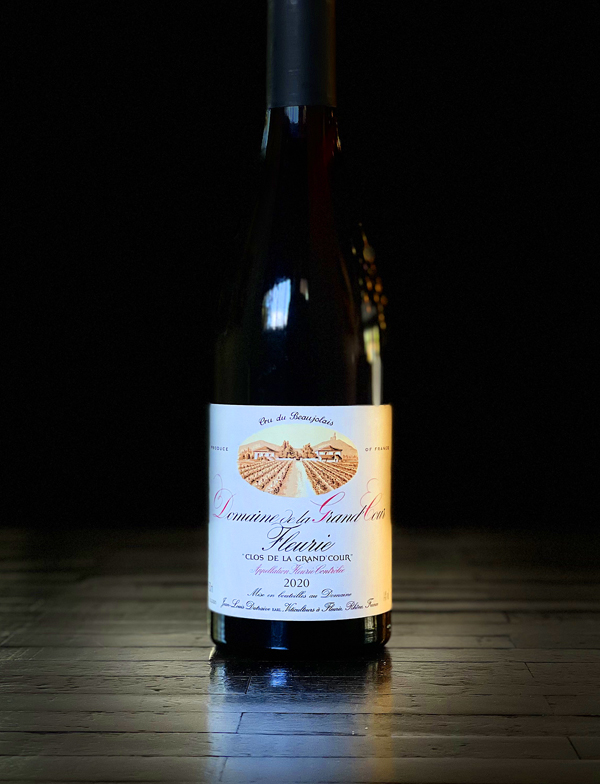
2020 Jean-Louis Dutraive, Domaine de la Grand’Cour, Fleurie, Clos de la Grand’Cour, Cru Beaujolais, France.
This delicate and seductive Domaine de la Grand’Cour Fleurie “Clos” by Jean-Louis is haunting and heavenly in the glass with its pale ruby/magenta hue and rose petal perfume has the grace of a Premier Cru Chambolle-Musigny and pure Gamay flavors on the lifted medium bodied palate which shows strawberry, cherry, crushed raspberry and plum fruits that are weightless and seamless, along with hints of mineral, walnut, red peach flesh, red spices, cut flowers and anise. It’s hard to find anything here that isn’t near perfect and precise, this is exceptionally graceful and lingering, echoing its soulful strawberry and rosewater core elements in the aftertaste seemingly forever. The foundation of the property, which has in the talented hands Jean-Louis Dutraive since 1989, are thethree prestigious lieux-dits of Clos de la Grand Cour, used here, the Chapelle des Bois and Dutraive’s special Champagne parcel, which make up a total of 9 hectares of vines in Fleurie, arguably the most prized sites in the appellation, all of which are holistically and naturally farmed. In the cellar, the wines are fermented naturally with carbonic maceration (to start) indigenous yeast and are macerated on the skins for up to 30 days. Then the juice is gravity fed to the cellar for aging, usually between 6 to15 months, depending on the cuvée and without SO2 additions. The elevage, cellar aging, here at Dutraive, is done mostly in used Burgundy barrels, while a few wines are raised exclusively in concrete tank, as well a portion that sees stainless steel, this depends on what the vintage brings and fruit intensity. Though interestingly and uniquely here, the Clos de la Grand’Cor saw a very different regime, somewhat specialized to itself, getting 35% in stainless steel, 30% in fûts de chêne and 30% in larger foudres for 9-12 months, all of which is done to promote its translucent clarity and transmit the sense of place here.
It’s well known in enthusiasts circles that Fleurie is perhaps one of Beaujolais’ most elegant appellations and Dutraive’s versions are some of the most beautiful wines in the world, with this vintage of the Domaine de la Grand’Cour being absolutely gorgeous with all the subtle nuances you’d expect from this fabulous producer. Fleurie, like the other Crus of Beaujolais, especially the more powerful Morgon, is perched up in the north half of Beaujolais, at good elevation and is dominated by more the more complex soils, including schist and pink granite that might explain the delicacy and quiet depth of these remarkable wines. At Jean-Louis Dutaive’s estate, their Fleurie vines, on their granite soils, are traditionally and organically farmed with great care to produce the ripest and healthiest Gamay grapes, much in the same way the other legends of the region do, like Lapierre and Foillard, which has led to the region’s renaissance and has made Gamay, once maligned, a much admired varietal in modern times. This Clos de la Grand’Cour is a true clos (walled vineyard) and it is an eight hectare monopole of Dutraive family that is 100% Gamay Noir, certified organic, with a vine age that ranges from 30 to 70 years old. Dutraive has a stunning lineup of Cru Beaujolais, each a terror driven treasure, all of which are just as sought after as any cru Burgundy these days and it is a rare treat for me to get my hands on any of them let alone this one, which is one of the winery’s most coveted bottlings and signature offerings. Dutraive, now 60 plus years old, has proved he still a Gamay maestro, even with his son Justin showing his potential now in the family business, says this Clos, his flagship Fleurie, defines Dutriave terroir and style with exotic spices and rustic beauty. I love that Jean-Louis’ motto in the cellar is “minimal intervention and maximum surveillance.” which you can see clearly in his wines and their authentic nature, they always provide a raw and alluring sex appeal and a feminine charm, don’t miss a chance to try these wines.
($45 Est.) 95 Points, grapelive

2021 Herència Altés, Garnatxa Nerga, Terra Alta D.O. Spain.
Coming from Spain’s Terra Alta region, the lush and full bodied Herència Altés Garnatxa Nerga, made from 100% organic Grenache vines, is loaded with black and red fruits, along with subtle pepper, kirsch and mineral notes on the nose, with dried flowers, lavender and truffle in the background. This ripe and plush vintage explodes on the palate with brambly raspberry, boysenberry, pomegranate and plum fruits, plus a bit of dusty earth, spice and garrigue notes that adds complexity. I’ve been a fan of the Herència Altés wines, imported by Eric Solomon and European Cellars for more than a decade now and it is really hard too find a better value and pure Grenache for the price and this 2021 Garnatxa Nerga is absolutely delicious, opulently fruit driven and a beautifully textured effort. The Terra Alta DOP, was founded as a modern wine region in 1972 and is located in the province of Tarragona, in the greater region of Catalonia and has mainly clay based soils, which adds to the concentration or fruit density here. Herència Altés does a solid lineup of wines, including this one, which is incredibly good, but I suggest also checking out their Rosé, made from the Grenache grapes and their exceptional Garnatxa Blanca bottling, all of which, impress for the price, and are lovely in their transparency and quaffability, these are wines that are true over achievers.
The Terra Alta with its climate that is mixture of Mediterranean and continental with long warm and dry Summers and harsh cold Winters, as noted, is a lesser known Catalan region, but the quality of this terroir is a proven winner for Garnatxa (Grenache), with both red and white versions of this grape excelling here. The region is set in the mountains, seeing lots of sun, but getting cool nights, in fact, this area with its remote beauty features in a number of the legendary Pablo Picasso’s paintings. Leading Herència Altés is Núria Altés, who was localy born in Batea (Terra Alta), and is the latest generation of her family to oversee the wines here and helped make this label, created in its modern form in 2010, a world wide sensation. All the grapes are harvested by hand and kept cool coming into the winery, where the Herència Altés (Grenache Noir) is cold macerated on skins and with a small percentage of whole clusters. The must sees a spontaneous fermentation with wild yeasts which typically lasts for two weeks with daily pigeages, as the winery notes, ensures a smooth extraction of tannins and color. Following its fermentation in vats, the Herència Altés Garnatxa Negra ages for just four months in large, mostly neutral 5,000-litre Austrian oak foudres. These wines compare well with Côtes du Rhône Villages and are pretty easy to track down, and I highly recommend buying them by the case!
($15 Est.) 92 Points, grapelive
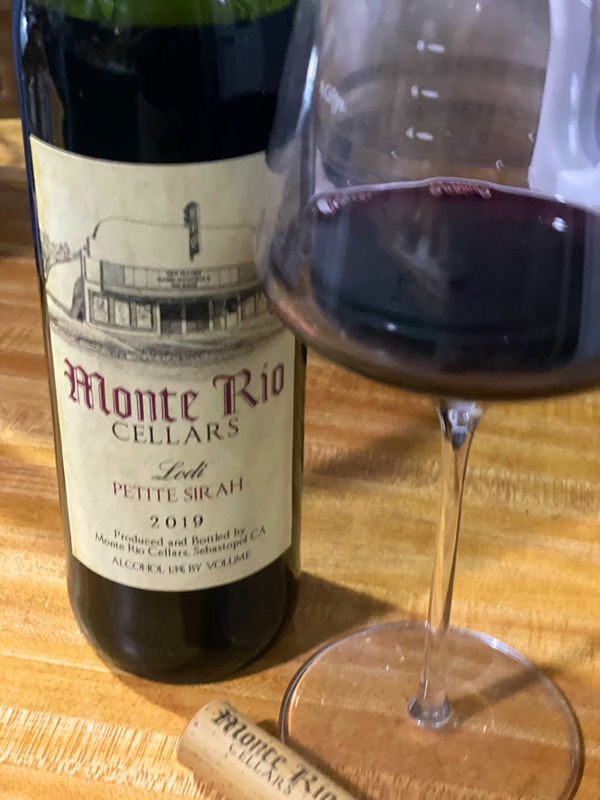
2019 Monte Rio Cellars, Petite Sirah, Lodi, California.
Just 300 cases were made of Monte Rio’s outstanding inky and spicy Petite Sirah, which is loaded with black fruits and velvety tannin(s), making for easy too love dark wine that is perfect for these chilly Fall evenings and great with simple and flavorful dishes, it worked well with a wild mushroom pizza, but will be enjoyed with BBQ as well. The color is very saturated, purple in the glass and the nose has hints of acacia flowers, crushed blackberry, minty herbs and a touch of raw earthiness before a well rounded palate that is full bodied with layers of marionberry, currant, plum and black cherry fruits along with lavender, sage, sandalwood and faint tarry licorice. The Monte Rio Petite Sirah comes from organic 40 year old vines at the Bains Vineyard in Lodi and was fermented using 100% whole-clusters, with a carbonic maceration for 13 days and indigenous yeasts, finishing its primary in a combination of cement and stainless steel tanks before being gently pressed to neutral barrels where it aged 10 months before bottling. Patrick Cappiello has really turned out a tasty set of 2019s, like his Petite Sirah, and I am excited to see what his 2021s, which are just being released now, are like.
Patrick Cappiello’s winemaking career, as he notes, started in 2018, under the watchful eye of Pax Mahle of Pax Wine Cellars, who is a legendary California producer of Syrah, as well as a collection of lighter and fresher style wines. Monte Rio Cellars has focused on heritage and classic California varieties, which includes mainly a series of old vine Zinfandel from Dry Creek to Lodi along with Petite Sirah, which is fast becoming my favorite in the lineup, Sangiovese, a wild coferment of Petit Verdot and Sauvignon Blanc and cool rarities like Rubired, a hybrid grape developed at UC-Davis in the 1950’s, It is a cross between Alicante Ganzin and Tinta Cao, and the Mission grape. The wines are made naturally with no additives with low SO2 and all the grapes are farmed with organic and or biodynamic practices, with most of the vines being from mature sites set on sandy soils in the Lodi AVA, like seen here with Cappiello’s excellent Petite Sirah. Monte Rio also does some quaffable lightly sparkling Piquette offerings that are low alcohol and vividly fresh, one white and one Rosé that are perfect for picnics and or as pre-meal aperitif. I have become a pretty big fan of these Monte Rio Cellar wines, which excite for their rustic and transparent, no pretense style and I recommend checking them out.
($23 Est.) 91 Points, grapelive
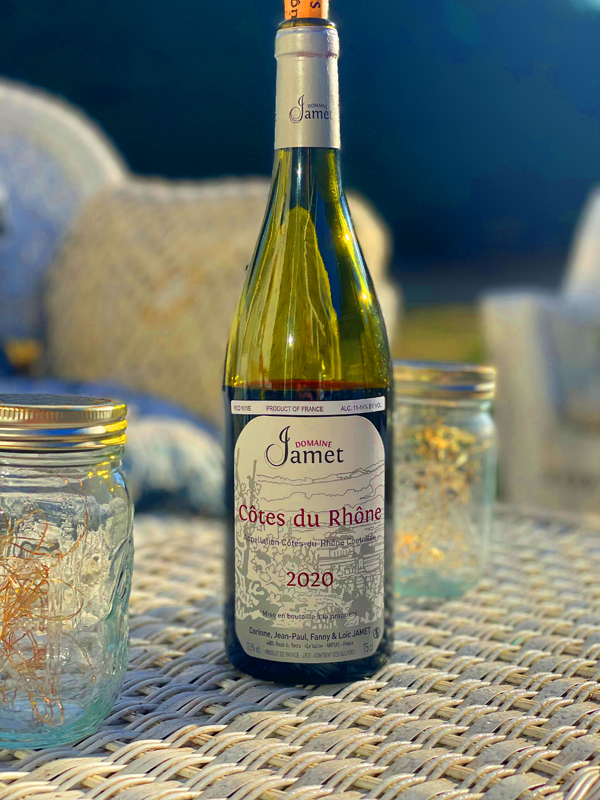
2020 Domaine Jean-Paul, Corinne, Fanny & Loïc Jamet, Côtes du Rhône, Rhône Valley, France.
The very sexy Côtes du Rhône Rouge by the famed Domaine Jamet (still) is 100% Syrah from three parcels, one from young vines inside the classic Côte-Rotie zone, along with a plot close to the domaine just outside the regions set boundaries, as well as some vines on a plateau above Condrieu, all set on a combination of granite and mica schist soils that brings out the very best in this grape and this 2020 is an exceptional version that is happy to be drunk young. This vintage has loads of character with a deep purple color in the glass and a medium/full palate of pure Syrah fruit, spice and savory tones that makes it so compelling with layers of boysenberry, blueberry, damson plum and sweet kirsch along with hints of meaty game, burnt embers, peppercorns, cassis, violets and anise. This bottling, sometimes called a baby Côte-Rotie, is savvy buy for those that love Northern Rhône Syrah and who also loves a great deal, it isn’t always easy to find, but enthusiasts will find a way to get it. This Jamet Côtes du Rhône is meant for enjoyment while you wait for their iconic Côte-Rotie to age in the cellar, and it’s wonderful with food, in particular hearty and rustic cuisine options like leg of lamb and or grilled meat or wild mushroom dishes, though it is flexible enough to be enjoyed with lighter fare and hard cheeses.
The Domaine Jamet is run by Jean-Paul along with his wife, Corinne, his son, Loïc and his wife Fanny, who have a collection of sixteen tiny parcels or lieux-dits, as Kermit Lynch, their US importer notes, spread across some of the best sites in the Côte-Rotie appellation and makes their wine from the blending of all of these rugged and steep rocky set of vines. Kermit adds that, the Jamet’s style has remained true to their region’s historic traditions, even as the appellation has modernized around them. Jean-Paul Jamet along with Bernard Levet, Closel-Roch, the youthful Xavier Gerard and a few others proudly fly the flag of their old world cellar techniques. Despite its popularity, Lynch notes, Jamet, unlike many in Côte-Rotie, always eschewed the use of excessive new oak in his top cuvee, choosing to maintain a cellar full of the classic large oak casks (demi-muid) and Jamet, obviously not a slave to fashion, remains firmly opposed to de-stemming his Cote-Rotie, continuing to vinify his Cote-Rotie in a stemmy whole-cluster fermentation. While this little Syrah from Jamet is 90% de-stemmed, though it still has a hint of the stems here that adds a nice cut of earthy tension and complexity, it was fermented for about three weeks in stainless after a rigorous sorting, a hand grape harvest and then aged in used wood, with 10 to 20 year old barriques being, for about 11 months. I recommend grabbing a few bottles of this, especially in years like this, but if you see the 2016, 2018 and 2019s, which can be labeled Syrah IGP, out there don’t pass them up.
($45 Est.) 93 Points, grapelive
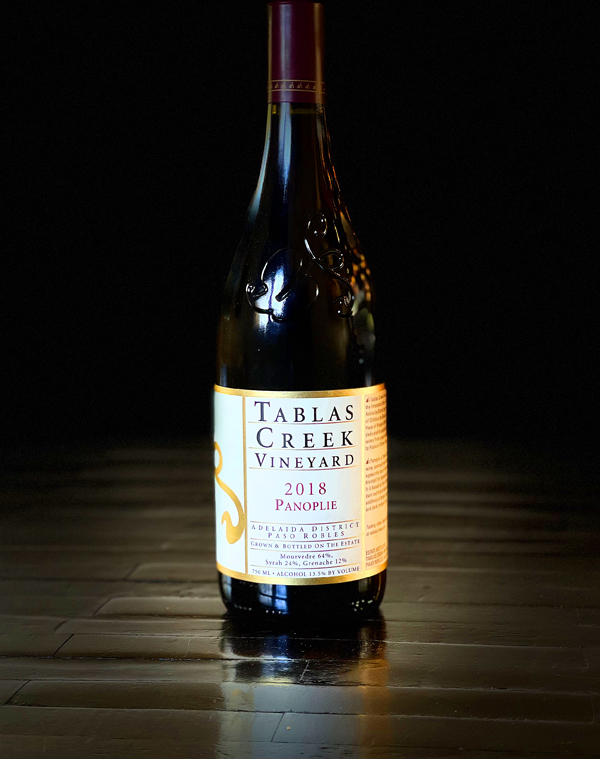
2018 Tablas Creek Vineyard, Panoplie, Mourvèdre/Syrah/Grenache, Adelaida District AVA, Paso Robles.
Maybe the most prized and exclusive of Tablas Creek’s bottlings, the Panoplie, is a Mourvèdre led Chateauneuf du Pape blend that pays tribute to their sister property’s famous Hommage à Jacques Perrin at Chateau de Beaucastel, one of the most sought after Rhone wines with this beautifully aromatic 2018 being one of the most elegant versions to date, it is an outstanding wine with a gorgeous Burgundy like class and grace, thanks to the cool growing season and the low natural alcohol here. Not that is lacks for power, structure and depth, in fact this vintage of Panoplie a cuvée of 64% Mourvèdre, 24% Syrah and 12% Grenache, coming off the most prized sections of vines at the Tablas Estate, is an incredible wine that gets richer and more complex with every sip. The palate is impeccable with detailed layering of bramble berry, plum, black cherry and red currant fruits that are nicely accented with crushed flowers, black licorice, subtle meatiness and sweet leather notes along with a hint of cedar, orange rind, bay leaf, dried herbs and framboise. I am big fan of the single varietal bottlings here at Tablas, but these blended wines are next level stuff with the En Gobelet, which includes all bush vine or head trained Grenache, Mourvèdre, Syrah, Counoise and Tannat, the French Basque grape, being a particular favorite of mine.
Only made In worthy vintages, Tablas Creek Vineyard’s Panoplie is produced in small quantities, this 2018 Mourvèdre-based cuvée is an age worthy wine that is at its best with hearty cuisine choices, as the winery suggests, going with Braised meats, Roast duck and or Provencal herb crusted Leg of lamb, dishes that bring out all the complexity and purity of fruit here. All the grapes that go into the Panoplie are from organic estate vines that are certified biodynamic and that are set on the classic limestone soils of the west side of Paso Robles that also see some cool air from the Templeton Gap, especially at night, that allows for sublime ripening conditions and concentration, even at lower sugars, as this wine with only 13.5% natural alcohol proves to fabulous effect. For the vinification, the winery notes, that the grapes were fermented in separate small varietal lots using native yeasts in a mix of 1500-gallon wooden upright fermenters, open-top tanks and closed stainless steel fermenters. After pressing, the winery continues, the wines were then racked into barrel and allowed to complete their secondary (malolactic) fermentation. Then the final 2018 Panoplie blend was selected from the vintage’s best lots and blended in May the follow year, then aged in Tablas’ large 1200-gallon French oak foudres for another year before being bottled in July 2020. It’s a rarity and a special Mourvèdre driven treat to enjoy a bottle of this stuff and this vintage should continue to impress for another decade, not an easy get, but well worth it!
($95 Est.) 95 Points, grapelive
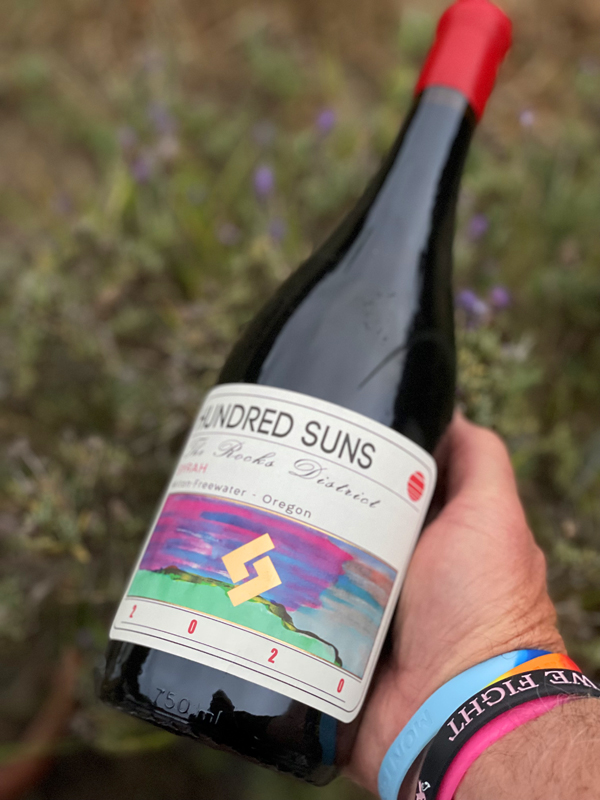
2020 Hundred Suns, Syrah, River Rock Vineyard, The Rocks District AVA, Milton-Freewater, Oregon.
The open knit and pure Hundred Suns Syrah comes from The Rocks District, a sub appellation of the Walla Walla Valley, with intense stony soils, just on the Oregon side of the border with Washington State and made famous by Christophe Barron of Cayuse, and it shows both the terroir and the unique winemaking employed by Grant Coulter, who is mostly known for his amazing set of Willamette Valley Pinots, who used a whole-cluster fermentation in terra-cotta amphora here. This wine has come into being due the fires that made sourcing Pinot grapes in the Willamette a tricky proposition with many of Grant’s favorite sites being affected by smoke, so he went looking for grapes that were a safer bet and we are very lucky he did, as this wine is absolutely gorgeous with expressive layers of fresh crushed blackberries, plum, kirsch and blueberry compote, along with the whole-cluster crunch, spice and carbonic like roundness. The tannins are ripe, sweet and smooth, allowing youthful enjoyment already, while subtle earthiness, floral perfume and mineral notes adding to the pleasure here, reminding me quite a bit of Maxime Graillot’s Domaine des Lises Crozes-Hermitage. There’s a lot to like here and after a swirl or two you get even more dimension from this Syrah and it lingers on and on with hints of creme de cassis, anise and bitter dark chocolate.
I’ve become a huge fan of Hundred Suns, since Grant Coulter, the ex Beaux Freres man, and his wife Renée Saint-Amour started this label in the 2016 vintage, these are unique and wonderful wines that thrill the senses and are unlike most Oregon efforts, plus they are exceptional values, like this Syrah, which explodes with flavor on the full bodied palate. Over the last four years Hundred Suns has created their own identity and style, using modern and ancient methods to craft a wondrous collection of offerings, focused on Pinot Noir, but also including one of the best new world Gamays and a cool Grenache too. Fermenting only with native yeasts, mostly with the whole bunches with stem inclusion and employing various fermenting and aging vessels, including the amphora as used here, and neutral French oak to promote transparency. All of which has proved successful in these Hundred Suns wines, this is a mailing list to join if you want quality and cutting edge Oregon wines, like this one and their single vineyard Pinot Noir bottlings. As the deep purple/garnet colored and violet scented 2020 Rocks District Syrah opens in the glass it reveals more complexity, gaining a savory edge as well, making it a thoughtful companion with a hearty meal, going well with grilled meats and or woodsy wild mushroom dishes. Even with the difficulties of the 2019 and 2020 vintages, these Hundred guns wines are sensational and I’m super excited about the new 2021 releases that are just coming out now, as they look to be on the next level!
($45 Est.) 94 Points, grapelive
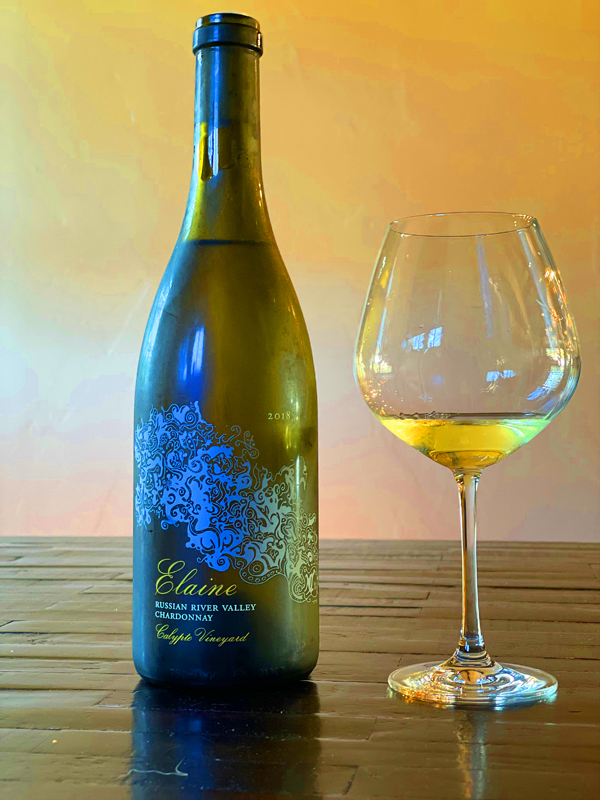
2018 Elaine Wines, Chardonnay, Calypte Vineyard, Russian River Valley.
Coming from Chardonnay vines that are now 22 years old vines set on classic Russian River Goldridge soils at the cool climate Calypte Vineyard, the pale golden and aromatic Elaine Wines Chardonnay is pure and concentrated on the palate, but with a low natural alcohol vitality shining through and pretty layers of peach, apple, pear and quince fruits, along with toasty brioche, fig, honeysuckle, clove spice, lemon curd, wet stone and vanilla notes. Everything is nicely framed and detailed with plenty of fresh acidity to hold it all in pace, this is an exceptional vintage for the region and the wines are singing, the cool long growing season really produced awesome results, with this Chard showcasing the year’s best features. Winemaker Elaine Sale, along with her husband Mark, hand tended and hand harvested the grapes, all clone 96, and did an all native yeast fermentation in barrel, after which it was allowed to go through full malolactic conversation and aged about a year in 50% new French oak, all of which resulted in fabulous Chardonnay to enjoy with decedent cuisine. I have been following these Elaine Calypte Vineyard wines for a few years now and while I was focusing on her Pinot Noir, this Chardonnay has made an impression of me and it might now be my favorite here so far.
The Calypte Vineyard, a ridge top three-acre vineyard on a steep, rugged site in the Russian River Valley, was originally planted in 1998 to Pinot Noir and Chardonnay and serves as the couple’s home and only source of grapes for this micro winery. Elaine Sale and Mark, moved from North Carolina to California to pursue Elaine’s dream of living on a vineyard and making wine. Armed with a certificate in winemaking from UC Davis they began their search for a vineyard in California where to make this a reality. Mark and Elaine were immediately drawn to the natural beauty and wonderful climate of the Russian River Valley, especially for Pinot Noir and Chardonnay, as well as its welcoming community of supportive grape growers and winemakers that they came in contact with and who have helped get this couple started. This site, all sustainably farmed with its fine-grained sandy loam and western location is providing quality and well balanced grapes. Now with a few vintages under their belt and their sustainable farming regime they are finding the sweet spot with both the vines and the wines, as their 2018s show tremendous potential and are lovely wines, with this Chardonnay really impressing for its precision and energy. Coming in at about 13% natural alcohol, this 2018 Chardonnay has all the richness you’d want, without the heaviness, over ripe or buttery elements that you might expect, along with admirable clarity of form, look for this 2018 to age well for another 5 to 10 years.
($50 Est.) 93 Points, grapelive
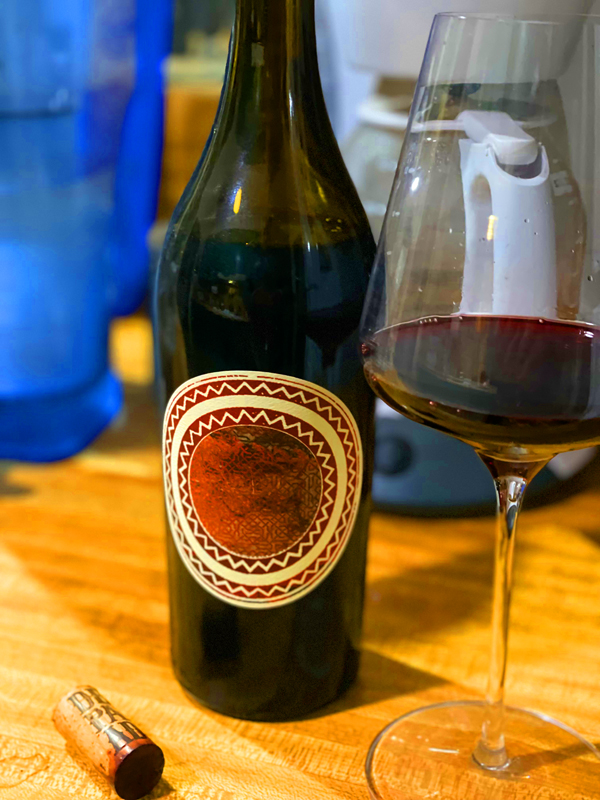
2016 Desparada, Sangiovese, Amphora Raised, White Hawk Vineyard, Santa Barbara County.
The incredibly rich and opulent Amphora Sangiovese by Vailia Form at Paso Robles’ Desparada Winery is deeply colored with a dark garnet hue in the glass and ripely dense on the layered palate with blackberry, plum, brandied cherry and strawberry compote, as well as an earthy and savory background of black olives, minty herbs, warm stones and a touch of meatiness. As the wine opens you get pretty details that flirter up with dried flowers, anise and framboise coming to mind, this is one of the most version’s of this grape I’ve tried in California and it gets more and more interesting with every sip. Vailia explains that every year there are some of her Amphora wines that just sing with terroir, with this one being very special, it comes from the White Hawk Vineyard, which one of Santa Barbara’s best sites, famous for suppling grapes to Sine Qua Non and Ojai Vineyards. From continues that she decided to release these wines which are unique in the clarity of their expression their terrior, with each of these cool and complex Amphora offerings coming from a single site and each was fermented and aged, usually for about a year, in a single 800L amphoae, with this Sangiovese being de-stemmed and native yeast fermented in the terra-cotta. While this Sangiovese is going to be hard to find, Desparada has another Italian red to enjoy, an Amphora fermented Nebbiolo from the Luna Matta Vineyard that saw an extra 22 months in neutral barrels, it has peaked my curiosity and I hope to try it soon.
Desparada was founded in 2009 and is located in Tin City, a place where you can find some of Paso’s Independent talents like Vailia Form, who’s been making wine for more than 17 years on the Central Coast and has been a go to label for quality small lot wines, including her signature Sackcloth & Ashes Bordeaux style wine, which is always a fantastic bottle. The Sackcloth & Ashes Bordeaux Blend, usually sees all of the classic varietals with a breakdown that typically is close to 38% Cabernet Franc, 34% Petit Verdot, 18% Cabernet Sauvignon, 10% Merlot and is sourced from many outstanding small parcels throughout the region, and is aged in traditional French oak for about 15 months, it is an effort that never disappoints and I highly recommend trying, as is her specialty Amphora wines, both white and red. I got this bottle of Amphora Sangiovese on a visit a few years back now and I’m glad I waited open it, as the 2016 vintage was pretty powerful and as of now the tannins have smoothed out to good effect, allowing for the wine to almost perfectly display its full array of flavors. In the last few vintages, Vailia has focused her attention on Sauvignon Blanc and she currently is offering out close to a half a dozen examples in a vast range of styles, plus she has done an excellent Nebbiolo and then there’s her exciting hybrid Soothsayer red blend, that contains Cabernet Sauvignon, Sangiovese, Barbera, Tempranillo and Petite Sirah. These wines are a lot of fun and if you’ve not tried them, it is a great time to discover Desparada, these are wines that are uniquely Californian by nature and go best with robust cuisine choices.
($55 Est.) 93 Points, grapelive
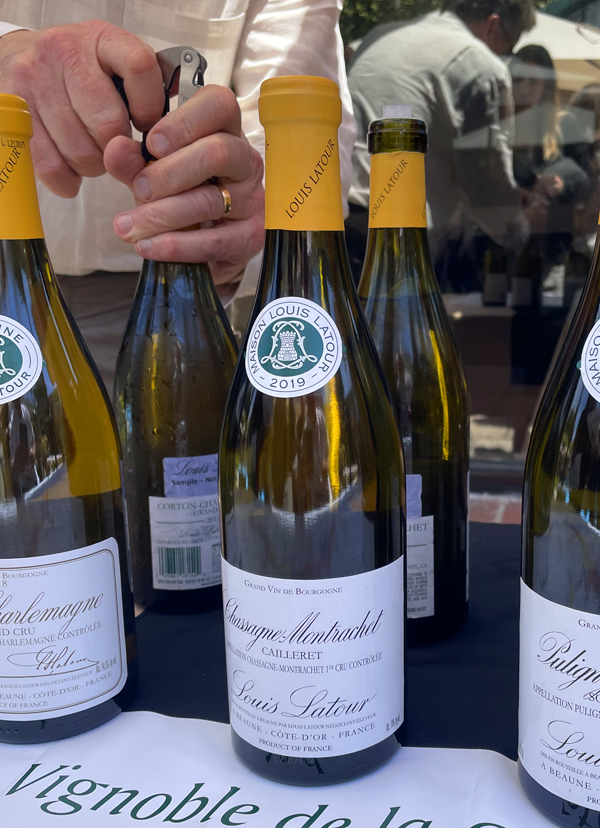
2019 Maison Louis Latour, Chassagne-Montrachet “Cailleret” Premier Cru White Burgundy, Côtes de Beaune, France.
The 2019 Chassagne-Montrachet Cailleret is classically pure and elegant in the glass with stony elements from start to finish, a delicate aromatic quality and some nice depth and length, rivaling some of Latour’s top Grand Cru bottlings in their 2019 collection, which I was lucky to run through in late May of this year. This wine impressed, especially as it opened up, revealing lemon, apple, Bosc pear and white peach fruits along with a fine mineral core, hazelnut, bread dough, golden fig, the mentioned wet stony note and subtle white flowers, making for a pretty Chardonnay that will nicely engage with those that pop the cork on this wine. The pale gold Chassagne was crafted using 30 year old vines in the Cailleret vineyard that is all hand tended and picked, with this vintage seeing a barrel fermentation, including full malolactic conversion, and aging in Latour made French oak with 10 months in the wood, which was 50% new. The depth of fruit, with tiny yields, and fresh acidity really hide that new oak and allows for clarity and its terroir to shine through.
Louis Latour, founded in 1797, is one of there most famous family owned wineries in the world, is now on the 11th generation of Latours, who have been in charge here for nearly 220 years. They proudly fly the flag for the Burgundy region with quality holdings from the Maconnaise to Chablis, and they own the most acreage in Premier Cru and Grand Cru vineyards in the Côte d’Or, including lots of prime and historic spots. Going through almost 20 wines at Louis Latour’s pre-arrival tasting in Carmel by the Sea was good exercise in tasting terroirs, especially with their collection of white Burgundies that ranged from their lovely Pernand Vergelesses, reviewed earlier, to a tiny young vine parcel at the legenday Batard-Montrachet, with this Premier Cru Chassagne-Montrachet Cailleret being one of stars. The Cailleret plot is set on classic clay and limestone soils and the maturity of the vines gives concentration, this is serious stuff, even in vintages that are considered less desirable and this 2019 proves that to excellent effect, and it should continue to age for another decade with ease. This rich and textured wine is grew on me, more and more, and I kept coming back to it during the Louis Latour pre-sale tasting, and it goes great with food, especially with soft farm cheeses and a variety of sea foods.
($135 Est.) 92 Points, grapelive
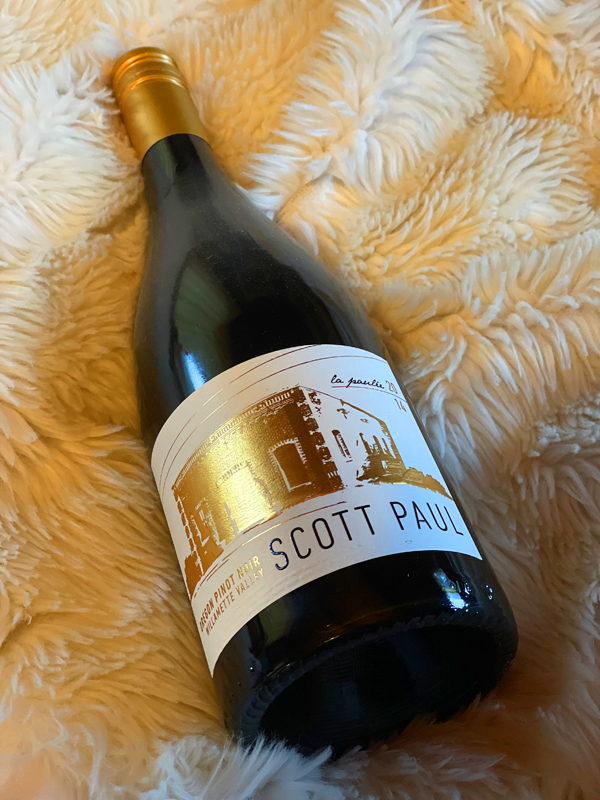
2004 Scott Paul, Pinot Noir, La Paulée, Willamette Valley, Oregon.
The La Paulée cuvée was crafted from a blend of selected lots from all of the vineyards that were sourced by Scott Paul, the now defunct winery that was a cult label and well known for quality Pinots, especially those, like this one that was made by the talented hands of Kelley Fox, who continues to produce awesome wines under her own label. This 2004 is maturing nicely and is beautifully silken on the medium bodied palate that has stayed impeccably fresh and balanced in what was a ripe vintage with layers of black cherry, sweet red currant, crushed red berries and delicate strawberry fruits along with a little toasty wood, sassafras or cola bean, earthy truffle and rose florals adding to the complexity here in this polished wine. These wines, all small lot multi-vineyard offerings, were classically crafted in the Burgundian tradition with low-yields in the vineyard, hands off vinification (methods) in the winery with no pumps, no inoculation, no enzymes, no additives, no fining and no filtering before bottling. The wines saw some whole cluster and were gently cared for with an elevage in mostly used barrels with about 20% new French oak, depending on the year’s fruit quality. The vineyards were always exceptional and usually the Scott Paul bottlings included grapes from Maresh, Momtazi, Shea, Ribbon Ridge and Stoller, all of which were and are awesome sites with Wright getting lots of Maresh’s biodynamic selection of 40 plus year old own rooted Pommard clone that provided a glorious backbone for his wines.
Scott and Martha Wright, the founders of Scott Paul Wines, were located in Carlton, Oregon, but have, somewhat sadly, sold their interest, in the winery in 2014, after a great run of wines, solely focused on the region’s Pinot Noir, which I’ve enjoyed many times over the years. The winery’s wines were tributes to elegance and finesse, in what Scott Wright said, were the benchmarks of what he considered to be the very heart and soul of Pinot Noir, expressing the best of the Willamette Valley’s terroirs. Wright launched Scott Paul Wines in 1999 with a burning passion and some exciting contracts at highly coveted vineyard sites, along with a small investments, and importantly, a winemaker to make these lofty dreams into reality, with Greg LaFollette, who helped Flowers become a top winery, who was a friend and mentor to Scott in the early years. The rest is history, with the Scott Paul Pinots getting better and better over the next decade with the arrival of Kelley Fox, who also made wines at The Eryie, and her rawly transparent style being a big hit with enthusiasts. Interestingly, Scoot Wright also imported Burgundies under the name, Scott Paul Selections, including wines from Romain Taupenot of Domaine Taupenot-Merme, Aleth Girardin of Domaine Aleth Girardin, and Thierry Violot of Domaine Thierry Violot-Guillemard, and he also had his own Burgundy, from Chambolle produced, so you can see his inspiration. Some bottles of Scott Paul Wines are still to be found, like this one and they are worth chasing down, especially from the better vintages, with my favs being 2004, 2006 and 2008. There’s a lot of life yet in this 2004 La Paulée and I’m glad I got a few bottles left, which I will age a further 3 to 5 years, which I think might be when it hits its peak window.
($30-60 Est.) 92 Points, grapelive
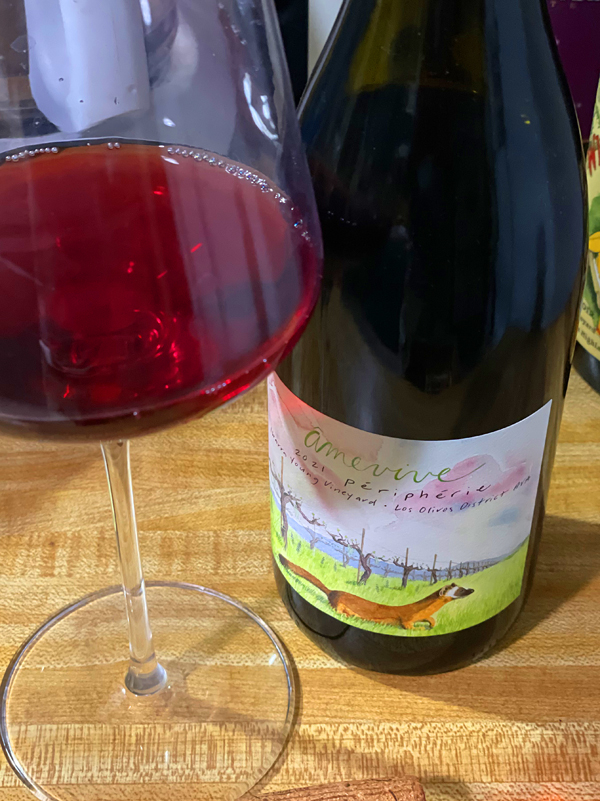
2021 Âmevive, Périphérie, Field Blend Red, Ibarra-Young Vineyard, Los Olivos AVA, Santa Ynez Valley.
A light hued, framed and delicate red wine that reminds me of some of the Jura regional blends, the 2021 Âmevive Périphérie Field Blend, uniquely made from old vines that includes a co-fermenting of Syrah, Mourvedre and Marsanne, is a fresh and delicious wine that shines with bright red fruits along with a clean and graceful mouth feel. The all organic Ibarra-Young Vineyard located in the Los Olivos AVA has long been a treasure to the Santa Barbara area wine community, providing quality grapes to leading winemakers since the 1970s and later, even catching the eye and fancy of the late Jim Clendenen of Au Bon Climat, who did a few speciality offerings from this site during the 1990s. Winemaker Alice Anderson, who I’ve recently profiled in the Spring, says that the vines for this Périphérie are part of the original plantation by Charlotte Young back in 1971 and that her 2021 vintage offerings marks these vine’s 50th anniversary harvest. The medium bodied palate has a cool toned array of red raspberry, strawberry and cherry fruits along with a mix of garden herbs, orange peel and briery spices, making for a fun ruby red wine that enjoys a slight chill and easy cuisine.
The youthful Anderson, who has committed to regenerative organic and biodynamic practices, says that the Périphérie, which comes in at just 11.9% natural alcohol, was harvested on a single morning, with the grapes coming nicely cool and as melted all co-fermented. She continues, that the ratio of each grape is not a science, it directly correlates to the amount of vines in each row working up the western side of the property. She explains that her Marsanne, Syrah, and Mourvedre (grapes) were harvested into the same picking bins and brought to the cellar to be de-stemmed into open top barrels. After its native fermentation commenced, this Périphérie was made with minimal extraction with what she calls, some gentle love touches and pour overs, after which the must was sent to press after a little more than 2 weeks on its skins. This wine was only aged for about 6 months, seeing mostly neutral French oak, but with close to a third matured in stainless steel tank, before its bottling, all to keep the wines natural energy intact. Alice and her partner Topher have leased 10 acres, since 2020, the vintage of their first releases, at the Ibarra-Young Vineyard that they farm to make these Âmevive wines, which are all very limited offerings and only available on their mailing list, I recommend joining on the website, there is a lot of potential here and the current set of releases, like this one, are very pleasing and delightful efforts.
($36 Est.) 90 Points, grapelive
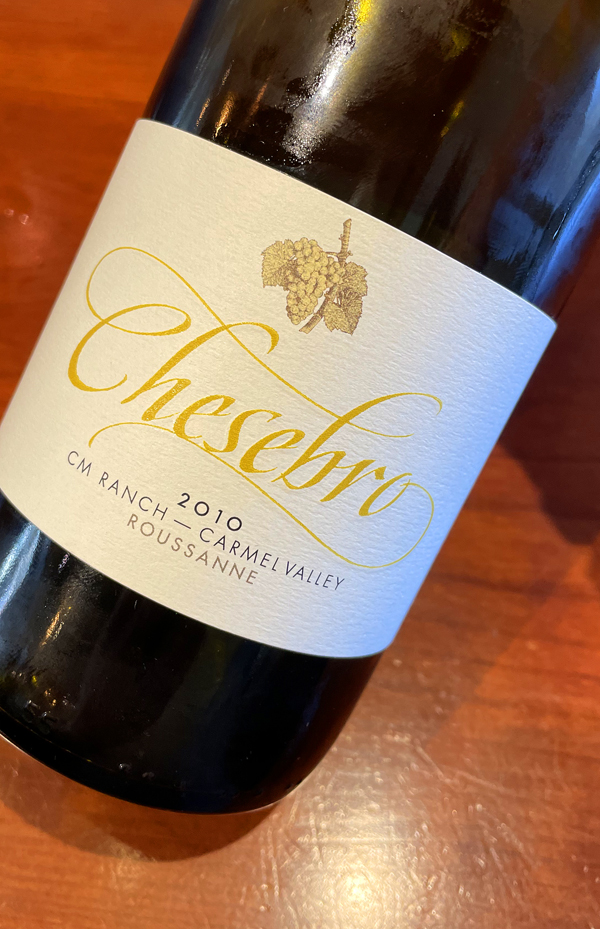
2010 Chesebro, Roussanne, CM Ranch, Carmel Valley AVA, Monterey County.
After recently talking about Roussanne, the difficult to grow white Rhone grape found in both the Southern and Northern Rhone region, most famously in Chateauneuf du Pape Blanc and Hermitage Blanc wines, like Chateau de Beaucastel’s Old Vine Chateauneuf Blanc 100% Roussanne and Jean-Louis Chave’s legendary Hermitage Blanc, where it is blended with Marsanne, I got a chance to taste an excellent library selection of pure and nicely aged Roussanne. Made by the Chesebro Winery, based in Carmel Valley, this wine, which was shown to me by Will Chesebro, the son of founder Mark Chesebro, who explained his love and hate relationship with Roussanne, which they sadly for me, ended up taking out of their family site all together. Coming from those vines, which in recent years got grafted over to Pinot Noir, at their home ranch in the valley, this distinctive version of the grape, from the 2010 vintage, is still amazingly fresh and vibrant even as the color has turned a lovely shade of mature gold/yellow in the glass and the medium bodied all Roussanne delivers taut and chiseled layers of baked apple, dried apricot, quince, white fig, lemon curd and verbena, along with truffle, honeycomb, waxy paraffin and bitter almonds. There is zesty citrus, a faint earthy maturity and delicate dried flowers that round out the flavors here and winemaker Mark Chesebro’s light touch with wood in the winemaking has allowed for purity and varietal character to shine through here, this rarity provides an exciting drinking experience and it is a good place, for peak enjoyment right now. This grape, which I am big fan of, has powerful intensity, with gripping extract, is slightly oily by nature and goes great with dishes like lobster and or roasted poultry, with this Roussanne being best with robust cuisine.
Well respected grower and winemaker, Mark Chesebro, who was, more than a decade ago now, a winemaker at Bernardus, one of the best known Carmel Valley and Monterey properties, does a tiny collection of wines under his personal label, which includes some local favorites like his Albariño, Grenache Blanc, Sauvignon and Vermentino whites, along with a couple of Rhone red blends, Pinot Noir, Gamay and even a Cabernet Sauvignon all from either his own ranch in Carmel Valley or vineyards he oversees in Arroyo Seco. As mentioned in my prior reviews, Chesebro, who studied chemistry and biology at UC Riverside and UC Santa Cruz, before going back to school at UC Davis to study enology and viticulture, makes honest and traditional no fuss wines. His main mission, was to create a sustainable farm and vineyard, as he puts it, and to live off the land and do his best in partnership with nature to have a low carbon footprint and not be chained to the over processed and inhumane world. His ideas were based on a suggestion of some Europeans he met while at UC Davis, though they have evolved over the years, through trail and error, currently he and his family lives on a sustainable ranch in deeper Carmel Valley, where they grow fruits, such as grapes, which he makes into wines like this one and apples, that his son Will, who has joined the family winery and who is getting more and more involved in the wines, makes a fine Spanish style dry cider. I really was thrilled by this older vintage Roussanne and appreciated the opportunity to taste it, and for those who like mature white wines and especially Roussanne, will be well served to check out this micro library release from Chesebro, which will be limited to their mailing list and just a few cases will be available at the Carmel Valley Village tasting room.
($35 Est.) 92 Points, grapelive
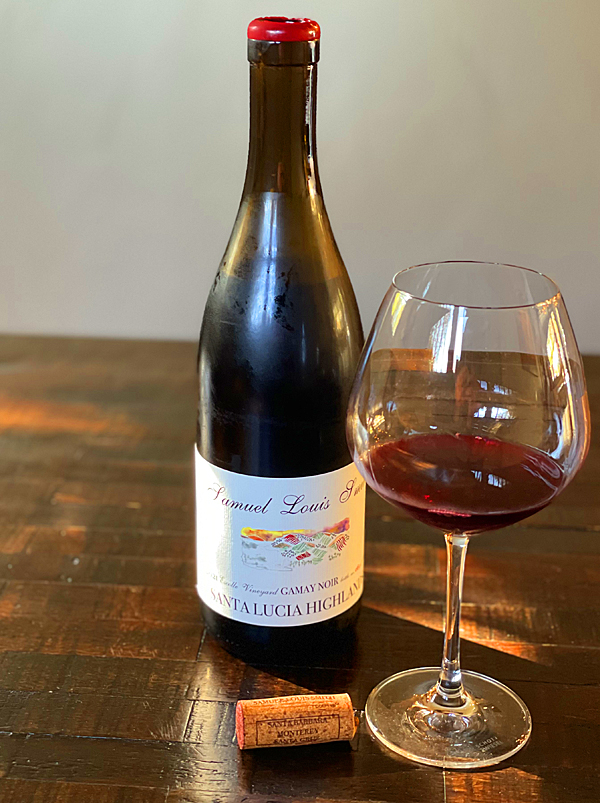
2021 Samuel Louis Smith, Gamay Noir, Escolle Vineyard, Santa Lucia Highlands.
The bright, juicy and crunchy Escolle Vineyard Gamay Noir by Sam Smith, the head winemaker at Monterey’s famous Morgan Winery, under his personal Samuel Louis Smith Wines label is an exceptional debut release of this grape in his lineup. The lighter framed, just over 12% natural alcohol, Gamay is blessed with loads of zingy acidity and floral aromatics that clear remind you of classic Cru Beaujolais with sharply layered red fruits, including plum, candied cherry, spiced raspberry and Jolly Rancher watermelon. There’s a lot of buzz about Gamay and its potential in the Monterey region, especially in the decomposed granite and sandy sites, as seen here at Escolle in the Santa Lucia Highlands, and this one shows that promise. Smith says he treated this Gamay to a 7 day carbonic maceration, plus 7 days of traditional whole cluster fermentation with both native primary and secondary fermentations. Then it saw an 8 month élévage in 100% neutral French oak barrels, after which it was bottled unfined and unfiltered, all done to capture freshness and purity.
Smith notes that, the Escolle Vineyard is located in the northern section of the Santa Lucia Highlands, a very cool zone, also explaining that this region, an 18 mile-long northeast facing bench in the windswept Salinas Valley is a prime spot for not allow Chardonnay and Pinot noir, which it is most famous for, but also Gamay and even Syrah. The mountainside appellation divides the Santa Lucia mountain range to the west from the Salinas Valley floor to the east and is set on the mentioned granite, sandy loamy soils, it is where these grapes see a long hang time and develop deep flavors, while retaining energy and lively acidity. Everything here is influenced by nearby Monterey Bay, and the pairing of granitic loam and new graftings of Gamay Noir, Smith says, at Escolle, is bringing a new SLH renaissance. Scott Caraccioli, who runs the Escolle Vineyard deserves a lot of credit for bringing Gamay to the region and selecting the clones, it has caused a sensation locally, with many producers getting in on the modern Gamay craze. In the coming months we will see a bunch of new offerings, and we can only hope they are as good and as exciting as this wine!
($36 Est.) 92 Points, grapelive
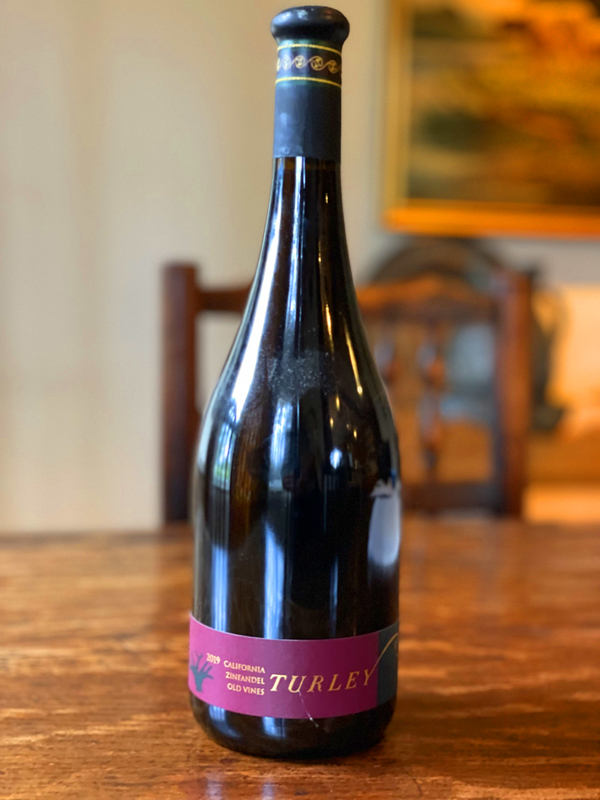
2019 Turley Wine Cellars, Old Vines Zinfandel, California.
Last night, catching up with an old friend this iconic Turley Old Vine Zin provided pure and stylish pleasure to go with the occasion and a simple homemade meal with a deep sense of black raspberry, candied cherry, plum and red currant fruits seamlessly and with ripe supple tannin filled the full bodied palate along with hints of peony, minty sage herb, brambly spices, delicately sweet oak notes and Mission fig. Turley’s classic dark purple and inky Old Vine Zinfandel comes from vines that are anywhere from 41 to 129 years old, and gives a true representation of, as the winery notes, what California old vine Zinfandel should be. This wine uses sustainable grown grapes from vineyards, some too small to name and others that are heritage gems in Napa, Sonoma, Mendocino, Lodi, Contra Costa, Amador and Paso Robles. Almost all the grapes here are from certified organic vines that are hand tended, and the wine is naturally native yeast fermented, in small lots, then pressed and aged for a year in mainly neutral oak, with 80% being French and 20% being American barrels, with only a small percentage of new wood. Turley first produced this “Old Vine” cuvée twenty some years ago, back in 2000, and it remains one of the most important and authentic wines they make today, and this gorgeous 2019 is one of my favorites to date. Turley’s Old Vine Zinfandel, as they continue, is a testament to how these old vines produce a naturally more complex, balanced, and sustainable wine.
I’ve mentioned before, the famous Turley Wine Cellars, one of America’s great wineries, was founded in Napa Valley by former emergency room physician Larry Turley and now hand crafts about 50 different small lot wines sourced from mostly historic old vine vineyards throughout California. As seen here in their Old Vine Zin, along with Turley’s own estate sites in the Napa Valley, in St. Helena, as well as their Paso Robles and Amador County properties. Winemaker and vineyard manager Tegan Passalacqua, who is a keeper of old California traditions, is one of America’s great talents (and wine minds) crafting his collection of treasures at Turley, as well as having his own wines under the Sandlands label, which are wines no one, who enjoys California wines, should miss. It should also be noted that lots of California’s history is told through these ancient Zinfandel vines, most originally planted, as Turley explains as a result of the California Gold Rush in 1849. Indeed, and interestingly, immigration patterns within California can often be traced through the names of many of these old vineyards, as well as, to the way and which varietals they planted, from the Germans of Lodi (Kirschenmann, Bechtoldt, Schmeid) to the Portuguese of Contra Costa (Evangelho, Salvador, Mori) to the many Italians of Sonoma and Paso Robles (Pesenti, Martinelli, Dusi), all of contribute to the soul of this wine. Again, this luxurious and silken Old Vin Zin, delivers on its promise and potential is the glass, it’s a wine that just begs for drinking now and it produced plenty of smiles and comfort, in a nervous wold, making for a relaxing and laughter filled Fall evening.
($25 to $39 Est.) 94 Points, grapelive
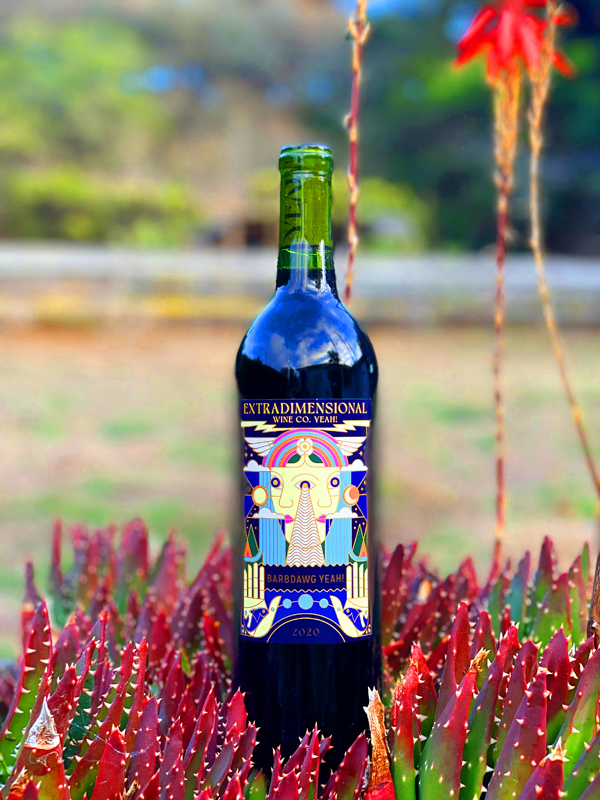
2020 Extradimensional Wine Co. Yeah!, Barbdawg Yeah!, Red Wine, California.
The Extradimensional Wine Co. Yeah! old Vine red blend Barbdawg Yeah! is a crazy mix of mainly Barbera, along with Mourvèdre, and wildly, a good portion of skin fermented Semillon, the white grape which is most well known for being in the famous sweet white Bordeaux wines of Barsac and Sauternes, but cosmically this wine really works and is wonderfully delicious. The Barbdawg Yeah! Is deep purple/garnet in the glass and has pretty aromatics with primary dark berry fruit, a woodsy earthiness and a light floral note on the nose before opening up on the medium to full bodied palate with crushed blackberries, plum, current and black cherry fruits that flow smoothly and with vinous hedonism, while hints of anise, candied citrus rind, cedar, crushed stones and a delicate incense or porporri waft in the background. Youthful and fresh with supple texture and inner brightness this wine is far less funky than the last one of winemaker Hardy Wallace’s unique blends I tried and as a Barbera fan I was extremely pleased with this Barbdawg, it was interesting and complex on its own and really excellent with food, which brought out a deeper fruit element out and softened the Mourvèdre’s tannic nature. Those that like Ruth Lewandowski Wines, Martha Stoumen and or Jolie-Laide will be thrilled with these Extradimensional Wine Co. Yeah! wines, especially this one and I recommend following this label on social media, their Instagram page is the ultimate in cool and provides insight into Wallace’s counter culture adventures in winemaking and the diverse vineyards he uses.
As I’ve mentioned in prior reviews, Hardy Wallace, formerly the co-founder and winemaker at Dirty & Rowdy wines, has taken his own ideas and concepts to the next level here at his and Kate’s, his wife’s, Extradimensional Wine Co. Yeah! label, which leans heavily on natural wine ideals, with hybrid red wines that include significant percentages of white grapes and a series of orange wines, plus a passion for Mourvèdre, which he is exploring to the fullest in blends and solo varietal efforts. In recent years, we have seen a rise of young California producers doing these red wines with usually co-fermented white grapes, taking the Côte-Rotie Syrah and Viognier paradigm to new and weird places, with Hardy’s efforts being some of the most extreme out there. Others to look for include Ryme’s 80% Sangiovese and 20% Fruliano and Pax’s Dazed and Carbonic red, which is 50-50 Syrah and Viognier, both of which are tasty wines that are easy drinkers and enjoy a slight chill, while the Barbdawg is a bit darker and denser in style. Wallace, as mentioned before, sources his grapes from organic vines and uses indigenous yeast fermentation(s), after which the wine is aged in very seasoned or neutral used oak, in order to promote raw transparency, rustic charm and are done with with almost no additional sulfites. A few years ago, Wallace, while still at Dirty & Rowdy, did an awesome old vine Barbera that I loved, so this wine came with some expectations and it did not disappoint! Hardy always suggests decanting his wines and I was skeptical that would prove needed here, it did very much help bring out the most generous layers, so yes by all means decant these intriguing wines!
($45 Est.) 92 Points, grapelive
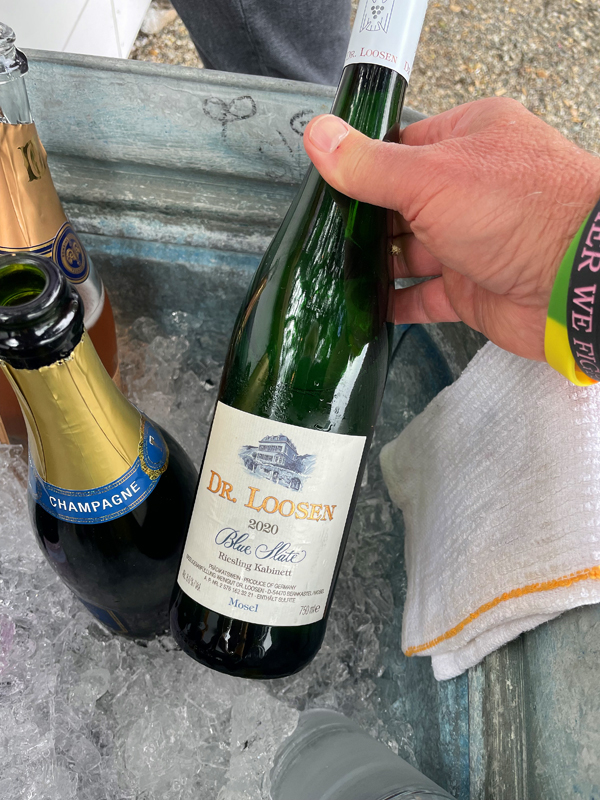
2020 Weingut Dr. Loosen, Riesling Kabinett, Blue Slate, Mosel, Germany.
Arguably one of the most consistent and tasty wines you can find, the Dr. Loosen Blue Slate Kabinett is an especially well crafted everyday drinker and an off dry gem that goes great with spicy foods and is nicely low alcohol. The 2020 version takes it upon a notch and highlights the quality of the year with a bit more depth and complexity on offer in a joyously fruity and generous Riesling that is not overtly sweet and that has vibrant acidity, smoky flinty mineral notes and vivid peach, green apple, citrus and quince fruits on the lighter palate. The winery notes, that the fRiesling grapes for this Blue Slate Kabinett comes only from vines set on the classic blue slate soils, which is the most typical type of slate in the Middle Mosel valley. Going on the add, Loosen explains, the Devonian slate has rich veins of potassium, this soil provides vital nutrients to the vines and gives the wines a pronounced mineral edge. The Blue Slate Kabinett saw 100% stainless fermentation and aging to deliver its exceptional purity.
One of the world’s most recognized wineries in the world, Dr. Loosen produces a vast and beautiful array of Rieslings, from this refreshing little Kabinett to their majestic and powerful Grosses Gewachs from some of Germany’s greatest vineyards. It’s well noted that, the Dr. Loosen estate has been in the same family for over 200 years now, but its famed only reached the global level when Ernst Loosen assumed ownership in 1988, and brought the quality level up to new heights and took his wines around the planet to promote the Riesling grape. He realized that with ungrafted vines averaging 60 years old, some much older, in some of the Mosel’s most treasured sites, like Graacher Himmelreich, he had the fruit to create wines that rivaled anything and anywhere. To achieve his lofty ambitions, Loosen farms small yielding vines, and as the winery notes, prohibits chemical fertilization, with very strict fruit selection to maximize fruit intensity. In his cellars, the winery uses gentle methods that allow the Loosen wines to exploit their full potential with a minimum of handling, giving each effort a chance to display its terroir and style in a transparent way. I recently bought a few bottles of Loosen’s top old vine reserve GG’s that I will try and age a little longer, so in the meantime I’ll enjoy this bargain bottling and I recommend grabbing some too!
($18 Est.) 90 Points, grapelive
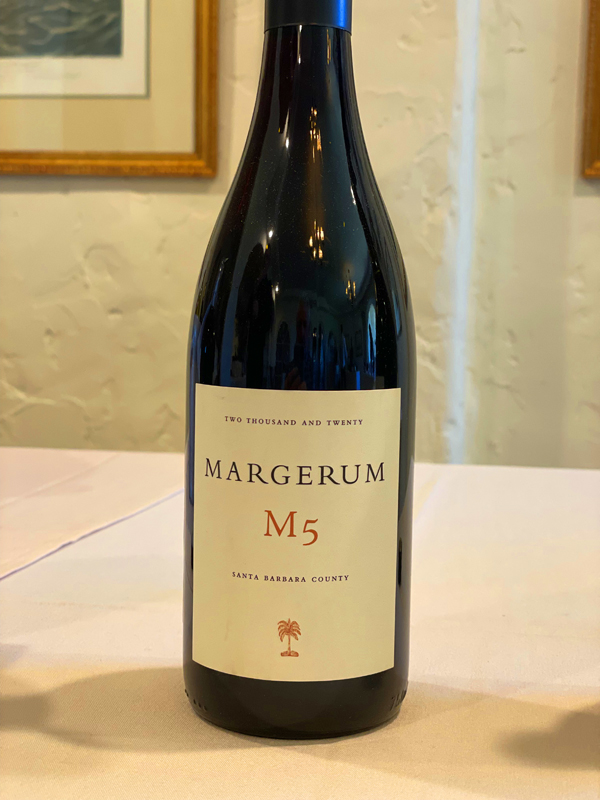
2020 Margerum Wine Company, M5 Rhone Blend, Santa Barbara County.
There’s a lot to love with the latest releases at Margerum, I really enjoyed this lineup, along with, as mentioned in prior reviews, the Cinsault, Margerum’s Riviera Rosé, the Sybarite Sauvignon Blanc and the Syrahs, I was thrilled this M5 Rhone Red, which is drinking fabulous right now. As well as the wines, I was impressed with Margerum’s intensely herbal California Amaro, which is a rare Digestif, rivaling the best from Italy! This dark purple/garnet 2020 M5 is full bodied and luxurious on the palate with authentic Rhone warm and density, along with subtle meaty and spicy elements that folds nicely behind layers of black raspberry, boysenberry, plum and pomegranate fruits, along with hints of lavender, peppercorns, sandalwood and anise. The M is for Margerum, and the 5 is for (the) 5 grapes in the M5, with Grenache, Syrah, Mourvèdre, Cinsault, and Counoise being the grapes of choice here. Like Southern Rhone offerings the M5 is led by Grenache and it has the generosity you’d expect from this varietal, making for a nicely balanced and expressive wine that is perfect for the Fall and Winter cuisine seasons. Margerum says his Grenache based M5 has lush fruit forward flavors initially, that impacts the palate, followed by a finish complete with hints of jam, cocoa and dark berry, with the Syrah adding richness and power, Mourvèdre adding earthy, old world notes, the Counoise adds aromatics of watermelon and the Cinsault adding a spice component and a freshness to this tasty stuff. The M5 is largely estate sourced, but there’s also some purchased grapes from top vineyard sites in the Santa Barbara region that Margerum has long worked with.
Doug Margerum’s Margerum Wine Company, focused primarily on the bounty of Santa Barbara’s diversity from Los Olivos to Happy Canyon, is committed to handcrafted small lot wines sourced only sustainable sites and top quality grapes. Part of Doug’s mission statement is the make wines with a true sense of the place, with pride of where they are grown. Margerum leans toward wines produced naturally, as well as, as they state clearly, to make wines that have individual character and personality with their flagship M5 Rhone Red being a wine that is inspired by the wines of Gigondas and Chateauneuf du Pape, but still having its own identity. Doug Margerum, as I have noted here, is mostly known for his Rhone Reds, like his Syrahs and this M5 Chateauneuf-du-Pape style red blend, has been involved in the Santa Barbara food and wine scene for over 35 years, especially for his time at the legendary and award winning Wine Cask restaurant downtown Santa Barbara where he presided over one of the state’s best wine lists. The Margerum Wine Company began a bit later in 2001, and was inspired by Doug’s love of local wines and personalities, with his close friendship(s) with with Bob Lindquist (Qupé) and the late and much missed Jim Clendenen (Au Bon Climat), being instrumental in his start. The winemaking is mostly old world in style with some whole-cluster in the reds, like this one, with was tank fermented in small lots and pressed to a combination of 50% neutral puncheons and almost 50% neutral barriques, with just a few new barrels thrown in. Margerum, along with the selection of reds, it should be noted, also does a fabulous set of whites and a Provence style Rosé, with their Sybarite Sauvignon Blanc being outstanding stuff, all of which I recommend.
($30 Est.) 92 Points, grapelive
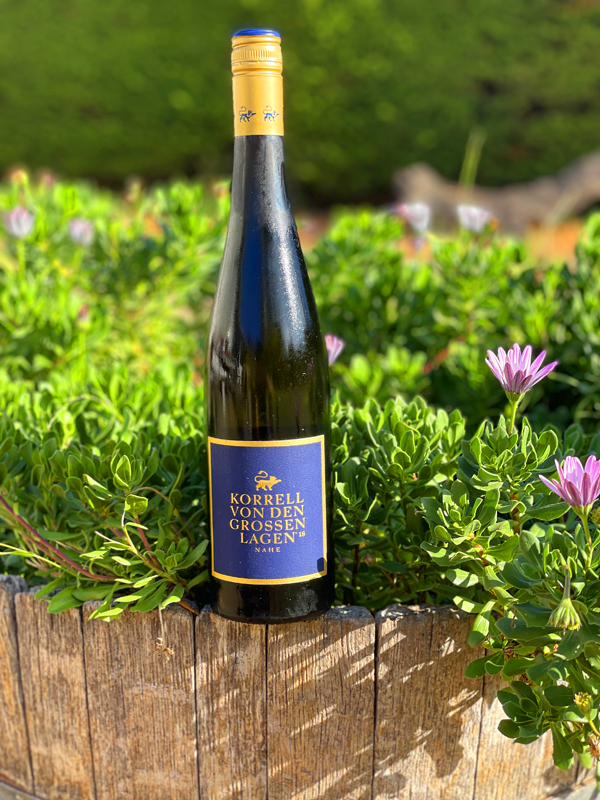
2018 Weingut Korrell, Riesling Trocken, Von den Grossen Lagen, Nahe Germany.
Just like the beautiful 2016 and later the 2019, this vintage of Weingut Korrell’s Von den Grossen Lagen is a complex dry Riesling that transmits this region’s best features, following in the form of recent releases, this wine flows across the palate with layers of bright tree picked peach leading the way along with tangerine, apricot, kumquat and quince fruits, which is again supported by steely/smoky wet shale, rose oil, lime blossoms, verbena and grey sea salts. There is a lovely generous nature this quality effort, a leesy richness and density in this 2018, that is wonderfully compelling that and highlights the Nahe’s excellent terroirs and depth of flavors, making it one of Germany’s best regions, especially for these Cru vineyard sites, which Korrell has captured in the bottle here. This is exceptional dry Riesling and a stunning value, costing much less that most Grosses Gewachs that it compares well with. As noted here in my prior reviews, Martin Korrell, the sixth generation of the Korrell family, is the talent behind this ambitious and innovative estate, he has a wonderful palate of diverse soils to work with here, not far from the likes of Donnhoff, Schlossgut Diel, Hexamer, Gut Hermannsberg, Kruger-Rumpf and Schäfer-Fröhlich. There is volcanic, slate, quartz and gravel in the Nahe, plus Korrell has their prized single vineyard monopole Paradies cru vineyard which is set on mineral intense clay and fossilized limestone, that gives Korrell’s flagship Riesling a fantastic textural richness and depth that reminds me of some of the great Pfalz GG’s, and this one is not far off of that. The Korrell family, as mentioned here a few times, has Spanish roots, has a long winegrowing tradition going back 250 years or more, with their Nahe farming property dating back to 1832, though really fine tuning the focus to exclusively wine production in 1967 when Wilfried Korrell convertied it all vines.
Based in the Bad Kreuznach-Bosenheim area of the Nahe River Valley, Weingut Korrell Johanneshof, as noted, is one of the breakout stars to just hit the American wine scene and the latest releases are spectacular terroir driven efforts, in particular I love their Monopol (single estate cru) Paradies Trocken and this Von den Grossen Lagen, which comes from an amazing selection of GG’s (VDP Grosse Lage) sites and a mix of the regions different soils. It can’t be called a Grosses Gewachs because it is not a single vineyard, but it has the class and the depth to certainly be considered a true Grand Cru with its cool crushed rock and sunny array of yellow fruits, spice, vitality and impressive concentration. The Von den Grossen Lagen Riesling Trocken comes from some of the middle Nahe’s greatest vineyards including Schlossbockelheimer in den Felsen, a site that Donnhoff uses in one of their own great Grosses Gewachs, Schlossbockelheimer Konigfels, which is on porphyritic (volcanic) soils, Norheimer Kirschheck, again a famous Donnhoff vineyard set on slate soils, and an ultra steep parcel at Niederhauser Klamm known for it’s driving minerallity. Martin notes that, the fermentations for the single sites is done separately, the Norheimer Kirschheck begins as always with native yeasts and it is fermented in oak barrel, adding that he uses more classical methods on the other three crus, employing special yeasts and colder ferments in steel tanks, then all the wines see more than six months on the lees, allowing a sensational mouth feel to develop, then expertly blended to make a wine that highlights the very best of the region and the vintage. Every wine I’ve tried from Martin Korrell at Weingut Korrell has been seriously rewarding and I highly recommend searching their wines out, especially this outstanding lightly golden Von den Grossen Lagen bottling, along with rest of their collection of Trocken Rieslings and their Brut Sparkling Riesling and Pinot Noir Sekts.
($35 Est.) 93 Points, grapelive
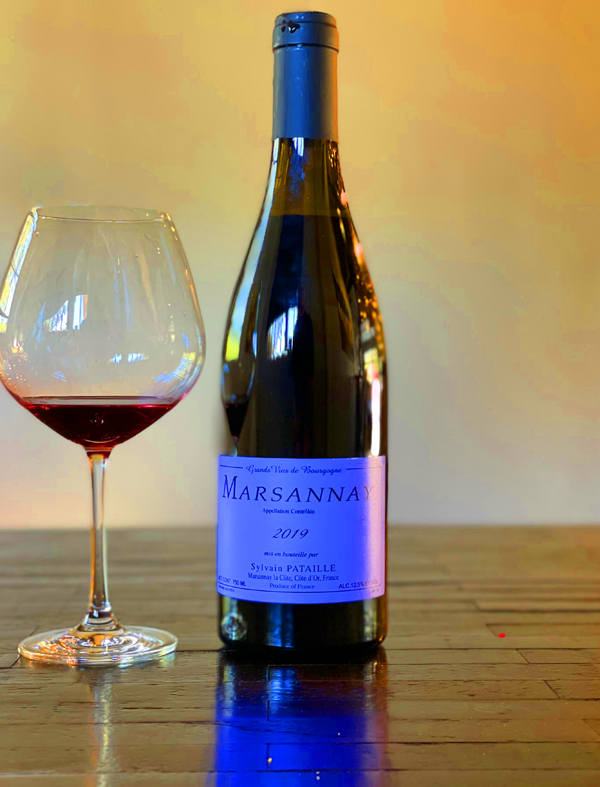
2019 Domaine Sylvain Pataille, Marsannay AOC Rouge, Red Burgundy, France.
Fast becoming one of my favorite Burgundy producers and a great value, the Domaine Sylvain Pataille, based in Marsannay-la-Côte, in the Côte de Nuits (located in the Northern reaches of the Côte d’Or), this small winery is the work of Sylvain Pataille, who is a attracting a lot of attention and praise for his naturally styled and authentic offerings, mostly Pinot Noir from small organic parcels in the Marsannay AOC, like this one from the 2019 vintage, which is simply outstanding with loads of personally and character. This brilliant ruby colored Marsannay has a nose of earthy red fruits, black tea and wilted roses which echo on the medium bodied palate with fresh raspberry, black cherry and red currant fruits, brambly spices, mineral tones, youthful vibrance with zesty acidity and underbrush, making for an exciting, partial whole cluster, and expressive Pinot Noir. I’ve been following Pataille’s wines, imported by the late Becky Wasserman and company, since his 2012s were available here in California and I’ve very much enjoy every bottle I’ve opened, they are everything I love about old school Burgundy and they are exceptionally well priced for the quality in the glass, especially vintages like this one. The basic Pataille Marsannay AOC Rouge is lively, seductive and fun in its youth, so while capable of aging a dozen or so years, it is hard not to drink them up now and since the cost is pretty guilt free for Burgundy, there is no sense of remorse!
The Sylvain Pataille wines come from holistically farmed grapes, he’s been certified organic since 2008 and is practicing biodynamic in his own and leased parcels and uses a gentle touch in the cellar, when he ferments with native yeasts and mostly whole cluster. The aging of the Pinot Noir is done with between 15-30% new oak, depending on the vintage and the age of the vines, with this one seeing the least amount of new barrels traditionally and Sylvain only uses ultra low sulfur doses and only at bottling to keep things as natural as possible. While I tend to focus Sylvain’s Bourgogne Rouge and Marsannay bottlings, which are utterly delicious, he does some rarities too, including little know grapes like Pinot Beurrot and Chardonnay Rose, a bright pink skinned grape that I’ve never actually tasted, but is intriguing enough for famous California Sommelier Raj Parr to plant Chardonnay Rose at his own estate vineyard in Cambria, maybe inspired by Pataille’s version. As well as these, Pataille does a couple of Chardonnay wines, along with a geeky cool set of Aligoté Dorés, which are sometimes harder to find than his reds! The Marsannay Rouge comes from mature, small yielding, vines across the village appellation that were planted from 1950 to1980 on the chalky marl and gravelly soils, with a blend of multiple mini terroirs across this region. The vinification here, as noted saw 30% whole-cluster, with partial stems, indigenous yeast fermentation, hand punch downs and gentle pressing, then the Marsannay was aged for 18 months in mostly older oak barrels, which works fabulous well, as this wine proves!
($45 Est.) 93 Points, grapelive
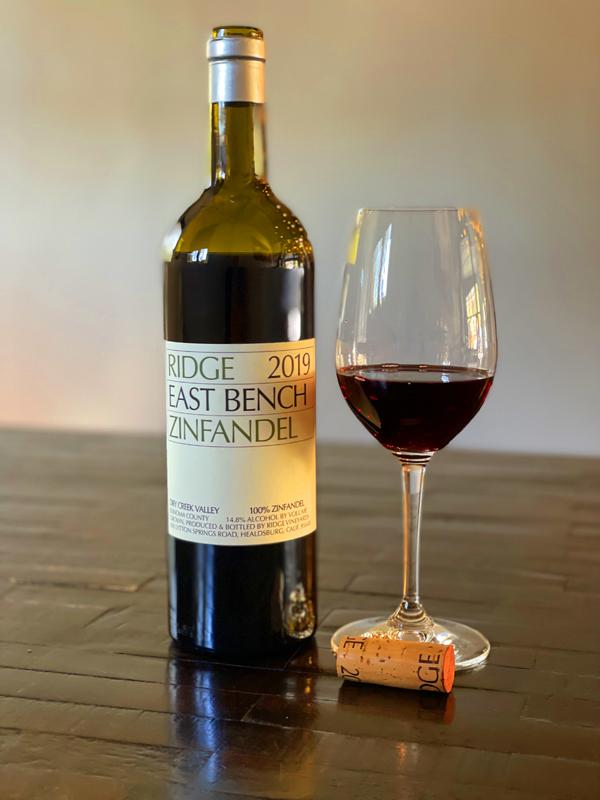
2019 Ridge Vineyards, Zinfandel, East Bench, Dry Creek Valley, Sonoma County.
The 2019 East Bench Zin is beautifully structured and very pure, in keeping with Ridge’s style, there is plenty to admire here and instead of being jammy, it shows a nice bit of grip and firmness with some savory and spicy notes cutting back on the fruit to make for a wine that is good with food and has just the right stuffing to age. The full bodied palate has classic layers of black raspberries, bramble berry, plum and dusty cherry fruits, that is accented by briar spice, minty herbs, cedar and a touch of loam. I was impressed with the natural acidity that keeps things fresh in this 100% Zinfandel bottling which you can tell doesn’t have the usual percentage of Petite Sirah because of the glowing lighter ruby and garnet color in the glass. Ridge is working on its 60 harvest, quite remarkable in this day an age and changes are happening on the winemaking side, with the Lytton Springs facility getting the dynamic and gifted Shauna Rosenblum, as the winery notes, Rosenblum brings a lifetime of winemaking experience with her to Ridge. They go on to add, her father, Kent Rosenblum, of Rosenblum Cellars, introduced his winemaking passion to Shauna at an early age and she has a touch with Zinfandel, after growing up helping make single vineyard versions, much like what she’ll be doing at Ridge. Though originally planted back in 1900, Ridge replanted the East Bench vineyard in around 2001 with specially selected budwood that was chosen from four pre-Prohibition era vineyards. Their excellent quality and quality, Ridge believes is from that excellent and historic pedigree. Like the Zinfandel vines in both Ridge’s Geyserville and Lytton Springs sites, these younger vines at East Bench are all traditionally head trained (no trellis) and spur pruned. Ridge, who instantly saw the promise of this terroir, explains that the ancient soils in this benchland vineyard was formed approximately 80 million years ago and has a mix of clay loams with ancient river rock, it is nicely iron-rich and is reddish in color. The spot is ideal for growing wine grapes, especially Zinfandel, which thrives here. The winemaking here is natural and no nonsense with native yeast fermentation, all organic grapes, 100% de-stemmed and aged in air dried American oak barrels, only 10% new, for a year, all giving the results you’d expect from Ridge!
As Ridge begins its 60 year celebration, it fun to re-visit their history since three scientists from Stanford University’s Research Institute (SRI), where my own father worked after leaving the Army in the early 1960s, and their families formed a partnership and bought Dr. Short’s property on Monte Bello Ridge back in 1959, that became the famous estate high up in the Santa Cruz Mountains. The three founding partners here at Ridge, Dave Bennion, Hew Crane, Charlie Rosen were engineers and along with the wives got things started and make their first wine in 1962, but it was until the legendary Paul Draper joined as the winemaker, that things got serious and his early efforts turned Ridge into one of the state’s best wineries, especially their old vine Zinfandel bottlings and later the famous Monte Bello Bordeaux Blend, which is one of the greatest wines in the world. Draper’s third vintage saw Ridge’s international breakout, when the 1971 Monte Bello came in 5th in what was later called the Judgement of Paris Tasting, when English wine merchant, Steven Spurrier organized a tasting of California Cabernets and Chardonnays that were pitted against top French wines, and to everyone’s surprise, especially Ridge, the California wines beat the French in both the red and white flights, and the rest is history, as they say. These days, Draper is retired and John Olney, who joined Ridge as Cellar Worker at Monte Bello in 1996, is now the head winemaker and CEO of Ridge, his hand has been in most all of Ridge’s modern Zins and now has the talents of Shauna Rosenblum at Lytton Springs, as mentioned above, where this wine was made, and Trester Goetting, formerly at Biale Vineyards, at Monte Bello, meaning Ridge, with their new generation of talent, has a bright future ahead. Goetting, has some big shoes to fill, but has plenty of experience and expertise, he was the winemaker at Napa’s Krupp Brother’s Stagecoach Vineyard and worked in winemaking at Ladera Vineyards on Howell Mountain, plus did a stint at St. Clement Vineyards, so he should feel comfortable with Mountain fruit! Honestly it is hard to imagine a winery with more commitment to quality than Ridge, the range of wines here is incredible and every single wine is compelling and delicious, from their awesome Bordeaux style Monte Bello to their large production offerings like the Three Valleys Zin, the winemaking is impeccably done, whenever you grab a bottle of Ridge, you know you are in for a treat!
($35 Est.) 92 Points, grapelive
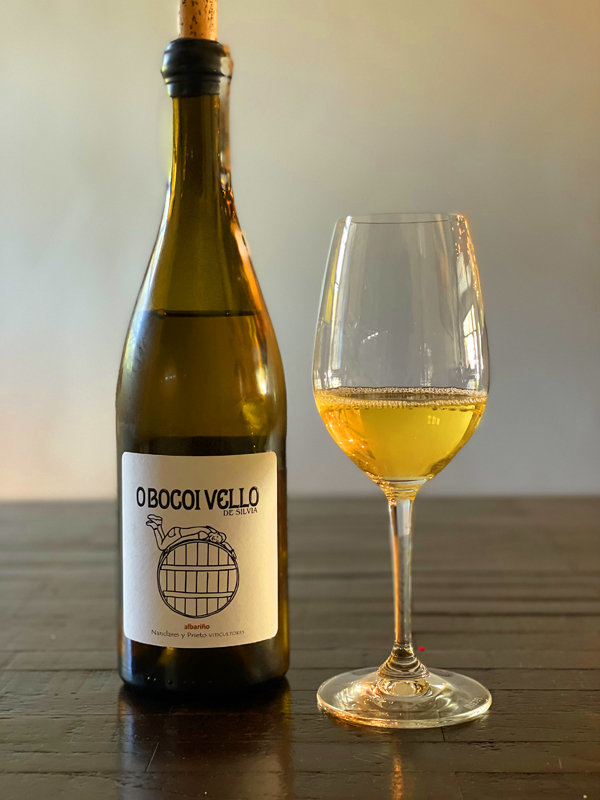
2019 Nanclares y Prieto Viticultores, Albariño, O Bocoi Vello de Silvia, Rias Baixas DO, Galicia, Spain.
These Nanclares y Prieto wines are some of my absolute favorites from Galicia and especially their awesome Albariño bottlings, but I had never tried this O Bocoi Vello de Silvia version, so I was thrilled to get my hands on a bottle of this 2019 vintage which is a stunning and soulful wine with a salty freshness and lovely depth. The O Bocoi Vello de Silvia evokes a foggy or misty morning beach walk with aromatics that offer marine briny elements and that salty character to go with delicate florals before revealing a lighter framed palate of white peach, crisp green apple, tangy citrus and melon fruits as well as wet stones, snappy herbs, verbena notes and an almond like bitter element. This ultra dry and austere special cuvée from Alberto Nanclares and Silvia Prieto saw a bit of skin contact, adding some phenolic grip (extract) to this serious white. All of the Albariño offerings from Nanclares y Prieto are sourced from organic vines in the famous Rias Baixas region, grown almost at sea level, in Spain’s cool western Atlantic coast. Nanclares, based in the village of Castrelo (Cambados), was founded by Alberto Nanclares in 1997, has become one of the most coveted producers in the region and now with the hugely and youthful talents of Silvia Prieto by his side the winery has been able to explore many exciting variations of Albarino, such as this thrilling O Bocoi Vello de Silvia, as well as doing a few reds now, mainly from Mencia grown in the Ribera Sacra, which also are absolutely delicious. The Nanclares y Prieto wines show brilliant clarity, sadly they are not easy to find and it will take some work to grab some bottles, but there are very rewarding and I highly recommend chasing them down!
This O Bocoi Vello de Silvia is old school throw back wine, of which Prieto took the lead on, it is 100% Albariño from several plots in Sanxenxo and Meaño areas. Silvia notes that these parcels have vines that are between 25 to 95 years old, and the sites are largely west-facing and planted on a mix of clay, granodiorite, and sandy granite soils, which promote minerallity, vibrant acidity and loads of saline, to go with small yield concentration. The grapes for the O Bocoi Vello de Silvia are all harvested by hand, carefully sorted, and then get foot-stomped in the ancient method, with about two days of maceration on the skins and stems, as mentioned above, which is followed by a gentle pressing in a soft and slow pneumatic press. The Albariño juice sees an indigenous yeast fermentation in reconditioned 90 plus-year-old 1,900L chestnut wood cask, then this unique bottling, as Silvia explains, rests on the lees for 7 months in the same vessel, with weekly batonnage (yeast stirring) for the first month to add complexity and vinous texture to the finished wine. It’s been noted before that Nanclares is loathe to uses chemicals and or additions in his wines, preferring to make natural wines and allowing the grapes, the region and the vineyards to speak without intervention, the Albariño rarely goes through malo-lactic fermentation here and Alberto never adjusts the natural acidity, so the wines always have a sense of tension and purity. Nanclares y Prieto has employed biodynamic methods, as well as using seaweed as compost, and is always trying to improve everything in the vines and in the cellar, to produce energy filled and crystalline wines, as this one shows. This brisk and intense wine goes great with fresh oysters, sardines, sushi and mackerel, especially, but can go with a good range of things from shellfish to poultry dishes.
($35 Est.) 93 Points, grapelive
Grapelive.com – Reviews – September 2022
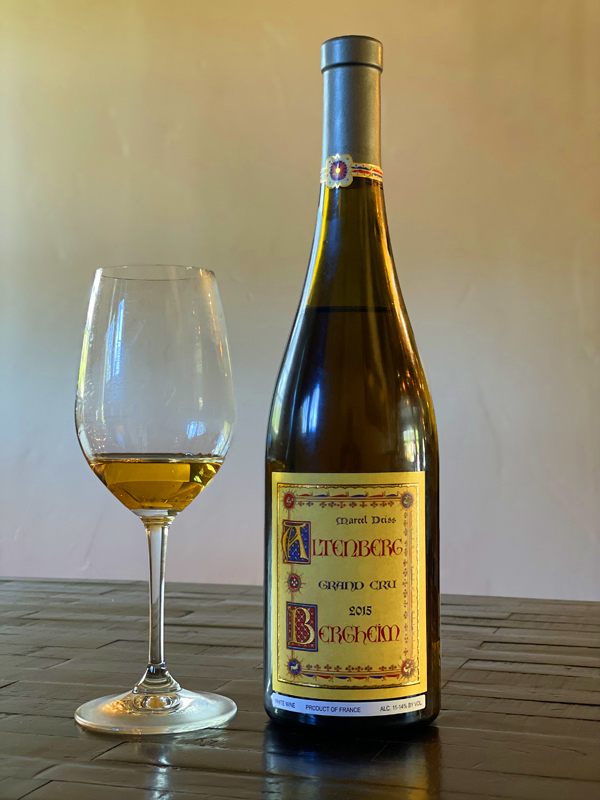
2015 Domaine Marcel Deiss, Altenberg de Bergheim, Le Vin d’Alsace Grand Cru, Alsace, France.
The Grand Cru Altenberg bottling, from the legendary Domaine Marcel Deiss, is made up of the late pickings of top quality sections and includes all the traditional co-planted varietals grown on clay, limestone, fruit and pink sandstone soils that add to the amazing complexity and exotic ripe flavors this incredible white wine shows, especially in a vintage of such concentration as this 2015 has, it is absolutely one of the finest terroir driven wines in the wine world. This vintage, golden yellow in the glass, which is showing maturity now, has opulent layers of apricot, golden raisins, candied orange, dried pineapple, tangy citrus and ginger spiced apple fruits, framed with a luxurious roundness, crystalline mineral notes, liquified roses, verbena, earthy truffle, lychee, lemony marmalade and backing spices. The winery has long fought for a more qualitative style of wine that was solely based on the individual terroir, rather than the grape varietal, which in recent years has made a comeback and largely due to Deiss, non solo varietal wines can be labeled as Grand Cru. The Demeter certified Deiss estate too, was a leader in organic and biodynamic farming here in Alsace and they have focused heavily on reducing yields and picking the grapes at peak ripeness, as this beautifully textured effort shows. There’s a divine richness to these Deiss Grand Crus and also a fine balance, which each Cru being very different in character, with Altenberg, a South facing steep sloped vineyard with a great warm exposure, having some ancient marl with fossils, and soil that has iron-rich clay, as noted above, with a scattering of rocks, all of which that very much distinguishes this wine from the others, showing a smoky flinty note, a subtle acidity and loads of dense fruit intensity.
The Altenberg de Bergheim Grand Cru White, a blend of classic varietals which can include, Riesling, Pinot Gris, Gewurztraminer and Muscat d’Alsace per AOC regulations, saw a gentle long pressing, sometimes lasting 24 hours, of the whole bunches and it was fermented with indigenous yeast naturally in wooden vats, according to the winery, after which it was then aged on the lees (yeast) in ancient foudres for one year in the cellar before its bottling with only a light filtration. Intriguingly, the winery is very coy about varietals and percentages in their blends, especially their unique Grand Cru versions, like this one, but there is no mistaking where this wine comes from, it is a true Alsatian treasure that pays homage to an earlier era that Deiss almost single-handedly resurrected. The estate is located in Bergheim area, where the famed Altenberg vineyard is, next to the village Ribeauvillé, in what is the heart of the Grand Cru zone, and it was here that the Domaine Marcel Deiss was founded back in 1947, though the Deiss family had long lived in the region being everything from blacksmiths to grape growers. Currently the winery and vineyards are managed by the youthful talents of Mathieu Deiss, who with the help of his father Jean-Michel, who really put this label on the map, continue to craft some of the most interesting wines in Alsace. Jean-Michel took over this historic domaine in 1981 and instantly became a trailblazer, replanting the vineyards to co-planting of varietals and making old school field blends, which he saw as essential to make true terroir wines and he converted to organics, eventually going all biodynamic in 1998, his influence continues to inspire the whole region and his son has help raise the game too, these wines should never be missed. This full bodied, lushly sweet and impactful Altenberg is really hitting its stride right now and would be tremendous with a wide range of cuisine from Asian cuisine, roast poultry to juicy pork dishes.
($90 Est.) 95 Points, grapelive
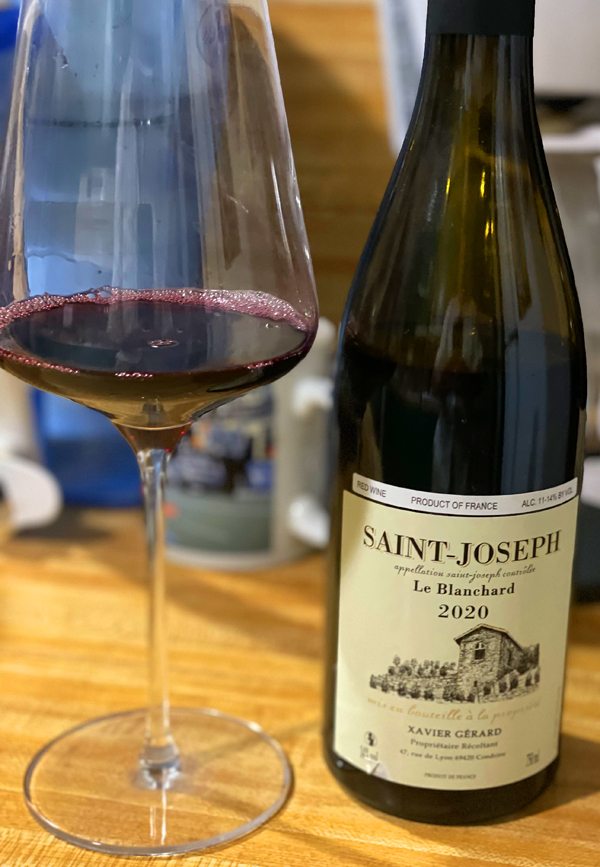
2020 Domaine Xavier Gérard, Saint-Joseph Rouge, Le Blanchard, Northern Rhone, France.
The beautifully elegant and mineral infused Xavier Gérard Saint-Joseph Le Blanchard is a pure and perfumed Syrah that seduces the senses and has a heavenly lightness that captures this vintage of Northern Rhone wines to perfection, this is a year for those looking for delicacy and nuance rather than dense concentration. Xavier Gerard, who I met and tasted with when he was on an American tour, is a talented young winemaker that is making an impression in this classic Northern Rhone region, best known for his Côte-Rôtie and gorgeous Condrieu bottlings, who has in the last five vintages really refined his own style using organic farming and traditional methods in the cellar. He makes wines that sing with perfume and have graceful textures, as displayed here exquisitely. Xavier, who recently took over the family business, has dialed back whole cluster and stem inclusion in his reds and it has paid off in allowing transparency and haunting complexity, as this very, very pretty Saint-Joseph shows. This Le Blanchard comes from a granite influenced small parcel with the Saint-Joseph Appellation, not too far from Gérard’s prime Condrieu vines, it is a micro terroir that promotes aromatics, like this wine’s crushed violets, and shows off this grape’s more sexy and svelte side with a medium bodied palate of blueberry, boysenberry, damson plum and black cherry fruits, along with an unfolding background of stony shale, spicy peppercorns, bacon, anise, cedar and subtle earthiness. This almost silken 2020 should continue to evolve and fill out over the next 3 to 5 years, and while not a blockbuster, it makes for a great alternative to wildly expensive Burgundy, such is the quality here.
Xavier Gérard, as mentioned, continues his family’s old school practices in the cellar, but with a lighter touch and more precision, employing spontaneous (native yeast) and classic Northern Rhone fermentation(s), with tank and concrete and partial whole-cluster, depending on the vintage and what the vines give, with elevage mostly in used barrels, as this wine saw, mainly larger demi-muids. His Condrieu, one of the best and most mineral driven I’ve tried, is absolutely awesome stuff, the 2014, 2015 and 2016 lieu-dit “Châtillon” versions were insanely good, these wines not to miss whites for Viognier lovers. When I tasted with Xavier, as I’ve said in my prior reviews, I couldn’t take my mind of his Côte-Rôtie, with the robustly tannic 2013, the lighter 2014 and his 2015, that shows that vintage’s deep concentration to perfection, all blew my mind and made me a huge fan of this winery. The domaine has some spectacular vineyard holdings in both Côte-Rôtie and here in Condrieu, these granite soiled steep, craggy slopes of the vineyards demand that all work be done by hand and the yields are naturally small, helping with ripe flavors and density in this cooler zone. Interestingly until recently, Gérard’s Condrieu La Cote Châtillon, that comes from one of the estate’s finest sites, situated in the middle of the slope overlooking the Rhone with extremely stony/rocky terrain, has been their flagship and most coveted wine, but Xavier’s touch with Syrah has changed that. This latest Saint-Joseph wine, while having a baby Côte-Rôtie presence, is a stunning value for Syrah lovers and a great way to start to understand the wines of this vigneron’s collection of wines and I highly recommend this Le Blanchard, especially this stunning vintage, though hard to find, as it is a very limited offering, it is really a wine to chase down!
($46 Est.) 94 Points, grapelive
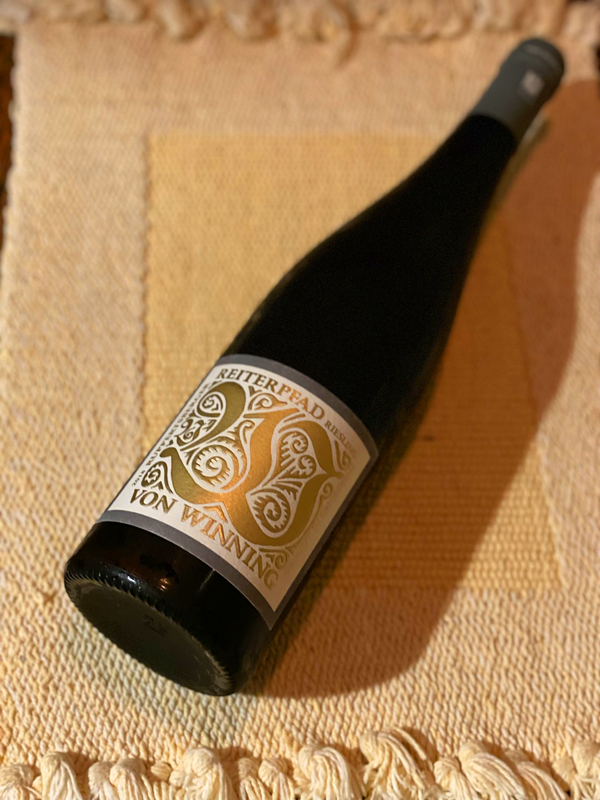
2018 Weingut Von Winning, Riesling Trocken, Ruppertsberger Reiterpfad, Erste Gewachs, Pfalz Germany.
Von Winning’s (Ruppertsberger) Reiterpfad Trocken, one of my favorite dry Rieslings and this 2018 is very consistent with prior releases, with wonderful steely mineral tones, crisp details and stylish length with fresh vibrant fruits. This premier cru could easily be mistaken for a GG and it is a fabulous value for what you get in the bottle and the glass, it is crystalline, vivid, surprisingly rich, but very sharply focused. Fermented with native yeast in wood casks, the Reiterpfad feels, as it usually does, like a Premier Cru Chablis, but with pure Riesling varietal character, delivering lime blossom, tangerine, green apple, quince, lemony marmalade, stone fruits, leaning on tangy apricot, along with lip smacking saline, white tea, faint briny notes, wet stones and tangy verbena. There’s subtle exotic tropical essence in the background there and distinctive terroir chalkiness from the Pfalz soils, as well as a delicate floral perfume, making for a gorgeous Riesling that is just coming into its own and should age wonderfully for another decade at least. Von Winning is a practicing organic estate, located in Deidesheim, planted mostly to Riesling, but also has Pinot Noir, Sauvignon Blanc, Weissburgunder (Pinot Blanc) and some Chardonnay too.
These Von Winning wines are some of the best dry wines in Germany and should not be missed, I remember my first tasting with these Rieslings and having my mind blown and my excitement and joy for these Von Winning offerings has not dimmed at all. Terry Theise, the original importer, and German wine guru, introducing me to von Winning more than 10 years ago now, and also turned me on to their mind-blowing Sauvignon Blancs as well, and Andreas Hutwohl of Von Winning has been incredibly generous and gracious over the years, helping educate me on all these Von Winning and the Pfalz region. The Ruppertsberg Reiterpfad Vineyard is a VDP Grosse Lage (Grand Cru) site, but this Reiterpfad is labelled as Erste Lage, and it is set on sandy loam, red sandstone, limestone soils, making it a gateway wine to the mighty Grosses Gewachs in the Weingut Von Winning collection and it is an exceptional value. Winemaker Stephan Attmann, who was very influenced by Burgundy, treats his Riesling in rather the same way and uses a minimalist approach in the cellar and gentle vinifications, employing stainless steel for the village bottlings, while the Premier and Grand Crus see natural fermentation and lees aging in oak, with the top wines seeing 500L French barrels, as this Reiterpfad saw. Von Winning’s lineup, all of which I recommend, has thrills from top to bottom, but the two wines that bargain hunters and Riesling enthusiasts should chase down are this one and the Paradiesgarten Trocken.
($38 Est.) 94 Points, grapelive
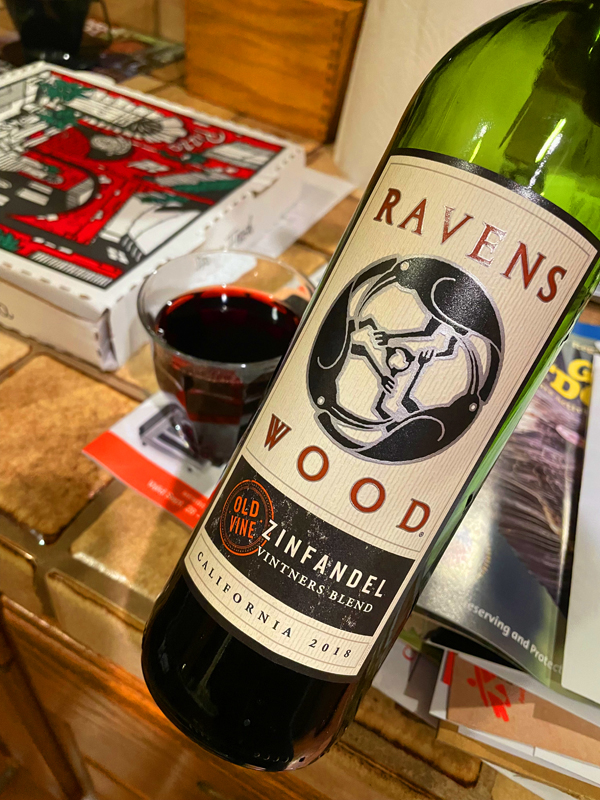
2018 Ravenswood, Old Vine Zinfandel, Vintners Blend, California.
Sometimes you are caught in a wine desert and you only can grab a bottle at the supermarket, and that can make for some difficult choices, but there are some bottles that can be enjoyed and while not a serious wine, this Ravenswood doesn’t disappoint for the price and went nicely with pizza and lots of laughter. The Vinters Blend series are the basic bottlings at Ravenswood and been around now for over 40 years, the Zin was one of the first wines I bought regularly back in the mid to late 80s and as I was on a tight budget it was fabulous value and an authentic wine, crafted by the now legendary Joel Peterson, and even though this wine is not as charming or stylishly rustic, and made in the 100,000 case batches these days it still tastes like Zinfandel, though with a slightly sweeter profile. I enjoyed it best with the food as the Vinters Blend Old Vine Zin, which comes mainly from vines in California’s Central Valley, delivers simple and pleasing layers of black raspberry, plum, huckleberry and kirsch as well as some light wood and floral notes, plus touches briar spices, mocha and dried herbs. Put it this way, the Ravenswood Vinters Blend Zin is not going to be on my must have list, but it certainly tastes more like wine that 90% of the supermarket choices in the domestic section, not great mind you, but drinkable and beggars can’t be choosy.
While Ravenswood now, doesn’t resemble the winery in its heyday, this wine took me down memory lane and I remember some great times drinking Joel Peterson’s outstanding and age worthy efforts, which included Zinfandels from some of the most historic vineyards in the state, mostly from the Sonoma Valley and vineyards that now go into Joel’s son, Morgan Twain-Peterson MW’s Bedrock wines and some other of our new generation of winemakers and top Zin producers. The Ravenswood stuff now is pretty much done in big tanks and what I call made to be factory beverages which see them made with a formula, rather than in Peterson’s famous ancient redwood fermenter(s), which Joel was able to re-claim in recent years and what he makes his Once & Future label wines in again. Before there was the likes of Turley, Biale, Bucklin and Mike Officer’s Carlisle, there was Ridge, who are still making some of the greatest wines in California, and Ravenswood, taking Zinfandel seriously, not making blush or white Zins, with Peterson promoting his wines with the catch phase, No Wimpy Wines. Back in my own early days of drinking wines, I was not wealthy enough to chase down quality Burgundy or Bordeaux, so I had to settle for cheap Chianti and wines from Chile, and so it was in that place and time I discovered Ravenswood and Zinfandel, a grape that I still very much enjoy.
($9 Est.) 85 Points, grapelive

2015 Brangero, Barolo DOCG, Monvigliero Cru, Piemonte, Italy.
The ripe and richly flavored Monvigliero Barolo by Marco Brangero is a lush and concentrated example of pure Nebbiolo, but as fruit forward as this vintage is there is a solid underpinning of tannin and nice acidity which makes this expressive Barolo easy to love in its youth and gives it a finely balanced form in the glass, though you’d be best rewarded to have this with meaty and robust cuisine to unleash the very best here. The Monvigliero cru is set on chalky soils, which are known as Marne tufacee bianche in Italian, with Brangero focusing on sustainable farming and getting perfectly ripe Nebbiolo grapes back to the cellars that showcase the terroir and complexity of the individual vintage, as this 2015 does. The full bodied palate of Brangero’s dark ruby/garnet and orange tinted Monvigliero reveals traditional layers of brandied cherry, plum, strawberry and currant fruits along with minty herbs, crushed flowers, earthy licorice, grilled orange rind and aged cedar notes. The vintage has a warm feel and the impression of lushness or baby fat still, which is starting to give way to a more mature form and should continue to tone down over the next few years, though it should remain very drinkable and eager to please, unlike more serious vintages like 2010 or 2016 (that are long term agers) and more like 2017, this is definitely a wine to please a crowd and maybe not one to bury in the cellar. This 2015 Monvigliero will be an excellent wine to pair with Fall and Winter cuisine, it certainly has what it takes to be the centerpiece of any hearty meal, especially lamb and other meaty dishes and or with woodsy wild mushrooms.
The family-run Brangero farm, which was a new winery for me, this year, is located in Diano d’Alba, on the highest part of the hill in front of the town, an area that enjoys picturesque views of the Langhe hills, the beautiful town of Alba, and the beautiful vines that surround this property. Brangero also has property in Liguria, where they do some excellent Pigato, under their La Ginestraia label, which I reviewed here at Grapelive.com in recent months. It should be mentioned, somewhat surprisingly, their single vineyard Sori Cascina Rabina Soprano Dolcetto just might be their biggest star in their collection and the 2016 is a fabulous example of why that is. The Brangeros also make a full range of classic wines here in Piedmonte, including very good Barbera d’Alba, Nebbiolo d’Alba, Langhe Rosso, Langhe Chardonnay and Langhe Arneis, as well as two flagship Barolo bottlings, including this from the exceptional Monvigliero cru, one of Barolo’s top sites. For their signature Barolo the Nebbiolo grapes were carefully sorted in the vineyard and in the winery before being 100% de-stemmed, it saw a long fully extracted maceration and fermentation in stainless, with a 40 day submerged cap and pump-over regime, after which the selected Monvigliero wine was pressed and racked to once filled used French oak casks where it rested 30 months in the wood. Brangero then does the final blend in tank and bottles the seperate Barolo offerings, then they are held in the cellar another 6 months to a year, this Monvigliero is usually released no sooner than 4 years after its harvest. I have really enjoyed these Brangero and La Ginestraia offerings, with their Dolcetto, as mentioned above, being my favorite so far!
($48 Est.) 91 Points, grapelive
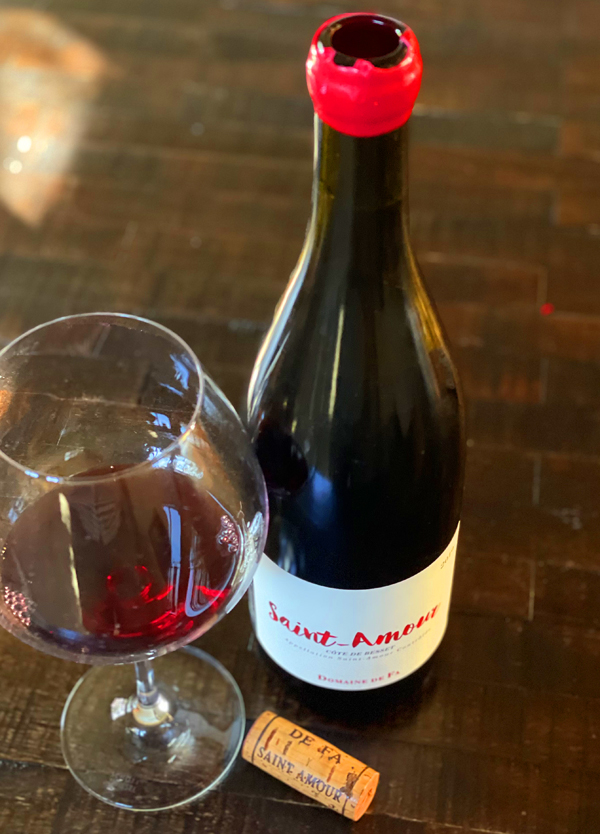
2019 Domaine de Fa, Saint-Amour “Côte de Besset” Cru Beaujolais, France.
Made by the famous Graillot family, of Cross-Hermitage (Rhone) fame, the Domaine de Fa Saint-Amour Côte de Besset is a ripe and pure Gamay done in the mode of Morgan legend Domaine Lapierre with a spicy whole cluster punch to go with a range of juicy red fruits and a silky tannin structure, making for an excellent and delicious quaffer. Alain Graillot’s son Maxime, who makes the wine at both Alain Graillot along with his own Domaine des Lises, and his brother Antoine, who has taken on a leading role here in Beaujolais, where they do a standard Beaujolais, a superb Fleurie and this lovely Saint-Amour. Practicing biodynamic and employing a natural whole cluster fermentation, with a semi-carbonic maceration, the Graillot’s Saint-Amour Côte de Besset is vibrant and expressive with pretty floral intensity and a lighter framed medium bodied palate of crushed raspberry, plum, cherry and strawberry fruits as well as having brambly spice, sandalwood, minty herbs, anise and fig notes. This wine, coming from 40 year old vines, up at over 400 meters, set on mainly crushed granite, sand, and with big chunks of granite and quartz scattered about, is a tiny production Gamay that was aged for one year in a single used Foudre.
The Graillot family, as noted, has a long history of making wine in the Northern Rhone with a proven track record of producing long lived and outstanding Syrah from the mentioned Cross-Hermitage AOC as well as the epic Hermitage hill and the Saint-Joseph region, and who are gaining a reputation for some exciting wines here in Beaujolais. Interestingly, Maxime and Antoine, had a love of Gamay, which, they say, led them to some of the picturesque areas of Beaujolais, where they really enjoyed the wines and natural approach to winemaking, which fit their ideas and style. Then, as their importer notes, the two brothers struck gold in 2013, when they found and purchased a special 5 hectare vineyard named ‘En Besset’ that was located in the northernmost section of the appellation near Saint Amour and Julienas, a site that under their direction has shown some real promise. This high altitude stony hillside with its granite based soils is a prime spot for outstanding Gamay, as this 2019 shows. After that they also purchased two prime parcels, one in the top cru of Fleurie, plus another in the lesser known cru Saint-Amour, which are potential stars too. There’s a lot to admire here in this 2019, a fairly difficult year, and Domaine de Fa looks set to rival some of Beaujolais new generation of talents and should be on the radar of Gamay enthusiasts, I highly recommend checking their lineup out, which also includes an intriguing Saint-Veran Chardonnay.
($32 Est.) 92 Points, grapelive
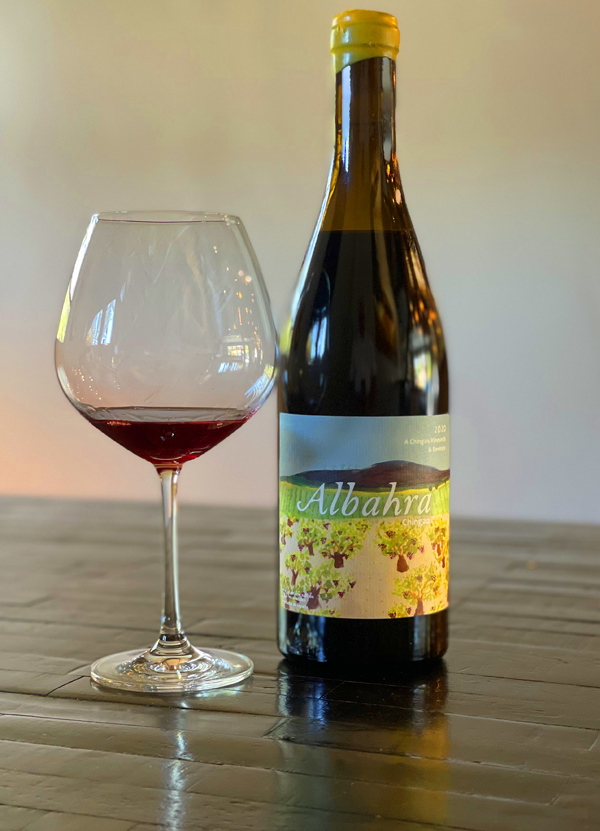
2020 Envinate, Alicante Bouschet “Albahra” Chingao Vineyards, Almansa, Castile-La Mancha, Spain.
The special edition of Envinate’s Albahra 100% Garnacha Tintorera (aka Alicante Bouschet, a red-juiced grape) is from a small organic, head trained, Mediterranean influenced vineyard set on the Almansa region’s clay and calcareous soils, making for a deeply opaquely purple/ruby and seductively fruit forward and spicy red wine that is a pure joy to drink in its fresh youthful form. This 2020 vintage is distinctive in style, though has the Albahra’s ever present and expressive personality, with its whole bunches vitality and crunchy fruits, mineral tones, as well as its range of spice and subtle earthy elements. This year’s version, a little lighter in frame than the 2019, shows peppered pomegranate, Italian cherry, brambly raspberry, red peach and candied citrus, as well as racy hot cinnamon notes. This is a lively and fresh red wine, that like Beaujolais can be served with a little chill on it, and its acidity makes it great with a wide range of cuisine choices, Envinate again provides us with a wine that has tons of personality in a balanced medium bodied wine. Envínate, which translates to “wine yourself” is a trust of four very talented Spanish natural winemakers led by Roberto Santana, Alfonso Torrente, Laura Ramos, and Jose Martínez, who are four friends that met while at college, where they all studied enology at the University of Miguel Hernández in Alicante and even though they were from vastly different areas in Spain, they wanted to make wine together, which they have done with great success. This edition and the regular yellow label bottling are wines to search out, these no pretense reds are impossible not to love and perfect quaffers for this Fall season.
Interestingly, as mentioned in my prior reviews, the Alicante Bouschet or Garnacha Tintorera grape is found throughout Spain, though almost never is made into a single varietal wine, which seems incredible, when the results, especially in this Envinate example, are so delicious! The grape has made a home for itself in parts of Italy and notably in California, where it is usually found in old heritage sites and used in field blends, though again rarely is the main component in any of the wines. It has played a background role in some of Ridge’s most tasty Zinfandels, plus it is found in parts of coastal Tuscany, as well as being a minor player in Mencia based wines in the Galicia region too. Also as noted before, Envinate’s winemaking is very low intervention and natural, relying mostly on vineyard work to produce their fabulous collection of unique wines, and while the world mainly knows about their stunning set of Canary Islands and Ribeira Sacra wines, which are both marked by their proximity to the Atlantic Ocean, this Chingao Vineyards Albahra bottling is one of my favorites and it is one of the greatest values in their portfolio. The Albahra Alicante Bouschet (Garnacha Tintorera), which has red pulp and juice, is all foot-trodden in vat with lots of whole cluster and sees a natural spontaneous (indigenous) yeast primary fermentation, with about 6-10 days of skin and some stems maceration, to extract all the sexy color and complex array of flavors, then wine goes through malos and is raised on fine lees in concrete vats for around 8 months. This wine, bottled unfined and unfiltered, is ultra low in sulfites (or SO2) and is always wonderfully vivid and pure, it is an easy wine to recommend, but hard to get.
($36 Est.) 93 Points, grapelive
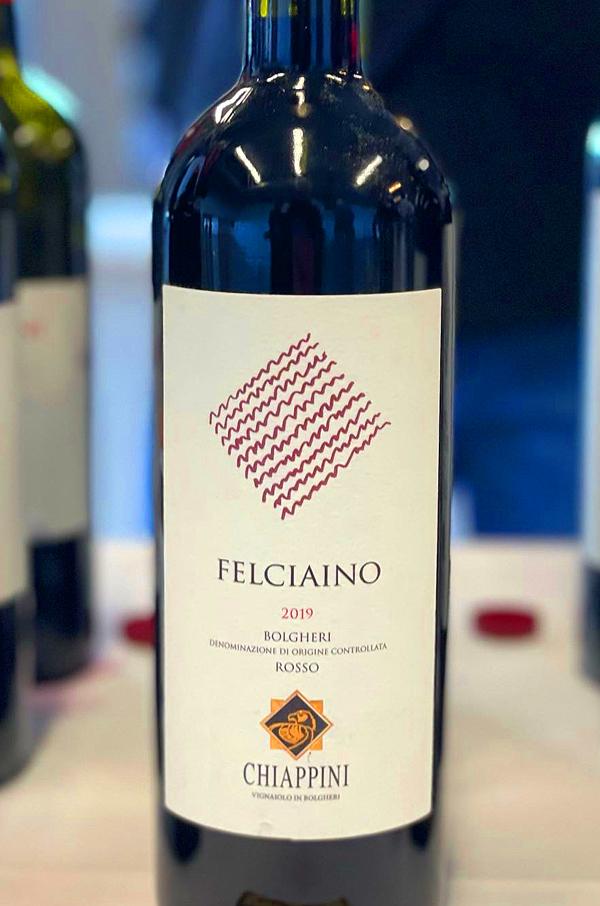
2019 Chiappini, Felciaino, Bolgheri Rosso DOC, Tuscan Coast, Italy.
As there begins to be a chill in the evening air and thoughts are on heartier meals, it is the perfect time to explore Tuscan wines and especially the wines from the famous Bolgheri region on the Tuscan coast that are warmly ripe from the Mediterranean sunshine, but are also nicely balanced by cool nights, they show a depth and structure that make them some of the world’s best wines. So looking for excellent wines from Bolgheri is not all that difficult, though finding value can be a little tougher, but there are some outstanding wineries that offer exceptional quality at reasonable prices, as these fabulous Chiappini offerings show, like this one. Chiappini, who’s a neighbor to the famed Ornelliaia, does a collection of Super Tuscans, using a range of Bordeaux, native Tuscan and even Rhone Varietals, including Cabernet Sauvignon, Merlot and Cabernet Franc, all of which grow especially well here, along with Sangiovese, Vermentino and Syrah, that also do brilliantly here as both blending grapes and as solo efforts. The Chiappini estate, originally planted in 1978, also has a special site, Felciaino, that got planted in 1986, set on the region’s alluvial and clay with limestone, and it has, as the winery notes, a mineral skeleton formed by conglomerates known as Bolgheri Conglomerates. These unique soils with their concentration of calcareous deposits, which along with the mentioned Tuscan Coast climate, makes for outstanding fruit density, flavor richness, elegant tannic structure and complexity, as this gorgeous 2019 vintage shows wonderfully with beautiful black fruits, a sexy dark purple/garnet color in the glass and lovely aromatics. For this wine, Chiappini uses Cabernet Sauvignon 50%, Merlot 40% and a small dose of Sangiovese 10%, making for layers of blackberry, plum, black cherry and dark currant fruits, along with sweet cedary wood, anise, a touch of loam, mineral and floral essences that linger on and on with subtle creme de cassis, red spices, mocha and vanilla notes, in a wine that has ripe and supple tannins, an inner brightness due to natural acidity and a Bordeaux like elegance.
The wine making at Chiappini is a study in not doing too much, but giving the customer everything they expect with natural fermentation in steel tanks and a cool maceration period to extract color, flavor intensity and a tannic backbone. The maturation or elevage for the single vineyard Felciano lasts at least 12 months in classic French oak barrels, with just a small percentage being new and the rest seeing second or third use barrels that tone down the sweet, smoky toast to an acceptable and well judged amount, allowing for transparency and purity of form. The wines at Chiappini, as I’ve mentioned before, try to capture the essence of place and are an artful and soulful expression of the Bolgheri region that give that well noted warmth of character that I find distinctive, it is shared by the legendary estates here, like the mentioned Ornellaia, as well as Tenuta San Guido (Sassicaia) and Le Machiole, to name a few. This is the region of Super Tuscans, with Cabernet Sauvignon being the star, but in recent times the wines with Cabernet Franc leading the way are being standouts, and of course the Merlot here has a cult following, as witnessed in the Masseto and Messorio bottlings by Ornellaia and Le Machiole respectively. Chiappini also does a line of single varietal wines as as the Bordeaux and hybrid Tuscan blends, this line known as Liena, includes a stunning Cab Franc, that I recently reviewed here at grapelive.com, as well as a pure Cabernet Sauvignon, a Merlot, and a unique 100% Petit Verdot, which I am very much looking forward to trying. The Chiappini family is led by their patriarch Giovanni, who represents the beating heart of the estate and who has put his heart and soul into the dirt here, this place is a mirror of his hard work, and his son Alessandro, a rising talent, makes the wines. I know his daughter Martina, the sales director for Chiappini, through her trips here to California and it was great to see her at San Francisco’s Slow Wine 2022 event, where she wowed this year’s gathering with these wines, especially this one! The Chiappini wines are not easy to find, but all are available here in the states and I highly recommend searching them out!
($25 Est.) 93 Points, grapelive
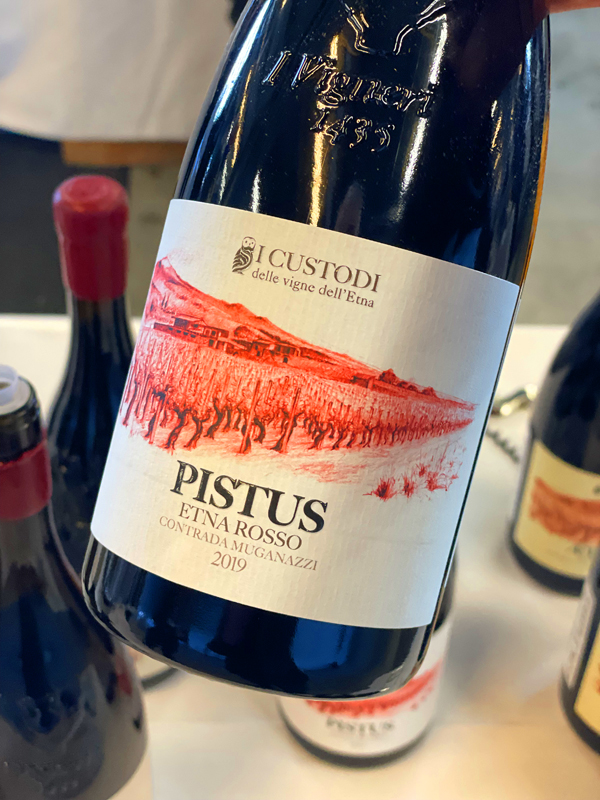
2019 I Custodi, Pistus, Contrada Muganazzi, Enta Rosso DOC, Sicily, Italy.
The 2019 I Custodi Pistus is loaded with personality, very similar to early efforts I have reviewed, with a nice tension on the medium bodied palate, showing an exciting intensity with brandied cherries, dried flowers, iron mineral tones and red spices leading the way. This is gorgeous stuff that adds plum, candied orange peel, anise, tobacco leaf, crushed rock, sanguine and lavender accents as it opens up and the textural nature comes through, and while structured it has supple elegant tannins and the Etna volcano terroir influences are very much in the foreground in this brilliant effort by I Custodi. I Custodi is run by Mario Paoluzi and relies on I Vigneri, led by Salvo Foti, and his team of Etnean winegrowers, plus Ciccio the mule to tend the vines and make the wines in the ancient way of Etna, as it has always been on Mt. Etna for centuries, without synthetic chemicals, as Paoluzi puts it, in respect of the people, the classic stone terraces, the landscape and the nature. This dark ruby Pistus Etna Rosso, mainly organic and young bush vine Nerello Mascalese, 80% and 20% Nerello Cappuccio, is grown in a steep terraced parcel, with the classic lava black soils, making for a wine that transmits a real sense of place.
The Salvo Foti made I Vigneri I Custodi delle Vigne dell’ Etna wines, both red and white, are all outstanding efforts and what I tasted of their latest collection of releases were some of my favorites at the Slow Wine tasting in San Francisco, which included this beautifully crafted and soulful Pistus, single site Mount Etna Nerello Mascalese based red, coming from the Contrada Muganazzi, high up on the volcano. The vineyards are up at 2,000 feet with sandy and mineral charged soils, with this wine being sourced at Paoluzi’s Northside Contrada Muganazzi, which provides ripe fruit, but with lots of natural acidity, which adds excellent balance and life to the wine. The grapes were all hand harvested with extreme care and methodically sorted and then brought to the winery in shallow crates, where they are crushed after de-stemming, but can see about 20% whole clusters with partial stem inclusion, depending on vintage, that are in some years included. The fermentation, maceration and aging done exclusively in the stainless steel tanks, which lasts, as the winery notes, about 22 months total for this entry level offering. Salvo Foti, the godfather of Etna wines, has inspired a generation of wineries and winemakers in this region, which has seen a remarkable rise in quality and transparency in these Etna wines and I Custodi is a producer to look for.
($30 Est.) 92 Points, grapelive
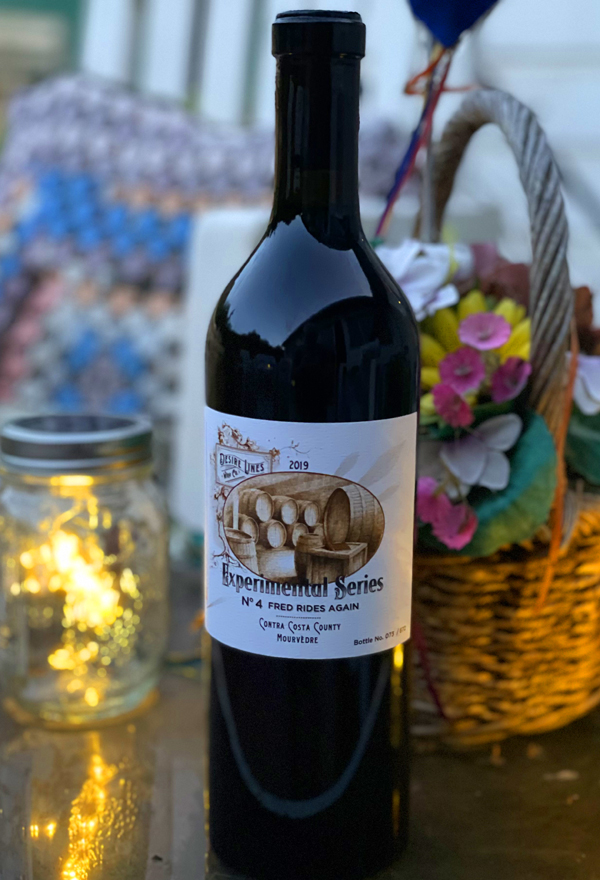
2019 Desire Lines Wine Co., Mourvedre, Experimental Series 4 Fred Rides Again, Country County.
These Desire Lines wines has really left an impression on me since first tasting with Cody Rasmussen and they have just got even more complex and intriguing with the 2018 and 2019 vintages, they are impeccably hand crafted and authentic wines that should not be missed, especial this limited 100% Old Vine Mourvedre Experimental Series 4 Fred Rides Again that comes mainly from the Fred’s Home Block, some of the oldest Mourvedre vines in California, and with some fruit sourced from the historic Evangelho Vineyard in the deep sands of the Contra Costa County. This gorgeous well structured vintage is full bodied, has beautiful fruit density and velvety tannins with blackberry, red currants, Italian cherry and briar spiced raspberry fruits that are accented by a touch of coco powder, saddle leather, sandalwood, a faint meaty quality and bright peppery notes. This wine builds with air and has an underlying sense of powerful, but exceptionally graceful adding hints of peony, lavender and mineral tones, this is an outstanding California red wine. Rasmussen, as I’ve mentioned in prior reviews, employs a minimal approach in the cellar, everything is very precise and clean, focusing on purity, supple textural quality, aromatics and allowing the vineyard itself to shine through.
Cody Rasmussen, who is an assistant winemaker at Bedrock Wine Company under Morgan Twain-Peterson MW, has really hit the ground running with his and his wife Emily’s Desire Lines Wine Co., a small Sonoma winery, which they started after the 2015 vintage, and, as I’ve said, is certainly one of California’s breakout stars. Rasmussen is very gifted with Rhone varietals and Riesling, with this latest set of wines being an exciting collection of fabulous stuff, especially his pure Syrah bottlings from Griffin’s Lair in the Petaluma Gap and Shake Ridge Vineyard, the amazing Amador County site farmed by Ann Kraemer, one of the best growers in the region, as well as Cody’s fantastic Cole Ranch and Wiley Vineyard Dry Rieslings. I also recommend searching out his Carignan based Evangelho Vineyard Red, that like this one shows his Bedrock inspiration and shows off his talents for making deliciously concentrated, but well balanced wines, which show well judged use of oak, and have intriguing umami elements, as this one has.The Fred’s Home Block was previously the backbone of Randall Graham’s legendary Cigare Volant and Old Telegram bottlings, which shows the pedigree of these awesome vines. This dark garnet/purple Bandol inspired wine, the 2019 Fred Rides Again Mourvèdre, was fermented with 30% whole cluster for 30 days in tank, then basket pressed and saw its aging in a single 600L neutral French oak puncheon, which Rasmussen feels really suits the Mourvedre and the results speaks for themselves, making it one of the greatest wine values in the state!
($28 Est.) 96 Points, grapelive
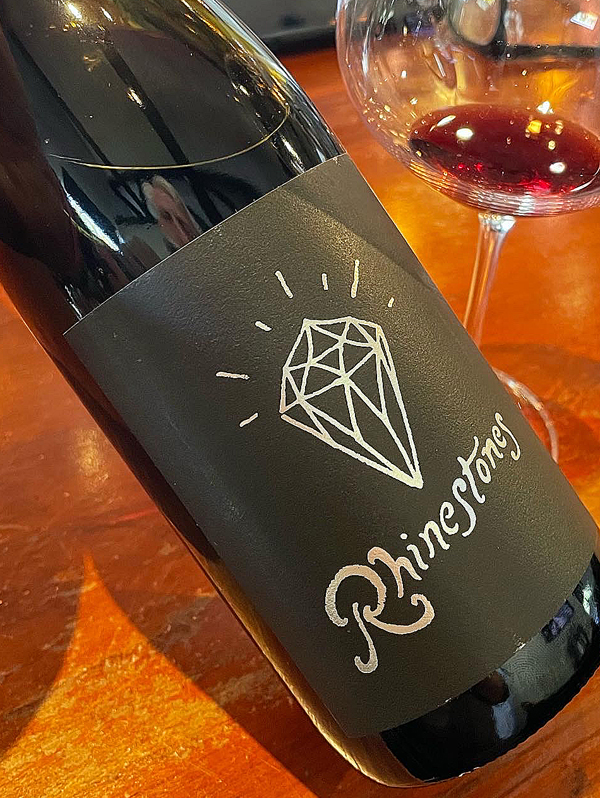
2020 Bow & Arrow, Rhinestones, Pinot Noir/Gamay, Johan Vineyard, Willamette Valley, Oregon.
Winemaker Scott Franks Bow & Arrow’s Rhinestones is an all natural and organic blend of Pinot Noir and Gamay Noir coming from the Johan Vineyard, a biodynamically farmed site in the Willamette Valley and fermented with lots of crunchy whole cluster, making for a darkly ripe, edgy and spicy wine, that took its inspiration from the Loire Valley’s Cheverny region. This vintage really leans on the stemmy (bitter) side of things and really put a bite into the medium bodied palate, which means this wine needs a pretty hearty meal and protein heavy dishes to smooth out the bitter elements, but still makes for fun wine with black cherry, plum and earthy berry fruits at its core along with bright peppery notes, a touch of leather and porporri florals. Over the years I’ve really loved this bottling from Portland’s Bow & Arrow, it usually is close to 60% Pinot and 40% Gamay in the blend, though exact percentages changes year to year depending on what the vintage gives and this dark garnet/ruby hued wine always has a raw and rustic character as this 2020 version shows intensely. Most all of Scott’s red wines showcase a more restrained personality and a savory style that is less fruity than you’d expect with an energetic high acidity, as this vintage of Rhinestones clearly displays in the glass.
The Bow & Arrow Rhinestones, is as Frank notes, a blend, as mentioned above, that is solely determined by nature and the vintage, with the grapes brought into the winery cold and freshly picked, using, as noted, the whole bunches and full stem inclusion with an all native yeast fermentation. Frank also employed a primary fermentation and a partial carbonic maceration, then the blend was then aged in a mixture of concrete and old barriques. This wine maybe a signature effort at the Bow & Arrow and according to Frank, this Rhinestones best communicates what Bow & Arrow is all about, which is transparency and authentic terroir. The Johan Vineyard, a certified biodynamic site in Rickreall area of the Willamette Valley, is largest source of fruit for Bow & Arrow, as it was for this wine, it is farmed by Dag Sundby and Dan Rinke and is set on Helvatia and Santiam soils which were formed by glaciolacustrine deposits over silty loam(s) and clayey alluvium. The Loire Valley provided lots of inspiration for these Bow & Arrow wines, with this one, along with their Air Guitar, an Anjou themed red blend of Cabernet Franc and Cabernet Sauvignon as well as their set of Sauvignon Blancs and the Johan Vineyard Melon de Bourgogne, all of which I suggest checking out if given the chance. Bow & Arrow, the urban Portland micro winery, is committed to producing hand made artisan, fun, eccentric and delicious wines with a nod to the old world and with a modern twist, and even better is they are incredibly well priced and guilty free!
($24 Est.) 88 Points, grapelive
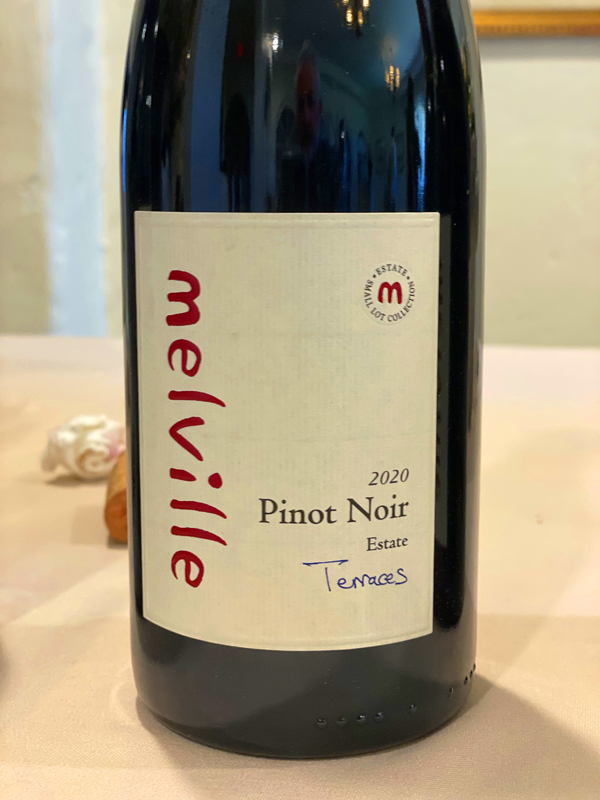
2020 Melville Winery, Pinot Noir, Terraces, Sta. Rita Hills.
One of real bright spots of the 2020 vintage has to be the estate bottlings from Chad Melville, especially the Block M and this Terraces Pinot Noir, which is wonderfully ripe and exceptionally well balanced with beautifully unfolding layers of black raspberry, cherry, plum and pomegranate fruits, all nicely accented by sweet florals, brambly spices, a touch of wood vanilla, mineral and Mission fig. This is serious stuff and utterly delicious Pinot that that packs pleasing concentration and supple tannin on the medium/full palate, but has lively acidity and structure, that should really serve it well for many many years to come. Melville explains that, the Terraces block, which sits on a steep terraced hillside, hence the name, with each individual row here getting a direct hit of cold air from the Pacific Ocean, that makes this 4.9 acre parcel distinct and intense. With air and time in the glass this dark ruby Terraces Pinot really turns on the charm and opulence adding a fine silkiness, length and an extra dimension of flavors with cranberry, blueberry, cinnamon, a hint of earth and candied orange rind floating in the background.
Melville really nailed these 2020 Pinots and this Terraces is stunning stuff that saw a 60% whole-cluster fermentation and a lengthy extraction and maceration with a gentle handling of the grapes, which were hand tended and harvested, after which the wine was pressed to neutral French oak barrels, with some of the barriques being close to fifteen years old, where it rested for 18 months before bottling. The Terraces block, that was planted in 1997, is set on clay-rich loam and calcareous shale soils at Melville’s Sta. Rita Hills estate that is in close proximity to the ocean and has a unique mix of Pinot clones, including Swan, Mount Eden, 115, 667 and 777, all of which plays roles in this wine’s complexity, grip and impact. That said there is generous nature to this vintage that makes it incredibly compelling bottle of wine, it thrills the senses and is wonderful with a full meal. I’ve long been a fan of these Melville wines and it is good to see these latest releases live up to and or exceed my expectations, with the regular estate Syrah being a huge favorite, along with their mentioned Block M Pinot, which I recently reviewed, impressing me greatly, as does this latest Terraces. I this selection of Melville’s collection are some of their best efforts to date and I highly recommend not missing them.
($70 Est.) 95 Points, grapelive
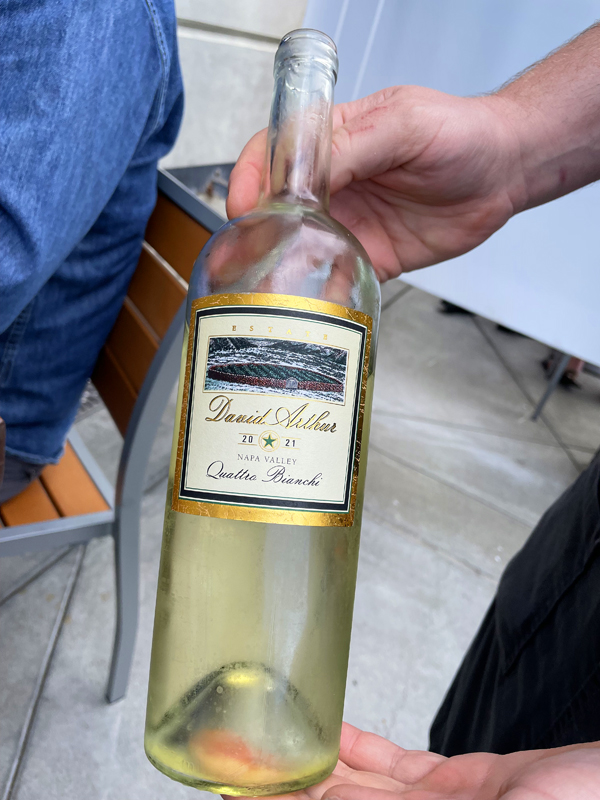
2021 David Arthur, Quattro Bianco, Estate White Blend, Napa Valley.
As a fan of this winery for more than twenty years now, I was intrigued to try this new wine from David Arthur, the Quattro Bianco Estate Italian inspired White Blend, which as the name suggests is a cuvée made with four Italian varietals, 42% Ribolla Gialla, 22% Fiano, 20% Arneis, along with the ultra rare 16% Coda di Volpe, also known as Pallagrello, which is an ancient white Italian wine grape variety that has been historically grown in the Campania region, mostly around the town of Naples. Crisply focused and mineral driven the Quattro Bianco is bright and refreshing with layers of citrus, tart apple and white peach fruits, along with wet stones, herbs, saline and lemon peel. This is an interesting collection of grapes originally from both the the North and South of Italy, making for a wine that could almost only could come from California, it’s a wine that shows lovely restraint that goes great with seafood and lighter cuisine. I had this at Napa’s famed Morimoto and with a range of dishes that threw a lot of flavors at it, but it stayed vibrant, dry and delicious throughout the meal.
David Arthur, best know as a top Cabernet Sauvignon producer with their signature wine, the Elevation 1147 Cabernet being one of Napa Valley’s most notable trophy wines, does a few whites too, including their Chardonnay, and this Quattro Bianco, plus a dry Rosé, made uniquely from 47% Zinfandel, 26% Grenache, 25% Sangiovese and 2% Nebbiolo. David Arthur has long done Italian varietals at their Napa Estate with their Sangiovese being a long time staple in their lineup, but this wine is all new (to you) as is their 100% Nebbiolo bottling. For this wine, of which only about 400 cases were made, the winemaking team at David Arthur went with with a whole cluster pressing and 90% stainless steel fermenting and aging, with just 10% done in French oak to add a touch of texture without taking away from this wine’s lively nature and transparency. We have seen a huge rise in quality of Cal Itals, California wines made from Italian varietals in recent years and this one is has a lot to admire about it, though I was less thrilled with the price, which if I’m honest kinda took away from the enjoyment.
($65 Est.) 91 Points, grapelive
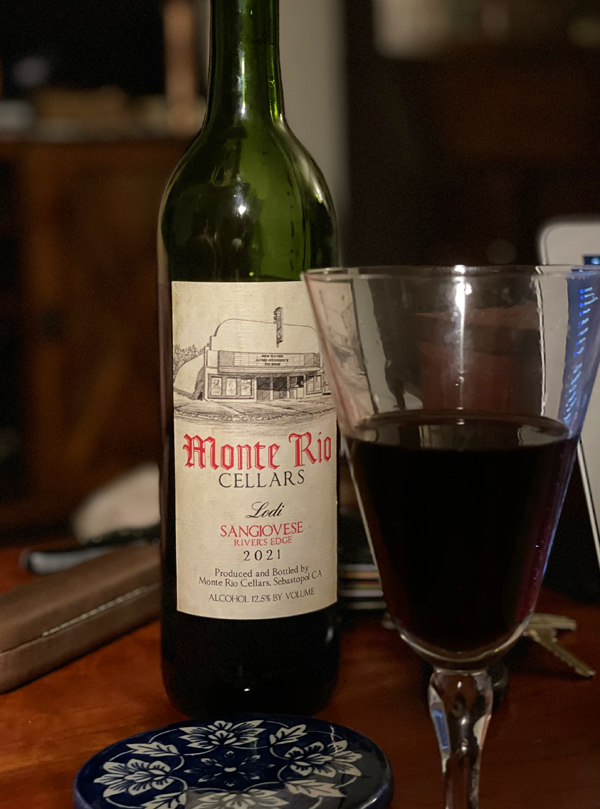
2021 Monte Rio Cellars, Sangiovese, River’s Edge Vineyard, Lodi, California.
The wonderfully rustic and authentic dark garnet hued River’s Edge Sangiovese from Monte Rio Cellars is a throwback wine that will remind you of old California and earlier even generations of Chianti, wines that were tasty, but not polished or overly fruity with a savory kick and nice acidity. This wine has brambly red berries, plum, strawberry and tangy red currant fruits, along with a touch of bite from the stems, minty herbs, cedar, anise and subtle floral dimension in a medium bodied palate that has some raw tannin and energy, along with a welcome earthy feel that makes it really good with spicy tomato sauce pasta dishes, hard pecorino cheese and or simple meat dishes. I have been really enjoying my Monte Rio wines which I have been buying myself for the last three or so vintages with regularity and this Sangiovese joins their Mission grape bottling as one of my favorites here.
Just 400 cases were made of this Lodi Sangiovese that came from 40 year old organic vines that are grown using full biodynamic methods, which are set on the region’s sandy soils and the wine was traditionally harvested, with the winery saying that the fruit and went directly to press before it was fermented and macerated in a combination of concrete tank and eggs. After the Sangiovese was fermented it was then aged about 10 months in very old neutral French oak barrels to mature, all to promote the purity and unique expression of the Sangiovese grapes, which I found to be a very successful effort, especially with the bright fresh intensity of the vintage. Monte Rio Cellars, established in 2018, is led by Sommelier Patrick Cappiello and overseen by famed syrah guru Pax Mahle, is focused on old historic vineyards in mainly the Lodi region and is known for their natural style Zinfandel, Petite Sirah and heritage varietals. This Sangiovese is a welcome addition to the lineup, which I highly recommend for the non pretense style and value they deliver.
($23 ESt.) 90 Points, grapelive
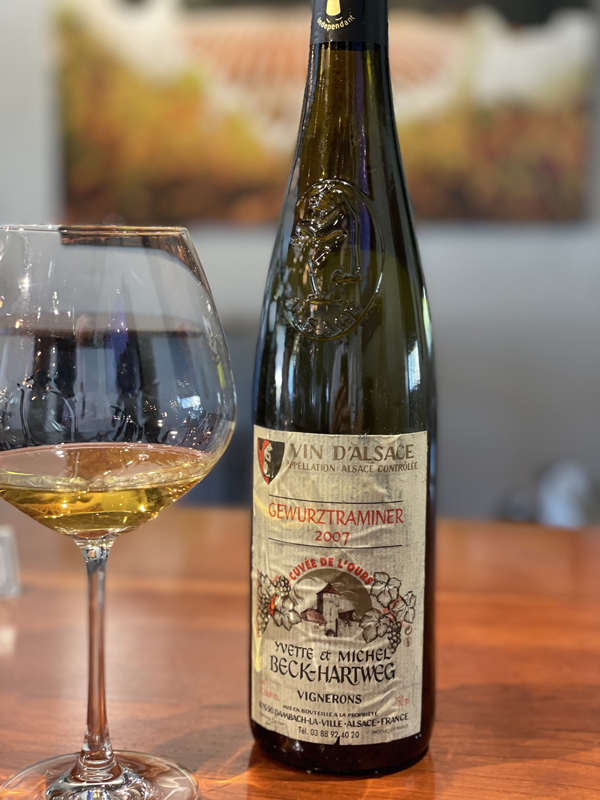
2007 Domaine Yvette et Michel Beck-Hartweg, Gewurztraminer, Cuvée de L’Ours, Vin d’Alsace, France.
This exotic, luxuriously fruit forward and well aged Gewurztraminer by Beck-Hartweg almost tastes like a Vin Tradive, such is the lush concentration and sweetness on the palate, this wine with its residual sugar is best served with the right pairing, but is is absolutely drinking sensationally right now with the beginnings of tertiary elements coming alive and adding complexity, balancing the wine’s overt nature. While the fresh fruits have turned more preserved and baked with silky layers of apple, peach and figs leading the way along with candied orange, lychee and crystallized ginger, as well as hints of rosewater and lemon curd. The sweetness, instead of limiting your food pairing choice, actually opens your mind to unique combinations and the grape’s less acid profile, compared to Riesling makes it a lovely choice for heartier dishes and full meals like a full Thanksgiving spread and or honey baked ham, or pate and cheese starters just to name a few. The extra maturity here adds a truffle, autumn leaves and lingering dried pineapple character that makes this Gewurztraminer very compelling, and the supple textures are pleasing, this is a fine example of the varietal that sometimes gets overlooked and is presented in an unapologetic sweet style that has largely gone out of fashion, but still very much should not.
The Beck-Hartweg estate, all organic and biodynamic, is a domaine noted for their small lot and handcrafted wines with focus on generous ripeness and concentration, as this beautiful and mature Gewurztraminer shows, now run by Florian and Mathilde Beck-Hartweg, taking over from their elders Yvette and Michel, who themselves had really brought this property into the modern era and upped the quality here. As mentioned in recent review, the Beck-Hartweg winery is one of the historic domaines of the Alsace region that goes back to the early 1500s, and has become an underground success in the natural wine world in recent years, though almost unheard of in California, except by a few Alsace enthusiasts, and I haven’t seen many bottles over the years, which is shame considering just how good this bottle is. Located in the medieval town of in Dambach-la-Ville, Beck-Hartweg has a solid collection of vineyards in some important crus and unique terroirs with a continental climate, that is sheltered from rain by the Vosges foothills. The underpinning of their 8 hectares of vines is mainly granitic sand on pink granite bedrock, but also there is some area with sandstone and volcanic soils, which all adds to the perfect conditions for ripe concentration and complexity of the wines made here. Though this wine was made before they took over, Florian and Mathilde, who are the 16th generation to make the wines here, are really exciting and youthful talents, they have a huge respect for their land and work in a holistic way in the vineyards and use a gentle hand in the cellar. This is a producer I am really admiring and one I highly recommend looking for, especially their traditional examples of Riesling and Pinot Gris, as well their Gewurz offerings.
($30 Est.) 93 Points, grapelive
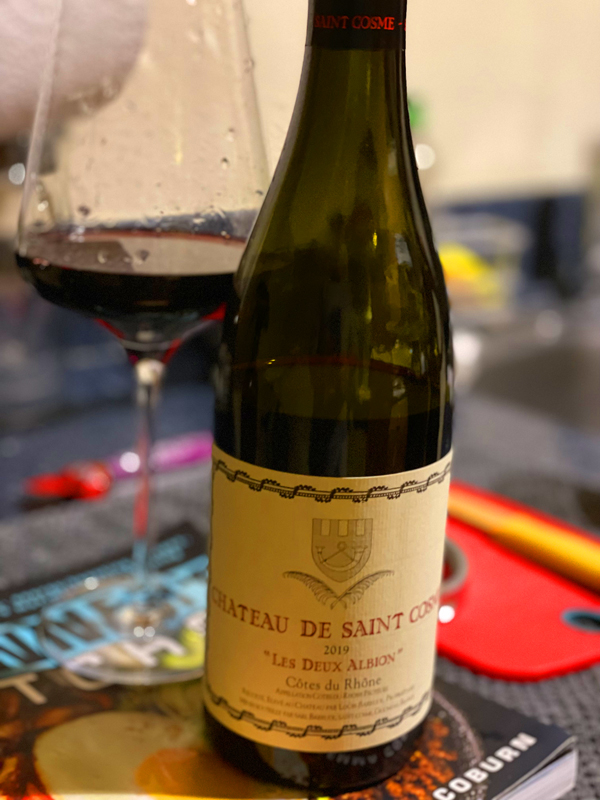
2019 Chateau de Saint Cosme, Côtes-du-Rhône “Les Deux Albion” Rhone Red, France.
The incredible and ultra affordable Chateau grown bottling of Côtes-du-Rhône, Les Deux Albion, is a classic full bodied and meaty Grenache, Syrah and Mourvèdre blend from Louis Barroul at the famous Chteau de Saint Cosme, best known for their historically outstanding Gigondas wines. This vintage is exceptional and is very much inline with recent versions with a light violet perfume, crushed dark berries, earth and spices, along with some Syrah and Mourvèdre meaty notes as well as a rich and opulent mouth feel, its full bodied palate rivals much more expensive Rhone offerings and lacks for nothing. The flavors unfold in dense layers of boysenberry, pomegranate, damson plum, blueberry compote and black cherry fruits, as well as fine accents of tar, licorice, sticky lavender and raw peppercorns. This wine comes from Côtes-du-Rhône area grapes grown not far away from this Gigondas property’s picturesque hillside vines, this ancient estate is still is overlooked by its centuries old Chapel of Saint Cosme, where it got its current name, and is located in the shadow of the Dentelles near Gigondas and Vinsobres. This higher elevation zone has a higher percentage of Syrah, as found here, and it thrives in the cooler parts of Gigondas, and, especially well, in Vinsobres, which recently gained a full AOC, and where Saint Cosme has their new Chateau de Rouanne site, it is a property that is now making wines almost the equal to the well know more southern zones. The 2019 Côtes-du-Rhône Les Deux Albion is a blend of Syrah, Grenache, Carignan, Mourvèdre, and Clairette (the white grape) from the three Côtes-du-Rhône-Villages communes, which are Plan de Dieu, Saint Maurice, and Cairanne.
The purple/garnet hued Chateau de Saint Cosme Côtes-du-Rhône Rouge Les Deux Albion was made using 100% whole cluster and native yeast in its fermentation, with the Grenache, Syrah, Mourvèdre and the tiny amounts of other grapes being all co-fermented together in a combination of cement and conical wood vats, with this wine seeing a lengthy maceration. The wine was then aged 18 months in the same combination of vessels, both the well used wood and the concrete tanks impart minimal influence on the wine’s personality with the terroir being the main factor in this Les Deux Albion’s flavor profile. The Côtes du Rhône vines are set on the classic hardened clay soils that also include ancient alluvium, limestone marl and a scattering of stony pebbles, which drain well and force the roots deep to get nutrients and moisture, helping provide complexity and concentration. The Chateau de Saint Cosme has been a notable wine producing site since Roman times, with Barruol’s estate set on the original Gallo-Roman villa and ruins that still has ancient vats cut into the limestone cellars and the Barroul family has owned and made wine here since 1490. As I’ve noted and as is well reported, Louis Barruol, one of the Rhône’s greatest winemakers, has a style that beautifully combines the region’s typical ripeness with a balancing freshness, no mean feat in the hot climate of the southern Rhône Valley. Barruol says that one of the keys to his wine’s vitality is the use of stems for most of the red wines, explaining that the stems absorb alcohol during fermentation process and help retain acidity and tannin, which also makes them nicely age worthy as well. For those seeking Rhône hedonism on a budget will be well served by enjoying this incredible wine, which is one of my personal favorites, it’s one I highly recommend to friends and stock up on myself!
($25 Est.) 94 Points, grapelive
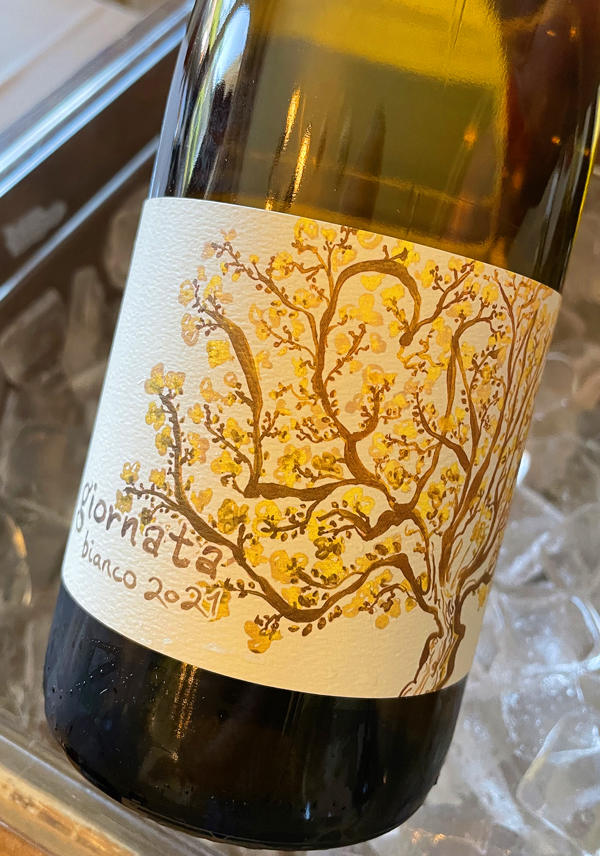
2021 Giornata, Il Campo, Bianco, Paso Robles.
The wines at Giornata have really got my attention lately, as reader here at Grapelive.com with have noticed, and this 2021 Il Campo Bianco, made from Falanghina 39%, Arneis 29%, Pinot Grigio 25% and Vermentino 7%, is beautifully made and refreshing unique blended white wine which successfully marries these varietals that originally come from Italy’s North and South and makes for a fun no pretense effort to enjoy anytime. This Il Campo Bianco delivers plenty of vibrant zesty flavors with preserved lemon, white peach and crisp apple fruits leading the way on this medium bodied palate along with delicate florals, wet stone, wild herbs, a faint hint of lees, with some almond brioche, and mineral tones. I’ve been greatly impressed with Giornata’s latest collection of wines, including their signature red wines, that includes their Aglianico, Nebbiolo and Barbera single varietal bottlings, as well as their solid set of white wines, including this one and the amphora raised, skin contact, Falanghina, which I reviewed a few months back. This non oaky wine, sourced from various Paso sites, and which was new to me, is best enjoyed with lighter cuisine and is perfect with these warm late Summer days, it goes exceptionally well with grilled fish, especially sardines, and or linguine pasta and clams.
Giornata, owned by Brian and Stephanie Terrizzi, and was inspired by the love for Italian wine, which started many years ago and stems from Brian’s lifelong love of Italian food and fascination with his Italian heritage, which is tied to Sicily . After working for respected Zinfandel producer Rosenblum Cellars, this young winemaker traveled to Italy to work with the famous Paolo DeMarchi at Isole e Olena in Tuscany, and through Brian’s experience with this Tuscany winery, he gained an insight into Italian winemaking that has served him well with his Giornata lineup that takes it cues from both the North and South of Italy. Terrizzi notes that they pick their grapes at lower sugar levels, bit earlier than most, and handle their wines gently in the cellar, with traditional hand crafted methods, as he puts it, thus resulting in wines that belong on the Italian dinner table, with his offerings showing both ample acidity and tannin. Traveling to Italy on a regular basis, the Terrizzi’s continue to evolve as producers, researching Italian winemaking and viticultural methods to make the most authentic wines as possible. While Brian concentrates his time in the cellar, Stephanie Terrizzi’s mission is to focus her talents on vineyard management, where she has really shined in sustainably growing grapes and providing her husband with the healthiest of fruit to push up the quality in these attractive and delicious Giornata wines.
($23 Est.) 91 Points, grapelive
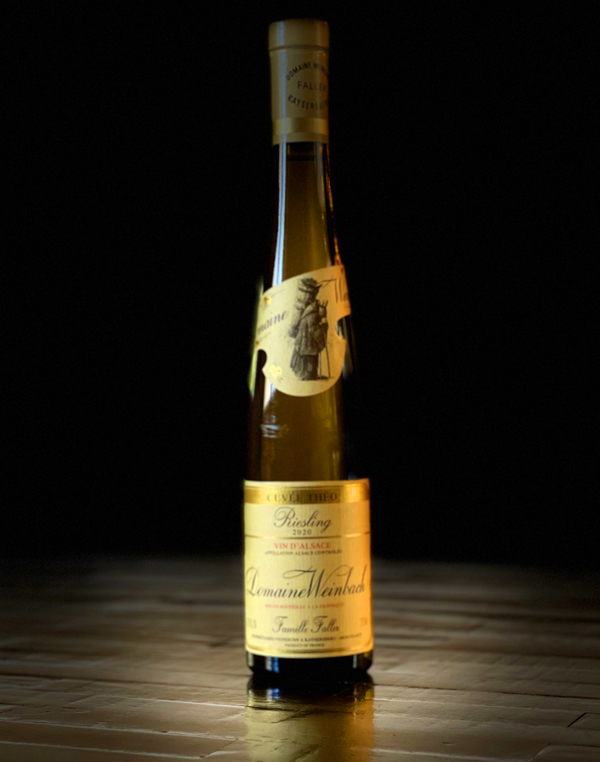
2020 Domaine Weinbach, Riesling, Cuvée Theo, Vin d’Alsace, France.
Absolutely crystalline and pure the 2020 Cuvée Theo Riesling by Domaine Weinbach is heavenly light, cool toned, and citrus laced on the dry palate with ultra crisp detailing and has a subtle tropical note, making it refreshing and very flexible with cuisine choices. Less dense than normal, but just as complex, this pale greenish gold Riesling is very elegant, especially for its youth and the grape’s notable natural acidity, this vintage delivers lime, pineapple, white peach and green apple fruits which are presented with a fine delicacy, mineral spice, herbal tea and stony elements. The inner energy here is more velvety than eye popping and this wine is proof that sometimes less is more and again the deft touch of Weinbach is excellent here and I admire the grace and poise of their wines and this wine doesn’t disappoint. Women and nature have always played a big part of the success at Weinbach, originally founded back in 1898 by the Faller family, which continues today. In recent years, Catherine Faller took over the leadership of the winery, made famous in a large part by her late mother Collette who brought the winery to the very top of wine world and her late sister Laurence, who was the winemaker for many years before sadly passing away at the young age of 41, and has kept the estate in the elite of Alsace wineries, along with her sons Eddy and Théo, who will lead the next generation at this historic domaine.
The grapes for Weinbach’s Rieslings are all organic and or biodynamic, they are all hand picked from parcels in the monopole Clos des Capucins vineyard, which is located in the Valley of Kaysersberg, and home to this famous Alsace estate, with sandy silt soils on granite pebbles that help give these wines their exceptional mineral focus. The grapes growing here in this terroir, which is a bit warmer and sees lots of sun, ripen a lot earlier, which the winery notes, produces wines with complex aromatics and deep concentration, though this Cuvée Theo shows restraint and lovely balance. This wine saw a gentle whole cluster press in a Champagne style pneumatic press, then a spontaneous fermentation with indigenous yeasts, that the Faller’s believe add an element of the terroir, enhancing the depth and complexity in the wine, in large old oak vats. The Weinbach Cuvée Theo Riesling sees close to 10 months on the lees in the large neutral wood barrels. The Weinbach offerings, like this one, are all vegan bottlings and have no additives except for a small dose of SO2 before blending and bottling, everything here is done to allow transparency and to promote the terroir influences. This understated 2020, with its pretty aromatics, was fermented completely bone dry and finished at 13.1% natural alcohol, which highlights the vintage and place very nicely and this wine performed brilliantly with a range of foods and flavors, but goes well with sea foods, like crab and or poultry in particular. These Weinbach wines, some of my favorite Alsatian stuff, are always impeccably made and joyful in the glass.
($40 Est.) 91 Points, grapelive
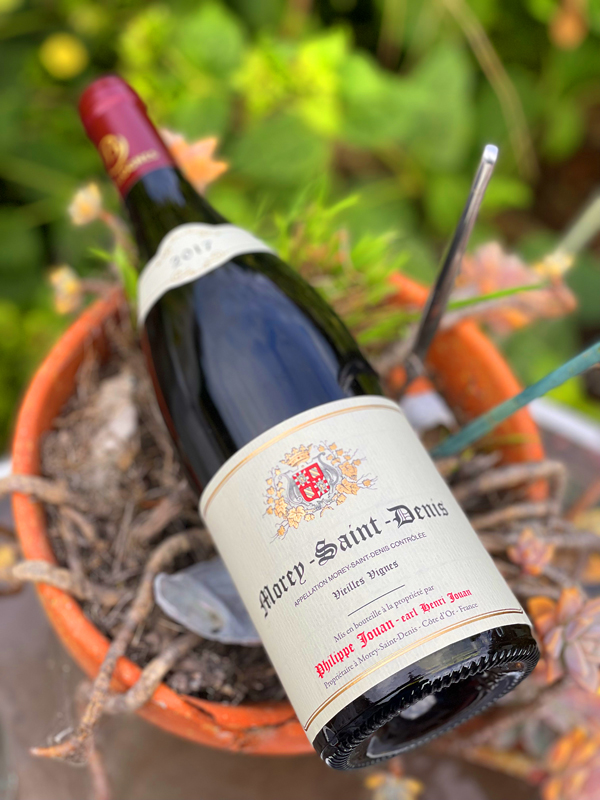
2017 Domaine Philippe Jouan, Morey-Saint-Denis, Vieilles Vignes, Red Burgundy, Côte de Nuits, France.
The classically pure, raw and seductive 2017 Old Vine Morey-Saint-Denis by Philippe Jouan is exactly what the doctor ordered for small family celebration with deep earthy dark berry, cherry and plum fruits, accented nicely by an array of spices, black tea, floral notes, burnt orange, a touch of leather, smoky mineral and soft wood shadings, making for an outstanding Pinot Noir experience, showcasing old world charm, delicacy and elegance. I took a flyer on this vintage, which is not overly admired and with a domaine I had not had, though I had heard nice things about, and I was richly rewarded and this wine way over delivered for the price I paid, which was just over fifty bucks on pre-sale. Still firm and tight when I pulled the cork, the 2017 Vieilles Vignes Morey-St.-Denis from Jouan started a bit muted and with a whiff of reduction, but once open it blossomed wonderfully and was beautifully seamless with its vinous medium bodied palate exceeding my expectations and the aromatics really coming alive with beautiful perfumed crushed flowers along with some savory elements that added to the complexity to this fine effort, I only wish I had bought a case! I am a fan of this village and the terroir influences in these basic Morey-Saint-Denis AOC wines which can rival much more costly Premier Crus in places like Gevry-Chambertin and or Vosne-Romanne, and this wine didn’t disappoint.
Philippe, who took over from his father Henri, has been in charge of the domaine since 2004 and has turned this under the radar winery into something of an enthusiasts cult label, since the wines here are way under priced confiding the quality in the glass, as I discovered here with his Old Vine Morey-St-Denis. The techniques in the cellar, from what I understand, are little changed since the domaine started, Philippe goes with 100% de-stemmed (all sustainably grown) grapes, gentle extractions, cool fermentation(s) and employs a minimal amount of new wood across his collection of small lot bottlings. Jouan’s wines are not as inexpensive as they were, with prices now rising 10 to 20% with each of the last few vintages releases, mainly it is the problem of less wine available due to tighter yields and secondary, a much bigger demand for them, though still excellent value for what is delivered to the glass. I have been told that Jouan’s Passetoutgrain (Pinot Noir/Gamay) and the Coteaux Bourguignons (100% Pinot Noir) are the screaming deals and I was able to find the Coteaux Bourguignons, which I find report on in due course, but I can say at under $30, it should be on your must try list, as should this Morey-St.-Denis bottling, that comes 40 plus year old vines set on a mix of red-brown clay with small rocks and limestone soils, part of the terroir that serves it so well, even at the near hundred dollar per bottle price the 2019 is at, especially since the vintage is wildly hyped as Pinot lovers year in Burgundy!
($75 Est.) 93 Points, grapelive
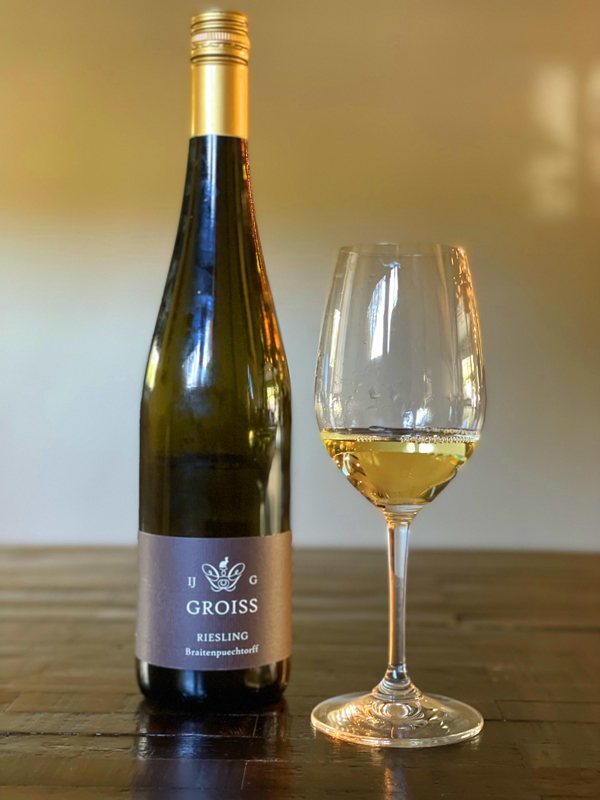
2017 Weingut Ingrid Groiss, Riesling, Braitenpuechtorff, Niederosterreich, Weinviertel DAC, Austria.
Ingrid Groiss, who has established herself as one of Austria’s newest stars, is based North of Vienna, in the Weinviertel region, which is a historic region that is really seeing a modern revival with some thrilling and unique wines, like this 2017 dry style Braitenpuechtorff Riesling that flows with crystalline purity across the medium bodied palate. Groiss’ hometown of Breitenwaida is host to an impressive terroir with loess, sand and gravel soils and there’s plenty transmitted into her wines, as is the case here with a fine loamy stony quality and mineral tones to go with the wine’s lightness and crisp nature. The mouth shows lime, green apple, white peach and tart pomelo fruits along with bitter almond, chamomile and white peppery spices, everything is precise and sharply focused here, but the Groiss Riesling has gained a seamless roundness and nobility that makes it just that much more compelling. Ingrid has been in charge of her family’s vines and making her own wines since 2012, and quickly became a star in the Weinviertel DAC region, the oldest in Austria, putting out a stellar series wines that are now considered among the best in the country with an expressive terroir influence and a seductive raw transparency.
While I love this Riesling, as well as Ingrid’s Gruner Veltliner, her signature wine is her amazing Gemischter Satz field blend white made from Chardonnay, Frühroter Veltliner, Grauburgunder, Grauer Vöslauer, Grüner Veltliner, Hietl Rote, Müller Thurgau, Neuberger, Pinot Blanc, Riesling, Roter Veltliner, Rotgipfler, Sämling, Silberweisse, Welchriesling, Wiesse Vöslauer, Zierfandler, all from a single parcel planted by her grandmother in Braitenpuechtorff, north of Vienna in Austria’s Weinviertel region not far from the Czech border. Made by the hands of this talented young winemaker, these 50 year old vines produce one of the world’s great traditional crisply focused and bone dry white wines, totally unique and totally terroir driven with depth and lively mineral character. The vibrant pale golden hued Gemischter Satz, with 17 different varietals co-fermented, is one of my favorites in the Groiss lineup and I wish I could find it every vintage, but when I can’t I make do with her single varietal offerings, especially this bright and acid driven Riesling. For her Riesling, the grapes were gently pressed without the stems, and saw12 hours of maceration on skins, all fermented with vineyard native yeasts in stainless steel, then it was aged on full lees for 7 months before bottling. I highly recommend these Grioss wines and especially this one, which is drinking extremely well now. If you get a chance to get the mentioned Groiss Gemischter Satz, the absolutely delicious co-fermented field blend, don’t pass it up!
($30 Est.) 92 Points, grapelive
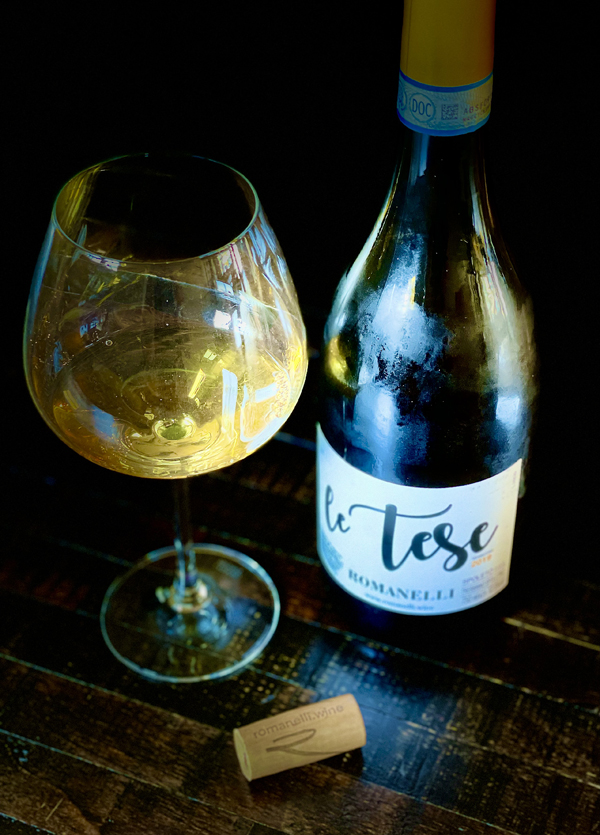
2019 Romanelli, Trebbiano Spoletino “Le Tese” Spoleto DOC, Umbria, Italy.
While known mainly for his famous Sagrantino di Montefalco, Umbrian natural winemaker, Devis Romanelli also does one of Italy’s most intriguing orange wines, which is made from the local Trebbiano grape, this Le Tese skin contact white is amazing for its wild range of flavors and complexity, rivaling powerful red wines for structure and mouth feel, with his 2019 version being a fascinating and intense wine. It’s hard to imagine, but the 2019 Le Tese unfolds on the gripping medium bodied palate with a savory array of layers including preserved lemons, dried apricots, bacon, salted licorice, wet stones and verbena, I honestly think if tasted without seeing the color, you’d almost think you were drinking a syrah! But once fully open you get some racy acidity and orange blossom, along with a rich expansion, though don’t expect creamy rounded fruit, this is brisk, almost tannic and bone dry stuff that is best enjoyed with cheeses, certainly fish dishes and or Middle Eastern cuisine. The Romanelli wines estate is part of the family’s Romanelli Nature project, part sustainable farming and part eco-tourism, which the winery says, rejects chemical fertilizers, insecticides, and herbicides, striving to maintain a balance of the ecosystem, including the installation of bird boxes to promote natural pest control. The family wishes to share their passion and everyday experiences with the land, the vines, the local people and the microclimates of their property, which they hope will bring a greater understanding of their range of wines, that includes the mentioned Sagrantino bottlings, this orange wine, a Montefalco Rosso, a Grechetto Bianco, plus a Passito dessert wine and of this historic, though lesser known region itself.
The Romanelli family estate is located in the hills of Montefalco, in the heart of Umbria, situated in an area that is surrounded by both vineyards and olive groves, which family has cared for and preserved what nature has generously provided for them for three generations now, with Devis leading the wines to new heights through innovation, natural and ancient traditional methods. There is a holistic and all organic focus at Romanelli, where they believe that true quality is only obtained in nature from a set of healthy and balanced vines, that will provide perfectly ripened grapes. They use organic fertilizer, grass cover between the rows, careful management of the soils and foliage (canopy), as well as having good exposures of the grapes to the sun and exceptionally low yields for concentration and purity. The Le Tese, made from 100% Trebbiano Spoletino, an ancient Umbrian variety, which is late ripening and has loads of acid, that maybe related to or be Ugni Blanc, is vinified with a long maceration on the skins and then left to mature for about 9 months in steel tanks before bottling, after which it is rested a further 9 months in the bottle. The Le Tese comes from a single vineyard site set on clay based soils where interestingly some of the vines actually grow in concert with trees, where they climb higher up and receive good air flow in this flatter section of the estate, which is between 200 and 300 meters about sea level. The maceration on the skins for the deeply golden and slightly smoky Le Tese lasts close to 50 days, which provides the firm extract and savory expression in this unique wine, which the winery suggests, serving with vegetarian starters, black truffle dishes and even eggs. While not an easy find, this is a must for orange wine fans, and I recommend also trying the reds here, especially the award winning Medeo Montefalco Sagrantino.
($40 Est.) 93 Points, grapelive
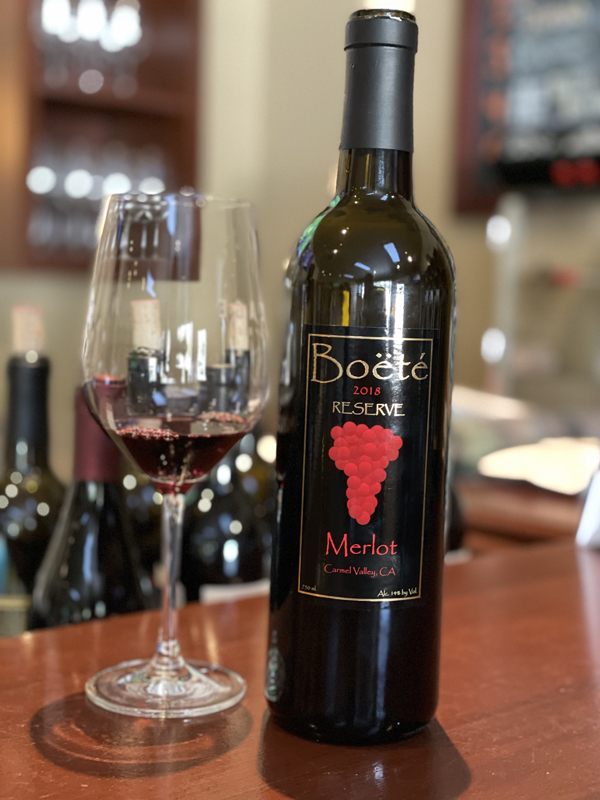
2018 Boëté, Merlot, Reserve, Saunders Estate Vineyard, Carmel Valley AVA, Monterey County.
The 2018 Reserve Merlot is first time the Saunders family have produced a solo Merlot effort from their tiny hillside vineyard in Carmel Valley and it’s a deeply purple/garnet colored wine with a full bodied and satiny palate that pleases the senses. This Boëté Reserve Merlot, only 70 cases made, is showing extremely well right now, with just a hint of rusticity, but with loads of pretty fruit, nice French oak notes and length. As long time fan of the Saunders, who’s hillside vines, planted in 1997, are wonderfully situated high above the Carmel River, where they get plenty of warm sunshine, just about a mile or so past the Carmel Valley Village, this vintage is maybe the most elegant so far. There’s a lot to like here in the solidly structured Merlot Reserve with its smooth textured layers of blackberry, black cherry, red currant and plum fruits, that are accented nicely by cedary sandalwood notes, stony loam, acacia florals, anise and mocha. This wine begs for robust cuisine and meaty dishes in particular, like prime rib, steaks and or leg of lamb.
John Saunders, who founded Boëté in the early 2000s, and his sons, Jesse (winemaker) and Dylan, continue to put out strong efforts here, with the winery specializing in 100% estate-grown Carmel Valley Cabernet Sauvignon, Cabernet Franc, a big local favorite and Merlot, as found here in this wine, plus they do a lovely claret style Bordeaux blend called the Cheval Rouge. The winery is focused on ripeness and the wines generously rich, showing opulent fruit density and mouth feel, as this lush Merlot showcases. The Saunders have tight collection of offerings and I was impressed with the full lineup I recently tried, these included a few of my favorites, their 2015 Reserve Cabernet Sauvignon, which has aged nicely, the delicious 2018 Cab Franc and the new Merlot, which I am featuring here. The winemaking is simple and traditional with a priority to allow the vines to speak for themselves with 100% hand picked and de-stemmed grapes that are carefully selected and open top fermented and see a long elevage, between 18 and 24 months, in mostly used French oak barrels to promote a raw transparency in the wines. Boëté, a micro winery is mainly a direct to consumer label selling mostly to their mailing list and on the website. It is a good time to check out the latest releases here at Boëté, especially these tasty 2018 wines.
($45 Est.) 92 Points, grapelive
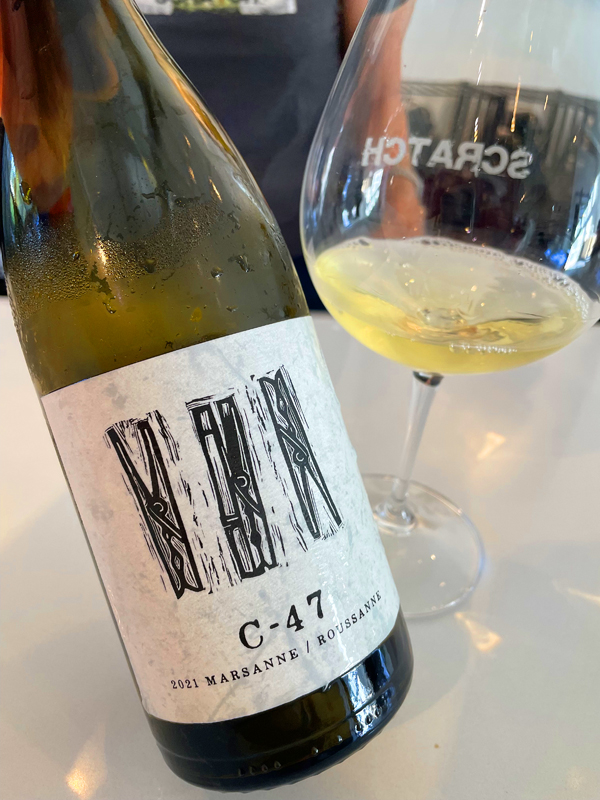
2021 Scratch Wines – C-47, Marsanne/Roussanne, Monterey County.
Sabrine Rodems, head winemaker at Monterey’s Wrath, has made a brand new series of blended wines, which will be a part of her personal Scratch Wines label with this beautiful C-47 white Rhone blend being the first to be revealed. Only about 60 cases were made of this 50-50 cuvée of Marsanne and Roussanne, done in a classic Northern Rhone style, which, while very expressive and lush has some old world charm that is close to what you’d find from Saint-Joseph Blanc and or Hermitage Blanc, it reminds me of Yves Cuilleron’s “Lyseras” Saint-Joseph, one of my favorites. The C-47 starts with delicate florals, liquid mineral, marzipan, citrus and fleshy/peachy stone fruits before revealing a dense full bodied palate with a creamy layering of apple, apricot, lemon curd, melon and golden fig along with bitter almonds, a touch of vanilla and wet rocks. Rodem’s newest wine delivers youthful vibrancy, but also follows Roussanne’s classic character with an oily/waxy quality, phenolic extract and as it opens it gains depth, adding honeycomb, Asian pear, tropical essences and butterscotch notes. People who are fans of richer styles white Rhone wines, will absolutely love this wine, as well as Chardonnay drinkers that enjoy the luxurious mouth feel of barrel fermented versions. Rodem’s C-47 Marsanne/Roussanne shows a deft touch, focusing on transparency and using mostly well used oak as well to promote purity and energy over weight and ripeness.
The main Boekenoogen Vineyard, which doesn’t get as much attention as some as its neighbors, was established in 1997 when the late John Boekenoogen took his cattle ranch, that had been in the family for five generations, and planted a vineyard, which is in the prime zone of the Santa Lucia Highlands. There are a wide variety of grapes here, but of course Pinot Noir is the main varietal and thrives in the cool marine climate which sees the cool Pacific breezes and is set on well draining sandy loams, though Rhone grapes have also done extremely well here, especially Syrah and Boekenoogen has taken advantage of these perfect conditions. Later in 2005, Boekenoogen planted and developed a new site, deep into Carmel Valley, which also shows some real potential and Sabrine Rodems has taken advantage of this Paloma Creek Vineyard to produce her upcoming release of C-47 white. Now run and managed by Garrett Boekenoogen, this Carmel Valley AVA site is wines like this one suggest it is full-filling its promise. Once a sleepy ranch, this Bell Ranch Vineyard has an interesting selection of grapes, including these white Rhone varietals, along with Viognier, Syrah, Petite Sirah, Cabernet Sauvignon, and even some Zinfandel. Set on a mix of sandy loams, gravels, alluvial deposits and California shales, Carmel Valley is capable of intriguing complexity and balance with its warmer days and cold nights, which helps retain zesty acidity, as Sabrine’s C-47 white shows. Thanks to Sabrine for the sneak peek of this delicious wine and I am excited to see her next offerings.
($69 Est.) 93 Points, grapelive
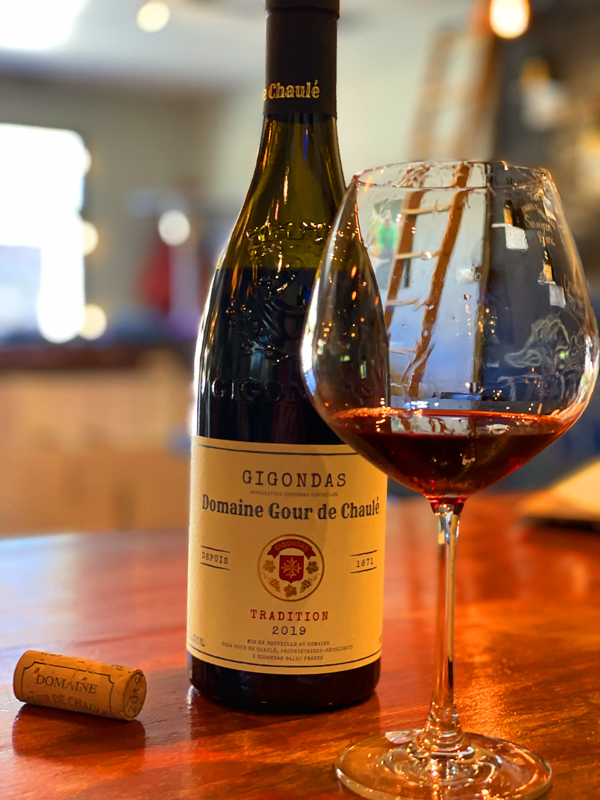
2019 Domaine Gour de Chaulé, Gigondas “Cuvée Tradition” Rhone Valley, France.
This vintage of Gour de Chaulé’s Cuvée Tradition Gigondas is still a firm and youthful wine with an underlying potential for greatness and while slightly subdued at the start, once open this Grenache based Rhone red really turns on the charm with a deep sense of fruit and savory elements with a complex array of blackberry, plum, pomegranate and strawberry fruits, along with chalky earth, anise, lavender and a dusting of peppery spices. Gigondas, set up in the Dentelles de Montmirail, is blessed with the sunny Mediterranean climate and mainly clay and limestones based soils, the wines here can be fresher and certainly less costly than Chateauneuf du Pape, with cooler nights and higher elevation influences. The most notable vines in the region give an extra level of vibrant intensity to these heady and full flavored Grenache led Rhone reds. The average age of the Grenache vines planted at Domaine de Gour de Chaule plots is now over 55 years old and Stéphanie Bonfils, the winemaker here, ferments using 100% whole cluster with full stems in classic cement cuves for both primary and malolactic (secondary) fermentation(s) before racked her Gigondas into used large foudres (oak casks) to mature, for an elevage of about 18 months, after which she bottles her finished cuvées unfined and unfiltered.
I have been following Domaine Gour de Chaulé faithfully since the 2015 vintage, loving these wines and an admirer of vigneron Stéphanie Bonfils, following her mom’s absolute love of Grenache, continues to craft Domaine de Gour de Chaule’s Gigondas with that focus with 85% of the vineyards planted to Grenache, with about 10% dedicated to Syrah and Mourvedre, along with a tiny amount to Cinsault. This historic estate was started in 1900, but was not selling their own wine until the early 1970’s and not a serious domaine until Bonfils the elder got things rolling in the 1980’s, but since then has made a significant impact joining the greats of the region with traditional and authentic wines, joining the classics likes of Saint-Damien, Saint-Cosme, du Cayron, Grapillon d’Or, Montirius, Montmirail, Château du Trignon and La Bouissiere. The 2019 feels taut, though densely packed and textured in the mouth, with the whole cluster having a certain punchiness, gaining earthy elements and while a boysenberry core emerges with fine ripe tannins and lively acidity that gives a sense of structure, holding the weight in check. This is a wine that has a serious impact, but never feels too heavy or dull on the palate, especially this vintage, it’s a beautiful old school Gigondas. Not as ripe or expressive as the last few years, this brooding version has a long and rewarding life ahead and I am glad I got more than a few bottles to be patient with, I believe it will blossom in another 3 to 5 years in bottle and go 15 to 20 easy!
($35 Est.) 94 Points, grapelive
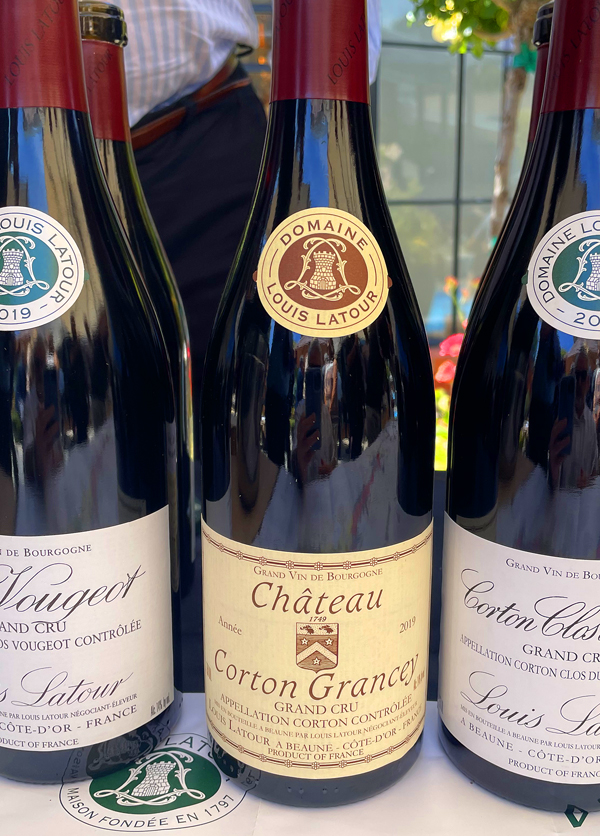
2019 Domaine Louis Latour, Corton-Grancey Grand Cru “Chateau Corton Grancey” Côte de Beaune, Red Burgundy, France.
Today’s wine of the day is a special tribute to Fabrice Latour, who it is reported has just sadly passed away, who was the dynamic leader of of his family’s iconic Maison Louis Latour, one of Burgundy’s most famous and successful wineries. To celebrate his life, I picked one of his winery’s favorite reds, the beautiful Chateau Corton Grancey, which I was lucky enough to sample earlier this Spring, along with a fabulous selection of Domaine Louis Latour’s 2019 vintage collection, with this wine, even though young, showing a real delicacy, pretty aromatics and a complex array of flavors that promise to blossom in the bottle over the next decade or so. This Grand Cru Corton-Grancey is a delicious rarity, and it should be said, a savvy buy for such a pedigreed vineyard, it shows an elegant profile and the vintage’s lighter frame with supple layers of black cherry, mulberry, red currant and dusty plum fruits, along with polished wood notes, mineral, orange tea, brambly spices, a touch of earth and lingering rose petal. There is an underlying firmness and energy that will serve this wine well as it ages, and while not a blockbuster in style or flashiness it does show excellent purity and its medium bodied palate is more appreciated for its balance, and its quiet seduction, rather that its ultimate impact. The family run firm of Louis Latour always produces a signature Corton-Charlemagne Grand Cru, as well, it is one of the most famous white wines of Burgundy, and it is a wine not to be missed if given the chance. Even though the 2019 was a difficult year, most all of these Latour bottlings show a fine form and are very attractive wines that show transparency and distinct terroir nuances. The loss of Louis-Fabrice Latour, chairman at Maison Louis Latour since 1999, who was only in his 50s, will be hugely felt within the Burgundian community and I offer my condolences to his family and many friends.
As mentioned recently, after tasting through a preview of new releases, the Domaine Louis Latour has a long and prestigious history in the Burgundy region with eleven generations of the Latour family have been making wine here since 1797 and the winery is still based on the Cote de Beaune’s famous Corton hill, hence the reason I picked today’s tribute wine, and they have the largest selection of Grand Cru holdings and vineyard land in all of the Côte d’Or. For this Chateau Corton Grancey Grand Cru, the Domaine Louis Latour team used all hand picked grapes from this unique hillside site which is set on classic marl, clay and limestone soils, from 40 year old vines. In the cellar, this wine saw a traditional maceration and fermentation, 100% de-stemmed and gently crushed in open top vats, then this wine was lightly pressed and racked to barrels for aging. As with most of the Premier and Grand Cru reds at Domaine Louis Latour, this Corton Grancey saw mostly used barrels with just 35% new house made barriques being employed and it (was) matured in the oak for just about 10 months before bottling. Interestingly, The winery at Corton Grancey was originally built in back in 1834 and was the very first purpose-built winery in France. The five levels here, means that cuvage can be carried out all by gravity flow and the cellars are actually embedded into the rock hillside of Corton, providing ideal conditions for cool aging. While a big producer and maybe not as exciting as the small estates, there is a lot to admire in their latest releases throughout the range of 2018 and 2019 wines, especially good are the whites, like the brilliant Chassagne-Montrachet Caillerets and some of the lesser known Beaune reds, though I did really enjoy the perfumed Pommard and Volnay offerings, as well as this delicious dark ruby and garnet hued Corton Grancey. I am grateful to the Louis Latour USA team for the invite to taste the preview (samples) of these 2019 and I can happily recommend many of them for everyone that is looking for standard barer wines from the Burgundy region, as this one does with charm and grace.
($215 Est.) 92 Points, grapelive
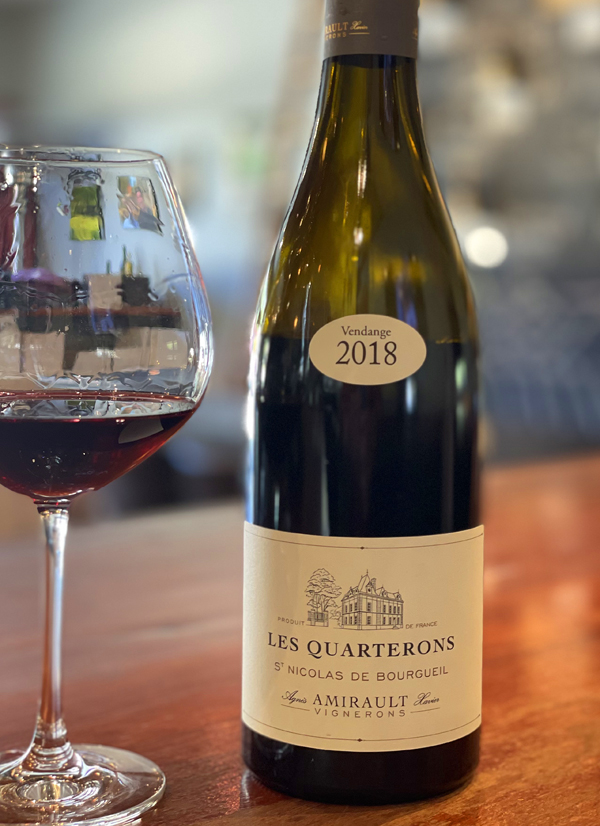
2018 Domaine Agnès et Xavier Amirault, St.-Nicolas-de-Bourgueil Rouge, Les Quarterons, Loire Valley Red Wine, France.
This unmistakable Loire Valley red, 100% organic Cabernet Franc, is an absolute raw beauty in the glass with a deep purple/garnet color and an earthy nose it doesn’t take long to seduce Cab Franc fans and it opens up to reveal a medium/full palate of dark berry, currant and plum fruits with hints of spice, mineral and kirsch. After getting some air the dimension fills out and the wine gains leather, tar, black licorice, mint, violets and a touch of bell pepper, all in all, an almost perfect example of this varietal and a wine to be enjoyed with a range of simple country dishes. The winery, which doesn’t use any new oak at all, employed a no wood approach here in this Les Quarterons, using 100% de-stemmed berries it was fermented in stainless steel with natural yeasts and saw a maceration of about three weeks before the wine was racked to concrete vats to age, which typically it does on the fine lees for 12 months. This wine is sourced from a parcel that has sand, gravel, dense hardpan and lots of minerally clay soils that brings a burst of fruit and a complex depth of flavors, all of which are sublimely highlighted here with this 2018 vintage. Those that like Chinon, Saumur-Champigny and Bourgueil reds should really check out these Domaine Xavier et Agnès Amirault offerings, especially this delicious Les Quarterons, with it’s old world charm and its finely balanced profile, with its well integrated, almost supple, tannins and fresh acidity.
Located in the tiny sub-zone of St.-Nicolas-de-Bourgueil in the Loire Valley, the Domaine Amirault, who’s estate’s heart and soul is their Clos des Quarterons, which is a 92-acre vineyard planted on gravelly pebbles, sand and clay based soils. This pime spot is blessed with 53 separate parcels of Cabernet Franc and Chenin Blanc that provides (the) grapes for a range of varietally pure wines, like this Les Quarterons Rouge, as well as a fine Crémant de Loire sparkling wine. The Domaine has been in the Amirault family for six generations and is currently managed by Xavier Amirault and his wife, Agnès, who have carried on making traditional wines from 100% certified organic by Ecocert and certified biodynamic by Demeter vines. The winery says that their biodynamic methods focus on both the environment and the terroir, which is the combination of soil, place, climate, varietal, and the holistic farming that they believe gives the wine here a soulful and pure expression of place. This winery, which was all new to me, is imported by Vineyard Brands, who have an excellent portfolio of regional France wines, and I was very excited by what I tasted here in this Cabernet Franc, and while the winery suggests drinking this one young and fresh, I can see some aging potential here as well, making me want to grab a few more bottles. The area of St.-Nicolas-de-Bourgueil, is not very common terroir on labels here in the states, though certainly Bourgueil proper is, with many excellent examples, including one of my favorite wineries, Domaine Pierre et Catherine Breton, so it was thrill to discover Domaine Amirault, it is a label to watch.
($35 Est.) 93 Points, grapelive
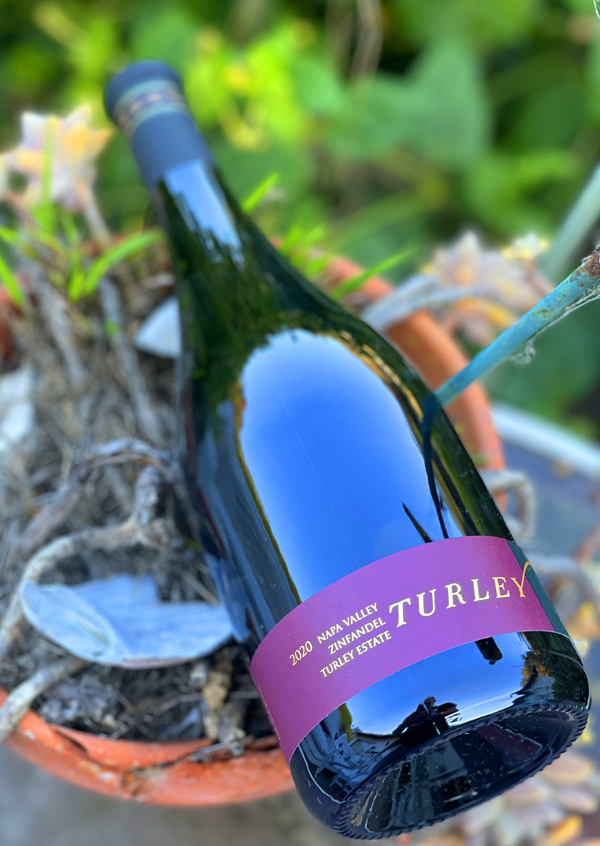
2020 Turley Wine Cellars, Zinfandel, Turley Estate, Napa Valley.
The vintage 2020, which suffered from extreme drought and horrendous wildfires, in some cases produced awesome wines, such as Turley’s Napa Valley Estate Zinfandel, a wine of pure hedonism and expressive flavors. Lower yields mean higher concentration, deeper complexity, and better quality, as this wine, which the winery adds, highlights the fact that certain bottlings, made in drought years are often some of the best you will find. I was delightfully surprised and impressed with this dark inky purple Zinfandel and its gorgeous aromatics, which drew me in, as well as the ultra satiny full bodied palate of black raspberry, plum and currant jam fruit layering, along with subtle wood, spice and florals. The wine adds some savory elements and just the right amount of vanilla and anise, it went beautifully with a range of toppings on a pizza and never felt cloying or hot, it was an easy to love wine, enjoyed with family, of which, rarely gets a chance to splurge on a wine such as this. There is a lot to admire in Turley’s collection these days and winemaker Tegan Passalacqua is turning out some fabulous stuff that is faithful to traditions, but seem more authentic and balanced than some earlier wines. The opulent and luxurious native yeast fermented Estate Zinfandel was made using mainly used oak, only 20% new, with a combination of about 80% French and 20% American barrels employed, which really suits these wines and in particular this one. This wine is a celebration of old California, with the winery taking a page from their beloved old vine vineyards, they planted several of the varieties most commonly interplanted in old Zinfandel vineyards, including Carignane, Trousseau, and Cinsault.
The Turley Este vineyard is located in St. Helena and is set on volcanic and alluvial soils and has a mix of Zinfandel, Carignane, Petite Syrah, Trousseau, and Cinsault vines that are all organic and old school head trained, from plantings that date back to the mid-1990s.Turley says they were unbelievably lucky, explaining that as a winery that produces primarily Zinfandel, a variety that ripens much earlier than most others, with a harvest that usually begins at the end of July or at the beginning of August. This being especially true, In a drought year like 2020, their harvest was already well underway, and most of our Napa grapes were safely in, well before the Glass Fires began at the end of September. So most wines were absolutely not affected by the horrible smoke taint that destroyed many region’s red wine grapes. In the aftermath, Turley did have to make sacrifices when it came time to decide which vineyards they harvested and forfeit, even more so when it came to bottling, with winemaker Tegan Passalacqua vetoing any and all wines, even whose lab results returned clean, if he felt their character had somehow been compromised in this tough vintage. This is why, the winery continues, that you’ll see no Turley 2020 classics like the Rattlesnake Ridge Zinfandel or Petite Syrah, no Dragon Zinfandel or Cabernet, no Cedarman, no Heminway, no Casa Nuestra, and no Estate Cabernet in the lineup, such is the pursuit of quality and honestly found here. The utmost care to produce a premium set of wines, with compromise, not taking any chances, is something to admire and cherish, which I am going to be grateful for and recommend to all that will listen. In a year that saw greed over quality concerns in some quarters, I am thrilled by the commitment shown by Turley, these are wines not to be missed!
($40+ Est.) 93 Points, grapelive
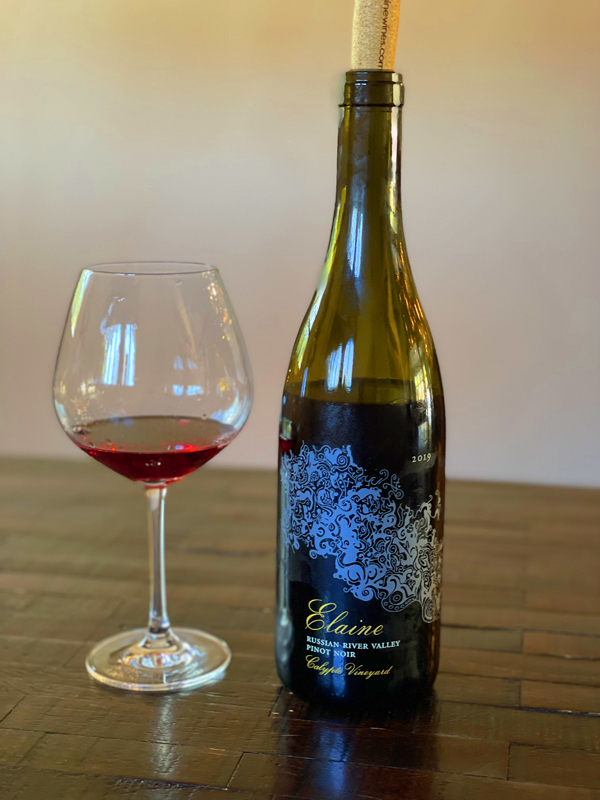
2019 Elaine, Pinot Noir, Calypte Vineyard, Russian River Valley.
The latest release from Elaine Sale, a young winemaker and potentially a star in Sonoma County’s Russian River Valley, who I’ve been following for a few vintages now, is her handcrafted 2019 Monopole Pinot Noir from the Calypte Vineyard, which shows off a more exotic personality and is less oaky than her debut release with an almost Nebbiolo like character and a Chinato or Amaro note before revealing a range of black cherry, plum and red currant fruits, subtle spices, floral notes and polished toasty wood. The ruby and light garnet wine is highly aromatic and teases the senses with the mix of mountain herbs, porporri, marzipan and Moro oranges, all of which make it tasty thrill ride, but not as obviously a Russian River Pinot as her prior release, which sets it apart from the mainstream pack, more in the mold of some of Ross Cobb’s uniquely stylish efforts. i was turned on to Elaine’s wines by my friend Dylan Sheldon, who notably makes the Sheldon Wines, who has leant some expertise and guidance to this newly formed project that does this signature Pinot Noir and a excellent Chardonnay as well from their home vineyard. I really enjoyed the luxurious 2017 wines, but am more intrigued by this latest wine from Ms Sale, as it shows a more distinct and singular charm that seems to showcase a vineyard coming into its own. I also, have a few bottles of 2018, which I will open a bit later thinking their intensity and structure, from a cooler year, will benefit from patience, but of which I will report on in the not so distant future, it is exciting to see the success of this passionate effort.
Elaine Sale and her husband Mark, who founded Elaine Wines with the 2017 vintage, live on and, as they say, loving tend the Calypte Vineyard, where they source all of their limited production wine’s fruit. This 3-acre ridge-top vineyard was planted in the secluded Forestville area of the western Russian River Valley in 1998, where it sits up at an elevation of around 500 feet. The area is known for its Goldridge and Altamont soils, both having a high percentage of sandstone, gravel and shale, and drain well helping concentrate the flavors. Less than one mile from the Russian River and approximately 14 miles from the Pacific Ocean, the Calype Vineyard fruit sees a huge benefit from the cool maritime climate and helps produce expressive wines, but with a nicely balanced profile, as this 2019 shows with pristine clarity. For the 2019 vintage, the Pinot production was up to 5 barrels from only 2 in 2017 and includes mainly clone 1115 and now a little clone 667 as well, with extremely severe cluster and berry selections made both in the vineyard and in the cellar, it saw about 10% whole-cluster and stems and was aged in oak for 12 months, with Elaine choosing to use about 20% new French wood, which I see as giving the wine a bit more transparency and authentic form. The growing season provided ripe and healthy grapes and while rich and textured, it is also fresh and came in with 14.1% natural alcohol, far from being hot and makes for a nice food wine that should go easily with a wide array of cuisine options from duck confit to more simple meat dishes, as well as wild mushrooms and even fleshier fish, like salmon or ahi. With the limited availability, I suggest joining the mailing list here and follow along as this label develops, there’s some serious potential here.
($50 Est.) 92 Points, grapelive
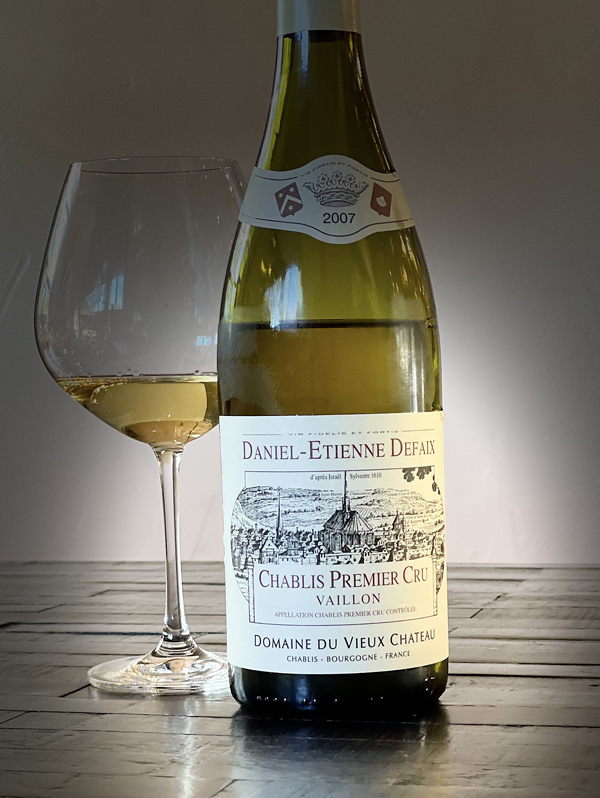
2007 Domaine du Vieux Chateau-Daniel-Etienne Defaix, Chablis, Vaillon Premier Cru, White Burgundy, France.
The extended aged 2007 Vaillon Premier Cru Chablis by Daniel-Etienne Defaix is an intriguing example or expression of terroir driven Chardonnay that is wonderfully mature and a lovely wine with a delicious subtle sense of fruit and a stony presence in the glass, where it shows a golden color and a slight reductive or flinty note that blows off to reveal pear, racy citrus and tart stone fruits. This dry and crisply focused Vaillon opens up with air, adding a rounded texture, delicate tertiary elements, oyster shells and saline, making it perfect with soft cow’s milk cheeses and or lighter cuisine choices. The lees aging here comes through with a bread note and a hint of creaminess on the mostly energetic filled medium bodied palate that leans toward a bit of earth, spice and mineral tones in a very finely detailed and elegant wine. Vaillon or Vaillons, along with Montee de Tonnerre are two of my favorite Premier Cru sites in Chablis, both of which are heavily influenced by the famous Kimmeridgian (limestone) soils, that gives these wines, like Defaix’s, their fabulous structure, bracing acidity and the legendary steely minerallity. With the great Chablis makers, like Dauvissat and Raveneau getting fantastic prices these days, Defaix offers a tremendous value for the quality found here and I highly recommend searching out this domaine’s wines out, especially these outstanding Premier Crus.
Uniquely, and as mentioned when I reviewed his 2005 Les Lys, Daniel Defaix ferments his Chablis, using 100% de-stemmed Chardonnay grapes, in stainless steel tank, using 100% natural yeasts, at cold temps, which takes close to three weeks or so. Everything is done to promote purity, clarity and build natural richness without using any oak in the winemaking and aging process. After fermenting dry, Defaix then allows his Chablis to rest almost three years on the lees, again exclusively in stainless vats, and letting it go through natural (malolactic) secondary fermentation, then the wine is racked again back to stainless tanks again, where it is aged (to) up to ten years before being bottled! With food, this Vaillon really comes into its own with more dimension coming to light along with unsweetened acacia honey, hazelnut, and very much in Defaix’s style, it has a lingering fleshiness of form, it is a seamless and rewarding, almost 15 year old Chardonnay that is full of old world charm. Again, as observed before, Defaix, who is a natural minded vigneron, who’s family is from Avallon, not far from Chablis itself, is a proud regional producer who’s ancestor Etienne-Paul Defaix moving the family into Chablis proper during the eighteenth century. Daniel uses largely self taught methods to craft his wines with ideas passed down through generations and methods learned from his own experiences. His severe selections of grapes and his long fermentations, make these wines standouts and highlight his deft touch in the cellar, as this Vaillon shows.
($55 Est.) 93 Points, grapelive
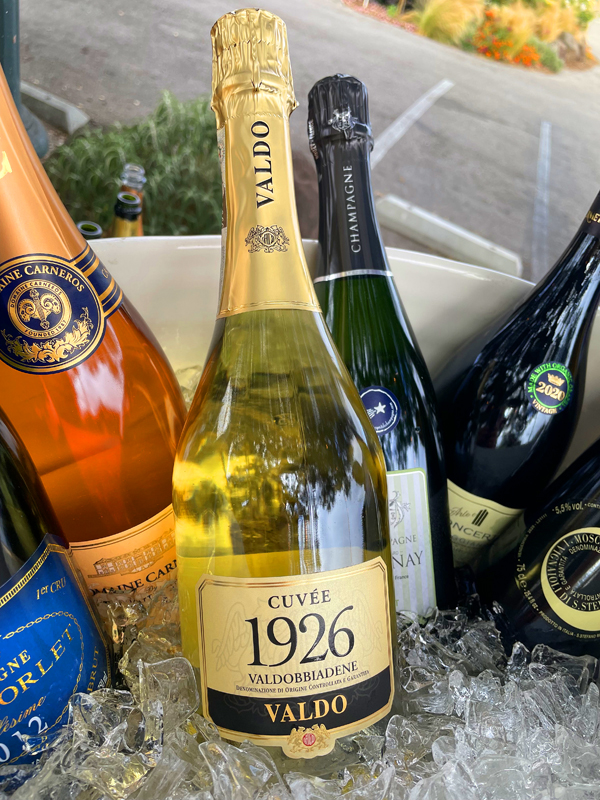
n.v. Valdo “Cuvée 1926” Extra Dry, Prosecco Superiore, Valdobbiadene DOCG, Italy.
While I normally go for a drier style, Brut at least, this Valdo Cuvée 1926 Extra Dry is a well rounded, balanced and food friendly bottle of bubbly that drinks less sweet than perceptions would lead you to think with a depth that isn’t usually the case in a wine of this price, consider me impressed and pleasantly surprised. The Valdo Cuvée 1926, 90% Glera (Prosecco) and 10% Chardonnay is vibrant and fresh, but nicely textural and expands well on the palate with a range of citrus, peach, apple and golden fig fruits, along with hints of doughy brioche, hazelnut, chalky stones, white flowers and a cut of saline that allows for the touch of residual sugar here. Again, this sparkling wine really excels with food, it is less attractive as an aperitif and better with a meal or picnic, especially sea foods, sushi and or linguine pasta with claims. There’s a lot to like here, with its energy and fine mousse, and it will be a crowd pleaser with the less wine geeky drinkers, it handles some spice and heat too, so it is a good choice for flavorful foods. The winery suggests pairing this Prosecco with classic risotto dishes, along with white meats and or enjoying it after a meal with fresh peaches, that all sounds delicious.
Valdo is the oldest winery of Prosecco in Valdobbiadene, in the Veneto region of northern Italy, and it was founded back in 1926 by the Societa Anonima Vini Superiori and then was purchased by the Bolla Family in 1938, after which the label began to grow and the quality started to gain attention. The grapes come from vines within the most prestigious part of the DOCG zone, and are usually harvested during the second half of September to promote full ripening and richness. The Valdobbiadene, is the prime Prosecco area and the vineyards sit at an altitude of 820 feet and are composed of calcareous/clay and morainic (glacially formed) soils, that provides the complexity to make these sparkling wines more interesting. Winemaker Gianfranco Zanon says his Valdo Cuvée was crafted with the grapes seeing a short maceration on the skins (in a closed press) followed by soft pressing with free-run must. With the winery adding that it is produced via the Charmat method in an extra-dry style, with a healthy dosage. Then a second fermentation is done with natural yeasts and lasts close to 150 days, with everything exclusively done in stainless steel tanks, where the pressure builds up to give it the frizzante. With air and food, the Valdo Cuvée 1926 adds tropical notes, honey and Asian pear, going great with curried cauliflower and candied bacon, lettuce and heirloom tomato (BLT) bites.
($20 Est.) 87 Points, grapelive
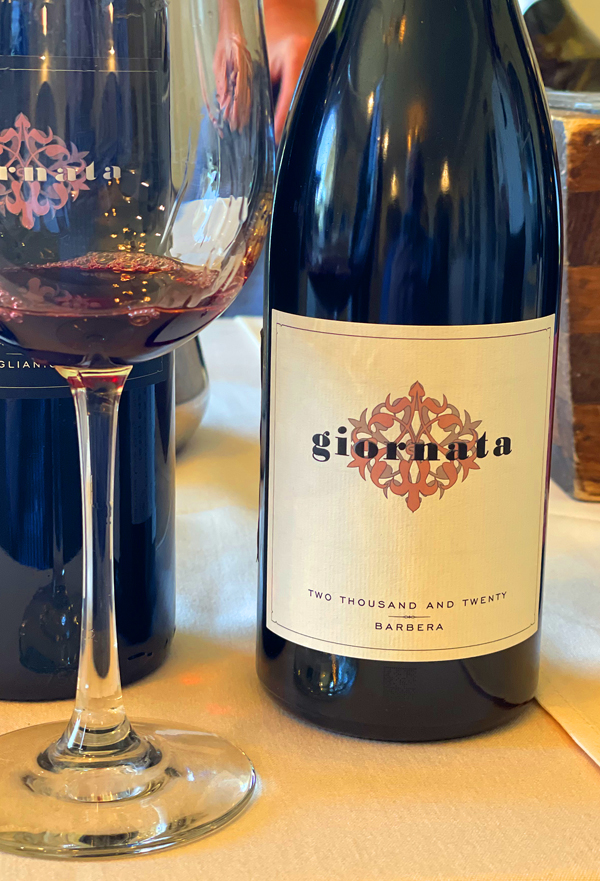
2020 Giornata, Barbera, Panache Vineyard, Adelaida District AVA, Paso Robles.
In the last few years I have tried to shine on light on just how good these Cal Itals, California wines made from Italian varietals, are and these Gionata examples are delicious, including this beautifully purple/garnet hued Panache Vineyard Barbera that delivers satisfying ripe fruit, spice, energy and subtle savory notes. Perfect with simple pasta dishes and or robust meaty cuisine choices, this Barbera faithfully connects you with its cousins in Piedmont with a more rounded and full bodied style commonly found in the Alba zone with crushed blackberries, plums and black cherries leading the way here in this 2020 vintage, along with minty herbs, dried lavender, peony florals, a delicate earthy tone, cedar and anise. The natural acidity keeps things balanced, freshly detailed and the soft satiny tannins feel supple in the mouth, highlighting the warm of the year and the studied winemaking here, that brings out the best quality of the grape. The Giornata Barbera can be bright and juicy, which you can see a little of here, but in certain years, like this one and more deep expression comes through, though you can enjoy it right away and it is priced right to stock up on, and it is a tasty example of the quality that Giornata puts into the bottle.
As mentioned here, winemaker Brian Terrizzi’s Giornata label is seriously focused on Italian grapes, most found here on the western side of Paso Robles, the central coast and or in cooler zones of Santa Barbara county, where these varietals are now thriving, with Terrizzi especially interested in Nebbiolo, along with Barbera, Falanghina and Aglianico, which is really showing fantastic potential here in California. Terrizzi says he is producing Italian-varietal wines from vineyards that he and his wife farm mainly in Paso Robles using traditional, old-world winemaking techniques from their facility in Tin City, with everything done to promote transparency and purity, which shows in this Panache Vineyard Barbera. This Adelaida Distinct AVA vineyard, Brian adds, is set on (the) Nacimiento-Los Osos soil complex made of clay loam over weathered bedrock, with an elevation of 1150 feet above sea level. The diurnal temperatures here at Panache, as Giornata reveals, are among the highest in the region which leads to the retaining of vibrancy, while getting deep fruit density. The skins can become thick due to the large temperature swings from day to night, which leads to the extraction of structural elements in the Barbera, with Terrizzi using a combination of vessels to ferment and age his Barbera, including neutral French barrels, larger Slovenian oak casks and stainless steel. I have been thrilled with this latest set of releases and I highly recommend checking these Giornata offering out as soon as possible!
($25 Est.) 91 Points, grapelive
Grapelive.com – Reviews – August 2022
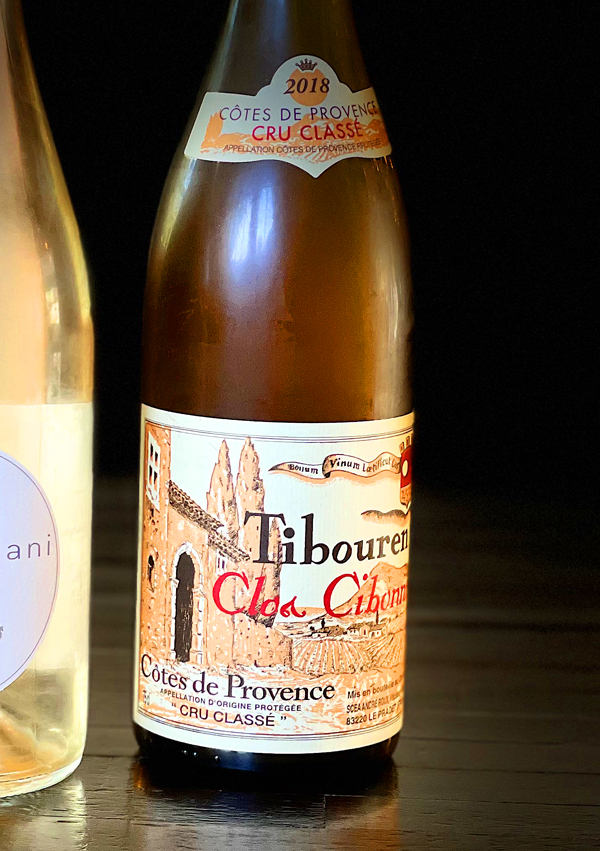
2018 Clos Cibonne, Tibouren, Cuvée Tradition Rosé, Côtes de Provence AOP, Cru Classe, France.
The 2018 is nicely aged and showing all the complexity these unique Clos Cibonne can deliver with its customary funk, depth and vinous pleasure along with a surprising racy quality and mineral tones to go with burnt orange, red peach, earthy nectarine, muskmelon and apricot marmalade fruit layers as well as wet stones, a touch of spice and dried florals, hinting to the maturity and a slightly oxidative sense. To be honest, I had forgot I had this bottle and even reviewed the later 2019 version before finding this one, but as I have often noted, these wines get more interesting with some age, unlike the drink fast versions of dry Rosé and this vintage, which is delicately salmon/pink hued, does not disappoint and impresses for its ironic style and beautifully rounded medium bodied mouth feel. As I have noted in prior reviews, the Cuvée Tradition is the normal or classic Tibouren Cotes de Provence Cru Class AOP bottling by Clos Cibonne, but it is anything but basic, with 90% Tibouren grapes, plus about 10% Grenache, being fermented in stainless steel and then aged Sur Lie under fleurette (a thin veil of yeast “Flor” like is found in Sherry) in 120-year-old, 5,000L foudres, large oak casks which adds that touch of oxidation, as well as a textured mouth feel and stabilizes the wine allow it to age way beyond what a normal Rosé. The Clos Cibonne vines, goblet-trained Tibouren, are organically grown on schist soils from parcels as old as 60 years old vines at just 50 meters above sea level. The winery notes that Tibouren is a very fine, thin-skinned grape which requires a lot of ventilation to be successful, adding that it needs to grow close to the ocean, with lots of ventilation to be successful, which Clos Cibonne provides along with a constant Mistral wind and air flow blowing through the vines here on the blue Mediterranean Sea.
The Tibouren grape, or Rossese di Dolceacqua (as it is called in Italy), is mainly known as a red French variety that is primarily grown in Provence and in Liguria, on the Italian Riviera, but most likely it originated in Greece and brought here in ancient times. It is a varietal that deserves wider study, and it is interesting to note that the legendary Randall Grahm, formerly of Bonny Doon, has started planting Tibouren and Rossese clones here in California and even made his first Rosés (2020 & 2021 Language of Yes Wines) with a high percentage of Tibouren, which has turned out to be a success, highlighting the potential of this grape over here! In recent times, fifth-generation winemaker Olivier Deforges is both vineyard manager and winemaker here at Clos Cibonne and has even taken the estate to new heights of quality. Olivier, as the winery explains, has focused most his energy on the impeccable viticulture done here, after transitioning to all organic viticulture over the last decade, they are now officially certified organic since this 2019 vintage. Clos Cibonne, owned by Bridget Roux and her husband, Claude Deforge, is only about 800 meters from the beautiful blue Mediterranean Sea, set in a natural amphitheater that allows for wonderful ripening and with a unique constant air flow through the vines that keeps all the clusters wonderfully healthy. Like many Provence wineries, after Phylloxera, as planted mostly to Mourvedre as many historic grapes were almost forgotten, but Bridget’s grandfather André Roux, who ran the estate back from the 1930s to after WWII, is credited with resurrecting Tibouren and even got it Cru Classe status and he was instrumental in allowing the grape’s name to be on the label, as it is today. In recent times, we’ve seen a huge interest in dry Rosé with the market place loaded with fine examples, but very few intrigue us wine geeks in the way that Clos Cibonne does and I highly recommend searching out these coveted old school bottlings and enjoy them with a range of foods, especially with sea food stews and or mussels in spicy broth.
($38 Est.) 93 Points, grapelive
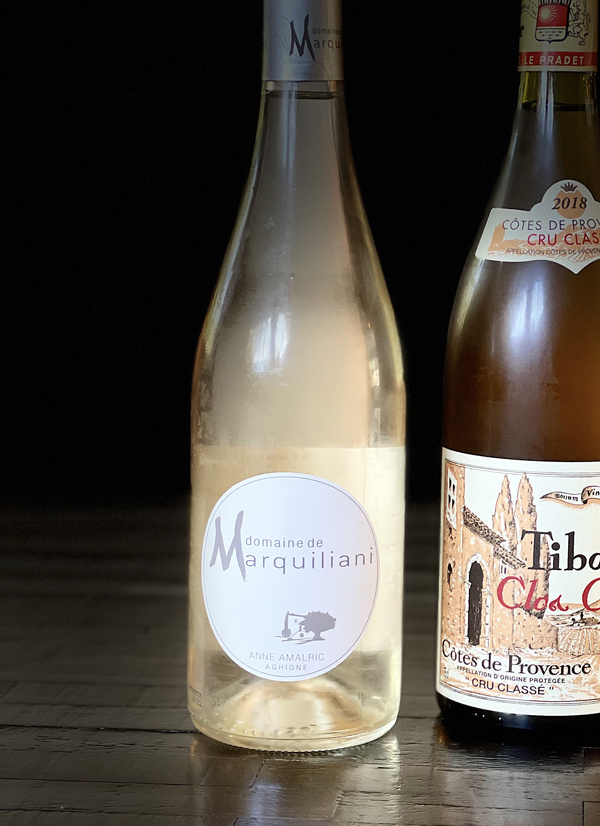
2021 Domaine de Marquiliani – Anne Amalric, Rosé Gris de Marquiliani, Vin de Corse, France.
I am a big fan of Anne Amalric’s Domaine de Marquiliani, who makes some of the most stylish wines on Corsica, with this steely delicately ultra pale vin Rosé Gris ibeing a real favorite, that is made mainly of Sciaccarellu, a local varietal that to be of Etruscan origin and called Mommolo in Tuscany, with a tiny amount of Syrah in the final blend. As I’ve mentioned in the past, this lightly tinted Rosé really stands out for it’s class, vibrancy and clarity, and on an island where there is a huge focus on Rosé, this is among the elite stable of wines along with Abbatucci, Canarelli and Leccia, this is thrilling stuff. It had been awhile since I got a chance to enjoy this wine and it was great to share it with three friends and see the reaction to it, which as expected it was unanimously admired for the crisp refreshing pleasure and it provoked quite a bit of thoughts, especially when compared to opposite array of flavors of an aged Clos Cibonne Tibouren Rosé. The bone dry Rosé Gris de Marquiliani is more mineral driven and stony rather than fruit expressive with muted aromatics and fine layers of ruby citrus, white strawberry, tangy peach and watermelon rind fruits along with rose and lavender water, a hint of wet rock and raw almonds. With lots of energy and zippy acidity this Rosé Gris de Marquiliani makes for a stellar wine to enjoy in Summer and is great as an aperitif or with beach picnics, gaining more personality with air and as it warms in the glass, though staying impeccably balanced throughout.
This bright an intense Rosé Gris de Marquiliani was crafted using exclusively the clear juice after the grapes were cold soaked with 95% Sciaccarellu (Mommolo) and just 5% Syrah, with the wine being fermented in cool stainless steel and not allowed to go through malolactic conversion to promote its dynamic freshness and absolute purity. Domaine de Marquiliani is imported by Kermit Lynch, who dominates the market of top producers and wines from Corsica, and who brought these incredible offerings to an American audience that has fully embraced these distinct and terroir driven wines. Kermit and his team could easily sell two or three times his haul of goodies from Corsica with Domaine des Marquiliani being one his shinning stars. This wine comes from 20 year old vines, set on granite and schist soils near the town of Aghione, that is not far away from the old Roman capital of Corsica, Aleria, on the eastern coast of the island, poetically known as the Costa Serena with mountains that reach over 7,000 feet and seeing some of the coolest climate on the whole island. Kermit Lynch was immediately drawn to Domaine de Marquiliani’s Rosé, saying it was like drinking a cloud, with its heavenly weightlessness being greatly admired. The winery, now run by Anne Amalric, has its roots dating back to the 1950s, as the old estate and vineyards that pre-dated the Amalric family had to be resurrected after it had been completely destroyed by a fire. The Domaine des Marquiliani collection includes just a few wines, but all are exceptional, especially this lovely and invigorating Rosé Gris de Marquiliani, along with a tasty vin Rouge made of 40% Syrah, 40% Sciaccarellu and 20% Grenache, which I highly recommend too.
($32 Est.) 92 Points, grapelive
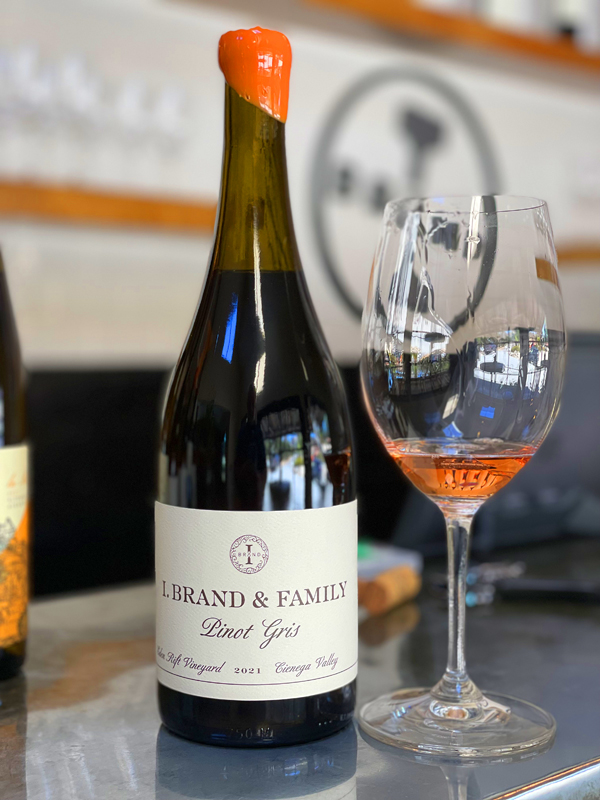
2021 I. Brand & Family Winery, Pinot Gris “Ramato” Eden Rift Vineyard, Cienega Valley AVA, San Benito County.
More dynamic and exciting than last years excellent version, the coppery/pinkish skin fermented 2021 I. Brand & Family Winery Pinot Gris, Ramato style wine is an awesome example of how to do a new world orange wine, on par with one of my favorites, Cameron’s Dundee Hills Ramato, from the Willamette Valley in Oregon and a wine that goes great with food, it’s not just a one glass wonder, it will almost certainly be a wine that you wish you had another bottle of. Like last year, this wine delivers a textural mouth feel that is absolutely divine and the fruit is sharply detailed with supple layers of Fuji apple and red apple skin, a touch of strawberry, melon and peach fruits as well as some zesty ruby citrus, seamlessly folding together on the smooth medium bodied palate along with a chalky element, wet stone, subtle florals, a hint herbs, a bit of almond paste and a crisp saline note. This wine that takes its cues from the northeast of Italy is one of Ian Brand’s cool set of white and skin influenced wines, joining his Arneis, a rare Piedmonte grape, his Melon from the Chalone AVA, the dry and leesy grape of the Loire Valley’s Muscadet region, that is tasty with briny oysters, as well as his Alternative Cut Albarino, that he sells under his La Marea label, all of which should not be overlooked in Brand’s collection of new releases. Coming from the Eden Rift Vineyard in the Cienega Valley, next door to local favorites DeRose Vineyards and the famous Calera Mount Halan Estate, this Pinot Gris enjoys a special micro climate that brings out the best in these grapes. The valley floor is divided by the famous San Andreas fault, and the region does shake quite a bit, and there is plenty of micro climates to chose from, and a surprising amount of unique varietals to be found here with everything from the mentioned Pinot Noir and Pinot Gris, to rare Negrette and Cabernet Pfeffer, which, excitingly, Ian plans on releasing next year, along with old vine Zinfandel and Carignane, as well as lesser known Italian grapes like Freisa and the Arneis varietal noted above.
As noted before, Romato, a word that means copper in Italian, is a term used for the classic versions of this slighter fresher example of “orange wine” that hugely successful in the northeast of Italy close to the Slovenian border, with Gravner, Skerk and Radikon being iconic producers from there. Ian’s Pinot Gris was fermented on the skins for 4 days, and then aged a short time in neutral barrels, which left the color so inviting and additionally gives the wine its structural tannin as well as supple mouth feel, it is wine that goes well with Uni, chicken skewers, smoked salmon and or ceviche. The rise of skin contact whites (including Gris grapes) has gone from a fad to serious stuff here in California, with Ian saying he was influenced by Scott Schultz of Jolie-Laide, who’s gained quite an insider reputation for them, they are not the weird and funk stuff they used to be, especially with wines such as this one being wonderfully balanced and drinkable. Ian Brand has been working with many of these unique sites for years now and, as mentioned here, has found some real gems in Lyme Kiln Valley, like the Enz Vineyard as well as in the Cienega Valley, where this wine comes from, which became an AVA in 1982 and is located in the cooler western side of the San Benito County. It’s an area that is interestingly home to some of the oldest and most famous Pinot Noir vines in California, that the late Josh Jensen of Calera used to legendary effect over the last three or ore decades, so it is not surprising that Pinot Gris does well here too. The combination of granite and limestone soils found in this part of the valley, at approximately 1,100 feet up above sea level, and with a cold air (wind) gap to the Ocean, it sees lots of sunny days, making for warm ripening conditions, plus nice cold nights that refresh the vines to retain vital natural acidity, all of which is brilliantly showcased in this vintage of Brand’s Pinot Gris. I’ve been highly impressed by the latest set of wines here, they are all of interest, and while Brand’s reds get a lion’s share of attention, every wine is a studied effort, but it is hard to escape the charms of Ian’s Grenache offerings, they are joyous on release and age surprisingly well, it is a good time to refresh your senses with Ian’s wines.
($30 Est.) 93 Points, grapelive
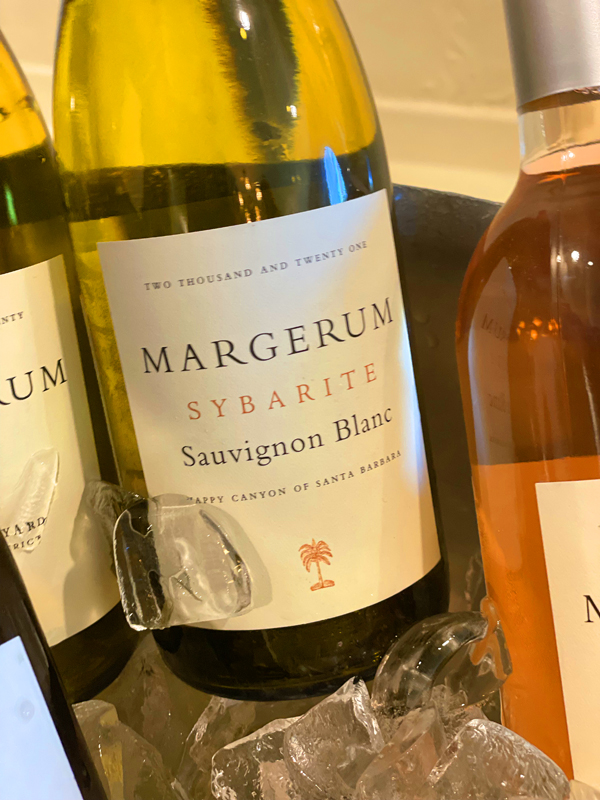
2021 Margerum, Sauvignon Blanc “Sybarite” Happy Canyon of Santa Barbara, Santa Ynez Valley.
As noted in my recent reviews, these new releases from Margerum are very delicious offerings and this brightly fresh Sybarite Sauvignon Blanc really impresses for its purity and its burst of citrus on the lean and clean palate with lemon/lime, gooseberry and white tangy peach fruits along with saline, mineral tones, wet stones and bitter herbs, all giving this wine its personality. This zesty and briskly bone dry white is mouth watering and refreshing, perfect with soft goat cheeses and or briny sea foods, especially delicate white fish dishes. While mostly known for their Rhone style wines, Margerum’s stylish and intense Sauvignon Blanc flies under the radar, both shouldn’t be overlooked or missed, with this 2021 vintage being one of best to date, it is a year that retained loads of perky natural acidity and gave lifted aromatics with just a hint of essence of feline coming through on the nose, this is delightful, ultra pale stuff that provides lots of Summer fun in the glass. The Sybarite SB comes from multiple sites, 38% Happy Canyon Vineyard, 31% McGinley Vineyard, 18% Grassini Family Vineyard, 11% Vogelzang and 2% Two Wolves Vineyard, all within the Happy Canyon zone, providing a range of flavors and complexity here.
Santa Barbara’s Margerum Wine Co, led by Doug Margerum, a local legend in the region has turned out an excellent collection with a very desirable set of wines, from this zesty Sauvignon Blanc to their M5 Rhone Blends, along with a lovely Rosé, which I just reviewed, as well as quaffable 100% Cinsault. The Sauvignon Blanc is defiantly worth chasing down, it is one of best you’ll find on the Central Coast, following in the footsteps of Brander, a winery that specialized in Sauvignon Blanc in Santa Barbara and boosted this grape’s profile, in this region, in the late 1990s. Margerum explains that, the word SYBARITE is derived from Sybaris, an ancient Greek city, that was located in southeastern Italy and well known for the luxurious, pleasure seeking behavior of many of its inhabitants. Adding that, SYBARITES are people who have a fondness for sensuous pleasures and experiences. This wine, the winery says, is perfect to serve on its own as an aperitif and I can see that, bit it also can be very much enjoyed with picnics and lighter fare. The Sauvignon Blanc saw mainly stainless steel fermentation and aging, though about 12% of the wine saw barrel fermentation and maturing, which was done in a variety of used French barrels of different sizes, with lees contact for about 4 months that adds a textural quality and balance to this tasty stuff.
($26 Est.) 91 Points, grapelive
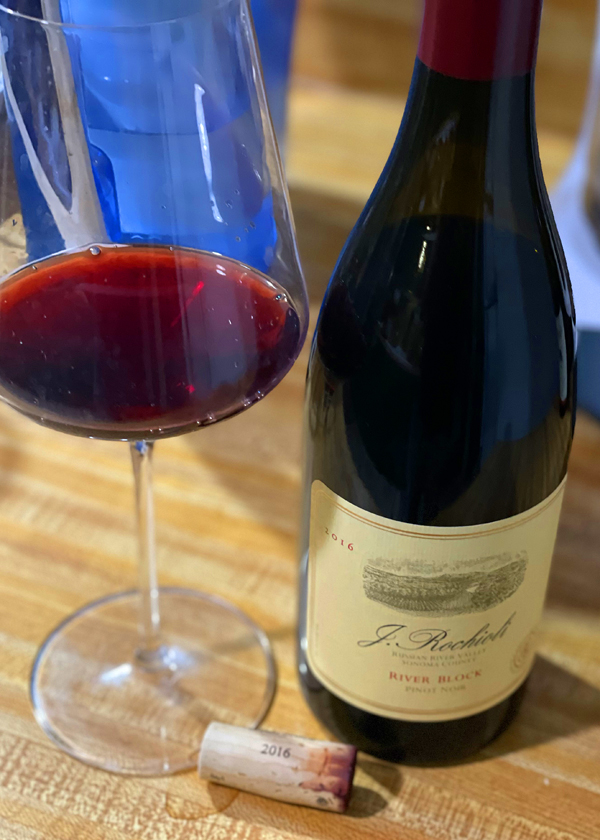
2016 J. Rochioli, Pinot Noir, River Block, Estate Grown, Russian River Valley, Sonoma County.
I just learned of the passing of Joe Rochioli Jr, one of California’s treasures, a pioneer in the Russian River area, who helped put the state’s Pinot Noir on the map, so it was a fitting tribute to him and to the whole Rochioli family to open this gorgeous 2016 vintage River Block Pinot. It took me more than seven years to get on Rochioli’s mailing list and I took many day trips to the winery on Westside Road to get any bottles I could from the mid 1990s until now, so it was sad to get Rachael Rochioli’s email announcement that Joe had died on the 18th of August, though I had only met him on a couple of occasions, you could sense the kindness and work ethic he possessed, qualities that served him well when dealing with Pinot Noir, which he and his son Tom took to the top of wine world and pushing the category to new levels of quality. The 2016 River Block is the essence of what Rochioli’s DNA is and is a rich and full bodied version, it shows tons of personality and expressive dark fruits with layers of black cherry, plum, raspberry, cranberry and blood orange on the silken palate, all highlighted by deep floral tones, smoky vanilla, cola and sassafras. As this wine opens hints of earth, bacon, blueberry and rose petals flicker in the background, it takes me back to the time I got to experience Anne Gros’ 1990 Richebourg, this is yes a hedonistic and textural wine, but one that has the depth and complexity on Grand Cru level, again, a perfect way to celebrate the life of Joe Rochioli Jr. Rochioli’s lineup, obviously is focused on Pinot Noir, but they also do a fabulous collection of Chardonnays, Sauvignon Blancs and even do a tasty Valdiguie, once called “Napa” Gamay, a very unique wine I always try get, when I visit the tasting room.
The deeply saturated garnet and ruby hued Rochioli River Block Pinot Noir is one of America’s great wines, certainly one of California’s most iconic bottles, never fails to impress and is a very age worthy wine, which this 2016 still being exceptionally youthful and just being to show its full array of flavors and true potential in the glass. As I’ve noted in my many reviews of Rochioli, which started as a estate wine back in 1983, after originally being known as Fenton Acres, when Joe and his son Tom Rochioli, who were second and third generation Italian farmers, became pioneers of Russian River Pinots. Joe, famously, always believed it was the grapes and individual sites that make the best and most intriguing wines here on their historic estate that sits on sloping hillsides on the bench lands above the near by Russian River, which sucks in the cool Pacific Ocean air, and not too far from Healdsburg on the famous Westside Road. The success of these wines at Rochioli are because of, the winery notes, the diverse terroir across their 140 acres under vine, but of course the old River Block is a very distinct site right above the river and on the southern tip of the property. Tom, at the helm in the cellar here since the later part of the 1980s, and his winemaking team ferment each block separately in traditional fashion using a mainly hands off approach, they, as noted, firmly believe the wine is made in the vineyard and it should not be messed with in the cellar. They are not afraid to employ new toasty French oak in the concentrated in the Cru bottlings, which shows here, but the wine easily comes into balance within a few years of of release. While this is a common practice in Burgundy, and in California in modern times, Rochioli was one of the first premium Pinot Noir houses to employ this a micro-batch hand crafted style of wine, which continues today. The single site wines here at Rochioli are not cheap, but they are well worth the price, especially their prized River Block as this one proved to me.
($129 Est.) 96 Points, grapelive
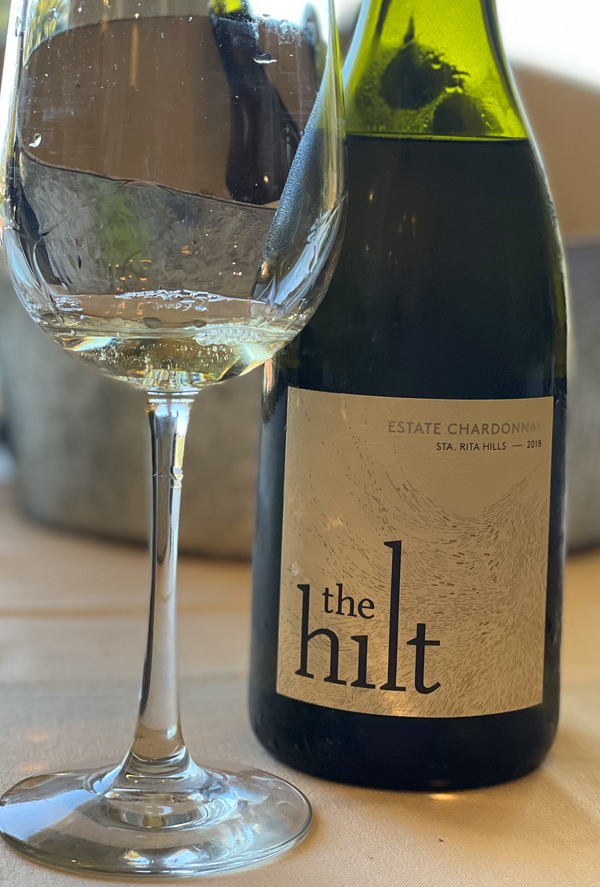
2018 The Hilt, Chardonnay, Estate, Sta. Rita Hills.
I must admit, I was late getting on board with these The Hilt wines, but I am massively impressed with the lineup I tried recently and greatly admire Matt Dees, the winemaker here, who has crafted some beauties, especially his Estate bottlings of Pinot Noir and this gorgeous Chardonnay, it ranks right up there with some of my classic favorites with the same thrill and quality that you see in Hanzell, Mount Eden, Peter Michael and others. This pale golden Estate Chardonnay is showing fantastically well, still vibrant and youthful, but with seamless layering of apple, Bosc Pear, lemon curd, white peach and subtle tropical fruits that is perfectly accented by orange blossoms, honeysuckle, hazelnut, sea salt, wet stones and a leesy richness, all framed by toast wood. Dees says, his 2018 Estate Chardonnay is pure, compact and driving, with a sense of tension and full of kinetic energy. He adds, that the wine shows the seemingly endless sunlight and perfect growing conditions of 2018 and is lifted and framed by classic Hilt terroir influences, including the mentioned saline and an electricity on the finish. All of which is clearly on display here, it adds hints of key lime, golden fig and clarified cream with air, making it feel smooth and elegant on the luxurious and full bodied palate. There is a lot to love here and this Chard will go nicely with a range of foods, in particular I would recommend soft farm cheeses, sea foods like lobster and swordfish, as well as roast poultry that will allow the complexity and depth here to shine.
The Hilt Estate Chardonnay comes from selected plots of estate vineyards within the Sta. Rita Hills, including the highly regarded Bentrock Vineyard site with its sandy and chalky soils that sees the region’s cool climate and Ocean breezes, helping make this a very balanced wine that comes in at 13% natural alcohol. Dees used a clonal selection of an old Sanford & Benedict selection, clone 76 and clone 95 in this wine that saw a unique elevage regime that included 34% New French oak, 56% neutral French oak, plus about 10% being aged in stainless steel for 11 months, to promote purity and non buttery richness in equal amounts. Considering the winery produced just over 2,000 cases, this wine has a real hand made like feel to it and like the Estate Pinot Noir, it is very impressive stuff and not impossible to find. Located in the southwestern corner of the Sta. Rita Hills, the Hilt Estate Winery, a sister property to Jonata Estate in the Santa Ynez, is now one of the major players in the Santa Barbara area, with the winery focusing exclusively on Burgundian varietals, and this latest collection are prime examples of just how good this place is for those varietals. Interestingly, I loved the Estate offerings just as well as their upper echelon single vineyard wines, maybe because of how excellent the 2018 vintage was. The Hilt also does a Champagne style sparkler that has a grower producer intensity with a no dosage almost Extra Brut mineral tone and vitality, it is made from 78% Chardonnay and 22% Pinot Noir and saw 36 months on the lees. If you’ve not had these wines yet, you really should, they are fabulous efforts that are drinking beautifully right now.
($49 Est.) 94 Points, grapelive
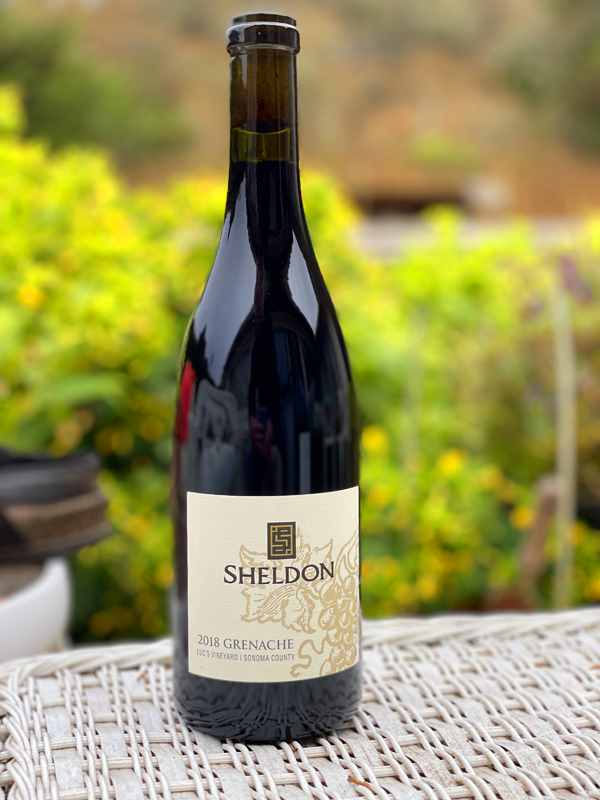
2018 Sheldon Wines, Grenache, Luc’s Vineyard, Fountaingrove AVA, Sonoma County.
The deeply hued garnet and ruby edged 2018 Luc’s Grenache from Sheldon Wines is still remarkably youthful and fresh with a crisply detailed dark fruited palate and an inviting floral dimension on display with primary black cherry, purple plum, currant and crushed vine picked berry fruits along with a mix of spices, earth and herbs. There is a precise feeling that is like a taut tension and gives the impression of tannin and acidity holding things tight here, less generous than is usually the case in this bottling, but with air everything gets more lush and pleasing. Interestingly, I held the 2018 vintage of Sheldon’s Luc’s Grenache an extra year, to review it, after the 2019 version, as it was thought to have more firm structures. Made using whole bunches and with a spontaneous yeast fermentation, the Luc’s Grenache, by winemaker Dylan Sheldon, sees daily punch downs and a cool maceration before a gentle basket pressing and being racked into well used French barrels where it matured for just under a year. Sheldon Wines, which was founded in 2003, by the husband and wife team of Tobe and Dylan Sheldon, and they are well studied in Grenache, having helped make it in Australia and France before leading the way in a new cool climate style here in California, first with bottlings coming from Santa Ynez and the central coast, then up in the cold pockets of Sonoma County, with this wine coming from the Fountaingrove AVA, near Chalk Hill.
The tiny backyard Luc’s Vineyard, where this unique Grenache is sourced, is located in the Fountaingrove AVA not far from Healdsburg and the mentioned Chalk Hill AVA, is planted on a west-facing hillside on Sonoma volcanics with iron rich and rocky soils. The Luc’s single acre vineyard, according to Sheldon, is on a bi-lateral cordon trellis and tends to produce around 2.5 tons total, so these wines are wonderfully concentrated and extremely limited. The vineyard, founded by a huge Rioja fan, is split almost equally between between Graciano, Grenache and Tempranillo, all of which are found in Spain’s Rioja region, plus Syrah, it was first planted in 2010, it is all hand tended with holistic practices and has been organically farmed since day one. The latest set of wines at Sheldon are without question some of their best efforts to date, they all show beautiful aromatics, and include some rare and unique gems, including a sparkling red made from Graciano and a dynamite carbonic style Sangiovese, so it is a great time to explore this collection if you haven’t done so yet, but be sure not to miss this serious Luc’s Grenache. Again, it was surprising to find this wine so firm at this stage, but the promise is there for rewards, it should age another 5 to 10 years, so patience is likely to pay off nicely, though, as noted above, when this wine is allowed to fully open it really is beautiful expressive and pure, it also goes deliciously well with food, which helps its full array of Grenache flavors to come alive. This Grenache is maybe less luxurious than the 2019 is, but this grape’s fans will be drawn to this vintage, especially when decanted and served with meaty dishes.
($38 Est.) 92 Points, grapelive
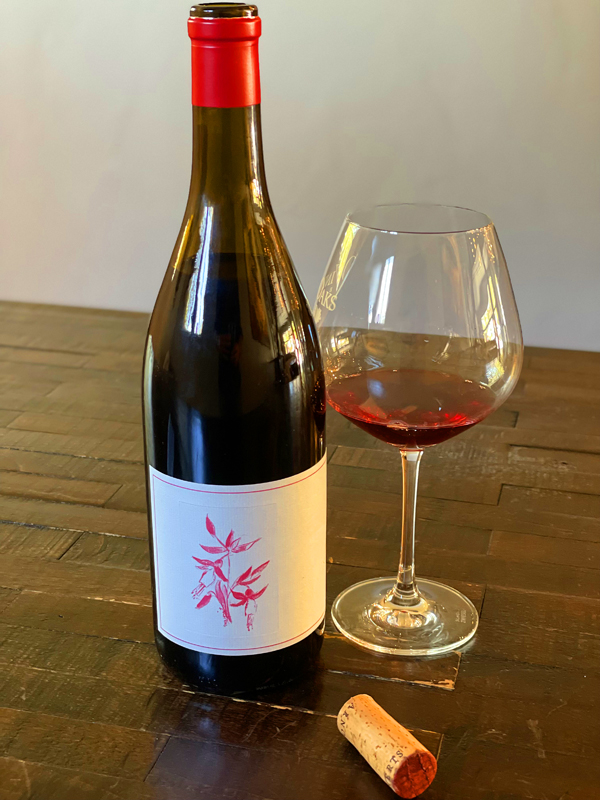
2019 Arnot-Roberts, Gamay Noir, El Dorado, Sierra Foothills.
The 2019 Gamay from Arnot-Roberts shows a silky texture and a bright flavor profile with pretty cherry, cola bean, red currant and plum leading the way on the medium bodied palate, it tastes best with a slight chill that brings out sharper details and highlights the mineral here. True Gamay Noir was first found here in the Sierra Foothills, with Steve Edmunds of Edmunds St. John making what is believed to be original modern California Gamay, and the grape has really taken off in recent times, with dozens of new versions available it seems every year. The ruby hued Arnot-Roberts Gamay is beautifully elegant and has low alcohol, with vibrant acidity, taking advantage of the region’s granite based soils, along with some volcanic clay-loam soils and studded with quartz and Feldspar rocks, which Gamay historically, like in the Crus of Beaujolais, has found a good home on the high elevation sites, along with a smooth ripe, almost Pinot Noir mouth feel. Usually made with whole bunches and native yeasts, these lighter styled reds from Arnot-Roberts mostly see their aging in used French oak, which allow transparency and delicacy to show through. This vintage is less crunchy and more refined with supple structure, it should age nicely for another 3 to 5 years, it does everything well, but is maybe just not as thrilling as the Trousseau is, in the Arnot-Roberts lineup.
The Arnot-Roberts label, founded in Healdsburg in 2001 by Duncan (Arnot) Meyers and Nathan Roberts, two Napa Valley boys, has, as I have said in prior reviews, helped elevate many unique varietals including Trousseau, this Gamay Noir, plus even some Gruner Veltliner, soured from Richard Alfaro’s estate vineyard in Corralitos (Santa Cruz Mountains) and Touriga Nacional, from the Luchsinger Vineyard in Lake County, which they make one of the state’s best Rosé wines out of, in California. The Arnot-Roberts Trousseau, as mentioned above, is a favorite of mine, and as revealed by the winery, is sourced from the three distinct vineyards; the Lake County Luchsinger, Bohan Ranch, in Fort Ross-Seaview, on the Sonoma Coast and Bartolomei, in the Russian River, that all of which have distinct soils and climate influences in these sites that results in a wine that shows their singular personalities, with their Gamay too being very distinct, coming from both the Witters and Barsotti vineyards, plus I wouldn’t miss their Chardonnay(s) and Syrah(s), both of which are exceptional and exciting wines. For a while, Arnot-Roberts teamed up with Raj Parr to do their Gamay, called RPM, but now it is all their own style and has become a fine California influenced example of this varietal. I am excited to see the upcoming 2021 releases from Arnot-Roberts, it looks like a year to stock up on, especially as it will be their 20th anniversary as a producer!
($35 Est.) 90 Points, grapelive
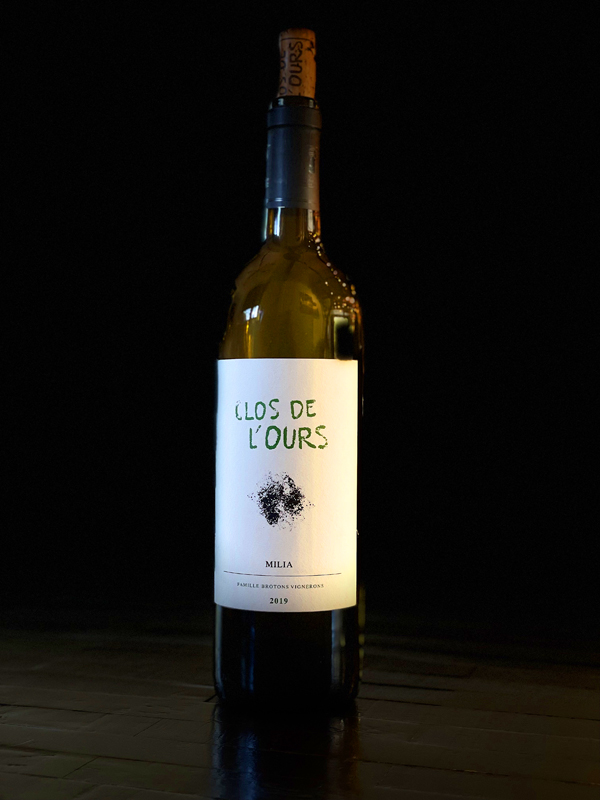
2019 Clos de l’Ours “Milia” Blanc, Provence, France.
The Clos de L’Ours Milia Blanc is made from a fresh blend of Clairette Blanc, Rolle, better known as Vermentino and old vine Ugni Blanc and is a bright and zingy white perfect for summer days, it resembles other Provence white wines, but with a sleeker and lighter profile with vibrant stone fruit, mineral notes and crisp acidity leading the way. This wine is one of a beautiful collection of small production wines at this tiny biodynamic estate, which focuses on a set of reds made with Mourvedre, Grenache, Carignan and Cinsault, similar to Bandol, while the white is more like Cassis Blanc, though without the weight or roundness, without any Marsanne in the blend. The estate’s white wine was hand picked and fermented exclusively in epoxy lined stainless steel with native yeasts and without malo-lactic conversion to promote purity and clarity, crafted from the organic and hand tended white varietals are Rolle, Ugni Blanc, and Clairette, which are grown on limestone and reddish clay based soils. This stony and zingy Provence Blanc, that opens to apricot, almond oil and tart citrus, will be fabulous with lighter cuisine, especially sea foods and is wonderful to sip on all on its own as an aperitif.
Clos de L’Our, which means “bear” after the presence of owner Michel Brotons and his drive to make world class wines, is located in Northern Provence, surrounded by beautiful forests and the estate’s vineyards are situated just south of the village of Cotignac, it is a 13-hectare property owned by that Brotons family brought not all that long ago. Importer Martine’s Wines were blown away by what they saw here and they note that some of the most well-known names in the region have quickly endorsed the Brotons’ vision and even the legendary Eloi Dürrbach of Domaine Trévallon encouraged them and sees the potential for producing outstanding wines from this site. Martine’s goes on to say, the famed oenologist Daniel Abrial (previously of Domaine Tempier and La Bastide Blanche) oversees the winemaking and assists Michel’s son Fabien as he learns to run the cellar here. Daniel Ravier, director of Domaine Tempier, recommended Daniel Abrial, after having visited the Clos de L’Ours property, his enthusiasm was a big boost to the Brotons family and they made their first vintage in 2012, which gained almost instant acclaim. I cannot wait to check out the reds, and while lean and delicate, I really enjoyed this Milia Blanc.
($35 Est.) 90 Points, grapelive
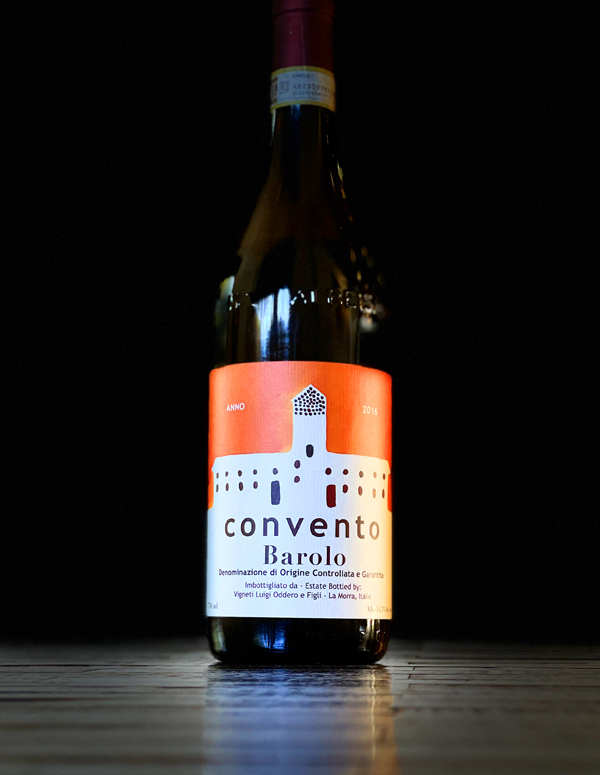
2016 Vigneti Luigi Oddero e Figli, Barolo DOCG “Convento” Piedmonte, Italy.
Part of my old world weekend of wines, the Convento Barolo from the ultra traditional producer Vignette Luigi Oddero is an austere and brickish hued, old school, savory Barolo with classic Nebbiolo flavors that are slightly obscured by the rustic tannins, this is a wine that needs food to show its best side. This is not to say it is disappointing, just style wise it doesn’t show a richness of fruit, which considering the vintage is a bit of a surprise, especially in this era of texture and concentration in the Langhe, but with a meal and air things do come together and frankly it is a nice change to feel grip and structure in a wine and this wine provides that. The medium bodied palate is earthy and stony with macerated cherry, damson plum, tart currant and balsamic dipped strawberry fruits along with hints of chalky details, saline, dried flowers, bitter herbs, tar, cedar and black licorice. This wine stays very masculine throughout, never becoming a real beauty, but to be admired for its unapologetic brisk and brusque nature, it is a dry, leathery and grippy wine that transports me back close to 30 years or so, to a time when I was first seriously exploring Barolo. The Oddero Barolo offerings come from some elite parcels in Castiglione Falletto and Serralunga d’Alba with two legendary Crus, Rocche Rivera in Scarrone as well as Vigna Rionda, one of Barolo’s upper echelon vineyards. The soils are classic limestone, sand, clay and ancient marls and all the vines see hand tending and holistic farming, which has been totally organic since the 2014 vintage and has helped bring out more energy and purity here. I bought a few bottles of this one, and I look forward to cellaring them a few more years to see how they evolve, fingers crossed for more rewards in the future, but at about 40 bucks, these are almost guilt free bargains.
It’s well noted, that the historic Oddero family, which have been active in the Barolo wine trade since the 1800s, was among the very first to bottle and market wine from this famous region in Piedmonte, and, as importer Neal Rosenthal notes, through the years the family has amassed a staggering 70 hectares of land in the Langhe, with most being Nebbiolo di Barolo, comprising over 50 hectares of prime hillside vineyards. In recent times, Luigi and his brother Giacomo co-owned the Oddero estate until 2006, but family troubles split the two and before his death Luigi set up shop in the former winery of local figurehead Luigi Parà in La Morra, with his widow Lena and children Maria and Giovanni taking the helm here. Lena hired the talented Dante Scaglioni, a native to the Langhe, who had worked for 25 years as the winemaker for the legendary Bruno Giacosa, to bring the quality up here, which by all accounts he has done. More recently, Dante has put his protégé Francesco Versio, who worked alongside him at Giacosa, into place here. Versio, himself was named Young Winemaker of the Year in Italy in 2015, is now running the cellar and has access to their vines located in La Morra, Castiglione Falletto, and Serralunga d’Alba, with smaller plantings in the Barolo commune and some in Monforte d’Alba, providing him exceptional grapes. under Dante and now Francesco’s stewardship Oddero has, as Rosenthal adds, become steadfastly organic and non flashy in the cellar. The Barolo seeing concrete tank fermentations, with lengthy almost 3 weeks of maceration, and aging, up to 36 months, in large old oak botti varying in sizes, using both Slavonian and French wood, to promote terroir nuances and transparency, which this Convento Barolo shows with the utmost clarity. I am very curious to see how Versio does here and look forward to trying the newer vintages when they become available, this is a label, I think is one to watch.
($40 Est.) 90 Points, grapelive
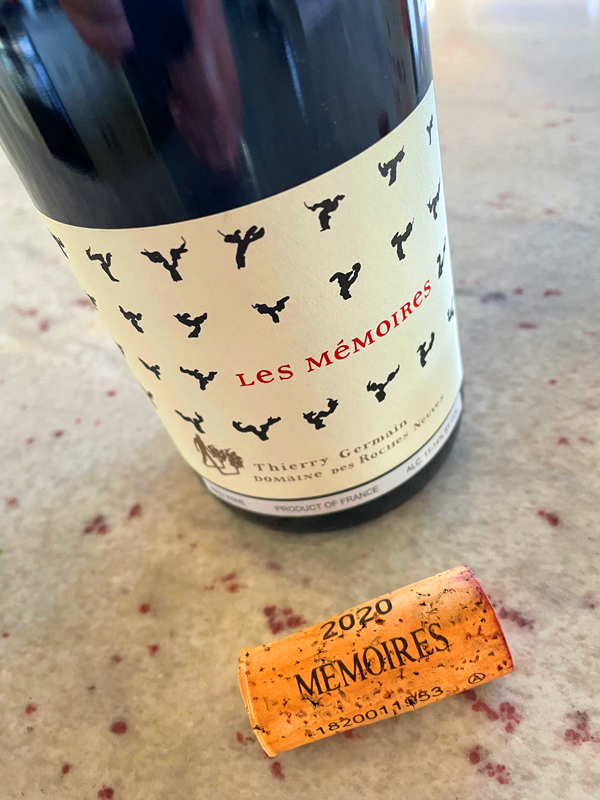
2020 Domaine Thierry Germain, Saumur-Champigny AOC, Roches Neuves “Les Mémoires” Loire Valley, France.
Wow, these Loire reds from 2020 are something very special, and this 2020 Saumur-Champigny Les Mémoires by the legendary Thierry Germain is spectacular stuff, even in its youth this wine is simply gorgeous rivaling Burgundy for elegance and showcases Cabernet Franc in its best and most pure form with stunning aromatics and seamless depth! This wine seduces the senses with violets and sultry earthiness on the nose and echos on the medium/full and satiny palate that delivers crushed blackberries, dark plum, mulberry, tangy currant and kirsch layers that is wonderfully accented by a subtle array of spices, a hint of bell pepper, chalky stones, anise, sandalwood and woody wild mushrooms. I am a huge fan, as are thousands of enthusiasts of the Loire Valley, of these Germain wines, the collection of Saumur-Champigny Rouge bottlings here are outstanding, they used to be really difficult to get, but I am grateful that Kermit Lynch which brought them into his portfolio a few years back, making them much easier to find here in the States. This Roches Neuves Les Mémoires looks to have a long and rewarding life ahead of it, and while I opened it now and loved it, those with patience will want to put a few bottles away, I can imagine this wine giving pleasure for decades, rather than years!
Kermit Lynch says that Thierry Germain’s Domaine Roches Neuves has vines, that are old, wise, and vibrantly healthy, thanks to Thierry’s biodynamic viticulture and fantastic attention to detail in the vineyards and in the cellar. Lynch goes on, adding that, Roches Neuves, whose vineyards are planted in the Saumur (Blanc) and Saumur-Champigny (Rouge) appellations, has rightfully become one of the greatest examples of high achievement in biodynamic vine growing in France. This puts him up there with the greats, that Kermit also imports, like Abbatucci in Corsica, Ganevat in the Jura and Domaine Ostertag in Alsace. Thierry Germain’s total dedication to site specific wines, some of the most distinctive Loire wines are hand-crafted from Cabernet Franc and Chenin Blanc grapes, which Kermit calls his “parcellaires,” they are very noteworthy offerings, some of the most exciting wines in the Loire Valley today, all of which I totally agree with. This Les Mémoires was made from 112 year old vines in the Saumur-Champigny zone, near Dampierre sur Loire, set on Silex Scree and Turonien Supérieur Limestone soils, seeing 100% de-stemmed grapes in the fermentation and was gently macerated in conical tanks and was then aged one year in well seasoned 2500L foudre(s) to promote transparency, natural form and terroir nuance. The lighter touch pays off greatly here and this wine, with its supple tannin and inner vitality oozes class and nobility, as well as being excellent with a range of cuisine from duck breast to simple farm cheeses.
($55 Est.) 95 Points, grapelive
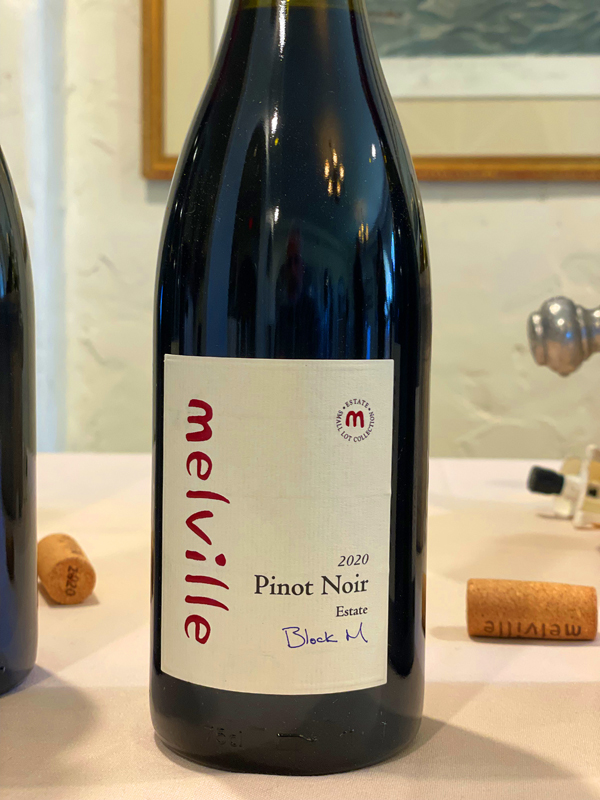
2020 Melville Winery, Pinot Noir, Estate Block M, Small Block Collection, Sta. Rita Hills.
As I was catching up with Melville’s selection of offerings I came across this M Block Pinot Noir, which I’ve never had or seen before, and found it to be one of the most compelling wines in the lineup and thrilled by the cool climate intensity along with a lush fruit density, it was highly enjoyable and impressive in the glass. The color is dark and has bright ruby edges, very inviting, and the palate is full of whole cluster tension and expressive in flavors with a rich and silky medium bodied palate of black cherry, blueberry, strawberry and red currant fruits along with a vibrant crush of herbs, cut flowers, mineral and zesty spices, all framed with subtle, but toasty French oak. As it open this Block M gains a more creamy luxurious nature in the mouth and lingers on and on, though keeping its vitality in an elegant way with delicate blood orange and Mission fig notes adding dimension here, there is definitely plenty of depth and width here and leaves a warm ripe aftertaste. The limited set of Small Block Collection wines at Melville have raised the game at this pioneering family estate in the western most part of the region, which is heavily influenced by the cold waters of the Pacific and the constant sea breezes that allows such a long and favorable growing season, with Melville’s Terraces and Sandy’s Block, along with this Block M, being fabulous terroir driven wines, pleasing on release, but having the stuffing and balance to age up to a decade or more.
Sitting above the estate Terraces on the top of the west-side hill lies Block M, as the winery notes, it is exposed directly to cold Pacific wind and intense sun on compact Botella clay, a dusting of sand, with a hardpan under the topsoil, which they say provides a dense and challenging layer for the roots to penetrate, that makes for deeper fruit concentration and smaller yields. These vines are planted with a north to south exposure and Melville has two Dijon clones (114 and 115) here and has remarkably smaller berries and clusters, all helpful in producing a rich and almost full-bodied wine, as this M Block shows. Melville, led by winemaker Chad Melville, says, clone 114 is known for its lush and tender texture, while 115 delivers higher-toned fruit components and is more pronounced structurally, they deliver a perfect ying and yang effect here, creating a striking balance of tension and pleasure. This vintage saw 80% whole cluster and was made in Chad’s gentle low intervention style and with aging in mostly used barrels to promote transparency and purity here, only 720 cases were produced, mostly going to Melville’s wine club and mailing list, with a tiny amount getting to restaurants and a small number of wine merchants. Melville has found their groove and the latest wines are delicious throughout the range, with their Syrah being a particular favorite of mine, and even the basic estate Chardonnay and Pinot Noir bottlings are really entertaining wines, making them a great way to start exploring Melville and the region, but this Block M is something rather more special indeed.
($75 Est.) 94 Points, grapelive
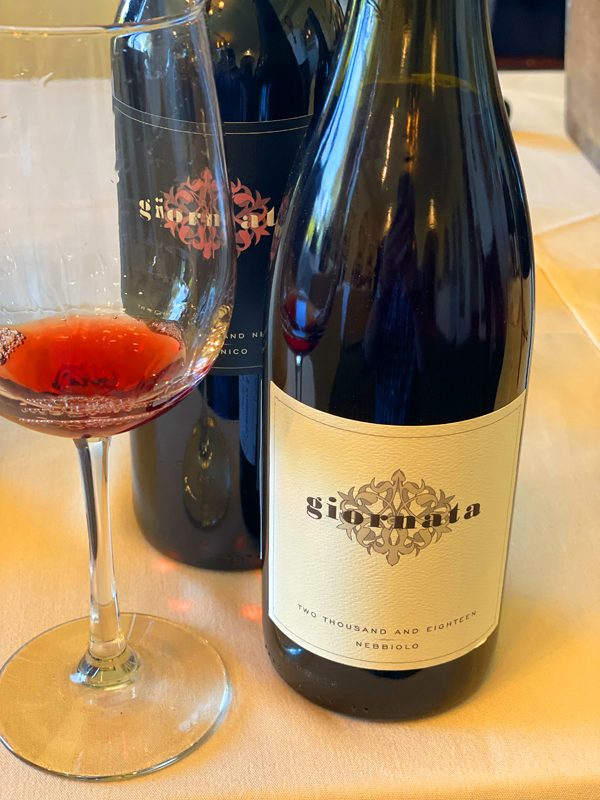
2018 Giornata, Nebbiolo, Luna Matta Vineyard, Adelaida AVA, Paso Robles.
Giornata is the creation of the husband and wife team of Brian and Stephanie Terrizzi, who have put their passion and inspiration into this label by creating beautifully made California wines that pay homage to Italian, and in case of this Nebbiolo you can really taste the Piedmonte soul here, it is a powerful and highly rewarding example. Impressive on the palate, this 2018 Luna Matta Nebbiolo shows classic varietal purity with dense California warm ripeness, which instead of being fruit forward it is rounded and puts some velvet cover to the gripping structural tannin and allows a textural pleasure to go with layers of raspberry, damson, plum, black cherry, grilled orange and earthy currant fruit and all of which is accented by truffle, black licorice, lavender spice, sandalwood and an almost minty note. This 2018 is still taut and firm, it benefits wildly by air and time in the glass where it shines with a ruby/garnet core and brickish hues on the edge, it overall is not far off its cousins from Barolo in terms of reward and style, gaining more floral and savory dimension with every sip, this is a wine you’ll want to have dinner with. I’ve really become a big fan of the Terrazzo’s wines and their latest set of offerings are the best yet, with this one being a star performer, but don’t overlook their Giornata whites and the fantastic Aglianico, which I reviewed here earlier.
Giornata, based in Paso Robles’ Tin City complex, produce a wonderful set of Italian-varietal wines from vineyards that the winery farms in Paso Robles region, mostly on the cooler west side, using traditional, old-world winemaking techniques including wines made from their signature site, the Luna Matta Vineyard, which was farmed all organic, using a mix of intriguing grapes from Fiano and Falanghina as well as Pinot Grigio in their white wines along with Nebbiolo, as seen here, and Barbera, which is deliciously fun, plus the mentioned Aglianico, which proves to faithfully capture its homeland in the glass. This 2018 Nebbiolo, as the winery notes, was carefully sorted both in the vineyard and the crushpad, seeing a lengthy maceration period, even after primary fermentation and was matured for about 24 months in oak, mostly used French oak and then over 6 months in bottle prior to release. Now sold out at the winery, this 2018, that is really coming into its own and will certainly gain more with age, might be harder to find, but well worth searching out, though I have heard great things about the 2019, which just became available and a wine I’m going to chase down soon myself. Giornata is part of a quintessential new generation of California wines that takes its inspiration from the old world, but still showing the state’s warmth of fruit and local character, influenced by the region’s chalky limestone, to become something totally unique into themselves, be sure to check out these Giornata offerings, and in particular this Nebbiolo.
($48 Est.) 93 Points, grapelive
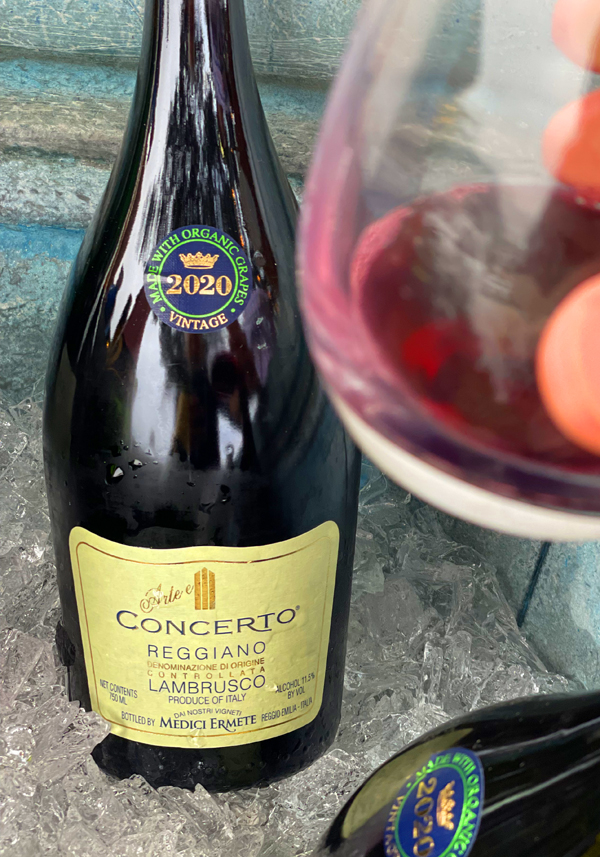
2020 Medici Ermete, Concerto, Dry Lambrusco Reggiano DOC, Emilia-Romagna, Italy.
This ancient sparkling red, Lambrusco wine, comes from near Modena in the region of Emilia-Romagna and once thought to be a workers wine and shunned by the outside world has now seen an amazing rise in quality, and with an embracement of organic farming, as this tasty dark fruited Medici Ermete Concerto shows. This wine made from the Lambrusco Salamino grape at the winery’s Tenuta La Rampata property with this being sparkling dry red bubbly that was fermented in stainless steel tank to promote fresh flavors and purity in the glass with a delicate floral note and a classic meatiness along with crushed blackberry, cherry and plum fruits that are accented by brambly spices, mineral and a touch of loamy earth. The mousse is vibrant and zesty, but the tannin structure is satiny, supple and creamy, providing balance and a pleasing form, this Lambrusco is most tasty with simple and hearty cuisine, including as the winery suggests, meat, such as salami from Felino, mortadella, culatello (salami made of lean ham), raw ham, tortellini and cappelletti (stuffed pasta) in broth, lasagne, tagliatelle pasta with meat sauce, and or tortelli stuffed with pumpkin and spices. The Salamino grape, an ancient native red varietal, is most often found in Emilia-Romagna and Lombardy, it derives its name from its cluster which is very tight and cylindrical, so much so it resembles the shape of a small salami.
The Medici family, which founded production of local wines here in Emilia-Romagna back in 1890 with a few taverns originally established by Remigio Medici, but really became a winery of note under his son Ermete, who expanded the family vineyards, which are located between the Via Emilia and the foothills of the Enza valley. After which a steady rise in quality made them one of the go to labels in the Lambrusco zone, but things got much better in recent times with the conversion to organic methods and smaller yields that employed now with the fifth generation of Medici in charge of the cellars and the vines, with the wines being handcrafted by Alessandro Medici now. The vines of Salamino are set on clay based soils that allows a more deep fruit density and they are cropped at yields 30-40% lower than the strict DOC regulations permit, to ensure the utmost quality with careful selection of the grapes. It has been fun to witness these Lambrusco wines gain a noteworthy reputation and see what this new generation of winemakers can achieve, especially producers like Roberto Maestri, who’s Quarticello Frizzante being a particular favorite, Terrevive Bergianti, Cleto Chiarli, one of the standard bearers, which is easy to find, and Puianello to name a few. This very enjoyable dark purple/garnet Lambrusco, labeled now as fully certified organic, can also be enjoyed with burgers, BBQ and or Dim Sum, if you don’t have easy access to the regional foods of Emilia-Romagna!
($26 Est.) 86 Points, grapelive
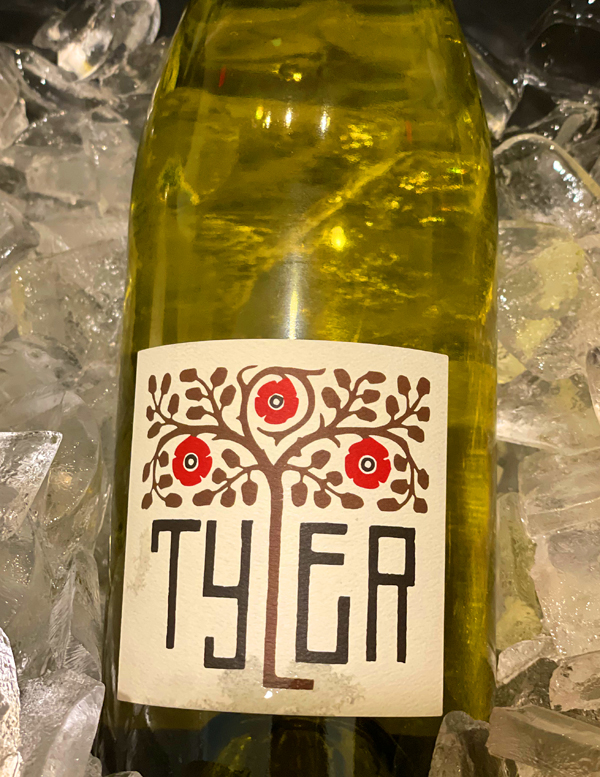
2020 Tyler Winery, Chardonnay, Santa Barbara County.
The latest releases from Tyler are quite delicious and one of my favorites in winemaker Justin Willett’s collection is this regular Santa Barbara County Chard, with its energy and mouth feel providing a nice tension and pleasure on the smooth medium bodied palate, it is an impressive wine and a top notch bargain too. This 2020 starts with citrus blossom, clove spice and bright yellow fruits before opening up to layers of apple, Asian pear, lemon and subtle tropical fruits wrapped up in a stony and steely frame along with wet river rocks, leesy bread dough, saline and delicate wood shading. Coming from sustainable vineyard sites grown on sandy loams, this bottling always showcases cool climate intensity and a depth of flavors, which is a hallmark of Willett’s wines. The wines I tried recently all showed beautiful restraint and vibrancy, with this wine being a sleek and rewarding wine to be enjoyed over the next 3 to 5 years.
Justin, who start the Tyler label in 2005, believes the winemaking starts in the vineyard and he says that he has sincere desire to have minimal impact on the environment, with all of his grapes being farmed organically, with his wines having grapes that handpicked at night, and then carefully sorted by hand at the winery before de-stemming and crushing them. In the cellar, Willett adds, that all lots are fermented using native yeast in large oak vats, and once his must and juice are dry the wines are then put down to barrel for their elevage. Everything here is all about transparency and balance and these wines have a big following, especially the Chardonnays, which are somewhat counter culture with their freshness and mineral tones being quite the opposite of the oaky and buttery style that dominates the perception of what California Chardonnay is. The Tyler wines are full of personality and vitality, but still have a rewarding textual quality and go great with a range of cuisine choices, with both the Pinot Noir and Chardonnay delivering plenty of excitement.
($34 Est.) 93 Points, grapelive
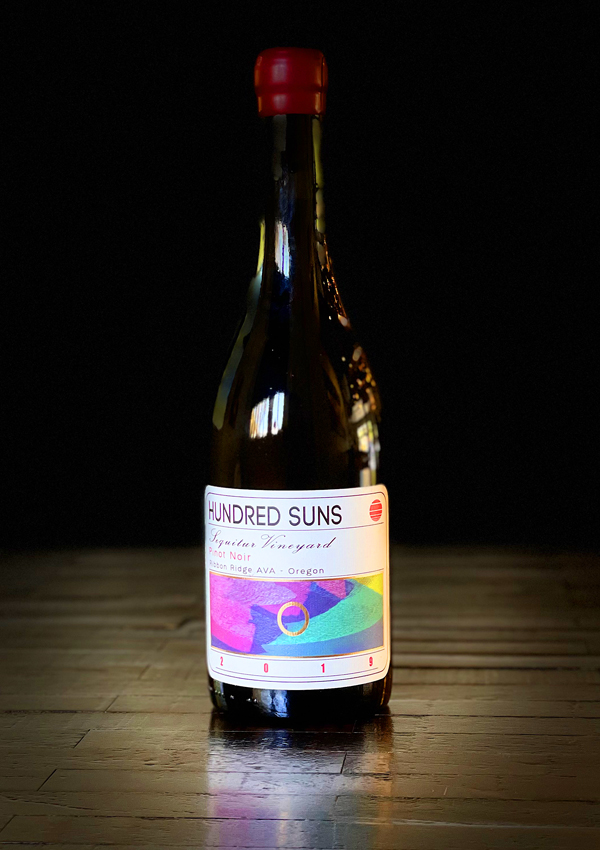
2019 Hundred Suns, Pinot Noir, Sequitur Vineyard, Ribbon Ridge AVA, Willamette Valley, Oregon.
Coming from Mike Etzel’s coveted home vineyard, of Beaux Freres fame, where Hundred Suns Grant Coulter worked as head winemaker, this 2019 Sequitur Vineyard Ribbon Ridge Pinot Noir is lovely fresh and bright with a deep ruby/garnet color and very inviting aromatics, showing rose petals and peony notes along with a range of earthy and minerally red fruits that leads to a palate that has silken layers of black cherry, plum, strawberry and tangy red currant fruits. Interestingly, as I have noticed and remarked upon many times when reviewing these Hundred Suns wines, they have vibrant almost Gamay like character to them, with this Sequitur Vineyard following that form in what reminds me of Jean-Louis Dutraive’s gorgeous and perfumed Domaine de la Grand’Cour Fleurie, which is intriguing and is high praise in my book. The vines are set at about 350 feet up in the warmer Ribbon Ridge AVA and are set in the classic Willakenzie, marine sediment soils with Etzel farming them all biodynamic and holistic care, where Grant getting a selection of clone, including Chalone, Pommard and a secret unclassified clone to make his own version. Coulter’s winemaking here is very interesting with three separate fermentation lots used with one being 100% de-stemmed, one being about 50% whole cluster, plus a tiny batch of full carbonic, that all got blended together, making for a wine with supple mouth feel, vigorous crunch with brambly spices and Chinato like herbs, as well as having a long finish. The wood aging is done in a way that almost no oak shows here which is well judged to showcase the purity and delicacy of this awesome wine.
As mentioned here, winemaker, Grant Coulter, the ex Beaux Freres star, who along with Renée Saint-Amour started their own label Hundred Suns in 2015, with a focus on small lot Pinots, of which the Shea Vineyard and this Sequitur Vineyard are two of their signature wines. The Pinots are handcrafted to show transparency and Coulter has been experimenting with the use of Amphora and always uses a significant amount of whole cluster. The wines are exceptional in their youth, but cellaring looks like a good idea, especially if you want the flavors to fold more into traditional Pinot in its profile. So I myself have put a few bottles away for the long term, with the natural acidity and backbone, they should provide rewarding drinking pleasure in the future, though such patience is hard and I love they taste now, especially with the right cuisine pairings. While this 2019 vintage is, as mentioned, was cooler and wetter than vigneron’s would have liked, causing many headaches, but Coulter prevailed and created a set of rockstar stuff and they look to have good aging potential, with his Pinots all showing their own charms, personality and sharp detailing. There is such attention to each of these brilliant wines, each vintage and wine here at Hundred Suns are incredibly distinct, these are wines that remind me of the wines of Philippe Pacalet, the mentioned Dutraive Freurie and Jean Foillard, who’s Morgon Cru Beaujolais are legendary, these wines are expressive, authentic and thrillingly energetic. Oregon is producing a lot of new labels of merit and there’s so many to be exited by, which makes me itch to get up there and continue exploring, with Hundred Suns being one winery that way over delivers for the price. The Hundred Suns Old Eight Cut Pinot Noir is their entry level wine, it is a huge bargain and utterly delicious stuff that is beyond guilt free and a great way to get started with these wines. I highly recommend getting on their mailing list and be sure not to miss these other-worldly Pinots, and not over look their Chardonnay, Gamay, Syrah, Cabernet and Grenache offerings.
($50 Est.) 95 Points, grapelive
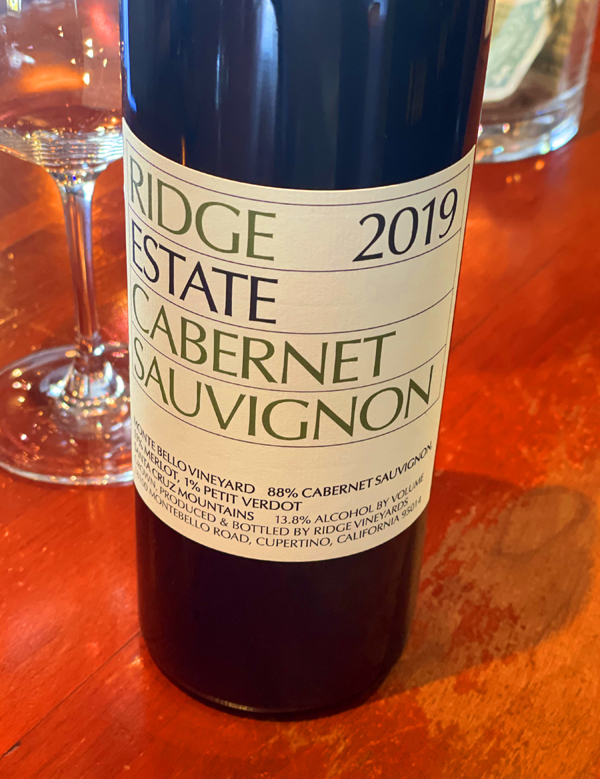
2019 Ridge Vineyards, Cabernet Sauvignon, Santa Cruz Mountains.
The 2019 Ridge Estate Cab starts with loads of fruit, still youthful and plump at this point, but as with all Ridge wines you can see its huge potential and underlying structure, these are some of the best wines California has to offer, especially this one, which is considered to be their “baby” Monte Bello, which everyone knows is one of the greatest Bordeaux style wines. Paul Draper’s Cabernet efforts are of course legendary wines, and this one looks to continue very much in that vein, even in a cooler vintage this wine is exceptional and expressive, while retaining class and has good vitality. Even though you’d be best served by cellaring this wine for a decade or more there is a lot of pleasure to be had here, starting with that rich fruit note, dark acacia flower, mineral and hints of black olives and smoky toast which leads to a full bodied palate, which is black fruited with crushed blackberry, currants and plum, along with grilled herbs, anise, coco powder, cedar spice, subtle tobacco leaf and lingering creme de cassis, vanilla and kirsch on the finish. If this estate Monte Bello vineyard Cabernet is this good, I can only imagine how good the top Monte Bello is, obviously it will be a masterpiece, such is my confidence in Ridge’s team led by head winemaker John Olney, who now has the youthful talents of Trester “Trey” Goetting, who came Ridge recently after making wines at Biale, Krupp Brothers (Stagecoach) and Ladera on Howell Mountain. The vines at Monte Bello are grown sustainably with organic farming to preserve the soils and make the very best terroir driven wines asa possible and this commitment has paid off in the wines, as this wine shows in the glass. Monte Bello sits 15 miles inland from the cool Pacific Ocean located high atop the Santa Cruz Mountains, with warm exposure and set, what the winery says are decomposing limestone and Franciscan (California shales) rock based soils that give small yields of top notch grapes, concentrated in flavor and delivering depth and complexity. The Monte Bello estate has a full set of Bordeaux varietals planted, though maybe not Malbec as much, but with Cabernet Sauvignon, Cabernet Franc, Merlot and Petit Verdot playing the leading roles here with each of the Cab Sauv, Cab Franc and Merlot getting their own bottlings in certain years.
The Ridge Cabernet Sauvignon, which I don’t think I’ve drank a bottle of sadly since the 2009 vintage, even though I’ve tried a few since, is a real treat, comes from select lots and block on the Monte Bello Estate vineyard, with this 2019 vintage being comprised of 88% Cabernet Sauvignon, 11% Merlot and 1% Petit Verdot and coming at a graceful, but nicely ripe 13.8% natural alcohol. The Merlot really rounds out the wine as a whole in this deep purple garnet wine giving it a more refined nature and helping hide the raw tannins that are hiding nicely here. This Cabernet was put together with hand picked and carefully sorted clusters, with 100% de-stemming and fermented naturally with the use of whole berries, which lasted 9 days before pressing and getting barreled down into 100% long air dried American oak with about 60% new being employed here. In barrel the wine finishes malolactic fermentation, again with only the natural occurrence of (Malo) bacteria with ten weeks of lees contact, before a gentle racking, the wine is lightly fined with egg whites and then the Cab saw an elevage of 16 months in the wood before bottling. Ridge is very open about every aspect of the winemaking and they tried to employ minimal intervention during the process and uses only a small dose of sulfur, with a tiny amount at crush and then a little during the maturing process in barrel. It was back In 1962, that Paul Draper and Ridge Vineyards made its first Monte Bello and by the 1970s it was it was highly coveted stuff that rivaled the best in the world and on par with the First Growths, very much in fact, with many vintages reminding me of Chateau Margaux and or Haut-Brian! Not too long ago I got a chance to taste a 1978 and it was glorious and very much alive and kicking, so the future looks good here, as this wine continues that legacy! Ridge never sits on its laurels and is always adding new wines and vineyard sites, they’ve even been experimenting with Pinot Noir and Old Vine Grenache, which are intriguing, and of course they hand craft an amazing set of Zinfandel based wines, mostly from Sonoma County, with their Lytton Springs being one of my all time favorites, so it is a great time to explore the Ridge collection. It was so nice to reminded how good this Cabernet Sauvignon is, and while I almost always get a selection of Ridge wines every year, sometimes I miss their Cabernet, which I regret!
($59 Est.) 94 Points, grapelive
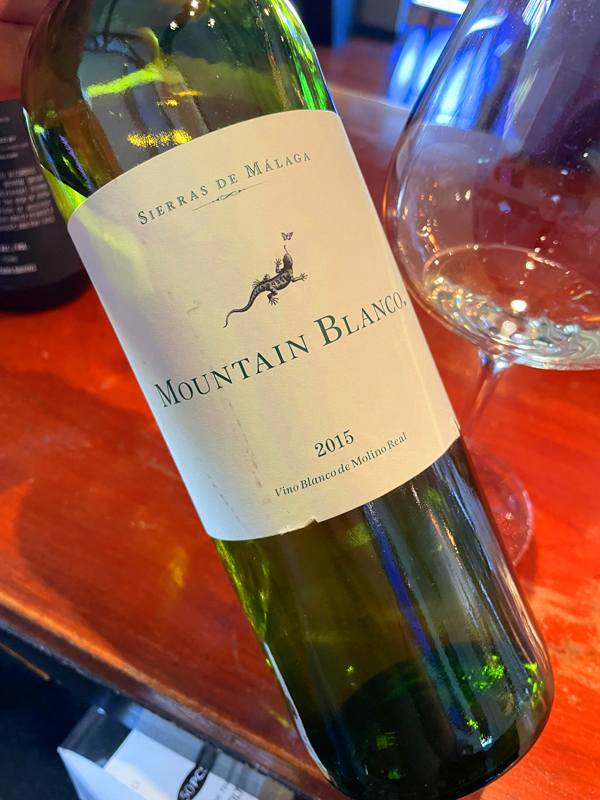
2015 Telmo Rodriguez, Molino Real, Mountain Blanco, Sierras de Malaga D.O., Spain.
What an interesting and beautiful aged white wine from southern Spain that benefits from high elevation vineyards, set on mineral transmitting slatey calcareous soils and insanely low yields to produce what may just be one of the most intriguing dry Muscat wines in the world. Telmo Rodriguez, one of Spain’s greatest winemakers, who is most famous for his work at his family’s historic Remelluri estate in Rioja, does many fascinating regional wines from lesser known areas and who has an exceptional touch with white grapes as he again proves here with this Molino Real wine made from stainless fermented and aged 100% Moscatel de Alejandría, the local name for Muscat, which is also known as Zibbibo in Sicily, which is both exceptionally aromatic, lightly earthy and textural, thrilling the senses. The medium bodied palate which is remarkably fresh, considering the maturity and the grapes natural character that leans toward sweetness, it is bone dry and flinty with the soils really shining through in this wine that opens up to reveal pretty florals, jasmine and seeped roses along with smooth layers of burnt citrus, white peach and a touch of apple fruit. There is a hint of waxiness and a long persistent finish that is uncommon in this grape, this Mountain Blanc highlights Telmo’s talents and insight into the terroir here, this wine combines Riesling like flintiness and a white Rhone’s warm Mediterranean width, depth and creaminess (oily) of mouth feel. The vines are bush trained and extremely steep, up at 350 to 100 meters above sea level to beat the hot almost African like climate below these hillsides and where they grow raisins!
Telmo Rodriguez makes some compelling wines, and as I mentioned he really does fabulously well with white varietals from crisp Verdejo in his Basa Rueda to his Remelluri Rioja Blanco, which is made from a dozen or so grapes, which he is coy about identifying, though may include some unexpected varietals for the region, regardless it is one of the most coveted of Spain’s white wines. Rodriguez searches out remote locations and these lesser known sites to apply his gifts and we are lucky to celebrate the results, with this wine being a stunning example that transcends grape and perceptions, taking Muscat to a whole new level and making it his own expression. I love dry Muscat from very few producers, including a couple from Alsace, Arianna Occhipinti’s Zibbibo, along with her uncle’s Giusto’s COS version, both from Vittoria in Sicily, as well as Mueller-Catoir’s Muskateller from the Platz region of Germany, all of which are wildly different in form and style. Most often Muscat is done in sweet versions, that can be very simple like Moscato, to incredible age worthy stickies from Chambers, Australia’s famous producer of Rutherglen fortified muscat, and France’s Muscat de Rivesaltes, which like Port can be cellared for 50 plus years. Malaga is also known for the sweet versions mainly, which makes this pale gold hued wine very unique and distinct, again it is an unexpected treat to enjoy with Tapas and or sea foods, in particular I see this going great with scallop or prawn dishes. Typically Telmo uses multiple picking passes to craft these wines and is flexible depending on the vintage to use either old oak and or stainless, as this one, as mentioned sees exclusively, but always uses native yeasts and lees aging, anywhere from 9 months to 20 months with these striking Molino Real bottlings.
($28 Est.) 92 Points, grapelive
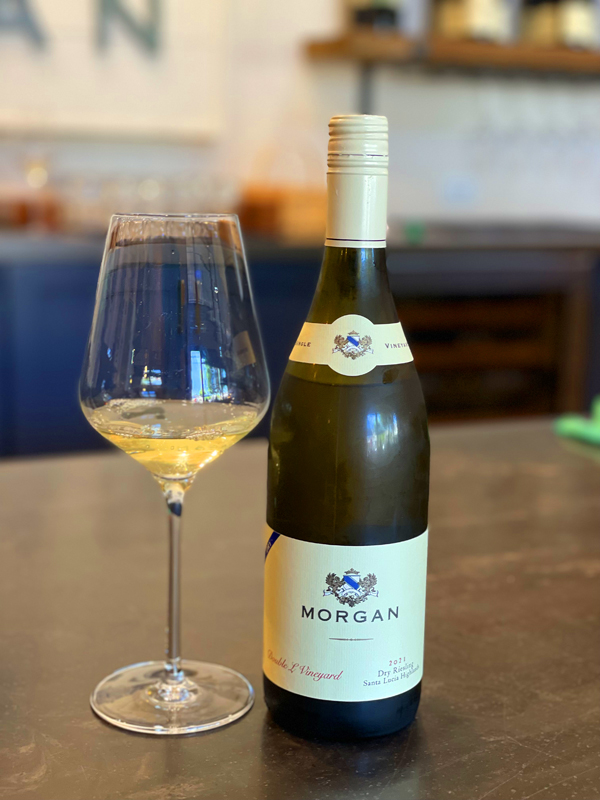
2021 Morgan Winery, Dry Riesling, Double L Estate Vineyard, Santa Lucia Highlands.
Morgan’s awesome 2021 Dry Riesling is bursting with an electric like intensity of flavors with lime aid, lemon zesty, green apple and tart peach fruits leading the way in this absolutely pure varietal and steely wine, it is incredibly impressive and exciting stuff. There is tons of personality here and bone dry salinity along with hints of white blossoms, sea shore, wet gravel/loam and chamomile in this brisk lighter framed white. The vines here are plantings dating back to 1997 making them nicely mature, they are extremely well cared for with holistic methods that owner Dan Lee pioneered here, in fact Morgan’s Double L Estate Vineyard is the only certified organic vineyard in the Santa Lucia Highlands, though now many others have seen the benefits and heading in that direction. Located at the cooler northern end of the AVA, the vineyard’s north-south row orientation provides optimal balance between the cold winds and warm sun exposure leading to perfectly ripe grapes that have beautiful fruit density and still retain refreshing vitality. The well draining sandy clayey Chualar Loams, which are granitic based soils help give this wine its mineral tones and fruit concentration, with 2021 smaller yields aiding in the depth found in this crisp Riesling. On a side note, Morgan had trouble finding “Hock” bottles, the tall thin glass that you usually see Alsace and German wines in, so they put this Riesling in their Burgundy style glass, making it harder to see on shelf, but not affecting its stunning presence in the glass. I tried this pale greenish/gold Riesling at Morgan’s tasting room in the Carmel Crossroads Shopping center, and it was available to take home, though very limited, as well as on their website.
The winemaking was simple and classic, with the Riesling grapes being hand picked, then the clusters were, as the Winery notes, foot stomped and left to macerate on the skins overnight, then the juice was cold settled after gentle pressing. This vintage, with its cool intensity, shows tons of energy, extract and vibrant fruit character which was preserved by cold fermentation in stainless steel tanks. The winery says too, that the fermentation was allowed to finish completely, thus achieving this dry or trocken style, after which the wine was rested in neutral French oak for about 4 months, this further added to the wine’s complexity and gave a little texture that cut into the bright acidity that is a hallmark of this grape. Winemaker Sam Smith and Dan Lee have experimented with this drier example of Riesling over the last few years, making only small batches, like this one, of which only around 60 cases were made, to compliment their slightly off-dry or Kabinett style version they’ve done historically, which is also tasty, by the way and great with spicy foods. This Dry Riesling joins some of the best I’ve tasted of California Rieslings, like those of Tatomer, Cobb, Desire Lines, which is my favorite in modern times, as well as classic producers like Stony Hill, Casa Nuestra, Smit-Madrone and Navarro, to name a few. This brilliant and crystalline release is just one of Morgan’s exceptional set of new wines, which include their signature Double L Pinot and Chard from the 2019 vintage, the estate Syrah, which is fabulous too, Smith, who joined the winery in 2016, has really made a huge difference here and I highly recommend checking out his latest efforts. This 2021 Dry Riesling will age well, but I love its expressive zesty youthfulness right now and see it going great with Sushi and or briny fresh oysters, don’t wait to get yours, these will go fast, as most of these are earmarked for their wine club.
($24 Est.) 93 Points, grapelive
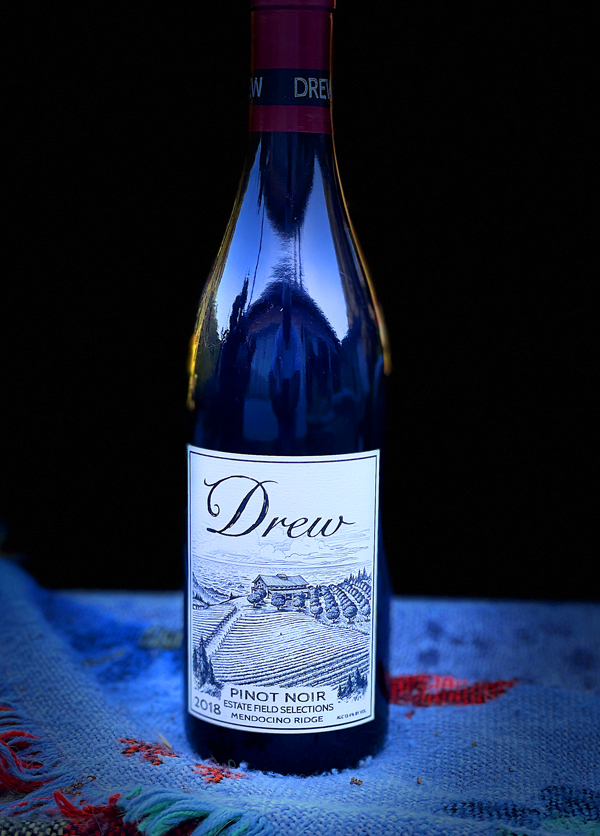
2018 Drew Family Cellars, Pinot Noir, Estate Field Selections, Mendocino Ridge, Anderson Valley.
This deep fruited and dark ruby 2018 Estate Field Selections Pinot from Jason Drew is certainly a contender for best Pinot of year so far, it is wonderfully concentrated and supple on the palate with a cool toned mineral note and lovely aromatics it is pure joy in the glass. The silken layering includes black cherry, wild plum, red berry and cranberry fruits that provides pleasing richness and complex along with fine spices, herbs, rose petals and tea added nice accents to this brilliant wine. The Drew Ranch, set on Ancient ocean floor is farmed, as they state proudly, to the organic standard continuing a long history of organic farming on their ranch that dates back close to 30 years.The climate and soils are about as ideal as one could find for a Pinot Noir vineyard in California with decomposed sandstone and shale soils, high in iron and quartzite, with a perfect ratio of sand, gravelly loam and clay that provides the material for those gorgeous wines. The marginal fertility, as Drew puts it, combined with excellent water holding capacity and good drainage makes for an extremely compelling site that is planted to a selection of clones including Pommard, 943, 115, Swan, 667 and Mt. Eden. Drew fermented this wine native yeast and employed 80% whole cluster, he hardly uses new oak, usually under 20%, as he did here, making a wine of depth and balance that rivals anything found either in California and or Burgundy. This vintage, which was cool and long, come in at just 13.4% natural alcohol, it saw an eleven month elevage in the barrel and bottled it unfined and unfiltered, all to preserve clarity, purity and freshness, as this wine shows.
Jason Drew, one of California’s best modern winemakers, has learned winemaking in both hemispheres and holds a Graduate Degree in Enology from the University of Adelaide. His CV includes several notable names in northern and central California, having worked at wineries and vineyards including St Supery, Joseph Phelps (with Craig Williams), Luna, also in Napa Valley (with John Kongsgaard), Carmenet, as well as with the legendary Cathy Corison and Babcock Vineyards with winemaker Brian Babcock. This is Drew’s release from their estate vineyard on Faite De Mer Farm on the far western coastal edge of the Mendocino Ridge . At 1250 ft and 3.3 miles from the ocean, this vineyard is the coolest in our single vineyard portfolio. The purity, structure and natural aligned acidity we get from this site are the best in our cellar. Ancient oceanic soils, providing excellent drainage coupled with the maritime climate makes for a compelling expression of our coastal forest surroundings. We planted several heritage field selections of Pinot Noir to this site along with four Dijon clones. This is a beautiful vintage for Drew and the winery recommends pairing it with Cassoulet or Roast Chicken. There is so much to admire here on the 2018s from Drew, with this Estate Field Selections being expectational Pinot Noir, no matter your preference either Burgundy or California, you are going to love this wine and it will continue to age for another decade and more. I have enjoyed what I’ve tried from 2019 and 2020 so far too, but this vintage has really come into its own and has me spellbound, as much as I want to open the rest of these bottles, I want to be patient and cellar them, but after this one it looks like a tough ask! The background savory elements, fruit density, subtle wood and the vitality of the acidity really do point to future rewards for this gorgeous Pinot!
($60 Est.) 96 Points, grapelive
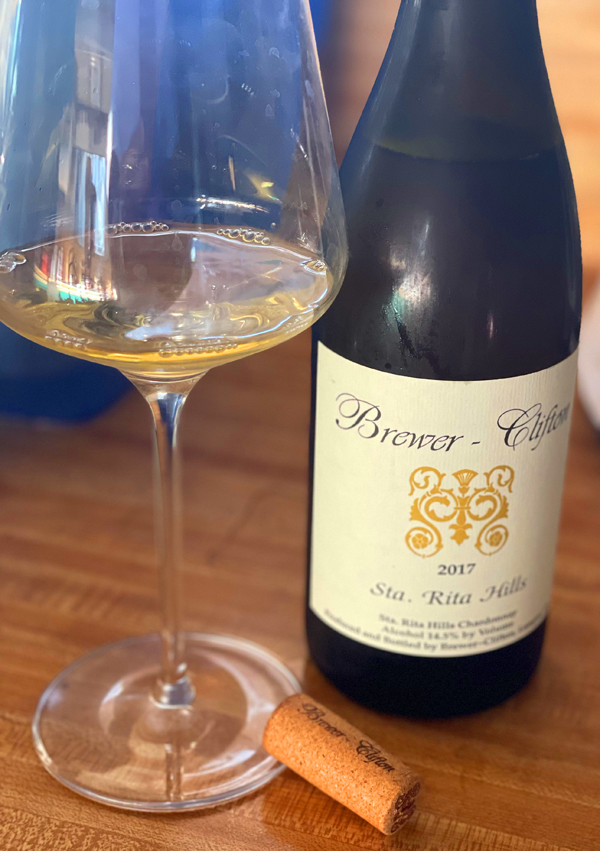
2017 Brewer-Clifton, Chardonnay, Sta. Rita Hills.
Few wines offer the bang for the buck than these Brewer-Clifton Sta Rita Hills series, especially the Chardonnay and this 2017 is in a great place right now, I’m glad I forgot about it and gave it an extra few years of age, it has a nice level of maturity and remains crisply fresh and great with food. The full bodied palate has a pleasing texture, but there is plenty of energy and the natural acidity is lively, adding balance and highlighting the core of apple, lemon curd, golden fig, kiwi, peach and pear fruits along with white flowers, clove spicy notes, wet stones, subtle oak shadings and mineral tones. This vintage, warm and ripe is classic and reminds me of the best of California Chardonnays with elements that bring Hanzell and or Mount Eden to mind, especially after it opens up. This pale gold Chardonnay adds some saline, leesy hazelnut, a touch of tropical essences and clarified cream notes with air and has a regal presence, lingering elegantly on and on. Brewer-Clifton has some amazing vineyards to work with including their own 3-D, Machado and Hapgood sites which are sustainably and meticulously farmed for top quality fruit. Greg Brewer is truly gifted as a winemaker and always crafts wines of purity and transparency, this is especially true in his Chards, and to this day his 2000 vintage Mount Carmel Chard remains one of the all time great California Chardonnays I’ve ever tried.
One of the wineries that started the Sta. Rita Hills craze in the mid nineties Brewer-Clifton, originally the partnership of Steve Clifton, now making his own La Voix wines, and Greg Brewer, one of the most influential winemakers of his generation, who still crafts these wines, but under the ownership of Jackson Family Wines, who have allowed Brewer to take the vineyards and wines to the next level, as well as encouraged Greg to continue with his own personal projects Diatom and Ex Post Facto. Brewer-Clifton, founded in 1996, started the Sta. Rita Hills Series wines back in 2007, and these wines are their gateway wines, made from the top lots of each of their Cru vineyard sites! They are a great value and are not seconds or lesser barrels, these wines are everything the single vineyard wines are, but just blended to make the best wine possible, as this 2017 SRH shows. The ocean plays a big role in the wines, with vines set in sandy oceanic soils and seeing cool marine breezes which lengthens the growing season, while taming in natural alcohols, and Brewer uses most neutral barrels to clearly express the terroir and the region’s full array of rich flavors. While a long time fan of Greg’s wines, I am usually focusing my attention on his Pinots, but this delicious wine really makes the case for getting more of the BC Chardonnays!
($40 Est.) 93 Points, grapelive
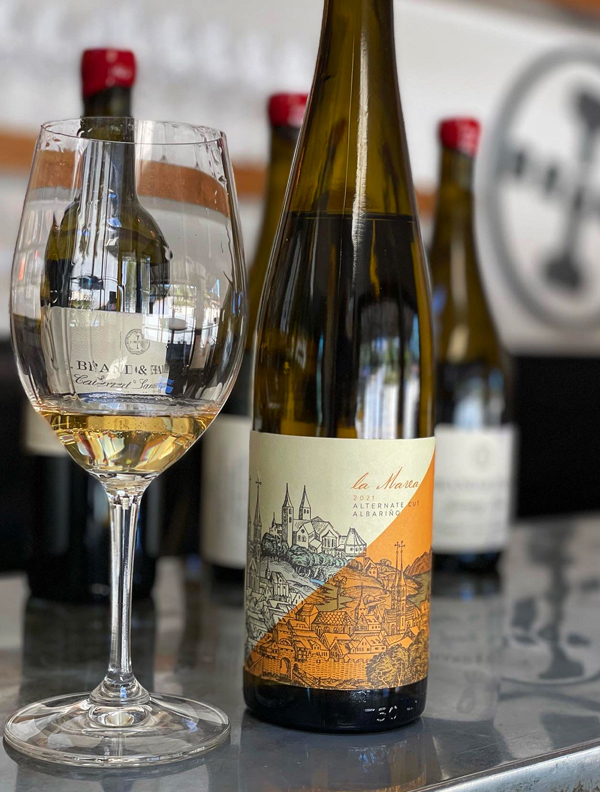
2021 La Marea by Ian Brand, Albariño “Alternate Cut” Kristy Vineyard, Monterey County.
The latest Albariño from Ian Brand, under his Spanish inspired La Marea series, is the “Alt Cut” version that saw a short skin contact and fast maceration before fermentation that adds to the complexity, dimension and texture here in a fresh and salty dry white wine that is perfect for these warm Summer days. The 2021 is bright and vigorous with a light golden color in the glass and is stony on the lighter framed palate that delivers a ton of racy citrus, tart apple and apricot fruit along with a steely core of minerallity, hints of white flowers, saline and wet flint. Just about two barrels of this Albariño “Alternate Cut” were made and it is limited to tasting room sales, such is the popularity of Brand’s Albariño that the regular bottling is already sold out, so if you are a fan of this grape you’ll have move fast to get any of this one. The Alt Cut is delicious with almost anything and in particular it goes great when paired with fresh local sea foods and or soft farm cheeses.
Ian Brand, who was winemaker of the year in the San Francisco Chronicle in 2018 and a vineyard whisperer, sources his Albariño from the Kristy Vineyard, which sits within a western bench over the Salinas River, that Ian says, atop a fan of broken siliceous/calcareous sediments that gives his wines a terroir influenced character, with vines that bask in the warm California sunshine and receive cool coastal breezes, retaining brisk acidity. Brand’s collection of interesting whites is not limited to his La Marea Albariño(s), he has a beautifully smooth Ramato (Skin Contact Pinot Gris), a rare Arneis, a grape from the Piedmonte region of Italy and his Chalone Melon de Bourgogne, once called Pinot Blanc, coming from this historic region’s noteworthy chalky soils. All of which are beautifully made and are well worth chasing down, along with the range of red wines, especially Brand’s Cab Franc and Grenache offerings. I even got a sneak peek of Ian’s upcoming 2021 Paysan P’tit Pape Rhone (Chateauneuf) blend, which will sell for about $25, but tastes like a $50 wine! There’s a lot of tasty stuff here and I recommend grabbing a bottle or two as soon as possible!
($28 Est.) 92 Points, grapelive
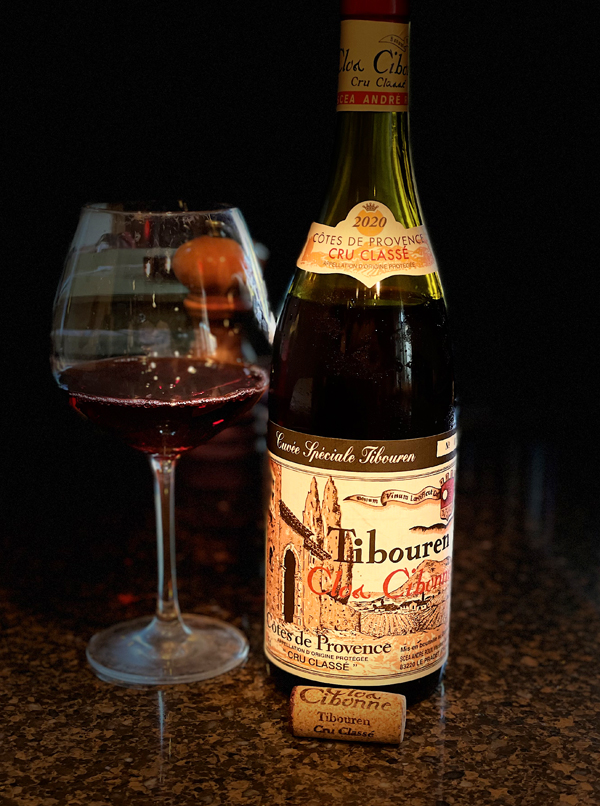
2020 Clos Cibonne, Tibouren “Cuvee Speciale” Rouge, Cru Classe Cotes de Provence AOP, France.
While usually, I just drink up their outstanding Rosé, I am finding that Clos Cibonne’s Cuvee Speciale red is almost as addictive, especially this latest 2020 version, with its ruby hue and complex palate. This Clos Cibonne Rouge, from the Cotes de Provence region, is made with the rare and ancient Tibouren grape, unique in the modern world with its less opaque color, high acidity and earthy quality. These Clos Cibonne wines are some of the coolest and most distinct wines in France, and this Cuvee Speciale Rouge, which a personality of a Jura Trousseau that mated with a Greek Xinomavro, it is a medium bodied wine with firm tannins and vibrant acidity that more often than not shows an almost Nebbiolo like character. This vintage, which has a ruby/garnet hue, is quite rustic, austere and dusty dry with red currant, plum, red berry and burnt orange fruits, along with dried herbs, almost amaro like, leather, anise and chalky stone accents. Clos Cibonne’s André Roux, almost single handed, resurrected the Tibouren in the 1930s when against current fashion planted his estate almost exclusively to Tibouren, instead of the more common imported Grenache and Mourvedre. This Tibouren revival, according to local lore, ignited an era that brought fame for the iconic Rosés of Clos Cibonne, which led to the estate’s inclusion in a 1950’s classification of 18 Cru Classés in Côtes de Provence. André Roux was also instrumental in the creation of the Côtes de Provence appellation in 1973 and responsible for the inclusion of his beloved Tibouren grape into the region’s list of official and accepted grape varieties, as well as allowing it to have that Cru Classe on the label. This Rouge benefits from a good food pairing and air, which brings out more personality, floral detail and length, in fact day two brought some serious extra dimension, making wish I had a few more bottles!.
The Tibouren grape, as I’ve mentioned many times, is believed to be an ancient variety, maybe originally grown in Mesopotamia, that was propagated by the Greeks, though it is odd that it doesn’t look to have survived in their own territory, before being transported by the Romans to Italy, where it found a great home in the Liguria region just south of Genoa and not far from Portofino, where it is known as Rossese and makes some of the most underrated and divine wines in Italy. Clos Cibonne has became synonymous with Tibouren ever since it received special permission from the Provence appellation governing body to list the grape on its labels and as noted, allowed Clos Cibonne in the elite Cru Classe group there. The estate’s vineyards, all farmed organically and set on clay and calcareous soils are located a stones throw from the blue Mediterranean sea, a mere 800 meters from this famous coastline and are surrounded by hillsides that faces the sea, a perfect southern exposure to capture the sun in what is a natural amphitheater. This provides conditions and an air circulation that is perfect getting the Tibouren ripe, but also keeping refreshing acidity and a saline element that adds energy, balance and a vivacious personality. After the Tibouren grapes are harvested, all by hand, they are directly cool pressed and fermented in stainless steel and the grapes were macerated on the skins for just under a week. After which, the Clos Cibonne Cuvee Speciale Rouge saw a short lees aging period, usually this lasts just 4 to 6 months, and as always in used barrels to promote purity of flavors as well as a more savory profile. The Rosé at Clos Cibonne, especially the old vines version is one of the most coveted and complex dry pink wines there is and it can age too, it has to be one of my desert island wines! Every year, I crave more and more of these Clos Cibonne wines, they just hit the spot and provide plenty of mental and physical pleasure, I highly recommend tasting through their lineup.
($35 Est.) 92 Points, grapelive
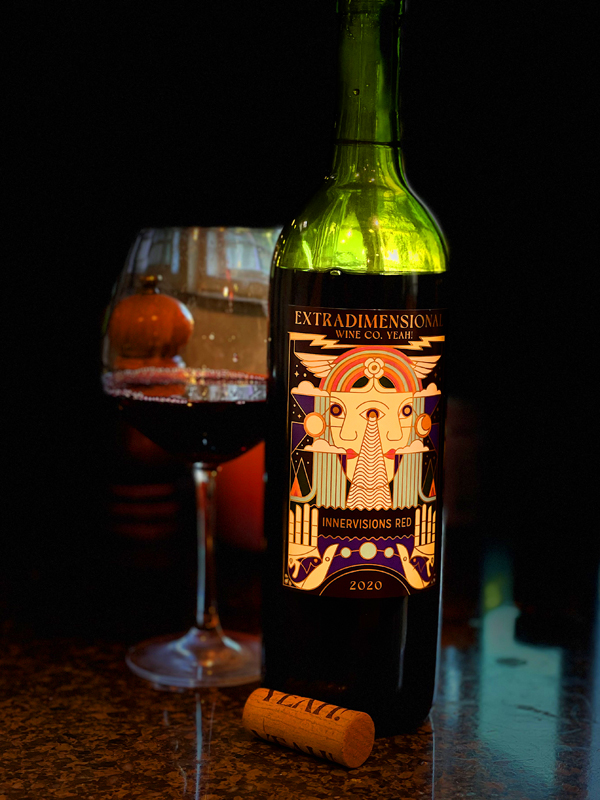
2020 Extradimensional Wine Co. Yeah!, Innervisions Red, Sonoma County.
Hardy Wallace’s Extradimensional Wine Co. Yeah! label, a follow up to the Dirty & Rowdy Wines, continues his fantastic exploration of (his) wild fever dreams in winemaking with his latest set being a mind blowing collection of seemingly impossible concoctions, which include skin contact white varietals mixed with deep red grapes that straddles the insane, but somehow fold together in seamless fashion, with this Innervisions Red being one of the more tasty examples so far. The beautifully perfumed and grapey Innervisions Red is Zinfandel based blend of all organic and dry farmed grapes that include 75% Primitivo clone Zin, 10% Grenache, 10% Chenin Blanc, 3% Carignan and 2% Barbera, a grape Hardy has a real touch with, and interestingly no Mourvedre, his signature grape. This vintage, which has just 10% of Chenin Blanc, is very deep in color and flows across the palate with black raspberry, blueberry, plum and Italian cherry fruits along with dark florals, wild herbs, clove and briar spices, cedar, bay leaf and dried Turkish fig. These wines are on the funky natural side of the spectrum, though this bottling is more fruit forward and while not for everybody, it does excite the senses and is very good with simple and robust food choices, as it was with a pizza last night. I also want to remind you of Hardy’s Summer-Salters Rosé, a blend of 50% Primotivo and 50% Mourvedre, that I reviewed recently, is my favorite Extradimensional Wine Co. Yeah! so far, with this wine being a close second.
The Extradimensional Wine Co. Yeah! wines are naturally fermented with native yeasts and see long maceration(s), with most all the white grapes seeing skin maceration as well and they are mostly raised in neutral, well seasoned French oak barrels to preserve purity, nuance and highlight the unique profiles of each wine. Since leaving Dirty & Rowdy behind, Wallace has been set free to explore his own path and it has been a bit like watching Alice in Wonderland, with some paths leading to funkville, while others, like this Innervisions Red, being more crowd pleasing, but still with its own personality. Wallace says his Innervisions Red is a nod to Stevie Wonder’s funk / soul album, Innervisions, most known for the masterpiece, Higher Ground. Adding that, you should put some Innervisions in your glass and blast the album, this song and this wine operate on multiple levels. Hardy continues that both are a call to keep on moving and cycling through to the Extradimensional, whether you want to dance or trance, this will get you there. Me, less a fan of the music, does find this Innervisions Red delicious with a sort of old school charm. If you are a fan of the bizarre and especially orange wines, you’ll want to get on the mailing list, all of Hardy’s wines sell out fast, but even if you are more mainstream, you’ll find some tasty things as well, with this bottling and the 100% Mourvedre being excellent choices. Wallace, who exclaimed the 2020 Innervisions Red’s aromatics are ecstatic! Suggests drinking this wine, after decanting it for 45 minutes to an hour, with anything juicy cooked over charcoal or wood fire and served on a bed of wilted arugula and dusted with herbs.
($47 Est.) 91 Points, grapelive
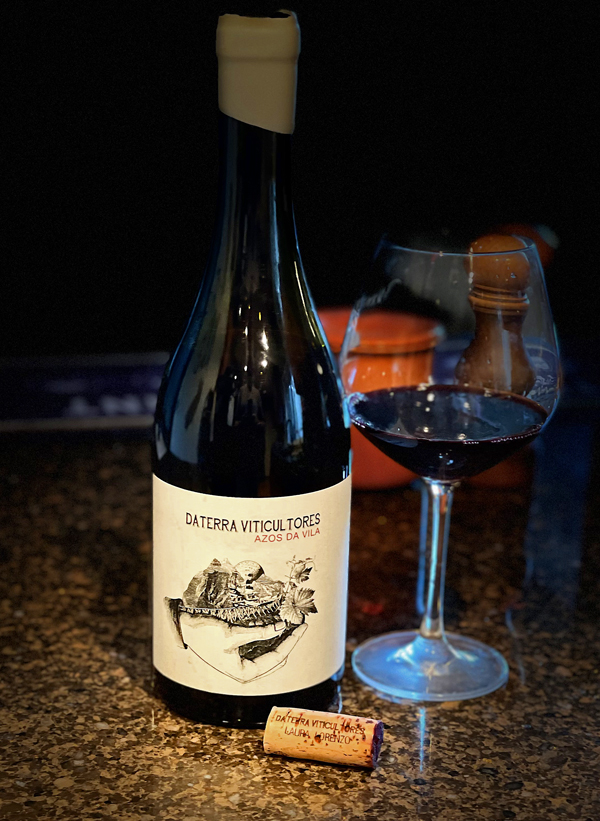
2019 Laura Lorenzo – Daterra Viticultores, Azos de Vila, Vino Tinto de Manzaneda, VdT Val do Bibei, Galicia, Spain.
One of my favorites, Laura Lorenzo’s Daterra Viticultores Azos da Vila red field blend comes from old vines, between 80 and 120 years old, sourced from plots in the Val do Bibei, which is a sub zone of the Ribeira Sacra in Spain’s Galicia region. This cuvée is made from native varietals that are inter-planted on the remote hillsides above the Sil River and it tastes very distinctly of this cool Atlantic influenced region that was first cherished by the Romans. The 2019 is absolutely a thrill to behold with its deep purple/garnet hue inviting you in, along with a floral and spicy bouquet, and a medium bodied palate that is brisk and lively with a pretty layering of blackberry, plum, cherry and blueberry fruits. In the background there is minty herbs, cinnamon, earthy notes and mineral tones that all make this wine complex and intriguing. In the cellar the grapes were partially de-stemmed, with a small bit of whole bunches included and fermented, as Lorenzo notes, using indigenous yeasts in used chestnut and French oak barrels with a two week maceration, after which she then raised the Azos de Vila for 12 months in the same barrels. Her techniques and light touch are to be admired with this Azos da Vila really showing well and it is as pure as can be, I highly recommend these latest Daterra Viticultores offerings, made mainly from Mencia in the reds and Godello, playing a big role in the whites, which come from unique sites in the greater Ribeira Sacra and Valdeorras regions.
Laura Lorenzo, as mentioned here, is one of the Ribeira Sacra’s rockstar winemakers and her wines, like this Azos de Vila are incredible wines that showcase her talents and have a true sense of place. This Azos de Vila, which she calls her Tinto “village cuvée” is a field blend of local varietals, some unknown outside this remote region, including Mouraton, Mencía, Garnacha Tintorera, Merenzao and Gran Negro, that are organically farmed on the almost impossibly steep slopes on a mix of Granite, Gneiss, Clay, Slate and Schiste soils. Lorenzo’s Azos de Vila comes from many Pueblos including the tiny villages of Seoane, Soutipedre, Langullo, San Vicenzo that make up part of Manzaneda, all from plots, as noted above, close to 100 years old. The vines are mainly terraced and are within the Val do Bibei, which is part of the Quiroga-Bibei subzone, where the cool Atlantic influences collide with the warmer continental climate. Lorenzo, who works the vines and guides her wines with all natural and organic methods, got her start at the Ribeira Sacra estate of Dominio do Bibei, helping to put their wines on the world stage, before founding her own label in 2014. Lorenzo also did influential stints internationally and has worked with the iconic Eben Sadie in South Africa at the world famous Sadie Family Winery, plus she also was at Achaval Ferrer in Argentina, both of these experiences had an impact on her wines. These brilliant 2019s from Laura Lorenzo are beautiful wines that benefit greatly by being paired with simple cuisine, with this Azos de Vila going fantastically with meaty dishes, but having the flexibility to play nicely with more delicate foods, these are very rewarding wines to chase down.
($35 Est.) 95 Points, grapelive
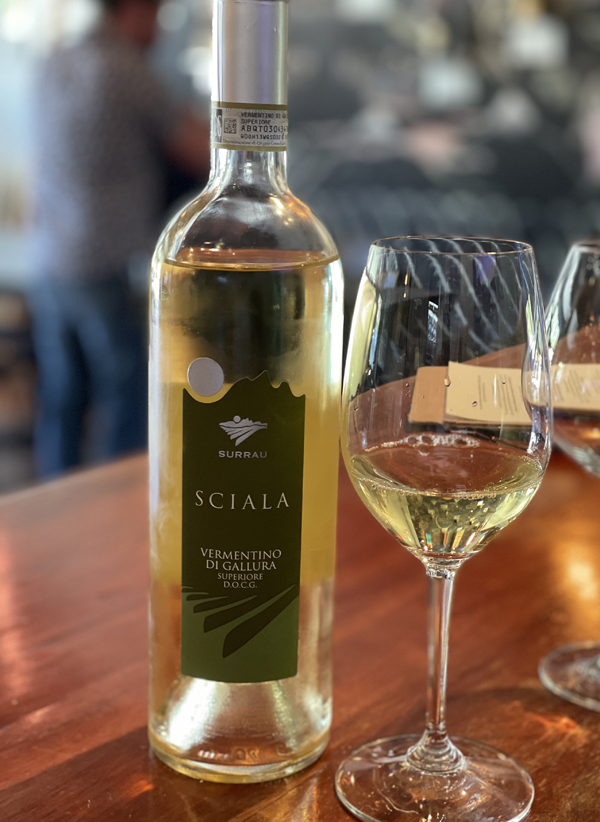
2020 Vigne Surrau, Sciala, Vermentino di Gallura Superiore DOCG, Sardinia, Italy.
The Surrau 2020 Sciala Vermentino di Gallura is nicely balanced with zesty details and a rounded and pleasing texture, it is layered with rich stone fruit and racy citrus, making for tasty white wine that goes with everything from oysters to lemon chicken. There is bright peach, melon, tropical fruit, green apple, lemon and fig to enjoy with a burst of zingy acidity, a touch of wet stone flinty notes, a light floral bouquet and delicate bitterness that cuts perfectly into the ripe textural quality. Gallura, which means “stony area”, was the first and is only Sardinian DOCG, is set on granite-based soils that gives these wines their mineral focus, while the Mediterranean climate provides lush ripeness and a salty freshness. The Vermentino di Gallura DOCG wines are some of the finest white wines in Europe, but still somehow remain undiscovered and way under the radar! The Demuro family founded the Surrau winery in 2001 and have become one of the better names to look for with a collection of wines that are focused on purity and terroir, which this this wine shows. There nothing out of the ordinary here, nothing fancy, just good grapes, grown with sustainable methods, that winemaker Mariolino Siddi ferments and ages in stainless steel. Siddi gives this 100% Vermentino a brief skin contact before a temperature controlled fermentation that takes place in stainless-steel tanks where the wine continues to be in contact with its lees for about six months. After aging the wine is racked and lightly filtered, then it is bottled and rested another month in the cellars before its release. The Sciala comes from 20 year old vines, which change depending on the vintage to create the best expression as possible, set on sandy soils with an underpinning of weathered granite at an altitude of 100 meters, which allows for loads of sea influence and a warm nature, which comes through in this wine
Located in Porto Cervo, in Arzachena, on the Island of Sardinia, Vigne Surrau is a new producer to me and I tasted through their exciting range of red and white wines, finding them all delicious and expressive bottlings, with this Sciala Vermentino and their entry level 100% Grenache Naracu Cannonau di Sardegna DOC really standing out for quality and value, the range of Vermentinos here go from bright and fresh to deep and luxurious, with this one having a fine balance in between. Sardinia is in the middle of the Mediterranean Sea and is Italy’s second largest island, after Sicily, it is a rugged and remote mountainous place that has bred a tough and independent people that have a long and proud history both as a civilization and as a wine producing nation, maybe Europe’s oldest, well before becoming part of the Italian republic in the 1860s. The terroir on Sardinia is a unique mix of rocky and deep sandy soils that are surrounded by unspoiled wilderness, and as the winery notes, oak and cork tree forests and a thorny scrubland of herbs and cacti known as the macchia mediterranea. In stark contrast to the harsh interior, the island has over 1,200 miles of jagged coastline, which is home to some of the most pristine beaches of the Mediterranean, which the locals have to share with the rich and famous that keep building holiday villas. In one of these spectacular coastal settings is Costa Smeralda or the Emerald Coast, which is located in the northeast corner of the island, it is home to the largest and most important wine zone in Sardegna, this is the Gallura zone, famous mostly for Vermentino. I’m itching to visit Sardinia and really explore the wine growing areas, I mean who isn’t? Until then I will enjoy as many different wines from here as I can. That said, I am certain I’ll enjoy this Surrau Sciala bottling many more times, it is a delicious and expressive lightly golden Vermentino that captures a sense of place, it is also nicely priced and I recommend it to those that have had enough of boring New Zealand Sauvignon Blancs!
($28 Est.) 90 Points, grapelive
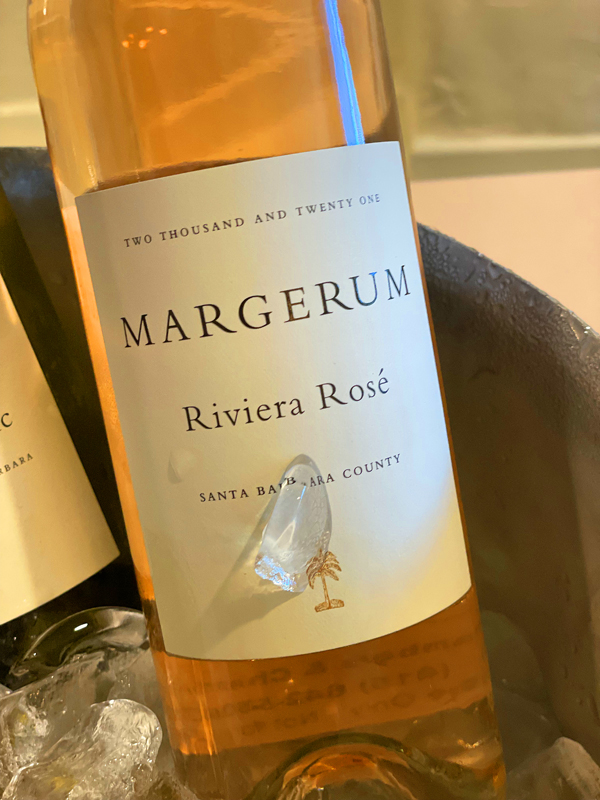
2021 Margerum Wine Co, Riviera Rosé, Santa Barbara County.
It was great, as noted in a recent review of one of their wines, to catch up with Margerum and their latest releases, especially this Riviera Rosé which is done in a bone dry style that reminds you of the Provence version and relies mostly on Grenache, that gives this wine a brisk, but flavorful presence in the glass and makes it very inviting. This 2021 vintage is one of the best versions I’ve tried from Santa Barbara’s Margerum Wine Co, led by Doug Margerum, a local legend in the region, its ultra pale pinkish/salmon hue and mineral driven profile delivering a fine performance. The mouth is bright, steely and taut with ruby grapefruit, sour cherry, strawberry, watermelon and pomegranate fruits, along with a touch of spice, rosewater, garden herbs and wet stones. Perfect for the Summer season and great with lighter meals and a variety of dishes, including sea food stews, picnic fare and farm cheeses. Margerum’s current collection is tasty stuff, from this wine to their signature Rhone varietal wines, in particular their Syrah(s) and red blend M5, which is delicious and full bodied value. That said, Margerum does some impressive whites too and their Sauvignon Blanc is defiantly worth chasing down, it is one of best you’ll find on the Central Coast.
The Margerum Riviera Rosé was made from primarily Grenache 86%, and blended with 7% Counoise, 5% Syrah and just 2% of Mourvèdre, all the grapes were sourced from selected vineyards and plots within the greater Santa Barbara region, including the Margerum Estate Vineyard in the Los Olivos District, as well as Portico Hills, Kingsley, Camp 4, Zaca Mesa, Lieff Ranch, and Riata Oaks vineyards. The process with this Dry Rosé was to make a crisp and refreshing wine, but one that had enough ripe flavors and texture to please the palate, so Margerum used mainly grapes specifically for their Rosé production, harvested a bit early then crush and immediately pressed to stainless steel tanks for a very cold fermentation to preserve the freshness. The wine also sees various lots of Counoise, Syrah, Mourvèdre and other Grenache lots that were saignéed, which gave a bit more color and richness. Margerun adds, that Saignée is a winemaking process where riper juice bleed off a portion of the must from a red wine lot right after crush. Since most of grapes came in with lower sugars, the finished natural alcohol is just about 12% and to preserve vibrancy 97% was aged only in the stainless with a tiny amount seeing a couple of months of neutral oak. If you’ve not experienced with these Margerum wines, it is a great time to explore them, they are all solid efforts.
($26 Est.) 91 Points, grapelive
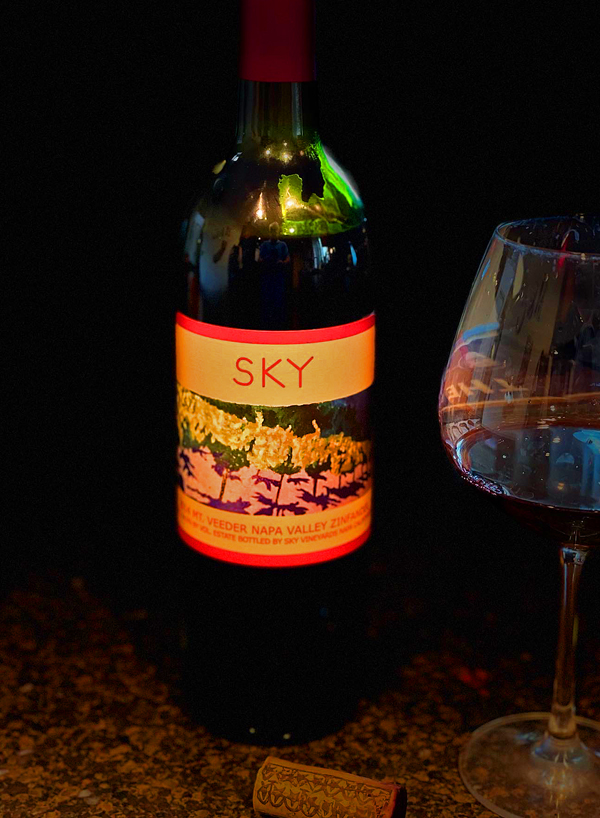
2014 Sky Vineyards, Zinfandel, Mount Veeder, Napa Valley.
The nicely aged and mature 2014 Sky Mount Veeder Zinfandel is drinking well and showing an almost Bordeaux like character, with a rounded mouth feel and a beautiful mix of dark fruits, mineral tones, loamy earth and subtle floral notes with a rustic charm that is highly compelling. I love the 2014 vintage in Napa, I admire the fruit concentration and cool edgy acidity that adds an elegant and lively energy and that shows here in Sky’s rustically charming Zinfandel, it’s a wine that hides its fruit density and revels in its brambly spiciness and lower alcohol, especially when compared to some other modern examples. The palate is starting to evolve in this dark purple/garnet terroir driven wine that has integrated layers of briar laced black raspberry, dark currant, plum and earthy mulberry fruits along with hints of acacia flowers, raw cedar, minty herbs, pepper, cinnamon and anise. The raw tannin, from this vineyard which towers above old Sonoma in the Mayacamas Range, gives this wine a distinctive presence and it was made with transparent, traditional and natural methods that allow this hillside vineyard its true sense of place. The hand labeled Sky Zin, with art done by the winemaker himself, always has some sediment and tartaric crystals with this 2014 having quite a bit, so a gentle decanting is recommended, but the wine drinks divinely and was excellent with my simple garden fresh meal, I absolutely love these Sky wines.
Sky Vineyards says the 2014 Napa Earthquake shook them pretty hard, right in the middle of our Zinfandel harvest, adding that although a major disruption in the area, it did not disturb the the final outcome or stop the classically intense mountain fruit profile, the fresh acidity, or the balanced tannin structure from showing in this old school Zin.The organic and sustainable Sky Vineyards, set on red volcanic soils, is located high up between Napa and Sonoma valleys, as they say, it is nestled near the crown of Mt. Veeder and open to the expansive sky, hence the name. The vineyard is a total of fourteen acres, and is planted at an elevation of 2100 feet on a prime eastern-facing hillside, an exposure that lets their Zinfandel and Syrah vines ripen completely, while retaining vitality, through their sunny days and fog-cooled evenings. One of the state’s Zin legends, Lore Olds handcrafts his wines with small batch fermentation(s) in open top one-ton bins with native yeasts and the wines see lengthy maceration(s) with rigorous punch-downs, usually three times a day until the wine is basket pressed to barrel. Sky uses well used French oak barrels and the elevage is typically just over a year and then the wine is rested in bottle a few years to mature before release. It should be noted that Sky is still recovering from the devastating 2017 fires, but even losing the home and part of the vineyard hasn’t stopped them and the wines continue to provide enormous pleasure, especially this 2014 Zin, I highly recommend grabbing a few bottles while they are still available.
($45 Est.) 93 Points, grapelive
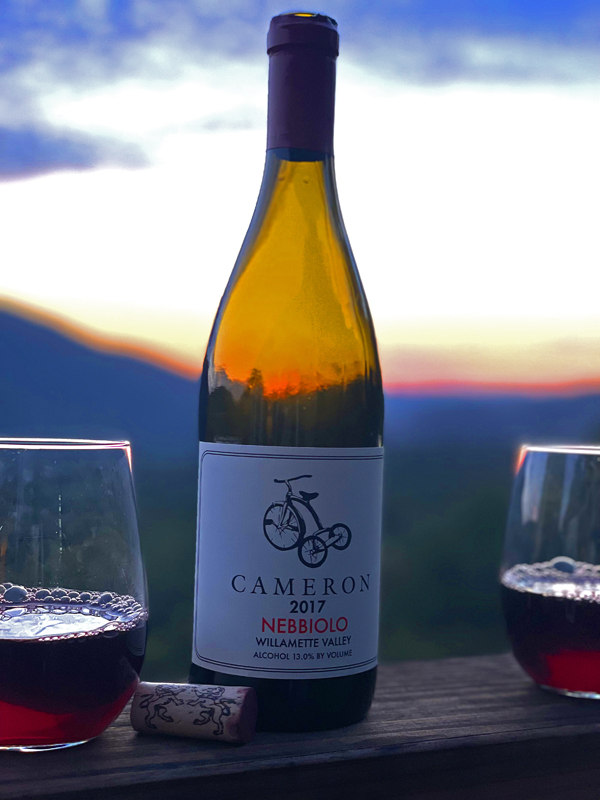
2017 Cameron Winery, Nebbiolo, Dundee Hills, Willamette Valley, Oregon.
The 2017 Nebbiolo from Cameron is beautifully balanced, aromatic, ripely flavored and flows crossed the full bodied palate with a sultry earthiness and pure varietal character, that could easily be mistaken for a true Barolo, all together this is brilliant and impressive stuff. The Cameron Nebbiolo, with its radiant red fruits, including raspberry, black cherry, damson plum and mulberry, is sourced from the winery’s estate Clos Electrique vineyard in the Dundee Hills, set on the classic Jory (volcanic) soils, and handcrafted by winemaker John Paul, the Oregon legend who’s Pinot Noirs are some of region’s greatest wines. This vintage feels a little less dense than the 2016, but maybe more authentic in style with background accents that includes touches of wild mushrooms, dried flowers, black licorice and a sanguine/iron note, along with hints of cedar, blood orange and meaty/savory elements. This dark garnet Nebbiolo is a wine that greatly benefits from air and protein rich foods, which allows the full array of its layers to shine through, making it a very compelling effort and one of the new world’s best examples of this Piedmonte grape. I highly recommend checking out Cameron’s latest releases, all of which are exceptional and authentic offerings, they deliver loads of personality and charm, and while I always thrilled to try their Pinots, I especially adore these Northern Italian varietal wines.
The Clos Electrique Vineyard, according to the winery, is planted to approximately 3 acres of Pinot Noir, 2 acres of Chardonnay, half an acre of Italian white grape varieties, including Friulano, and 1 acre of Nebbiolo, used in this wine, that was first planted back in 1994. As mentioned in prior reviews, Cameron’s John Paul, who is a huge Italian wine geek and Barolo enthusiast, believed that Nebbiolo could thrive here as it was on a similar parallel to Alba and as Paul notes, that hazelnut trees do well in both Piedmont and in the Willamette Valley, in fact Paul cleared an ex-hazelnut orchard to plant his two clones of Nebbiolo. Very early on, it was clear he was on to something here and his Nebbiolo has shown the fruits of his efforts, with his 2015, 2016 and 2017s all being awesome wines. The Cameron Winery uses non irrigated vines that are farmed all organically which adds to the wine’s concentration and Paul employs traditional old world winemaking techniques in the cellar with this Nebbiolo, which sees an extended elevage in the Barolo mode in mostly well seasoned oak. The Cameron or Cameroni Italian inspired wines, some of my favorite Oregon wines, are outstanding, especially this Nebbiolo, along with an exciting series of whites, like the Friuli style blend, the amphora aged Friulano, the Pinot Bianco and the Ramato, which is a skin contact Pinot Grigio. This Nebbiolo has a firm backbone, but the tannins are silky, so it can be enjoyed now and over the next 5 to 7 years easily.
($38 Est.) 94 Points, grapelive
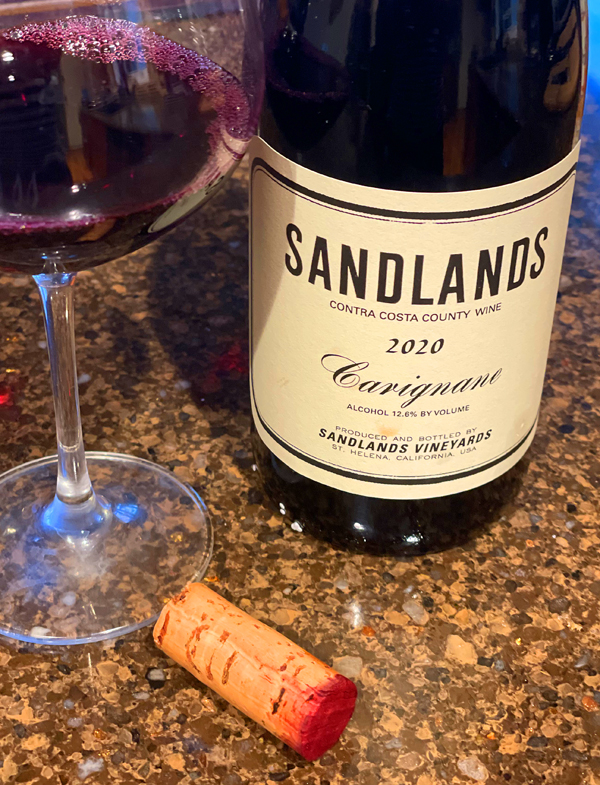
2020 Sandlands Vineyards, Carignane, Contra Costa County.
Similar in style to the 2019 and with an ultra deep purple color in the glass, this 2020 Sandlands Contra Cost Old Vines Carignane is like a Cru Beaujolais and a Zinfandel had a beautiful baby! Winemaker Tegan Passalacqua has nailed this wine again, it flows with bright fruit details, clean flavors and is a very fulfilling red wine with a low alcohol personality showing tangy blueberry, black raspberry, plum, currant and cherry fruits along with an elegant medium bodied palate and fresh acidity, plus briar, dried spices, bitter herbs, saline and delicate floral tones. There is a sense of whole berry roundness, mineral and savory elements, or a cabonic like smooth and fresh feel here and this 2020 drinks very nicely, especially with simple cuisine. Tegan’s wines continue to be some of the best values in the state, and this one, especially, is a no guilt treat that way over delivers. The Carignane was the first offering I had of Sandlands and it was love at first taste, so I try very hard not to miss a vintage of it. There is a lot to admire in the latest releases, besides this tasty Carignane, the Sandlands’ Cinsault, Zinfandel and Mataro (Mourvedre) are all delicious wines and their Soberanes Vineyard Syrah is maybe the most impressive and complex in the collection. I highly recommend these Sandlands wines for exceptional purity and value, it is one of my favorite lists I’m on, if you want to sample a modern take on classic old school California wines, these should be on your wish list.
As noted in my prior reviews of this wine, the historic Evangelho Vineyard, used for this Carignane, as Passalacqua notes, was planted in the 1920s in what is classified as Dehli blow sand (decomposed granite that has been deposited by wind and water) near the banks of the Delta and near the out of way town of Antioch. The warm days out here provide a deep ripening of the grapes, but good picking date choices actually allows for lower natural alcohol, as in this wine, which is about 12.6% and gives this wine a smooth textural quality. Sandlands is the personal wine project of Tegan Passalacqua, who as noted many times here the head winemaker and vineyard manager for the famed Turley Wine Cellars and is all about his work with primarily head-trained, dry-farmed and own rooted vines and lesser known, but historic California varietals. Passalacqua, who got his start by working in the lab in Napa Valley, has many talents and has had impressive experiences, having done stints in the cellars of Craggy Range in New Zealand with Doug Wisor, with Eben Sadie in the Swartland of South Africa, and with Alain and Maxime Graillot in the Northern Rhone Valley of France, all of which has helped shape his style. The Rhone Carignane (Carignan) varietal is one of Châteauneuf-du-Pape grapes and is found throughout the Mediterranean area of Europe from Spain to Italy, as well on Sardinia, and it is famously found in Corbieres in the Languedoc. Carignan has been in California since the early 1900s, maybe a touch earlier and it makes for a good blender, especially with Zin and or Grenache, and as a solo varietal, as done here.
($28 Est.) 92 Points, grapelive
Grapelive.com – Reviews – July 2022
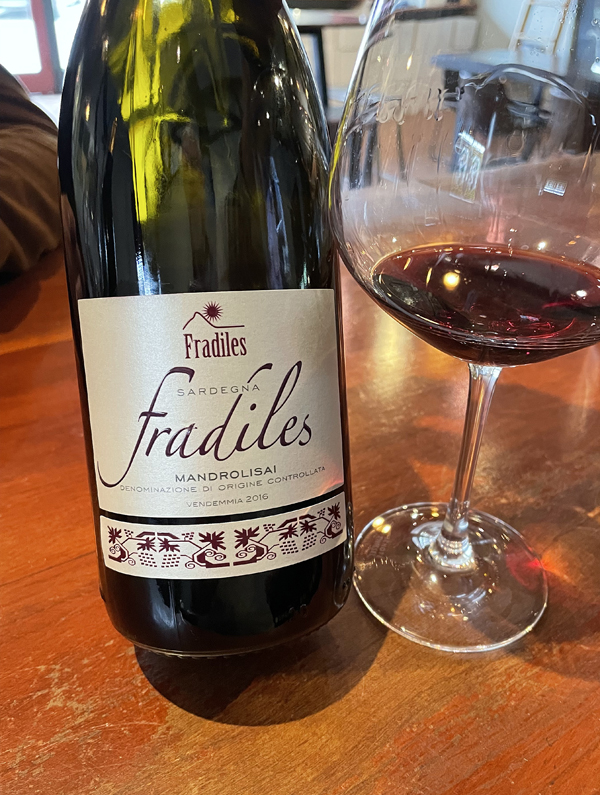
2016 Cantina Fradiles, Red Wine, Mandrolisai DOC, Sardinia, Italy.
Fradiles, based in the Atzara district, and winemaker Paolo Savoldo, are making some of the most authentic and intriguing wines on Sardinia, with this dark blue fruited field blend being an exceptional example with deep layers, mineral tones, savory elements and pretty aromatics all held together with some raw mountain tannin(s) that remind you this is an old world wine. The medium to full bodied palate is rich in dark berry, plum, cherry and tart blueberry fruits along with a fine salty, spicy and stony background, along with hints of balsamic, cedar, anise and dried flowers that almost makes you think of Nebbiolo, except for the most plush blue fruits. The firm nature of this wine makes almost imperative to have it with food and the vintage’s quality and density should allow for more rewards in the future, it looks be a wine that has a lengthy drinking window. Inviting in the glass, with a heady bouquet, this dark garnet and purple edged blend of native varietals, Bovale Sardo (Muristellu), Cannonau (Grenache) and Monica comes from mature vines high up in the Mountains, at close to 2,000 feet up that are all organic and hand tended with sandy granite based soils. In recent months, with the help of my friend Giuseppi Cossu, a native of Sardinia, I have been learning the history of this mysterious Mediterranean island with its many different terroirs, and Fradiles has become a favorite winery, offering a fascinating array of wines that show a unique sense of place.
The main grape in this wine, Muristellu is now known to be indigenous to Sardinia, which many experts believe was born here on this island. Many Sardinian varieties are genetically close to Muristellu and studies have proved its long history here, and while complicated, these discoveries suggests that Sardinia itself is one of the oldest known wine growing regions in Europe dating back to the 11th century BC. It was once thought that the Spanish brought Muristellu and Cannonau (Grenache/Garnacha) to this strongly independent Mediterranean island, but it looks more likely be the other way round. Fradiles Vitivinicola makes a lineup of native mono-varietal wines, as well as this blended wine, a true field blend that is co-fermented from Bovale Sardo (Muristellu), Cannonau (Grenache) and Monica, another rare local red grape. In the cellars, Paolo Savoldo vinifies his reds with native yeast fermentation(s) temperature controlled with a skin maceration of about 8/10 days in stainless steel, before being gently pressed and racked to large used oak casks for 6 months or so. I love this wine, which is about 40% Muristellu, 30% Cannonau and 30% Monica, it has a slightly rustic and exotic personality and delivers a red wine thrill on par with some hugely more expensive old world stars and it would be fun to put it into a blind tasting to how it performs. I previously reviewed Viniviticola Fradiles’ captivating Bagadìu, which is 100% Muristellu, and distinctly different, but equally as delicious, and I look forward to trying more from this winery, which I highly recommend for the value and admire for their passion the preserve traditions and the historic grape varietals.
($25 Est.) 94 Points, grapelive
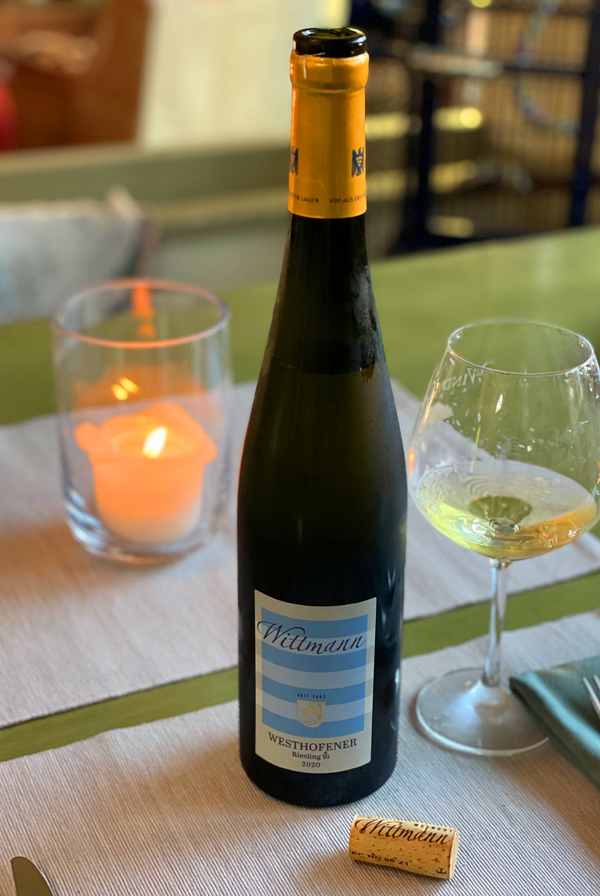
2020 Weingut Wittmann, Riesling Trocken, Westhofener VDP Erste Lage, Rheinhessen, Germany.
Opening a bottle of Wittmann Riesling is always a thrill, and this awesome 2020 Westhofener Premier Cru (Erste Lage) Trocken was a real treat with stunning depth and racy acidity, this dry Riesling is absolutely brilliant with classic tension and richness on the fully loaded palate that framed by crystalline mineral driven intensity. This vintage shows ripe dimension and lavish stone fruit, leaning on crisp peach along with lime, muskmelon, quince and green apple, all accented by wet stone, bitter almond, verbena, orange blossoms, chamomile and faint tropical elements. This wine has a powerful presence in the glass and youthful pale golden hue, it delivers GG like performance and has a chiseled steely backbone and plenty of gripping extract to impress any dry Riesling lovers. The Westhofener Riesling, it should be noted, bears the newer VDP Rheinhessen designation, “Aus Ersten Lagen” that translates to “from Premier Cru vineyards” with this year’s grapes being mostly declassified Grand Cru fruit from the legendary Morsteiner and the Brunnenhäuschen Cru. This is, as Wittmann notes, analogous to the Burgundian use of “Premier Cru,” without a single vineyard designation, when a wine is from multiple sites. The soils here are a mix of clay, marl and limestone that help give this wine its expressive depth and precise detailing, bravo to Philipp Wittmann, for crafting such a stunning wine, it is drinking fabulously well now, but has huge potential for aging as well, and it is sublime value for the quality on display here.
The Wittmann family estate, based Westhofen, under the direction of Philipp Wittmann has been certified organic since 1990 and biodynamic since 2004, but the Wittmann family has a long history here and has been growing grapes and producing wine in the Rheinhessen village since 1663. Today, according to the winery, Wittmann cultivates 62 acres of vines in the rolling limestone hills found in the southern part of the Rheinhessen region, just to west of the Rhein river valley. They have been pioneers in developing the full-bodied, well-balanced style of dry wines, of which Philippe with his talents, has gained a huge following for, especially for his GGs and Premier Cru offerings like this one. Of course, Riesling is the dominant grape variety here at Wittman, as the winery adds, accounting for 65% of the estate’s vineyard area, but they also produce Pinot Blanc, Pinot Gris and Pinot Noir, as well as Silvaner, plus small amounts of Scheurebe, Chardonnay and a few other things, like St Lauent I believe. For his Westhofener 1er Cru Wittmann treated it very much like his Grosses Gewachs with the Riesling grapes being all hand picked and carefully sorted before seeing a gentle pressing to fuder to age. The fermentation was “Sponti” using native yeasts and the Westhofener saw a full 10 months on the lees, in the large neutral oak casks, which explains the beautiful play between dynamic energy and luxurious roundness, with this vintage being a touch more austere than the more overt 2018s and on par with the 2019s. Philipp, like Keller, have proved that this area of the Rheinhessen is a fantastic terroir and tasting wines like this are putting a big spotlight on this region of Germany. Even Wittmann’s entry level Estate Trocken is a gem, but this stuff is just stunning, don’t miss this vintage, or any vintage!
($48 Est.) 94 Points, grapelive
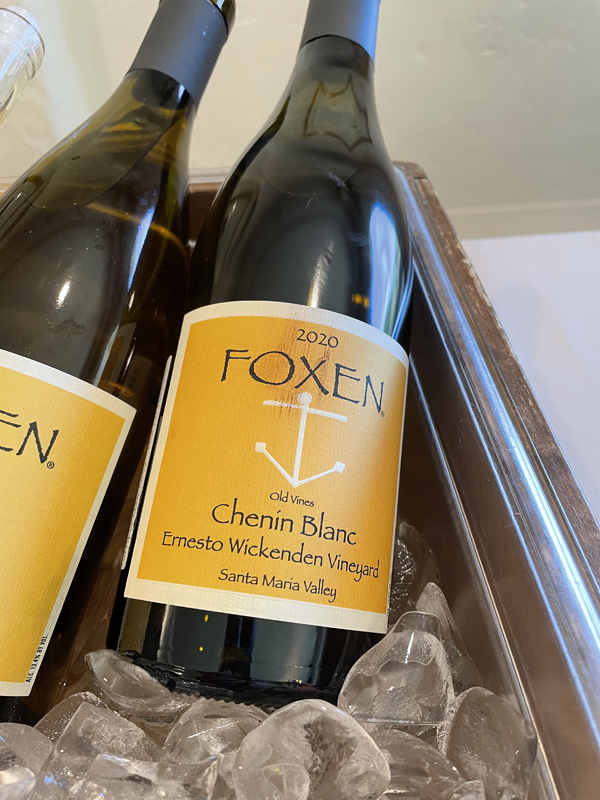
2020 Foxen, Chenin Blanc, Old Vines, Ernesto Wickenden Vineyard, Santa Maria Valley.
It had been a long while since tasting through the Foxen wines, so it was good to sample some of their latest stuff and while known for their Pinots and Syrah, I surprisingly enjoyed the Old Vine Chenin Blanc most of all, it really impressed for its lush textures, mineral notes and classic peachy fruit profile. This wine, coming from the Ernesto Wickenden Vineyard in the Santa Maria Valley that was planted back in 1966 and on the regions sandy loams, with a warm exposure and chilly sea breezes it is a perfect spot to make concentrated wines that retain good acidity as this Foxen Chenin shows well. The 2020 has a sunny ripe character with yellow peach, pear and lemon fruits, a touch of waxy honeycomb, tangy herbs, citrus blossom, bitter almond, leesy brioche, wet stones and a touch of wood, all in a smooth medium/full bodied wine that excellently reminds me of dry Vouvray or maybe more a richer Montlouis from the Loire Valley, the spiritual home of this varietal, which has seen a brilliant revival in the last dozen or so years. The Ernesto Wickenden Vineyard is part of Foxen’s estate and is a very coveted site for Chenin Blanc, still providing good yields and high quality grapes, as this vintage shows. Lightly golden in glass, this 2020 is a wine that delivers richness and refreshment, best enjoyed with lighter meals and or soft creamy farm cheeses, as well as sea food dishes, like scallops and swordfish, especially. This stylish Chenin was made by David Whitechair, a local who began his winemaking career at Brander Winery in Santa Ynez, but also doing stints at the legendary Cloudy Bay in New Zealand and Chalk Hill, near Healdsberg before returning to the region to join Foxen, becoming the winemaker here in 2016.
The Foxen Ernesto Wickenden Vineyard Old Vine Chenin Blanc was all hand tended and hand harvested, coming into the winery cool and was whole cluster pressed and fermented with both natural yeast and a selected culture to go all the way to dry. To ensure balance and crisp detailing, the winery used a combination of stainless steel and 500L French oak puncheon for the primary ferments here, which lasted about three or so weeks before the wine was aged sur lie for a period of about 7 months in the large puncheons with just a touch of new wood. The regime was very successful to produce an elegantly textural and fresh example of Chenin Blanc. Most of California’s Chenin Blanc was ripped out during the 1980s and or grafted over to Chardonnay, with some notable and historic exceptions like Chappellet, Casa Nuestra and Chalone, all of which continue to make very desirable versions, but some isolated places still had some good old vine parcels that led to the grape’s rebirth here in California with Daniel Gehrs and Foxen being instrumental in that effort. Foxen, founded as a winery by Dick Doré and family back in 1985 and is named for their great-great-great grandfather William Benjamin Foxen, an English sea captain, who an early settler here in Santa Barbara County in the early 1800s. Based in Foxen Canyon, where the Santa Maria Valley meets the Santa Ynez Valley. Foxen has a 9,000-acre property, which is known as the Rancho Tinaquaic and grown a wide array of grapes, including Bordeaux and Italian varietals, as well as Burgundy and Loire selections, of which Chenin is a core in Foxen’s estate white lineup. The Doré family have long been one of the great California wine families and have been real champions of the Santa Maria AVA and are continuing their success into a new era, they deserve to be recognized for their outstanding efforts they have brought to the state’s wine scene.
($26 Est.) 92 Points, grapelive
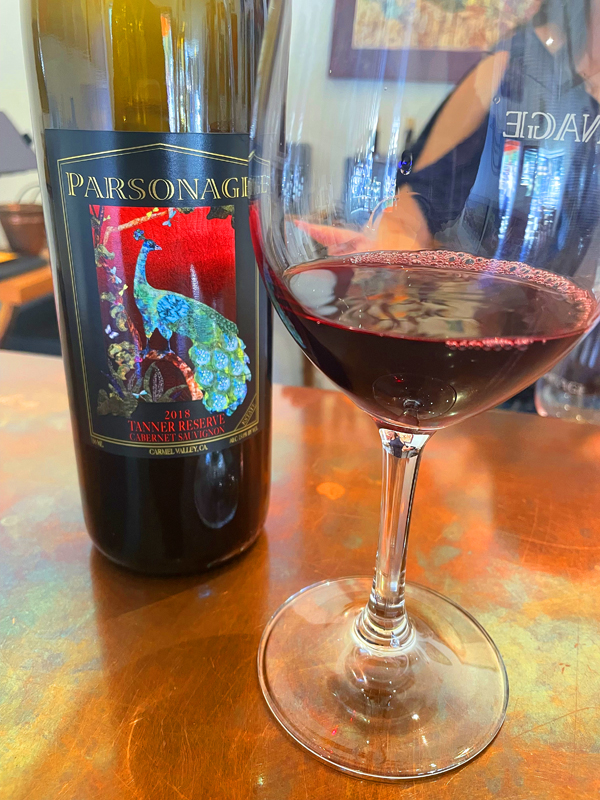
2018 Parsonage Village Vineyard, Cabernet Sauvignon, Tanner Reserve, Estate Grown, Carmel Valley AVA, Monterey County.
The incredibly dark and concentrated Tanner Reserve highlights the quality of the vintage with deep purity of flavors, firm structures and an added bright inner energy that lifts this full bodied and impressive Cabernet from Parsonage’s steep low yielding vines. It had been a few vintages since digging into the Tanner Cabernet, which is 100% Cabernet Sauvignon, and it is even better than I had remembered with loads of blackberry, currant, black cherry and plum fruits that fill out in the mouth not all that different from some $300 plus Cabs from Napa, as well as having a powerful tannic grip and is accented by smoky oak, incense, creme de cassis, anise, sandalwood and vanilla. This is a big and opulent Cabernet Sauvignon that benefits from robust protein rich cuisine, especially medium rare beef dishes and or hard cheeses, that will serve to allow a more luxurious side to shine in this wine. This 2018 has a little more natural acidity and taut detailing, with a touch of bramble and spice, than the more hedonistic and chocolatey 2019s, but I think that will provide it with a longer life and I like that bite as it makes everything more exciting in the glass. The Reserve wines are the best of the best of the estate grapes and see an extended aging period in barriques with a good percentage of toasty new oak that tame the tannins in these lush wines, with the Cabernet seeing a minimum of 18 months and sometimes 24 before bottling.
The Parsonage winery, which was founded by Bill Parsons in 1998, when he planted his vines in a warm hillside about a mile east of the Carmel Valley Village, and now with Frank Melicia, who has been the winemaker and vineyard manager here for many years, is one of the best local wineries in this region that is finally getting the attention it deserves. The Parsons Family, Bill and Mary, along with their daughters Rachael, Ali and Brooke, planted the seven-acre Parsonage Village Vineyard 14 miles inland from the Pacific Ocean on what is a natural amphitheater, with stony and meager soils, it includes 3.5 acres of Syrah, 2.0 acres of Cabernet Sauvignon, 1.0 acre of Merlot and just 0.5 acre of Petit Verdot, which is exceptional here. Parsons was the first to grow Syrah in Carmel Valley, and it remains his signature wine, in particular the Rocco Reserve, but the Cabernet Sauvignon, as in this fabulous Tanner Reserve, and the estate Merlot, as in the Dario’s Reserve is also incredible stuff and a sleeper in the lineup. While the deeper part of the Valley, as in the wines from Bernadus, Galante and the famous old Durney property, known as Massa Estate make for more rustic and Bordeaux like wines, Parsonage takes aim at Napa and Paso Robles in style with opaque inky hues and sexy new oak use, they unapologetic ripe and expansive wines that are absolutely guilty pleasures! The Parsonage Reserves are extremely limited bottlings and mainly sold through their mailing list, but are worth searching out with some always available at their tasting room in the Village.
($90 Est.) 94 points, grapelive
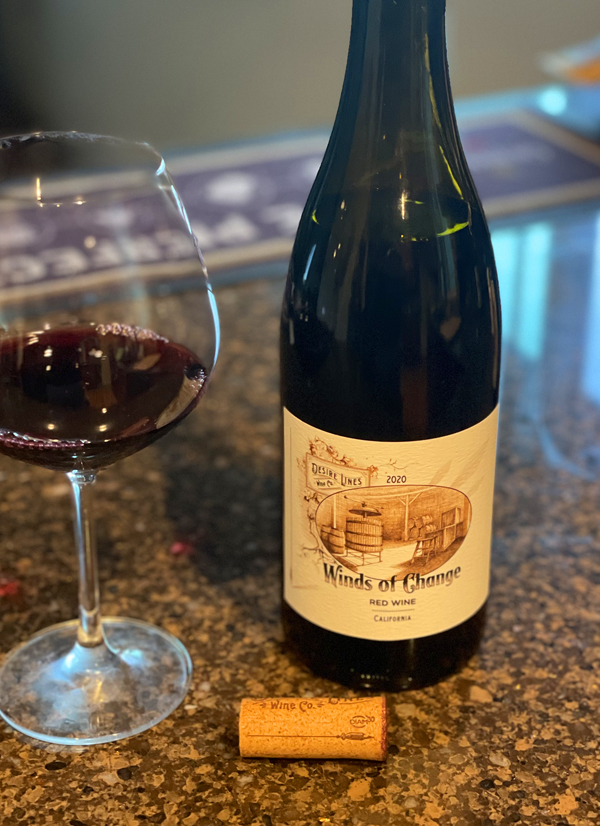
2020 Desire Lines Wine Co., Winds of Change Red Wine, California.
The latest Winds of Change California Red Wine by Cody Rasmussen at Desire Lines Wine Co. is another killer bottle and unbelievable bargain that delivers a full bodied array of ripe dark fruits that are, as with the 2019, accented by wild herbs and racy spices. This vintage, which took much more care because of the fires that left most regions with smoke taint issues, shows no ill effects and is in fact maybe even better than the prior release. The color is inky with opaque purple core and ruby edges which is highly inviting and the bouquet is a mix of heady florals and savory elements, with mineral tones and black fruits. The Desire Lines Winds of Change Red is sourced from mostly cool climate sites within the state and shows an inner brightness, but with a rich and concentrated California profile of flavors with the main Syrah component being a powerful influence here with deep blackberry, blueberry, wild plum and currant leading the way of the youthfully fresh medium/full palate that also has hints of violets, reduced strawberry, camphor, black licorice, peppercorns and sandalwood. There is a grace and a rawly authentic play here that creates a natural and happy tension between lush fruit density and whole cluster Umami that is wildly enjoyable and shows off the talents of Rasmussen as a light handed winemaker, I don’t think I could find anything to fault here. In recent years, Rasmussen’s wine have really impressed me and I rate them highly in terms of quality and what they offer in pleasure in the glass, these are wines that I drink for myself, in particular this Winds of Change Red, it can go with a variety of cuisine and is almost totally guilt free to pop open on a Tuesday night with take away pizza.
Rasmussen, who is an assistant winemaker at Bedrock Wine Company under Morgan Twain-Peterson, and his wife Emily’s Desire Lines Wine Co. label is certainly one of California’s next generation stars, based on what I’ve tasted over their first five years, especially with what they’ve done with Syrah and Dry Riesling! This latest set of wines being an exceptional collection, with his pure Syrah bottlings from Griffin’s Lair in the Petaluma Gap and Shake Ridge Vineyard, being amazing efforts as well as Cody’s fantastic Wily Vineyard and Cole Ranch Dry Rieslings and I love the Carignan based Evangelho Vineyard Red and this Winds of Change Red, they are deftly blended and exciting wines that are tremendous values! Syrah fans should be on the Desire Lines mailing list and for fans of these modern California wines too, especially since Rasmussen has added some exciting other whites and reds to the lineup, including Chenin Blanc, Sauvignon Blanc and Viognier to his whites and he even now has a chewy old school Cabernet Sauvignon that pays tribute to Phillip Togni and Cathy Corison in style, less alcohol and pure Cab punchiness. This 2020 Winds of Change is a ridiculously (in good way) priced Rhone Blend, made from 65% Syrah, 15% Mourvedre, 15% Carignan and 5% Grenache, that reminds me a bit of Domaine Gramenon, which is high praise. It saw a good percentage of whole cluster and was fermented with native yeasts and aging took place in neutral French oak barrels including small larger format puncheons, a vessel that Cody says, works fantastically well with Syrah. Rasmussen, as I have noted before, employs a minimal approach in the cellar, though very precise and clean, he focuses on transparency, supple textural quality, aromatics and purity, which are on full display here.
($25 Est.) 93 Points, grapelive
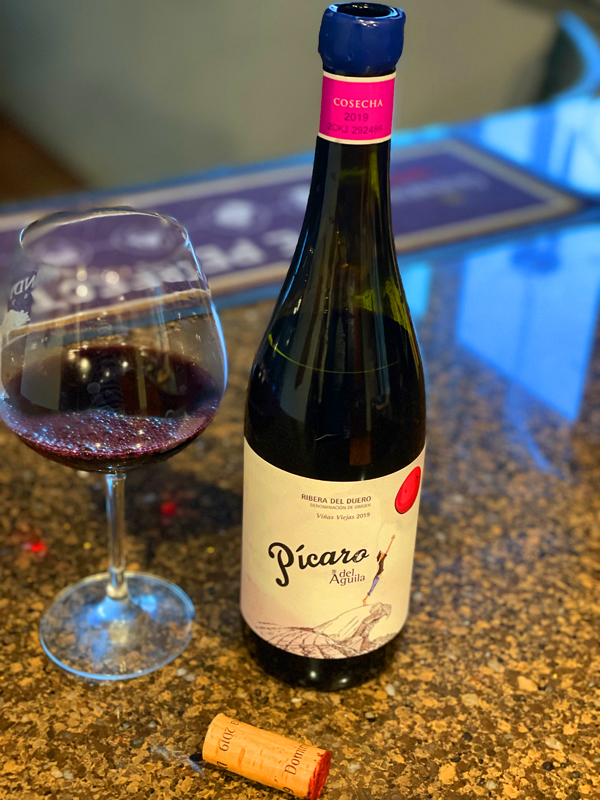
2019 Dominio del Aguila, Picaro del Aguila Tinto, Viñas Viejas, Ribera del Duero DO, Castilla y Leon, Spain.
I had not had Jorge Monzón Pascual and Isabel Rodero’s Dominio del Aguila before enjoying this delicious Picaro red blend, which is a shame as the quality and authentic flavors are seductive with its sultry earthiness and deep old vine fruit offering a very compelling experience. The 2019 saw mostly Tempranillo (close to 90%), but with other Spanish native varietals such as Albillo, a rare white grape, Garnacha and Bobal, another rarity not usually found in this part of the country, all from selected old vine parcels and all farmed organically. This 2019 is invitingly dark in color with a purple/garnet hue in the glass and shows a mix of earth, red berries and flowers on the nose before filling out on the raw and rustic, but supple palate with black cherry, lingonberry, plum, pomegranate and Mission fig fruits, along with an array of spices, tangy herbs, chalky stones, cedar and a touch of game. This is a bottle that benefits from air and especially food, which brings out a additional sense of depth and sweetness of the blue fruit core, taming the whole bunch crunch here and gives more texture and completeness to this impressive effort. Dominio del Aguila is a winery to watch and Jorge Monzón is an exciting and talented winemaker, who has an impressive resume having worked stints at Domaine La Romanée-Conti, where he interned and worked along side legend Bernard Noblet and at Vega Sicilia, one of Spain’s most prized wineries, and I highly recommend looking for these wines.
Dominio del Aguila’s winemaker Jorge Monzon Pascual explains that the Pícaro del Aguila Tinto is a co-fermented blend of Tempranillo, along with Albillo, Garnacha and Bobal, with the fruit especially picked from parcels chosen for their quality and in tune to vintage conditions of each year. He goes on the say that this blend changes in terms of grapes and locations, factoring what they get, like In warmer years, cooler sites are favored, and in cooler vintages, warmer sites are utilized. All these sites, farmed by hand, have soils of gravel and heavier clay, which in a dry continental climate like here in the Ribera del Duero prevents vine stress and promotes, as the winery notes, an even and simultaneous ripening of both the fruit and the stems, that is vitally important for 100% whole-cluster wines like this one and natural yeast fermentation(s). The Picaro was co-fermented in concrete tanks, with manual pigeage and a lengthy maceration period to extract all the color and flavors before being aged in French oak, mostly used and or neutral, with less than 15% new, for between 12 and 20 months, after which the final wine is bottled unfined. The Picaro, which has a touch of natural funk is not only organic and all natural, it is vegan as well and has ultra low sulfites. Jorge and his Isabel Rodero, founded Dominio del Águila in 2010 after buying up some old vine sites here and Isabel, an architect designed and oversaw the renovation of an ancient cellar that dates back to the 15th century. This cool cave allows for perfect conditions to make these exceptional wines, that benefit from their cold, subterranean cellar, ensuring that the evolution of their wine proceeds slowly.
($35 Est.) 93 Points, grapelive
2019 Domaine Saint-Damien, Gigondas “La Louisiane” Vieilles Vignes, Rhone Valley, France.
The exciting dark garnet/purple 2019 version of Saint-Damien’s La Louisiane is not far off the fantastic 2018 and might be its equal as it ages, but it is absolutely thrilling right now with classic black raspberry, plum, pomegranate and a deep sense of creme de cassis along with violets, peppercorns and black licorice. The Grenache in this wine, which dominates this blend, is brilliantly pleasing and deeply flavorful and the body is luxuriously supple. After the first impression fades there is additional complexity and savory tones that emerge and a rustic underlying sultry earthiness that continues to intrigue here and there is a lingering crunch, incense, sticky lavender and stoniness. Influenced by its terroir, that is located in the des Dentelles de Montmirail range, the Domaine Saint-Damien, named for the Christian martyr, comes from vines set in the rocky hillsides on marls, a mix of limestone, sand and hardened clay soils. There is good exposure here in these terraced vineyards that get plenty of warm sunshine through the days, getting some Mistral breezes and its high elevation coolness at night allows for perfect ripening of the grapes, which include mainly Grenache of course as well as Mourvedre, Cinsault and Syrah. Saint-Damien is really on a roll, since the 2016 vintage especially, with their Cru bottlings like this one and their Les Souteyrades being outstanding efforts that I high recommend for Rhone fans, as well as their basic Gigondas Classique, that is also a ridiculous good value. This big and powerful 2019 La Louisiane, like all of Saint-Damien’s wines, is sourced from all organic vineyards, with exceptionally low yields and painstakingly hand tended vineyards and made with old school traditional methods in the cellar.
The Domaine Saint-Damien, founded back 1821 is a small family winery in the southern Rhone based in the famed Gigondas AOC and is run by Joel and Amie Saurel with their son Romain who is the current winemaker, this is one of the Rhone’s great properties and treasures, especially for me, these wines are some of my personal favorites, like this fantastic 2019 and the mentioned nearly perfect 2018 old vines La Louisiane that had and reviewed on my birthday a few years ago. The Domaine Saint-Damien La Louisiane cuvée, is a blend of 80% Grenache, 15% Mourvèdre and 5% of both Syrah and Cinsault, all aged in foudre, as I have noted before, comes from a special set of small parcels or a micro Lieu-Dits, set on the classic clay, sand and limestones soils with some alluvial red stones. This Gigondas was crafted using mainly Grenache that was planted in 1942, along with 15% Mourvèdre that was planted in 1977, plus a tiny amount of Cinsault planted back in1951 and some Syrah. The grapes are fermented separately in cement vats and then blended after a cool primary fermentation and maceration, which lasts close to 6 weeks for deep extraction and intensity. Then the blended La Louisiane saw about a year in mostly used French oak barrels and was bottled unfined and unfiltered, which makes for a gloriously concentrated and pure Gigondas that rivals almost anything coming out of the more fancied Chateauneuf-du-Pape. Gigondas itself is riding high with quality these days and Saint-Damien, along with Chateau de Saint Cosme by the legendary Louis Barruol, who makes a wine that I couldn’t possibly live without, Domaine Le Sang des Cailloux (the blood of the stone), Adrien Roustan’s little known, but outstanding Domaine d’Ourea, Les Pallieres and others are all making some of the most compelling wines in the Southern Rhone! This vintage has proven to be excellent and I suggest chasing down these hard to get beauties from Saint-Damien.
($38 Est.) 96 Points, grapelive
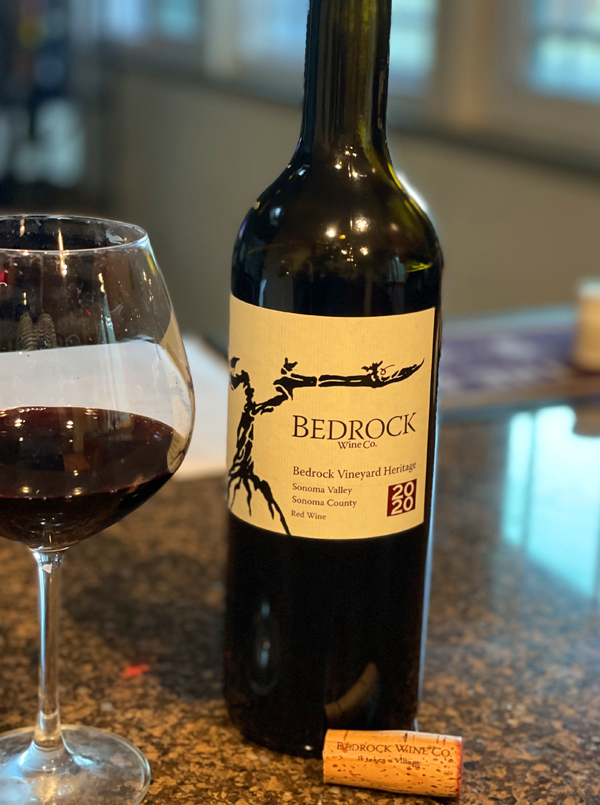
2020 Bedrock Wine Company, Bedrock Vineyard Heritage Red Wine, Sonoma Valley.
This beautiful Zinfandel based field blend from vines in their 133rd year of life is one of the most historic and important wines in California and this 2020, which missed the horrific effects of the fires that raged throughout the state and left many regions suffering the destructive and dreaded smoke taint, making it one of the joys of the vintage with a full bodied array of dark fruits, divine texture and exceptional depth. Morgan Twain-Peterson MW, winemaker and owner of Bedrock, uses only grapes that come from the original 1888 plantings at his Bedrock Vineyard in the heart of the Sonoma Valley which is set on well drained rocky soils in a climate that sees lots of sunshine and heat in the Summer, but that cools down dramatically at night with the valley pulling in cool air from the west and the Pacific as well as afternoon breezes. This is dark and inky stuff that begs for robust protein rich foods, but is nicely balanced without the ultra high alcohol that can sometimes be found in Zinfandel based wines these days, coming in at 14.5%, this 2020 Bedrock Heritage still powerfully impacts the palate and flows with ripe blackberries, along with plum, brambly raspberry and pomegranate fruits, along with briar spice, cedar, a hit of mocha, peony florals and vanilla. The Bedrock Vineyard includes a high percentage of Zinfandel, but there are dozens of other varietals interplanted here, including Mataro, Grenache, Petite Sirah and other rare old grapes, like Alicante Boushet and Carignan, all of which add to the complexity and very age worthy substance here. Anyone that has had old bottles of Ridge Lytton Springs or Geyserville will see that quality and distinct character here in Twain-Peterson’s wines, they offer a bounty of pleasure in the glass.
Bedrock Wine Co. was started in 2007 by winemaker and Master of Wine Morgan Twain-Peterson, son of the legendary Zin maker Joel Peterson of Ravenswood fame, and his partner Chris Cottrell, who also has his Under the Wire label, featuring unique sparkling wines. The winemaking here at Bedrock remains faithful to their beliefs, made with simple low intervention traditional methods that showcase the vineyards first and foremost with Morgan Twain-Peterson MW saying “overly sculpted by activist winemakers tend to be less satisfying and soulful gustatory experiences..” Of which I totally agree and is a reason why that this winery has been elevated to the top echelon of California wine and Bedrock is one of my favorites, especially these Heritage Reds. The latest releases from Bedrock are exceptional and have a sense of lightness and grace, traits not always found in Zinfandel based wines with this one and the 2020 Evangelho Vineyard Hermitage Red, also a site owned and farmed by Twain-Peterson, showing wonderfully already, The Bedrock reds are produced in most cases with natural uninoculated fermentation(s), native malo-lactic, and with the use of whole clusters in fermentation, the wine is left to do its thing with gentle attention along the way without additions. They take great care to use the best aging vessels as possible, preferring only to use quality oak in the aging process, using barriques and larger casks when the wine demands it. Really, Bedrock focuses on the individual vineyard and what it needs in each vintage, saying at the core of all of their wines is allowing these sites and grapes a stage to show ideal ripeness and individual personalities, which is very in evidence in this classic Bedrock Heritage. I keep finding more and more interesting things in Morgan’s wines with every vintage and I highly recommend checking out his latest releases.
($45 Est.) 94 Points, grapelive
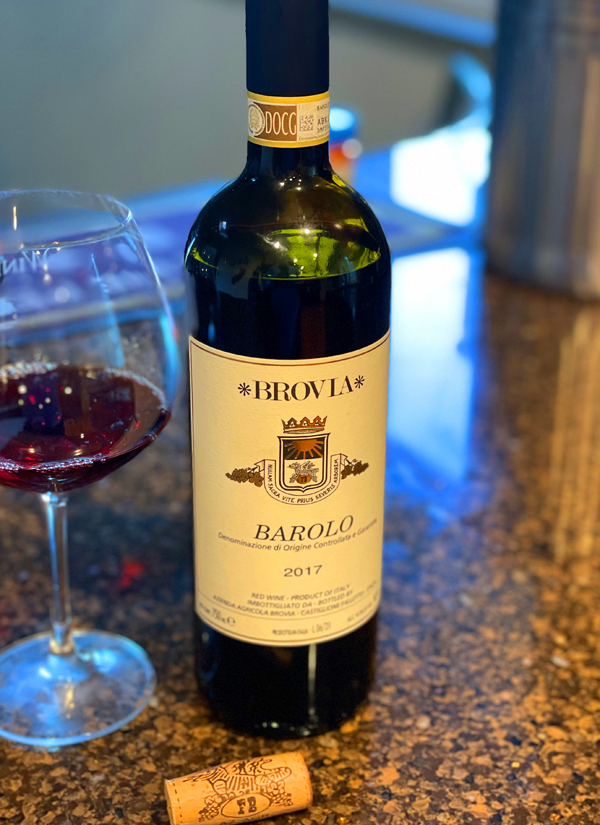
2017 Brovia, Barolo DOCG, Piedmonte, Italy.
Okay, I know it was too young to open, but wow, what a great surprise I found here with Brovia’s 2017 Barolo, it showed brilliantly and has beautiful supple ripe tannins the support a complex and radiant full bodied palate of classic Nebbiolo flavors that was way beyond my expectations of the vintage and the youth of this wine. The color is exceptional in the glass with a bright ruby/garnet core and orange/magenta edges and the bouquet was expressive with red fruits, floral notes and hints of earthy depth before the entry, which brings dark berry, damson plum, black cherry and Moro orange fruits, along with dried spices, chanterelles, rose petals, chalky stones, minty herbs, leather, sandalwood and black licorice accents. The fruit opens up wonderfully and the background savory tones provide superb contrast here, while being mostly subtle to allow the Brovia’s Barolo to display itself in an elegant way, this is a very confident effort and a great value too, it went well with fresh and vibrant garden flavors of the food I had with it and was easily drank on its own too, never putting a foot wrong. While you continue to age and wait on 2010s and 2016s, you will find pleasures in Barolo from the 2013s and these better 2017s, especially Brovia. The Brovia Baroli are made from care selections of Nebbiolo from younger vines in top crus that are 100% de-stemmed and cool fermented in stainless steel with a maceration that lasts about 21 days then aged for at least two years in mainly large format casks of used Slavonian and French oak.
The famous Brovia estate, which I have followed since the mid 2000s, now run by Elena Brovia, was originally established in 1863 by Giacinto Brovia, who founded the winery in the village of Castiglione Falletto, in the heart of the Barolo district. The family has been continually engaged in the growing of grapes and the production of wine since that time, through many up and downs and have emerged as one of the top properties with a focus on traditional Barolo and native varietals, like Nebbiolo, as found in their prized Barolo offerings, Barbera and Freisa, which I reviewed recently, as well as notable efforts with Dolcetto and Arneis. The Brovia family have concentrated their efforts in their home village of Castiglione Falletto and the neighboring Serralunga d’Alba, where they have awesome parcels from which to choose the grapes that go into this basic Barolo bottling. Brovia has also an elite collection of Crus in a variety of terroirs, including awesome plots in Rocche, Villero and Garblét Sue, which, as the winery notes, are all in their home district of Castiglione Falletto, as well as Brea, located just down the road in Serralunga. These different vineyard plots, Brovia adds, represent a range of soil types, from heavier clay to friable limestone, which goes from heavier fruit density to a more structured and tannic wine. The family is extremely conscientious of nature and the environment and as winegrowers they farm organically, though without being formally certified they are passionate about being sustainable and holistic in their methods, both in the vineyard and in the cellar. I was happy to find this 2017 Barolo showing so well and while it should go another decade or more, it does give a lot of authentic charm already, in particular with a meal and now I wish I had bought a few more bottles!
($50 Est.) 93 Points, grapelive
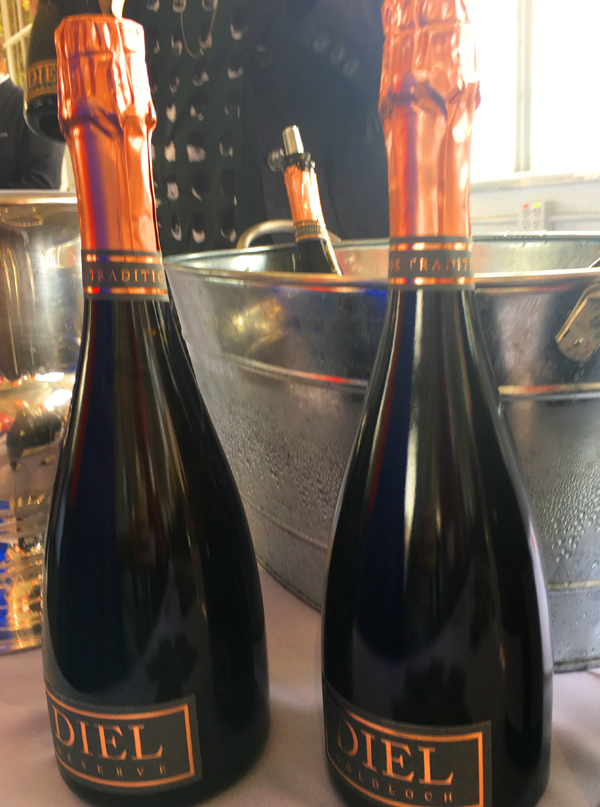
2012 Schlossgut Diel, Riesling Sekt “Reserve” Extra Brut Sparkling Wine, Nahe Germany.
As I have mentioned in prior reviews, Caroline Diel is one of the great winemakers of the world, of course her dry Schlossgut Diel Rieslings are her main claim to fame, but as noted here, her Pinot Noir and Sparkling wines are fantastic as well, with this Reserve Sekt Sparkling Riesling from her estate vines in the Nahe being an absolute stunner! These Diel bubbly offerings are crafted in the Champagne style and deliver incredible depth, on par with the likes of vintage Krug and or Vilmart, one of my favorites and I am always left with my mind blown after sampling these distinct and extended lees aged examples. Caroline’s set of grower producer sparkling wines include the single vineyard Goldloch, which I reviewed earlier and a couple of special cuvées, including this Reserve that is released slightly earlier and usually shows the most precise and crisp detailing with this 2012 vintage having loads of driving mineral tones, lots of vigorous acidity, zippy white stone fruits, racy citrus and a hint of a slate/smoky element. There also, as in all of these great, intensely dry, pale gold Extra Brut sparklers, a classic brioche, leesy/yeasty notes, dried apricots, lemon curd, golden fig, wet rock and a caressing energy from the small bubbles that bead beautifully in the glass, with this one being ultra impressive and lovely. I can’t wait to try the latest set of Diel’s grower fizz, which includes the version of this wine from the 2017 vintage and a all new Brut Rosé, that I haven’t tried yet!
The historic Schlossgut Diel, one of the first estates in Germany to promote a drier style Riesling around the world and makers of some of the greatest Grosses Gewachs from their vines in the lower Nahe. The winery, based in the Burg Layen castle near Dorsheim, was purchased by Diel family in 1802 after Napoleon’s troops were vanquished from the region, but it really gained attention under current owner Armin Diel and now with his daughter Caroline Diel making the wines, it never has been better. Caroline, who has even done a winemaking stint at the Domaine de la Romanee-Conti, is one of the Germany’s best vignerons and her Rieslings and her Pinot Noir are outstanding wines. A lot has deservingly been written about Schlossgut Diel’s wines and Caroline’s talent in the vineyards and in the cellar, but these sparkling wines should not be overlooked, in particular and as suggested above look for her Reserve bottling and the Goldloch single Cru. As for the winemaking, Caroline does a, as she notes, a gentle whole berry pressing of a special selection of Riesling grapes, that is followed by spontaneous “Sponti” indigenous yeast fermentation and with the mentioned extended lees aging in stainless steel tanks. This 2012 Reserve, which is still available from Diel’s importer Skurnik, was disgorged on 11/2018, after close to 62 months of tirage. The winery adds, that after filtration and tirage, a secondary fermentation begins inside the bottle, then the wine is then left on the lees again for a long period to gain its luxurious texture and complexity before release. Serious stuff here, I highly recommend searching high and low for these these Diel Sekts, as well as Diel’s full range of Dry and Off Dry Rieslings from Caroline’s Kabinett to her outstanding GGs.
($57 Est.) 95 Points, grapelive
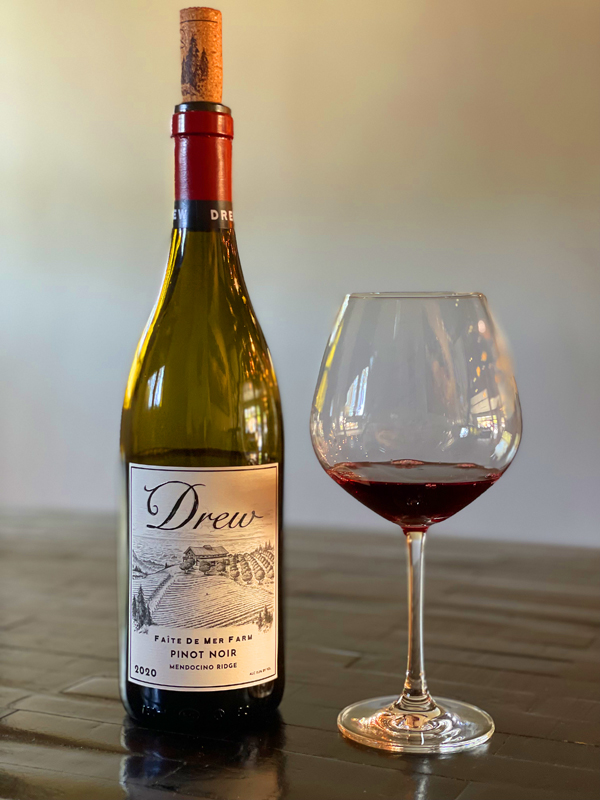
2020 Drew Family Cellars, Faîte de Mer Farm, Pinot Noir, Mendocino Ridge AVA, Anderson Valley, Mendocino County.
The 2020 Faîte de Mar Farm Pinot from Jason Drew is bright and sharply tart at this stage and shows a crunchy youthful array of flavors with cherry, cranberry, plum and brambly red berry fruit, along with zesty herbal notes, black tea, orange rind and mineral, in a lighter framed cool climate style of wine. This new and entry level estate Pinot bottling by Drew, is as the winery explains, encompasses the whole vineyard in this cool climate on the western end of the Anderson Valley, in the higher up Mendocino Ridge zone that is only a few miles from the Ocean. The Faîte de Mer Farm Pinot Noir includes parcels planted to the full range of clones, as the Drew’s add, includes Dijon 115, 667, 943, Pommard & Calera selections set on Ornbaun, Zeni, Yellowhound complexes, which are incredible soils and this Pinot reflects the sum of these complex parts. This vintage, which was lucky to be free from the terrible smoke and fires that affected many other regions in the state, produced a ripe and firm structured wine with bit of raw tannin along with Drew’s low natural alcohol. The 2020 Faîte De Mer Farm Pinot Noir saw a 100% native yeast fermentation with 40% whole cluster (and stems) and was matured in well seasoned neutral French oak barrels for close to 11 months, making for a pure, vibrant and transparent wine with just the right amount of green/savory elements.
The Drew Family Faîte De Mer Farm, as mentioned, is located on the far western edge of the Anderson Valley that lies only 3 and a half miles from the cool Pacific Ocean, tucked into the extreme Mendocino Ridge appellation along the northern coastal range. This organic coastal estate is up at 1250 ft elevation and is the closest vineyard to the ocean in Mendocino County and the coolest site and, as the winery says, it therefore has the longest growing season of all the vineyards in their awesome collection of wines. The soils here are ancient ocean floor that was pushed up during tectonic collision between the Pacific Plate and the North American Plate forming this coastal range with a mix of sandstone and deep sea stone. So coupled with this maritime climate and coastal forest surroundings, these Drew wines really capture the sense place or terroir, and while this 2020 is tightly wound, it shows glimpses of the huge potential these vines have to offer. The Drew’s, Molly and Jason have delivered over the past tens years some of the greatest wines ever made in California, with a focus on Pinot Noir, but their Syrah bottlings are stellar examples as well, and more recently their Chardonnay is proving excellent and should not be missed. Jason Drew planted this vineyard and he farms it with holistic methods, all to showcase the unique expression this region provides him and he makes the wine with a gentle hand, as this beautifully ruby hued Faîte De Mer Farm puts on display. Not as opulent at this stage as the 2019s were, the 2020 vintage needs plenty of air and is best with food, it was much improved on day two.
($45 Est.) 91 Points, grapelive
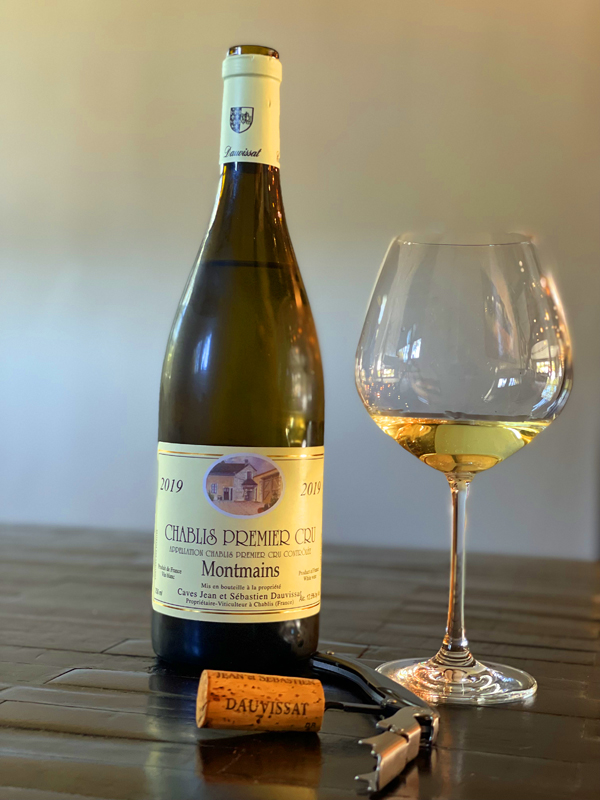
2019 Domaine Jean et Sebastian Dauvissat, Chablis Premier Cru, Montmains, White Burgundy, France.
Few wines meet the needs of Summer better than Chablis and if you are looking for an authentic old school example, then the wines from Caves Jean et Sebastian Dauvissat, a famous in the region, should be ones to look for, especially the Premier Cru bottlings that offer exceptional value and give additional dimension, like this Montmains does. The Dauvissat’s the 1er Cru vineyards have a full southeast exposure which gives them their ripe concentration and the legendary chalky soil gives them the steely and stony character that sets the Chablis wines apart in the wine world and makes them so desirable. There is a cool climate racy quality too that comes from the very northerly location, so the wines, like this one, always are pulsating with natural acidity, with this 2019 Montmains showing lime and preserved lemon, green apple and pear fruits, along with a wet shale or flinty essence, clove spice and a bit of lees and soft butterscotch notes. The Montmain gains a fine and smooth textual feel with air, while retaining its taut energy and blows off its free SO2 and allows a bit more of the aromatics to show through. The “Montmains” Cru is a natural extension of the 1er Cru “Les Forets” located in the northeast of the 1er Cru slope and Dauvissat’s vines have a higher percentage of clay in the mix, which as this 2019 shows, produces a more full-bodied Chardonnay.
The J & S Dauvissat domaine encompasses slightly less than 10 hectares of vineyards, so this is a small property with a historic presence in Chablis, making honest, almost rustic terroir driven wines. Jean Dauvissat, and his son Sebastian, were the most recent in an extended line of the Dauvissat family, according to Neal Rosenthal, their US importer, that has been in possession of this notable domaine since 1899. Sadly Jean passed away after an unfortunate accident, but Evelyne Dauvissat, Jean’s wife and Sebastian kept things running smoothly here and the wines have a faithful following. The cave itself is positioned right under the family home which dates back to the 17th century and is on the lane that goes into the village of Chichée and while the family was long time vignerons and growers their first wines as a producer under the Dauvissat label came more recently in 1963. The Duavissat’s hillside parcels, mostly in Premier and Grand Cru sites in Chablis’ fan shell are all stony hillside vineyards set on the classic Kimmeridgian limestone that makes these Chardonnay wines so unique as a region. The fermentation and elevage at Jean et Sebastian Dauvissat for the village and Premier Cru wines are done mostly or in part in stainless steel, with some new oak only used in the Grand Cru and old vine cuvées. This wine saw no oak at all, traditionally aged 2 years on the fine lees in tank before bottling, making for a pure example of Chablis that is performing nicely already, drink over the next 3 to 5 years.
($45 Est.) 90 Points, grapelive
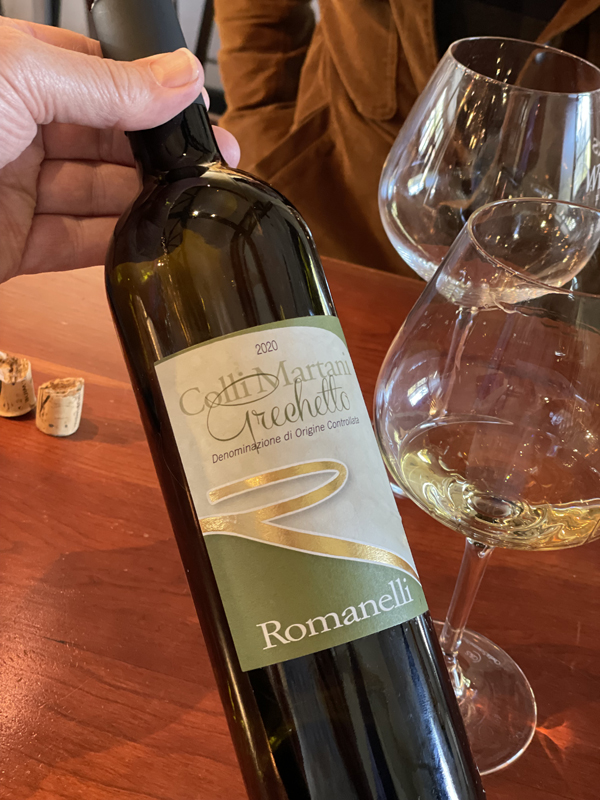
2020 Agricola Romanelli, Grechetto dei Colli Martani DOC, Umbria, Italy.
One of the best deals in skin contact white wines I’ve tasted, the 2020 Romanelli Grechetto dei Colli Martani is a delicious ripe and intense dry white wine that is every bit as well made and geeky cool as Paolo Bea’s and ridiculously affordable, at least for now. The appearance and taste is unique here with a deep straw yellow color, almost lurid in the glass, making you think it might be a year more years old than it is and it is surprisingly full and warm on the palate, while still stingingly dry and flinty with an array of fruits that lean on fleshy stony apricot, peach, quince, mirabelle and tangerine as well as having some gripping extract, green herbs, bitter almond, wet and salty stones and subtle white blossoms. This wine is one of the clean and authentic regional wines produced by this winery that has caught the attention of Gambero Rosso and Slow Wine that highlights the rise in quality here and Romanelli’s reds are from the Montefalco zone and are made mainly from the legendary Sagrantino grape, which makes for the most powerful wines in Umbria, and after having this stellar effort I am excited to try the rest of their wines.
The Grechetto grape, native to this region typically is used to make fresh light wines without much character or complexity, but when done right it can be really pleasing and have intriguing mineral driven flavors and a medium body. Grechetto or Grechetto Bianco is a widely planted Italian varietal believed to be of Greek origins and found throughout central Italy, particularly here in Umbria, as well as in Lazio, just to the north of Rome. The Grechetto dei Colli Martani DOC is one of the most respected regional terroir influenced wines of Umbria, but is far from the mainstream view of most American wine drinkers and much less common than it’s more well known cousin in the Orvieto zone. Romanelli’s grapes, all holistically farmed by hand, for this wine come from the vineyards of Colle San Clemente set on clayey and limestone soils and located at 350 meters above sea level. The grapes are vinified, after a skin maceration, in exclusively stainless steel to preserve the natural profile here and heighten to typical minerality in this wine, while natural acidity is preserved it is also quite heady with 15% natural alcohol, though it doesn’t feel overt or hot. This Romanelli Grechetto dei Colli Martani, which has a slight Riesling like petrol note, is an exciting wine and goes great with a range of cuisine choices from chicken to cheese.
($16) 92 Points, grapelive
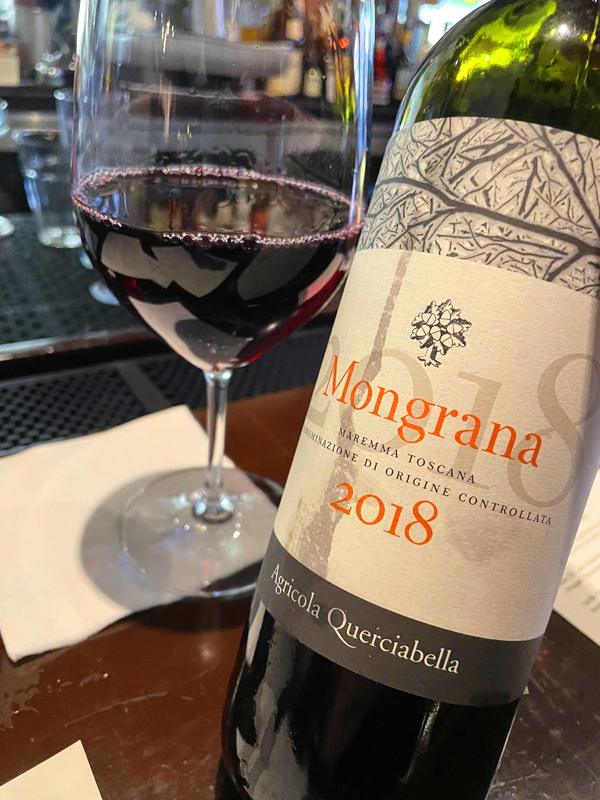
2018 Querciabella, Mongrana, Maremma Toscana DOC, Tuscan Coast, Italy.
The darkly rich and chocolaty Super Tuscan Mongrana Rosso by Querciabella is opulent on the full bodied palate with layers of layers of black fruits and polished tannins along with subtle floral elements, a light dusting of spices and has no oak influence. This vintage of Mongrana is well put together and extremely deep with an inky appearance in the glass, it’s a wine that hedonistically pleases the senses with its fruit density and mouth feel, but also gains in complexity as it opens and is best with robust foods that allow it to fill out its array of flavors that include blackberry, black cherry, plum and currant fruits that are nicely supported by anise, set new leather, minty herb, cigar wrapper and acacia flowers. The 2018 Querciabella Mongrana saw about 50% Sangiovese, 25% Cabernet Sauvignon and 25% Merlot, which has added greatly to this wine’s silky texture and ease of use as a young wine. This Mongrana was made from separate lots of all de-stemmed grapes with gentle fermentation and maceration, with a portion in stainless steel, after which the wine saw an élevage in cement vats exclusively where it was aged for at least 10 months, most years see a full 12 moths, until it was ready to be blended and then bottled. Everything here is about transparency and purity with the Maremma giving plenty of ripe character that doesn’t need any oak. Querciabella’s vines here are set on iron-rich soils of Maremma, with a mixture of silt and alluvial sand, that is sparse and has lots of gravel and surface pebbles. The terroir here with the Mediterranean influence allows for very compelling wines where these Bordeaux grapes and native varietals both do thrillingly well, but also the wines from here are great values with a super quality to price ratio.
The Querciabella property and winery was founded back in 1974, certainly not old by Tuscan standards, by Giuseppe “Pepito” Castiglioni who was an industrial entrepreneur by trade and a lifelong wine lover. Originally he bought a single hectare of vineyard on a Tuscan hillside, but that was only the beginning of project that would go to become a top Chianti Classico estate, and Pepito, as he was known, went on to expand the holdings to include vineyards throughout the region, with the Tuscan Coast area playing a key role. Quercisabella under the leadership of Pepito’s son Sebastiano Cossia Castiglioni saw the estate, in the late eighties go all organic and was one of the first wineries in Italy to employ these environmentally friendly methods and they are now in fact totally vegan as well. The winery notes that in 2000, Sebastiano introduced a 100% plant‑based approach to biodynamics, employed at Querciabello, that forbids the use of animal products on our vineyards or in our cellars. Once again, Querciabella was at the forefront of this caring and holistic approach to winemaking, making the Castiglionis very note worthy innovators in Italy’s wine industry and an inspiration in the historic Tuscan region. Querciabella has more than 100 hectares of vines in the Chianti Classico that are flanked by oak forests, old castles and rolling hills, and also in Maremma, where this wine comes from, an area that enjoys the rugged natural beauty of the less traveled Tuscan coastline. Maremma, like Bolgheri is notable for its perfect conditions to grow the Bordeaux varietals with Cabernet Sauvignon and Merlot doing extremely well here and play a big role along with Sangiovese here, as this wine shows. This bottling is a vintage to search out as it drinks wonderful now and looks to have the stuffing to even age a while as well, it should be enjoyed for the next 5 to 10 years and there is not a need to wait, especially for the price it sells for. ($28 Est.) 91 Points, grapelive
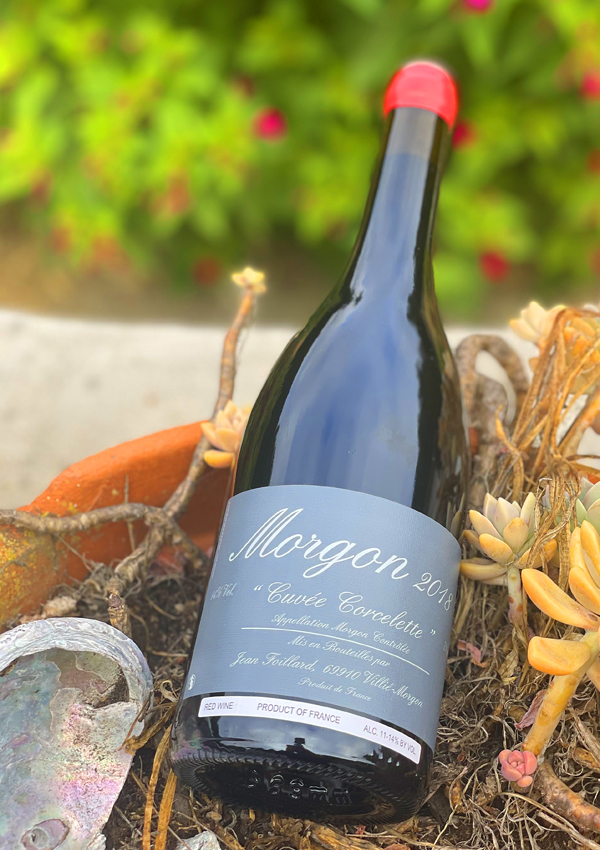
2018 Domaine Jean Foillard, Morgon “Cuvée Corcelette” Cru Beaujolais, France.
As I’ve stated many, many times here in my reviews of Cru Beaujolais, Foillard’s Morgon(s) are masterpieces and drink on par with some much more expensive Burgundy greats, as this vintage of his Cuvée Corcelette does with delicacy, elegance and subtle richness. This wine takes the once unheralded and less loved Gamay grape to new heights of pleasure and pays a great tribute to the legendary Jules Chauvet, who sought to bring traditional natural wine growing and winemaking back to this region. The nose has a mix of floral and earthy aromas, along with baking spices, walnut shells and dark berry fruits while much of the same flows on to the medium bodied palate with silky grace along with fresh plums, black cherry, strawberry, sweet red peach, mineral notes, sandalwood and sticky lavender. There’s plenty of natural acidity and inner energy here, as well as an undercurrent of violets and blood orange zestiness, though as it opens, this dark garnet hued Gamay takes on a more Pinot like grace and roundness with a long lingering finish. Jean Foillard makes some of the most sublime wines in France, not just here in the Beaujolais region and this Corcelette is one of my absolute favorites along with his regular Morgon Cote du Py, the Cuvée 3.14 and the rare Fleurie. I try to get my hands on this bottling every year and to be honest it is much more for just personal use than to write about it, but certainly I have over the years starting around the 2004 vintage and I now look forward to exploring Jean’s son Alex’s own efforts, like those from follow new generation winemakers Charly Thevenet, Mathieu Lapierre and Justin Dutraive, to name a few which have shown real promise in their efforts that I’ve tried so far.
Jean Foillard took over his family’s domaine in 1980 and quickly gained a reputation for making exotically beautiful Gamay, mostly from old vines higher up in the Morgon zone and especially in the Cote du Py with vines that are around 90 years old and have Schist, the classic Granite and Manganese, all of which make for a special terroir. Jean began, early on in his career, to follow the teachings of Jules Chauvet, a traditionalist who, as famed importer Kermit Lynch says, defied everything that the more commercial brands were touting in the region at the time. Foillard along with three other local vignerons, Marcel Lapierre, Jean-Paul Thévenet, and Guy Breton, also joined in on this natural wine movement, long before the modern evolution of the term. This Gang of Four, as Kermit christened them, set about a return to the old practices of organic viticulture and vinification which called whole cluster and indigenous yeast fermentation, though starting with the use of small yielding old vines, never using synthetic herbicides or pesticides, harvesting late with the healthiest grapes and adding only minimal doses of sulfur dioxide or none at all. Such was the success of these guys, that now that seems pretty normal and even better these wines age majestically and are highly coveted by collectors. For his Cuvée Corcelette Foillard employs his traditional, whole cluster fermentation that usually lasts (on the skins) for close to three, sometimes four weeks before gentle pressing and racking to large cask where the Gamay is matured for between 6-9 months, depending on the vintage, in used oak barrels and one huge 30-hectoliter foudre. I have often compared Foillard’s Corcelette to Chambolle-Musigny, a village where the wines show a seductive prettiness and are aromatic, and this 2018 is much the same, I highly recommend all of Jean’s offerings, they never fail to impress. This wine was a great way to celebrate friends, food and Bastille Day!
($50 Est.) 94 Points, grapelive
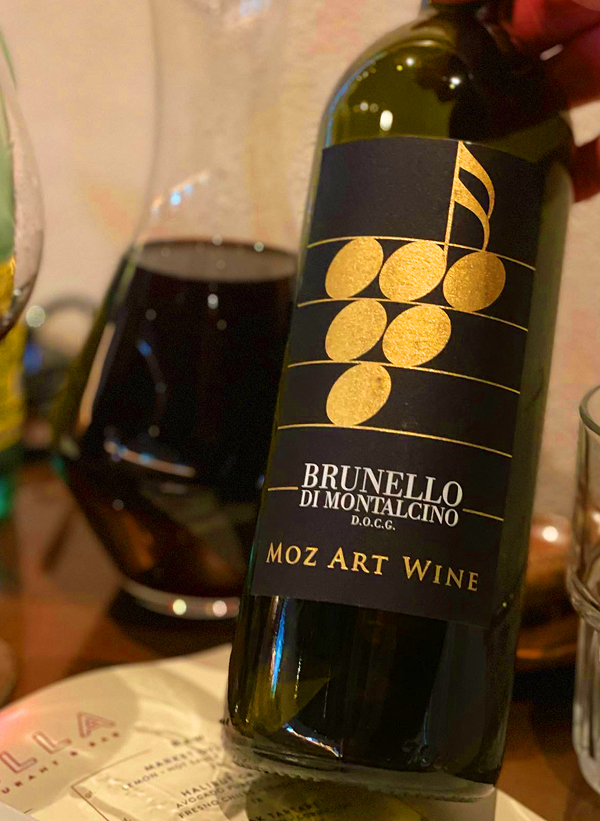
2016 Il Paradiso di Frassina, Brunello di Montalcino DOCG “Moz Art Wine” Tuscany, Italy.
Il Paradiso di Frassina “Moz Art Wine” Brunello is wonderfully transparent, elegant and authentic in nature with without the heady quality you get with some blockbuster vintages here, but rather beautiful smooth layering of classic flavors including dusty blackberry, plum, cherry and strawberry fruits that are accented well by savory elements, leather, tobacco, menthol minty notes as well as anise, cedar and dried flowers. There’s a subtle grace that is admirable here, though I’ll be honest, it is more for the drinker rather than collector and some would rightly be disappointed in the lack of stuffing, tannin and concentration here, but oh my, this a joyous and pleasing wine that needs not apologize in any way! The Mozart Vineyard at Il Paradiso di Frassina is an intriguing project where Mozart’s music is played by specially designed Bose speakers 24-7 and heard in the vines, as well as in the cellar, to study the beneficial effects of sound waves on the grapes and the resting wine post fermentation! The winery truly believes this has been a breakthrough in winemaking helping to produce a distinct and lusty Brunello di Montalcino, but even my skepticism can’t hide the big smile on my face while experiencing this 2016, this is delicious and exceptionally well balanced wine that gets better with food and with every sip. The Paradiso di Frassina, set amongst olive groves and the Tuscan forested hills is an ancient medieval farm that dates back to the 11th century and is located just five kilometers north of the historic hilltop town of Montalcino. The estate is perfect nestled at the foot of the famed hill of Montosoli, which is one of the best sites in all of the Brunello of Montalcino DOCG zone! The vines here have a bit more cooling influence and the wine is not overly high in natural alcohol, though it does have excellent ripeness with the clay and loamy top soil helping bring out the fruit quality here.
This utterly compelling all organic, medium-bodied Sangiovese Grosso (Brunello clone) spent 36 months in well seasoned French oak barrels and then another 12 months after being bottled in Il Paradiso di Frassina’s temperature-controlled cellars before it was sent off to be adopted. All the grapes are de-stemmed, they are a careful selection of the best grapes from Paradiso di Frassina’s Mozart vineyard that were fermented in stainless steel to preserve freshness and saw a gentle maceration and pillage before going into the used oak. The Paradiso di Frassina property, as they themselves note, enjoys a unique location in the picturesque countryside to the south of Siena, in the Val d’Orcia valley, not all that far from the border with Chianti, in rolling hills that marry a more continental climate and soils that range from volcanic to classic clay and limestone. It is a great terroir for Tuscany’s best known grape, located in a cooler zone, and with the vineyard immersed in the harmonies the famous Austrian composer Mozart’s music, that is played and spread amid the rows of vines thanks to a hundred weather proofed speakers at Paradiso di Frassina. This is not a silly gimmick, as it might appear to be, as this is a serious experiment into agronomic and scientific research concerning the beneficial effects of musical frequencies on the vines (Vitis Vinifera), supported by the Universities of Florence and Pisa, and from the center of agronomic research of Arezzo. It also came about with the sponsorship of and by BOSE itself, who obviously specialize in the production of ultra high quality audio systems and who were interested in what the results would find. Staying at Paradiso di Frassina with its two small villas or cottages on site has become a very coveted opportunity with the promise of gorgeous vineyard landscapes, good music, a relaxed atmosphere and great Brunello (to drink during the stay here) being a huge draw. The farm’s agriturismo limited accommodations are widely popular, so you’ll have to book it well in advance, which I would recommend for classical music and wine lovers, especially after tasting this impeccable Brunello.
($60 Est.) 93 Points, grapelive
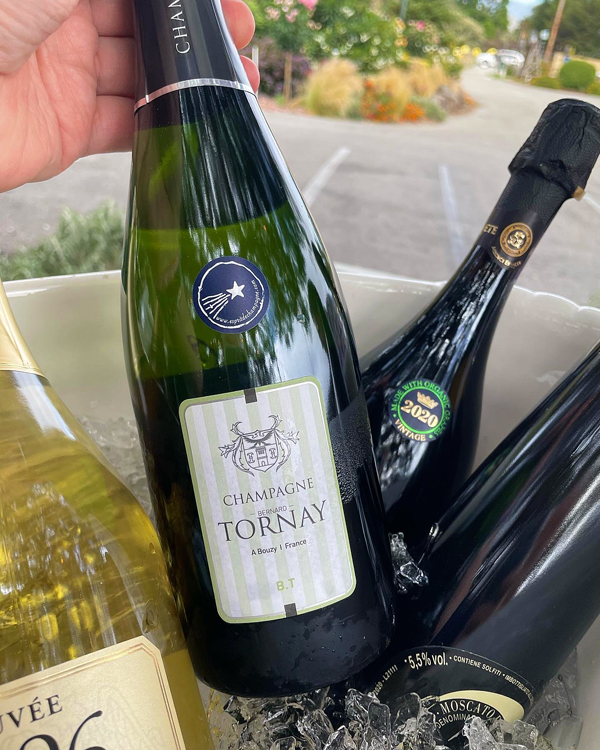
n.v. Bernard Tornay, BT Cuvée Brut Champagne, A Bouzy, Montagne de Reims, France.
The brilliant 70% Pinot Noir (all Grand Cru fruit) and 30% Chardonnay BT cuvée from Bernard Tornay is a gorgeous Champagne that possesses delicate details, a graceful palate and an underlying structure that reminds you of the prestigious terroir that it comes from, this is seriously put together bubbly from a producer that I knew absolutely nothing about until it was in my glass! Lightly golden and with a lovely energetic and creamy mousse this fine Champagne delivers a stellar performance with layers of mineral led flavors with racy citrus, green apple, zingy quince and white fig fruit, a rich yeasty note and clove spice. The Bernard Tornay sourced this beauty from the great amphitheater of vines that rises up above the Grand Cru village of A Bouzy, in the Montagne de Reims zone. Bouzy is one of the most famous Pinot Noir vineyards in the world outside of Burgundy. Bouzy has been notable for its Pinot Noir production since the early 1600s, which the winery says, giving birth to wines characterized by their richness of flavor and powerful bouquet. Bouzy also is the only village with the right to produce a Grand Cru Pinot Noir still red wine. The Champagne region is characterized by its chalky ancient limestone sub-soil and high acidity that provides a great base for these sparkling wines that were refined by the famed Monk Dom Perignon centuries ago, but we are still seeing innovation here and wines like this Bernard Tornay certainly gives enthusiasts reason to keep exploring and finding new gems here.
The Champagne House of Bernard Tornay dates back to the 17th Century in the Grand Cru village of Bouzy in the Montagne de Reims under the Barnaut family who ran it until Bernard Tornay created his eponymous Champagne house in 1950. This came about when he took over the estate and winery from his father-in-law Gaston Barnaut, though his family had had a long history in there region already, In fact both his family and his wife’s family were heavily involved in Champagne production going back a long time, at least since the 17th century. This was a tradition handed down through the generations, with the family still running this grower producer organic property set in one of Champagne’s best terroirs. The Bernard Tornay winery as it is today was built in 1957, with an underground cellar that keeps things cool and steady, which the winery claims, reduces their energy costs by some 80%, keeping their carbon footprint down. Today the Champagne cellars are run by Bernard’s daughter Nathalie and her husband Rudy Hutasse, who is a talented vintner in his own right and a third generation Champagne maker. Rudy twas rained at the famous Lycée Viticole d’Avize, then spent 17 years working at the Grand Marque Champagne house of Laurent Perrier for before he became the cellar master here back in 1997. This cuvée was inox fermented and matured exclusively in temperature-controlled stainless-steel vats and bottle with 36 months on the lees and saw just 8g/L of dosage keeping things delightfully dry with steely precision. Thanks are due my friend Parker Fisher who introduced me to this Bernard Tornay bubbly, it’s elegant stuff with just the right amount of tension and chalky thrill.
($49 Est.) 93 Points, grapelive
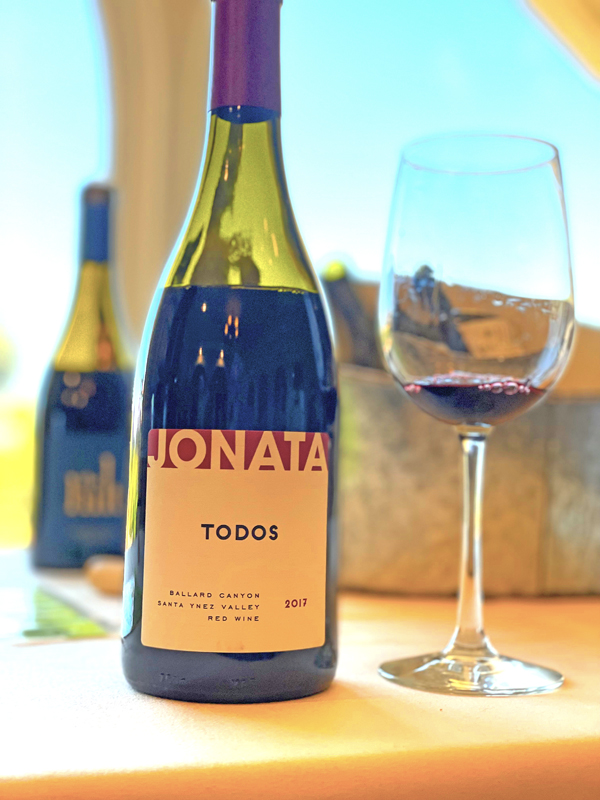
2017 Jonata, Todos, Red Wine, Ballard Canyon, Santa Ynez Valley.
The hyper purple and inky 2017 Jonata Todos, is way better than the last vintage I tried, which was the 2013, with a deeper Syrah character leading the way, with a big amount of whole cluster crunch on the full bodied palate creating tons impact with dense blue and black fruits and a heightened umami presence. The chewy mouth follows this wines previous style and is filled with similar layers of earthy boysenberry, black raspberry, plum, currant and dark sweet cherry fruits leading along with a touch of violets, tobacco, dried lavender, peppercorns, anise, and light woody cedar notes. With air you get even more with creme de cassis, stones and leather coming through, there’s a bit more soulfulness and complexity here than I remember and a nice tension between the ripe fruit and the savory personality of this Todos. The Jonata and The Hilt wines are made by, as noted here, the highly regarded Matt Dees, one of California’s great new generation of winemakers, with this particular bottling being a fascinating red blend from tiny yields on the Jonata estate, which is set on sandy soils. Dees, with a degree in Soil Science from the University of Vermont, has done stints at Staglin in Napa and Craggy Range in Hawkes Bay, New Zealand, and is a firm believer in organic and or sustainable farming practices and is looking to transmit the terroir into the wine with transparency, with this one being a unique example of his work. I recently tasted and reviewed Jonata’s sister label The Hilt, which specializes in Sta. Rita Hills Chardonnay and Pinot, with their excellent 2018 Estate Pinot Noir being a beautiful example of the quality that is winery strives for.
Interestingly, the 2017 Todos Red Wine, has less Syrah than normal in the final blend with this vintage seeing 44% Syrah, 22% Cabernet Sauvignon, 12% Petite Sirah, 10% Petit Verdot, 8% Merlot and 8% Cabernet Franc, so I imagine the supporting cast of varietals will over time become more expressive as this exciting wine ages. The vintage saw lots of drama with cool conditions during flowering and heat events late in the season resulted in, as Dees notes, micro yields that In many cases only gave about 50% of the estate’s normal yields. This cuvée was selected from separate fermentation lots, sort of a kitchen sink blend with a Rhone meets Bordeaux feel to it, while also being a pure California wine. The color and aromatic quality here is very seductive and brings all of your senses alive, this Todos gains another level of dimension with food, the simpler the better, it also allows the tannic nature to gracefully smooth out and makes the finish much longer and pleasing. Jonata has been making this Todos blend from quite a while, with Dees adding that he thinks this 2017 is one of the most approachable vintages to date and while still firm, I can’t argue with that, though I’m also sure the 2018 and 2019 versions will be even better and I am looking forward to sampling those in the near future. The vines at Jonata are immaculately taken care of by local legend Ruben Solórzano, who is also responsible for the vineyards at Stopman, so you known the grapes are awesome here, as this intriguing red wine shows, even in the difficult growing season that this vintage had. The winemaking is non intervention and each block and varietal is made in a manner best suited to them, with the Syrah seeing a higher percentage of whole bunches and over all very little new oak or any is employed here, again to highlight clarity and provides a rustic charm.
($56 Est.) 94 Points, grapelive
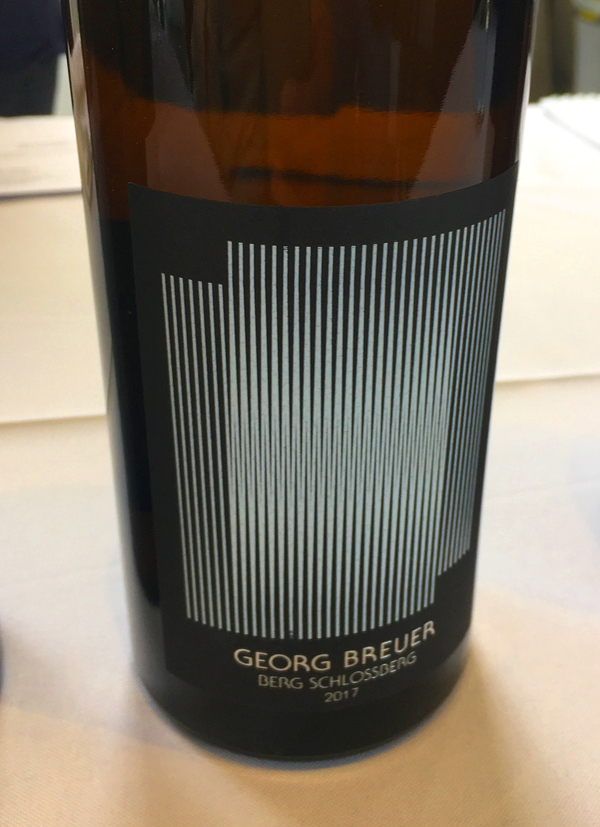
2017 Weingut Georg Breuer, Riesling Trocken, Artist Label, Rüdesheimer Berg Schlossberg, Rheingau, Germany.
The dry Grand Cru Schlossberg bottling from Breuer is one of the most serious terroir driven wines in the world, with this 2017 showing a warm ripe detail, while showcasing the slate character this site is famous for with a smoky/flinty edginess and tension on the medium bodied, but concentrated palate that never lets you forget the intensity of this incredible and special place overlooking the Rhein River. Tasted twice now, this 2017 is riveting and has ages to go, it delivers a slightly rustic and authentic performance in the glass, which some would find austere, but in reality it is just getting started and is gorgeously put together with classic Schlossberg transparency and crystalline detailing of the flavors here, including lime, green apple, apricot and quince fruits, along with a background of chamomile, verbena, tangy herbs, peach pit and wet, salty stones. The picturesque Schlossberg Cru is located on the steeper western end of the Rüdesheimer Berg majestically overlooking the bend of the Rhiein, what the Breuer’s say is the so-called “Binger Loch”, west of the old town and opposite Bingen, the confluence of the Nahe River, and the Mäuseturm. Here, the Rhein changes direction and flows North again after its Rheingau East-West Intermezzo, when it has its widest point. This vineyard is very steep, surrounding the castle ruins and the rows of vines rise up from the Rhein here with an impossible 65 percent incline and soaks in the sun with a perfect Southwest exposure giving the wines, which are mostly dry here power and density, with this 2017 Breuer being an excellent example of the force of nature that is this place. I love Schlossberg in the glass and I love walking the vineyard, I have twice now spent time here, back in 2009 and more recently at harvest time in 2016 and both visits included tasting with the Breuer’s in downtown Rüdesheim, unforgettable experiences. This lightly golden 2017 Riesling follows my recollection of early vintages, but while tightly wound it gains a grace and textural pleasure that is a marker of this particular year and the aromatics seems a bit more expressive at this stage, it is just beginning to blossom and there is a lot more to come.
I have long been a fan of this historic winery, which was originally founded back in 1880 and I admire the direction Theresa Breuer has taken the Georg Breuer label with her more holistic approach in the vineyards and in the cellar, while continuing to be faithful to her father’s vision. Bernhard Breuer, who, as the winery notes, was one of the key members of Charta, an organization formed to promote a drier style of Rheingau wine, sadly died way too young, but his legacy is alive and well with Theresa’s own talents. She has taken her dad’s ideas to heart and has been raising the quality here with each vintage, through grit, hard work and natural practices in the vineyards and a gentle hand in the cellar. Bernhard was a huge proponent of this GG style of wine, and believed that the Rheingau was perfectly suited to producing very fine, single site, elegant and flavorful dry Reislings. This is obviously true, especially today as you can see in his daughter’s wines, as this wine shows, as well as those of Kunstler, Leitz, Kesseler and others that also do their own mighty versions of Schlossberg. Bernhard was also a strong advocate for a vineyard classification system based on geology, historical precedent and quality of wines. The vineyards are, like Schlossberg with its slatey and rich in quartzite soils, all farmed using organic methods and are certified by Fair N Green and In the top sites, again like this one, see tiny yields to promote depth and complexity, while retaining loads of natural acidity. Physiological and “aroma ripeness” are more important to the winery than must weight and the grapes are picked when Theresa and her team feel the fruit is perfect, and the results have proved they have great insight into their vineyards. Botrytis, as the winery notes, is avoided as the majority of the production at Breuer is dry, with gripping extract and taut structures. The fermentation(s) are old school and natural or started with pied de cuve, basket ferments in the individual vineyards, with fermentation and élevage being done in large used barrels for the top wines such as the Monopole Nonnenberg, Rottland, Roseneck and Schlossberg bottlings. There is a raw appeal to Theresa’s wines and I seem to be more and more drawn to them, especially this extremely rare artist label Schlossberg bottling, which has a cult like following, I highly recommend putting it on your must try list and suggest exploring this amazing and historic wine region, I can’t wait to get back myself.
($150+ Est.) 96 Points, grapelive
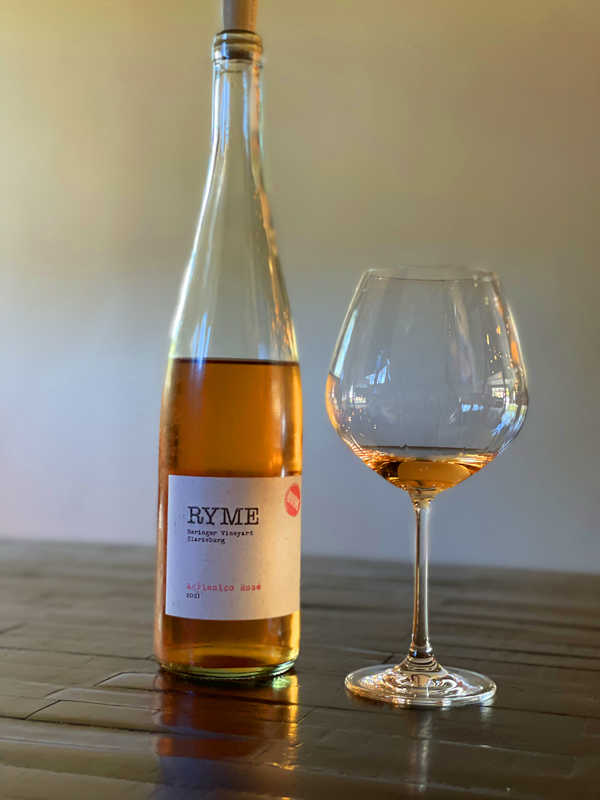
2021 Ryme Cellars, Rosé of Aglianico, Heringer Vineyard, Clarksburg AVA, California.
This 2021 Aglianico Rosé by Ryme is an exceptional dry and mineral driven pink, that winemakers Megan and Ryan Glaab have really made their own, with its distinctive appearance, flavors and aromatics that are completely seductive with fabulous natural acidity and low alcohol delicacy. The 2021 takes an already great platform to the next level here with the Ryme Rosé of Aglianico delivering crystalline clarity with an ultra pale amber tinted pink color and divine layers of sour tart cherry, strawberry, ruby citrus, briery spiced raspberry fruits, steely mineral, peach flesh, saline notes and a hint of rosewater. Everything here is brilliantly laser focused and full of thrilling energy, and this Rosé joins an elite group of California examples, like Arnot-Roberts, Stars & Dust, Bedrock, Jolie-Laide and Filomena to name a few of the most interesting bone dry offerings that should be on your Summer drinking list. Ryme Wine Cellars, which winemakers Megan and Ryan Glaab founded in 2007, makes collection of seriously fun offerings with an accent on Vermentino, Cabernet Franc and Aglianico, a grape more commonly found in Campania Italy, like in this savvy Rosé, as well as a quaffable Sangiovese and Friulano blend, plus a couple of specialty sparklers that are deliciously unique. Ryme is a collaboration of this husband and wife team that are committed to a new take on California wine with old world sensibilities. Ryme’s wines are traditionally crafted and employ mostly natural methods with an admiration for California’s diverse terroirs, history and, as they put it, its sunny disposition.
As noted here at Grapelive.com, Ryme has searched out many different vineyard sites for their set of Aglianico red wines, mostly from warm areas to get this powerful grape ripe, but they needed a cooler site to do this exceptional Rosé and after a bit of searching they found the spot. The Heringer Vineyard, which is located in the Clarksburg AVA, known for its old California Chenin Blanc vines and that has a climate well suited to provide natural acidity, as seen here. With its stony, rich alluvial soils, its modestly warm days, as Ryme explains, plus the cool breezes winding through the nearby Delta, the Heringer Vineyard site has the perfect conditions to provide grapes for this lovely dry pink wine exclusively. The Glaab’s also note that the Aglianico struggles here to accumulate much sugar and rather than a dark and brooding wine, as it usually is, the fruit coming from this site helps retains more vitality and brightness. At just 20 brix and very high acidity, Ryme brought these Aglianico grapes into the winery where they were immediately cool whole cluster pressed to minimize its color extraction. Then it was fermented, all naturally without additions, in stainless steel and after primary was finished it was aged a short time neutral wood before a quick bottling. Just like the 2019 and 2020 vintages, this 2021 Rosé, with under 12% alcohol, really stands out and I am highly impressed with all of Ryme’s efforts with Aglianico, known as the “Barolo of the South” in its home country, because of its Nebbiolo like earthy/tannic character, and Megan and Ryan’s versions are truly outstanding wines that I highly recommend. This Rosé is great as a delicious and refreshing sipper all on its own, but can be paired with a wide range of foods, from sea foods to BBQ, do not miss it!
($25 Est.) 94 Points, grapelive
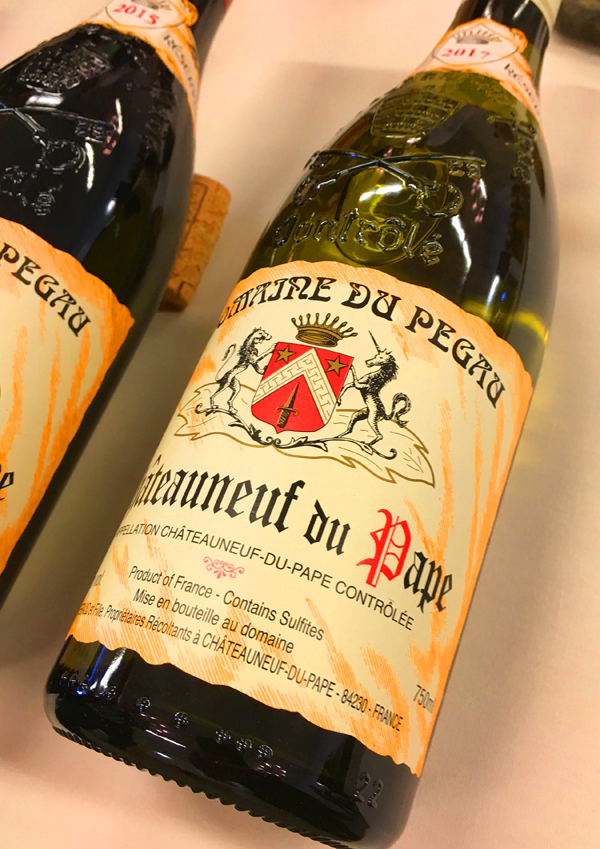
2017 Chateau Pegau, Chateauneuf du Pape Blanc, Cuvée Réservée, Rhone Valley, France.
The Cuvée Réservée Blanc from Domaine du Pegau is uniquely crafted using primarily Clairette Blanche along with Grenache Blanc, making less dense and oily than the more Roussanne based Chateauneuf-du-Pape Blancs, like those of Beaucastel and others, which gives this wine a cool toned crispness and a more lively personality in the glass, as this beautiful 2017 Pegau proves with bright citrus, melon and peach fruit leading the way on the graceful medium/full palate. I am a big fan of the Clairette based wines of the Rhone and Provence regions, so it easy to fall in love with Laurence Feraud’s lovely example, even from a warm year, it is wonderfully balanced with mineral and stony notes backing up the ripe fruit, along with snappy spices and a contrasting opulent roundness and impressive length. Hints of white flowers, wet stones, clove and saline add to pleasing layers in the mouth, with this Chateauneuf Blanc being close to perfection and holding its own against some more fancied Burgundy and Loire whites. Those that enjoy Vieux Telegraphe Blanc will find this Pegau Cuvée Réservée Blanc right up their alley and it will be a sublime wine with Mediterranean and or Middle Eastern inspired cuisine, from grilled and herb crusted fish to lemon chicken. The 2017s final blend was Clairette 60%, Grenache Banc 20%, Bourboulenc 10% and Roussane 10%, which help explain the complexity and depth found here in this brilliantly detailed and structured wine. After time in the glass, this Chateauneuf Blanc picks up that tiny amount of Roussanne and gains apricot and pear notes as well as an even more divine textural quality, with the winery recommending drinking it for up to ten years along with suggested pairings with salmon, scallops, lobster and various shellfish, noting that it also pairs well with sushi.
The Domaine du Pegau is one of the most coveted estates in Chateauneuf du Pape these days, run by Paul Feraud and his incredibly talented daughter winemaker Laurence, and these hand crafted traditional wines are some of the most authentic and sought after in the region. The Férauds, as mentioned in my prior reviews from this awesome winery, have been growing vines in Châteauneuf-du-Pape since 1670, with titles to their earliest vineyards dating back to at least 1733, but older generation of the Férauds sold most of their production in bulk to top négociants, that have included the likes of Paul Jaboulet-Aine and even Guigal. That changed in 1964, when Paul decided to sell 5,000 bottles under his own label, which brought in a new era of estate bottlings, but it was until Laurence came on the scene that the true greatest of the estate became clear, when in 1987 they started the Domaine du Pegau. Pegau now has over 50 acres of prime vineyards with a lot being old vine parcels and Laurence is making some awesome stuff, especially her top line Chateauneuf Rouge bottlings, as well as her whites like this one. The vines set on limestone and clay soils with scattered stones and some sand, pretty classic for the area, with this Chateauneuf coming from the best estate white grape parcels in the zone with red clay and lots of stones. For this Cuvée Réservée Laurence did a gentle direct pressing of the grapes and allowed a cool temperature controlled fermentation in exclusively stainless steel tanks with the total fermentation and aging (also in stainless only) lasting just about 4 months before bottling, all to preserve clarity and purity in the wine, which was achieved in excellent fashion. The aromatics take a while to unfold here, but again, I find it hard to fault anything about this wine and while I am almost always craving the reds here, this white is exceptional stuff and I highly recommend keeping an eye out for these Pegau Chateauneuf du Pape Blancs!
($72 Est.) 94 Points, grapelive
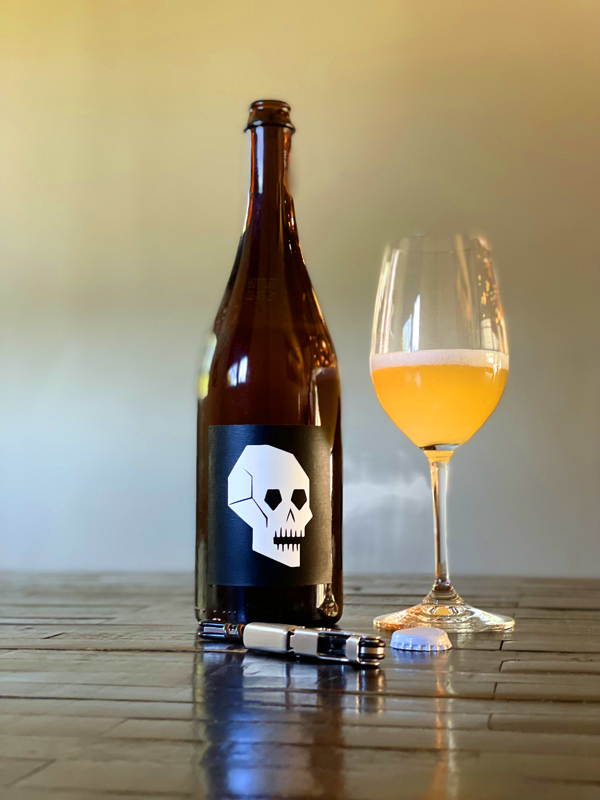
2020 Monte Rio Cellars, Skull Piquette, Sparkling White Wine, California.
The salty and fizzy white Skull Piquette from Monte Rio Cellars is bright and citrusy sparkling wine that is highly quaffable and low in natural alcohol, making it a fun and no pretense Summer refresher with tangy flavors and with a bone dry crispness on the lighter framed palate. Cidery earthy elements, an unfiltered gold/yellow hue and some chopped almonds yeasty notes lead the way with a frothy mousse in the glass make this bubbly interesting along with its tart and dusty dry peach, lemon/lime, quince and pear fruit. These Piquettes, all the rage now, are as Patrick Cappiello, the winemaker/owner of Monte Rio Cellars, says, made as a result of water being added to the pre-fermenting grape must. Adding that it is steeped for two days before it’s put into stainless steel barrels, with some unfermented grape juice added to assist an indigenous yeast fermentation. Then after primary is done, the wine is rested for five months in the steel barrels before another little bit of unfermented juice is added on the day of bottling to start second fermentation in bottle. The Monte Rio Piquettes have zero sulfur added and the finished alcohol is just 7% natural alcohol, making them lively, and as mentioned above, very refreshing and surprisingly dry. These are cheap and cheerful bubbly that are not trying to be Champagne, more like Lambrusco in a way, but they are uniquely Californian in wild combination of grapes used to make them.
This Monte Rio Cellars Piquette is an interesting new California interpretation of an ancient method style sparkling wine, which for a lack of a better explanation I will call Pet-Nat 2.0 or a Glou-Glou Fizz. Patrick Cappiello, the famous Sommelier behind Monte Rio Cellars, a small micro craft winery in Sonoma County that makes wines in partnership with Pax Mahle, the famous Syrah producer, explains that Piquette was started many decades ago by vineyard and winery workers in France who discovered that by taking the grape must out of the press and adding water, they could start a second fermentation, which results in a fresh, low alcohol, slightly sparkling wine. Cappiello adds, that over the past few years these style of wines have seen a big resurgence here in the United States and this 2020 vintage is his second harvest making them, of which he did two distinct versions. This white one being made from Vermentino, Chardonnay and Melon de Bourgogne grapes in must form and his reddish/pink version, which I already reviewed was crafted using an interesting combination of Gamay, Trousseau Noir and Trousseau Gris. I enjoyed this Piquette with cold chicken salad, its best to drink this with simple foods and it begs for outdoor dinning and sunny weather. The Monte Rio Cellars wines are notably raw and natural in style and are throwbacks to an earlier era of California table wines, their lineup includes Zins and other old California grapes, including the Mission grape, they are all easy drinking and great values.
($23 Est.) 88 Points, grapelive
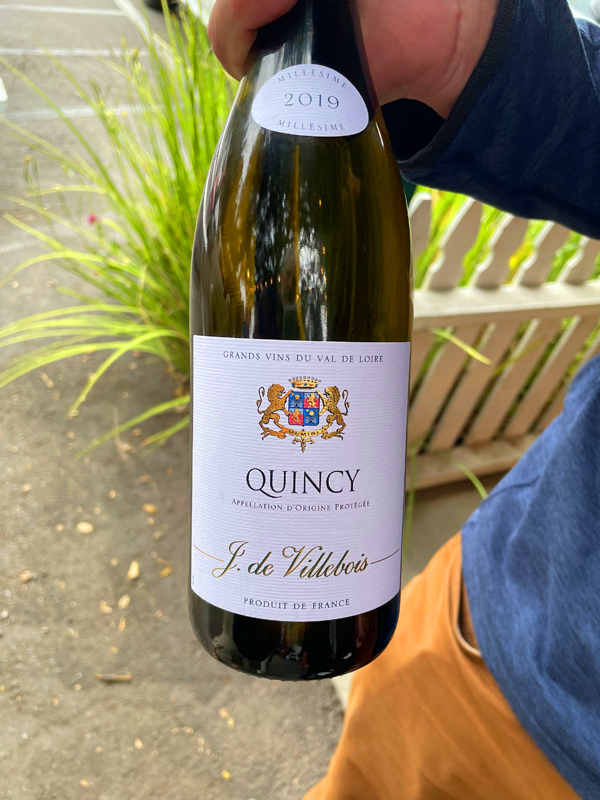
2019 Domaine J. de Villebois, Quincy AOC, Loire Valley, France.
The bright and steely 2019 vintage Quincy by Domaine J. De Villebois, 100% Sauvignon Blanc, is pure and stylish stuff, quite a nice surprise and more complex and satisfying than you would expect, it is a of subtle intensity and doesn’t leave you wanting more. Similar in substance and style to Sancerre, this delicately aromatic Quincy delivers fresh layers of lemon/lime, white peach, muskmelon and quince fruits in a light to medium bodied white wine that feels taut and crisp on the zingy palate along with touches of gooseberry, lemongrass and wet stones. This wine comes alive and gains depth when paired with food, especially lighter fare and or classic cheeses, like ripe soft goat cheese, which I tried with it. In my case I had an artisan goat cheese from Cypress Grove, who make the legendary Humbolt Fog, that perfectly matched the wine’s energy and flavors and creating a simple, but divine experience. Interestingly, Quincy was the very first appellation from the Central-Loire to obtain full AOC status, again like Sancerre Blanc, must be all Sauvignon Blanc, though it doesn’t include the single vineyard sites that have given now the much more widely known Sancerre does. That said I have really enjoyed these under the radar wines from Quincy, especially the wines of Adele Rouze, which is my go to from this region, and now these de Villebois versions. This ultra pale straw colored Sauvignon Blanc screams old world charm in the glass and is way better than some mass produced Kiwi examples, or grassy California versions, and provides plenty of refreshment and a real sense of place.
Located in the upper-central area of the Loire Valley, the J. De Villebois, near Touraine, domaine is almost entirely focused on growing Sauvignon Blanc grapes, though they also farm a little bit of Pinot Noir as well here, they have vines in all the key Loire Valley appellations where the Sauvignon Blanc does best, including Sancerre, Touraine, Pouilly-Fumé, Menetou Salon and Quincy, where they grapes for this wine come from. De Villebois follows strict environmental and farming practices, all stages of their wine production are certified sustainable winegrowing by the CSR Vignerons Engages Association, and with great respect to the land in this historic and largely unspoiled and picturesque region of France. The Dutch owners, Joost and Miguela de Willebois embrace their adopted home with passion and admiration of the way of life here, especially the centuries old gastronomic traditions and the natural beauty that surrounds these ancient villages. The couple started J. De Villebois in 2004 by first producing a simple regional Sauvignon Blanc, but now have formed great bonds with growers throughout the more prestigious Crus and have expanded their range over the following years, as well as raising the quality to such levels that their wines are gaining an international following, especially for their top bottlings of Sancerre. The grapes for the Quincy come from limestone soils and to highlight the terroir here the wine was gently crafted with a soft pneumatic pressing and stainless steel fermentation and elevage, which was done on the fine lees and lasted about 6 months before bottling. The Quincy wines are somewhat rare in the states, but offer tons of personality and value with this one being a good way start to exploring this region, I recommend this vintage, but I’m sure the following 2020 and 2021 will be quality efforts as well.
($25 Est.) 90 Points, grapelive
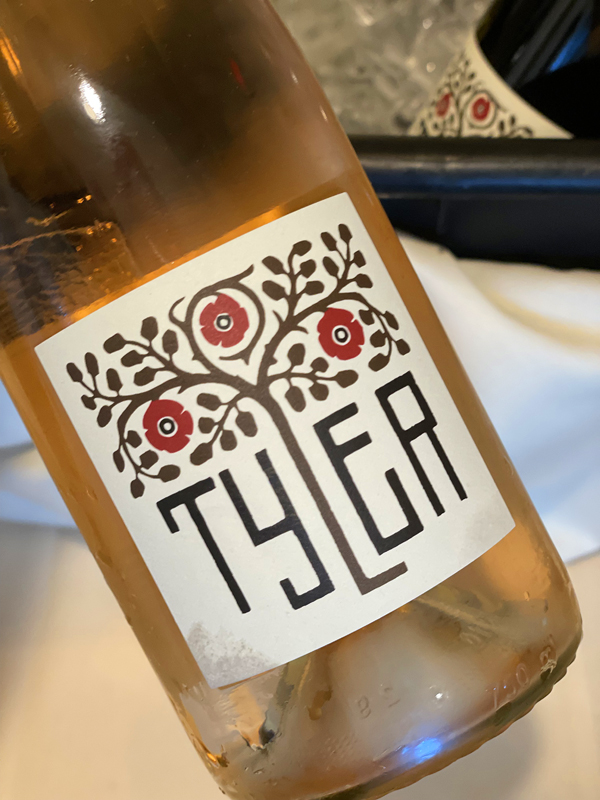
2021 Tyler, Rosé of Pinot Noir, Sta. Rita Hills.
Justin Willett’s Tyler label is all about Chardonnay and Pinot Noir, highlighted by fresh cool climate detailing, low alcohol and beautiful textures, these are very coveted and lovely wines, which I recently got a chance to taste through again with Willett’s 2020 Chardonnays really standing out, along with a new for me Happy Canyon Cabernet Sauvignon and this brilliant 2021 Rosé of Pinot Noir. Coming from the Sta. Rita Hills, this dry and crisply focused Rosé shines nicely in the glass with a delicate pale salmon/pink hue and is bursting with energy on the zesty light framed palate, but there’s more complexity and flavor that you’d think, making it one of the more exciting new Rosés made from this grape I’ve tried so far this year. The profile is subtle and mineral driven with Pinot character showing throughout with bright tart cherry leading the way with hints of spice, wet stones and rosewater in the background, gaining zippy ruby citrus notes and lingering strawberries. It looks like Willet nailed the early pick for low Brix, lots of acidity and still with good ripeness to give grace and pleasure here, making for a Rosé of impact and substance that can stand up to many food choices and is a beautiful refreshing sipper for these warm months of Summer. 2021 really delivered the goods for awesome Rosé, and this might be the best yet from this winery, it will be best enjoyed with mussels in spicy broth and or with beach picnics. Tyler got the grapes for this Rosé from multiple vineyard sites that Willett works with for his main Pinot Noir lineup, brought in before they got too much sugar to make this bone dry and tasty version.
Now one of the top winemakers in the Santa Barbara region, Justin “Tyler” Willett founded Tyler back in 2005, at the tender age of 24, starting with a couple of barrels that he says he tucked away in the corner of the Sta. Rita Hills cellar where he was working at the time as an assistant winemaker. Even from his early days Willett got a lot of attention for his wines and he developed his much praised restrained and taut style, again, it was his Chards that really drew me in and they still do, especially his basic Sta. Rita Hills bottling that is one of the best values in the state and his new and impressive signature Mae Estate, which I just got to sample for the first time last week. Tyler’s new Estate Vineyard, where he sources fruit for the Mae lineup is located in a cool zone of the Sta. Rita Hills, set on the sandy soils and has 28 acres planted to select clones of Chardonnay, Pinot Noir and some Syrah, that I’ve not tried yet, but am looking forward too, it is a site that will, as it matures, become the main focus of the winery. Willett won’t forget the collection of vineyards he’s been using though, he long been a champion of old vines, as Justin notes, and is grateful to have famed some of the most historic vineyards of the Santa Barbara area, including what he calls the region-defining Sanford & Benedict Vineyard, in the Sta. Rita Hills. The Rosé, sourced from a very different sites in the SRH, was gently pressed by its own weight and saw very minimal skin contact, then fermented in stainless steel using native yeasts. Willett then moved the juice to neutral French oak for a few months, that allowed for the excellent vinous quality found here, before going back to stainless, to preserve purity prior to its bottling. This delightful stuff is well worth chasing down and drinking over the next 6 months to a year.
($30 Est.) 91 Points, grapelive
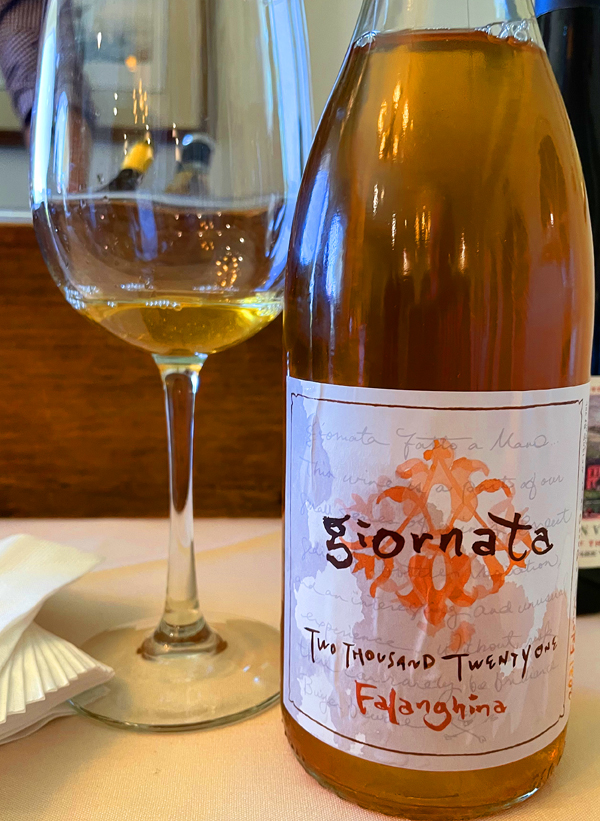
2021 Giornata, Falanghina, Amphora Series, Paso Robles.
Brian Terrizzi’s Giornata label, all wines inspired by their Italian cousins, has been one of the great alternative wineries in Paso Robles and from his spot in Tin City is putting out an impressive array of stuff from this excellent skin contact and amphora raised Falanghina to his signature Nebbiolo, these are do not miss wines, especially this one, and the latest releases I just was able to try. The reds will get all of the attention here, but the whites should not be too over looked, as this intriguing golden orange edged and textured white proves, it has impeccable balance and grace, none too common in orange style wines, with just enough extract grip, savory elements and earthy phenolics to make it complex, but with exceptional purity of fruit and beautiful aromatics. The medium bodied palate is fresh and vigorous with layers of apricot/peach stone fruit, preserved lemons, quince and tangy nectarine along with a fine saline note, chalk, candied citrus rind, spiced florals and mineral tones that shine through in the glass, it drinks really well and is surprisingly graceful with plenty of flesh and natural acidity. Fun to sip on, the Giornata Amphora Series Flanghina is brilliant with food and gets more interesting with cuisine, I would recommend pairing it with grilled salmon, spicy shrimp and or with a cheese board, all to allow the full depth of this wine to express itself.
As mentioned in prior reviews, Giornata is specializing in Italian varietals or Cal Itals and focuses on the Piedmonte grapes of Nebbiolo and Barbera, but does a stylish set of Southern Italian wines, including their Fiano and Falanghina offerings, as well as an incredible Aglianico, which hails from Campania and the famous Taurasi region and is called the Barolo of the South. Between Giornata and Ryme Cellars, plus some other producers, have taken California to the next level in Italian varietal wines, beyond Sangiovese and there’s more to come. I’m very excited in particular for the potential of Aglianico, with Terrizzi’s 2019 French Camp Vineyard version being a fantastic effort. Paso Robles provides limestone soils and weather that suits these Southern Italy grapes, with warm days and cool nights allowing big ripe flavors, but also retaining lively energy in the wines with natural acidity, all of which is showcased in these Giornata wines. Brian’s set of Fatto a Mano, translated as “made by hand” in Italian, consists of Arneis, Falanghina, as seen here, Fiano, Ramato of Pinot Gris and Vermentino, as he notes, are handcrafted, sourced from sustainable vines on the West side of the region and are fermented and aged in Giornata’s old world inspired terra-cotta amphoraes. These special, mostly skin contact, lightly tannic whites are unfiltered and unfined, hand bottled and hand labeled, plus they can purchased as a set, with the 2021 vintage seeing a collection of six wines, which is a cool way to explore these cool wines.
($35 Est.) 93 Points, grapelive
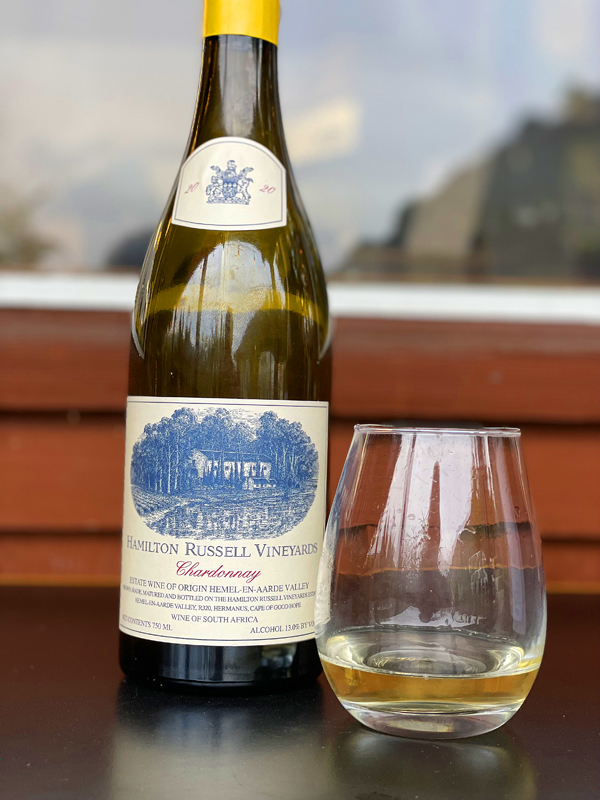
2020 Hamilton Russell Vineyards, Chardonnay, Hemel-en-Aarde Valley, South Africa.
The impeccably made and beautifully balance Hamilton Russell Chardonnay, a long time favorite, especially this 2020 vintage marries lush new world style concentration and opulence with old world flavor and stony elegance showing a rich texture, fine aromatics and crisp acidity. This vintage has some serious stuffing that comes flowing across the full bodied palate with creamy layers of lemon, peach, apple and pear fruits along with mineral tones, white flowers, clove spice, golden fig, leesy brioche, hazelnut, subtle wood shadings, wet rock, and a hint of star anise. Everything folds nice together in mouth and goes on and on, after this Chard comes up to drinking temp, be sure not to serve it too cold and it really benefits from food, it is less an aperitif or cocktail wine, rather a wine that shows its full character and class with a meal, with some substance and flesh being best, like swordfish, lobster and roast poultry dishes bringing out its most rewarding charms. This part of the Cape has become an excellent source of both Chardonnay and Pinot Noir, these are some of South Africa’s most desirable wines, in particular I have been thrilled by what this world famous winery has done with these classic Burgundian varietals over the years and this vintage really shines, I highly recommend this one. I am excited for those that haven’t had the chance to try these Hamilton Russell offerings, as I believe it is almost impossible not to be seduced by them and I look forward to trying the latest estate Hemel-en-Aarde Pinot Noir as soon as I can.
The Hamilton Russell winery is located in one of the most southerly wine regions in all of Africa, with this producers being renown as a Pinot Noir and Chardonnay specialist that, as the winery notes, pioneered viticulture in this picturesque area, with its cool maritime climate. The Hemel-en-Aarde Valley appellation starts just behind the old fishing village of Hermanus on the Western Cape and is the heart and soul of these Hamilton Russell wines, it was the estate’s founder, Tim Hamilton Russell, who first saw the opportunity for making great wines here in this unique terroir and purchased this undeveloped 170 hectare property back in 1975 and started planting the first vines here. Later His son, Anthony Hamilton Russell, who took over in 1991, took this estate from obscurity to international fame with a laser like focus on Chardonnay and Pinot Noir. After some extensive soil research that Anthony initiated back in 1994, when he finally bought out his father, he identified 52 hectares of stony, clay-rich, shale-derived soils that have proved pivotal in the quest to make wines on the next level, which he most certainly accomplished. In recent years, Anthony with his wife Olive, brought on winemaker Emul Ross and viticulturist Johan Montgomery, who have continued to made these Hamilton Russell wines very special and highly coveted and very much in demand. The pale gold and slightly reductive Hamilton Russell Chardonnay was mostly barrel fermented and 94% saw full Malo-lactic conversion, with a tiny percentage being tank raised without malos to promote freshness. Then it was aged ten months in Francois Freres French oak barrels, with close to 25% new, with a combination of sizes from the classic 225L barriques to 300L casks, as well as a small amount seeing foudre. All of which has made for an exceptional Chardonnay that is structured to age gracefully and drink superbly well even in its youth.
($45 Est.) 94 Points, grapelive
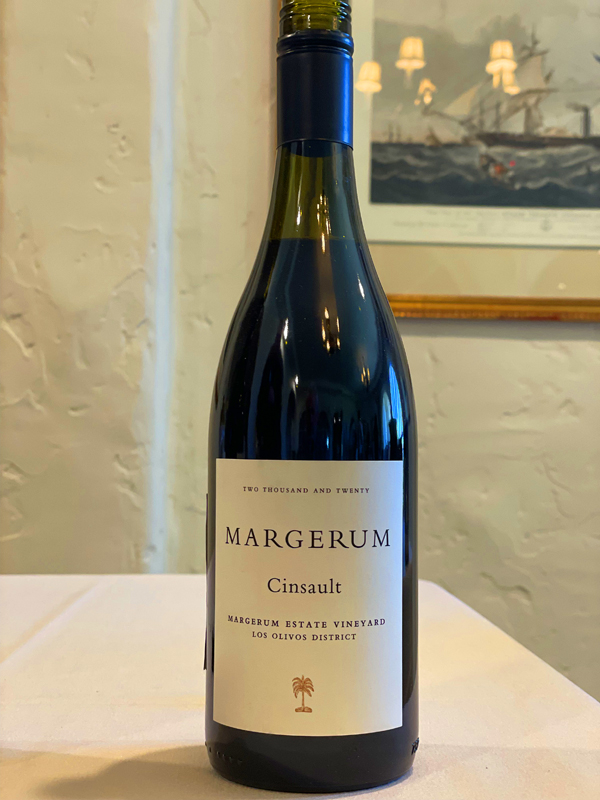
2020 Margerum, Cinsault, Margerum Estate Vineyard, Los Olivos District, Santa Ynez Valley.
The Margerum Estate Cinsault, 2020, the first time I’ve had this wine, was very juicy fresh and spicy with plenty of zippy character, it shows a lighter framed palate of tangy red fruits, making it a wine that benefits from a good chill and Summer cuisine. While ripe in fruit, there’s a zesty green spice note and plenty of natural acidity, it almost gives me the sensation of drinking a Blood Mary with the spice and celery, but is more fun in the experience than the hangover cure! The fruit profile here leans to tart cherry and wild plum, along with crushed raspberries, all supported by garden herbs, cinnamon and blood orange notes, with the body and structure of a Pinot Noir or a Trousseau, making it an e excellent quaffer and picnic wine. Doug Margerum, mostly known for his Rhone Reds, like his Syrahs and the M5 Chateauneuf-du-Pape style red blend, has been involved in the Santa Barbara food and wine scene for over 35 years, especially for his time at the legendary and award winning Wine Cask restaurant downtown Santa Barbara where he presided over one of the state’s best wine lists. The Margerum Wine Company began a bit later in 2001, and was inspired by Doug’s love of local wines and personalities, with his close friendship(s) with with Bob Lindquist (Qupé) and the late and much missed Jim Clendenen (Au Bon Climat), being instrumental in his start. Margerum, it should be noted also does a fabulous set of whites and a Provence style Rosé, with their Sybarite Sauvignon Blanc being outstanding stuff. Doug has always tried to give back to the Santa Community and has mentored quite a few young winemakers there the years as well as tirelessly promoting the Santa Barbara region and for many years did a fantastic futures auction featuring some of the best wines ever made in the area, and I highly recommend a visit to the Margerum tasting room.
Doug Margerum’s Margerum Wine Company, focused primarily on the bounty of Santa Barbara’s diversity from Los Olivos to Happy Canyon, is committed to handcrafted small lot wines sourced only sustainable sites and top quality grapes. Part of Doug’s mission statement is the make wines with a true sense of the place, with pride of where they are grown. Margerum leans toward wines produced naturally, as well as, as they state clearly, to make wines that have individual character and personality, which this Cinsault really has. Margerum also does his Barden line, a label that is dedicated to expressing the terroir of the Sta. Rita Hills, again with Syrah playing a major role, along with cool climate Pinot Noir. I first met Margerum at the Wine Cask on a visit to Santa Barbara and it became a favorite stop to learn about new producers and rare local wines, as well as fantastic meals, and I was a fan of his earlier winemaking efforts, so it was good to catch up on the latest releases, all of which were delicious well put together wines. I really enjoyed this one, along with, as mentioned above, Margerum’s Riviera Rosé, the Sybarite Sauvignon Blanc and the M5 Red, plus the intensely herbal California Amaro, which is a rare cult Digestif, rivaling the best from Italy! The bright ruby colored Cinsault, which feels like a semi carbonic whole cluster style effort saw a short aging period to promote purity and freshness that highlights the best of this grape most commonly found in the Rhone, Languedoc and Provence regions of France, where historically it is mostly used in blends, though now starting to see more solo varietal love. Cinsaullt has been in California for ages, in fact there are still a few Cinsault vineyards that are 100 plus year old vines, like Lodi’s Bechtoldt Vineyard planted back in 1886, as used by Turley, while Margerum’s are baby vines by comparison, but still exciting! Again, I suggest checking out these latest releases at Margerum and enjoy them with food, where they really shine and come alive.
($32 Est.) 90 Points, grapelive
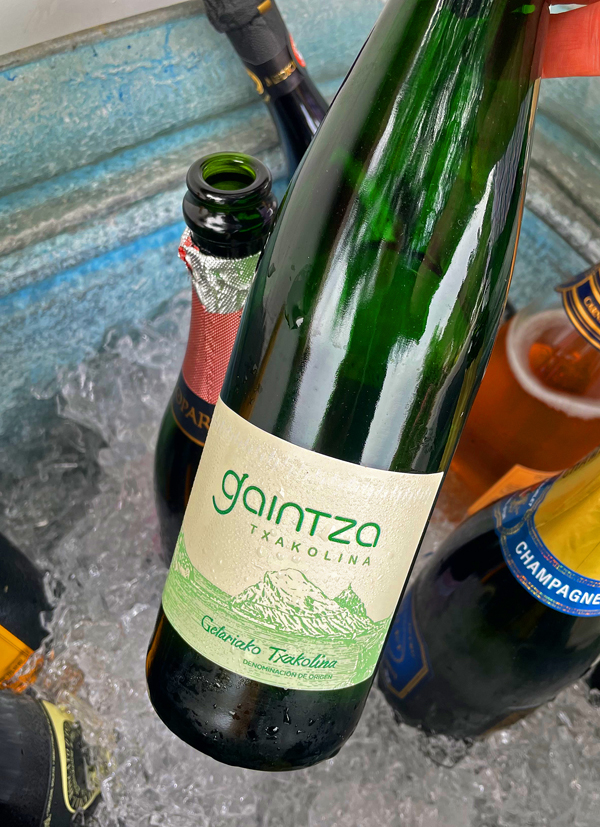
2020 Gaintza, Txakolina Blanco, Getariako Txakolina DO, Spain.
A fabulously crisp, almost fizzy fresh and salty, the Gaintza is a ultra bone dry white that is a perfect wine to enjoy with oysters or claims, its tangy lime and bitter stone fruit make it a great Summer refresher. These light and zesty Txakoli wines, made almost exclusively from the Hondarribi Zuri grape, come from the Basque country on the cool Atlantic coast of Northwest Spain and the limestone and clay soils, they go great with the very coveted local cuisine and offer a treat for those in the know. The Gaintza version is a classic example and is clean and vibrant, crafted using only stainless steel with no aging, fermented dry and quickly bottled to capture the utmost purity and spritz, it shows loads of mouth watering citrus, unripe green apple, mainly with the mentioned lime and lemon peel, mineral tones and saline infused stones along with a touch of verbena and herbs. These Basque Txakolinas are worth searching out, especially my favorite Ameztoi versions, and of course this very classic Gaintza, which I haven’t tried in a while and impressed me in this vintage.
The Gaintza label is made by the Lazkano family, long time players in the Getaria zone of the Getariako Txakolina region, they have 25 hectares of vineyards here in the Basque Country, that is so influenced by the Atlantic climate and its cool maritime weather that promotes the zingy natural acidity and very ow alcohol in these wines, which include this white, a Rosé and a light vibrant red too. Interestingly enough the Gaintza Txakolina blanco is made using 85% Hondarrabi Zuri, 10% Gros Manseng (more commonly found in France’s Basque regions!) and 5% of the red Hondarrabi Beltza, that is directly pressed with skin contact, all of the grapes are quickly direct pressed to tank for fermentation. The vines, which are all hand farmed, tended and picked using sustainable methods, are between 25 and 50 years old, with close to 40% being traditionally trained on pergolas to keep them aerated, with plenty of air flow through the clusters, in this damp terroir, with the rest being trellised in a more modern way with more vine density. I really enjoyed the lip smacking details here with this vintage of Gaintza, it is very fun stuff, which I highly recommend as an alternative to Muscadet (Melon de Bourgogne) and or Picpoul de Pinet.
($22 Est.) 89 Points, grapelive
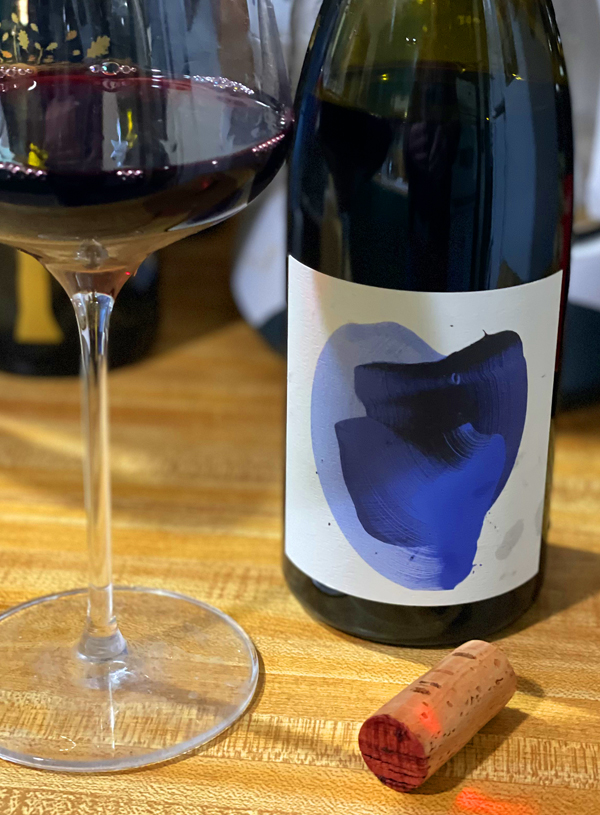
2019 Jolie-Laide, Syrah, Halcon Vineyard, Yorkville Highlands, Mendocino County.
One of California’s best young winemakers and one of California’s most unique and prized vineyard sites are brought together again here with this 2019 Jolie-Laide Halcon Syrah, which is everything I would have expected and more with the vintage providing all the complexity and fruit density in the grapes and winemaker Scott Schultz’s gentle touch guiding things to the bottle, allowing this wine to show its brilliance. The Halcon site, which was recently sold by Paul and Jackie Gordon to Schultz’s former boss Pax Mahle, is a dramatic high elevation vineyard that has a natural climate that is very comparable to Ampuis (Cote-Rotie) in France’s Northern Rhone and the wines made from this vineyard share Syrah’s historical characteristics, as this one does, with layers of meaty and feral purity of this varietal, showing dark berry coulis, creme de cassis, damson plum and kirsch, along with spicy peppercorns and shaved cinnamon, olive tapenade, burnt embers, truffle and tarry black licorice on the taut, but supple full bodied palate. This year has giving this Jolie-Laide Syrah loads of pleasure, expressive flavors and beautiful violet and peony Floral aromatics with just enough umami or savory whole cluster earthiness to balance everything to near perfection. This vintage feels silken and polished in the mouth, though there’s plenty of natural acidity and muscle here, so it looks to be a rewarding wine for those with the patience to cellar it. These 2019s from Jolie-Laide, a natural style inspired winery based in Sonoma, are excellent and well sourced from elite vineyard sites throughout the state, with Schultz’s Sierra Foothills Gamay, the Grenache/Syrah/Mourvedre/Viognier, Shake Ridge Vineyard Red and this Halcon Syrah being my favorites. This is a wine that really benefits from a robust and hearty meal, especially lamb or grilled meat dishes, which will soften the tannin and fully reveal all the depth here.
The Jolie-Laide label is Scott Schultz’s almost one-man operation based in a Sebastopol, as noted here, has gained a reputation for well made and geeky cool wines in recent years, his Syrah wines being nothing but exceptional, crafted using old school traditional methods. The Jolie-Laide wines are authentic efforts and offer loads of class and distinction, all with a clean and transparent profiles. As mentioned in my prior reviews, Scott Schultz moved to Napa from Chicago in 2007 with mostly fine dinning experience in the restaurant business on his resume, which first led him into a position at famous chef Thomas Keller’s Bouchon Bistro in Napa’s Yountville, where he became head of their wine program. Scott fell in love with California wines and gained winemaking experience while working with Arnot-Roberts and Ryme Cellars, two modern new generation wineries, well known for their quality juice, before he joined Pax Mahle at Windgap and Pax Wine Cellars, one of the most famous Syrah producers we have in California. In recent years, Schultz has added some very cool stuff to his lineup, like his Freisa, made from that rare Piedmonte red grape as well as his Chalone sourced Melon de Bourgogne (Muscadet’s white grape), both of which have reviewed already. The Halcon vines, set on schist soils, are way up at above 2,000 feet and gets a blast of cold ocean air, making for late ripening, low alcohol levels and fresh detailing, with plenty of mountain grip that provides a nice backbone to this wine, this vineyard has produced some of my favorite wines over the last decade. At Jolie-Laide, most all the grapes here all crushed by foot trodding and then fermented using 100% whole clusters and indigenous yeasts, with a regime of gentle punch-downs and long cool macerations. The aging of this dark purple and deep garnet Syrah wine was exclusively done in well used French oak barrels, all to showcase these great terroirs, with this wine getting about a year of elevage and was bottled unfined to preserve all the raw nuances. If you’ve not have the Jolie-Laide wines yet, it is a great time to discover them and or join their mailing list.
($45 Est.) 94 Points, grapelive
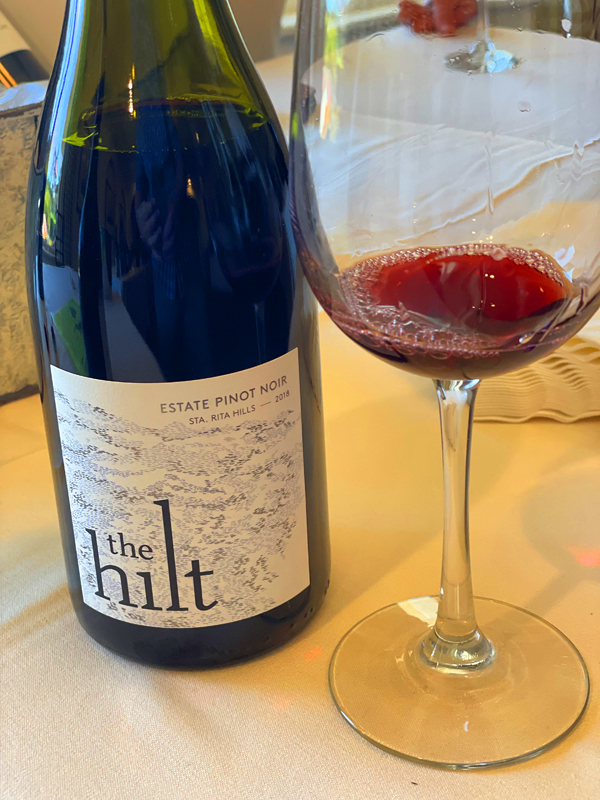
2018 The Hilt, Pinot Noir, Estate, Sta. Rita Hills.
Matt Dees has made a beauty here with this 2018 Estate Pinot Noir, this vintage of The Hilt (sister property to the exclusive Jonata label) is spectacular with depth, complexity and length, it delivers an almost perfect performance in the glass with a dark ruby color leading the way to a structured red fruited medium bodied palate that is sublimely balanced. The Hilt Estate is comprised of three awesome vineyard sites in the Sta. Rita Hills, expertly farmed by Ruben Solorzano, best known for his work at Stolpman, including the famous Radian and Bentrock sites, which are highly coveted by top winemakers in the region, along with Puerta del Mar, all of which are planted on depleted soils and capture the essence of place, they are exposed to the cold wind and marine influences that ripen these grapes incredibly slowly, keeping acidity, but allowing for intense flavors and concentration. This 2018 is really beginning to show its potential and highlights the best of what the Sta. Rita Hills has to offer with satiny layers of black cherry, plum, raspberry and strawberry fruits along with hints of spice, earth and pretty floral aromatics, all of which is framed by subtle wood notes. The Radian blocks are set on extremely rocky soils and have a severe cool elevation, which translates to dynamic structure that is evident here with an underlying feel of grip and tension that works perfectly with the overall fruit density, while the clay infused Bentrock has unique outcrops of diatomaceous earth (fossilized ocean skeletons aka plankton) that the winery says is prized for its high silica content and porosity, that adds heightened fruit and mineral tones to this fabulous bottling. The Puerta del Mar is less well known for it’s characteristics, but is the core the wines soul and purity, if you listen to the those in the know here and while I’m not too experienced with these wines, I can tell you this vintage made an impact on me, especially as I tasted with other top notch and prestigious Pinots on the day.
The Hilt Estate wines, Chardonnay and Pinot Noir, come from their vines located in the ultra cool southwestern corner of the Sta. Rita Hills and reflect many unique aspects, such as the clones, diverse soil types, and other special properties of this estate, where the hugely talented Dees and his assistant Drew Pickering make an exclusive collection of wines, from single site offering to sparkling, which is extremely rare. I tasted both the Chardonnay and a couple of Pinots, with this 2018 Estate stealing the show, even over a Radian bottling that I though was going to be the one to grab me, though it might have been that it needs more time to fully develop, as was suggested to me. Either way, in my opinion this 2018 is remarkable and very exciting stuff that is very much a winner for drinking in the near term as well as for another decade. Dees took advantage of the year’s cool and consistent growing season to produce a gem here which suggests in the mouth to having a good portion of whole cluster with some fine savory and brambly elements and touches of pomegranate and Moro orange showing through here. This Estate Pinot was blended from select small batch fermentation(s) of separate blocks and clones, which included selections of Calera, Swan, Pommard, Mt. Eden, 37, 113, 114, 115, 667, 777 and some 828, that even in tiny amounts adds a certain distinctive edge that can be picked out, though the combination has made the wine wonderfully complete and seriously thrilling. The quality of the blending here is nothing short of brilliant, especially considering that Dees made just a tick under 4,000 cases of this stuff, which speaks to the quality of the sites and the farming here, which sees wildly small yields in most years. After careful sorting and gentle maceration(s) and mostly native yeast fermentation the Estate Pinot, which come in at just 13% natural alcohol, saw just 8% New French oak, with 92% being matured in (well used) neutral French oak barriques for 11 months, to promote fruit purity and terroir, that Dees and team achieved with great success, this is wine to search out and stock up on.
($49 Est.) 95 Points, grapelive
Grapelive.com – Reviews – June 2022
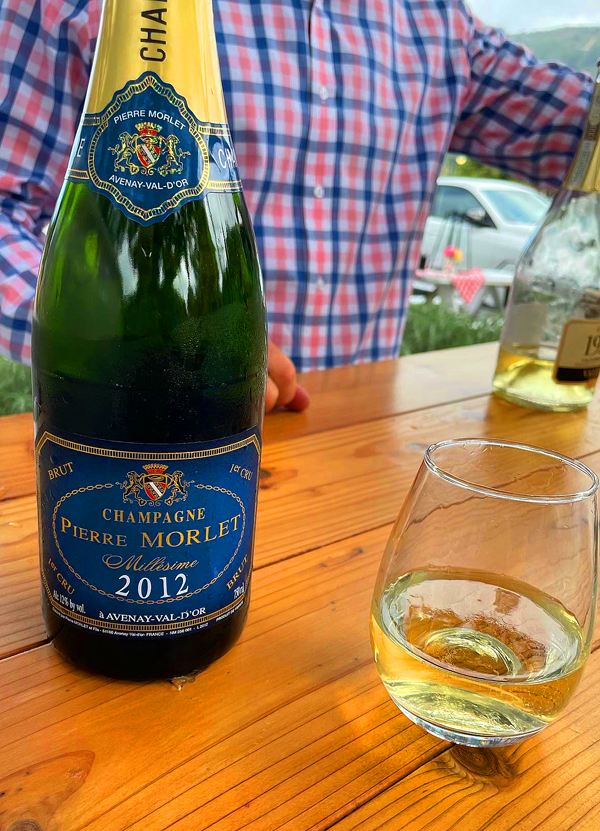
2012 Maison Pierre Morlet, Premier Cru Brut Champagne, Avenay-Val-d’Or, France.
This small Champagne house is always a rare treat to experience and this mineral driven Pinot Noir led 2012 vintage is wonderfully pure and structured with an elegant, but luxurious profile of stony citrus fruit and leesy density on the palate. This very distinct and stylish vintage Champagne, about 72% Pinot Noir and 28% Chardonnay, has a beautiful energetic beading and a smooth almost creamy mousse, while always staying impeccably crisply detailed and transparent with lemon, white peach and golden fig notes, a hint of clove and hazelnut, along with wet chalk and doughy brioche. A big thank you to Chef Todd Fisher and Parker Fisher, who picked this excellent stuff for their new series of Wine Wednesday events, that bring together some spectacular bites that are mini versions of some of their delicious menu options at the Bear & Flag Roadside deli in Carmel Valley, along with a tight selection of local and far flung wines, with this Morlet being a special choice that went surprisingly well with their fried chicken poppers and mini BLTs! This combination was insanely good, in an event that highlighted the flexibility of sparkling wine with food, with Parker picking some rare and inspired wines that were mind opening, even more me with my long life of food and wine, so I’m excited to see where these causal events go in the future. Like most grower producers, the Morlet family only selects the best years to produce their vintage Champagnes and they are laser focused on showcasing the vintage’s individual nuance and character, and while usually Pinot dominate, the blend will reflect the best of the year and can be quite varied. These Morlet bubbly offerings are not easy to find, but are well worth searching out and should not be missed when the opportunity comes along.
You just might have heard the name Morlet before, as Luc and Nic Morlet have become famous here in California for their winemaking, especially as winemakers at the legendary Peter Michael winery, as well as Luc’s own Morlet Family Vineyards, where he has crafted some of the most coveted Chardonnay and Cabernet Based wines, as well as being a huge fan of and maker of Pinot Noir. The Morlet boys’ family have been making Champagne for generations, who have been cultivating vineyards in Avenay-Val-d’Or since the early 1800’s, making small batch stuff for hundreds of years, as well as providing top quality grapes to the famous Grand Marques as well. It is a rare thing, to find a success story here in Champagne that is a tale of humble beginnings, but that is the history of Auguste Morlet, an orphan from an impoverished background, who worked as a gardener, that went on to found this Champagne label for his son Gaston. Gaston went on to add vines and build the name, before his son Pierre brought fame to this property and defined the style here that, now under Eric and his sons (Luc, Paulin and Nic) continues today. In recent years this label has really improved and refined, I remember being hugely impressed with the 2002 and 2004 vintages and heard that 2008, which sadly I wasn’t able to sample, was even better. In some ways this 2012 reminds me of the 2004 with its fresh chiseled form, it is a style I admire and look for. Morlet only use Premier and Grand Cru grapes with each vintage having its own unique percentage of Pinot Noir and Chardonnay with their primary fermentation being in either small tank or in French oak “Demi-Muids” barrels, with the wine matured in a combination of stainless and wood with the oak aged wines seeing a weekly batonnage of the lees, which leads to the richness and depth, as this 2012, which was done with a low dosage and an eight year maturity, shows in bottle. These ancient limestone soil, terroir influenced, grower fizz are a divine way to spend an evening.
($80 Est.) 94 Points, grapelive
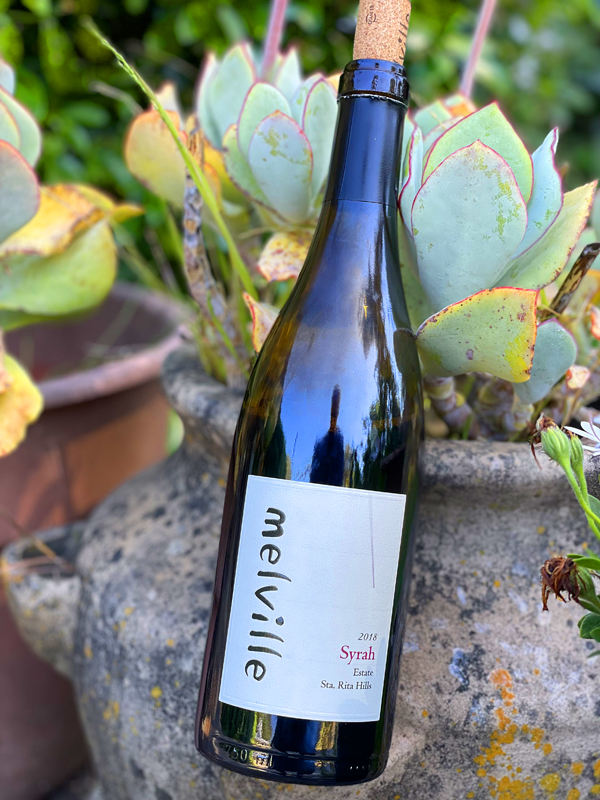
2018 Meliville, Syrah, Estate, Sta. Rita Hills.
The beautifully drinking deeply garnet/purple 2018 Melville Syrah has started to evolve nicely with complex layering and loads of savory crunch along with pretty undertones of violets and lavender as well as a dark berry core of dense fruit and an array of spice on the medium to ful bodied palate. This is an outrageously good bottle for the price, it fits nicely in the lineup here at Melville, where you find authentic flavors, quality and value throughout the range of the wines, even though I am particularly drawn to this Syrah, which has long been a favorite at this Lompoc estate in the sandy soils of the Sta. Rita Hills. Chad Melville’s latest collection, I just tried, includes two new wines for me, their Blanc de Blancs (Chardonnay) Sparkling Wine and the “Block M” Pinot Noir, both of which deserve some follow up and along with this Estate Syrah I highly recommend. This 2018 vintage still has plenty of youthful energy and a flow of natural acidity and tons of umami character with meaty elements, in a way you are reminded of Northern Rhone cousins, but it is a pure California version with supple tannin, lush concentration and coastal saline, making for a distinct terroir example. The mouth has blueberry compote, Marionberry, plum and kirsch leading the way with hints of sweet and sour herbs, anise, camphor, cedar and lingering creme de cassis. This Syrah is just going to get better and better for more than a few years, this might be my favorite vintage I have tried, it is impressive stuff. I have also coveted the Melville Donna’s Syrah in the past, though it has such a following now, it is a tough find, while this one still flies under the radar and is easy to find, and it should be noted that 2019 looks to be another great vintage and that it is now released to the Melville mailing list and I look forward to getting some soon.
Since Chad Melville took the reins here the Melville wines have gone 100% estate grown and the farming has moved in a more sustainable direction, which shows in the intensity and his light touch with wood adds to the wines transparency, though it must be said the grapes here have always been remarkable and the wines too. After making wines with his wife under the Samsara label, Chad has found his sweet spot and it has been interesting to see what direction the focus would take here, but it really has been more than the sense of place has led the way, which is the best news I can give you, especially if you haven’t had the wines at Melville lately. The Melville Syrah, 100% varietal and all estate is, as Melville explains, a combination of five different Syrah clones (Estrella, Beaucastel 99, 1, 383, 470). The Estrella, 383 and 470 are planted on nutrient deficient, well-drained sand, which Chad adds brings out that wild flower bouquet, a trace of black olive and jazzy pepper note, while the Clone 99 from Block I is planted on denser sandy loams, that he adds, brings the depth and richness in this fabulous example of California Syrah. This is an ultra cool climate site, with the Syrah in 2018 comes into the winery in November, crazy late, but with exceptional and healthy grapes that have ripeness and complexity, while retaining vigorous freshness. Chard says he used 60% gently de-stemmed grapes with about 40% whole cluster and he fermented the Syrah in small 1.5 ton open top fermenters. Melville also notes that there was a total skin and stem contact for around 35 days, including a 7-day cold soak, almost three weeks of primary fermentation, and a two week extended maceration period before going into neutral French oak for 8 to 10 months. As I’ve said before, Syrah makes for some of the greatest (modern) California wines, and this one is wildly delicious, I suggest enjoying with simple foods and or mushroom dishes.
($40 Est.) 93 Points, grapelive
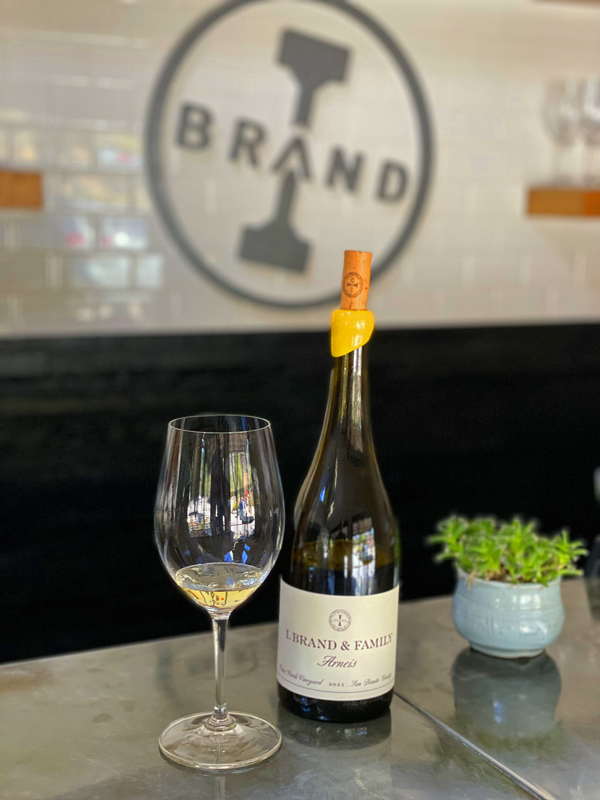
2021 I. Brand & Family Winery, Arneis, Vista Verde Vineyard, San Benito County.
The second release of Arneis from Ian Brand and his I. Brand & Family Winery is very exciting stuff, cooler toned, when compared to the impressive 2020, and chalky with tons of energy, this 2021 is crisply detailed and lithe with a pithy citrus, white peach and quince led lighter framed palate. As noted on the last vintage, the grapes are sourced from the calcareous soils of the Vista Verde Vineyard, in the San Benito County, that is most famous for supplying William Selyem with Pinot Noir for their Central Coast bottling, and is set on gravel and pebbles, laced with calcium. This site sees a cooling influence thanks to inflow breezes off the Pacific Ocean, allowing for a lengthy growing season, making for ripe and balanced grapes, with this year highlighting the extra cool growing season we had on the central coast of California. Brand’s latest Arneis, which has a pale straw/yellow hue in the glass, is delicately aromatic and mineral laced and opens up with spice and supple texture, it finishes with saline, tangy and subtle bitterness. Once fully unwound, this taut and youthfully fresh gains a sense of roundness and is lingering, but with, as mentioned in my review of Brand’s 2020, a dry phenolic vitality, making this one again, wonderful with soft cheeses, lighter fare, scallops, clams and or white fish dishes
The Arneis grape, originally from the Langhe area of Piedmonte, which dates back most likely to the 14th century is first recorded by name in 1877, it’s name in local dialect means little rascal, has also been called Nebbiolo Bianco, though it has no genetic relationship to the notable Piedmontese red wine, but the two grapes do share a close historic relationship. It has been noted, that for centuries, Arneis was blended into Nebbiolo wines, being used to soften the tannin(s) and harshness of powerful Nebbiolo grape, most historically in the wines of the Barolo region, before the practice was banned for the DOCG wines that must be 100% Nebbiolo. Arneis was often inter-planted in the Barolo vineyards to lure the birds away from the Nebbiolo, as it has a much sweeter scent and saved the prime money making Nebbiolo from a starling feast. Arneis is known to be difficult to grow, with low acidity it needs to be picked at exactly the right time, and is susceptible to mildew, which is probably why it has its little rascal name, though it can be awesome, especially by the likes of Vietti, Ceretto and Bruno Giacosa. I’ve been very impressed with the latest set of wines and upcoming releases here at the I. Brand & Family Winery, especially Ian’s Grenache, this zesty Arneis, the 2021 Albarino and his set of Cab Francs! Next ups here looks to be an all new bottling of Gamay from the Escolle Vineyard in the Santa Lucia Highlands, which I am very much looking forward to, so it is a great time to explore this label more deeply.
($30 Est.) 92 Points, grapelive
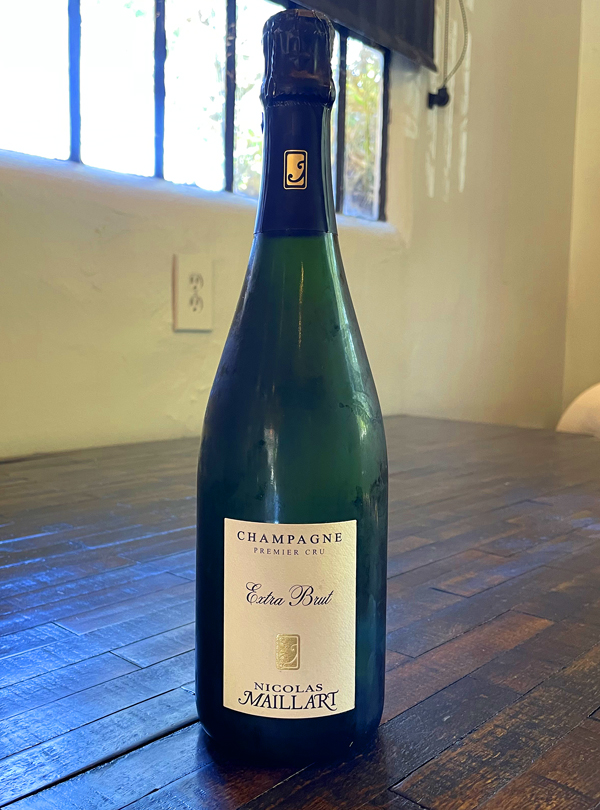
N.V. Nicolas Maillart, Extra Brut, Platine, Premier Cru Champagne, France.
I was recently introduced to the exciting Champagne of Nicolas Maillart with his lovely Brut Rosé, but this extremely precise and exceptional Platine Extra Brut really hit my sweet spot and went gloriously with a selection of briny fresh cool water oysters, making a perfect way to end a warm Summer celebration. I am in particular fond of Extra Brut and or non dosage energy filled bubbly and this Maillart has wonderful balance with plenty of depth and richness on the palate to with the crisp and mineral detail, it also has a luxurious mousse and multidimensional mouth feel. There’s hints of white blossoms, racy lemony citrus, leesy/yeasty roundness, clove spice, salty chalk and lingering stone and apple fruit. Everything is alive and brisk without being severe or austere, but there is a fine Pinot Noir based structure here in Maillart’s Extra Brut that delivers the goods, again this is exactly what I was hoping for in a Champagne, stylish and with real substance, this is well worth searching out and very much priced right, I’ll be enjoying this label and this wine more often in the future. This wine comes from vines in Villers Allerand 1er Cru, Ecueil 1er Cru and Bouzy Grand Cru, all are set on ancient calcareous soils with a vine age over 30 years on average, giving concentration and plenty of terroir influence!
Nicolas Maillart’s nicely aromatic Extra Brut Platine Premier Cru Champagne saw three years of aging on the lees, with this edition coming from a batch disgorged in 2020, which I believe is consistent with what lots now found on the US market, though I doubt with the quality of the blend of reserve wines available that there will be much of a difference between lots. Nicolas ferments in small lots in a combination of tanks and wood with gentle handling, with a soft pressing, of the grapes and with long elevage on the fine lees. The Extra Brut, with a dosage of only 3 grams per liter, as noted, is Pinot Noir dominant, but just, with a good complement dose of Chardonnay that brings, as the winery says, a sense freshness and maybe a touch of creaminess to the blend. The is a high percentage of reserve wines used here as well, up to 40% and these are aged in barrel, not unlike Krug or Vilmart, which, as the winery continues, offers dependable consistency and (a) classy style to this Extra Brut Platine. It should also be noted, that only Grand and Premier Cru vineyard fruit is used in this wine, with the grape origins being in the prestigious Montagne de Reims region of Champagne, home to some exceptional Pinot Noir. While not actually a total grower producer, the vines are all on vineyard sites that are either owned and or managed by the Maillart family, which are farmed to exacting standards, using some biodynamic techniques and small yields for absolute quality, which certainly shows in these Champagnes.
($50 Est.) 93 Points, grapelive
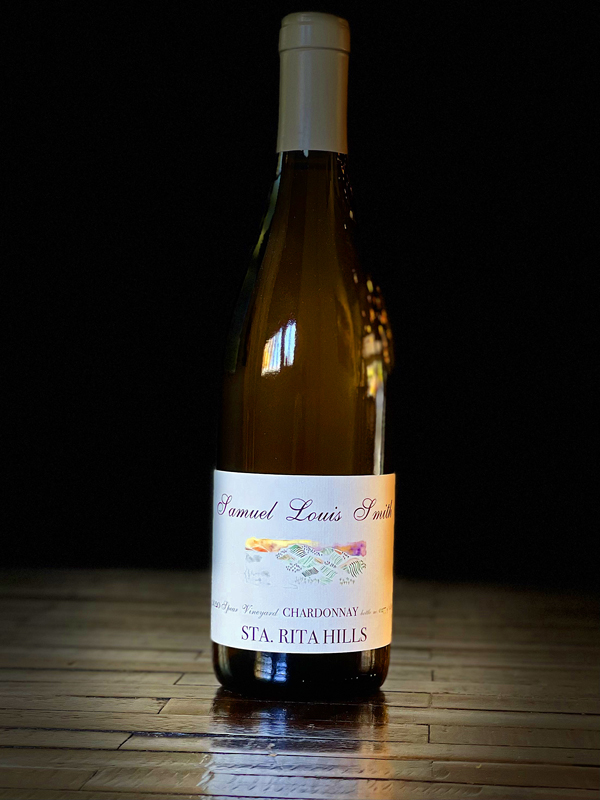
2020 Samuel Louis Smith, Chardonnay, Spear Vineyard, Sta. Rita Hills.
This wine, with its Chablis like stony intensity, is one of my favorite domestic Chardonnays, with each vintage I find more and more to love about it and Sam Smith, who is the head winemaker at Monterey’s Morgan Winery, is a very talented winemaker who is becoming a big star on the central coast, with his 2020 and soon to be released 2021vintages already getting a lot of attention. Remarkable considering all the difficulties this fire year brought, the 2020 Spear Sta. Rita Hills Chardonnay is a brilliant effort with ripe fruit, leaning on lemon, pear and apple, pumped up with racy acidity and chalky notes. There’s a lot to admire here, especially the round textures, low alcohol 12.9%, and divine length, it is a wine of pleasure and tension, with a medium bodied and lithe palate, reminiscent of some top white Burgundies. As it opens you see an expansion and extra depth along with floral elegance, some leesy marshmallow and subtle wood shadings. Just six barrels were made of this gorgeous stony Chardonnay that was 100% barrel fermented with native yeasts, with both primary and full malos allowed to go naturally. This vintage saw, as Smith notes, nine months of elevage in a combination of new and used French oak with just about 17% new, 17% second-fill, and 66% neutral wood employed, making it an exceptionally pure wine and one that has the potential to age for a decade, not that you’ll need that kind of patience, but I do suggest pairing this wine with lobster, crab and or soft farm cheeses to see all of its complexity and rewards.
California Chardonnay is now seeing a renaissance, with many stylish examples, like this Samuel Louis Smith Spear Vineyard, as well as exciting examples from Kutch, Arnot Roberts, Cerritos, Greg Brewer’s Diatom, Whitcraft, Beauregard’s Bald Mountain, Big Basin’s Coast View, Poe, Drew’s Valenti and Farm Cottage’s Trout Gulch to name a few. Plus classic and historic wineries that have continued excellent versions, including Mount Eden, Stony Hill and Hanzell. All of these wines rely on distinct terroir and great farming to achieve such awesome results. To that end, Smith has been very particular in his choice of vines here and it shows. The Spear Vineyard is already highly regarded and the wines coming from here are wonderfully balanced, have great depth and lovely aromatics, making it one of the Sta. Rita Hill’s prime locations and Sam’s Chardonnay is proof positive of the greatness here and its future potential. Planted in 2014, Spear has Pinot Noir and Chardonnay primarily in the ground and it is farmed organically by Ofer Shepher, who deserves much praise for his efforts. Spear’s northern border, as Smith notes, and steep north-facing slopes hug Highway 246, giving the site a cooler tone and a long growing season that allows for complete ripeness with low sugars. Smith also notes that Spear’s varied elevation reaches 900 feet, getting some of the coldest blasts of Ocean air in the region and soils are mainly comprised of marine sedimentary clay and sand, meaning they are well drained, but provide a good defense to drought conditions, important for vine health and quality. So, as this wine proves, California Chardonnay is still a thing and capable of true greatest, love live the queen, and I highly recommend the wines mentioned above and this one should be one of the first you get.
($39 Est.) 94 Points, grapelive
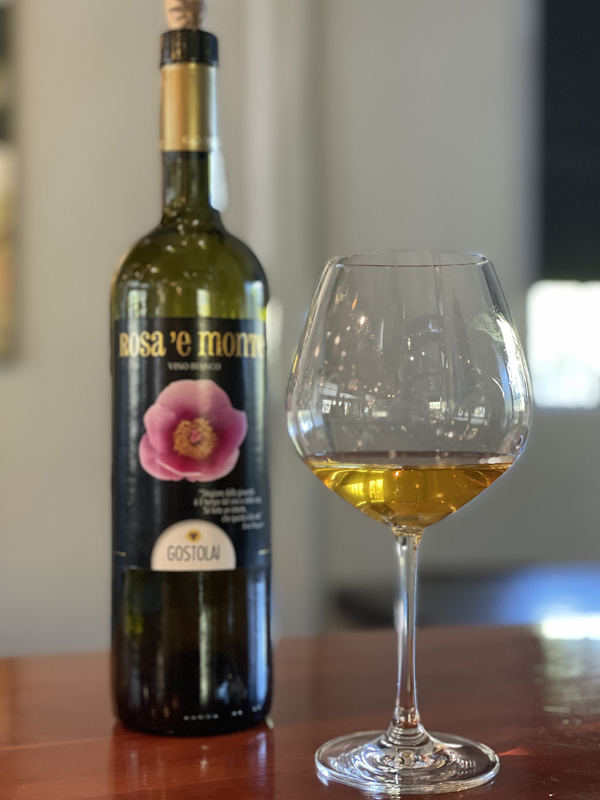
2017 Cantina Gostolai, Rosa ‘e Monte, Vino Bianco, Sardinia, Italy.
This intriguing golden white wine from Gostolai is made from mainly an ancient local varietal, Vernaccia Oristano that is estate grown in Sardinia’s high elevation Oliena zone, along with some fresh Gallura sourced Vermentino that adds some refreshing zip to this structured and gripping wine. This Rosa ‘e Monte Vino Bianco tastes more mature than its vintage would suggest, though that seems to the varietal expression more than any other factors with a lurid yellow glow in the glass and dried apricots leading the way on the palate in this wine that saw some 24 hours on the skins, reminding me of something you’d find in Italy’s Northeast, like Skerk’s Vitovska orange wines from the Carso region. The layering feels almost red wine like and while this wine only saw stainless steel, there is a richness and yellow fruit density to go with its zesty kick and medium bodied mouth feel with supple layers of preserved lemons, apple, quince and the mentioned apricot fruit as well as a hint of tropical essences, verbena, garden herbs and very subtle florals. This is very unique stuff, and doesn’t taste like anything you’d expect from this Mediterranean Island and this terroir, but has loads of historic personality and is wonderfully, if not surprisingly, good with food, making for a nice pairing with farm cheeses and or Moroccan dishes like Lemon Chicken. My experience lately with this winery has made me want to explore Sardinia and all of its distinct terroirs, which range from deep sands to Dolomite like granite soils, from sea level vineyards to high mountain vines that get a cool breeze and cold nights, as this Gostolai gets.
Cantina or Vini Gostolai, a winery that I have grown really fond of in a short time, started making wines in 1988 with the goal to highlight local historic traditions and shine a spotlight on the best grapes, with ancient origins that grow in Oliena’s territory. Sardinia, well known for Cannonau (Grenache) and Vermentino, is still a mysterious place, that the wine world has only scratched the surface its past and its Vinifera importance, with thousands of years of winemaking history here. My Sardinian friend and Italian sommelier Giuseppi Cossu has been instrumental in educating me on some of the island’s rarities, like this unusual wine and grapes like Vernaccia Oristano, which was first documented here over a thousand years ago, and the many unique styles that it is traditionally made into, like this skin contact version as well as a Madieira or tawny port style example, which I will follow up with in the future. The 2017 Rosa ‘e Monte gains dimension with air and adds lime blossom, almonds and a hint of papaya along with a mineral and saltiness that is compelling and its dry extract lingers on the finish. The winemaking here is light handed with a focus on transparency and varietal expression with this wine, 70% Vernaccia, grown holistically on Oliena’s chalky calcareous soils and 30% Vermentino, grown on granite and sand in the Murta Maria (Gallura) area, seeing a natural native yeast fermentation, all at controlled cool temperatures in stainless steel tanks. This vintage, with the mentioned 24 hours on the skins, got a gentle pressing and then saw a 10 month elevage on the fine lees, again only in the stainless tank before bottling. This wine is impressive stuff and I am enjoying the full collection of Gostolai offerings, especially their Cannonau (Grenache) wines, all of which I recommend searching out.
($25 Est.) 92 Points, grapelive
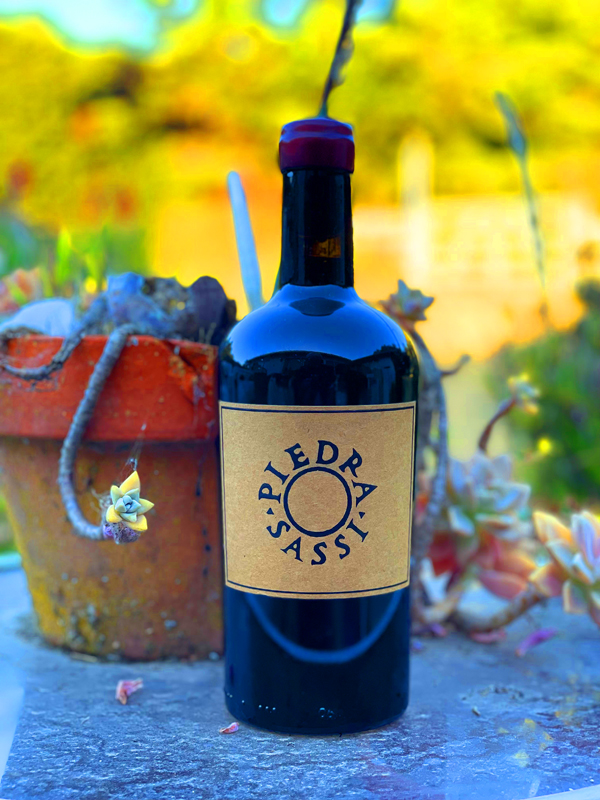
2017 Piedrasassi, Syrah, Bien Nacido Vineyard, Santa Maria Valley.
In the 2017 vintage releases, I have really enjoyed the Sta. Rita Hills and this Bien Nacido bottling of Syrahs from winemaker Sashi Moorman under his personal Piedrasassi label, which are styled in a true Northern Rhone way with loads of whole bunches and stem inclusion, leading to meaty, pure and powerful version of the grape, with this old vine Bien Nacido having a slightly more elegant nature, but with loads of savory personality. Moorman, who has worked with the legends of the Santa Barbara region and become one of the area leading lights, crafts absolutely fabulous Syrah and Mourvedre wines at his Piedrasassi winery that are usually raw, taut and varietal precise, employing traditional techniques with whole bunches, native yeast fermentation in cement vats and aged in mostly used French oak casks. The 2017 Bien Nacido Vineyard Syrah is just now starting to full express itself, I’m glad I waited to pop the cork here, and it is a very rewarding wine, especially with simple country cuisine, where it delivers an extra dimension of dark fruits and earthy layers. The full bodied palate is filled with blackberry, currant, blueberry and Italian cherry fruits along with delicate florals that lean on violets, as well as a vein of black olive tapenade, plus dried spices, including peppercorns and faint traces of iron, lavender, mineral and a tangy herbal bite, from the stems. Moorman, who was the long time director of winemaking at Stolpman, where he made some outstanding Syrahs, considers this bottling to be his most subtle and elegant version, and as the wine gets air you can appreciate its prettier details and its mouth feel as the tannin nature subsides and the length expands, this is thrilling stuff, especially if you are fans of Auguste Clape Cornas.
The Bien Nacido Vineyard, as Sashi Moorman notes, has long been a highly sought-after site for Syrah in Santa Barbara County, paving the way for cool climate plantings throughout Santa Barbara County, Edna Valley and the Sta. Rita Hills where this grape has become a mainstay for some of the state’s best and most coveted wines, including those of Piedrasassi. Moorman goes on to say he feels lucky to work with this site’s two best plantings, getting grapes from the X Block and Z Block parcels set on the sandy loams. Sashi explains that the X Block was originally grafted over from Riesling to Syrah back n 1986, and according to him, represents the very first cool-climate Syrah planting in North America. It is known that Bien Nacido was a favored source of Syrah for the early Rhone Rangers and is still revered by legends Adam Tolmach of Ojai and Randall Grahm of Bonny Doon fame. The Z Block was added in 1992, with both these blocks being the oldest Syrah vines that Moorman works with at Piedrasassi. The maturity here and vine age, as Moorman again adds, slows the ripening process here, keeping potential alcohol levels lower, which can even be even in warm years come in at under 13% natural alcohol, while this 2017 is just above that. The Bien Nacido Vineyard is also farmed all biodynamically, which shows in the concentration and intensity of these wines, along with the savory crunchiness of the whole cluster fermentation, very much in line with the very best of the old school Northern Rhone, as noted above. There is a lot to admire here with this version of Moorman’s studied Syrah efforts being an exceptional example of grape and terroir, it is a benchmark wine and shows off Sashi’s approach to winemaking, I highly recommend these Piedrasassi wines, his latest 2018s and 2019s available now, should be on your radar.
($50 Est.) 94 Points, grapelive
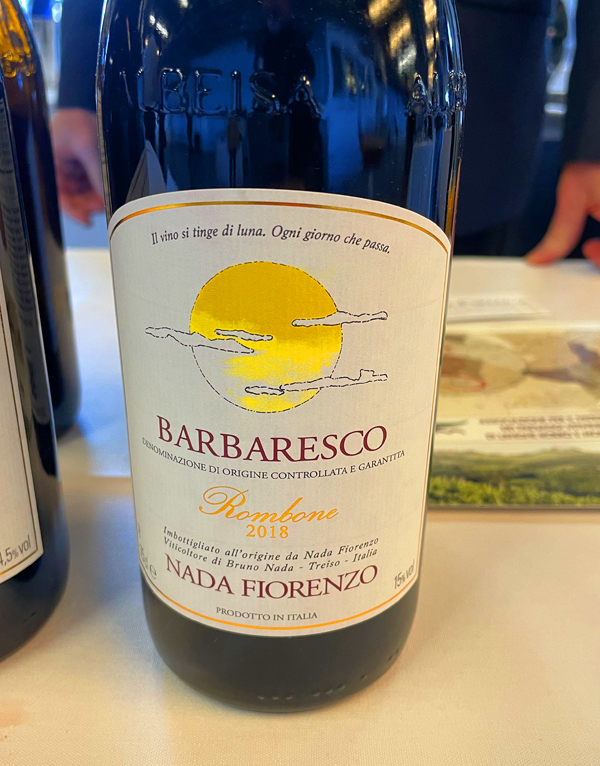
2018 Nada Fiorenzo, Barbaresco DOCG “Rombone” Piedmonte, Italy.
Tasted at this year’s Slow Wine event in San Francisco, this nuanced and pretty Barbaresco comes from the Rombone Cru and shows the vintage’s charms in purity and delicacy of flavors with subtle florals, earthy elements and a core of Nebbiolo fruit that fills the palate. Danilo Nada’s estate in the Langa Hills is one of most under the radar properties in the Barbaresco zone and I was very impressed with the wines I tasted, especially this Rombone with its chiseled and crisp detailing, lovely texture and exceptional finish, it is a wine to keep an eye out for and I’m confident it has rewarding years and years ahead of it. This 2018 shows loads of dark berry, cherry, damson plum and red currant fruits, hints of leather, tobacco, anise, tar and chanterelle along with fine tannic structure and a vein of natural acidity that gives this young wine a sense of elegant lightness without taking away the impression of depth in this well crafted Nebbiolo.
The Nada Rombone Vineyard, which gives this winery its signature wine, is located in the the commune of Treiso and was planted back in 1964 and this 2018 vintage was made using the oldest sections vines that are set into the calcareous soils, which have a mix of the clay and limestone that brings out fruit density and mineral tones, as this wine clearly shows. The winemaking is traditional and obviously within the DOCG regulations with all of the grapes carefully hand farmed and sorted to produce a beautiful Barbaresco that with shine with simple and robust cuisine as well as age gracefully for at least another decade. This dark garnet and ruby edged Nebbiolo saw a cool primary fermentation using 100% de-stemmed berries and a lengthy gentle maceration with daily cap management before going to oak cask where it finished males and was matured for 24 months. This wine also was given another 6 months rest in bottle before leaving the Nada cellar, but as with most serious Nebbiolo, this wine will enjoy decanting to best show its full potential, especially if you don’t have the patience to cellar it another 3 to 5 years.
($65 Est.) 93 Points, grapelive
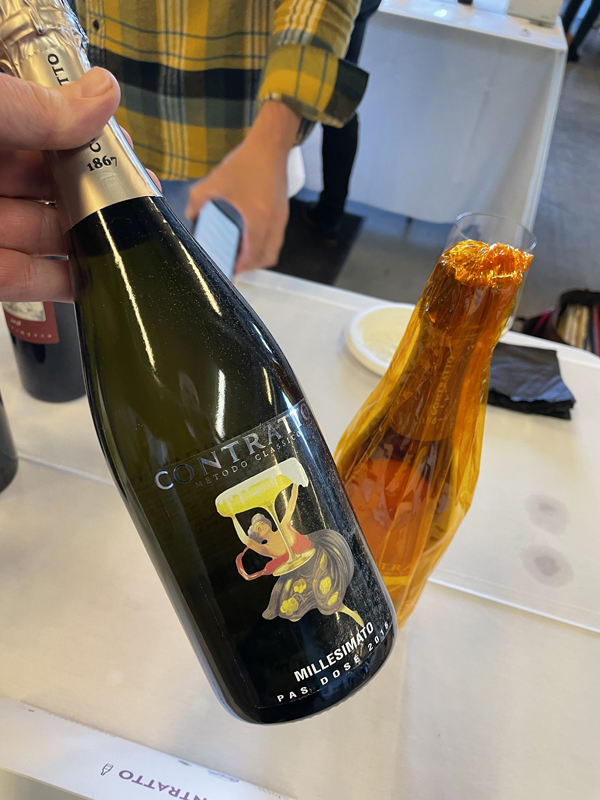
2016 Contratto, Pas Dose Millesimato, Vintage Extra Brut Sparkling Wine, Metodo Classico, Piedmonte, Italy.
The lively and freshly styled Contratto Pas Dose Extra Brut Metodo Classico, Champagne like sparkler is made from 80% Pinot Nero (Pinot Noir) and 20% Chardonnay from vineyards located in Alta Langa (upper Langhe) zone of Piedmonte and is an elegant yeasty, citrus driven and nutty bubbly that offers a ton of personality and quality, it is much more in the Franciacorta vein than Prosecco and proves this upper part of Piedmonte is a great spot for producing grower producer fizz. Contratto’s caves are located in the little town of Canelli, and it was from here that Giuseppe Contratto crafted the very first bottles of Italian method champenoise back in 1919. Rivetti notes that, the underground cellars at Contratto, were painstakingly dug out manually when the winery was renovated in 1899, it took ten years to complete, and he adds that they are more than 100 feet underground. Interestingly Rivetti’s Contratto, unlike other sparkling wines in Italy, focuses mainly on Pinot Noir and all wines priced here are a minimum of 80% Pinot Noir with the balance being Chardonnay, again faithful to Champagne in many ways. The grapes all come from the mentioned, cooler Alta Langa, in the highest elevation hills of the Langhe. The Pinot Noir adds age worthy structure and the Chardonnay ads dimension and luxurious richness to the Cointratto wines, they also are fabulous with food, especially this one which can be enjoyed with raw oysters and or caviar.
Contratto is one of the oldest sparkling wine labels in Italy and was brought back from oblivion by the visionary and famous Barbaresco legend Giogio Rivetti of La Spinetta, who pushed into some ultra cool vineyard sites that have proved to be awesome locations for high quality bubbly, as this Contratto Pas Dose 2016 vintage Extra Brut shows with its finesse, complexity and energy. Taking a page out of the Champagne grower producers playbook, Rivetti looked for unique terroirs and began focusing on organic farming for his revitalization of Contratto, which has its own beautiful property and cellars where the wine are Champagne style crafted. The sparklers here see first and second fermentation(s) with native yeasts and get zero or low dosage(s) with the wines made using only free run juice. They see long lees aging period with each vineyard and lots done in separate small lot batches and blended into stainless before getting the bottle conditioning and secondary fermentation with this particular bottling seeing a no dosage to end up extremely dry, Extra Brut. The labels for the Contratto Sparkling Wines are the original design of Leonetto Cappiello, who as the winery notes, was considered one of the fathers of belle époque poster-advertisements that remain coveted today and have inspired reprints that grace the walls of may kitchens and bistros throughout the world. I’ve been a fan La Spinetta and Rivetti’s wines for ages, but I have somewhat neglected his Contratto bubbly, which needs to changed, as these are delicious efforts that I highly recommend, with Contratto’s Rosé for England 100% Pinot Noir and this vintage of the Pas Dose Extra Brut being my favorites.
($34 Est.) 93 Points, grapelive
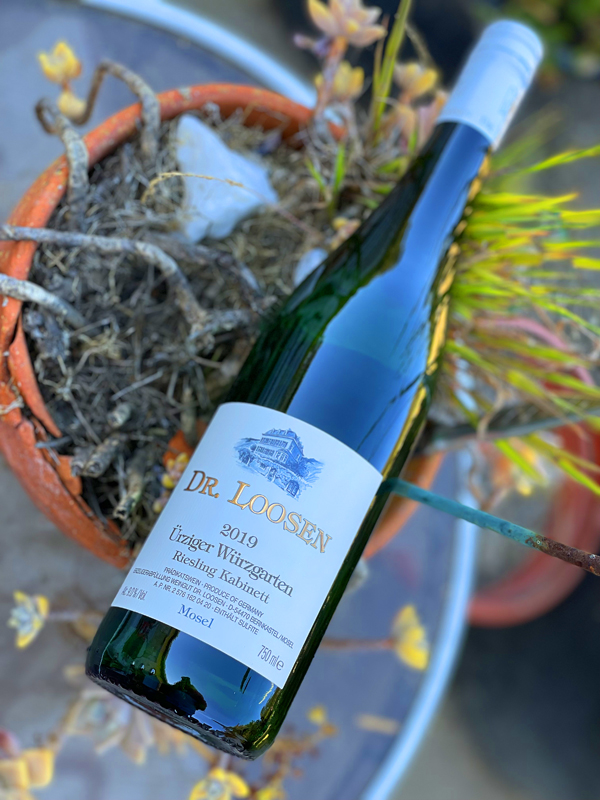
2019 Weingut Dr. Loosen, Riesling Kabinett, Ürziger Würzgarten, Mosel, Germany.
It’s hard to imagine a better or more delightful Summer and Summer Solstice wine than Erni Loosen’s Ürziger Würzgarten Kabinett and this 2019 is very compelling and complex Riesling on the drier side of fruitiness, but generous and pleasing from start to finish with refreshing acidity, mineral notes and subtle tropical essences. This is one of the most iconic vineyards in the world, the red soils and slate underpinning give these Rieslings an exotic and spicy nature and Loosen’s bottlings offer a wide array of individual and distinct wines from this lively off dry Kabinett to their ultra rich and sweet Auslese, along with a stylish age worthy Spatlese and dry version’s including a GG, all of which highlight the prestigious terroir influence of this steep Mosel Grand Cru site. This Kabinett is racy and crystalline with exceptional purity, starting with it’s bright pale golden hue to its layers of ripe stone fruit, vivid citrus, green apple and pineapple along with hints of rose petal, mango, clove, lemon peel and Asian spices. There is a fine focus here and a tangy bitterness to cut into the presence of residual sugar, making for a wine that can handle some heat, but also is wonderfully flexible with a range of cuisine choices from chilli crab, fire shrimp, Cajun dishes to more classic German foods and as I paired, a fine creamy sheep cheese and a baguette. This Kabinett comes in at 9% natural alcohol and that clearly brings this wine to a drier feel overall and the vintage provides the depth and presence in the glass, it adds a dried ginger note, wet flint and slate smokiness and delivers a nice contrast between its luscious side and its more zesty energy, with this 2019 comparing well with the excellent 2018, I reviewed most recently, showcasing the quality of Loosen’s Kabinett offerings. The Ürziger Würzgarten, a VDP Grosse Lage vineyard, has vines well over 60 years that are clinging at a frightening angle to its slate and red volcanic sandstone that gives these wines their sense of place.
The majestic Ürziger Würzgarten Cru vineyard sits the picturesque amphitheater formed by this dramatic bend in the river, forming a natural sun basket that helps ripen the Riesling grapes and gives these wines their signature profile, with some of Dr. Loosen’s oldest vines clinging to this famous hillside. This site is called the “Spice Garden” and is as Dr. Loosen notes, a blazing red outcropping, with a vain of iron rich volcanic soils over the classic weathered slate and Loosen’s parcel is an insanely steep sloping section with some of the winery’s old vines. As I have noted here in prior reviews, the weingut Dr. Loosen has been in the same family for over 200 years and has a premier collection of vineyards, with mostly ungrafted old vines, that average around 50 years old, in some of the Mosel’s most coveted areas. This gives Ernst Loosen an awesome selection of grapes to work with, and it’s worth noting that Loosen always seems to produce stunningly intense, high quality and world-class wines that not only show terroir, but also, these wines have a luxurious personality that appeal to a wide audience as well as to Riesling freaks like me. With crop yields, according to the winery, at almost half of what is permitted by law, only moderate use of organic fertilizers, and old-fashioned cellar practices these wines deliver exceptional quality, as this Ürziger Würzgarten Kabinett shows. Loosen’s Ürziger Würzgarten Kabinett saw, as in most vintages, a cool fermentation in a combination of stainless steel tanks and traditional old Fuder oak casks with fermentation stopped by chilling to keep it going all the way dry, making it as noted, fruity and zippy with loads of natural acidity with grapes all being picked and sorted by hand to be sure no noble rot (Botrytis) had infected the healthy clusters to keep this one a more vibrant and fresh Riesling. Again as said before, this is absolutely one of the most obvious terroir wines in the world and a classic German wine, with the Dr. Loosen Ürziger Würzgarten Kabinett example being a must have version, which I always recommend to new explorers and long time enthusiasts of German wines.
($28 Est.) 92 Points, grapelive
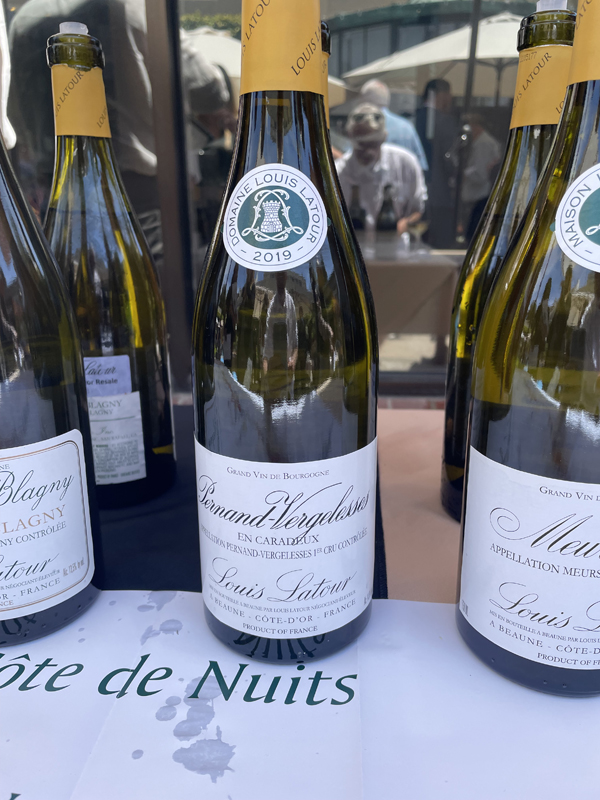
2019 Maison Louis Latour, Pernand Vergelesses, En Caradeux Premier Cru, White Burgundy, France.
One of the sleepers in Louis Latour’s 2019 collection is their beautiful Premier Cru En Caradeux from Pernand Vergelesses in the Cote de Beaune, of the whites in this vintage this one shows remarkable purity and has a level of complexity and concentration to rivals some of the more well known and presigious terroirs just over the hill from this site and the quality and clarity here make this a standout. The En Caradeux is rich on the palate with ripe layers of lemon, apple, pear and white peach fruit along with clove spice, wet chalky stones, a hint of hazelnut leesy notes and a touch of sweet toasty oak. This wine will impress those that normally reserve their praise for Puligny or Meursault offerings and while not cheap is still a pretty good value for what is in the glass and it will play nicely with a range of cuisine options, though I would suggest more classic pairings, like soft farm cheeses, white fish and or poultry dishes. This pale golden Chardonnay opens up quickly on the medium bodied textural palate with white blossoms and has brisk acidity and subtle mineral intensity in keeping with expectations of a well balanced white Burgundy. Louis Latour, founded in 1797, is one of there most famous family owned wineries in the world, is now on the 11th generation of Latours in charge after nearly 220 years of proudly flying the flag for the Burgundy region with holding from the Maconnaise to Chablis and the most acreage in Premier Cru and Grand Cru vineyard in the prime historic spots.
Going through almost 20 wines at Louis Latour’s pre-arrival tasting in Carmel by the Sea was good exercise in tasting terroirs, especially with their collection of white Burgundies that ranged from this lovely Pernand Vergelesses to a tiny young vine parcel at the lender Batard-Montrachet, which shows the difference of these micro Climat vineyard locations with their Chassagne and of course their signature Corton-Charlemagne putting in stellar performances on the day and look like they have solid potential, even in such a difficult year with frost and hail causing wide spread damage and reducing yields to ridiculous levels. Latour is proud of what they achieved in 2019 and after tasting through them I can see why, they may not be blockbuster wines, but the purity and charm they are showing makes them very compelling examples, with this En Caradeux Pernand Vergelesses being one of my favorites on the day. The En Caradeux was all hand tended and hand harvested from Latour’s selection of mature 30 year old vines that are set on classic stony Marl and Jurassic era limestone soils. In many ways, Pernand Vergelesses is similar to Chassagne-Montrachet and there is little to choose between Latour’s efforts in this vintage and this wine saw a comparable fermentation regime, that went through full malos, with 35% new oak from their own in house cooperage and 10 months of elevage on the lees. While one of the biggest producers and the largest land owner in Burgundy, these wines are individual and quality efforts that can often surprise, as this one did.
($63 Est.) 92 Points, grapelive
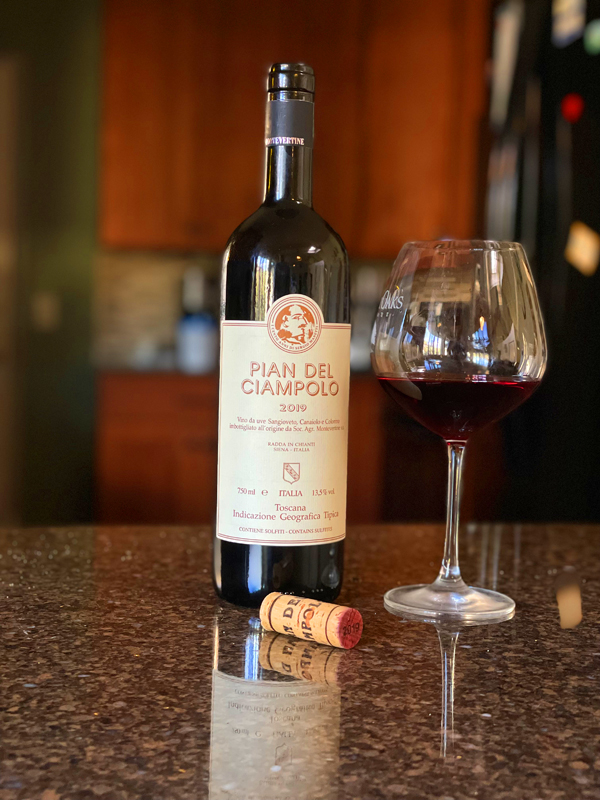
2019 Montevertine, Pian del Ciampolo, IGT Toscana Rosso, Radda in Chianti, Tuscany, Italy.
The beautifully pure and dark garnet Montevertine Pian del Ciampolo 2019 really shows off the vintage with depth, complexity and energy, it is made from 90% Sangiovese along with small parts of Canaiolo and Colorino, that are classic old varietals in the Chianti Classico zone and adds to this wine’s distinction. This Pian del Ciampolo is richly flavored and nicely structured with ripe flavors and good natural acidity delivering the best in Sangiovese’s personality from start to finish. The medium/full palate flows transparently across the palate with mulberry, red currant, blackberry, plum and cherry fruits that are wonderfully accented by lightly earthy elements, loam, spice and savory notes, plus cut tobacco leaf, cedar, anise and hints incense and dried herbs. The nose, which is sultry, with balsamic and delicate floral notes, comes on with air and the Pian del Ciampolo gets better and better with each sip and really turns on the charm with robust cuisine adding an extra dimension with food, as Sangiovese is known to do. The Montevertine Pian del Ciampolo IGT Toscana Rosso, is as mentioned, composed of mainly Sangiovese (all organic) with tiny amounts of the Canaiolo and Colorino, is the basic or main red wine of the estate. The Pian del Ciampolo, which is 100% de-stemmed, was fermented with native yeasts and in concrete vats, with a long maceration and pump overs for full extraction, before seeing a gentle pressing in a vertical basket press and then It sees 18 months of aging in large casks which are neutral Slovenian oak botti. As per normal here at Montevertine the Pian del Ciampolo was bottled unfined and unfiltered to allow for raw nuances to shine in this pure terroir driven wine.
It’s a new era at this famous winery, with a generational shift at the Montevertine estate with the passing of their visionary founder Sergio Manetti, who bought this property back in 1967, as well as long time and influential winemaker Giulio Gambelli, a fierce proponent of the Sangiovese grape, and most recently Bruno Bini, the highly regarded cellarmaster. Now Sergio’s son Martino Manetti is the keeper of the faith here and running Montevertine and it looks like this iconic label is in good hands, as I have seen nothing but exceptional wines in recent years, as this 2019 Pian del Ciampolo shows. Martino has Paolo Salvi, Gambelli’s protégée, at his side and making the current wines, both of whom, as Montevertine’s importer Neal Rosenthal says, remain dedicated to the style and philosophy of their forebears. The late Sergio Manetti was always a rebel and never followed fashion, especially when it came to playing by the rules of the Chianti Classico zone, which were lets say, not always in keeping with tradition and until recently promoted a modern international style and featured non native varietals in the blend, something that Sergio couldn’t abide by, so he decided not to label his wines with the famous black rooster or as Chianti Classico wines. The Montevertine estate above Radda, at an elevation of 425 meters, has 18 hectares of vineyards with 90% of which are planted to the Sangiovese grape, known as Sangioveto here, along with small parcels of Colorino and Canaiolo, lesser known native Chianti grapes. The hillside vineyards here are divided into nine separate parcels with the oldest vines, which were planted in the Pergole Torte vineyard back in 1968 go into the winery’s signature Le Pergole Torte, a 100% Sangiovese, that has become a legendary wine, on par with First Growths and Grand Cru Burgundies. If you are looking for exceptional soulful wines then Montevertine is without question a winery for you, with this one being a great starting place to get to known Montevertine.
($35 Est.) 93 Points, grapelive
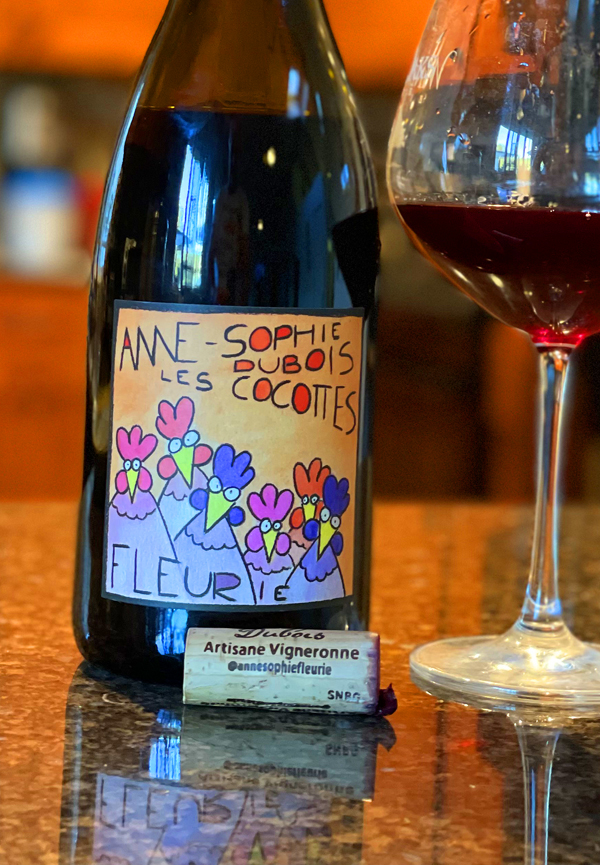
2020 Anne-Sophie Dubois “Les Cocottes” Fleurie Cru Beaujolais, France.
The 2020, like the 2019 Les Cocottes, is a ready to drink version of Anne-Sophie Dubois Fleurie, and is a joyous deep ruby hued quaffer with lovely texture and purity of Gamay fruit along with a bright intensity of the use of whole bunches and stems, but it is a touch more reserved in style when compared to the 2019, though it opens beautifully with air. Dubois is a full fledged star in the region these days, and while her wines can still be under the radar, there’s no doubt about her talents and each of her wines are remarkably distinct and transparent, with her old school traditional whole cluster Les Cocottes being one of my favorites. The latest shows a dark berry, black cherry, plum and currant fruit profile along with its perfumed bouquet with dark florals and it is texturally satiny with Fleurie’s classic strawberry and mineral coming through on the lighter medium bodied palate. A touch of stemmy crunch, spice and wild herbs arnica folded in here too and there’s a good sense of freshness through the Les Cocottes’ natural acidity. Best to enjoy this vintage with food, as that will allow for the full expression to shine though in this slightly shy Fleurie Cru Beaujolais, which made a huge difference for my own tasting experience and reveal the true personality of this excellent wine. Dubois grew up in the Champagne region and learned her winemaking skills in the Cote de Beaune’s Volnay area, and now, based in Fleurie, using her organically farmed parcels, with the vines, some over 60 years old giving her grapes terroir personality and concentration.
Anne-Sophie Dubois’ Fleuries were once all 100% de-stemmed and fermented in a Burgundian-style fashion with a nod to delicacy and elegance, though in recent years, this Les Cocottes, her “little sweetie(s)” is different from her usual style, she crafts this Fleurie with 100% whole cluster and using a carbonic maceration, making it her most flamboyant offering usually, and it is one, as mentioned, of my favorites in her stunning lineup, along with her more traditional L’Alchimiste, her signature bottling, which is as divine as many Burgundy Premier Crus. Anne-Sophie, as noted in my prior reviews, uses a combination of cement vats, stainless and neutral French oak casks for her fermentation and elevage, which each wine demanding an individual approach, to bring out the singular parcel’s soulful characteristics, with this Les Cocottes coming from Fleurie’s unique pink granite soils that gives this wine its complexity and delicacy. There’s a ton of charm here and while the 2019 was more flamboyant, this 2020 delivers a strong performance, especially after it has some time and food, with a pretty peony and rose petal aromatic quality and the stems add some good contrasting savory and earthy elements that is alluring, while this Les Cocottes remains drinkable and exciting, very much in league with Dutraive and other top producers in Fleurie. On day two, the Dubois Les Cocottes gets even better, which bodes well for the future, and potential rewards, I’m glad a got a few bottles, that I will cellar for a few more years. I recommend getting to know Dubois through her wines, all of which show off her skills as a vigneron and the glorious nature of the Fleurie appellation.
($35 Est.) 93 Points, grapelive
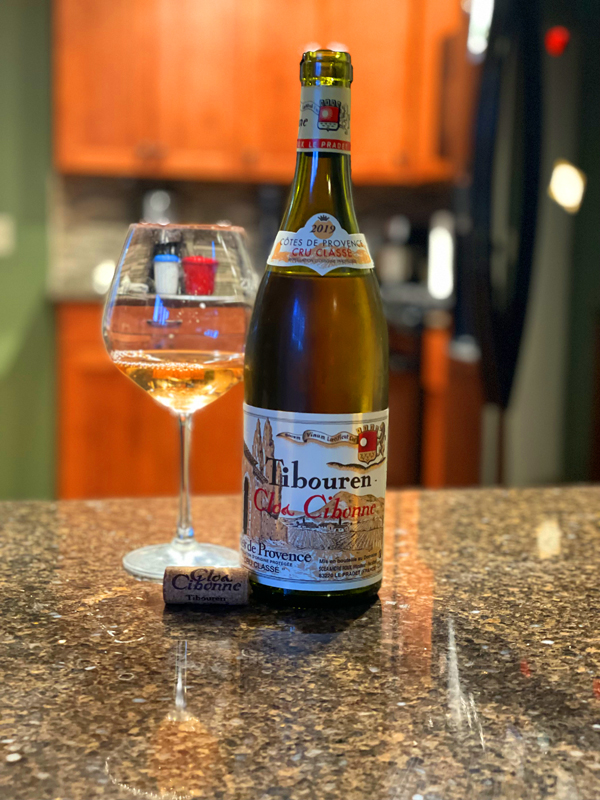
2019 Clos Cibonne, Tibouren, Cotes de Provence Rosé, Cru Classe AOP, Cuvée Tradition, Provence, France.
The 2019 seemed a long time coming and I’ve been waiting very impatiently for its arrival, but as always with Clos Cibonne it did not disappoint and again sets the standard for dry pink wines, and it still is one of the great values too, with this vintage showing remarkable textural quality, surprising fresh clarity of detail, brilliant mineral tones and a maturity of fruit that set this wine apart from almost any other Rosé. This year’s version continues to show a trademark mouth watering saline stony element that accents the core tangy cherry, grilled Moro orange, reduced strawberry, peach flesh and seeped earthy currant along with wet steel, wild herbs and rosewater, along with a slight hint of almonds and delicate florals. This wine drinks with a impactful density and has a rewarding mouth feel like medium bodied Burgundy, but with its own array of flavors and complexity, while refreshing and energetic this is no regular aperitif style Rosé, this is a full meal wine that demands your full attention. Someone was laughing at my long verbose writings about Rosé wines, but you’ll understand the depth and thrill, only after experiencing Clos Cibonne and or a few others, these are wines to full appreciate and it takes a few words to try and explain them, with this vintage being a great place to start. The pale orangy/pink hued Cuvée Tradition is the normal Tibouren Cotes de Provence Cru Class AOP bottling by Clos Cibonne, but it is anything but basic, with the Tibouren grapes, plus about 10% Grenache, being fermented in stainless steel and then aged Sur Lie under fleurette (a thin veil of yeast “Flor” like is found in Sherry) in 120-year-old, 5,000L foudres, large oak casks which adds a touch of oxidation, as well as a textured mouth feel and stabilizes the wine allow it to age way beyond what a normal Rosé. The Clos Cibonne vines, goblet-trained tibouren, are organically grown on schist soils from parcels as old as 60 years old vines at just 50 meters above sea level. The notes that Tibouren is a very fine, thin-skinned grape which requires a lot of ventilation to be successful, adding that it needs to grow close to the ocean, with lots of ventilation to be successful, which Clos Cibonne provides along with a constant Mistral wind and air flow blowing through the vines here on the blue Mediterranean Sea.
The Clos Cibonne Côtes de Provence Rosé offerings are not only some of the most iconic Rosé wines, they are some of the world’s great wines period, as I’ve said before, the Rosé is vinous, singular and distinct as any wines I’ve ever tasted showing the influence of the region, the varietal character of this ancient and rare grape (Tibouren) and the winery’s very unusual winemaking and stylistic charm. As mentioned in prior reviews, Clos Cibonne, owned by Bridget Roux and her husband, Claude Deforge, is only about 800 meters from the beautiful blue Mediterranean sea, set in a natural amphitheater that allows for wonderful ripening and with a unique constant air flow through the vines that keeps all the clusters wonderfully healthy. Like many Provence wineries, after Phylloxera, as planted mostly to Mourvedre as many historic grapes were almost forgotten, but Bridget’s grandfather André Roux, who ran the estate back from the 1930s to after WWII, was a great fan of Tibouren and believed it to be the ideal grape for the region and re-planted it on the estate, and the world is a better place for this courage and act of faith! Clos Cibonne soon became synonymous with Tibouren, which also led the A.O.C. to give special permission for the winery to list the grape on its labels. Tibouren, or Rossese di Dolceacqua as it is called in Italy, is mainly known as a red French variety that is primarily grown in Provence and in Liguria, on the Italian Riviera, but most likely originated in Greece. It is a pale red grape that deserves wider study, and it is interesting to note that the legendary Randall Grahm, formerly of Bonny Doon, has started planting Tibouren and Rossese clones here in California and made his first Rosé with a percentage of Tibouren in it and it was lovely stuff, highlighting the potential of this varietal over here! In recent times, fifth-generation winemaker Olivier Deforges is both vineyard manager and winemaker here at Clos Cibonne and has even taken the estate to new heights of quality. Olivier, as the winery explains, has focused most his energy on the impeccable viticulture done here, after transitioning to all organic viticulture over the last decade, they are now officially certified organic since this 2019 vintage. To allow Summer to begin, I suggest you do as I do, celebrate with some old school Provence Rosé, like Domaine Tempier, Pradeaux and Gros Nore from Bandol, as well as this fabulous Clos Cibonne!
($38 Est.) 95 Points, grapelive
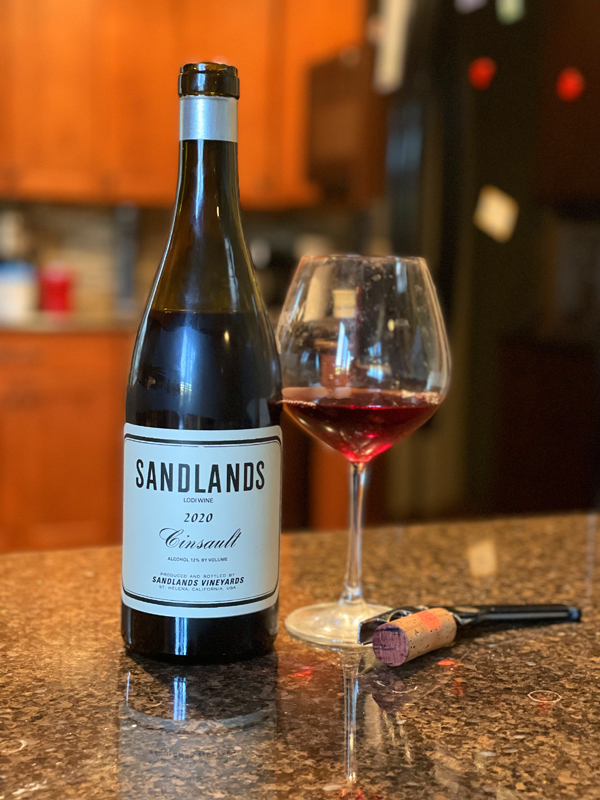
2020 Sandlands Vineyards, Cinsault, Lodi, California.
The beautifully ruby hued 2020 Sandlands Vineyards Cinsault, from the historic Bechthold Vineyard in Lodi, is beautifully medium bodied and almost Pinot like in silky texture and charm, but with Cinsault’s varietal character, showing a spicy cinnamon and dried herb edged palate of tangy red raspberry, cherry and Summer plum fruits and light tannins, a stony element and subtle dark florals. Like the 2019, this wine has exceptional mouth feel, ripely flavored, but with low alcohol (12%) and is supple, but with some nice zesty notes and good depth, it goes great with simple meals and should be served with a slight chill. Cinsault is found throughout the Rhone, Languedoc and Provence, where it is mostly a minor player in Reds and Rosé, though its influence in the wines should not be overlooked and most are significantly better with the addition of this grape, as it retains good acidity, has modest sugars and provides life to the resulting wines. When done solo, most people think of it as the south of France’s (or here in warm California) great alternative to Cru Beaujolais, it is seriously tasty stuff and easily quaffable, especially done in the whole cluster style, like this Sandlands. In the Sandlands fabulous collection of hand crafted and authentic wines, which are mainly made with whole bunches, native yeasts and neutral oak, I always love this one, along with their Carignane, another long time California, but lesser known, Chateauneuf, grape that makes a slightly darker and richer wine in the vein of old vine Zin.
The 135 plus year old Bechthold Vineyard, as Tegan Passalacqua notes, was originally planted back in 1886, this Cinsault vineyard is the oldest of its kind in the country—perhaps even beyond. The legendary vines here are gnarly, head-trained and planted on their own roots, it is all organic and dry-farmed, and set in deep, sandy soils, it makes for a distinctly California wine, as Tegan’s shows, that is terroir driven and always delicious. Over the last ten years Passalacqua, along with a few others of his generation, have become the keepers of the faith of California wine history and are very influenced by old school wines rather than modern trends. The Sandlands version is one of the best examples of California Cinsault, along with the Turley Bechthold, that Tegan oversees as well, it provides joyous purity and drinking pleasure, that makes it so compelling for fans of this grape. As mentioned many times here at Grapelive.com, Sandlands Vineyards, the personal project of Tegan Passalacqua, who is the head winemaker and vineyard manager at the famed Turley Cellars, and his Olivia, is an exciting small lot winery and must follow label, especially for those that want to taste California wine history. Their line-up of wines, as they note, includes some the forgotten classic California varieties, like this Cinsault, but also includes the Mission grape, Carignane, Mataro (Mourvedre), Chenin Blanc, Grenache and Zinfandel field blends from old vine vineyards, mostly planted on California’s sandy decomposed granite soils. I highly recommend getting on their mailing list and never miss the chance to try these soulful and raw transparent wines, especially this Cinsault, the mentioned Carignane, along with an upcoming Nebbiolo and the Soberanes Syrah!
($28 ESt.) 93 Points, grapelive
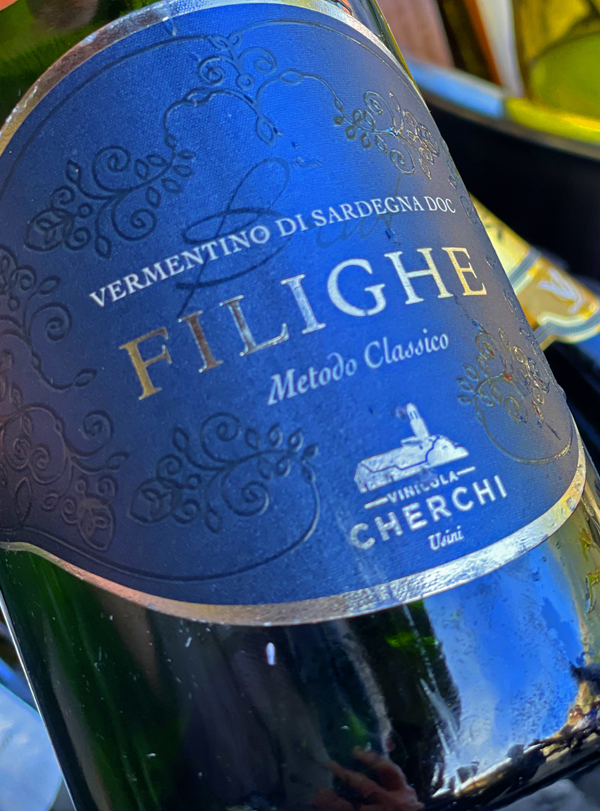
2015 Cherchi, Filighe, Metodo Classico, Sparkling Vermentino di Sardegna DOC, Sardinia, Italy.
The Cherchi Sparkling Vermentino di Sardegna DOC is a bright and vigorous bubbly with loads of zesty acidity and an elegant almost creamy mousse, making for a fun and fresh wine to enjoy with sea food deals and is a wonderfully delicious Summer celebrator from the beautiful Mediterranean island of Sardinia. There is a light and mineral driven palate of white peach, lemon/lime and quince fruits, a delicate leesy brioche, almond and doughy note. The Cherchi family has crafted a very unique Sparkling wine here and highlights the terroir character and varietal flavors with a delightful almost mouth watering, saline, and dry bubbly that is refreshing and distinctive, it would be great with oysters and or claims in white wine broth. While not quite Champagne obviously, this wine does a solid job in providing pleasure and is perfect as an aperitif with a dash of Mediterranean attitude.
This Cherchi Filighe Sparkler is made, a bit like Champagne, but of 100% Vermentino that is grown on steeper sites, set on hilly terrain that is situated close to 200 meters above sea level in Usini, with the vineyards in the Logudoro hills of the Sassari region. The vines are influenced by the elevation and ocean, along with the soils here, which are a mix of chalky limestone and clay. The grapes are, early picked to retain energy and acidity, all hand harvested, de-stemmed, gently crushed and soft-pressed, then they are fermented in stainless steel for 6 months. Then the Cherchi Vermentino di Sardegna DOC Metodo Classico is matured and re-fermentted in bottle on its yeast for another 18 months, before disgorging. Giovanni Cherchi started in 1970 as a winegrower after inheriting a tiny 2 ha vineyard and spent 10 years selling grapes before starting his own winery, with his children Salvatore, Annalisa and Maria now running the estate, which is known for quality Vermentino, Cagnulari and Cannonau wines, some which are densely concentrated, full bodied efforts, along with this delightful bubbly version.
($25 Est.) 90 Points, grapelive
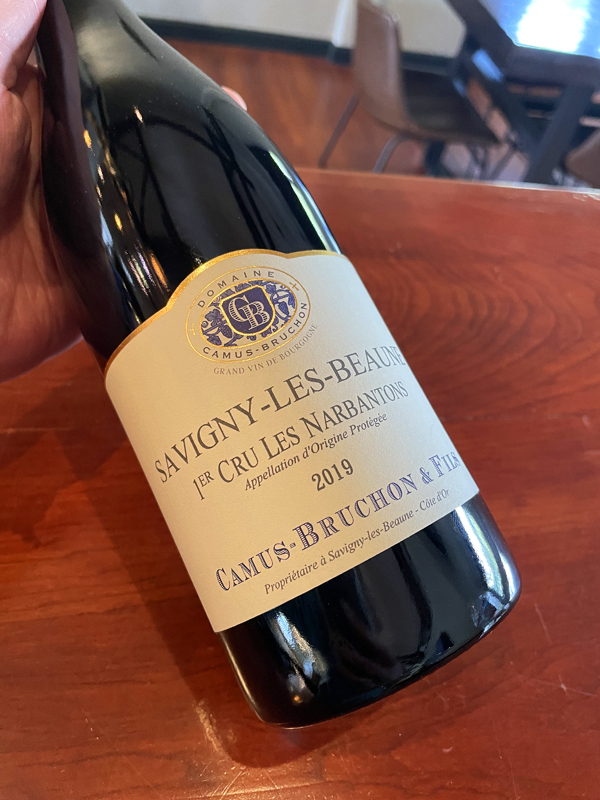
2019 Domaine Camus-Bruchon, Savigny-les-Beaune 1er Cru “Les Narbantons” Red Burgundy, France.
The Les Narbantons 1er Cru, with its northeasterly exposition, is always taut and structured, but the 2019 Domaine Camus-Bruchon version is surprisingly open, silky and rich with only a touch of reduction, that blows of quickly and the palate is lush with red fruits and ripe tannins, it is an easy to love Red Burgundy at an incredible price. The light earthy and barnyard notes fades fast to reveal supple layers of black cherry, wild berry, plum and candied orange fruits along with a fine stony note, tea spices, delicate florals and subtle wood shadings. While the 2018s were fabulous, these 2019s look to be pretty close in style and quality from the Beaune area and I highly recommend both vintages as made by Guillaume Camus here at Camus-Bruchon, which are remarkable values, these wines are always guilt free, a rare thing these days in quality Burgundy! Once open, there’s a lot to admire here and the brambly red berry fruit and chalky essence make it a classy and food friendly wine.
As mentioned in my recent reviews, Guillaume Camus is one of the rising stars in the Côte de Beaune, who’s Domaine Camus-Bruchon is making delicious Pinot Noir wines from vineyard holdings in Savigny-Les-Beaune, like this Les Narbantons, as well as plots in Pommard and Beaune. His age worthy wines are sourced from mainly old vines, these are at least 35 years old and in some cases, as the winery notes, very old, like the 95 years old “Grands Liards” vineyard, which is always one of my favorites in his lineup. In the winemaking, Camus is very traditional, he only uses about 15% new oak for the aging of his red Burgundies. Camus-Bruchon uses indigenous yeasts and the fermentation(s) are done in cement vats with Guillaume employing an extended maceration of at least 18 days, to extract a full range of flavors and structural elements with regime of gentle handling and manual cap management. The wines are bottled unfiltered and unfiltered, and are pure terroir expressions, as seen here in Camus-Bruchon’s brilliant Les Narbantons Premier Cru Savigny-les-Beaune, drink this one over the next 10 to 15 years.
($45 Est.) 92 Points, grapelive
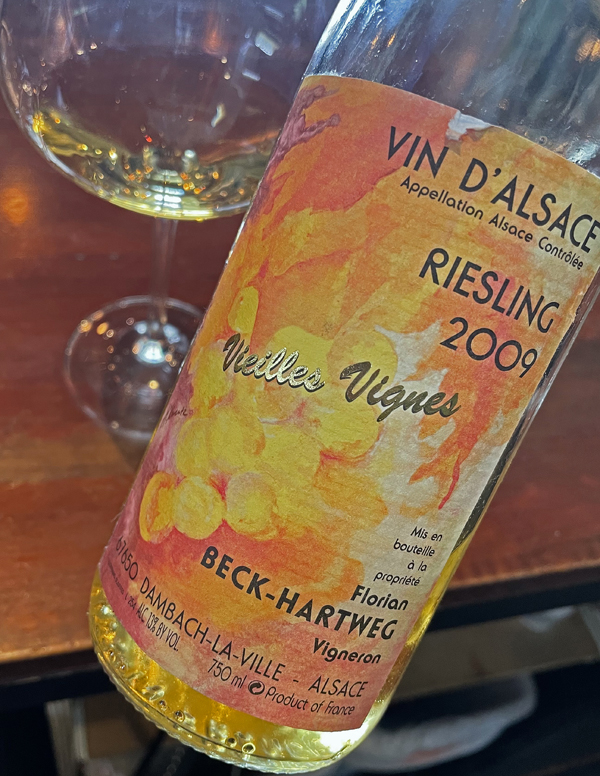
2009 Florian Beck-Hartweg, Riesling, Vieilles Vignes, Vin d’Alsace, France.
The domaine of Florian et Mathilde Beck-Hartweg, all organic and biodynamic, is a small estate noted for their small lot and handcrafted wines with focus on generous ripeness and concentration, as this gorgeous, nicely mature and golden colored 2009 old vine Riesling. Tasted blind, thanks to my friend and Italian Sommelier Giuseppi Cossu, I originally stated it was Riesling, but not from Alsace, which was only half right and though slightly embarrassed, I was completely seduced by this richly flavored and opulent wine, which is wonderfully honey toned and feels like a Vendanges Tardives (VT) with its dense layers of apricot, pineapple, lemon curd, lychee and candied orange peel along with clove spice, star anise, verbena, peach pit, wet stones, saline, faint petrol fumes and crushed rose petals. Fermented to almost dry, this wine is gracious on the smooth and almost creamy palate highlights the warm vintage and the stylistic choice of the winemaking with saw a later and riper pick, making for a very luxurious Riesling that still has an underlying acidity to cover the depth of fruit. This wine deserves a meal based around its quality, with something simple and classic to pair with it, with roast ham and or a croque monsieur being good choices.
The Beck-Hartweg winery is one of the historic domaines of the Alsace region that goes back to the early 1500s, and has become an underground success in the natural wine world in recent years, though almost unheard of in California, except by a few Alsace enthusiasts, and I haven’t seen many bottles over the years, which is shame considering just how good this bottle is. Located in the medieval town of in Dambach-la-Ville, Beck-Hartweg has a solid collection of vineyards in some important crus and unique terroirs with a continental climate, that is sheltered from rain by the Vosges foothills. The underpinning of their 8 hectares of vines is mainly granitic sand on pink granite bedrock, but also there is some area with sandstone and volcanic soils, which all adds to the perfect conditions for ripe concentration and complexity of the wines made here. Florian and Mathilde are the 16th generation to make wines here and though youthful, they have a huge respect for their land and work in a holistic way in the vineyards and use a gentle hand in the cellar. This wine, from vines over 70 years old, saw a indigenous inox fermentation, which I believe was in stainless steel, though they normally used very old foudres too, with an elevage on the fine lees to promote absolute purity, which has proved successful, with this 2009 really be an exceptional wine. There’s a few bottles of this Vieilles Vignes Riesling and their Pinot Gris out in the wild here in the states, and I highly recommend searching them out!
($30 Est.) 94 Points, grapelive
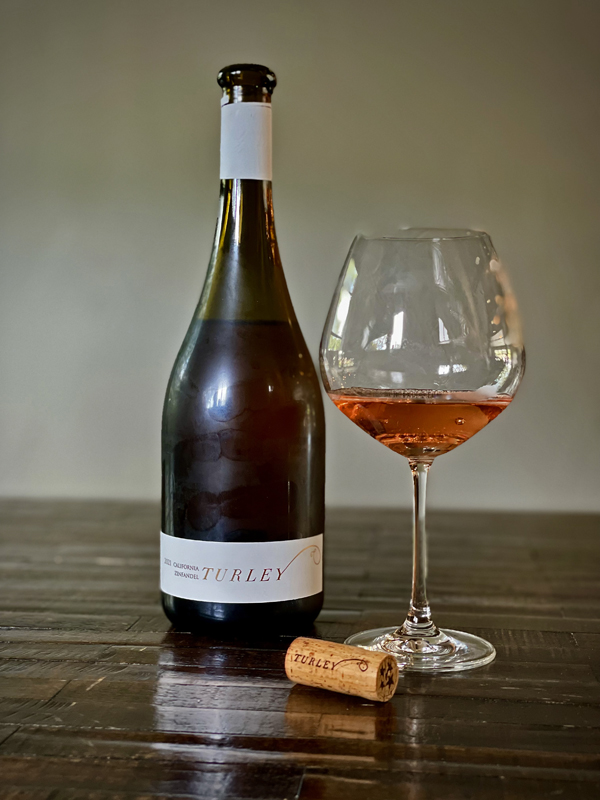
2021 Turley Wine Cellars, Zinfandel Rosé, California.
Turley is happy to announce the release of their newest vintage of their Zinfandel Rosé (aka their beloved White Zinfandel) which is vibrantly fresh, bone dry and tasty with maybe the best balance I’ve experienced with this bottling with just the right amount of fruit and acidity to cleanse the palate and provide pleasure. The color is delicately pale and pure with an interesting array of flavors in the mouth that range from tart cherry, raspberry water to peach and ruby grapefruit, along with a brisk intensity, spice, wet chalk, herbs, guava and a hint of unsweetened caramel and Jolly Rancher. This cooler vintage really shines and the lighter frame and energy is welcome, while it rounds out somewhat with air, it still provides a thrill and refreshment, making for a winner with BBQs and any outdoor occasion, drink it up while you can. Turley says this wine that comes from vines that can span multiple growing regions in the state is an ode to the dry Rosé wines of Provence, but adds that this wine is distinctly Californian with a sly nod to the once mainstream White Zins of the 1980s.
Turley Wine Cellars, maybe the biggest name in Zinfandel, was founded in Napa Valley by former emergency room physician and avid pilot Larry Turley back in 1993, at the beginning of a huge boom in unique California wine, when many cult wines were born. Turley, now under the direction of winemaker and vineyard managerTegan Passalacqua, crafts 50 different and distinct wines from over 50 vineyards across California, and though primarily Zinfandel and Petite Syrah, they do some rarities, like this White Zinfandel and single varietal Grenache, Barbera and Cinsault, one of m)y favs every year. Turley sources from many AVAs, from Lodi to Napa, as well as Paso Robles and Amador County, where they have separate wineries and many vines dating back to the late 1800s. All the farming is done organically and focuses mainly on old vine vineyards, that really express these varieties the best, and as the winery notes, Turley aims to both create and preserve California’s unique winemaking culture. The Turley Rosé is made from early picks, at selected sites, with low Brix, it is a non Saignee, high acid low alcohol version, and it was 100% fermented in stainless steel with a short aging period in neutral barrels to preserve its zing.
($20 Est.) 90 Points, grapelive
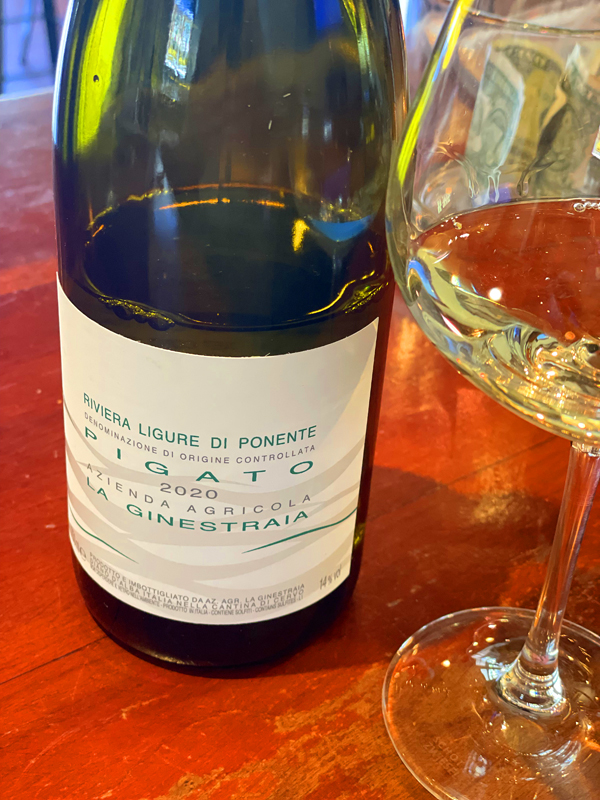
2020 La Ginestraia, Pigato, Riviera Ligure di Ponente DOC, Liguria, Italy.
The Azienda Agricola La Ginestraia is small estate in Liguria’s western most end along the Italia Riviera and very close to France, it was founded in 2007 in the tiny village of Cervo, in the province of Imperia, Liguria by Marco Brangero, who also has a Piedmonte estate in Diano d’Alba. The focus here is the local version of Vermentino, known as Pigato, which is one of the purest examples of this Mediterranean varietal that you can find, as witnessed here in Brangero’s La Ginestraia Pigato, Riviera Ligure di Ponente DOC which show crystalline detail and energy, but still has a well rounded mouth feel and depth. This 2020 is absolutely delicious with mix citrus, quince and stone fruit layers rushing through the medium bodied palate along with steely mineral tones, spice, wet stones, saline and subtle florals. Vermentino is a really exciting grape, which as many note, has some qualities that remind you of Riesling, with its flinty edginess as well as having very pleasing richness and texture that highlights warm ripeness of terroir and vintage, while retaining loads of acidity, making it flexible for planting in many climates. This ability has certainly caught the attention of growers in climate change affected areas, and has now found a happy home in California, but the exceptional places for this grape continue to be around the azure waters of the Mediterranean sea, like here in Liguria, as well as in Corsica, Sardinia, Provence and the Tuscan coast. Vermentino (also known as Rolle in France) is also one of the classic Chateauneuf du Pape grapes and plays a very minor role in those white wines, where it is usually blended in with more dominant Roussanne and Clairette grapes.
The picturesque setting at the La Ginestraia winery, which is surrounded by the beauty of olive trees and the vineyards themselves, is on a small hill near the sea, a few steps from the Mediterranean in this surprisingly unspoiled part of the Italian Riviera, only minutes from the exclusive and crowded French side. La Ginestraia produces a small collection of wines mainly Pigato (Vermentino) and Rossese, which is also known as Tibouren, an ancient grape that is found in Provence, where it makes one of the world’s greatest Rosé wines. In Liguria, Rossese, in the San Biagio della Cima Dolceacqua DOC, is used to craft a lighter framed dry red that has some similarities to Nebbiolo and is quaffable like Gamay, plus it is glorious food wine. For Brangero’s Pigato comes from vines near the ancient and characteristic Ligurian village of Cervo in the province of Imperia that has a very mild climate, especially in the Ponente area. Pigato, once that to be a separate species of grape, is in fact Vermentino (Rolle) with DNA evidence proving that Pigato, Vermentino, Rolle and Favorita (The Piedmonte version) are all the same variety. This is due, as the winery notes, both to the protection from the northern winds given by the Maritime Alps, which reach 2000 meters, and the gentle mitigation of the Ligurian Sea. The Liguria region is very difficult to farm with mostly steep sites that requires lots of hand tending, with some sections being terraced to make it a bit easier, with the La Ginestraia terroir being set on clay and schist soils. This pretty golden hued Pigato, 100% varietal, from 20 plus year old vines, was fermented and aged completely in stainless steel tanks to preserve clarity and freshness, which worked brilliantly here with this vintage, making it wonderful with sea food cuisine. A big thank you to my friend Giuseppi Cossu, for again, sharing this latest vintage with me, especially on a 100F day, it really hit the spot!
($25 Est.) 92 Points, grapelive
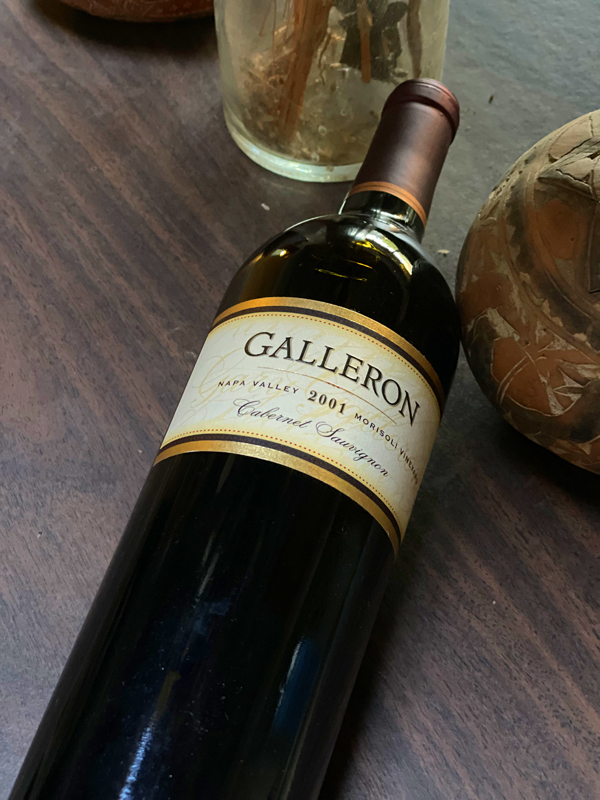
2001 Galleon, Cabernet Sauvignon, Morisoli Vineyard, Rutherford, Napa Valley.
Gary Galleron, who was the winemaker at Whitehall Lane during the early to mid 1990s, was a third generation Napa Valley native and made some incredible Cabernets into the early 2000s, especially those that were made from these Morisoli grapes, as witnessed here, in this classic and beautifully drinking 2001 version I was able to find through a private cellar. This 2001 is still fresh and structured with absolutely pure Cabernet fruit and a near perfect color, deep inky purple/garnet with just a faint burgundy/red brick edge and a lovely floral bouquet. The full bodied and smooth palate leads with blackberry, blueberry, currant and plum fruits along with cedar, anise, dried acacia flowers, loam, pipe tobacco and incense. I couldn’t have been more happy with the performance of this bottle, which was in perfect condition when I received it through K & L Wine Merchants, even after 20 years (cellaring) in private hands, it was well worth taking the chance on it and I am a huge fan of this vineyard site. Gary Galleron, who I first met when he started promoting his own label stuff in around 1999, was already known to me and I had been drinking his efforts from this Morisoli Vineyard dating back into the early 1990s, which included his masterpieces from Whitehall Lane from the 1990, 1991, 1992 and 1994 artist label versions, that still today remain some of my favorites, and even though the 1993 vintage wasn’t as much loved by critics, it was also a fabulous wine to drink at an early stage and was fairly priced for the pedigree and quality at the time. Galleron was quite the eccentric, as I remember, wearing skinny jeans and cowboy boots way before it was thing and was a non interventionist winemaker before it was a thing too, he employed very basic techniques and swore by long elevage, with this wine seeing close to three years in Bordeaux style barrels, if I remember correctly.
Gary Galleron, who began winemaking while in high school, went on to get his degree at Cal State Fresno, before embarking on his Napa winemaking career, which saw him overseeing some impressive cellars, including Vineyard 29, Grace Family, the mentioned Whitehall Lane, Chateau Montelena, Hartwell, Del Dotto and Seavey. That is an impressive CV (resume), but somehow his own wines have never gained cult status and are under the radar, which I find remarkable, but it has allowed me to find some awesome bottles over the years, especially as I repeat often, these Morisoli Cabernets. The Morisoli Vineyard, which lies in the heart of the Rutherford Appellation, an area noted for some of the world’s most coveted Cabernet Sauvignon was farmed by fourth generation grower, Gary Morisoli when this wine was made. The vineyard contains, what Galleron calls the elusive component of “Rutherford dust” that defines the distinctive Cabernets from this part of the Valley, which is on bench of gravelly soils, with old Cab vines, as well as Zinfandel, which today also produces excellent wines. Today it is Mike Morisoli who farms this vineyard, that is located on the west side of Highway 29 and just south of Niebaum Lane, near the famous Inglenook (Rubicon) estate, in the heart of the famed “Rutherford Bench”. This wine, which was sold for as much as $100 a bottle, saw 30 months in French oak with percentage of new oak that has refined the tannin and added some nice vanilla and sandalwood notes that are full integrated into the 2001 Cabernet. Over the years Morisoli has been in some outstanding wines, with the Karl Lawrence, now Trujillo Wines, also having some Morisoli grapes. Galleron’s grandparents, which were French immigrants, Angele & Virgile Galleron, settled in the Napa Valley in 1918 and began a historic winegrowing legacy that continued through Gary, in fact they even have a road named after them for their efforts. Gary said he started up the winemaking ladder at Chateau Montelena under the guidance of the legendary Mike Grgich, who was influential in the style of wines Galleron made, like this beauty.
($89 Est.) 94 Points, grapelive
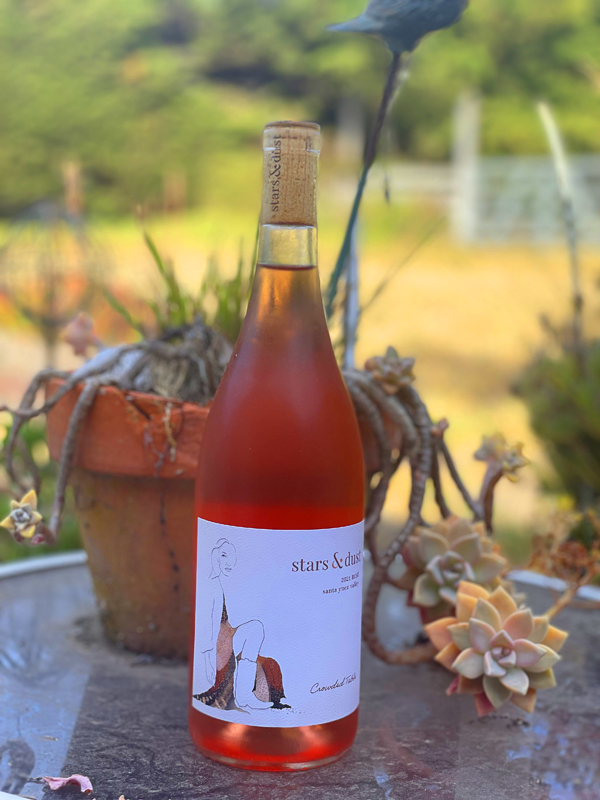
2021 Stars & Dust, Dry Rosé, Crowded Table, Santa Ynez Valley.
I loved the last vintage of Nikki Pallesen’s Stars & Dust Rosé, where she bottled the varietals into separate Mourvedre and Grenache wines, so I was excited to see what her 2021 vintage brought, and was happily surprised to find that she combined the two grapes and two single vineyard sites into one glorious dry pink! This 2021 shows a bright pinkish salmon hue and has a Provence style array of flavors with ruby grapefruit, sour cherry and strawberry fruits, snappy spices, delicate seeped roses florals and a stony/mineral charm. Made from 52% Mourvedre from the Kaerskov Vineyard in the Los Olivos District and 48% Grenache from the Tierra Alta Vineyard in Santa Ynez’s Ballard Canyon region, this year’s Rosé is full of energy, steely intensity, dynamic acidity and structural fruit density, making for one of the best Rosés in the state. Those who are fans of Domaine Tempier, Gros Nore, Chateau Pradeaux and or Clos Ste. Madeleine will instantly see the connection and influence here in Pallesen’s pure California version, with this year’s long cool growing season making this Crowded Table a standout bone dry example of native Rosé and a wine not to miss. Pallesen explains that Kaerskov (Danish for “dear wood”) where the Mourvédre comes from (Los Olivos District AVA), is a farmed by area icon Ryan Carr, adding that, (as) for the Grenache, it was planted back in 2000 out at Tierra Alta Vineyard, one of the steepest and most sought after vineyards in the newly appointed Ballard Canyon AVA. She is a geek for Mourvèdre and you can see why here, as this varietal, originally from Spain where it is called Monastrell, though it has become more famous in Chateauneuf du Pape and in Provence’s Bandol where it makes for incredible age worthy powerful reds and elegantly structured Rosés, with the Stars & Dust taking on that unique charm.
To achieve these exceptional results, Stars & Dust hand harvested the grapes at lower sugars, exclusively to make Rosé and vinified non saignee (bleed off for red wine production) with a short skin maceration to deliver this wine’s noted pretty pale pinkish/salmon and magenta tint and then pressed to neutral for fermentation. The Crowded Table Rosé was matured in the used wood for 7 months and bottled quickly to preserve its vibrant and crisp detailing, while allow the wine to fill out and impress with rich and rounded mouth feel, it is a very serious and authentic effort. The Santa Ynez Valley, as I have mentioned, is mostly formed from an area between the Santa Ynez River, between the Purisima Hills above Solvang and set on on a broad alluvial terrace plain. This area is a prime spot for Rhone varietals with well drained soils with gravel, Orcutt sandy terraces, clay loams and the locally unique complex of Positas-Ballard-Santa Ynez alluvial deposits. The climate here is heavily influenced by maritime conditions and a long growing season with some warm Summer days helping the Mourvédre, a late ripening grape, flourish here, as well as a great place for Grenache, which really enjoys the long Summer days. Nikki Pallesen’s, formerly of Liquid Farm, new label Stars & Dust is mainly focused on Rosé and in old vine Chardonnays, of which I recently reviewed and loved, it is a small winery to watch and I highly recommend getting on the mailing list as most bottlings sell out quickly. Pallesen has crafted an addictive and distinctive dry Rosé, as she did with the Liquid Farm Rosé, which as I noted before, was known in the industry as Pink Crack! I enjoyed it with fresh caught Monterey salmon that was lightly smoked and French farm cheeses. Stars & Dust has an excellent set of wines, with new releases including two beautiful Chardonnays, a quaffable Grenache based red and this brilliant Rosé. There were 400 cases made this vintage, that means the allocations are a bit more liberal, meaning it’s possible to stock up for the Summer, thank goodness, as I got a few extra bottles for personal use that will be perfect for some beach sunsets in the next few months.
($28 Est.) 93 Points, grapelive
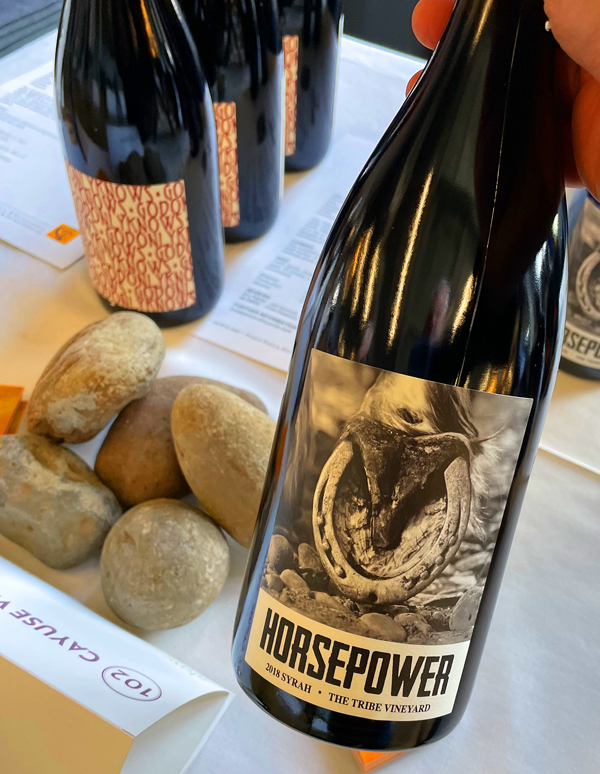
2018 Horsepower by Cayuse, Syrah, Tribe Vineyard, Walla Walla Valley, Oregon.
Some of the sleepers in Christophe Baron’s lineup is his No Girls Grenache and his brilliant Horsepower Tribe Vineyard Syrah, which I was thrilled to taste at this year’s Slow Wine event in San Francisco and is the last of the set to be reviewed, but by no means the least, this 2018 vintage is as good as it gets for new world Syrah and a very distinctive one to be admired for its complexity and depth. This deeply purple/garnet Horsepower Syrah is taut and tannic with loads of earthy intensity, it delivers an old school Hermitage like performance with a meaty full bodied palate with plenty of umami, wild mushroom and camphor notes to go along with a classic core of boysenberry, damson plum, blueberry coulis and creme de cassis. Once this tightly wound and vibrant Syrah opens up it turns on the charm with violets and a luxurious mouth feel and allows for some delicacy to show through with transparent clarity along with spicy peppercorns, cedar, anise and coco powder. The vintage has tons of energy and this wine has fabulous cellar potential, I can only imagine this Horsepower getting even better with time and its drinking window should last easily more than a decade, probably closer to two, look for its best to shine in another 5 to 7 years, or else be sure to decant so you don’t miss out on all there is to experience here. While Baron is coy about his winemaking, there is every reason to believe these wines are made with lots of whole bunches and fermented with native yeast with some cement and mainly aged in used French oak.
Christophe Baron’s farming philosophy has been holistic and organic ever since he first pioneered biodynamic farming methods in the Rocks Distinct of the Oregon side in Walla Walla Valley in 2002. Like as done at Baron’s Cayuse Vineyards, the Horsepower vineyards, like this 3 acre Tribe Vineyard, are farmed according to an astrological sowing and planting calendar, and entirely without the use of herbicides, synthetic fertilizers, chemical insecticides or fungicides. The winery uses six hard working draft horses to help cultivate these vineyards, hence the name here and they play a big role in the quality of these amazing wines. The Tribe Vineyard is planted one vine per stake, which is more common to the northern Rhone, like the mentioned Hermitage and or Cornas and the vine density and small yields make for some of the greatest American Syrahs, with this one joining an elite set of examples and a unique expression of the grape. Baron’s Syrahs are very nuanced wines with an individual nature that highlight the terroir and embrace their leathery and savory elements, while displaying impressive fruit density with black olive, iron ore, minty herbs and having a firm backbone, as this 2018 proudly reveals. Baron, the French founder of Cayuse, who’s family has been making Champagne for centuries, has been making the Tribe Syrah since 2011, and with every vintage it gets more and more intriguing, as do all of his wines. These iconic, minimalist and low intervention Cayuse/Horsepower wines are not cheap and extremely hard to get, but they are worth it and I am always grateful to try them.
($149 Est.) 96 Points, grapelive
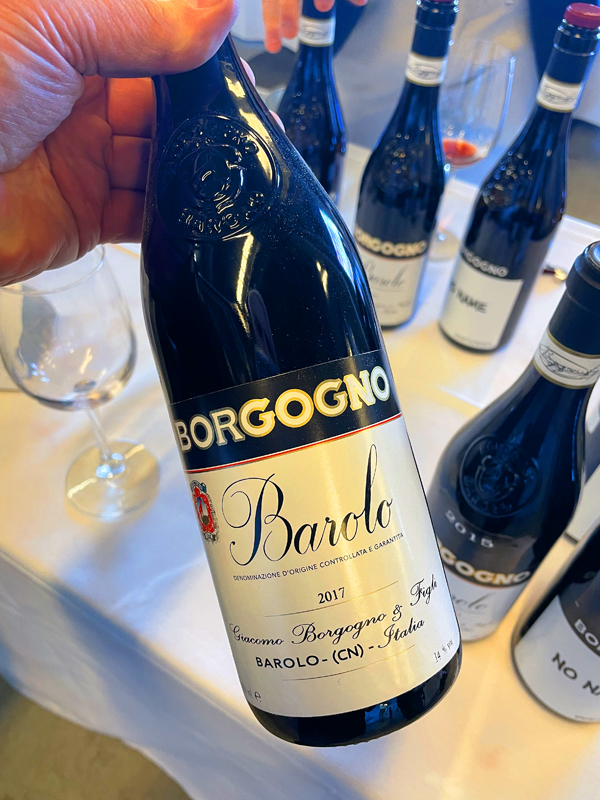
2017 Giacomo Borgogno & Figli, Barolo DOCG, Piedmonte, Italy.
The sultry, delicately floral and ripe 2017 Borgogno Barolo Normale is full of classic flavors and is a pure and comforting Nebbiolo that has plenty of structure, but can be enjoyed in its youthful stage as well with supple tannins and a beautiful layering of red fruits and contrasting savory elements, it is a wine that gets better with every sip and especially good with meaty cuisine. The Borgogno Barolo is usually chewy and forceful with dusty tannins, but 2017 was a warm vintage and the yields were much reduced, allowing for a more approachable version of the King of Wines, it shows off a lush full bodied palate of bramble berry, plum, cherry and strawberry fruits along with a hint of iron, some earthy tones, melted black licorice, lavender, minty herbs and cedary wood. In the glass this dark ruby and brick edged Barolo gathers itself nicely and provides the same kind of joy as a Premier Cru Burgundy from a top producer, this Borgogno is impressive and while not quite up to the 2016 in age ability it delivers everything that is expected and looks to please the Nebbiolo enthusiasts for 3 to 5 years and maybe longer. I took a while to fully appreciate these Borgogno wines, but now I am a huge fan and tasting the latest set at Slow Wine brought even more admiration of this great producer and their full collection of wines. The Borgogno Barolo really captures a sense of place, pedigree and embraces traditional winemaking, and if you’ve not had their wines, it is a great time to discover them.
The historic Giacomo Borgogno & Figli winery, which was founded back in 1761, is one of the best and most famous Barolo producers, making a gorgeous collection of Nebbiolo bottlings, including this one, that comes from a selection of top sites in the appellation. Borgogno, as noted here in prior reviews, is all organic these days and continue to employ old school and traditional methods in the cellar, which are cooly located underground, with long spontaneous or natural fermentation(s) in concrete tanks without the use of selected yeasts, and with long elevage(s), exclusively in large Slavonian oak casks. In recent years, alternative grapes have had some moments to shine in this lineup, including Borgogno’s Timorasso DOC Derthona, one of Piedmonte’s most intriguing whites and their beautifully aromatic Langhe Freisa. The Barolo DOCG comes from vines set on classic calcareous and clay marls (soils) with a southerly exposure and from parcels in great crus, like Cannubi, Fossati, Liste, San Pietro delle Viole. The 2017 saw, as the winery notes, a spontaneous fermentation with indigenous yeasts for about 12 days in concrete tanks, with a lengthy submerged cap maceration period before being racked to large Slavonian oak casks (4500L) for an elevage of 4 years, after which a further cellaring in bottle, lasting for 6 months. It is always a treat to sample these Borgogno wines, for which I am always grateful for, especially this bottling. I highly recommend getting to know these Borgogno wines, in particular of course the Barolo offerings, like this one, and the mighty Cannubi cru, as well as their set of Barbera, Dolcetto and Langhe Nebbiolo, which are exceptional values.
($89 Est.) 94 Points, grapelive
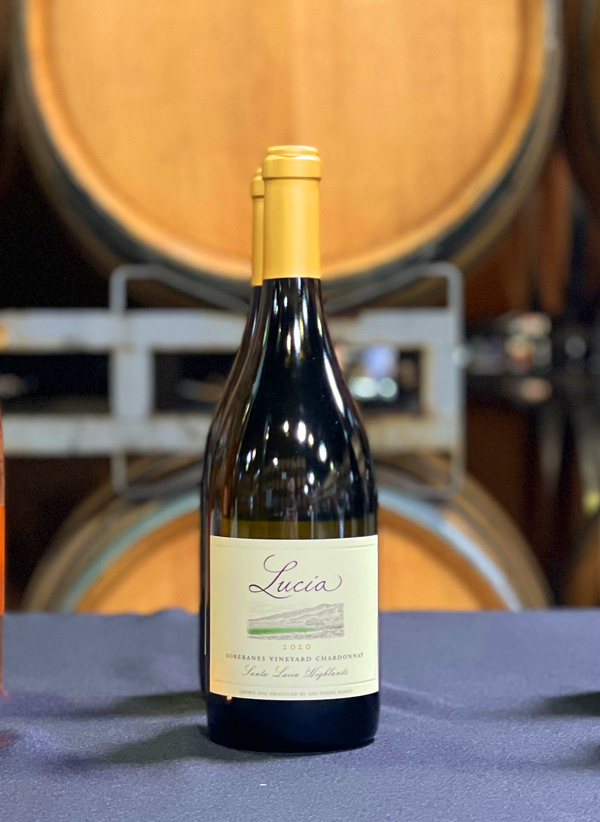
2020 Lucia Vineyards by Pisoni, Chardonnay, Soberanes Vineyard, Santa Lucia Highlands.
Considering the complete devastation the fires in 2020 caused and the complete wipe of the red wine grapes, the latest Lucia Soberanes Chardonnay seems like divine mercy for the Santa Lucia Highlands region, it is a beautiful and graceful wine with a unique delicacy and lightness not often found here, it is one of the few joys of this difficult vintage with a full range of flavors on display. Jeff Pisoni was given an extremely hard task of finding a needle in the haystack with the level of smoke that hovered above the SLH, but he was up to the challenge and crafted a gem here with this lovely Soberanes Chardonnay, lucky he had his brother Mark and his talented farming team finding the very best clusters to give him the best possible chance at success, this 2020 is better than expected and has incredible clarity and detail with a pale golden/greenish hue, subtle aromatics and fresh lemony nuance before smooth layers of apple, pear and white peach fruit come alive on the medium bodied palate along with clove spice, wet stones, faint leesy brioche, vanilla and a lingering zesty orange citrus note. This bright a mineral driven Chardonnay is pure class in the glass, with a notably less fleshy character than is more normal, making for a very appealing lighter style that will go great with Summer meals and especially sea foods that make the local Monterey cuisine so delicious. The have a state-of-the-art winemaking facility that uses gravity flow as part of a custom designed cellar, which was conceived to merge the estate vineyards and winery as they says, lets Jeff made sublime hand crafted small lot wines.
The Pisoni and Franscioni families again joined forces to farm this stellar Soberanes Vineyard in a higher site within the Santa Lucia Highlands, it is proving to be one of the best crus in the region, producing fantastic grapes for some of California’s top wines with a focus on Pinot Noir, Syrah and Chardonnay, as found in this wine. The Pisoni family notes that, the Soberanes Vineyard bears the family name of José María Soberanes, who marched from Mexico to Monterey Bay with the famed Portolá expedition, and his son Feliciano, who acquired the 8,900-acre land grant as repayment for his loan of forty horses, fifty head of cattle, four oxen and some sheep. This site, which joins a family of elite vineyards, Garys’, Pisoni Estate, Rosella’s and Sierra Mar, a prestigious collection no question, with this Soberanes Vineyard, the youngest, already showing awesome its potential. The Soberanes gets the classic marine cooling influence that channels down from the Monterey Bay and is, as the Pisoni’s explain, located next to the famous Garys’ Vineyard, with the classic sandy loam soils, which also boast significant sub-soil boulders that layer into a alluvial fan, making it an almost perfect place for these vines to thrive. The Soberanes features tightly spaced vines and is planted to 33 acres of Chardonnay, Pinot Noir and Syrah with a diverse selection of clonal material, with the Chardonnay having some rare Burgundy clones as well as California heritage and modern Dijon versions too. About 200 cases of Soberanes Chard are produced in most years and it sees around 40% new oak, with Pisoni allowing a lees aging that lasts about 15 months usually here, making for a balanced and luxurious wine, as this one shows exceptionally well.
($65 Est.) 93 Points, grapelive
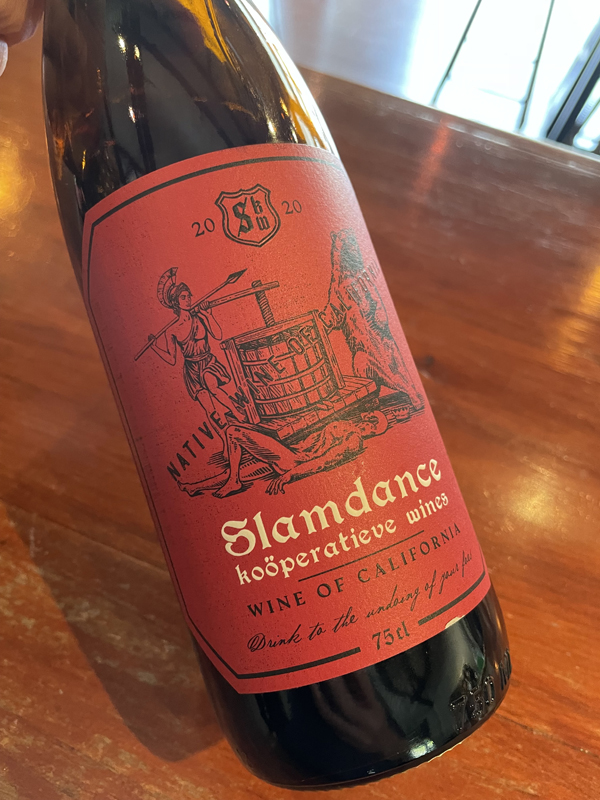
2020 Slamdance Koöperatieve Wines, Native Wine of California Red, Central Coast, California.
Winemaker, Daniel Callan’s first release under his personal label, Slamdance Koöperatieve Wines is a tribute to old school California wine and is a highly entertaining quaffer made from mainly Valdiguie, Cinsault and Negrette, along with a few other obscure all old rarities in California and are sourced from sustainable vineyards in lesser known but historic areas in parts of the state’s Central Coast. Made like a Cru Beaujolais with lots of whole cluster and semi-carbonic methods this 2020 Red Table Wine, luckily missed out on the vintage’s terrible fires and grape wreaking smoke taint, showing bright red fruits, floral and early aromatics along with a spicy zippy freshness. Callan, who is the assistant winemaker at Paso Robles winery, Thacher, is already getting a lot of shout outs from his peers and who has more than a dozen harvests behind him looks to be a talent to watch out for and his debut release is a deliciously fun bottle. The lighter framed medium bodied 2020 Slamdance Koöperatieve red delivers vivid layers of crushed berries, plum, strawberry and Italian cherry fruits that are accented by shaved cinnamon, tangy herbs, peony, anise seed and a nice raw umami crunchiness, it certainly highlights the Valiguie flavor profile to good effect and like a Beaujolais it benefits from a slight chill and will be fabulous with outdoor or Summer meals. Made in a very natural style this wine reminds me a little of Jolie-Laide’s wines, especially their Trousseau, Pfeffer and Gamay blend and Michael Cruse’s Monkey Jacket or Lapierre’s Julienas Cru Beaujolais, meaning Callan is doing something right!
Daniel Callan lives in Paso Robles where he works, but has searched out unique vines to made his wine, including the Shell Creek Vineyard that was established back in 1875, the Glenrose Vineyard that was planted in 1989 and the geeky cool Siletto Vineyard, farmed by the Siletto family in the wilds of San Benito, with a mix of limestone and granite soils and some cool and unique varietals grown there. The low alcohol, at about 12.8%, and juicy acidity here in this sunny ruby hued Red makes for a delightful experience and without any trace of oak, allows for the wine’s slightly rustic side and lithe tannins to shine through, which is welcome to balance the fruit and floral details. This wine is very different from the dense and inky wines of Paso Robles and Callan is taking his own path, like many others of his generation are doing and Im really excited to see what he does in the next few years with his Slamdance Koöperatieve wines, especially after tasting this vintage. This focus on these weird and wild grapes which have their own old California names, Napa Gamay (Valdiguie), a grape with origins in the southwest of France and was mistaken for a clone of Gamay until recent DNA testing, Black Malvoisie (Cinsault), a Rhone varietal also found in the Languedoc and Provence regions and Pinot St. George (Négrette), a rare black grape from the Fronton region of France with has been made famous by the De Rose family in the Cienega Valley. This path less traveled and collection of grapes, which also may include Crabb’s Black Burgundy, and Cabernet Pfeffer, has produced a very successful result for Callan, and for those lucky enough get some bottles, which highly recommend for those that are seeking out something adventurous and different.
($42 Est.) 92 Points, grapelive
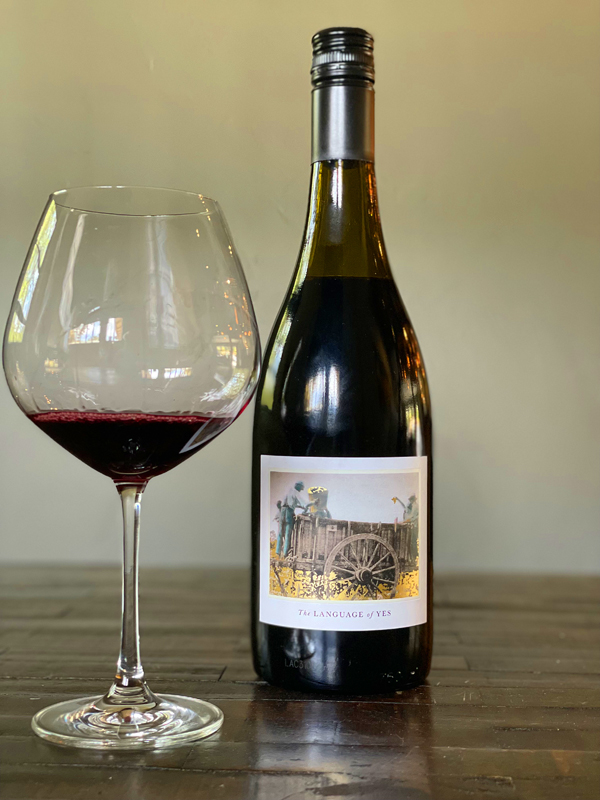
2020 The Language of Yes, Syrah “En Passerillage” Rancho Réal Vineyard, Santa Maria Valley.
The Language of Yes Syrah En Passerillage by Randall Grahm and his team is a lush and opulent wine, which is part of a collaboration between the legendary Grahm, formerly of The Bonny Doon Vineyard fame and a small team from Gallo (Yes that Gallo!), including winemaker Aussie Jane Dunkley, who is also a Master of Wine candidate, and who has worked for Randall in the past. This 2020 vintage, a year that was so disastrous mostly because of the terrible wild fires and smoke, that caused heartbreak across the state, wiping out large and prestigious vineyards entirely, somehow they missed this area when it mattered most, allowing for an exceptional harvest here at Rancho Réal. The beautifully purple and dark En Passerillage starts with wild boysenberry, violets and exotic spices before revealing blueberry, black currant and damson plum fruits on the palate, adding a slight meaty note along with classic pepper, anise, cedar and kirsch accents in a full bodied and aromatic wine that thrills the senses. The Syrah based The Language of Yes, with its dose of co-fermented Viognier, a la Cote-Rotie, also made from the cool climate and sandy loam soils at the Rancho Réal Vineyard in the Santa Maria Valley, where the Grenache is also sourced. The En Passerillage Syrah ended up being 87% Syrah and 13% Viognier in the co-fermented blend, though I believe the Viognier was not air dried as the Syrah was, helping keep natural acidity and lifting the aromatics. It is largely and surprisingly unknown, just how good Randall’s past efforts with Syrah have been, especially his work with the old vines at the Bien Nacido Vineyard “X-Block”, where he made some incredible wines, some of which are still drinking amazing today, like the 2012 and 2014s.
The Language of Yes wines, include three offerings, the Grenache En Passerillage, reviewed earlier here, this sister wine, a Syrah En Passerlllage bottling and the sold out Provence styled Rosé of Cinsault and Tibouren, which I am very excited for a new release that should be out soon. The winemaking for the Syrah, was similar to what they did with their Grenache, in which they adopted the extremely non-standard practice air-drying the grapes post-harvest. The extremely mild climate of the Santa Maria Valley allowed them, as Randall notes, to dry the grapes al fresco in situ, gently placing the grapes on paper trays in the shade of the vine canopy. The intent here, as he continues, was not so much to dehydrate the grapes (this does happen, to the tune of picking up perhaps one additional degree of alcohol), but rather to lignify the stems, in other words, turning them from slightly herbaceous “green” to sturdy, puissant, costaud brown. This is not Amarone, it is about including more stems to must without getting extreme bitterness that green stems give, and this unique process has achieved the desired results, especially with this Syrah En Passerlllage, which gained complex and depth, but still has a supple and luxurious profile. The Language of Yes Syrah saw a three week maceration and primary fermentation with 50% whole cluster with a combination of punch-downs and pump-overs to get full extraction before pressing to used French oak barrels, all over 5 years old, for aging. As with the Grenache bottling, this wine spent about a year maturing before being bottled unfined and unfiltered and again there were about 600 cases produced in this inaugural release. Again, Randall has helped guide a small lot of Syrah, plus a few Viognier grapes from vine to bottle with impressive old world charm and quality, and while the Tibouren/Cinsault was the main reason I signed up for an allocation of Language of Yes, this Syrah has surpassed my expectations and I highly recommend grabbing it while it is still available!
($40 Est.) 94 Points, grapelive
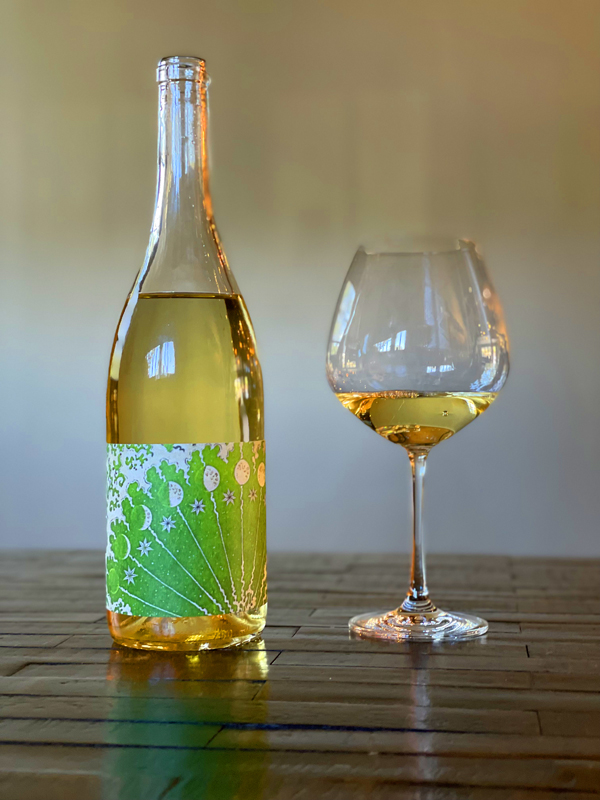
2021 Pax Wines, Vermentino, The Bench Vineyard, Clements Hills AVA, Lodi California.
Vermentino is enjoying the spotlight here in California and is turning out to be an excellent choice, as it enjoys the Sunny weather, retains dynamic acidity and is a grape very much a winemaker’s friend, as it can be done in many ways to keep things exciting, as this new release from Pax shows. Brilliantly golden in the glass, slightly reductive, mineral laced and wonderfully refreshing, vibrant and bone dry on the medium bodied palate with lemony zest and peachy fruit, accented by mouth watering saline, wet stones, verbena, faint orange blossom floral(s), bitter almond and key lime. Pax says, Vermentino is the great white wonder of Coastal Europe, going on he says it is best known for producing high acid, fleshy, refreshing wines, with some exciting examples, coming out of the sun-drenched coast of Italy, from Tuscany to Liguria. Vermentino, also known as Rolle in parts of France, enjoys many climate and terroir elements and has thrived for thousands of years in Sardinia, as well as having a presence in the Rhone Valley, it is also one of the Chateauneuf du Pape varietals, Provence, Corsica, where there are many fabulous examples and even does well in Piedmonte, where it is called Favorita. Vermentino plantings in California have exploded in the last 10 years or so, from Dry Creek, Carneros and the Sierra Foothills to Paso Robles, Monterey County, especially in the Arroyo Seco zone and here in Clements Hills in San Joaquin County, California, located in the southeast part of the larger Lodi AVA and on the Mokelumne River. Pax’s comes from very sandy soils, like those found in Chateauneuf, and the hot days don’t faze this grape one bit and this 2021 only comes in at 12% natural alcohol, making it a perfect Summer sipper, though Vermentino does age nicely with an almost Riesling like quality, if you were patient.
Pax’s latest Vermentino was crafted using 100% Vermentino from the The Bench Vineyard, in Clements Hills and was 100% whole cluster pressed, naturally fermented and saw a 4-Month élevage in a combination of stainless steel barrels, concrete tank and large neutral French 500L puncheons, all to bring out the best character of the grape and allow for a fine balance of purity, crisp detail, a touch of earthy funk, and textural charm. Part of Pax Mahle’s quaffable club series of wines, the Vermentino joins a collection of fresh and easy natural styled wines that include California rarities such as Charbono, Mission and Valdiguie, all reds that like his Gamay offerings enjoy a slight chill and are no pretense wines with either full or Carbonic like fermentation(s). Also of interest is a new Chenin Blanc from the Sonoma Coast and the wild and funky skin contact Trousseau Gris, a wine with a cult following. All of these are Pax’s fun stuff, but least we forget his most serious wines, his world class Syrahs, which are his signature bottlings, these powerful efforts are some of the most coveted red wines in the state with his Griffin’s Lair, Armagh Vineyard, Sonoma Hillsides and the Fenaughty Vineyard, which is located in El Dorado County in the Sierra Foothills all being ones to be on the lookout for right now. The are some incredible values throughout the range here and this Vermentino is a excellent addition to the lineup. In recent months and over the last couple of years I have highlighted some awesome examples of California Vermentino with many comparing well against the best from the Mediterranean, like Ryme Cellars, Martha Stroumen, Filomena Wine Co, Unti Vineyards, Sheldon Wines, Bonny Doon, Chesebro, Joyce Wine Co. and Tablas Creek Vineyard, who were responsible for a lot of this grape’s success here by bringing some of the best clones over from France. The rise of warm climate friendly white varietals have been a blessing, from Picpoul to Fiano, and Vermentino, as done here, California is looking forward with delicious results!
($28 Est.) 91 Points, grapelive
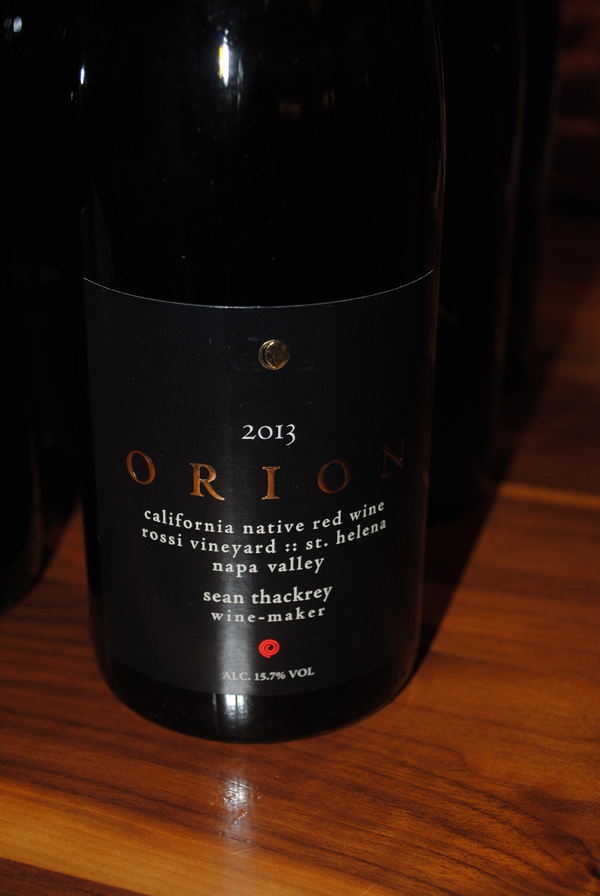
2013 Sean Thackrey, Orion, Native California Red Wine, Rossi Vineyard, Napa Valley.
Today’s review is also a tribute to Sean Thackrey, who passed away this week, and who was influential on my early years in the wine business and who’s wines challenged me and enthralled me in equal measure, in particular his Orion and his rustic and amusing, but easy drinking Pleiades, a wine that I once religiously bought year after year. I was very sad upon hearing the news that Sean had left us and the state has lost one of its legends, though instead of feeling down, I am trying to celebrate his impact on Californian wine and remember my own experiences with him and his wines, I feel lucky to have met him in person many times and grateful I got to taste his wines with him, getting a behind the scenes glimpse of his thinking, which was more often than not completely at odds with conventional wisdom. His wines never wore makeup or were they ever made to please wine critics, they are tributes to his larger than life personality, with his flagship Orion perfectly capturing his nature, rather than that of the grapes or vineyard. The last time I got to taste with Sean was in 2015, when he showed off this 2013 vintage of his famous Orion, which as noted, is an old vine field blend from a single parcel in Napa Valley and consists of mostly Syrah. Thackrey, who was also a contemporary of Randall Grahm, who fruitlessly tried to convince Sean of the essence of terroir, was unconventional winemaker to say the least, but who did pioneering work in promoting California Syrah, well before the likes of John Alban and Manfred Krankel of Sine Qua Non. The Rossi Vineyard, in Saint Helena, originally planted in 1905 is a classic field blend or heritage site with mainly Syrah, but with many inter-planted black grapes, with some Petite Sirah, that go into and along for the ride in this Orion, giving it extra complexity as well. This 2013 is a big wine, heady and ripe at a tick above 15% natural alcohol and with an inky dark hue, but doesn’t feel overt or heavy and instead of jammy flavors this version shows a meaty and raw style with loads of blackberry, plum, blueberry and currant fruits, as well as earthy tones, spice and leathery notes. There is a textural mouth feel and a full bodied palate to enjoy here as well as pure Syrah elements, with hints of camphor, black licorice, purple violets and dark chocolate.
The late great, aging rock star looking Sean Thackrey, who was a self taught winemaker, is still and always will be a counter culture legend in the wine world. He was very opinionated and a complex personality, but who also had a warm heart and generously, especially in my case, gave me insights into his thoughts and with surprising humility told stories of his winemaking, which saw equal parts success and weirdness. Sean’s wines saw almost no human intervention and were aged in very old barrels, with certain exceptions, and they embraced their transparent funk. Thackrey, who once ran an art gallery and was a voracious reader and a rare book enthusiast, saw things trough a very different lens. Part of his believe, was that, the best grapes come from hillside vineyards and he only sourced grapes grown on sloping hillside old vine vineyards, mostly in the Sonoma and Napa regions, most famously this Rossi Vineyard, for his signature Orion Red. Even though this wine was clearly a terroir influenced wine, that was a concept he didn’t believe, and his wines instead of a youthful expression of place were in fact a soulful expression of his personality! Thackrey’s winemaking too was never in line with mainstream thoughts, he reveled in unconventional methods and ancient techniques to make is famous and iconic hand crafted wines. Along with luminaries like Alice Waters and Kermit Lynch, Sean Thackrey has been deeply linked to the shaping of the Bay Area food & wine scene, which he was a part of for more than three decades, starting his own label back in 1980. The world was better place with Sean, he loss will be felt, in particular those inspired to follow their own path and celebrate wildly funky stuff. The unique weirdness and pleasures of Thackrey’s wines have become expected from this Orion, a Syrah based wine to his Pleiades red blend made by the man from Bolinas, that grumpy, tourist hating, and locals only little hamlet between Mt Tam and Stinson Beach. Thackrey, who’s wines are named after the heavens above, always let the grapes “rest” for 24 hours in open vats under the stars, prior to crushing and fermentation, which must of had an effect on the wines. Pleiades was my first experience with Sean’s wines and still remains a favorite, it included a kitchen sink collection of grapes and always had an edgy menthol character, it was usually a non-vintage red made with Sangiovese, Pinot Noir, Petite Syrah, Viognier, Zinfandel, Barbera and Syrah, along with small amounts of other varietals that changed from year to year. For those that have yet not had Thackrey’s wines, I highly recommend getting a chance to do so while they still exist, especially this one.
($89 to $129 Est.) 95 Points, grapelive
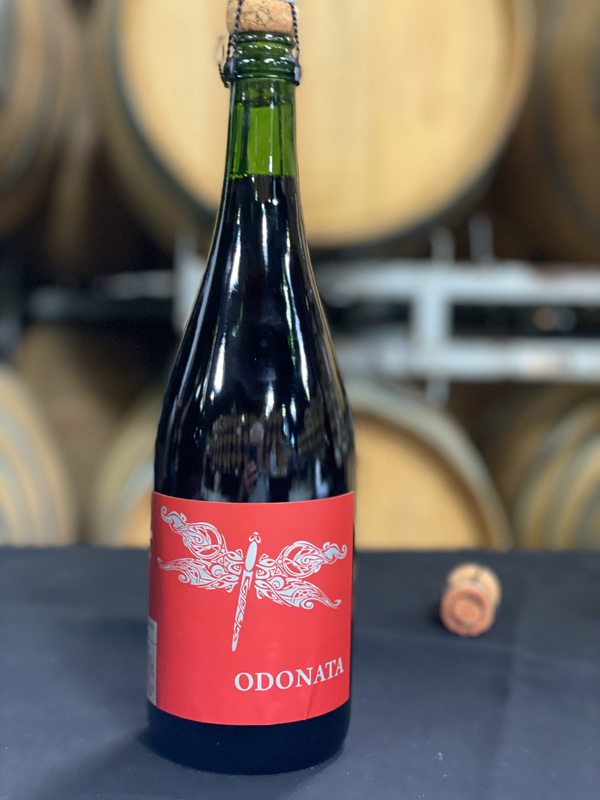
2019 Odonata, Sparkling Grenache Noir, Hook Vineyard, Santa Lucia Highlands.
Previewed at the Santa Lucia Highlands Sun, Wind Wine tasting event, the Odonata Hook Vineyard Sparkling Rouge by winemaker Denis Hoey is a macerated red Methode Champenoise bubbly made from old vines in the Santa Lucia Highlands that is exciting and lively on the palate, but with an elegant mousse and a depth of flavors. This unique sparkler saw a full skin maceration and primary fermentation, exactly as a normal red wine before going through its patient journey of lees aging and riddling to become a ruby colored Brut dry bubbly that was lovingly hand crafted to thrill the senses and provide joy to your Summer months ahead. There are some interesting Grenache sparkling wines produced in the south of France, but most are typically done in a fruity Rosé style, while this Odonata version is somewhere between Aussie Sparkling Shiraz and natural Frizzante Secco Lambrusco. The medium bodied and lightly tannic palate has beautiful clarity and shows some yeasty richness with layers of strawberry, tart cherry, raspberry and orangey citrus along with hints of peony, star anise, bitter herbs and a touch of cinnamony spice. The Odonata Grenache Noir sparkling was disgorged for a clean look and finished with a Champagne style cork and cage, rather than a Pet-Nat style pop top, which I appreciate for the sophisticated appearance and non cloudy effect in the glass, and while easy to sip on its own this wine looks to have ability to hold up to serious cuisine. The new Odonata Hook Vineyard Sparkling Rouge would be great for almost any occasion or meal, I can imagine it with rustic salami and or grilled salmon, as well as BBQs with a few friends.
As noted in my prior review of Odonata’s new Sparkling Riesling, Hoey has a real talent for these fun bubbly wines, in the past I’ve enjoyed the Chardonnay and Sangiovese versions, but I think the new offerings are even better, and of course there is a lot more to get excited about from this winery, with new releases of Silacci Vineyard Pinot Noir, Hook Vineyard Syrah, a Brunello style Sangiovese, a Carbonic Carignan and brilliant set of Santa Cruz Mountains Cabernet Sauvignon, to name a few. This sparkler, as per normal with Odonata, saw the grapes picked a couple of days early to keep freshness in the wine and once the primary fermentation was completed, which was on the skins for about two weeks, I believe, the wine was then transferred to a stainless tank and some old barrels for a short period before the complex and lengthy bottle aging. Denis and team then “en tirage” bottled the wine with added yeast and sugar that start process of creating the luxurious bubbles in the bottles. While this Odonata Sparkling Grenache Noir Brut wine is unique, red bubbly is not too uncommon here in California these days with an array of interesting versions out there with Sparkling Valdiguie (Stroumen), Sparkling Carignan (Ryme) and some Sparkling Pinot Noir or Brut Noir (Schug) being some I’ve enjoyed in recent years. One of the first red sparklers I ever tried and enjoyed was the deep inky purple/black Charles Melton Sparkling Shiraz and it made me a fan of quality dry red bubbly, and while Odonata’s isn’t as dark in the glass it offers up enough substance to hold up to robust and or meaty dishes. Odonata Wines was founded in Santa Cruz back in 2005, but became a full fledged estate winery in 2014 when they moved into the old Marilyn Remark Winery property in the Santa Lucia Highlands on River Road, which is one of the best places to visit on the SLH wine trail.
($38 to 42 Est.) 92 Points, grapelive
Grapelive.com – Reviews – May 2022
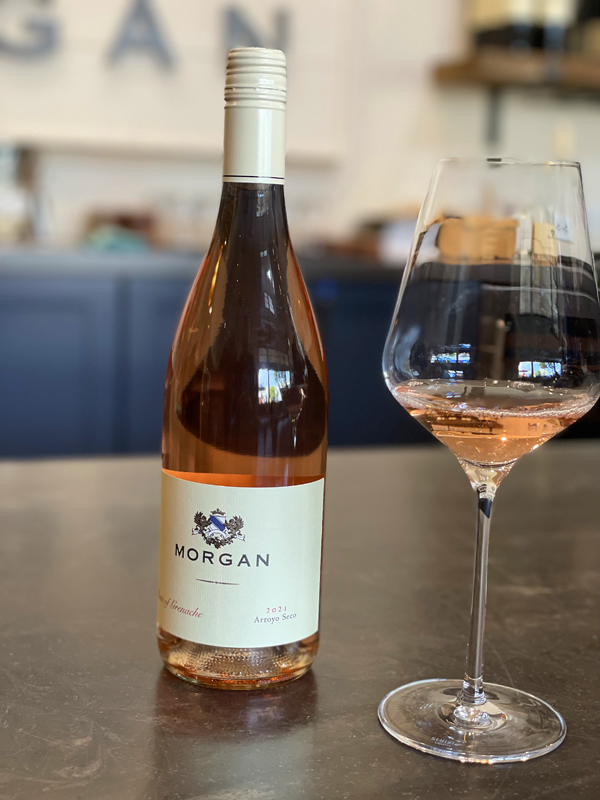
2021 Morgan Winery, Rosé of Grenache, Arroyo Seco AVA, Monterey County.
After a breezy, dusty and sun baked hike in Big Sur, we treated ourselves to an afternoon sip of refreshing and crisp Rosé at the Morgan tasting room in the Crossroads Shopping Center in Carmel and the winery was showing off their new 2021 release, which I think is the best edition of this dry Grenache version to date. Owner Dan Lee and winemaker Sam Smith can be proud of Morgan’s latest lineup, especially the limited release 2019 Chardonnays and Pinot Noirs, which are all stunning wines, as well as their brilliant organic Double L Estate Syrah, a wine I will review soon, that is like this Rosé of Grenache, being maybe the best example the winery has done yet. The Grenache pink is more electric on the zesty palate and it is laser focused with ruby grapefruit, strawberry, sour cherry and spicy crushed raspberry fruits, accented nicely by herbs de Provence, steely mineral tones, rosewater, a subtle bubblegum note and briar notes. The 2021 is less fruity than the last two vintages, but still very flavorful with a pale and inviting pink and glowing salmon hue in the glass with a well balanced tanginess that rejuvenates your taste buds, it is absolutely delicious Rosé that shines with bright intensity and goes great with or without cuisine. There is enough range here to be a wonderful companion to steamed mussels in white wine with garlic or spicy tomato based broth.
The Grenache grapes for Morgan’s Rosé come the cooler west side of the Salinas Valley, in the Arroyo Seco Appellation that, as the winery points out, is uniquely characterized by an ancient riverbed (Arroyo Seco translates to “dry river”) that is surrounded by alluvial a benchland. These well-drained, stony, sandy loamy soils and the cool coastal influence from the nearby deep cold water of the Monterey Bay make for perfect growing conditions that allows for ripe concentration in the grapes, but still retaining vibrant natural acidity, which is really on display here in Morgan’s Rosé of Grenache. To make this wine, Smith used 100% Grenache that saw a short spell of skin contact to achieve the lovely color and seeing grapes dedicated solely to rosé production, they were picked at lower sugar readings and with higher acids. The Grenache was completely de-stemmed and left to macerate for one hour, then pressed to stainless steel tanks to ferment, after which the wine was aged in a combination of neutral French oak and stainless vat for just about 4 months before being quickly bottled to preserve the fresh and vivid details. This vintage, that is a single vineyard bottling, was sourced from the Mission Ranch Vineyard, helping give this Rosé a sense of place, it rivals some much more expensive Southern French versions, paying homage to Tavel, the Rhone’s main Rosé region and or Provence, where Rosé is taken ultra seriously! This tasty vintage will drink perfectly for the long and warm Summer days ahead, there’s a lot of fabulous California Rosé being made and this one is very exciting and a guiltless quaffer!
($24 Est.) 92 Points, grapelive
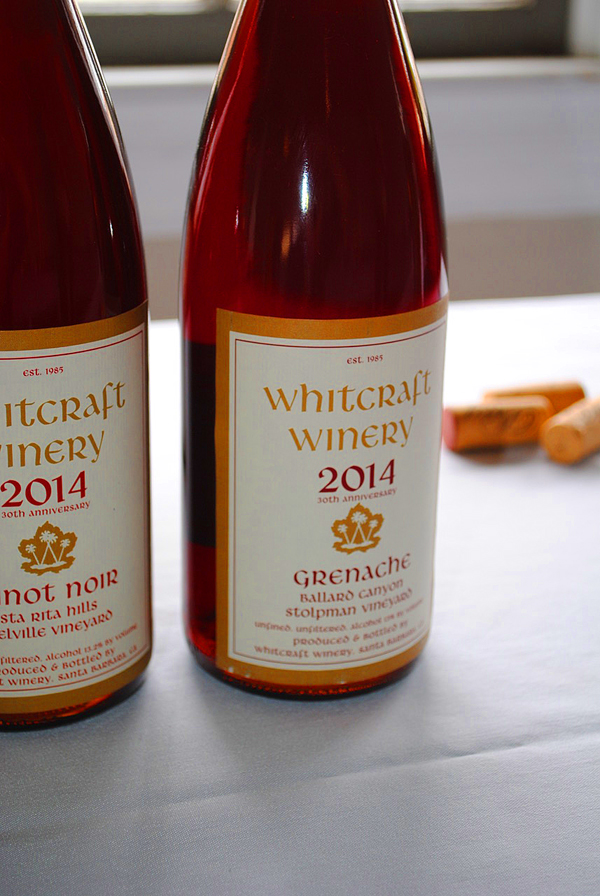
2014 Whitcraft Winery, Grenache, Stolpman Vineyard, Ballard Canyon AVA, Santa Ynez Valley.
Originally tasted on release in 2016, Drake Whitcraft’s 2014 Stolpman Vineyard Grenache is aging awesomely with some secondary and tertiary elements adding depth and complexity here, while the palate is still lively with Italian cherry, plum, red currant, pomegranate and wild raspberry fruits on the silky and spiced medium bodied palate that feels very Pinot like. Whitcraft, while maybe best known for stylish and individual Pinot Noir, does one of California’s most desirable Grenache wines, as well as some other rare varietals, including Trousseau and Gamay, which he does in a lighter and transparent fashion, as this vintage shows. I remember loving this Grenache and Drake’s Pence Ranch Pommard Clone Pinot, so it was a thrill to taste it again with the age on it. The color is a light ruby and the nose has dried florals, herbs and baked raspberry, with hints of pepper, lavender, porcini and fennel coming through in the glass with divine delicacy and a subtle earthiness, making for a lovely and unique example of Grenache that Drake has made his own. Over the years, winemaker Drake Whitcraft, has honed his methods and this wine is now crafted with the whole bunches that are gently foot-trodden and then see a semi-carbonic maceration that is kicked off by a pied de cuvée (vineyard yeasts) and mainly all free run juice to avoid bitter phenolics and tannins. This is very quaffable stuff and highlights the quality fruit coming off the Stolpman vines, which have a top notch pedigree. The Stolpman vineyard in the Ballard Canyon AVA, set on sandy limestone hillsides, is farmed with organic techniques and regenerative viticulture, which Drake says, involves building the soil by adding organic matter to promote a healthy ecosystem.
Whitcraft Winery has been handcrafting and, as the winery notes, unadulterated wines in Santa Barbara, California since 1985, originally with Chris Whitcraft as the winemaker and now with his son Drake making the wines, after his dad passed unexpectedly in June of 2014, just before the harvest of this wine. Chris himself was influenced by some legends, with the winery explaining that he learned his craft from some of the best winemakers in California, including Joe Heitz (Heitz Cellars), Dick Graff (Founded Chalone Winery and its AVA), and Burt Williams (Williams Selyem & Morning Dew Ranch) to name a few. Since Drake took over he has made a name for himself, being part of awesome generation of winemakers in the state that are doing honest and authentic wines, in much the same mold of Jason Drew, who also cut his teeth in the Santa Barbara area before moving his Drew Family Cellars to the Anderson Valley. Drake who got a great education from his father, as well as some of the big stars of the Santa Barbara, Santa Maria, Santa Ynez and Sta. Rita Hills regions, like the late Jim Clendenen of ABC, but has adopted his own winemaking style and stamped his name as one of the biggest talents in the area. His winemaking sees a lot of whole cluster, sustainable and organic grapes and mostly neutral wood aging, which is old world influenced, looking to retain energy and allow for purity in the wines. Whitcraft says that his signature varietals are Pinot Noir, Chardonnay, and Syrah, but I gotta say his Gamay and Grenache are always charming, low alcohol, treats (under 13%) when I can my hands on these very limited bottlings! The Grenache, which was hand bottled, was matured in well seasoned barrels for around 11 months, with just a tiny amount of SO2 and was unfined and unfiltered, its clarification was through gentle racking. I can’t wait to dig into Whitcraft’s latest releases, though it always a huge reward to sample his aged wines, I highly recommend joining his list and or searching out these wines!
($47 Est.) 93 Points, grapelive
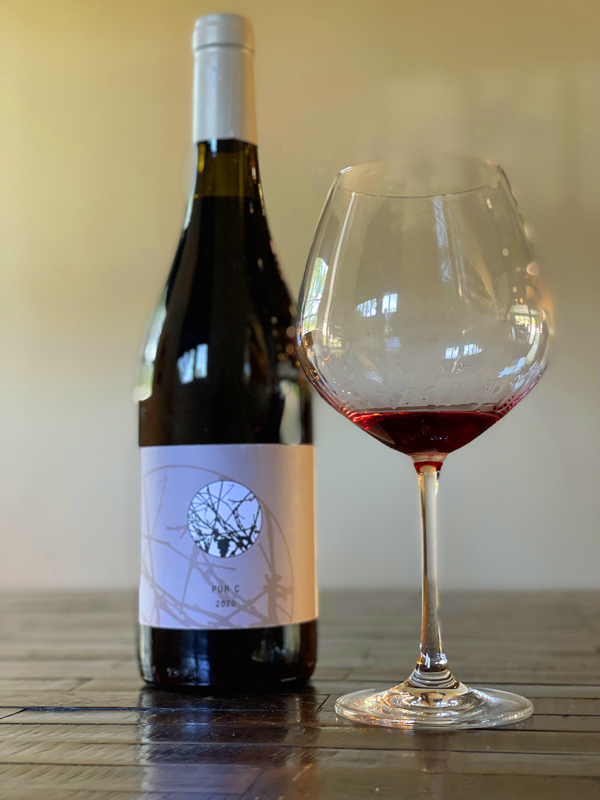
2020 Clos de la Barthassade, Cinsault “Pur C” IGP Pays d’Hérault Rouge, Languedoc, France.
I’ve become a big fan of the Clos de la Barthassade wines, a recent discovery for me, made by Guillaume and Helene Baron, are getting a lot of attention and I wanted to give them a try, especially this Pur C 100% Cinsault bottling, which feels as fun as a Cru Beaujolais, with racy red fruits, but with an exotic spicy personality, along with the Les Gravettes red blend of organically grown Grenache, Cinsault and Syrah, which also impressed me with its deep perfume and complexity of flavors. This Pur C almost feels carbonic and without any wood influence is wine of varietal purity and shows tangy cherry, plum and pomegranate fruits, along with dried herbs and intense cinnamon and red pepper notes, it’s a lighter framed red that is best served slightly chilled. The wines are made using a combination of concrete eggs, temperature-controlled stainless-steel tanks and some very old barrels in the cellar and the Baron’s wines are precise and textural, though this one doesn’t have the fruit density of their other offerings. They ferment each lot separately with native yeasts and the wines are moved only by gravity flow, as to be as gentle as possible. The generally red soils here have a mix of shale or calcareous clay which have an overlay of pebbles. The climate here is Mediterranean with lots of sunny days and the wines here have a ripe warmth to them, but the wines are also fresh, clean and wonderfully balanced too. This Clos de la Barthassade Pur C is easily quaffable and is nice with a variety of cuisine options, especially this Cinsault with its juicy/spicy nature.
As noted in my prior reviews, Clos de la Barthassade, is led by the husband and wife team of Guillaume and Helene Baron, both of who graduated from their viticultural studies and then put their time in at some highly acclaimed domaines in France before seeking out their own piece of land to explore their talents. The youthful couple needed to find an affordable region to settle in, which turned out to be in the wild and remote L’ Herault area of the Languedoc-Roussillon and the Winery is located in the Terrasses du Larzac, which is about 45 minutes northwest of Montpellier. This is where the Baron’s are cultivating their unique parcels with biodynamic practices, with a focus on Syrah, Grenache and Cinsault, seen in this wine, as well as Carignan that they make into another special single varietal wine. These rugged, dry and windy lands are home to few legendary producers, like the Guilbert family’s famous Mas de Daumas Gassac and the cult Grange des Pères. The Barons acquired their 25 acres of vineyards land and began producing in 2014, and they became an instant hit and the wines are all stunning examples, with this Pur C being certainly of of their most unique and delicious offerings. The Baron’s Cinsault, along with their Carignan and some smaller blocks of Grenache, comes from their Montpeyroux site, that they consider one of the finest terroirs, it is called La Barthassade, hence the name of the domaine. Here, the Baron’s note, the sun-drenched terraces vines get more moisture, along with more heat, allowing the grapes to reach perfect maturity with just the right amount of stress to provide depth and concentration, which is clearly expressed in this latest release!
($30 Est.) 92 Points, grapelive
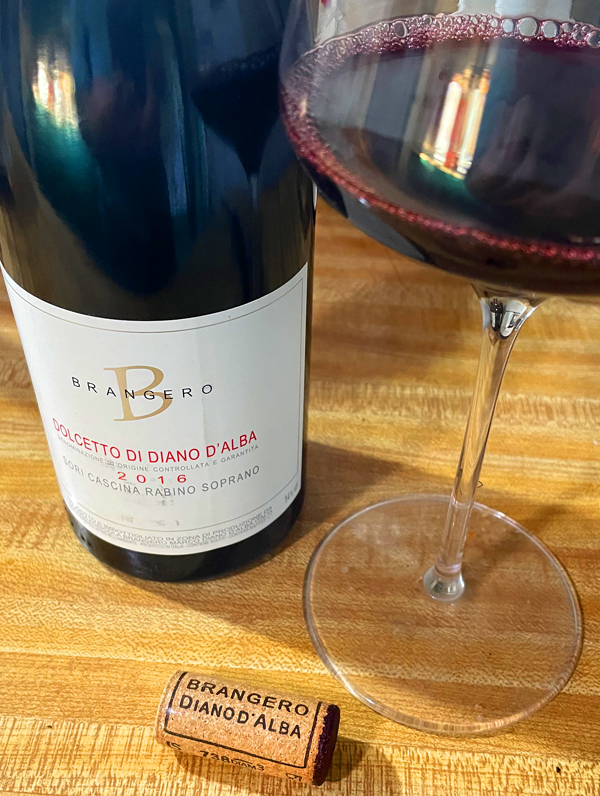
2016 Marco Brangero, Dolcetto di Diano d’Alba DOCG, Sori Cascina Rabino Soprano, Piedmonte, Italy.
The Brangero 2016 vintage Dolcetto di Diano D’Alba is an absolutely stunning and serious bottle and while it starts slowly, austere and rustic, it comes alive with flavor with food, opening up into a fantastic wine, taking Dolcetto to a level of quality and complexity that is quite rare. Dolcetto, sometimes maligned or called a peasant wine, has a few spots where it does amazing things, Diano d’Alba DOCG is one of those places, along with the prestigious Dogliani DOCG, with Marziano Abbona’s San Luigi Dolcetto di Dogliani DOCG being one of the best and a favorite. I have a soft spot for this grape, in fact the very first case of wine I ever bought was a simple, cheap and cheerful Dolcetto d’Alba, but I would have never imagined a Dolcetto could be this impressive! This wine is intensely dark with an inviting purple/garnet color in the glass and it has a medium/full palate of blackberry, plum, cranberry, black cherry and earthy currant fruits, accented by an array of dried herbs, purple flowers, snappy spices, anise and a faint truffle note. There’s some raw tannin here, just enough acidity and a severe saline dry impression on first sip, as mentioned this wine needs air and food to really express itself, as many old school wines do, but once flowing it is exceptional stuff. The wine is barely showing signs of maturity as of yet, but you can see signs of secondary elements that will play larger roles with another few years of age with background balsamic and leafy notes just poking through, drink it up over the next three years.
The family-run Brangero farm, which is a new winery for me, is located in Diano d’Alba, on the highest part of the hill in front of the town, an area that enjoys picturesque views of the Langhe hills, the beautiful town of Alba, and the beautiful vines that surround this property. The Brangero’s make a full range of classic wines here, including Barbera d’Alba, Nebbiolo d’Alba, Langhe Rosso, Langhe Chardonnay and Langhe Arneis, as well as two flagship Barolo bottlings, but somewhat surprisingly their single vineyard Sori Cascina Rabina Soprano Dolcetto just might be their biggest star, as this vintage clearly demonstrates. Thanks to my friend Giuseppi Cossu, again, who has dug into his own cellar to find me a special wine for me to marvel over, he has in recent months introduced me to some fabulous things, with this one being especially noteworthy. The 2016 vintage in Piedmonte continues to provide immense pleasure and structured wines that are ever evolving, it is a year offering a lot in terms of quality and age worthy rewards, with Nebbiolo being a no brainer, though even from the lower level priced reds and varietals like Barbera and Dolcetto are proving themselves to be very desirable as well. This wine is from grapes grown on chalky marl with clay and limestone soils, at higher elevation, with mainly southern exposures allowing for riper and more powerful fruit. The winemaking was clean and temperature controlled with stainless steel fermentation and a cool 15 day maceration on the skins for good extraction with about a year of vat aging to promote transparency, with the results speaking for themselves, I cannot wait to try the latest releases.
($24 Est.) 93 Points, grapelive
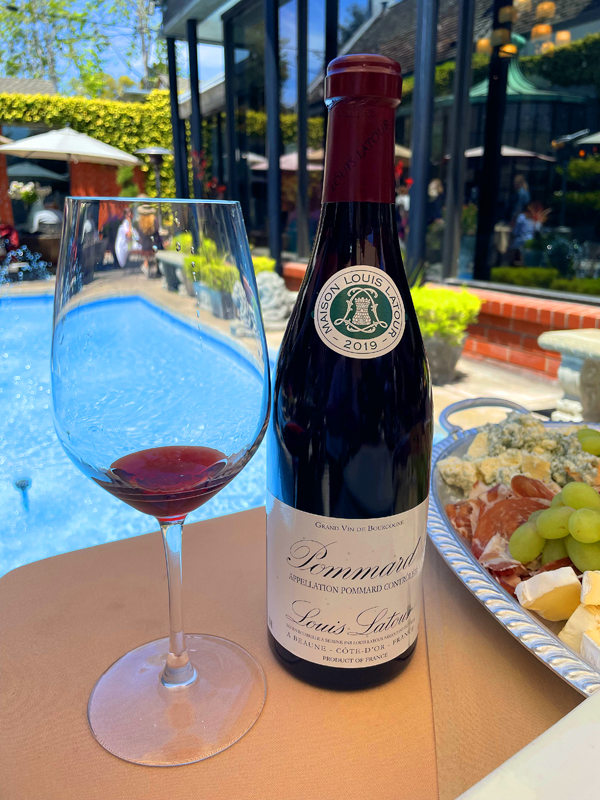
2019 Louis Latour, Pommard AC, Red Burgundy, France.
The eleven generations of the Latour family have been making wine in Burgundy and the 7th Louis Latour is running the Maison Louis Latour today as his ancestors did since 1797 and based on the Cote de Beaune’s famous Corton hill and with the latest selection of Grand Cru holdings and vineyard land in Burgundy. So when Louis Latour did a vintage preview tasting of the 2019s in Carmel by the Sea with over 20 wines to sample, I didn’t hesitate to join in, and it was an incredible experience to explore the nuances of the white and red wines from many of the top sites in a year that was marred by frost and hail, where extremely careful selections were needed to produce to best wines. Of the reds, I was impressed with the purity and quality through the range, but I did have my favorites and one that really should out for its charm and aromatics was somewhat a surprise, being this 2019 Pommard AC Rouge with its lovely floral nature and silken mouth feel, very unlike this wine’s usual chewy, grippy and rustic personality. Even the Louis Latour guys were very quick to say this was not expected and have not seen this wine show such perfume and pretty elegance, especially in its youthful stage, I kept coming back to check in with it and even the second bottle tasted shined even without decanting, while not a wine to cellar long term, it will be rewarding wine for 5 to 10 years and one that can be drunk young without guilt or the feeling of missing out. The profile here is classic southern Beaune with brambly red fruits and a medium bodied palate with ripe and graceful crushed raspberry, black cherry, plum and strawberry core along with a light dusting of spices, a faint earthiness, black tea, vanilla and a polished wood framing, again with a weighted sense of rose petals and floral details with fine tannins and nice acidity. The smooth and seamless flow of flavors is compelling and this Pommard delights the senses, while interestingly the Premier Cru Les Epenots Pommard bottling was much meatier, muted, firm and austere by comparison.
Tasting Louis Latour’s select lineup of 2019 reds, which included a serious set of 5 Premier Crus and 4 Grand Crus, including Latour’s famous Cuvée Heritiers Chambertin and Clos Vougeot from the Cote de Nuits as well as their Corton Clos du Roi and the Domaine Latour Chateau Corton Grancey Corton, maybe the estate’s most prized and historic red wine. These are impeccable offerings from Louis Latour, again from a difficult and low yield year, which makes them even more noteworthy, if not a blockbuster or legendary vintage these are alluring Pinot Noirs, with this regular Pommard AC bottling earning my respect and admiration. Buying Burgundy these days is expensive and filled with disappointments, so it was great to taste such an array of wines to get a handle on the vintage, which looks to be one to enjoy in the shorter term. Interestingly too, I found almost no serious reduction in these youthful wines, with the wines being sampled without decanting, that was also impressive and surprising, with only two of the whites giving off that matchstick note, and none of the 13 reds having any barnyard or graphite notes. Another sleeper in the Latour Bourgogne Rouge lineup was the Premier Cru Beaune Les Perrieres, which will sell for around $125 a bottle upon release, it more density and complexity than this Pommard, and is family priced considering what good Premier Crus are going for these days, but again I just loved this Pommard. This Pommard was traditionally fermented in open vats, 100% de-stemmed and hand picked from 30 year old vines that are on the classic heavier clay and chalky limestone soils. To promote clarity and freshness, the Pommard, aged 10 months in cask, saw just 15% new oak, which subtly adds a hint of toasty sweetness, with the used barrels allowing the fruit and terroir to shine here in this dark ruby Pinot Noir. Louis Latour sources their oak from old forest trees and air dry their staves at for 36 months and own their barrel making facility, making for less overt oak shadings throughout the range, which paid off in this wine in particular, which is very balanced and refined.
($98 Est.) 91 Points, grapelive
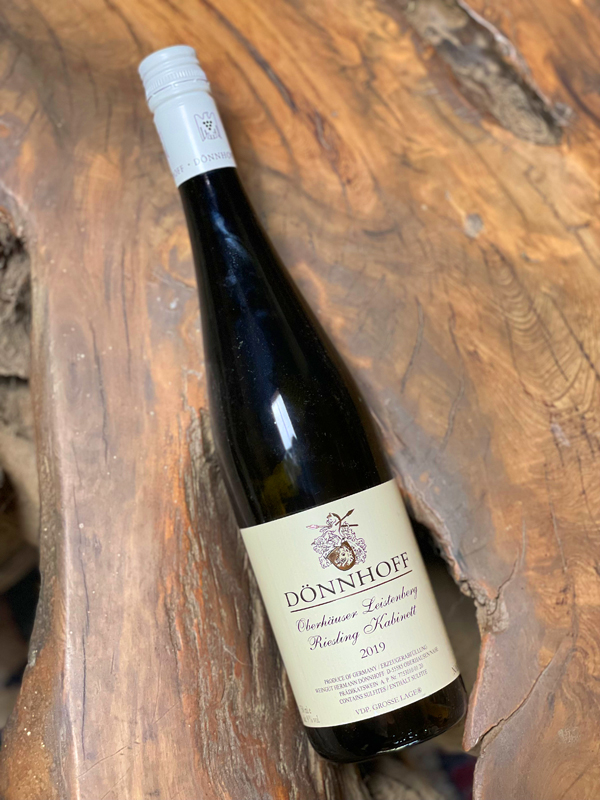
2019 Weingut Dönnhoff, Riesling Kabinett, Oberhäuser Leistenberg, Nahe Germany.
The Dönnhoff Oberhauser Leistenberg Kabinett, with it’s beautiful detailing and finesse, always seems to highlight the quality of vintage and terroir here in Germany’s Nahe region, and again this 2019 is loaded with fresh stone fruit, mineral and persistent acidity, making one of my favorite Kabinett offerings year after year. With delicate yellow fruits leading the way, the slightly off dry Oberhauser Leistenberg Kabinett starts with a subtle bouquet of white flowers, steely/flinty tones, faint tropical notes, a hint of earthy/saly brine and clove spice with tangerine, lime, peach and crisp green apple. Not as fleshy as some years and ultra crystalline this 2019 is all about clarity and elegance, it really hit the spot on a warm evening and with an Asian crab sauce rice dish with plenty of garlic and onions, providing a low alcohol refreshment and lift. These carbon-laced decomposed argillaceous slate soils and steep terraced hillsides provide ideal conditions for Riesling. The winery says the cooler afternoon conditions here at the Oberhäuser Leistenberg vineyard allow for long hang times and lower natural alcohol, making for sophisticated versions of this Riesling grape. Dönnhoff does a tidy collection of lightly sweet of Kabinett wines, each with their own personality, including this one, as well as their Kreuznacher Krötenpfuhl, set on gravelly Loess and Quartzite, and the most exotic Niederhauser Klamm, with vines set on volcanics and black slate, all of which are tasty treats for Riesling lovers.
As I’ve mentioned many times before, the slate influenced Oberhäuser Leistenberg Kabinett should not be overlooked in Dönnhoff’s stellar collection of Rieslings, as it always performs in classic and stylish fashion, it is terroir driven purity in the glass. The slate soils that dominates the Leistenberg vineyard, give this wine its soul and character, it is a vineyard that rarely sees any botrytis, making it perfect for fresh wines like this. This is also the original Dönnhoff vineyard site, so for the family it holds a very special place in their hearts, and I can feel the pride in this wine, their Oberhäuser Leistenberg Kabinett wonderfully transmitting a true sense of place. The Dönnhoff’s, one of the greatest German winemaking families, first came to the Nahe region over 200 years ago, and after establishing a modest farm, they now have some of the world’s most renown vineyards and make some of the world’s best white wines. In 1971 Helmut Dönnhoff began the making the wine here and still influences the wines here even though now Helmut’s son Cornelius runs the show and crafts the wines with talented hands, each of the Rieslings here are precision skillfully crafted masterpieces. The Leistenberg Kabinett, coming from between 25 and 40 year old VDP Grosse Lage (Grand Cru) vines and was fermented and matured in a combination of mainly stainless steel vats and large oak barrels to allow for this wines exceptional transparency. I highly recommend this almost guilt free and quaffable wine, while it can age another 5 to 10 years, it is drinking fabulously well now, no patience required! There is so much to admire here at Dönnhoff, it is almost impossible condense into these short reviews, from sweet to dry, this winery does it all.
($28 Est.) 92 Points, grapelive
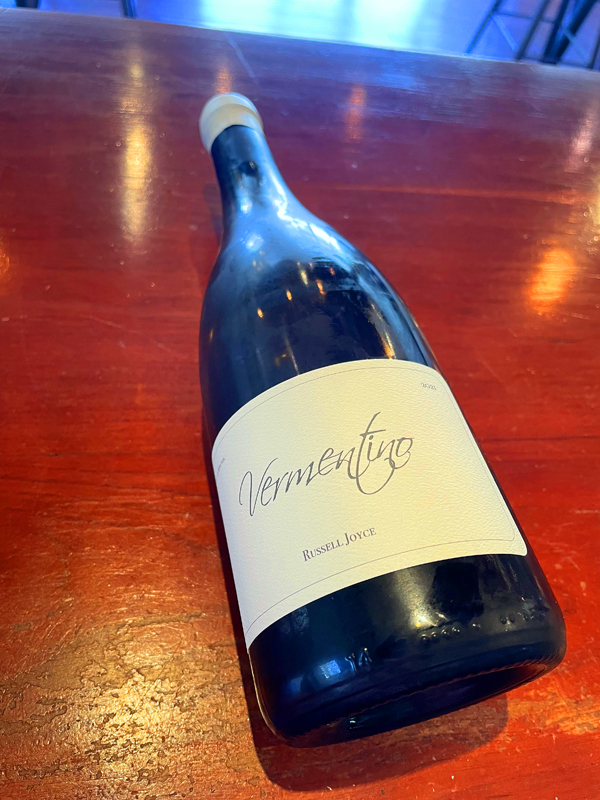
2021 Russell Joyce, Vermentino, Cedar Lane Vineyard, Arroyo Seco AVA, Monterey County.
Bright, fresh and minerally crisp the brand new 100% Vermentino from Russell Joyce at Joyce Wine Co is a vibrantly dry example of this Mediterranean varietal that is really showing promise in California with this one delivering all of this grape’s potential and making for a lovely wine that is superb with Monterey’s bounty of sea foods and the coastal lifestyle. This bottling under Russell’s signature label saw just about 300 cases made, sourced from Arroyo Seco’s highly acclaimed Cedar Lane Vineyard, farmed by Mark Chesebro from vines set on the classic rocky and sandy loamy soils along with an Alluvial wash, where warm days and cool Ocean influenced nights provide the Vermentino with perfect conditions for ripe flavors and zesty acidity. The core here is salty and tangy with white peach, lemon/lime and tart green apple on the lighter framed bone dry and steely palate along with hints of wet chalk, oyster shell, citrus blossom, almond and a hint of herbal bitterness. Joyce’s collection of whites, including his Albarino, Riesling, Sauvignon Blanc and now including this Vermentino, along with his first ever white blend (Sauvignon Blanc 60%, 20% Albarino and 20% Vermentino) are all brilliant and racy wines.
Vermentino, also known as Rolle, is commonly found in Sardinia, the Tuscan coast, Liguria and in Piedmonte in Italy, as well as it France’s Provence and Rhone region, along with excellent examples coming from Corsica, especially, those imported by the famed Kermit Lynch, like Yves Leccia, Clos Canarelli and Abbatucci, which are some of my versions. And now in California we are seeing many awesome Vermentino offerings from throughout the state from Paso Robles to Dry Creek Valley and Carneros to here in Monterey with wineries such as Ryme Cellars, Filomena Wine Co, Unti, Tablas Creek, Bonny Doon, Sheldon, Chesebro’s own version, Paix Sur Terre and others are doing fantastic and very distinctive wines from this grape. Some credit needs to be paid to the Haas and Perrin families that through Beaucastel and Tablas Creek brought excellent clones to California. Joyce’s effort is ultra transparent and clean, very much in line with his house style for the whites, which is direct pressed, stainless fermented and matured for a short spell in neutral French oak, so promote purity and a laser like focus. This Joyce Vermentino feels electric in the mouth with riveting acidity, it is ultra refreshing, highlighting the place and vintage perfectly, I highly recommend this alternative white.
($30 ) 92 Points, grapelive
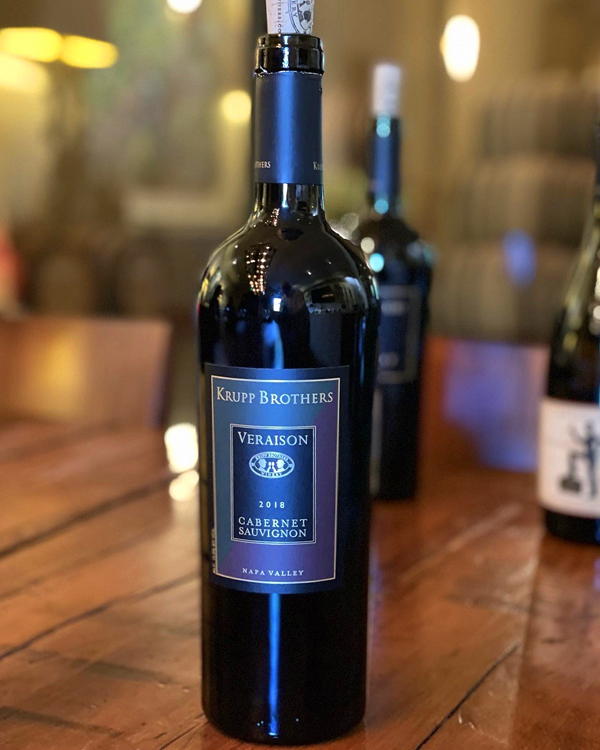
2018 Krupp Brothers Winery, Cabernet Sauvignon “Veraison” Napa Valley.
The Krupp Brothers Veraison Cabernet was the first wine I ever tried from this small family Napa Valley winery, that was almost 20 years ago now, so it was great to taste the latest version, which is a powerhouse of a wine, sourced primarily from Napa’s famed Pritchard Hill district and a luxurious full bodied effort with a good tannic back bone. The mountain fruit shows here and the dark purple black color invites you into a deep and chocolatey rich palate that shows blackberry, dark currant, blueberry and plum fruits along with toasty cedary oak shadings, acacia flowers, licorice, sweet pipe tobacco, sandalwood, vanilla, mocha and lingering creme de cassis. While incredibly opulent and thrillingly dense, the 2018 still somehow manages to be lifted by the vintage’s natural acidity and this big wine manages its heft very nicely, quite remarkable for wine of this proportion. This hedonistic vintage, which has less Stagecoach fruit in the mix, was aged close to two years, around 19 months, in a selection of Taransaud, Gamba, Francois Freres and Seguin Moreau, with mostly new, which helps add the smooth textures here. The Version Cab mostly came from the Sleeping Lady Vineyard which is set on classic Napa soils with alluvial gravelly, sandy clay loam, with a touch coming from the famed Stagecoach Vineyard that has intense rocky volcanic reddish-brown earth underneath, adding spice to wine.
As mentioned in my recent reviews of these wines, my visit to the winery was a spectacular experience and the Krupp Brothers lineup of 2018s and 2019s are outstanding wines, I’m grateful for the tour and tasting in this idyllic setting. So again, a big thank you to Ms Nicole Lincoln, Director of Hospitality & Regional Sales Manager for the Krupp Brothers, for being such a gracious host and taking me in on short notice. This 2018 Version Cabernet Sauvignon, which was pretty much all Cabernet Sauvignon, but with a dash of Cabernet Franc looks set to provide rewarding drinking for next 5 to 10 years, but in the shorter term I’d say go for it, as long as you enjoy it with a robust meal. Released last April, this wine is maturing well and there was just over 800 cases made, so it is a bit easier to find, and I’m excited to try the 2019, which should be available this fall. It should also be noted these wines are now being made by the home grown and talented winemaker Desiree O’Donovan, who has been with the Krupps for a while now, and after working behind the scenes at a few notable wineries is taking her opportunity to show what she can do at the Krupp Brothers winery, with impressive results. There’s a real excitement here and these wines are expressive, authentic and pure, I highly recommend visiting this estate and I really suggest not missing these latest offerings, with this Cab, the Syrah, the Cab Franc based Synchrony (think Dalla Valle Maya!) and the Doctor (Tempranillo and Cab based red) being my favs!
($120 Est.) 94 Points, grapelive
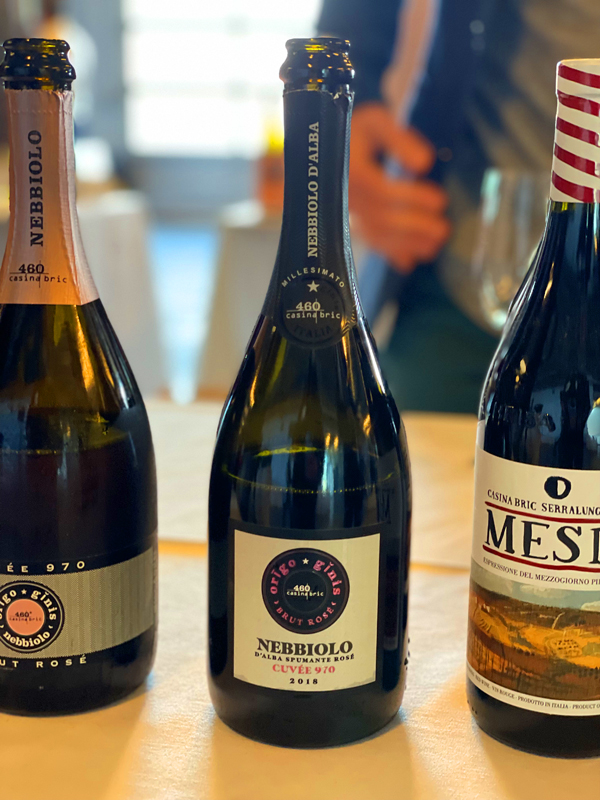
2018 460 Casina Bric, Nebbiolo d’Alba Spumante Rosé, Cuvée 970, Piedmonte, Italy.
Perfect for this time of year, the stylish vintage Sparkling Nebbiolo from 460 Cacina Bric is elegant and impeccably crafted with a mix of of citrus, stony notes and light berry red fruits on the palate the Cuvée 970 is 100% Nebbiolo and it shows with the fine details with hints of rosewater, anise, sultry earthiness and a hint of iron/mineral. The mouse is vibrant, but nicely refined, almost caressing in the mouth while still having an underlying energy, it is both luxurious and refreshing, helping cleanse the palate and causing a nice mouth watering reflex, making it very compliant with a range of cuisine options. 460 Casina Bric sur lie aged this Nebbiolo d’Alba Spumante for between 8 to 10 months in pressurized stainless steel and then in bottle for another year in what is known as the Martinotti method in these parts. This bubbly and salmon/pink hued wine is a great aperitif and or a unique celebratory bottle that offers loads of distinction and has the presence in the glass to draw your interest and let you know this is something beyond the ordinary. A big thank you to Jason Chieti of Siena Imports, who has began importing these 460 Casina Bric wines, known for Barolo, for introducing to them at the Slow Wine tasting in San Francisco and I can’t wait to try the rest of their lineup.
Casina Bric wines are mostly all from Barolo vineyards in the Langhe, and are the dream of Gianluca Viberti, the winemaker and grower at this small and modern estate, that focuses on a collection of Nebbiolo wines, including their signature Bricco Delle Viole cru Barolo, which was all new to me before discovering their sparkling wines. At 460 meters above sea level, Casina Bric (which in the Piemontese dialect means “hilltop farm”) is one of or is the highest altitude Barolo estate in the Langhe region, hence the name, and has a prestigious selection of top notch vineyard parcels mainly in the Serralunga zone. While Gianluca Viberti’s family has been tending their Nebbiolo vines in Vergne, a tiny village in the commune of Barolo, since 1923, Viberti only started this label in 2010, and though not an overnight success, he has created a buzz with his intriguing collection of wines. Viberti does a couple of versions of his sparkling wines with some being Charmat (tank raised) method Spumante as well as the finer tank or bottle and lees aged and conditioned versions, as this one is done. This wine saw a soft pressing of whole grapes without de-stemming, after which it went through an off-the-skins fermentation that lasted close to 20 days in controlled temperature vats. The 460 Casina Bric vineyards are set on Tortonian clay soils with the classic sand and marls, which gives a richer character, while the elevation gives a cooler sense of fruit and balance in the Barolo here, which I hope to test soon.
($30 Est.) 91 Points, grapelive
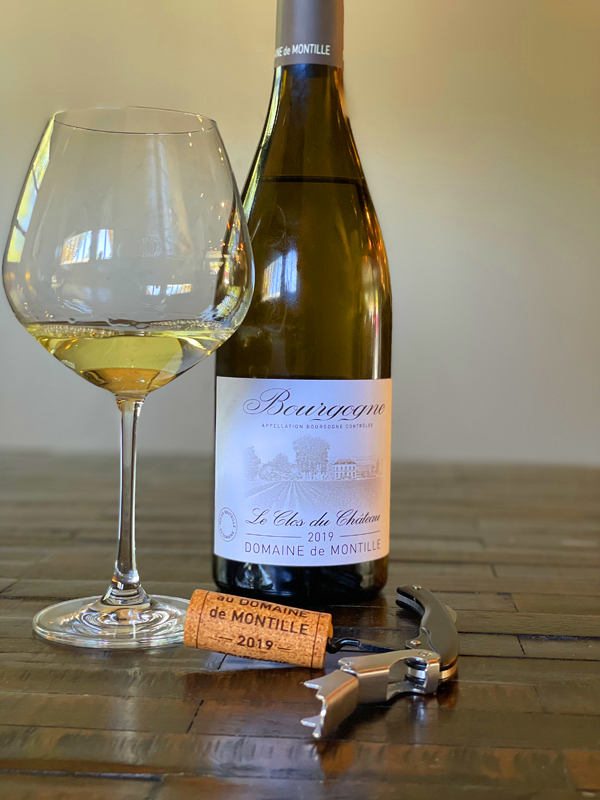
2019 Domaine de Montille, Bourgogne Blanc, Clos du Chateau, Monopole, White Burgundy, France.
This 2019 Clos du Chateau Bourgogne Blanc is fantastic effort a perfect balance of crisp mineral driven precision and richness on the palate, this wine really punches way above its price point, highlighting the quality of these vines in Puligny and the talents of Alix de Montille, who crafts the white wines here. This Chardonnay has brilliant detail and depth with layers of lemon, apple, pear and white peach fruits, along with a steely frame, wet stones, hazelnut, quince and clove spice adding background complexity here. As the Clos du Chateau opens up a pretty white flower bouquet emerges as well as a textural lessy note and allows a subtle creaminess, which gives this beautiful white Burgundy and extra degree of presence and luxury in the mouth. This lightly golden Chardonnay was 100% indigenous yeast fermented in large format barrels and goes through full malo-lactic conversion. Alix has done a masterful job here keeping vibrancy and tension, while also delivering the impressive density, there’s a lot to admire here, especially for the price. The Clos du Chateau is a walled vineyard set on classic chalky limestone and clay soils right in the heart of the village, and provides exceptional grapes, making for one of the best values in the Cote de Beaune, as this vintage certainly proves. This 2019 will bring a ton of joy to Burgundy fans and will age lovely in the bottle for up to a decade I believe, but at this price most will happily drink it up sooner versus later!
The Domaine de Montille, mostly known for great Volnay, is one of the historic domaines in Burgundy and the wines are considered some the world’s most serious and age worthy wines. The De Montille family heritage has long been rooted in wine and law, they go back to the 17th century and have a winemaking heritage in the Cote d’Or since about 1750, but became famous under the leadership of the legendary Hubert de Montille, who took over in 1947 and led the estate to incredible heights. This era saw the winery enjoy huge success and expand the number of top Premier Cru and Lieu-Dit holdings in their hands. It’s well noted, Hubert’s son, Étienne, also trained as a lawyer like his father and grandfather, who joined the domaine in 1983, had big plans and after a well planned transition gained control of the cellars in 1990. Étienne was instrumental is the conversion to organic farming and by 2005 De Montille started going biodynamic as well, a direction that has added an extra degree of energy and quality to their already world class wines. Étienne also was busy consulting for Chateau de Puligny-Montrachet, which he after many years of trying brought into the De Montille fold, and which is where this Clos du Chateau Bourgogne Blanc comes from. Étienne’s sister Alix, who is married to Jean-Marc Roulot, the famed Meursault producer, joined the family cellars in 2006 and as mentioned above took over the white wines here and has really elevated them to almost the equal to the reds! I have long been a fan of this bottling, which is now labeled under the Domaine de Montille, rather than under the old Chateau de Puligny-Montrachet label, and I highly recommend searching this exciting release.
($40 Est.) 93 Points, grapelive
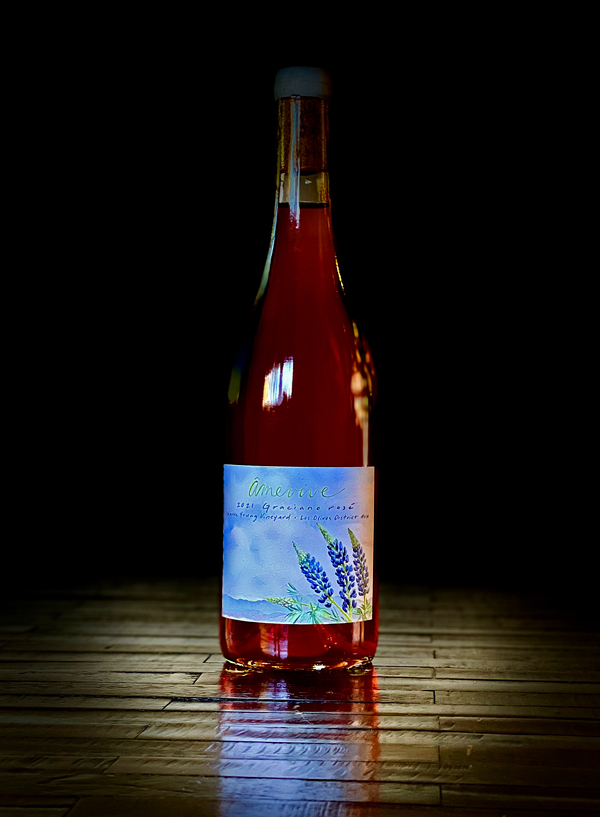
2021Âmevive, Rosé of Graciano, Ibarra-Young Vineyard, Los Olivos District, Santa Ynez Valley.
Winemaker Alice Anderson says, that the 2021 growing season was a dream, with weather that was consistent with cool evenings and warm days, without any significant heat spikes there in Santa Barbara County so her grapes, which included these organic Graciano grapes, were able to ripen steadily and evenly throughout the year. And they in her hands produced a brilliant dry Rosé wine made from this little known Rioja varietal with a vivid pink/ruby color, subtle and stony delicate red fruits and a fresh burst of acidity that keeps the palate crisp and focused. This wine comes from a small block of Graciano vines at the Ibarra-Young Vineyard planted in the late 90’s that has been farmed organically, as Alice adds, since its inception, and she hand tends it. This wine, which is the very first I’ve tried from Âmevive, is refreshing, mineral driven and lovely with hints of ruby citrus, strawberry and rosewater. I am looking forward to sampling more wines from this new winery and winemaker, who is focused on holistic and organic grape-growing with a nod towards full regenerative farming practices and certification. After a few sips, more seems to come through and touches of sour cherry, red apple skins and a fine wet chalky notes, all very becoming for a Rosé and encourages more sipping of this clean and naturally stylish wine.
The Âmevive name translates to soulful and or the living soul and in Anderson’s case it means to live soulfully with nature, with her wines being an authentic and transparent extension of that. Alice is hands on in the vineyard and she is in tune with each and every vine and parcel, with this connection being her mission, and this wine is a direct of this relationship. Anderson says that at Ibarra-Young, her Graciano tends to have the most acidity, thus making it destined to become her Rosé. This block was picked on a cold morning and brought into the cellar around 20.5 Brix (low sugars) and were foot stomped to macerate on their skins, then seeing 24 hours of skin maceration, that gave that gorgeous color. The Graciano was gently pressed and then settled for another night before racking to neutral French oak and to stainless steel barrels for fermentation with native yeasts. Anderson explains that her Rosé of Graciano was aged on its full lees throughout elevage and then was bottled unfined and unfiltered, to preserve nuance and gain a touch of texture. The Graciano block is covered in native purple lupine in the springtime, and transitions to the later blooming native Spanish lotus in the early summer, hence the label design and artwork Alice did for this entertaining and compelling dry pink wine that looks set to be great companion for the Summer months ahead. Âmevive, who are just releasing a full collection of offerings, is a label to follow and I can’t wait to dig into the other bottlings.
($32 Est.) 90 Points, grapelive
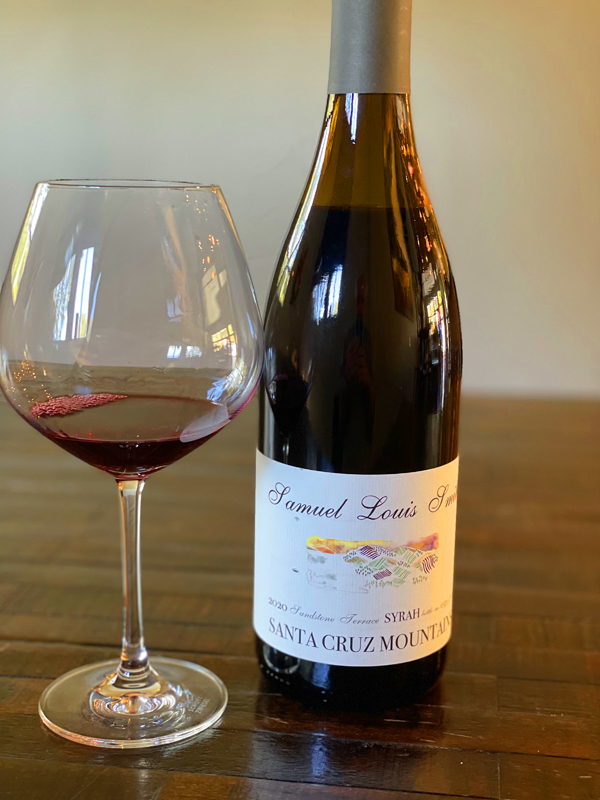
2020 Samuel Louis Smith, Syrah, Sandstone Terrace, Santa Cruz Mountains.
The grippy and stony Samuel Louis Smith 2020 Sandstone Terrace Syrah has terrific length and substance with loads of Olallieberry, blueberry and damson plum fruit to go with a meaty and savory cool climate personality, opening up with Northern Rhone like violets, graphite, mixed spices and zesty natural acidity thanks to the near by Pacific Ocean. Only one barrel of this impressive deeply purple/ruby colored and intense Syrah was made and it should prove quite rare, but I couldn’t resist popping the cork, as I am a huge admirer of winemaker Sam Smith’s personal wines, as well as his work at Monterey’s classic Morgan Winery, where he is the head winemaker. Influenced by his visits to France and the Northern Rhone, Sam has become especially gifted with Chardonnay, Pinot Noir and Syrah, as it shows here in his latest efforts, including this one from the southern part, the more marine affected, of the Santa Cruz Mountains. There’s a lot to unpack here and there’s certainly more to come with age, but this is already delicious stuff with contrast of ripe fruit, firm tannins and earthy tones, plus a health crunchy quality from the 85% whole cluster fermentation and stem inclusion here. Smith fermented with native yeasts and cold macerated this Syrah, allowing for good extraction and employed hand punch downs before pressing to the single neutral French barrique for 10 months. These Samuel Louis Smith Syrahs are sensational wines and attractive values, they really fill out this excellent small lot collection and while the Pinots here get a lot of attention, I must admit Smith’s Spear Started Rita Hills Chardonnay is one of my absolute favorites, it should not be missed.
Sam Smith’s Sandstone Terrace Syrah is usually a blend of Santa Cruz Mountains sites, but because of the fires, the 2020 version is 100% from the Gali Vineyard. Gali is located in the Corralitos sub-district of the southern Santa Cruz Mountains, mostly known for excellent Pinot grapes. It sits at lower elevation, about 400 feet above sea level and approximately six miles from the ocean, with Smith saying that Gali is one of the coolest sites in his lineup. The soils here, as Sam notes, are clay loam weathered from sandstone and shale, which were formed on ancient submarine terraces, hence the name. Though Gali is not farmed completely organic, no herbicides or harsh chemicals are used here and watering is quite minimal, making for small yields. As this Cornas like edition of Sandstone Terrace, which is less creamy and fruity than the 2019 was, unwinds slowly in the glass you get more interesting layers showing through with creme de cassis and peppercorns leading the way along with dried lavender, a hint of espresso grounds and tapenade. These elements to go along nicely with the echos of the mentioned initial flavors and florals, making for a riveting and raw experience that is best enjoyed with meat and or wild mushroom dishes. Smith’s efforts with Morgan are more polished and maybe more crowd pleasing, but they are no less serious, though this tiny hand crafted personal efforts are stunning wines with their own seductive and sultry charms. Like his wines, Smith doesn’t lack for confidence and his talents have made him one of the top guns of his generation, these 2018, 2019 and 2020 vintages have been awesome and I highly recommend getting on his mailing list as soon as possible. Smith is part of an exciting group of young winemakers that are taking California to the next level and there is even more to come, watch this label.
($36 Est.) 94 Points, grapelive
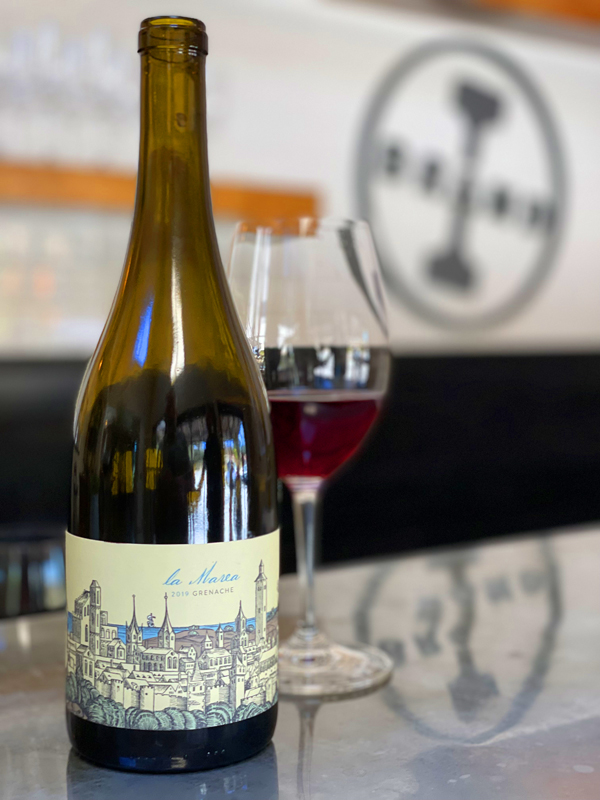
2019 La Marea, Grenache, Central Coast.
I’ve focused quite a bit on these new releases from Ian Brand, but each one deserves this attention, especially this exceptional Grenache value under his La Marea label, coming from his collection of unique and old vine vineyard sites in San Benito and Monterey County, it is what all Grenache lovers want in a wine and then some. The 2019 vintage, which Ian claims was warmer than 2018, but with a nice cut of acidity, makes this version round and satiny on the full bodied palate with loads of juicy crushed red berries, plum, pomegranate and strawberry fruit(s) that is accented by subtle savory and earthy notes, fresh cut flowers, wild herbs, spice and chalky stoniness. The year’s lush and ripe fruited mouth feel is compelling and reminds me of Gigondas, and shows just how good Grenache is getting in California, with Brand being one of the grape’s leading cheerleaders and talents. In recent years we’ve seen some star examples of Grenache in California and not just the nose bleed priceed versions from Sine Qua Non or Saxum, but from producers like Ian Brand here, along with Turley’s Tegan Passalacqua, (Turley Cellars & Sandlands), Angela Osborne, (Tribute to Grace & Folded Hills), Sheldon Wines, Birichino, Randall Grahm, (Language of Yes), Stolpman, Tablas Creek and Whitcraft to name just a few. There’s a lot to admire here and this Grenache will be a great pairing with BBQ and simple country cuisine, it has plenty of flexibility for a wide array of dishes.
The well structured 2019 Grenache, which sees grapes from Chalone’s chalky soils and other sites, including the famous Besson Vineyard, well over 90 years old, that is set on rocky soils influenced by decomposed granite, limestone and sand, all of which give this wine its concentration and tannic back-bone, was fermented mainly in tank using mostly de-stemmed grapes. The wine was matured for a few months in neutral French oak to allow for transparent nuance and varietal purity, which clearly has worked successfully here in this vintage. This La Marea lineup is Ian Brand’s middle tier collection of Spanish inspired wines, mostly known for the fabulous Albariño, as well as this Garnacha style wine. There are some similarities in the La Marea Grenache to the beautifully crafted wines from Spain’s Sierra de Gredos region in the mountains above Madrid, like those of Comando G, Dani Landi and 4 Monos, which are some of my favorite Grenache based wines these days. For more single vineyard distinction, you’ll want to check out Ian Brand’s signature I. Brand & Family wines, which has the 100% Old Vine Besson Grenache as a headliner, along with the Brosseau Vineyard edition from the Chalone AVA, both of which are incredible and individual efforts. I was very impressed with this ruby hued 2019 La Marea Central Coast Grenache, that I think is one of the best wines for the money you can find and after recently tasting the 2014 La Marea Grenache, I believe there is a long and interesting drinking window, I highly recommend this tasty stuff.
($30 Est.) 92 Points, grapelive
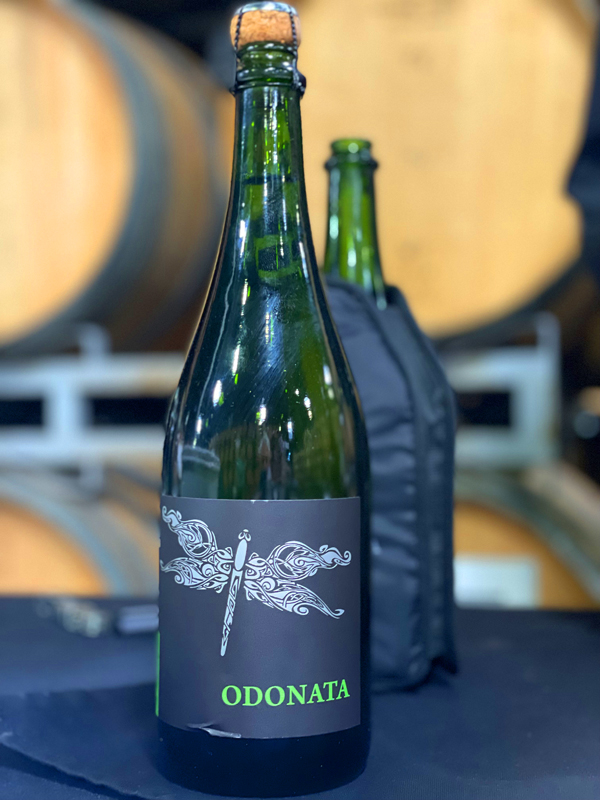
2018 Odonata Wines, Sparkling Dry Riesling, Tondre Grapefield, Santa Lucia Highlands.
The latest Odonata wines, as tasted at the Santa Lucia Highlands Sun, Wind & Wine gala, were all excellent and stylish efforts, something we’ve been accustomed too in recent years as this winery continues to craft some of the most tasty and unique wines in the region, with this refreshing Sparkling Riesling being a prime example. While most people were fighting over the many fine Pinot Noir offerings, I got a chance to preview a couple of special sparkling wines at Odonata and chat a little with owner/winemaker Denis Hoey, who as well as being a skilled winemaker, is one of the most real and nicest people you could meet, a quality that even makes the wines taste even better. These two new bubbly offerings include an intriguing red sparkler made from old vine Grenache, which was also delicious, and this vibrant almost German Sekt like, mineral driven Tondre Sparkling Riesling. Brut dry and with a refined Champagne style mouse, this latest Odonata Riesling Fizz shows racy citrus, yeasty notes and a nice stony nature with hints of lime blossom, lemon, bread dough, wild peach and wonderful small beading bubbles, making for a clean, leesy and elegant version that sips nicely on its own, but has enough depth and structure to enhance a seafood meal. Odonata, founded back in 2005, came of age in 2014 When Hoey and his wife, Claire, bought the old Marilyn Remark Winery in the Santa Lucia Highlands, creating a home for their family and a state of the art facility from where to grow one of the region’s most exciting labels.
Odonata has great lineup these days and the quality in their 2018 and 2019 wines has reached a new level, especially in their reds, which include a seriously good Syrah and Brunello style Sangiovese, as well as top notch Santa Cruz Mountains Cabernet Sauvignon(s) that offer way more complexity and pleasure than the price would suggest, it is a great time to discover these wines. There are also these Methode Champenoise offerings, all done with hand crafted precision and finished clean with cage and cork, letting you know they are more luxurious and transparent than the more raw Pet-Nat versions that are much easier and common these days. The Tondre Grapefield vineyard sits on sandy loams and is now highly regarded for Pinot Noir and Syrah, but the Riesling here has really come into its own, much like Morgan’s Double L Estate, giving grapes filled with dynamic acidity, varietal purity and ripe concentration, making for compelling dry still wines as well as this crisp Sparkling version. This wine needed no sugar dosage and it was aged on the lees and riddled in bottle over a long period to gain depth and richness, all the while keeping the Riesling’s classic electric zesty quality, which really shows in this latest offering. With the days being longer and filled with warm sunshine, this Odonata Sparkling Riesling is going to be even more rewarding and will be perfect for these gorgeous sunsets on the coast and it will go fantastically well with raw oysters and or fish tacos, I highly recommend giving this bubbly a try as soon as possible. Odonata has a great patio and tasting room in the SLH, right on the famous River Road, it is a great spot to visit and taste authentic and terroir driven wines.
($38 Est.) 91 Points, grapelive
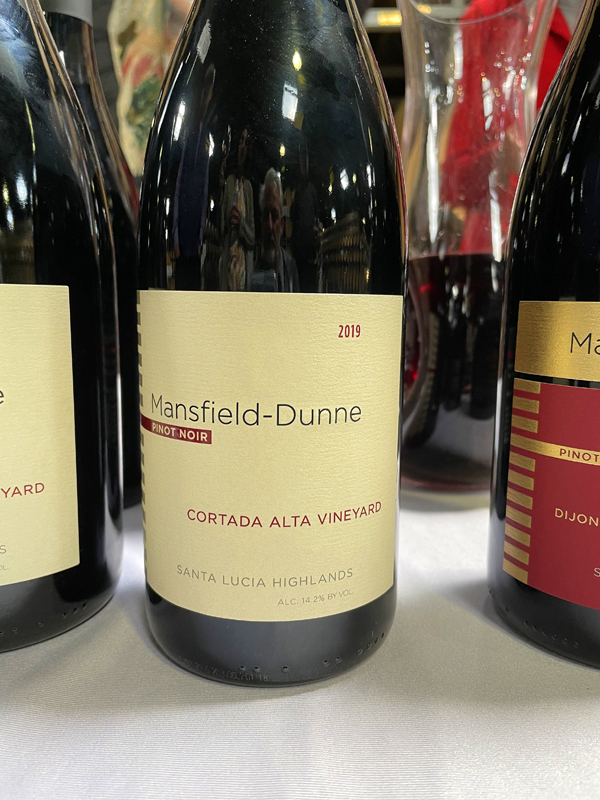
2019 Mansfield-Dunne, Pinot Noir, Cortada Alta Vineyard, Santa Lucia Highlands.
I was very impressed with the 2019 Mansfield-Dunne Cortada Alta Pinot, entranced by the aromatics and depth of flavors in a wine with subtlety and lightness, it lacks for nothing from start to lingering finish and should evolve and age nicely as well. John Peterson’s Alta Cortada Vineyard is a unique organic and high elevation site, which was risky gamble to plant and tough to farm, has paid off with this 2019 vintage, with this wine showing this vineyard’s potential in glorious detail. The nose lifts rom the glass with a dark earthy array of florals, fresh berries and mineral notes that lead to the rounded medium bodied palate of black cherry, raspberry, red peach and plum fruits that are accented by baking spices, orange tea, rose petals, a saline element and a light toasty oak frame. The winemaking here is all about taming this wild site and allowing its nature to shine through, so Mansfield-Dunne carefully sorted the Pinot grapes and gently cold macerated them in small bins and hand punch-downs before maturing the wine in French oak for 14 months, using about 60% new wood to tame the mountain fruit. The dark ruby/garnet Mansfield-Dunne Cortada Alta’s impression of dark fruit keeps going long after each sip here and the texture is lush, but there is an underlying lively force here that lifts this wine and reminds you of the vintage’s complexity and balance. This is a quality effort that is flying under the radar, it should drink fabulously well for 3 to 5 years with ease and I highly recommend searching it out.
The Mansfield-Dunne winery was started back in 2011 and has quietly gained in popularity and is producing a solid selection of wines from their two Santa Lucia Highlands estate vineyards, with this Cortada Alta Vineyard being one of the most distinct in the region. Owner John Peterson deserves a lot of credit for his extraordinary efforts in establishing his passion project vineyard. He says he spent eight years searching California for the place for his ambitious plans, which ended in 2009 with him finding 300 acres of rugged scrub land that fit his dream, and that property would become the Cortada Alta Vineyard. Peterson, when looking for a someone to deliver the promise of the grapes from the vines to bottle, chose the talented hands of Ed Kurtzman, who has been crafting wines from the Santa Lucia Highlands since around 1994 and who has been a winemaker at some of the regions best sites, including Roar. Kurtzman’s efforts here has been exciting to follow and his 2018s and 2019s are exceptional wines, especially this one, which I admire for the elegant layering and beautiful long finish. Cortada Alta is the highest elevation vineyard in the Santa Lucia Highlands with some pretty steep slopes with some at a 44% grade at close to or above 1,500 feet up, it’s set on sandy loams with clay and decomposed granite. This site gets a cold blast of sea air and loads of sun, making for intense conditions, so to best exploit this special plot Peterson planted array of clones here, including Calera, Pommard, Swan, 2A, 23, 667, 828, and 943, all of which combine to make these wines complex and compelling. This is a label and a vineyard to watch in the coming years, as these vines come into their prime, I can only imagine things getting better and better!
($58 Est.) 94 Points, grapelive
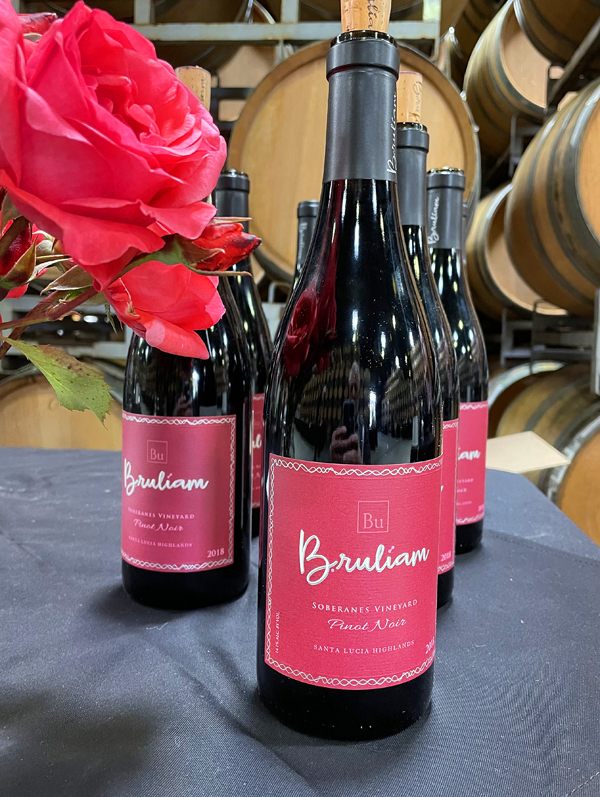
2018 Bruliam Wines, Pinot Noir, Soberanes Vineyard, Santa Lucia Highlands.
It was great to catch up with Dr. Kerith Overstreet, who is the winemaker of Bruliam Wines, at the Santa Lucia Highlands Sun, Wind & Wine Gala this last weekend as well as taste her latest wine, the beautiful 2018 Soberanes Vineyard Pinot Noir, which highlighted the fabulous vintage, great Pisoni family farming and the gorgeous aromatics that this site delivers. I first tried Kerith’s wines in 2012 and loved her 2010 version of this wine, so it was thrilling to see how far she’s come as a winemaker and see how much potential as been realized at Soberanes, both have come along way since then, but the quality was very much in presence even back then. The 2018 Bruliam starts with morning roses and brambly red berries lifting from the glass and has a deep ruby color, both very inviting to the senses and the medium bodied palate is supple and silky, but has structure as well, it takes its time to fully unwind, though the rewards are a real treat for Pinot lovers. There is a luxurious elegance and energy that is seductive in this Soberanes Pinot that keeps your full attention and each detail is in sharp focus with satiny black cherry, raspberry and red currant fruit at the core along with background accents of floral tones, mineral, vanilla and Asian tea spices. This wine looks set for a long drinking window and has lots of cuisine flexibility, it can easily play with lighter and or more robust dishes with grace.
Dr. Overstreet says she is honored to be able to get the grapes from this vineyard, and she does her self proud in this vintage, paying tribute to the Pisoni and Franscioni families that have been farming in the Salinas Valley for three generations. According to Kerith, nobody does SLH better than the Pisoni-Franscioni collaboration, with Mark Pisoni’s team setting the standards for quality in the region, and who could argue, the grapes from their collection of Grand Cru vineyards, Rosella’s, Sierra Mar, Pisoni Estate, Garys’ and Soberanes are legendary. Overstreet, now with over a decade of making wine from this vineyard, adds that SLH Pinot Noirs are unapologetically Californian. And sensational. And crazy delicious. All of which is true with this vintage of Bruliam, which saw a modest amount of new oak and I believe as she has done in the past she used a Rhone submerged cap technique to extract more pigment and not get any harsh tannins and the results allow this youthful Pinot to shine in the glass. Another thing of note, Overstreet believes in giving back and at Bruliam Wines, they have always subscribed to a strong charitable mandate, with solid history of donations, which now total well over 80 unique charities and communities being supported by sales here. This 2018 Soberanes is drinking great and is well worth chasing down on its own, or join the mailing list at Bruliam to get, either way I highly recommend it.
($55 Est.) 93 Points, grapelive
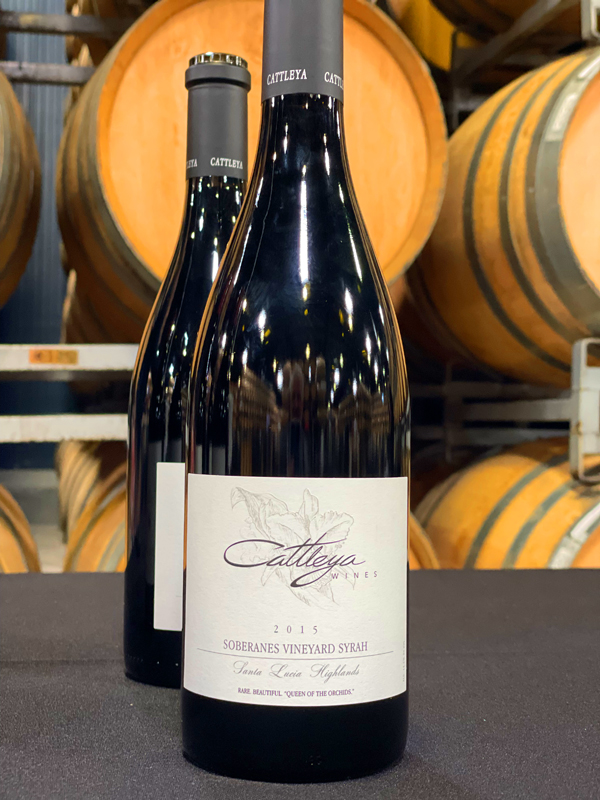
2015 Cattleya, Syrah, Soberanes Vineyard, Santa Lucia Highlands.
Maybe the best wine of the 2022 Santa Lucia Highlands Wine, Sun &Wine tasting, this outrageously good Cattleya Soberanes Syrah from the 2015 vintage is absolutely stunning in the glass with the power and presence of a legendary Hermitage, this is as great as it gets for Syrah! Winemaker Bibiana Gonzalez Rave-Pisoni has crafted a masterpiece here and it is just starting to reveal its true potential with a gorgeous violet perfume, meaty density, beautiful blue fruits, peppery spices, licorice and intense earthy black olive details coming through on the pure and full bodied palate. This wine has a serious personality and impact on the senses with layers of boysenberry, plum, blueberry and kirsch fruits along with hints of cinnamon, briar, camphor, creme de cassis and a faint bacon note in the background. Still remarkably vibrant, fresh and taut this Syrah takes its time to get going, but when it does it makes an impression and looks to drink fabulously well for another decade! The Soberanes Vineyard, located closer to Garys’ Vineyard, but at a slightly higher point in the Santa Lucia Highlands, is the Pisoni’s youngest vineyard, but it maybe the one with the greatest potential, with its upper hillsides and its granite loams soil making it a perfect spot for high quality Syrah, though of course there’s some very nice Chardonnay and Pinot grown here as well. While this 2015 was a bonus pouring, Cattleya also showed off their 2019 version that has the stuffing and depth to be an equal to this one in a few years.
As mentioned here many times, Bibiana Gonzalez Rave-Pisoni, the Colombian winemaker and vineyard consultant, is making some stunning wines, especially this wine, which is a masterpiece. Gonzalez Rave-Pisoni’s stints in at some of the world’s great estates, including Stephane Ogier in Cote-Rotie, has helped her develop her love of place and to get the best out of each terroir, it also showed in her work when at Pahlmeyer with her Wayfarer Pinot Noirs from the Seaview/Sonoma Coast. Her talents are really on display here in the wines she does under her own label Cattleya, in particular in her gorgeous Alban clone Syrah from her husband’s (Jeff Pisoni) family farmed vines at Soberanes. I firmly believe, and have mentioned time after time, since 2004 the Pisoni’s and Franscioni’s have farmed some of the best Syrah in the state, anyones who’s tasted Pisoni’s Lucia, Tegan Passalaqcua’s Sandlands Soberanes Syrah, Roar, the original Novy versions by Adam Lee (Siduri) and this Cattleya will confirm this! The Cattleya Syrah, hand crafted with a long maceration time, saw a precision controlled primary fermentation with 20% whole clusters being used and the grapes got an extended cold soak to allow all the nuances to shine though in the finished wine. The Cattleya Syrah was aged about 16 months in luxurious and toasty French oak, which even with the high percentage of new barrels, upward of 50%, has integrated exceptional well and with age has become more subtle with just a hint of sweet toast and vanilla. I highly recommend these Cattleya wines, in particular this Soberanes Syrah and if you can find this 2015 you’ll be well rewarded, though the patient Syrah lovers will be advised to get the new 2019 release while you can!
($70 Est.) 97 Points, grapelive
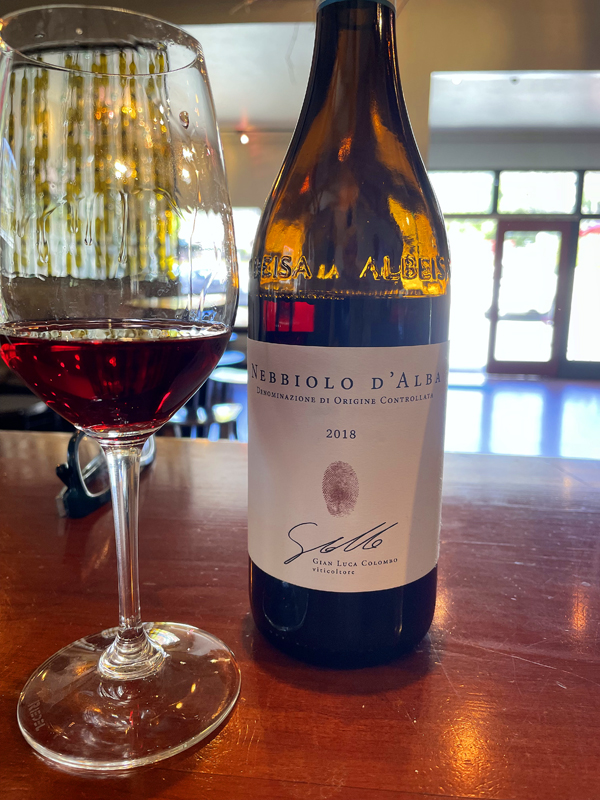
2018 Gian Luca Colombo, Nebbiolo d’Alba DOC, Piedmonte, Italy.
Not to be confused with Jean-Luc Colombo of Cornas (Rhone) fame, Gian Luca Colombo is an excellent youthful viticoltore in Piedmonte who specializes on Nebbiolo and Pinot Nero, with some knock out wines under his belt, like this beautiful baby Barolo from the exceptional 2018 vintage. Colombo, new name for me, is a consultant for several producers in the Langhe and winner of the Gambelli Award for Best Young Italian Oenologist in 2014. Impressive, more so after I tasted his 2018 Nebbiolo d’Alba, which could easily be mistaken for a wine costing twice the price, as it delivers a very structured and serious medium to full bodied palate of classic Nebbiolo character. There’s a lot to admire here with layers of black cherry, damson plum, strawberry and mulberry fruits flowing precisely in the mouth with a dusting of spices, herbs and floral details adding nice accents along the way, touches of earth, licorice, lavender, cedar and mineral become more visible with air. This wine, 100% Nebbiolo, coming from classic marls (limestone and clay) and chalky soils saw fermentation in stainless steel tank, with a long cool maceration lasting between with a year of aging intriguingly in a combination of used Austrian oak casks and ancient style amphora. This pretty ruby hued and well crafted Nebbiolo d’Alba is seductive stuff, it is drinking great now, but easily can go a decade more in bottle.
Gian Luca Colombo, who is being touted as, A rising star in Piedmont, and already an award winning oenologist, who from a young age had a passion and skill in winemaking grew up in the Langhe and spent 11 years studying wine and completed his Masters in Viticulture and Oenology. After which is he travelled throughout Italy consulting before coming home in 2011 to a set up his own winery, that is located in Roddi, Segni di Langa with just 4 hectares of vines. I have learned, Gian Luca, who cultivates using only sustainable practices and has been working towards full organic and biodynamic certification, started just making his Pinot Nero (Pinot Noir), and That impressively he received a prize for Top Italian Pinot Noir in his very first vintage! That seems like a wine I’d also like to try, considering how good this wine is! Interesting too, is that he then started his efforts with Nebbiolo, in addition to his Pinot Noir, and in 2014 he received the mentioned, Gambelli award for the Young Winemaker of the Year. Gian Luca takes a minimal intervention approach to his winemaking, looking for purity and transparency, all of his wines are bottled without filtration or clarification. This Nebbiolo vineyard is located in Barolo, in the Langhe hills, not far away from the renowned cru site Monvigliero, that helps give this wine its class, terroir and substance, I highly recommend this 2018 and look forward to trying more from this talented producer.
($40 Est.) 92 Points, grapelive
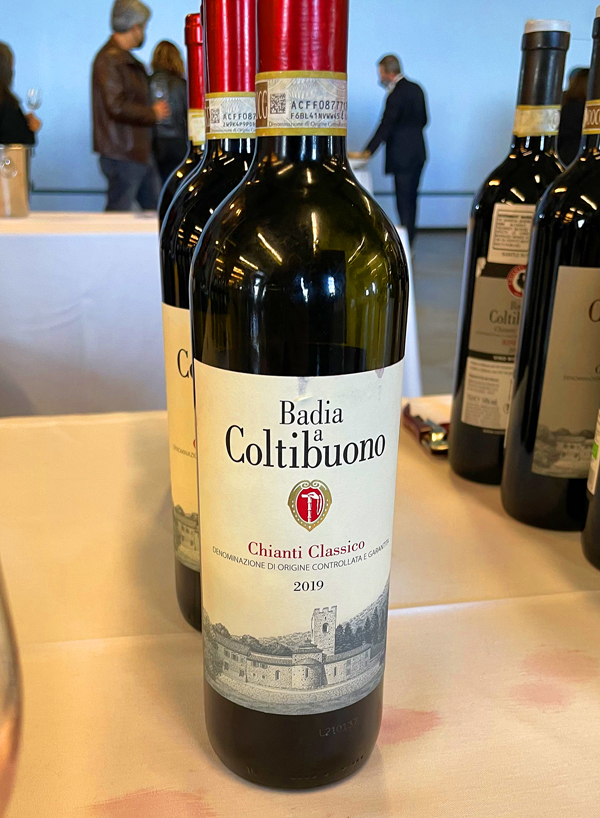
2019 Badia di Coltibuono, Chianti Classico DOCG, Tuscany, Italy.
Coltibuono’s 2019 Chianti Classico is bright and fresh, but with solid depth and a rounded mouth feel, allowing for beautiful and charming youthful drinking, it is especially good with simple cuisine, making for a smile filled meal without pretense. The dark garnet and ruby edged Chianti Classico is sourced from all organic estate vines in Gaiole, along with some coming from their Vitignano vineyard (in Castelnuovo Berardenga), with 90% Sangiovese and a 10% mix of Colorino, Canaiolo, and Ciliegiolo going into this wine that was fermented using indigenous yeast in stainless steel tanks. After the wine finishes both primary and malo-lactic fermentation the wine is pressed into large casks, a combination of well used 2,000L and 2,500L French and Austrian oak, where the Chianti Classico matures for 12 months. The 2019 profile is lively and shows lush ripe layers of blackberry, plum, strawberry and mulberry fruits that are accented by hints of pipe tobacco, anise, dried flowers, grilled orange, cinnamon spice, subtle earth, zesty herbs and wood details. This medium bodied Chianti Classico provides enough grip to be taken seriously, but is a comfort wine with its terroir driven Sangiovese personality and authentic style.
The historic Badia a Coltibuono estate, originally founded as an Abbey in 1051, is set in the hills in the Chianti Classico commune of Gaiole, one of the most prestigious parts of the region, not far from Radda, in the southern end of the zone. Coltibuono is now led by the fifth generation of the Stucchi Pirinetti family, including Emanuela, Paolo, and Roberto Stucchi Prinetti. There are 150 acres of vineyards on the property, dug into the clay loam and limestone soils, along with another 50 acres of olive trees here with as excepted a focus on Chianti’s signature grape, Sangiovese of course. The winery notes, Sangiovese is naturally the most important grape variety planted at Coltibuono, but following ancient traditions the family honors Chianti’s heritage by also keeping significant numbers of vines of other native varieties that are allowed but often omitted in the modern Chianti Classico wines. These grapes, planted in very small amounts include the red grapes Canaiolo Nero, Ciliegiolo, Colorino, Foglia Tonda, Malvasia Nera, Mammolo, Pugnitello, Sanforte and the white Trebbiano and Malvasia grapes used for Vin Santo. Badia a Coltibuono makes an authentic collection of wines from the traditional to the more innovative, though I really like this basic Chianti Classico best of all and impressed by its value and ease of use.
($22 Est.) 91 Points, grapelive

2019 Ryme Cellars, Cabernet Franc, Alegria Vineyard, Russian River Valley.
The Husband and wife team of Megan and Ryan Glaab at Ryme Cellars in Sonoma are turning out some fabulous wines and the latest releases include some intriguing efforts, like this beauty of a Cab Franc that pays tribute to the grape’s inner core of varietal character with loads of dark fruit and spice. This pretty example of California Cabernet Franc is nicely perfumed with hints of violets, mineral, brambly red berries and peppery notes with a medium bodied and energetic palate that highlights the vintage’s good acidity, soft tannin and ripe profile. In the mouth you find classic, more Loire like purity with crushed raspberry, red currant, plum and cranberry fruits along with a touch of earth, bell pepper, anise and subtle cedary notes. The Ryme Cabernet Franc grapes come from the Alegria Vineyard just south of Healdsburg in the Russian River Valley appellation, mainly known for the Acorn Winery’s Zinfandel. The vineyard is made up mostly of ancient field blend varietals from the 1800s, similar to what you’d expect in the vineyards used by Ridge, Bedrock and Carlisle. The Cabernet Franc vines that Ryme sources here were planted more recently in 1990, but they still are fully mature enough to provide excellent concentration and complexity as this wine shows. The Glaab’s note that this is a fairly cool climate site, influenced by the Ocean and fog that flows into this part of the Russian River Valley, once thought to be better for Pinot and Chard than for Cabernet Franc. But that said, for Ryme, the idea was to make a lighter bodied wine that embraced the natural herbal and floral qualities of the grape, which makes this wine so compelling and great with food.
The winery is well known for innovation and ancient inspired methods to ferment and age their wines with Ryme there is always something interesting to see and hear about in the cellar, and this Cab Franc saw a unique combination of techniques. Megan and Ryan fermented the 2019 in two separate lots, with one batch that was a full whole cluster fermentation in a tank and pressed gently by foot once a day to keep the top fresh and release some juice. This results, they say, in a partial carbonic fermentation, allowing a juicy fruitiness and stemmy crunch. The other lot was, as they add, also done with all whole cluster, but it was put into clay amphora to macerate and ferment, which I think adds a creamy texture and the savory elements. Ryme apply this regime into a few different versions of their wines sand it has been highly successful, but especially good here with this dark ruby colored Algeria Vineyard Cab Franc. Both of the Cab Franc fermentation(s) were pressed separately to neutral oak barrels for a year or so and then blended just a short time prior to the wine’s bottling. As I have mentioned here in recent reviews, Ryme is doing some very impressive stuff, with this Russian River Valley Cabernet Franc joining some tasty Italian varietals, including my favorite of their reds, the Aglianico(s), a quaffable Sangiovese/Friulano co-ferment and a brilliant array of whites made from Vermentino, Ribolla Gialla and Fiano, which all are absolutely delicious. I also, have to mention Ryme’s fun Pet-Nat style sparkling wines, because they are so much fun, in particular their red sparkler, the Crackling Valdiguie, which is mainly only sold on their mailing, so it s a good time to join it.
($35 Est.) 92 Points, grapelive
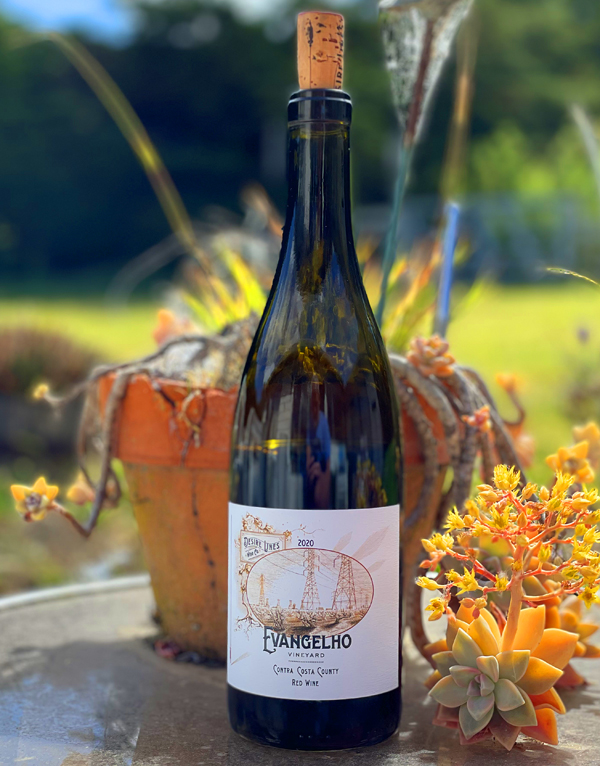
2020 Desire Lines Evangelho Red Wine, Contra Costa County.
This newer label, Desire Lines in Sonoma, with a stellar collection of small lot hand crafted offerings is fast becoming a favorite of mine and Cody Rasmussen, winemaker, is certainly one of his generations best, with wines like this proving the point. The latest Evangelho Red Wine, a blend of primarily Carignan with a touch of Mourvèdre, has become, as Rasmussen notes, one of his most important wines. This 2020 is deeply colored and flavored with an upfront personality, showing rich layers of crushed blackberries, plums, Italian cherries and currants on the full bodied palate along with a round lush texture, all accented by florals, spices and a subtle wood shading. This purple/garnet wine comes from very old vines in Contra Costa. Rasmussen says the heritage and historic Evangelho Vineyard is one of California’s greatest vineyards, and after many years of tasting wines from here, like this one, I’d have to agree. Cody Rasmussen, who is the assistant winemaker at Morgan Twain-Peterson MW’s Bedrock Wine Company, along with his wife Emily have carved out a niche for themselves with these Desire Lines wines, their Syrah is their signature grape with the Griffin’s Lair and Shake Ridge bottlings being some of the state’s best examples. Besides the stellar Syrahs, Rasmussen has made himself one of the best talents in dry Riesling in the country, especially his exceptional Cole Ranch, which I recently reviewed here. With this latest set of releases, Desire Lines have added some new things to the lineup, including a Viognier and a Sauvignon Blanc, both of which I am excited to try soon.
The 2020 Evangelho Red Wine is as Cody notes, a touch silkier on the palate, with youthful exuberance that highlights both the vintage and the vineyard in a typical year, making a very lovable wine with refined tannins that still provide for solid aging potential, while allow full pleasure even now. As in previous vintages, Rasmussen fermented with 30% whole cluster under a submerged cap and aged the Evangelho Red for ten months in neutral 400L barrels. As he has said before, Cody loves the bigger 400L barrel size for Carignan, as it retains freshness and builds tension in the wine like all large format casks, but with a less reductive tendency than the 500L and 600L barrels that I prefer for Syrah and Mourvèdre. As I reported last time trying this wine, Rasmussen believes the Carignan gives the wine a singular juiciness and floral and red-fruit aromas, with a soft tannin profile and vibrant acidity. Going on he adds that the inclusion of cluster (partial stems) adds spice to the nose, while the small portion of carbonic maceration and Mourvèdre add flesh to the palate. Desire Lines, for this wine, models their winemaking after the great cru Beaujolais, like Dutraive and or Chateau Thivin, crafting wines that are delightful when young but should mature beautifully in the bottle as well. These old vines, at Evangelho, were planted on their own-roots back in the 1890s in the Oakley Sands, giving this wine a sense of place and a wealth of complexity and depth. These deep say soils form this site into one of California’s most distinctive terroirs with the delta breezes giving the wines freshness, elegance and fine aromatic character, elements which are clearly on display here, and I highly recommend this incredibly delicious wine.
($32 Est.) 93 Points, grapelive
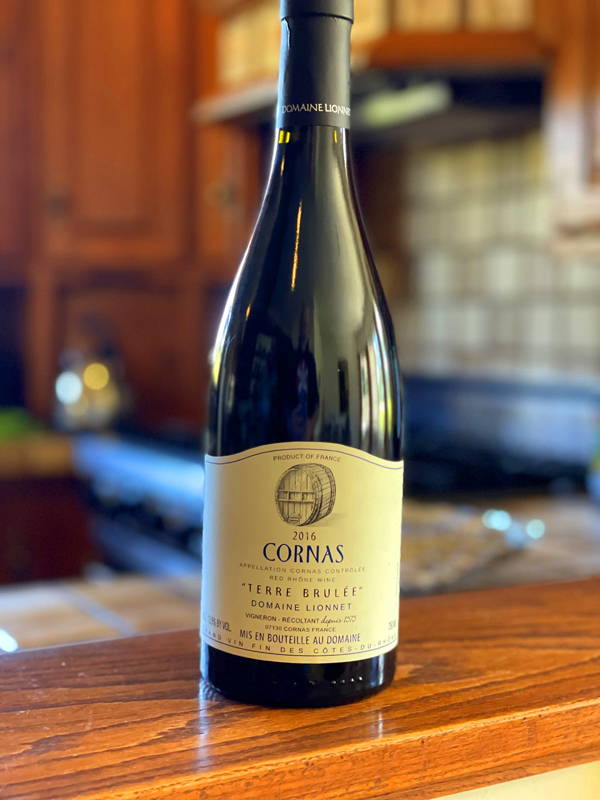
2016 Domaine Lionnet, Cornas, “Terre Brûlée” Northern Rhone, France.
This 2016 is still youthful and deeply colored Syrah with gorgeous layers of black and blue fruits along with a nice savory crunch, spice and floral details, making this Domaine Lionnet one of the most beautiful versions to date. A sexy mix of violets, peppercorns, herbs de Provence and blackberry coulis get things started here on the nose and the smoothly textured medium/full palate with fresh acidity and ripe tannins adding to the complexity and balance, adding damson plum, blueberry, tapenade, cinnamon and subtle earthy tones, lingering on and on with creme de cassis, cedary wood, anise and hint of graphite. This wine is just about perfect and expressive with the utmost purity of varietal and a sense of place, it rivals wines from the Northern Rhone that cost twice if not three times to place, if you’ve not had this outstanding small family producer, you should do your best to find a few bottles. This is absolutely one of my favorite wines and producers, Domaine Lionnet makes an incredible, transparent and authentic Cornas that never disappoints this Syrah geek!
As mentioned here at Grapelive, Corinne Lionnet’s family has been here in the region and wine growing since back in 1575, and for countless generations, with her husband Ludovic Izerable, who originally come from the tiny university town of Grenoble up in the alps, making the wines here, the two of them have run this winery since Corinne took the estate over in 2003. Ludovic has really stamped his style on the wine at Domaine Lionnet, with 100% whole cluster, 100% stems and all organic farming, he ferments native and uses long maceration (three weeks) in cement vats before malos in neutral, well used large casks without any additions. Each parcel for this Cornas is between 40 and 100 years old, they include four great Lieu-Dit sites in Cornas, Chaillot, Combes, Brugeres and Mazards with each hand picked and fermented individually. These highly regarded Crus add to the whole and give this wine it’s depth and structure, especially in vintages like this one. Domaine Lionnet’s attention to detail really shows in the bottle, these are electric and thrilling wines that have great aging potential, with this 2016 looking pretty legendary. A few years back, I got to meet Ludovic and Corinne and taste through a mini vertical of their glorious Cornas bottlings from 2012 to 2015, all of which were fantastic, but this 2016 feels like a step up, I highly recommend it.
($70 Est.) 97 Points, grapelive
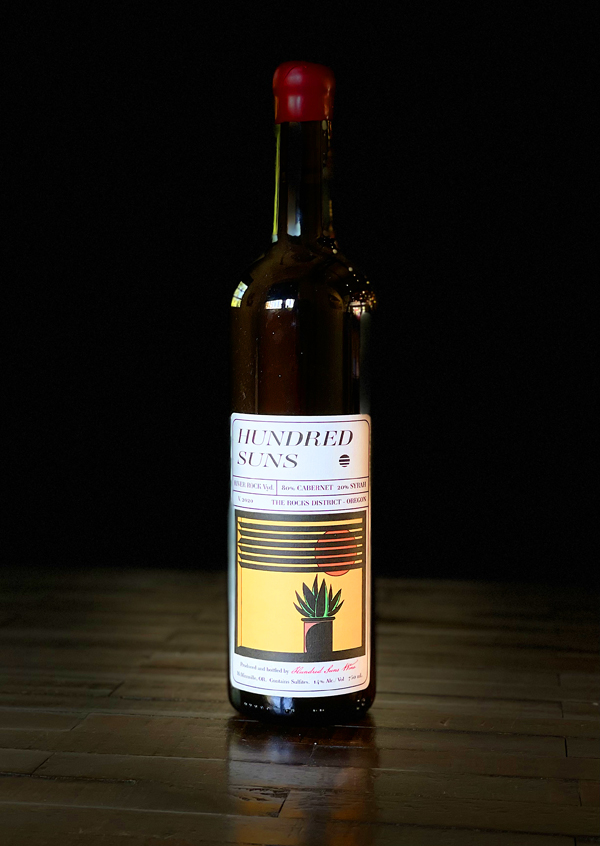
2020 Hundred Suns, Cabernet/Syrah, River Rock Vineyard, The Rocks District, Milton Freewater, Oregon.
A new wine from Grant Coulter and his Hundred Suns label, the River Rock Vineyard Cabernet Sauvignon and Syrah blend from the Oregon side of Walla Walla is an intriguing blue fruited wine with dense fruit and supple ripe tannins, proving these varietals can play nicely together in an expressive way. This 2020 shows an array of blackberry, plum, brandied cherries and currant fruits along with bay leaf, tobacco, cedar, acacia flower and mission fig accents. Coulter, one of Oregon’s best Pinot Noir specialist, originally left California for Oregon’s Willamette Valley some 16 or so years ago, where he first worked as assistant winemaker at Hamacher wines before spending, as he notes, the bulk of 10 years as assistant winemaker and then (head) winemaker at the legendary Beaux Freres. After which, seeking a new and personal direction, Coulter and his wife Renée Saint-Amour founded their own Hundred Suns label in 2015 as well as buying a piece of land in the Eola-Amity Hills zone, where there was an old vineyard that they are now re-planting in hope to create a special estate for the future. In the meantime Coulter is consulting for Flaneur wines and doing his micro bottlings of single vineyard of regional Pinots, an exciting Gamay, Grenache, Chardonnay and a couple of Syrah offerings, as well as this tasty Cab/Syrah. I hope Hundred Suns continues with this special addition to the lineup for years to come, it is an intriguing effort and a delicious dark purple/garnet nectar that is fabulous with robust cuisine.
This unique Cab/Syrah was sourced from the famed River Rock Vineyard located in the The Rocks District of Milton Freewater, Oregon, an area made famous by Christophe Baron of Cayuse. These soils (or lack thereof), called the Freewater Series, as Coulter notes, are eroded basalt cobbles and pebbles from the Blue Mountains, these rocks, sand, and silt were laid down in layer upon layer forming an alluvial fan on the flat Walla Walla valley floor, leaving us a great terroir. These dynamic soils, Grant adds, require the vines to push roots deep between the rocks to find nutrients while the warmth absorbed by the rocks helps ripen the Cabernet grapes. Coming in at 14% natural alcohol, this is a ripe wine, but incredibly well balanced, or as Grant Says, its a Pinot Noir winemaker’s rendition of noble Cabernet Sauvignon, with a little dose of co-fermented Syrah that adds complexity. These grapes were hand-harvested and brought back to the winery in McMinnville where they were fully de-stemmed into a single one ton open top fermenter. After three days the native yeast took off and fermentation was on. Coulter gently pumped-over the juice twice daily and after ten days the primary fermentation was completed, then the must was pressed to neutral French oak and 450 liter amphora. The Cab/Syrah then was matured, unmoved, for one year and then the wine was gently racked into a bottling tank and was bottled unfined and unfiltered. As readers of grapelive.com know, the Hundred Suns wines are a favorite of mine and I highly recommend chasing some down and I suggest joining their mailing list as soon as possible, as these wines have truly been discovered and sell out fast.
($45 Est.) 93 Points, grapelive
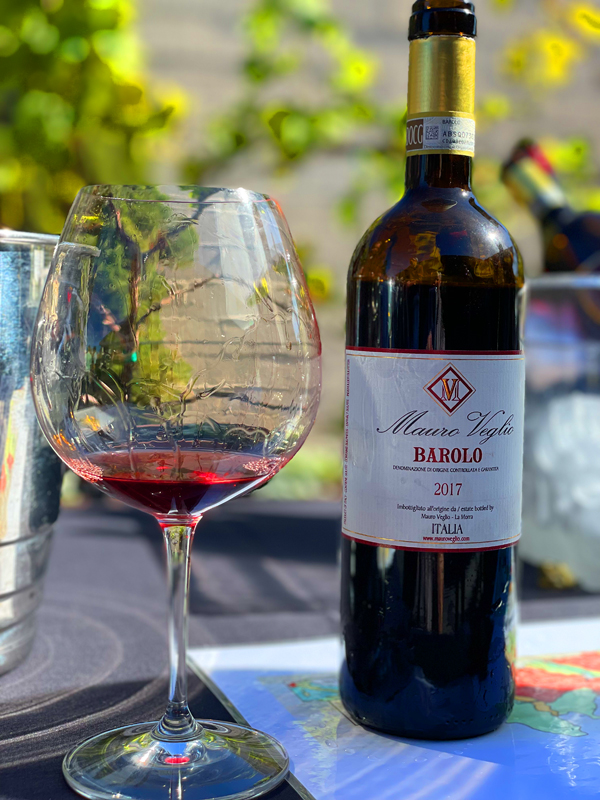
2017 Mauro Veglio, Barolo DOCG, Piedmonte, Italy.
A more recent discovery for me the Mauro Veglio wines, offering a studied series of Barolo, from many highly regarded Cru sites, as well as a collection of Dolcetto and Barbera based reds, with this 2017 basic Barolo showing very nicely, making for an almost guilt free, well priced and easy to love pure Nebbiolo. Brightly ruby in the glass and with a charming nose of red fruits, a light earthiness and delicate rose petals on the nose that leads to a satiny medium to full bodied palate with a nice concentration of ripe black cherry, plum, mulberry and balsamic reduced strawberry fruits as well as grilled fennel, cedar, garden herbs and a hint of iron. The tannins are very supple, but still provide just about the right amount of youthful grip to let you this is in fact a Barolo and while compliant in nature there is a seriousness to this wine’s purpose. This Mauro Veglio Barolo, that comes from mostly the estate’s younger vines, opens up well and is quite delicious, especially with food, it is a wine that may not be the most thrilling or with the most potential in the cellar, but I wouldn’t be disappointed to find it in my glass and I think it is a fine effort and value.
The traditionally crafted Veglio Barolo comes from vineyards in the townships of La Morra and Monforte d’Alba, with this 2017 vintage being one of the hottest years in recent times making for softer tannins and smaller yields than is normally the case, which may have helped this bottling a little, even though it was not an easy year in the region. For clarity and purity, the Barolo normale saw a maceration on the skins in stainless steel tanks for between 10-15 days, before the grapes are pressed with fermentation in stainless tanks, lasting about 20 days, with its malolactic fermentation also taking place in the tanks with cool controlled temperatures to preserve aromatics and fresh detail. After fermentation the Barolo is aged in a combination of oak casks with a small percentage of new barrels being employed to add a luxurious taste, with a touch of toast and vanilla and texture to this wine to allow for earlier drinking pleasure, as this wine does. The Barolo was in mainly 80% used wood, aging for a full 24 months and then rested back in stainless after blending and then bottled unfined and unfiltered, which the winery believes helps keep every nuance in the wine. Veglio makes close to 2,000 cases of the regular Barolo, making it pretty easy to find and it is not too spendy for the quality, I look forward to seeing their single Cru versions in the future.
($40 Est.) 90 Points, grapelive
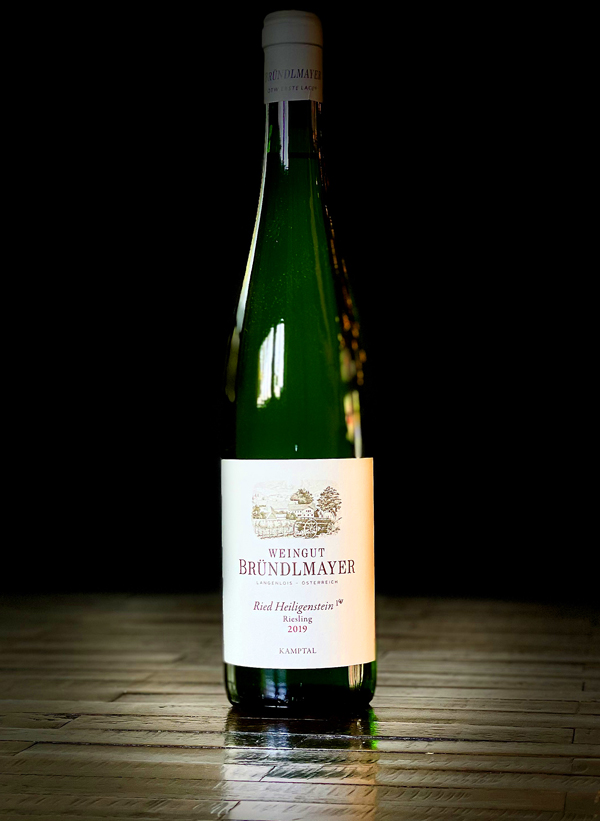
2019 Weingut Bründlmayer, Dry Riesling, Ried Zöbinger Heilgenstein, Erste Lage, Kamptal, Austria.
The beautifully aromatic and elegant 2019 Bründlmayer 1er Lage Ried Löbinger Heilgenstein Dry Riesling rival top Grosses Gewachs from Germany and upper echelon Alsace Rieslings, in terms or power and finesse this is an absolutely killer Austrian example, perfectly capturing varietal, place and vintage. The palate is full of mineral intensity, delicacy of fruit, zesty acidity and has a gorgeous textural quality that sets it apart, with layers of green apple, muskmelon, sour peach, tangerine and tropical fruits, along with tea spice, verbena, bitter almonds and wet stone. White flowers and a light leesy note gets things going here and the length is impressive, over all this Riesling leaves a noble impression and highlights the talented touch found in Bründlmayer’s wines, and there looks to be more to come here with age. Bründlmayer has a very high proportion of old vines, with many plantings well over 50 years old, and a parcel in the Heiligenstein that was planted back in the 1920s, which shows in the concentration and sophistication in the wines. This Ried Zöbinger Heilgenstein saw a cool fermentation in stainless steel after a settling period and after primary is finished the Riesling is racked into large, old oak casks and left in contact with the fine lees for a couple of months, allowing for purity, freshness and balance.
Bründlmayer has some of most interesting and geologically diverse terroirs in Europe, in the heart of the Kamptal, near the blue Danube and Kamp rivers. The winery notes that the wooded hills of the Waldviertel forest create a climate with large diurnal temperature swings, essential to a long growing season and resulting in perfect ripe grapes. These rocky, terraced vineyards are are uniquely larger and wider terraces, each in its own individual micro climate. The most famous vineyards in this Kamptal region are located in and above the village of Zöbing including the Ried and its subplots, which are home to fabulous Riesling vines. This small village is home to a number of Erste Lagen (Cru) vineyards, including the Ried Zöbinger Heiligenstein, which is composed of 250 million year old sandstone soils, with feldspar (volcanic) and siltstone, not too different from German’s Pfalz region that is well known for many elite dry Rieslings. Bründlmayer has 90 Hectares of vines, all farmed organic, with about 33% Grüner Veltliner, 25% Riesling, 15% Pinot Noir, 10% Chardonnay, 17% other varieties, including a rare plot of Cabernet Franc, which is used to make an awesome red single varietal wine. While famed for Grüner and Riesling, Bründlmayer also makes some incredible sparkling, Champagne style and method wines that are mind-blowingly good and regal. There’s a lot to get excited about in Austria right now, especially in the Wachau and Kamptal area, and Bründlmayer has plenty to offer, as this Riesling proves in style.
($45 Est.) 94 Points, grapelive
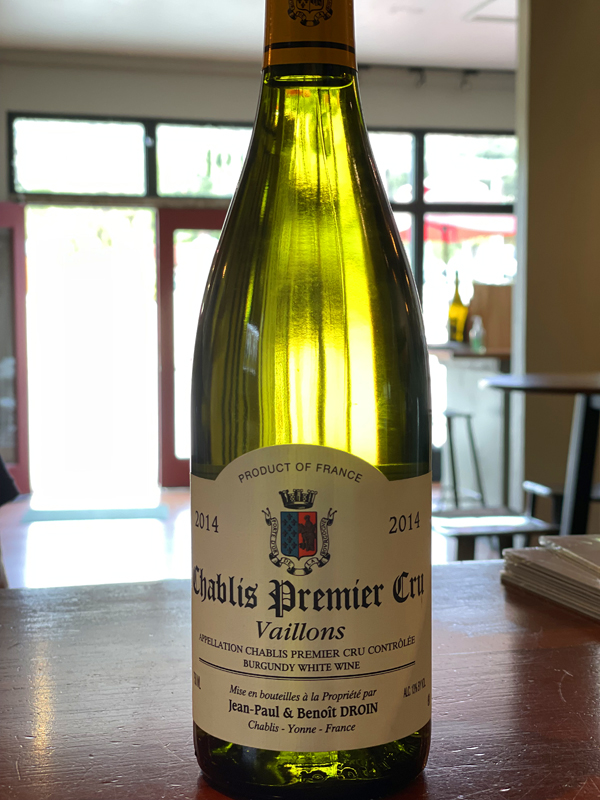
2014 Domaine Jean-Paul et Beniot Droin, Chablis Premier Cru, Vaillons, White Burgundy, France.
The brilliant, invigorating and brisk 2014 Vaillons by Droin is just starting to enter full maturity and has tons of personality with mineral intensity to go with its racy acidity, which is driving this wine even with the almost 8 years of age, making for a wine that delivers complexity and sharp detail. The beginnings of this steely wine’s potential are ever present, but truly come more into focus with food, transforming its electric vigor into a more rounded and pleasing Chardonnay that shows lime, green apple, peach and quince fruits, plus classic wet stone, a touch of reduction, oyster shell, hazelnut and clove spice. A big thank you to my friends Marc and John for stopping by and sharing this fabulous Premier Cru Chablis, which was a nice Thursday treat, especially with some soft farm cheeses from France that really brought out the best in this wine. After the wine opened up it added some citrus blossom and filled out more, revealing some depth and dimension, all the while staying laser focused and crisp, it is a very impressive effort and should continue to age gracefully for another 5 y3ears with ease. The Droin Vaillons and Monte de Tonnerre Premier Crus are top class and elegant examples which are really worth searching out, and their basic AC Chablis is a killer bargain to enjoy often and guilt free, without pretense.
The Droin wines, which are incredibly well made and terroir driven, still fly under the radar when compared to the super stars of this region, like Raveneau and Dauvissat, which allows them to be more accessible and are extremely well priced for the quality, especially their awesome collection of Premier Crus, like this Vaillons. Winemaker Benoit Droin employs natural yeast fermentation(s) in tank and some used French oak barrels, with gentle pneumatic pressing and lees aged in a combination of stainless steel tank and neutral wood depending on site. The Vaillons saw 10 months of elevage, with no batonage (stirring of the lees) and was 80% in tank and 20% old oak, which highlights the purity and the chalky Kimmeridgean clay and limestone soils on which the vines are set. The Droin Vaillons plot is at least 45 years old and is farmed using sustainable methods with mainly organic growing practices used here and the grapes really show the power of place, this exciting and distinct 2014 Droin version couldn’t be from anywhere else. Benoit sources his Vaillons grapes from the climats of Les Épinottes, Séchet, Roncières, Beugnons and Chatains, which are picked a bit earlier to preserve a dynamic freshness in his Chablis. Domaine Droin’s Jean–Paul and son Benoît can trace their family roots as vineyard owners here back to 1620 and are one of the region’s most historical producers with some fine parcels in top sites, and these are wines I highly recommend.
($45 Est.) 92 Points, grapelive
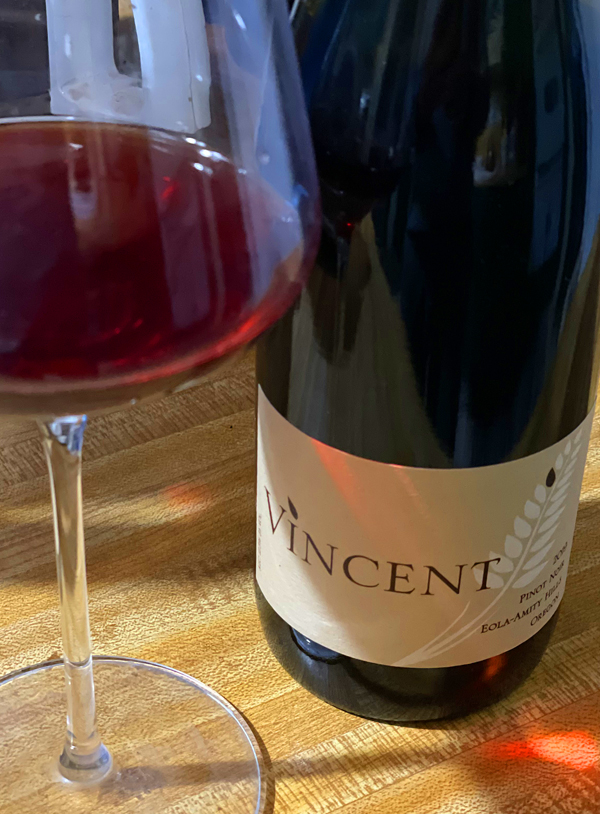
2019 Vincent, Pinot Noir, Eola-Amity Hills AVA, Willamette Valley, Oregon.
The 2019s here at Vincent have proved to be lovely and charming wines, especially the Eola-Amity Pinot with its fresh, almost tangy dry profile and purity of flavors that highlight the vintage and has a style that suits the fans of delicacy over richness. The palate is bright and tart with lots of cherry, red currant, strawberry and cranberry fruits to start, with this Eola-Amity Hills Pinot adding some depth and dimension with air and while lively the texture is supple and the wine reveals briar notes, spice, mineral tones, a subtle floral array and dried herbs. This year’s Eola-Amity Hills is a blend of barrels from Zenith, Bjornson and Silvershot vineyards, with the famed Zenith maybe providing the structure and soul in this delightful version.The Eola-Amity grapes, sourced from these top quality sites, set on marine sedimentary and volcanic soils, are carefully sorted and typically, but not always, get crushed and de-stemmed and then put into small fermenters. Any whole cluster lots, if used, (depends on the vintage) Vincent adds, get a classic pigeage, or foot treading, to get things moving and minimize any large air pockets that might be in the fermenter. The winery notes as well, that the main lots of crushed grapes in the bins are then left alone for a spontaneous fermentation with indigenous yeasts, usually this happens within a week or so. Only when enough CO2 is coming off the fermenter in earnest do the cellar team do the first punch downs, where they break up the forming cap of and push down grape matter at the top layer of the fermenter deeper into the juice to extract more flavor and color. The wine is aged in used French barriques and bottled unfiltered with very low SO2 to promote transparency, which this Pinot delivers nicely.
Vincent winemaker, Vincent Fritzsche, started his small winery, located in the Eola-Amity Hills AVA of Oregon’s Willamette Valley, back in 2009 with a focus on transparent and elegant Pinot Noirs, which are lighter and more vibrant than was the trend of the times and after some success with his stylish examples, Vincent, now produces about 2,000 cases a year of mainly Pinot Noir and Chardonnay, but as added some very nice Pinot Blanc, Pinot Gris and a really exciting Gamay to his collection, which I reviewed recently here. Fritzsche says that he makes his wines in a low-input wine making style, borrowed from the old world, and sources his grapes from some incredible vineyards with several sustainably-farmed parcels from all around the Willamette Valley. All of Vincent’s offerings are small lot hand-crafted wines, that he adds, are made in a natural way without a lot of fuss. While known mainly for his collection of single vineyard Pinots, Vincent does also a basic regional Willamette Valley bottling, as well as a couple of unique AVA versions, like this Eola-Amity Hills bottling, these wines, as seen with this effort, offer tons of value for the price and you should search these out and or join their mailing list. This ruby colored Eola-Amity Hills Pinot is very tasty, slightly earthy with an unfiltered cloudy appearance and gets better with every sip, in particular it goes well with food, which allows it to more expressive, lifting it to another level up in distinction and quality. Fritzsche has a pretty good following and while still under the radar, Vincent is a label to watch. These value packed Vincent wines are all very authentic and raw, but exceptionally delicious, I recommend the Pinots highly, along with the Gamay and the whites, with the Pinot Blanc, Chardonnay and a Pinot Gris Rosé being of interest too.
($25 Est.) 91 Points, grapelive
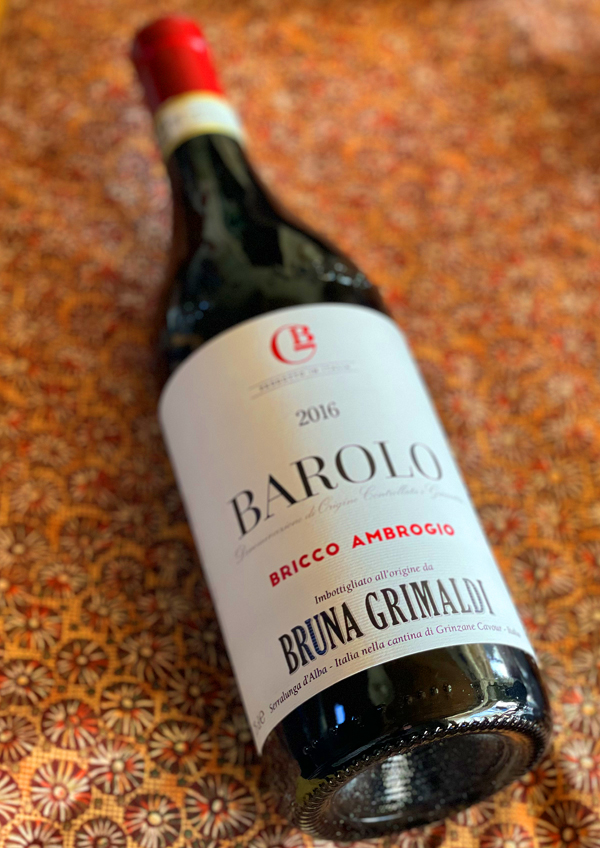
2016 Bruna Grimaldi, Barolo DOCG, Bricco Ambrogio, Piedmonte, Italy.
These 2016s are easy to love Nebbiolo wines, even now there is a lot of pleasure to be had, especially Barolo offerings like this Bruna Grimaldi, a producer I haven’t had much experience with, it drinks silky and complete and was excellent with a simple and hearty meal. The Grimaldi family has been in the Barolo business since 1957, but the modern version of this property really got started as a producer of fine wine with Bruna Grimaldi in 1990 and this label has gained a solid reputation over the last two decades. Now, winemaker Franco Fiorino crafts these wines with a passion for transparency and precision, as this pretty Bricco Ambrogio shows with a clarity of purpose, it delivers Classico Nebbiolo layers and highlights the vintage’s charm and substance very well indeed. This delicately perfumed and stony 2016, dark garnet and brick edged in the glass is very supple and flows smoothly on the full bodied palate with black cherry, damson plum, red currant and strawberry fruits, with a hint of earthiness, minty anise, cedar and dried lavender notes. This is not a blockbuster or one that begs for long term cellaring, but is a very nice value, I got it for under $40, and will be a rewarding and elegant traditional Barolo for the next 3 to 5 years.
Fiorino says, the Bricco Ambrogio is a Barolo of great elegance, which I can confirm with a satiny ripe profile, the vineyard set on blue Marls (clay and limestone) has a perfect exposure to the sun and a hot microclimate where Nebbiolo clusters are always picked a bit earlier, giving polished tannins, while retaining a good natural acidity. Going on, the winery adds that this Barolo is distinct with warm feel and has an open nose that is beautifully floral, tending towards ripe red fruits and spices notes. The palate captures the essence of the site nicely and allows for early drinking, which in some cases is very agreeable and this 2016 is expressive and has enough depth to keep your interest throughout the meal. The Bruna Grimaldi Barolo are made with a nod to the regions history with grapes that are harvested by hand and carefully sorted both in the vineyard and in the cellar before the clusters are all de-stemed and gently crushed. Fiorini uses a temperature-controlled fermentation with, as he notes, a long skin contact maceration that lasts 20-30 days, sometimes employing a submerged cap for perfect extraction of color and structure. The primary ferments of the must happen in a combination of stainless steel and concrete, after which the Nebbiolo gets aged and matured in large Slavonian oak Botti for between 24 and 30 months. Before release the Grimaldi wines see an extra bit of rest in bottle, with this one seeing close to a year, that helped it integrate all of its elements, making for a tasty treat on release.
($47 Est.) 91 Points, grapelive
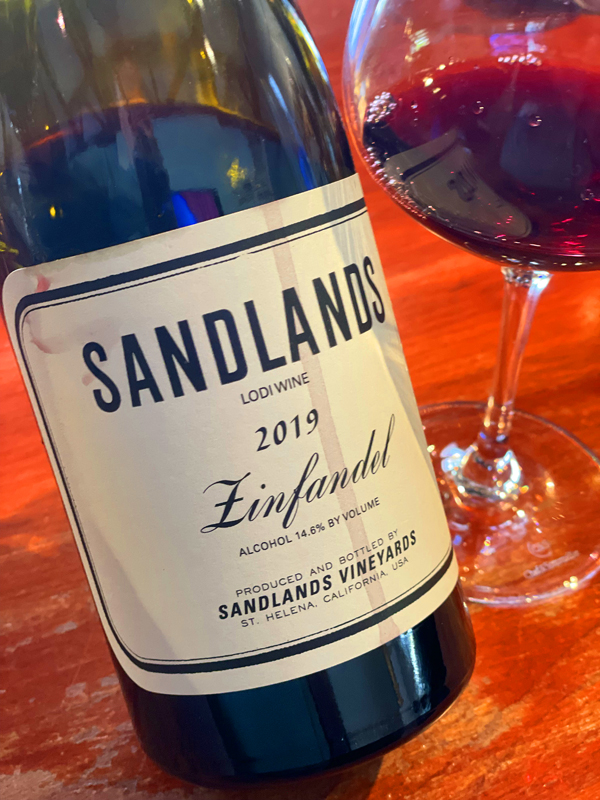
2019 Sandlands Vineyards, Zinfandel, Lodi, California.
The darkly colored and deeply concentrated Sandlands Kirschenmann Vineyard Zinfandel is wonderfully rich and detailed on the full bodied palate, perfectly displaying the best qualities of the vintage and this old vine Lodi site. Its almost impossible not to love everything on offer here, this is a wine to thrill old school Zin fans with supple round layering of black raspberry, plum and Italian cherry fruits, along with ripe dusty tannins, lively acidity and subtle earthiness. This Zin has a chalky/stony elements and has background of brambly spice, dried herbs, floral tones and a light cedary note. Winemaker Tegan Passalacqua uses his own Kirschenmann grapes for this wine, it is located on the East Side of Lodi’s Mokelumne River AVA that was originally planted back in 1915 and is set on silica rich, white sandy soils. This own rooted site in mostly all Zinfandel, but there is Carignane, Cinsault and Mondeuse scattered within a few blocks as well. With air and time in the glass this 2019 Zin gets almost silken in the mouth, it delivers a very solid performance and it is remarkably well balanced, even at 14.6% natural alcohol this wine never feels anything, but graceful. I have really enjoyed all of the latest Sandlands, especially this one, which maybe Passalacqua’s signature effort, along with his Carignane, one I try never to miss, as well as Trousseau, Cinsault, Chenin Blanc, Mataro (Mourvedre), Grenache, Syrah and Mission grape, also known as Pais or Listan Prieto. These 2019s are some of my favorites to date and I highly recommend getting on the mailing list, as these wines are super limited and sell out fast.
The Sandlands label, made by Passalacqua, is one of the most authentic collection of wines in California and these wines, like this one, are exceptional values that are hand made in a transparent style to showcase their individual terroirs and varietals. These stellar offerings are produced mainly with native yeasts and mainly neutral wood to promote purity of fruit and allow that sense of place to shine through, though as this wines, they are full flavored and wonderfully textural as well. Sandlands, as noted many times here, is the personal wine project of Tegan Passalacqua, head winemaker and vineyard manager for the famed Turley Wine Cellars, focused on primarily head-trained, dry-farmed and own rooted vines from historic sites and true California grapes along with a few lesser known varietals, such as Trousseau and the Mission grape. Passalacqua, who got his start by working in the lab in Napa Valley, has many talents, in the cellar and in vines, and he has an impressive resume, having done stints in the cellars of Craggy Range in New Zealand, with Eben Sadie in South Africa and with the late great Alain Graillot in the Northern Rhone Valley of France. All of these experiences has helped shape his style and he continues to turn out some impressive bottlings. The vineyards that Tegan uses, including his own family’s Kirschenmann, offer a taste of California’s past and future, they are set on primarily on sandy granite based based soils and are lovingly cared for by generational family farmers using organic and or sustainable methods. There were just 10 barrels of this beautiful Kirschenmann Zinfandel, but it is worth the struggle to find it.
($32 Est.) 93 Points, grapelive
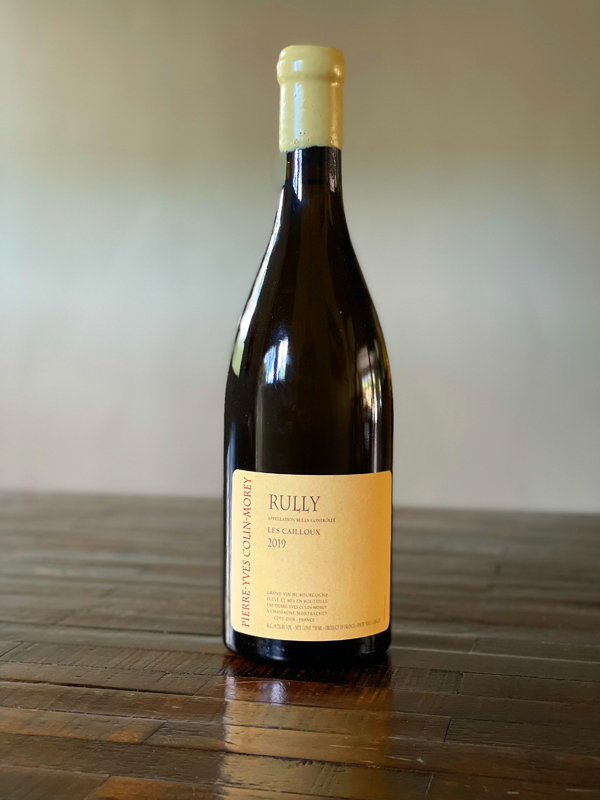
2019 Domaine Pierre-Yves Colin-Morey, Rully Blanc “Les Cailloux” White Burgundy, France.
This pale straw colored 2019 Rully Les Cailloux white Burgundy is pulsating with energy and its zesty acidity heightens the experience behind the beautiful round texture, this is performing well above its price point with crystalline precision. The palate has classic yellow fruits and mineral core with bright lemon, apple, Bosc pear and quince fruits perfectly accented by wet stones, hazelnut, bread dough, clove and subtle oak toastiness. Some of my first loves in Chardonnay came from Rully and the lesser known parts of the Cote de Beaune, which were much more affordable than the prestigious Crus, but Pierre-Yves Colin-Morey has taken his Saint-Aubin bottlings and Rully to unheard of heights, I mean this example could easily be mistaken for a big ticket wine from Puligny or Meursault! I opened this with a piece of fresh caught Monterey Bay salmon that was lightly smoked and the combination was absolutely magic, it left my friends who are not wine savvy utterly speechless, which was quite something. Being a fan of PYCM, this wine exceeded my lofty expectations and I’m so glad I got my hands on a few bottles of it! The Colin family has some fabulous plots in some of the Cote de Beaune’s best vineyards, from Chassagne to Batard (Montrachet), and Pierre-Yves added some high quality vineyards to his own portfolio, expanding into the Cote de Nuits and father north to the Côte Chalonnaise, where this wine was born.
Pierre-Yves Colin-Morey, one of Burgundy’s biggest stars, follows a strict protocol and method, using all sustainable and hand tended vineyards, with mostly organic practices in the vineyards, while in the cellar he ferments and ages his wines in barrel, with early picks being the norm, using indigenous yeasts and somewhat notably, he prefers larger format 350L French oak demi-muids instead of the classic 228L barriques, with his Lieu-Dit and Premier Crus seeing close to 30% new if not more, adding just the right amount of toasty accents. The grapes come from a parcel of vines in the northern part of the Côte Chalonnaise where light and sandy soils and climate promote mineral intensity and vivid acidity, giving this wine its charm and cool toned personality.This Rully is wonderfully balanced and seriously fantastic stuff to enjoy over the next 5 to 10 years, though not many, including myself obviously, will have that kind of patience! Pierre-Yves Colin-Morey is one of famous Colin clan with his father and his brothers all being highly regarded vignerons, but these days Pierre-Yves is probably the most revered and along with his wife Caroline Morey of the equally famous Morey family are a true power couple in the Cote d’Or. Now they are based in their new modern winery in Chassagne where they turn out some of the most sought after wines in the Cote de Beaune. These latest 2019 vintage wines at PYCM are impeccably made and crystalline in focus, and it has never been a better time to stock up on Pierre-Yves’ wines, if you can find them.
($50 Est.) 94 Points, grapelive
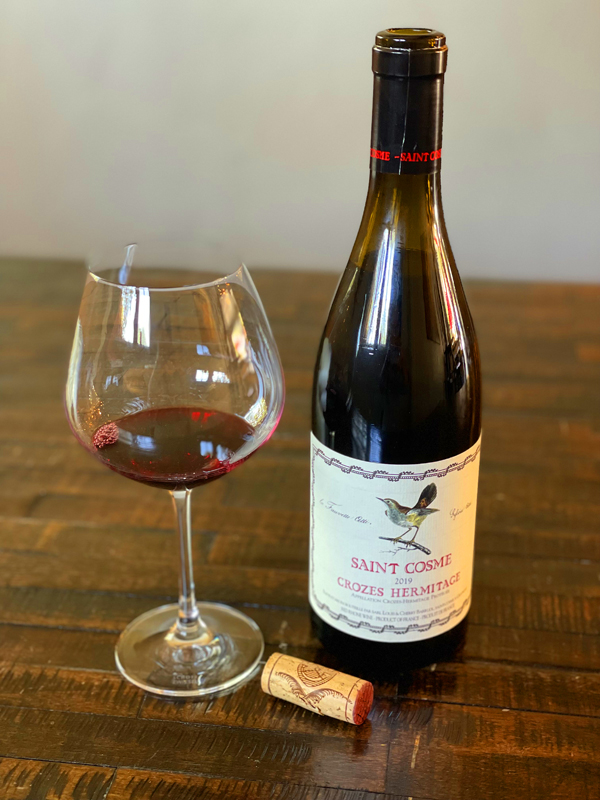
2019 Saint Cosme, Crozes-Hermitage Rouge, Northern Rhone, France.
I am a huge fan of Louis Barroul’s negociant line of Northern Rhone bottlings, which seem, as I say almost every year, to get better with each new release and I especially love this Crozes-Hermitage bottling. The latest Saint Cosme Crozes-Hermitage, with its seductive purple/ruby hue, opens up with crushed violets and dark berries on the nose, leading to a full bodied palate of boysenberry, damson plum, blueberry fruits, along with light earthy notes, anise, cedar and olive tapenade. There is a purity flavors, in this 2019, along with good acidity and well judged tannic structure that hold things in taut detail, making for a beautifully crafted wine. The year provided good ripeness for a graceful mouth feel that is impressive for this appellation and this wine is a stunning value, delivering all the best that this grape has to offer. Barruol sources his Crozes-Hermitage from the granite hillsides of Gervans and Erôme, just behind Hermitage hill, noting himself that the wines are often quite similar to those of Hermitage, which explains why I can’t get enough of it. Going on, he adds that where these Syrah grapes are grown, it could almost be a unique appellation in its own right, because there is a huge difference within the terroirs of Crozes-Hermitage and this area is very different from the flatter sections. Saint Cosme, located in Gigondas, is famous for their estate and single terroir bottlings of Gigondas, which are maybe some of the greatest Grenache based wines on the planet. The property which dates back to 1416 was acquired Barruol’s ancestors back in 1570, and at the end of the sixteenth century they built a splendid residence over those ancient cellars. Château de Saint Cosme, which is on the 14th generation, is an exceptional and historical winery, with its Gallo-Roman fermentation vats perfectly preserved it lives and breathes with that connection to the past.
The Saint Cosme Crozes-Hermitage Rouge is crafted from 100% Serine clone, the area’s ancient Syrah variety, that many winemakers here covet for its extra dimension of complexity and most believe its the region’s best expression. Regardless, it really does transmit terroir wonderfully well, as on display here. For the 2019, again as he did in 2018, Barroul went with 100% de-stemmed grapes, preferring to promote a more elegant and fleshy profile, and while I admit that I am lover of the whole bunches and racy stem inclusion, this wine as I noted before is absolutely fabulous just as it is. The 2019 Crozes-Hermitage, again echos the 2016 and 2018 versions, two of my favorites, adding touches of lavender, spice, a subtle meatiness and low impact wood notes, as well as lingering creme de cassis, best to enjoy this Syrah with hearty and simple cuisine. These non estate northern Rhone bottlings from Barroul’s Saint Cosme include this Crozes-Hermitage, a lovely Condrieu, the Saint-Joseph, which can be wildly aromatic, as well as a series of collaboration wines with Kermit Lynch, along with a gorgeous Cote-Rotie, that is another incredible value. This vintage again saw a primary fermentation in vats and was aged in mostly used barrels with about 20% new oak being employed, that is impeccable here allowing for a touch of smoke and supple texture. I find the harmony in this wine almost perfect and the is a energy and roundness that gives this wine a luxurious feel, but doesn’t take away Syrah’s natural funk and savory tones. This impresses me every time I take a sip and makes this a crowd pleasing wine. Again, I love these Northern Rhone negociant offerings from Saint Cosme almost as much their legendary Gigondas, especially this Crozes, which is a stunning value, and if you’ve not had these wines now is a great time to explore them!
($30 Est.) 94 Points, grapelive
Grapelive.com – Reviews – April 2022
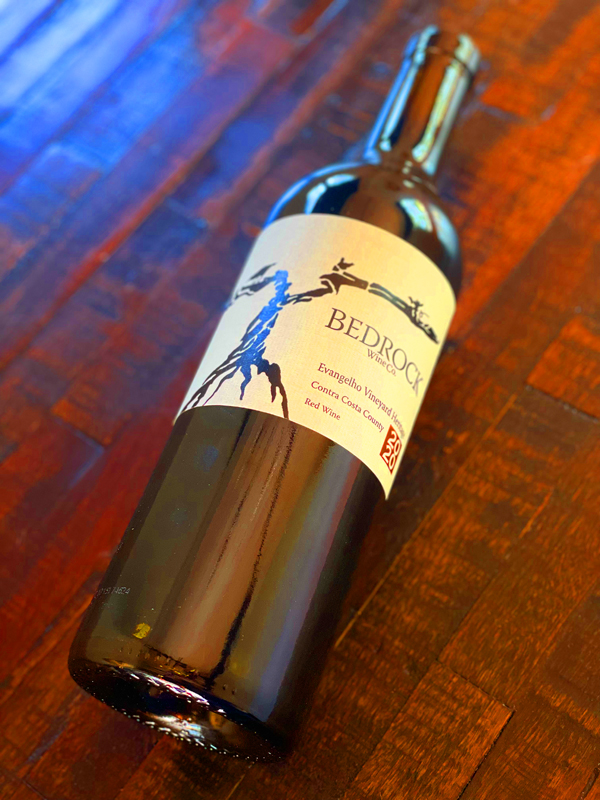
2020 Bedrock Wine Co., Evangelho Vineyard Heritage Red, Contra Costa County.
The latest releases from Bedrock are exceptional and have a sense of lightness and grace, traits not always found in Zinfandel based wines with the 2020 Evangelho Vineyard Hermitage Red showing wonderfully already, delivering a beautiful balance of fruit intensity and its underlying grip of tannic structure. This vintage shines with a rich array of flavors on the full bodied palate, it flows with black raspberry, dark plum, tart blueberry, currant and kirsch along with lovely florals, mineral and spice, adding anise, lavender, a subtle earthiness, sandal wood and lingering mure. The Evangelho Heritage is a field blend of Zinfandel, Mataro (Mourvedre) and Carignan from this historic vineyard originally planted in the 1890s, in the Contra Costa and each of these varietals plays a vital role, even though the Zinfandel has the leading role here. Ancient granitic sand was deposited on the edge of the Sacramento River Delta in an area that stretches from the eastern edge of Antioch to the far side of Oakley, where Evangelho is located. The winery notes, that over 130 years ago, people started planting grapevines, almonds, apricots, and other fruit in these deep, well-drained sandy soils. This vineyard got its name In 1936, when Manuel Evangelho purchased some of these grapevines, which he farmed his entire life before passing them to his son Frank. Twain-Peterson adds that Frank farmed the vineyard with care and purpose until 2017, when he sold it to Morgan, who also has the famed Bedrock Vineyard in the Sonoma Valley, which is lucky for all of us California wine enthusiasts as this gem of a vineyard is in good hands that respect the past and will keep it in good health for generations to come. In the 2020 vintage, Bedrock says that the Mataro did especially well and helped form the backbone here while the Carignan gave a real crunch and aromatic quality to the wine, all the while the Zin confidently performs its dominance with elegance, this is exceptional stuff.
The winemaking here at Bedrock remains faithful to their beliefs, made with simple low intervention traditional methods that showcase the vineyards first and foremost with Morgan Twain-Peterson MW saying “overly sculpted by activist winemakers tend to be less satisfying and soulful gustatory experiences..” Of which I totally agree and is a reason why that this winery has been elevated to the top echelon of California wine and Bedrock is one of my favorites, especially these Heritage Reds. The Bedrock reds are produced in most cases with natural uninoculated fermentations, native malolactic, and with the use of whole clusters in fermentation, the wine is left to do its thing with gentle attention along the way without additions. They take great care to use the best aging vessels as possible, preferring only to use quality oak in the aging process, using barriques and larger casks when the wine demands it. Really, Bedrock focuses on the individual vineyard and what it needs in each vintage, saying at the core of all of their wines is allowing these sites and grapes a stage to show ideal ripeness, freshness and aromatics, which this dark purple/garnet hued 2020 Evangelho Heritage shows to near perfection. This 2020, while taut and youthful at first opens up nicely and enjoys plenty of freshness with natural acidity providing a pleasing lift, giving this blend crisp detailing to go along with the concentration and depth of fruit. Peterson explains the vintage, saying the Evangelho Vineyard was cropped at the lowest levels in over twenty years, and the resulting wine is dense, with deft nuance, and is full of energy. He adds that the natural freshness in this year’s wine was imparted by the cooling afternoon winds and the pure sandy soils, resulting in a wine that knits the juiciness of the Zinfandel with the savory/meaty elements of the Mataro and bright vibrancy of the Carignan. Considering all the areas that saw devastating fire and smoke in 2020, this wine is real treasure, and I highly recommend it, along with all of the Bedrock offerings.
($45 Est.) 95 Points, grapelive
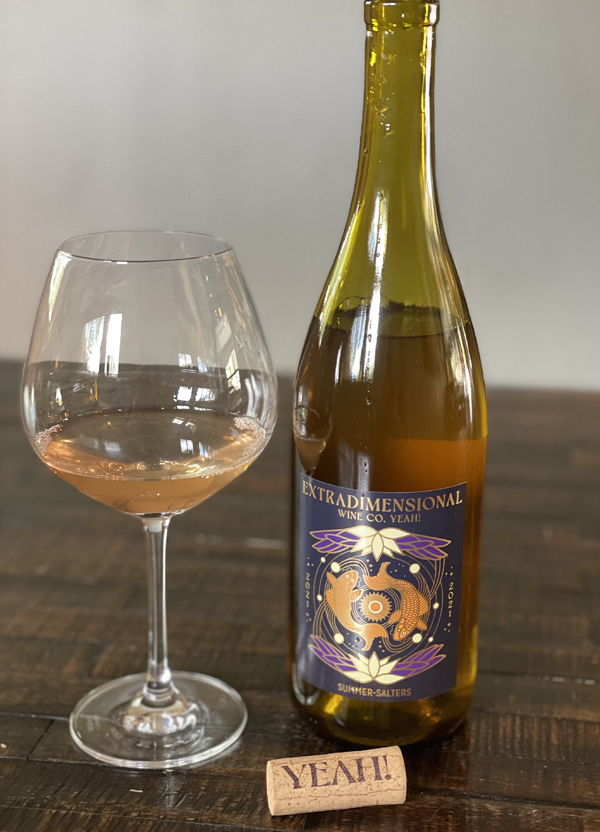
2021 Extradimensional Wine Co. Yeah! Summer-Salters Rosé, Shake Ridge Ranch Vineyard, Amador County.
Hardy Wallace’s new Summer-Salters Rosé under his Extradimensional Wine Co. Yeah! label is unbelievably pale pink/salmon in the glass, but is full of depth and is a rare age worthy Rosé that reminds me of the geeky cool (pleasantly funky) Clos Cibonne Tibouren (Cotes de Provence Rosé), it even has the green tinted glass bottle and textural quality you find that Provence legend. That said, this is a wine that could only be made in California, with a blend of 50% Mourvedre and 50% Primitivo (Zin) coming from high elevation in Amador County at Ann Kraemer’s epic Shake Ridge Ranch Vineyard. The color, wet stone, muted fruit essences and subtle earthiness are incredibly seductive, this is no generic, mass produced and sterile pink, with complex layering of sour cherry, spiced raspberry, ruby citrus, red peach and strawberry fruits that are accented by dried herbs, a hint of iron, leather, rosewater and loam. The mouth feel and personality here is non too common in Rosé, again it takes on an old world kind of charm and rustic or transparency which you find in structured Mourvedre driven Bandol wines, and the Primitivo seems to give a touch of caramel and a nice contrasting slightly bitter Rhubarb freshness. All in all this is an impressive effort and one that deserves a meal to go along with, even though it would be no slouch if sipped with a warm sunset or by a cool steam on a hot day either. The intensity and lush mouth feel Wallace says are a direct result of tiny yields in this vintage, about a ton per acre, which is insane for a Rosé! Hardy Wallace, ex partner in Dirty and Rowdy Wines, is the winemaker here, he is a self professed Mourvedre fanatic and he has proven to have a great touch with the grape and he sources from some of the best and most historic low yielding vineyards in the state from the central coast to Mendocino, as well as Contra Costa and here in the Sierra Foothills.
This wine was no afterthought, it is serious stuff and took a lot of attention to detail and passion to achieve this result and it started with using grapes from a great vineyard, which Shake Ridge certainly is, known for an awesome selection of Rhone varietals, especially Syrah and the Mourvedre, that plays the main role here. This Shake Ridge Ranch Vineyard is truly a fantastic location and is farmed by the Ann Kraemer, a pioneering legend in the Sierra Foothills, who is also a consulting viticulturalist for Domaine Chandon, Swanson, Cain, Calera, Paul Hobbs, and Shafer, to name a few. Shake Ridge, farmed organically and holistically is set on geological wonderland of soils with schist, Mariposa slate, greenstone, and marble, and, as has been told to me, within the vineyard rows at Shake Ridge there are big chunks of pure quartz that are scattered about. The Sierra Foothills has a warm/hot climate, but, here at this elevation, it sees a huge day to night swing in temperature with the vines getting a nice cool rest during the dark hours, when they are picked too, helping retain natural acidity, which is evident here is this 2021 vintage. For this soulful Rosé, Wallace, who is a natural, non interventionist winemaker, just de-stemmed the Mourvedre and Zinfandel (Primitivo clone) grapes and directly pressed them into stainless steel without any soaking on the skins! (weird for a guy known for making orange wines!) Fermentation occurred spontaneously with indigenous yeasts before the wine went to barrel, where it went through malo-lactic conversion. The Summer-Salters Rosé saw no racking, no stirring and was aged in old neutral oak for the short lees aging, of around 6 months before it was bottled, and as per normal here there was little if not no sulfur (sulphates) added. This excellent dry Rosé, which should drink well for 3 to 5 years, joins an exciting list of authentic California Rosé wines that have really found their groove over the last decade and I hope this one is available for many years to come, it is worth joining the Extradimensional Wine Co. Yeah! mailing list just for this stuff.
($40 Est.) 93 Points, grapelive
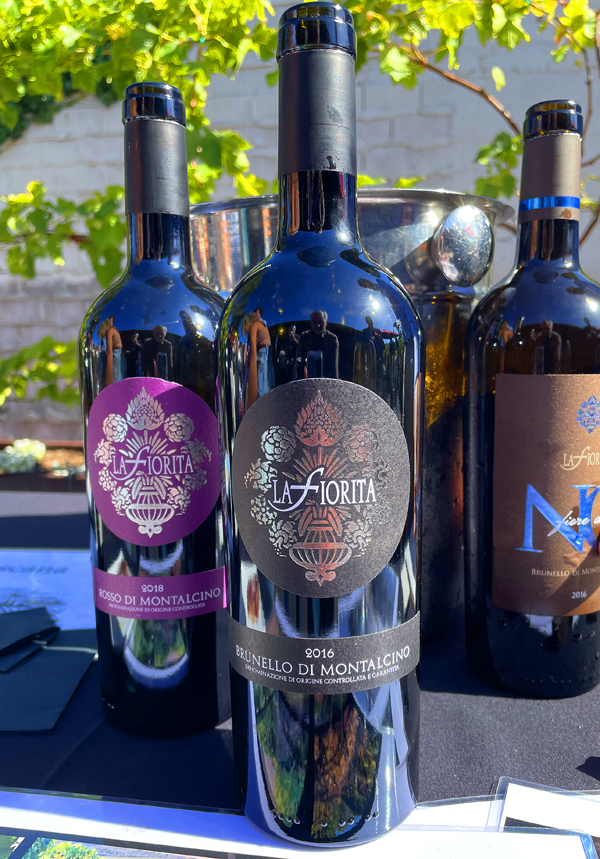
2016 La Fiorita, Brunello di Montalcino DOCG, Tuscany, Italy.
There’s a lot to be said about these 2016 Brunellos, much has been done already, but they will be talked about for decades and wines like this La Fiorita Brunello di Montalcino are ones that will much more to say in the future, this is a classic or legendary vintage in Tuscany’s most prized region. I tasted through the latest set of wines from Natalie Oliveros at La Fiorita, the two Brunellos, including this fabulous bottling, both of which were stunning, from this highly acclaimed 2016 vintage, as well as Fiorita’s 2018, value packed, garnet and ruby edged Rosso di Montalcino, which I reviewed on release last November. This dark and powerful Brunello flows across the palate with layers blackberry, plum, cherry and earthy mulberry fruits along with sweet cedar, anise, dusty spices, shy delicate florals, tobacco leaf and a touch of fig, and while taut and youthful there’s an expansive mouth feel and impressive length already. The nose is slightly subdued at this stage, but the wine as a whole opens up brilliantly and you can easily see this flagship effort from Oliveros has tons of potential and it should provide even greater rewards in the future, with cellaring, look for this year to age gracefully, like a Bordeaux, for 10 to 15 years easily. While some of the Brunello zone is on volcanic soils, the La Fiorita Brunello di Montalcino DOC comes of all organic Sangiovese Grosso (Brunello clone) vines that are set on Tufo and galestro soils, comprised of clay and limestone, giving it plenty of terroir driven (with a chalky mineral) character, a serious structure and concentration, as this beauty shows. This wine saw 36 months in wood, Slavonian oak casks, plus 2 to 4 months in concrete settling vats, after blending the select lots, before bottling, then 8 months in the bottle before its release.
La Fiorita, as I have noted here, gained a lot of notoriety in 2011 when former adult film star and wine fanatic, Natalie Oliveros, joined forces with Roberto Cipresso, one of Montalcino’s top winemakers who had founded this label back in 1992, and has helped raise the game, now with Vincenzo Pirrone as winemaker, putting La Fiorita in the upper echelon of producers. Natalie Oliveros confidently took over the Estate, and she pushed the shift towards organic viticulture here and in 2014 she planted her Giardinello site, which is showing a lot of promise, as well as adding a forth vineyard, then she turned her attention to her cellars which she modernized into an all gravity fed winery. This Brunello is sourced from three main sites, Poggio al Sole, Pian Bossolino and Giardinello with different exposures that help with balance and complexity here, allowing full ripened fruit and retaining good acidity. The La Fiorita, which I mentioned in recent reviews, winemaking is leaning toward a natural and traditional style, the team employs concrete tanks, some stainless and old wood open top vats for primary fermentation and aged their wines in large Slavonian oak casks to preserve the properties unique terroir influences and personality. Natalie Oliveros born and bred in Northern New York owes a lot of her interest in wine, especially Italian, to her Calabrese “Nonna” grandmother who gave her an education steeped in her family history as well as exposing Natalie to wine and food culture, including making basement wine. Oliveros, formerly known as Savanna Samson, made the transition into her wine career, with humor and humility, overcoming some serious chauvinistic and prejudice issues with hark work and humor, which is something we should admire, as much as her wines, and this 2016 Brunello is the best yet I have tried, I highly recommend these La Fiorita wines.
($83 Est.) 95 Points, grapelive
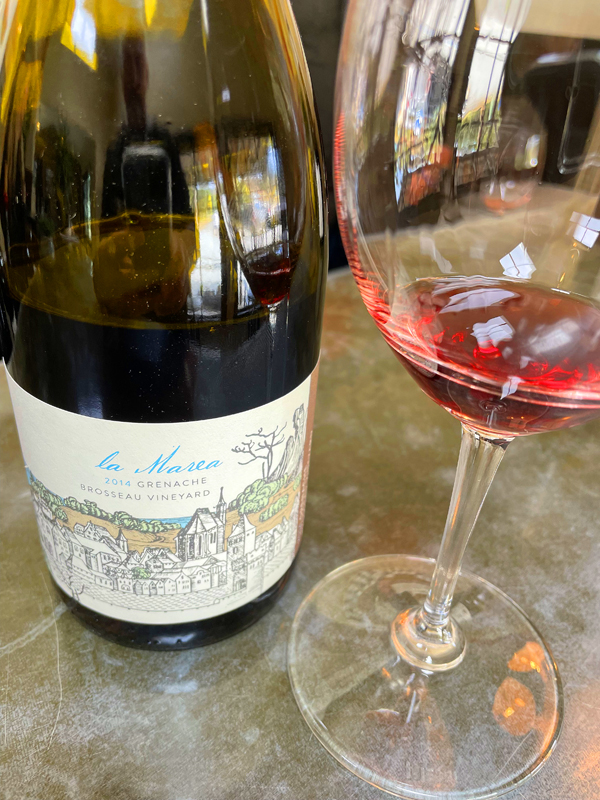
2014 La Marea, Grenache, Brosseau Vineyard, Chalone AVA, Monterey County.
The single vineyard 2014 Brosseau Grenache by Ian Brand under his La Marea label is drinking fantastically well right now, eight years on from the vintage with loads of personality and varietal character showing a dusty dry old world charm in the glass reminding me of some excellent Sierra de Gredos Garnachas. This wine, one of a few library releases that Brand has available, for me was a pleasant surprise and I love Grenache with some age, so I am thrilled that I got a chance to taste it recently, admiring its structure, color and vibrancy of fruit along with the secondary elements that are now in evidence on the medium bodied palate. The aromatics are lovely with brandied red cherries and porporri leading the way in this shiny ruby/garnet Grenache that has a mouthful of earthy plum, raspberry, pomegranate and strawberry fruits that are accented by chalky terroir driven stony background along with dried lavender, cinnamon, pepper and anise. The tannins, which were soft and sweet earlier have found a backbone and offer some fine grip here and the fruit has evolved and left its youthful lushness behind and is embracing maturity with grace, this wine is singing now and especially good with food, which allows the wine’s full depth to reveal itself. Finding and enjoying aged California Grenache is not all that easy, especially a lighter expression, like this LaMarea, but it has its rewards and I’ll be grabbing a few bottles to drink over the next couple of years as it continues to reach its full potential and subtly of form. Everything here excites the senses and the lingering kirsch and savory crunch makes this Brosseau Grenache a joy and a good companion with Mediterranean cuisine as well as hard sleep cheeses.
Ian Brand’s La Marea line, mostly know for its crisp Albarino, is his Spanish inspired collection of central coast offerings that has been refined to include two versions of the Albarino and an old vine Grenache, with the single site (Grenache) expressions now included in Brand’s signature I. Brand & Family series that now includes this Brosseau and the ancient vines at the Besson Vineyard. The Brosseau Vineyard is located in the Chalone AVA and is set on chalky limestone and decomposed granite soils with the Pinnacles National Park and Monument as the backdrop, it is a great source for Grenache and other Rhone grapes as well as Chardonnay and Pinot Noir, all of which Bill Brosseau farms organically. There is really a sense of place in the wines made from Brosseau fruit and this La Marea Grenache is a nicely cellared example of what to expect from this quality and distinctive vineyard that in the rolling hills of Chalone in the Gavilan Mountain Range that sees a wide swing in day to night temperatures that allows for complexity and balance. The Brosseau family began the transition to full organic farming practices back in 2006, the first to be certified in the region, and the results have been impressive to say the least, with Ian’s version of Grenache being a prime example of what this vineyard can deliver, especially in the cooler vintages that give this wine a delicacy that makes it have an almost Pinot Noir like class. Ian has refined his techniques over the years to promote purity with his Grenache getting indigenous yeast fermentation(s) and gentle maceration(s) with a good percentage of whole bunches before being pressed to neutral French oak for aging. The latest release of La Marea Grenache, the 2019 Central Coast, comes from a collection of old vine sites and is an exceptional value, it’s a wine that should be on your radar if you love Grenache in its freshest and juiciest best.
($30 Est.) 93 Points, grapelive
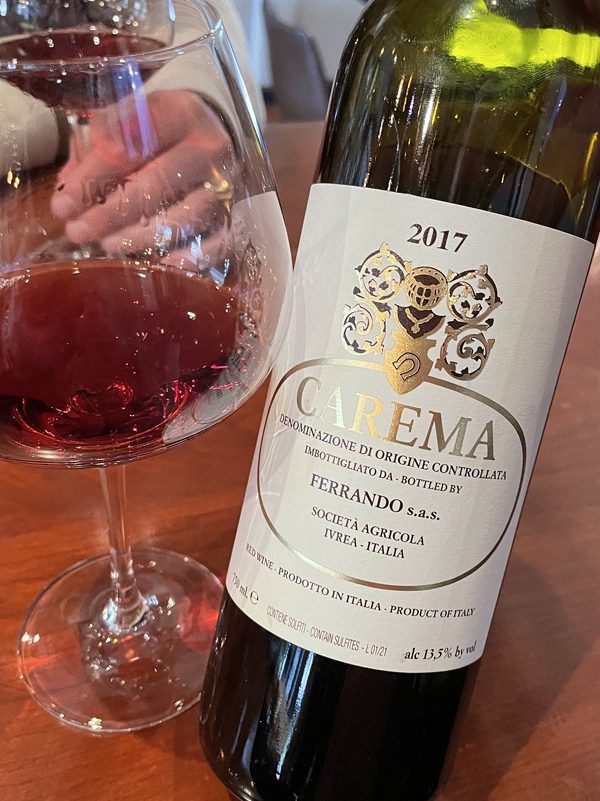
2017 Ferrando, Carema DOC, Etichetta Bianca, Piedmonte, Italy.
The Ferrando Carema is a beautifully crafted wine from high up in the Canavese district, near the lake country in the Alpine foothills north of Torino, it’s a place that has gained attention for Nebbiolo wines lately with wines that are now thought of in the same breath as the fabled Alba and Asti zones, with Ferrando crafting some of the most exciting expressions here. This 2017, which is traditionally made and reveals bright and earthy layers of pure Nebbiolo with a dark ruby and amber edged hue in the glass, it has a lean presence and it is best served with food and decanted to allow for it to fill out and round off the firm tannins. With air pretty details emerge with dried roses, minty herbs and mineral tones coming out on the nose and the medium bodied palate flows with black cherry, damson plum, cranberry and red currant fruits. The background complexity includes hints of anise, leather, cedar and burnt orange, making for a complete and interesting wine that certainly gets old school Nebbiolo lovers more curious about this region of northern Piedmonte. For this wine, Ferrando ferments the 100% de-stemmed grapes with indigenous yeasts in stainless-steel tanks before a gentle pressing to Slavonian oak botti (casks). These Nebbiolo vineyards, many steeply terraced, sit on the mountainside terroir of Carema, in an amphitheater that is not far from Monte Bianco and gets good exposure to the sun, giving these wines a chance to fully ripen, while maintaining vibrant acidity that gives these intriguing reds there life’s blood and age worthiness.The Carema DOC wines cannot be released until they have a minimum of four years of aging with Ferrando’s Etichetta Bianca seeing an elevage (aging) period of 30 to 36 months in mostly used barrels with a combination of sizes being employed to maximize the transparency of the Nebbiolo.
Luigi Ferrando has long been the leading producer of wines from the Canavese region where his family’s winemaking tradition goes back to 1900, making him a fifth generation producer in this region just above Turin, close to the Val d’Aoste in Italy’s top left corner. The Canavese, Carema and Caluso areas are set in beautiful hills, seeing cool nights and long growing season, with ancient soils left from a glacier, all these elements add to the complexity and mix layers of acidity, juicy fruit and mineral tones, making for very interesting wines. The Ferrando family, with a long history in the area, has been selling wines since before modern Italy got established, and there has been wine made here since Roman times. This area of Alto Piedomte is fast becoming a place that savvy wine buyers are looking at, because of the quality Nebbiolo wines, be it here in Carema or in the neighboring areas of Ghemme, Boca and Gattinara. I also really like their dry Erbaluce wines here too, it a little know white grape that was close to extinction less than a generation ago. Erbaluce produces the only white wines of this region, that has now been granted full DOCG status. The Erbaluce di Caluso, is the classic dry version, though there is Erbaluce di Caluso Spumante (Sparkling), and the sweet Erbaluce di Caluso Passito, all of these being exciting stuff. The winery also notes that old historical records show that Erbaluce’s virtues were touted and admired as early as 1606, and I highly recommend the Ferrando example. The winery says the Erbaluce name reflects the grassy, hay-like qualities of its flavors and aromas (Erbe … meaning grass or herbs) and its ability to capture and thrive on the light (Luce) from the sun that sweeps across these terraced hillsides. Ferrando’s parcels have the zone’s Glacial moraine and slate with vines averaging about 50 years old, all of which are hand tended. The appellation of Carema is just 40 acres, making these wines extremely rare, and Ferrando’s versions are on the more elegant and delicate side, as this delicious 2017 shows, but with potential to cellar for many years, best from 2024 to 2035.
($79 Est.) 92 Points, grapelive
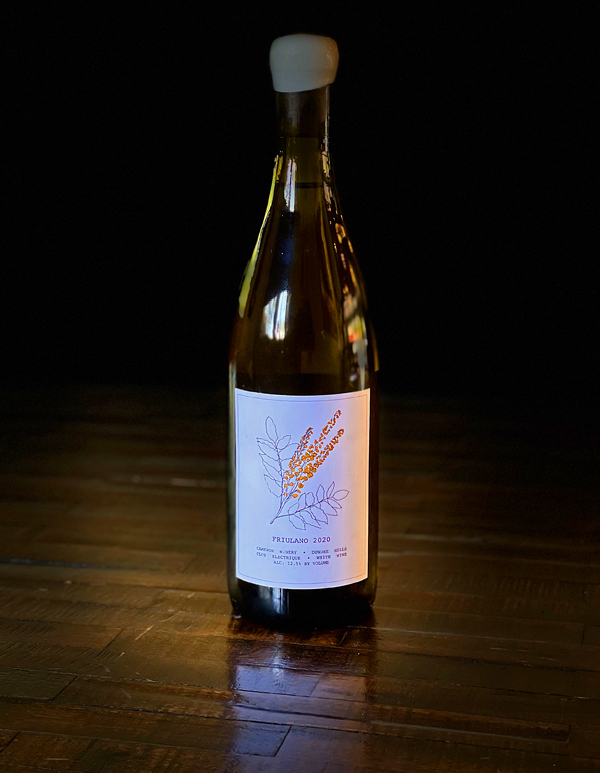
2020 Cameron Winery, Friulano, Clos Electrique Vineyard, Dundee Hills, Willamette Valley, Oregon.
This is ultra serious stuff, one of the most exciting and pleasing white wines I’ve had this year, it is Cameron’s amphora fermented Friulano, part of their Italian inspired lineup from winemaker John Paul’s organic estate vines at his legendary Clos Electrique Vineyard in the Dundee Hills. This rare and complex offering is bursting with energy and mineral intensity, glowing gold and bright in the glass with a sublime play between vitality and texture. This Friulano was whole berry fermented in specially made terra-cotta for 50 days before being pressed to neutral French oak, where it aged a full 14 months, resulting in a fantastic stony white wine that reveals white peach, green apple, lemon zest and quince fruits along with loads of dry extract, almost tannin like and accented by saline infused wet rocks, spices, wild herbs and bitter almonds in a round textural wine that impresses the palate. Unlike some more funky orange wines, this wine is exceptional pure, translucent and rewarding with crystal clean details. Coming from holistic and dry farmed (non irrigated) vines in the Willamette Valley’s Dundee Hills AVA with all of Cameron’s grapes being grown without the use of pesticides, herbicides or synthetic fungicides, making the wine feel more natural and with the Jory (volcanic) soils adding complexity and a spicy element.
One of best kept secrets of Oregon, as I’ve mention here before, are Cameron Winery’s Northern Italian inspired dry whites, especially their Giuliano, which is a blend of Friulano, Pinot Bianco (Pinot Blanc), Pinot Grigio (Pinot Gris) and Auxerrois with a small bit of perfumed Moscato (Muscat) that winemaker John Paul, a huge fan of Friuli and Alto Adige whites, along with this new single varietal Friulano release. Cameron it should noted is legendary for their Burgundy inspired Pinot Noirs and Chardonnays, with their estate bottlings being some of America’s great wines and their lineup of Italian influenced stuff is not far behind these days, in particular these whites, but John Paul also crafts an amazing Nebbiolo and a couple of intriguing skin contact Pinot Gris, one that is traditionally copper hued, a Ramato, and a deeply red version or Gris Rouge. There’s so much cool stuff coming from Oregon these days, it is remarkable and while yes, the Pinots are the state’s main attraction, there’s a lot more to discover up here, as this fabulous Friulano clearly demonstrates! This is not a just geeky hipster after thought, this skin contact wine is not overtly orange wine funky, it is more graceful than you’d expect and I hope hope it is a permanent part of Cameron’s collection. This Friulano would easily shine with briny sea foods, in particular I would love to have another few bottles around of this rarity for oysters, stemmed mussels and or clam dishes.
($45 Est.) 96 Points, grapelive
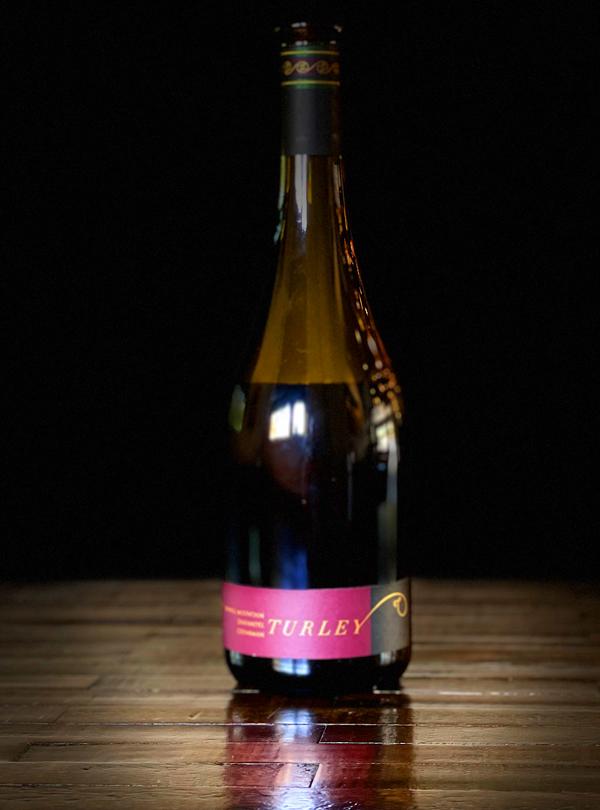
2019 Turley Wine Cellars, Zinfandel “Cedarman” Howell Mountain, Napa Valley.
In Turley’s awesome lineup of wines, it is hard to pick favorites, but this Cedarman consistently is one I am hugely drawn to, with its inky dark purple/garnet hue and mountain fruit core, it always impresses and it just might be Howell Mountain’s best red wine for the money. This 2019 has the classic brambly spice and black raspberry notes that are most common year after year plus a mix of dried lavender and mocha to start along with a full bodied palate that adds plum, a touch of blueberry, creme de cassis, sandalwood and minty herbs. There’s an underlying presence of muscle here, though the fruit is luxurious and supple in the mouth giving loads of pure Turley pleasure and it is a wine that rewards either patience, which obviously I didn’t have, or best with robust foods, though it did even over deliver with my simple Pizza. Without question, these 2019 Turley offerings are epic versions and are some of the most desirable California wines you’ll ever find, impressive now and with rewarding age worthy structures, which this one displays clearly. Since hitting the scene in 1993, Turley has has become one of the state’s legendary producers, focused on Zinfandel, which they took to the next level, and Petite Syrah (as Turley calls Petite Sirah or Durif) and still sets standards today. That said, I must also mention Turley’s exceptional White Coat, a lush California white made from mainly Roussanne, the super rare Grenache from the Pesenti Ranch, which has now become the Tecolote red wine with Carignan added (So rare I haven’t even seen a bottle yet!) and the lighter and vibrant Cinsault, both wines I have been thrilled with in recent years and reviewed here.
The Cedarman is a proprietary blend of grapes sourced from both Rattlesnake Ridge and Dragon Vineyards, which are located at the very top of Howell Mountain in Napa Valley and set on mainly red volcanic based soils. Although primarily Zinfandel, Turley notes that they use a small percentage of Petite Syrah from the Rattlesnake vineyard in the Cedarman as well, that gives a deeper color and provides more backbone. The result, especially in this 2019 vintage, as the winery suggests, is a truly powerful, dense and wild wine, but with exceptional balance between fruit and structural tannin, even at a hefty 15.5% natural alcohol this wine doesn’t feel hot or flabby, it delivers an impeccable performance, largely due the year’s cool season and the natural acidity found out the elevations of the vines. Turley Wine Cellars was founded in Napa Valley by former emergency room physician Larry Turley and now hand crafts about 50 different small lot wines from mostly historic old vine vineyards throughout California, with estate sites in Napa Valley, in St. Helena, as well as Paso Robles and in Amador County. Winemaker and vineyard manager Tegan Passalacqua, who is a keeper of old California traditions, is one of America’s great talents and his collection of treasures at Turley as well as his own wines under the Sandlands label are wines no one should miss. Turley’s Cedarman comes from all organic vines, is native yeast fermented and aged close to 15 months in 80% neutral oak with 80% being French and 20% being American barrels, with a small of new wood. In a perfect world, I would have bought more bottles of this exciting Zin and cellared them, I should think they would be awesome with another 5 to 10 years of age.
($35-50 Est.) 94 Points, grapelive
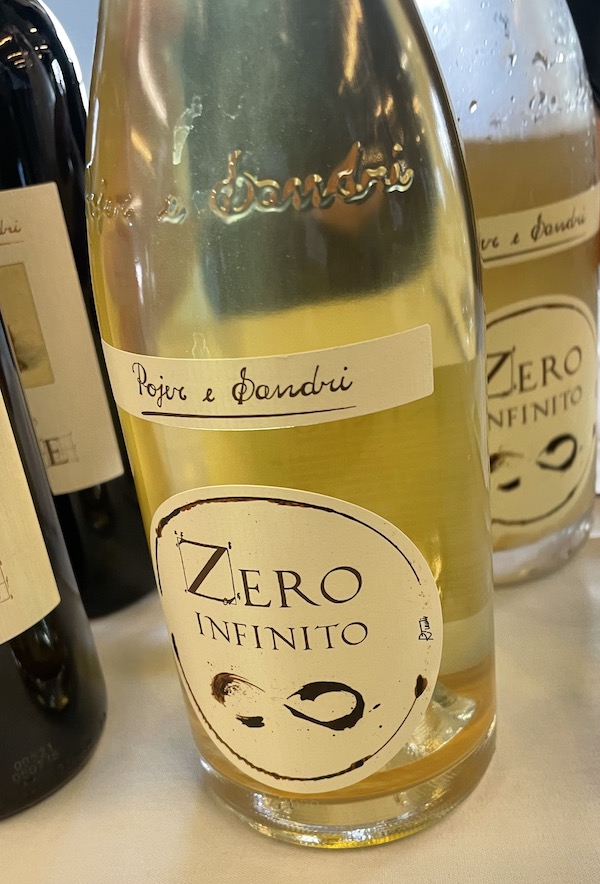
nv Pojer e Sandri, Zero Infinito, Pétillant Naturel, Trentino Bianco Frizzante, Alto Adige, Italy.
Located high up on the steep Eastern side of remote and deep valley above the Adige river in the Trento region, Pojer e Sandri is a fabulous producer of totally unique wines, like this beautiful and refreshing Zero Infinito Sparkling Wine, it is crisp, mineral driven, slightly cloudy and bone dry, a perfect Summer sip bubbly. Made from a rare hybrid grape, the bright and peachy Pojer e Sandri Zero Infinito Frizzante is crafted using the ancestral method or Pet Nat (Pétillant Naturel) style and finished with a non pretentious pop top cap. The all organic grapes here are set on the area’s volcanic origin, porphyry, soils that help give the very aromatic Zero Infinito its distinction and the mineral spiciness it displays in the glass. This release has loads of zesty character and vibrancy with citrus blossoms, the mentioned peach, green apple, lemon and a touch of tropical fruit along with mountain herbs, wet stones and chamomile. The mousse is a bit foamy at first, though it becomes more graceful as you sip on it and the beading bubbles feel nicely electric on the lighter framed palate.
The Pojer e Sandri Zero Infinito is made from 100% Solaris, a disease resistant varietal, that, as the winery says, was born in Freiburg (Germany) back in 1975, it was created to get ripe a bit early and adaptable for these cool high elevation regions. The vines used for this wine are in Maso Rella at Grumes in the upper Val di Cembra that reaches 900 meters above sea level with good south and south/west exposures that allow this cool and breezy site to fully ripen the Solaris grapes. Very few acres of Solaris are planted, but it was the result of many years of research work from France, Germany and even in Russia, without any notable success that I can see, except of course here in the Alto Adige where Pojer e Sandri have been using it for 39 years now. Pojer e Sandri is a holistic farm and winery, absolutely no chemicals are used and they make a wide range of products from speciality spirits, like grappa, to fruit and wine vinegars, as well as some very interesting wines from sweet to sparkling, with a beautiful dry Rosé as well that maybe be they signature wine, made from Schiava grapes. I highly recommend trying these natural wines from Pojer e Sandri, they are not easy to find, but well worth the chase!
($30 Est.) 91 Points, grapelive
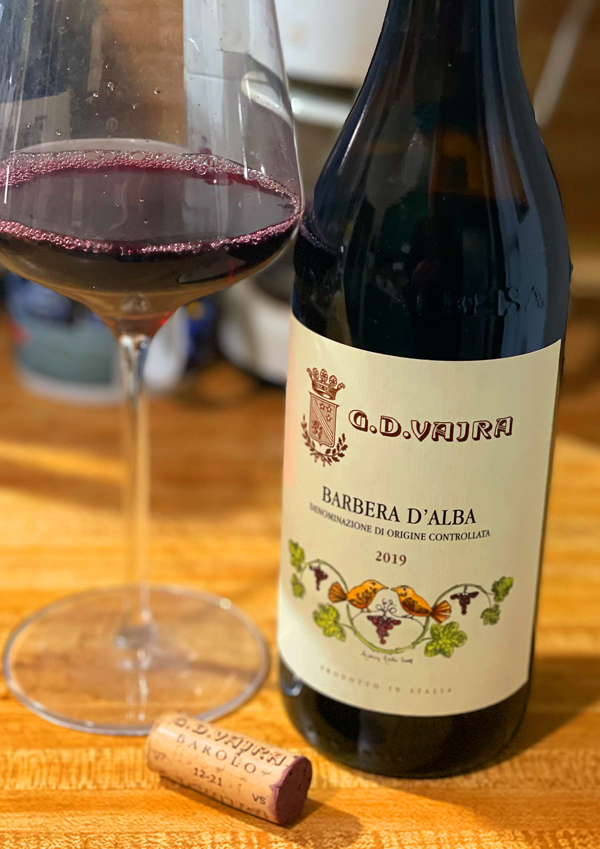
2019 G.D. Vajra, Barbera d’Alba DOC, Piedmonte, Italy.
I love these varietal regional bottlings from Vajra, especially their Nebbiolo, Dolcetto and this beautiful Barbera d’Alba DOC, with this 2019 vintage delivering a deep color and rich flavors with a purple/garnet hue and a dense core of blackberry, currant and cherry fruits along with hints of Asian spices, anise, mineral tones, savory and snappy herbs and a light loamy earthy note. This vintage has a lovely mouth feel and texture as well as a fresh core of acidity that keeps things nicely vibrant, crisply dry and focused, making for a delicious example of Barbera, showing the grape’s best character and it goes brilliantly with food, as it should and it really over performs for the price. This wine, 100% Barbera, is a blend of all organic fruit from estate vineyards growing on a wide range of terroirs with classic marl limestone, clay and sandy soils. The Vajra’s, pioneers of sustainable, organic and holistic farming in Piedmonte, promote, as they say, the biodiversity of both flora and fauna, not just in their vineyards, but also on the winery grounds and the near by forests.
The Vajra’s Barbera d’Alba, which is an outstanding example, is sourced from a selection of estate vines, some of which date back to 1949, with some coming from Bricco delle Viole, the Vajra’s great Barolo Cru and Bricco Bertone, providing this wine with concentration and a prestigious sense of place. Many of these vineyard sites are at higher and cooler elevations that allows for long hang time, that adds to the depth and charm found in this wine. Made from carefully sorted and 100% de-stemmed grapes that was fermented in temperature controlled stainless steel vats with 20 days of maceration, then this Barbera d’Alba DOC saw 12 months on the lees. Prior to release Vajra rests it a few more months in bottle to make sure the wine is fully integrated and harmonious at release. Vajra uses gentle punch downs and, explaining that they rinse he cap for longer periods of time, in order to capture all the fragrance of the grapes, with this bottling going through malolactic fermentation and aging exclusively in stainless steel, that promotes clarity and purity of this Barbera. The recent releases from Vajra are outstanding, of course led by their fantastic Barolo offerings, but even their basic stuff, like this Barbera, is tasty and very rewarding.
($22 Est.) 92 Points, grapelive
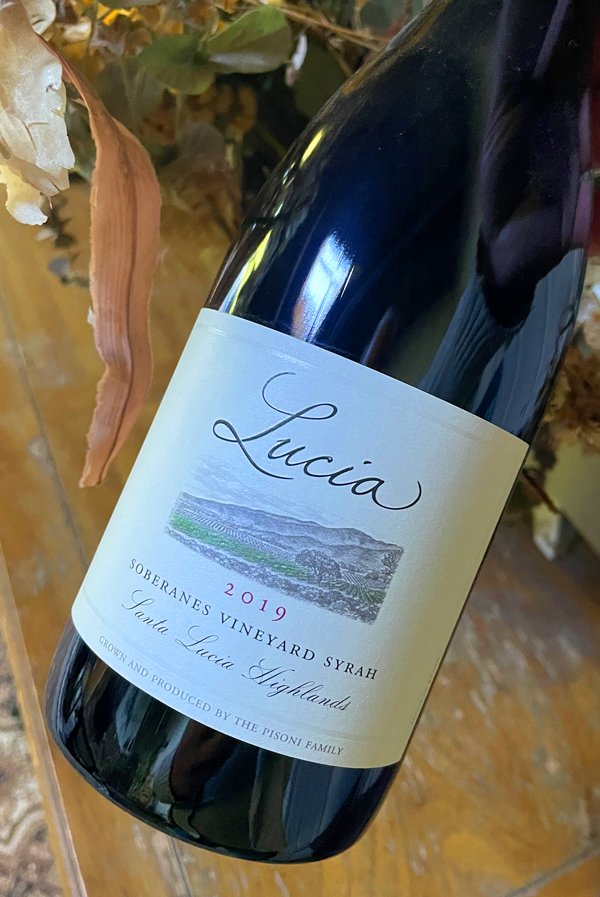
2019 Lucia Vineyards by Pisoni, Syrah, Soberanes Vineyard, Santa Lucia Highlands.
The 2019 Lucia Soberanes Syrah displays a classic deep intense color, blackish purple with dark garnet edges and reveals a heady perfume of crushed violets and lilacs, as well as smoky embers, black fruits and delicate spices before its full bodied palate flows with opulent boysenberry, creme de cassis/currant and sweet plum fruit. This vintage is ripe and well balanced with a lively cut of natural acidity and it adds mocha, black licorice, smoky sandalwood, a subtle meaty element and hint of peppery spice. The 2019 has silky tannins that are well integrated, but will serve this wine well for another decade in the bottle, it is Impressively dense and with a supple mouth feel this year’s Lucia Soberanes Syrah has plenty to admire and it thrills the senses. Winemaker Jeff Pisoni, again proves he is one of the best with his latest set of 2019 Lucia and Pisoni Estate wines, as this one shows, and while we all know that the 2020 vintage fire destroyed all of the red grapes, these 2019s offer exceptional quality and it is best to get as many as you can. This wine is pure class, and it certainly re-enforces my personal belief that Syrah here can be the equal to Pinot Noir in quality, if not better, as it loves the sandy decomposed granite soils. The Soberanes Vineyard is the part of the joint venture between the Pisoni and Franscioni families that has brought international fame to this region, with the Garys’ being instrumental into establishing the Santa Lucia Highlands. The Soberanes, with 33 or so acres of vines, has Chardonnay and Pinot Noir planted there, which produce some awesome wines under the Roar and Lucia labels, but the Syrah should not be overlooked!
The Sobernes Vineyard is a fantastic site and is the Pisoni family’s youngest vineyard in the Santa Lucia Highlands, set over the next ridge from the famed Garys’ Vineyard, but higher up, its on a sandy loamy hillside with an almost constant cool breeze, delivering a long hang time and incredible fruit concentration. Soberanes just might be the most exciting plot in the Santa Lucia Highlands right now and as I’ve said in the past, this Lucia Syrah shows why, it’s planted with an excellent set of clones, like the Alban clone (Cote-Rotie) for this Syrah, and makes for one of the best wines in the region. Not only is this Pisoni made wine stand out, also check out Cattleya, made by Jeff’s wife Bibiana Gonzalez Rave-Pisoni and the Sandlands Syrah by Turley’s winemaker Tegan Passalacqua for comparison, these are some of the best Syrahs in California, both also from the Soberanes Vineyard. The Pisoni’s say that 2019, like the 2018, cultivated another excellent year for grape growers and winemakers alike and this wine is the result of this exceptional vintage. The surprise here is the satiny, elegant and seamless style of this wine, that is was done with 100% whole bunches, such is the grace found here in such a youthful Syrah. Jeff Pisoni employed very gentle techniques, using carefully hand-picked and sorted grapes that were fermented with native yeast and aged in carefully selected French oak barrels, with about 30% new wood. Pisoni has a state-of-the-art winemaking facility in the Santa Rosa area and it exclusively uses gravity flow to move the wines, ensuring quality, with total control of the farming and winemaking process from start to finish. This wine, one of my absolute favorites, has lots more to offer and will evolve nicely for the next three to five years, best to enjoy it with robust cuisine and friends.
($60 Est.) 95 Points, grapelive
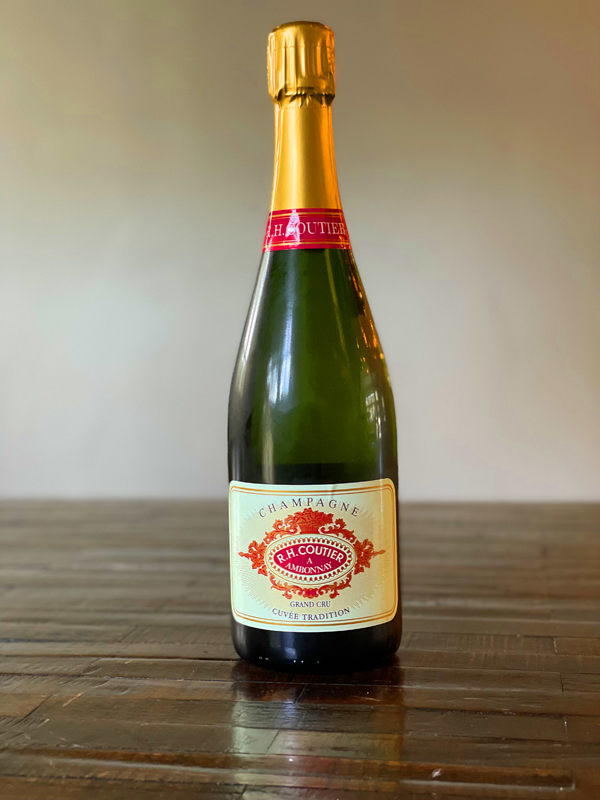
nv R.H. Coutier, Cuvee Tradition, Grand Cru Brut Champagne, Ambonnay, France.
The unique and individual personality of R. H. Coutier’s Cuvee Traditional Grand Cru Brut make it irresistible, it is impeccably well crafted and luxurious and it’s price make it a must have grower producer Champagne, especially this latest disgorging which is graceful and elegant in the glass with a fine beading mousse. There’s a lot to like with these Coutier bubbles, usually I gravitate to their Rosé and the more rare Blanc de Blancs, but the Tradition Brut has a ton of charm and is easy to love, it goes with anything you might think of food wise, as well as being a sublime celebration sipper. I opened this bottle to share with childhood friends and while we had plenty to talk about, this Champagne did make us pause in gratitude and really enjoy the moment. The Courier family is based in the Grand Cru village of Ambonnay, which is legendary, as it produces some of the greatest Champagnes in the world. Located in the heart of the region’s prestigious Montagne de Reims, vigneron René Coutier’s family has been part of the fabric here in this small prestigious hamlet since 1619, and René is the fourth generation to run and work the family estate, along with his talented son Antoine, who is making a name for himself now. No wood is used here, on the Tradition Cuvee, relying only on stainless steel for fermentation and aged, with the grape clusters being pressed with their stems, as the winery explains, to act as a natural filter, facilitate drainage, and to best obtain clear juice from the Pinot Noir. They add that to best safeguard the freshness and natural acidity of the Champagnes here, only about half of the Coutier wines go through malolactic fermentation, although it also depends entirely on the vintage.
René’s father was the first in the village to plant Chardonnay here in 1946 and it has given Coutier added depth and character over the years and is very important for the house style. This has come to define the Coutier family’s collection, as seen here in the Tradition Brut, which as the winery notes, marries the traditional richness of Ambonnay’s Pinot Noir (70%) with the pure, racy crispness of its Chardonnay (30%). The brilliant R. H. Coutier Grand Cru Brut Tradition, coming estate grown grapes, from this Pinot leaning village of Ambonnay, that has more clay in the soils, along with the classic limestone, making for a structured, concentrated and textured expression. Coutier is an all organic and grower Champagne and they farm with great respect for the land and the environment. This effort impresses for its depth and decadence, while being also crystalline pure and full of energy, it’s wonderfully dry on the palate and rich in personality. The youthful Antoine Coutier and team are making some amazing all Grand Cru grower fizz these days, making a tidy collection of sparklers, in particular this Brut Tradition, with, as I’ve mentioned, the most recent disgorgement is performing beautifully. The nose here, as always, has plenty of yeasty charm and white flowers with a hint of wet stones and short bread biscuit, which leads to an opulent palate with it’s ultra fine mousse, providing class and energy, and it has a nice vinous textural elegance, showing an array of classic flavors, apple, lemon and doughy biscuit notes with a hint of chalk and subtle hazelnut. I really can’t find a flaw in the latest releases here and the low (sugar) dosage(s) allow the these wines to shine, displaying their crisp and dry detailing and lets the chalky terroir to take the stage. Deeper fruit density comes through with food, and this wine went great with salmon in pastry, I highly recommend this quality and value packed Champagne.
($45 Est.) 92 Points, grapelive
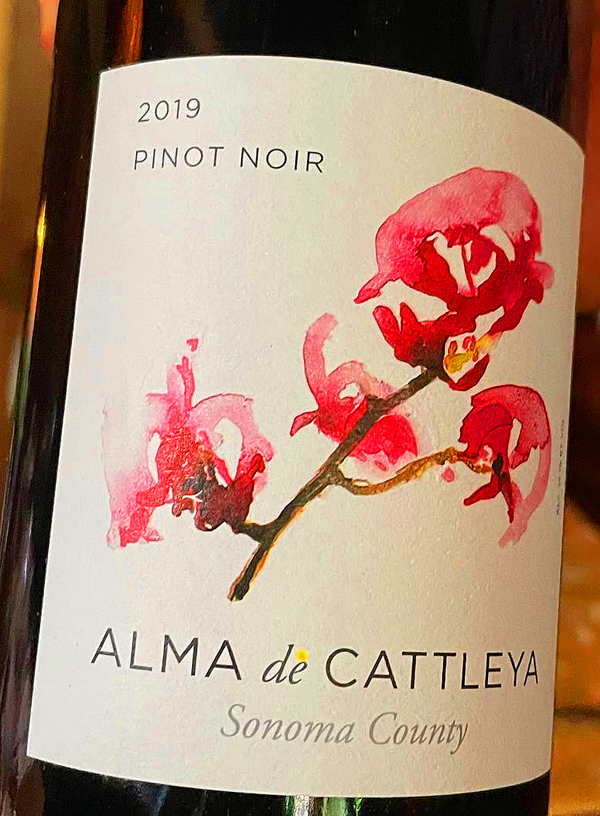
2019 Alma de Cattleya, Pinot Noir, Sonoma County.
Bibiana Gonzàlez Rave-Pisoni’s second label Alma de Cattleya is a rewarding, regional and value packed collection of wines, especially good is this beautiful Sonoma County Pinot Noir, this 2019 is silky, deep in flavor and well crafted with black cherry, red berry and plum fruits leading the way on the smooth and richly fruited medium bodied palate. This is excellent stuff with a subtle perfume and precise use of smoky/toast French oak, allowing for beautiful purity and capturing the subtle nuances perfectly, this is easy to love and it goes great with food. This 2019 has a touch of spicy accents with cinnamon, a touch of shaved vanilla and some earth charm in the background, this vintage is real crowd pleaser from one of California’s top winemakers. This delicious Pinot was the perfect choice with a comforting meal at Big Sur’s famous Deetjens restaurant, where it held up brilliantly with a range of dishes, including my hand made pasta and grilled shrimp and the herb crusted chicken. Bibiana Gonzàlez Rave-Pisoni has a great touch with Pinot Noir and this wine is very compelling stuff, it delivers no end of pleasure in the glass, it is hard to find this kind of quality for the price that she sells this wine for, making it an excellent choice on bistro wine lists, and is a sublime wine for by the glass pours, as I had it as.
The Alma de Cattleya (soul of the orchid) line is past of Bibiana’s signature Cattleya mostly single vineyard collection, where she features small handcrafted wines from top vineyard sites, one of which is her husband Jeff Pisoni’s family owned Soberanes Vineyard, where she gets her Syrah from and from which she produces one the state’s best wines. This Alma de Cattleya lineup includes, Sauvignon Blanc, Bordeaux varietals, Chardonnay and this Pinot Noir, all of which offer a big bang for the buck. For this wine, Bibiana sources the grapes from selected vineyards in the Sonoma Coast and Russian River Valley AVAs and she ferments them in open top stainless after a cold soak to extract the beautiful dark ruby color, this 2019 saw gentle hand punch downs and a soft pressing before the Pinot was barreled down for 16 months. Favoring vines close to the ocean with its cooling influences allowed for a long growing season and concentration, but with plenty of bright acidity and for this vintage this wine saw primarily clones 114, 115, 667, 777, 828 and a touch of Pommard and Wadensvil (2A), the old Swiss clone for complexity. Bibiana Gonzàlez Rave-Pisoni, originally from Colombia, as noted in prior reviews, has an impressive resume from Bordeaux to Cote-Rotie and mostly as the winemaker at Wayfarer, and she also partners her husband, making a thrilled set of Sauvignon Blanc for the Shared Notes label, her own wines are incredible and I highly recommend checking them all out.
($30 Est.) 92 Points, grapelive
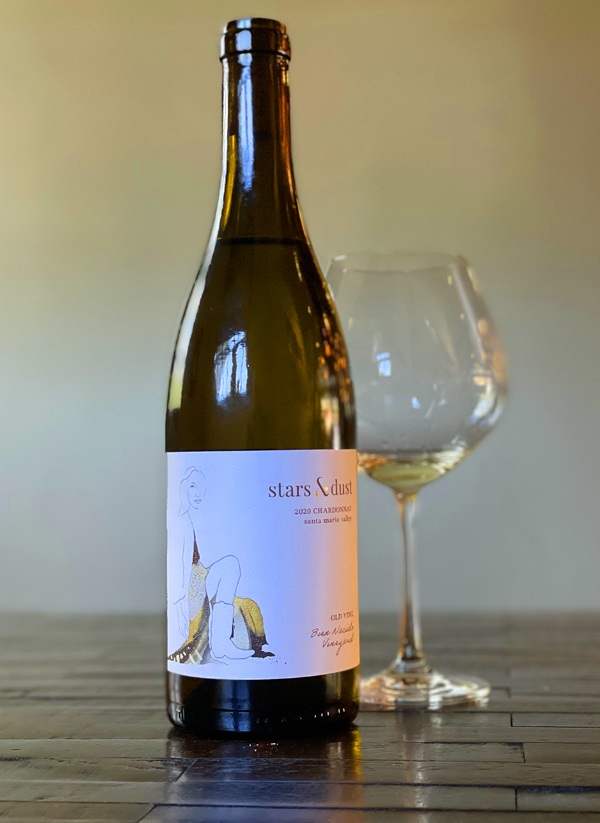
2020 Stars & Dust, Chardonnay, Old Vine, Bien Nacido Vineyard, Santa Maria Valley.
Just 80 cases were made of this gorgeous Old Vine Bien Nacido Chardonnay by Stars & Dust which was crafted using 100% handpicked vineyard designate old vine Chardonnay grapes, picked in the middle of the night, with lower Brix to promote mineral and bright fruit intensity. It was fermented and aged 10 months in 25% (one) new Damy French oak with the remaining wine done in neutral barrels. The well rounded and full palate delivers a California richness of texture with the vitality and low alcohol you would expect from a fine Meursault or Corton-Charlemagne with fresh lemony tones and wet stones accenting classic golden apple, pear and white peach fruits at this brilliant wines core along with clove spice, lime blossom, kiwi, a hint of campfire marshmallow and creamy/toasty vanilla. At 12.4% natural alcohol and with bracing acidity in the background this elegant Chardonnay goes great with food, like baked salmon in pastry that I had it with, and should age nicely too. Winemaker Nikki Pallesen says that these 43 year old vines are not messing around and are true cellar gems, adding that she could not be more pleased, this is a magnificent effort. The Bien Nacido vineyard has diverse soils that add to the quality here, with limestone, shale, uplifted marine volcanics and loam all playing a part. This is a wine that should please a wide range a Chardonnay enthusiasts, especially those that enjoy Premier and Grand Chablis and the wines of some of Burgundy’s new generation of stars. The Stars & Dust Old Vine Chardonnay has that awesome contrast between opulent fruit density and electric acidity providing vivid clarity and endless excitement in the glass.
Nikki Pallesen’s, formerly of Liquid Farm, new label Stars & Dust founded in 2020, focusing on small production, Santa Barbara County wines, featuring what she calls mineral driven Rosés, Single Vineyard Old Vine Chardonnays and a few fun Reds is just releasing her two Chardonnays, this one her most prized bottling to date, sourced from the historic Bien Nacido Vineyard in the Santa Maria Valley and the Hilltop Vineyard which comes from the Sta. Rita Hills AVA. The set of Rosé bottlings, released last year, and which I reviewed already are two of the most exciting dry pink wines in California, one is made from 100% Grenache and the other one, is crafted from 100% Mourvédre and done in a Bandol inspired style, comes with a serious demeanor and a racy intensity that really grabs your attention and it should aged well too. Pallesen says of her new project’s first releases, the Rosé Twins, are two distinctly different wines coming from two different Rhone varietals, two different vineyards and two different AVA’s (albeit only 20 minutes away from each other, as Pallesen notes) and that her Chardonnays are true old vine wines of depth and complexity. I had been highly anticipating this pale golden wine and it did not disappoint and (it) exceeded my own expectations, fans of Whitcraft, Tyler, Drew, Kutch, Arnot-Roberts, Samuel Louis Smith and Ceritas will very much enjoy this version of Chardonnay, that has a Wente clone feel to it, as well as California classic fans that like Mount Eden, Hanzell and Stony Hill! I can’t wait to Nikki’s Hilltop Sta. Rita Hills Chard next, as well as get the Rosé when the 2021 vintage comes out, which is coming soon.
($54 Est.) 94 Points, grapelive
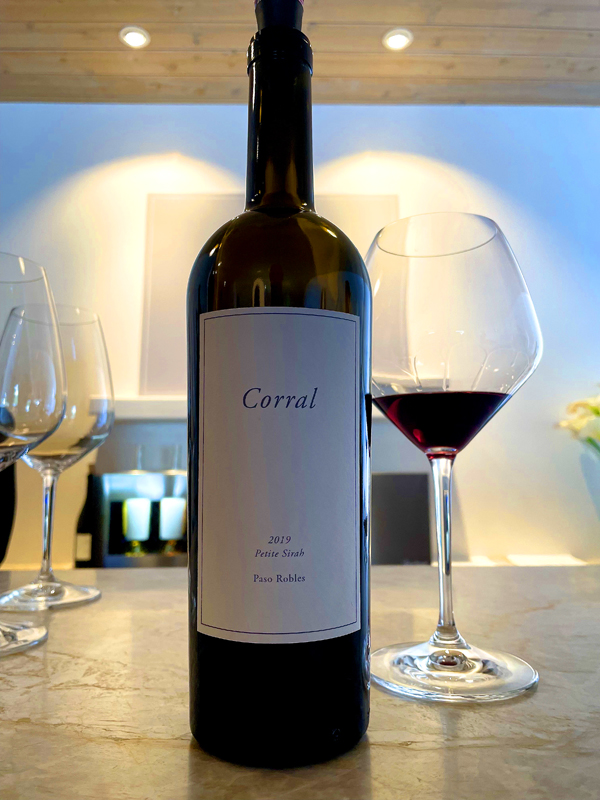
2019 Corral Wine Co, Petite Sirah, Paso Robles.
The latest release from Corral Wine Co is their dark purple teeth staining 2019 Paso Petite Sirah, a wine with tons of personality, fruit density and a Cabernet like structure, it shows an array of blackberry, blueberry, plum and currant fruits along with floral tones, a chalky note, bitter coco, toasted coconut, smoky vanilla and lingering acacia. The vintage has plenty of life and freshness with supple tannin, a full bodied and enough acidity to make all the flavors pop and stand out with heightened details that certainly hints towards a long life and happy future in the bottle, but it might be tough to let this one rest peacefully for any amount of time as it is so good right now. This Full bodied effort comes from a vineyard on Paso’s western side where you get the limestone soils and some cool breezes, making for compelling and balanced wines, with hedonistic richness, as this Corral Petite Sirah displays to perfection. Owner Larry Bell and winemaker Adrien Valenzuela did this small batch wine with de-stemmed grapes and a cool fermentation before aging it in a combination of 50% new American oak and 50% neutral French barrels for a full 22 months, to allow the fruit to shine and give it just the right amount of opulence. This all American offering from Corral will thrill the Petite Sirah fans and adds a full throttle wine to their lineup, it will go great with a robust meal and or BBQ, it is a very different animal to their set of fine and more delicate Pinots, but one that impresses for the style, it reminds me a bit of Jaffurs and not far off Turley’s Pesenti Vineyard version, which I loved and reviewed earlier this year. Corral’s ultra fresh Zabala Sauvignon Blanc is a great starting point for this winery, it can be used as an aperitif and palate cleanser or served ice cold by the pool, after which comes the stony, but creamy Chardonnay that is also easy to use, then you get into the Pinots here, mostly from the SLH, along with the more taut and delicate Estate bottlings, that I enjoy most. Then you get Enz Vineyard, Lime Kiln Valley Zinfandel and this tasty Petite Sirah to finish out this alluring collection.
The Corral Wine Co was founded in 2017, in the Bell family barn in Corral de Tierra, a little area between Carmel Valley and Salinas, when they barreled down their first batch of estate Pinot Noir from young vines they planted on the property. They are still in that same barn, but now they are a thriving local label that has created quite buzz, especially with their new tasting room in the Carmel Valley Village, right next door to Parsonage, giving them a place to showcase their quality set of wines. They have made even more wines from a selection of varietals, including the highly popular Sauvignon Blanc, a lovely Chardonnay, a Rosé of Pinot Noir, a complex and delicious set of Pinots from some of the best grapes on the Central Coast, including their tiny estate bottling, which is my favorite, as well as a special native yeast version, plus a Zinfandel and this inky and structured Petite Sirah. The 2018 vintage, was the debut for winemaker Adrien Valenzuela, who is now a partner here at Corral, and the new releases here have really shown his skills, these are authentic and high quality efforts, especially the Pinots and the whites which saw a perfect year in 2019, though I must say I was also very impressed by his Zinfandel and this Petite Sirah, that I’m focusing on with today’s wine of the day. As mentioned, a Salinas and Monterey County native, Valenzuela is one of hugely talented new generation of home grown local winemakers that are starting to make a name for themselves. Adrien, who was studying biology and nursing, took an internship at Estancia and caught the wine bug, and his first solo wine that he made in his garage turned out to be a hit at the Mid-State Fair, taking a Gold Medal and after working for a big wine company for a few years he got his chance with Larry Bell here at Corral, where is talents have been more fully realized, in particular with his 2019 lineup, and the rest is history. I got a chance to taste cask sample of the 2021 vintage and there’s a lot to look forward to at Corral and some very exciting stuff, including a new Cabernet Sauvignon, in the pipeline, this is a winery to keep an eye on.
($52 Est.) 93 Points, grapelive
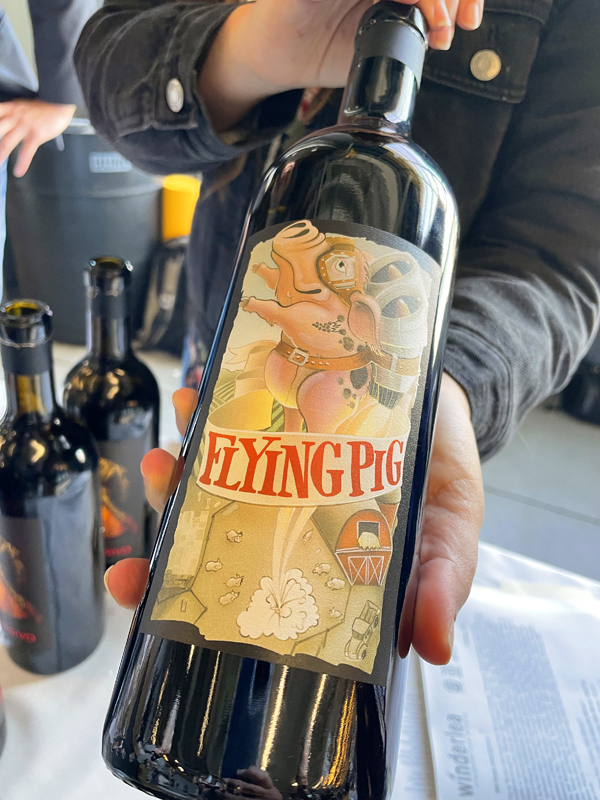
2018 Cayuse Vineyards, Flying Pig, Red Wine, Walla Walla Valley.
The stunning Cayuse Flying Pig red is made from 45% Cabernet Franc, 44% Merlot and 11% Cabernet Sauvignon coming from Christophe Baron’s En Cerise Vineyard that was planted back 1998 with Syrah and Bordeaux varietals with a high percentage of Franc which is exceptional in this wine, don’t let the weird or playful label fool you here, this is incredible stuff. This 2018 is deeply colored, perfumed and exotically spiced with earthy black fruit fruits and is rawly sexy in the glass, in a way that blows away most Saint-Emilion offerings right up there and including some very famous Chateaux, people that love and admire Cheval Blanc might want to look away! The Flying Pig, which typically sees between 40 and 60% new wood is beautifully opaque with a black/purple hue and has classic Cayuse, somewhat meaty presence, with a bouquet of mineral, crushed berries, Asian and sweet baking spices, incense and sandalwood that leads to an opulent full bodied palate black cherry, plum, blackberry and black currant fruit with an underlying feline power and tannic structure. The smoky wood is in perfect harmony with the density and luxurious fruit and accents of creme de cassis, tobacco, bell pepper, liquid violets and anise add to the complexity in this awesome wine. Air and time prove very helpful to fail out all areas and give a glimpse of the potential greatness this wine most definitely possesses, it adds blueberry compote, mint and sweet cedar to the fine mix of heady flavors, this Flying Pig will go decades in the bottle. The Flying Pig, is to Cayuse, for Bordeaux varietals as Bionic Frog is to Cayuse, for Syrah, exceptional quality and flair in the bottle and with a playfully strange label!
En Cerise, translated, means “cherry,” which is highly appropriate since this 10-acre vineyard was a cherry orchard in its former life and is set on the severely stony soils that first caught Christophe’s attention in 1996, and helped him make the decision to make wine here in the utterly remote area of Oregon, resulting in highly stressed vineyards that average a yield of only two tons per acre. While of course Syrah is the dominant fruit here, as Cayuse is most famous for, there is awesome Cabernet Franc grapes grown here, as well as Cabernet Sauvignon, Grenache, Merlot, Tempranillo and a little Viognier, which is mostly co-fermented into the famed Syrah bottling, making up the balance. The Flying Pig and Cayuse’s other Bordeaux blend the Camaspelo that come from these grapes are uniquely different animals, with this Flying Pig being a bit more pretty and with lively acidity that gives it a lovely lift, while the Camaspelo is wildly raw, gamey and leathery, at least when I’ve had it and is for me less sultry seductive. The Flying Pig, which is aged somewhere between 18 and 24 months in barrique, keeps your attention for ages and the finish is forever with a combination of the fruit and floral notes lingering on and on, and it should gain a ton of extra dimension with age, there’s no question this is one of the most compelling Cabernet Franc led new world Bordeaux blends I’ve ever had, it joins Dalla Valle’s Maya and Favia is this rarified company. Tasted at the Slow Wine 2022 tasting in San Francisco along with Baron’s Horsepower Syrah, the Cayuse Armada God Only Knows Grenache and the Impulsivo, the Tempranillo based bottling, all of which were stunning, proving this winery’s staying power.
($150-240 Est.) 97 Points, grapelive
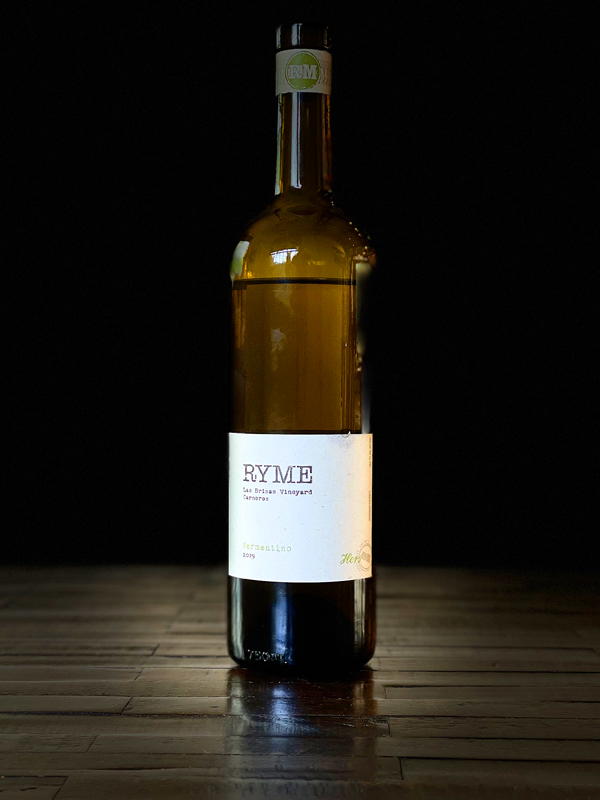
2019 Ryme Cellars, Vermentino “Hers” Las Brisas Vineyard, Carneros, Sonoma County.
Ryme’s whites are especially delightful, and this crisply dry and mineral driven 2019 Las Brisas Vermentino is aging nicely gaining a bright gold hue in the glass and delivering loads of lemon zest and tart white peach fruit leading the way along with bitter almond, a light herbal note and orange blossoms, making for a bracing light to medium bodied white that is salty fresh and delicately aromatic that gets the mouth watering. There is a bit of mature elements here that add to the complexity, it almost has a Riesling like flinty note, plus a whiff of paraffin and country French olive soap, which is more pleasant in flavor than the words can detail and the wine’s transparent personality is very welcome here, allowing a clarity of form and it’s just refreshing in vitality. At this stage it still over delivers quality wise and is great with lighter Summer food choices, in particular shell fish and Mediterranean cuisine. The Ryme Hers Vermentino is the more traditional example, while the Ryme His Vermentino is a skin contact, almost orange wine style with more body and savory tones. Winemaker, Megan Glaab, explains that the “Hers” with a green label is harvested for freshness and energy, which is clearly on display here. It is whole cluster pressed and bottled early from grapes grown in the cool foggy Las Brisas Vineyard, located on the Sonoma side of Carneros AVA. The vines here are situated on sandy silt and gravel at the end of the Petaluma Wind Gap and just off San Pablo Bay, that gives this wine its dynamic energy and racy citrus.
Ryme Cellars, founded in 2007 in Sonoma County, is led by Ryan and Megan Glaab, who met in Australia working as seasonal cellar hands at Torbreck Winery and fell in love, getting back together when they moved back to California. They have much more experience than you’d expect from such a couple still in their youth, having between the two of them an impressive resume already, they have worked at an awesome set of wineries, including Pax Wine Cellars, Peay Vineyards, Sine Qua Non, and even Marcassin, owned by the legendary Helen Turley. The Glass’s make a wide range of unique offerings, focusing on their two HIs and Hers Vermentino(s), a Ribolla Gialla, a Cabernet Sauvignon, a Cabernet Franc, which is one of their signature reds and Aglianico bottlings, that have become my favorites in their lineup, as well as a Sparlkling Carignane and an excellent Fiano. These faithfully crafted Southern Italian varietal offerings, including this Vermentino, are some of the best versions in California and I highly recommend them. This Hers Vermentino was whole cluster pressed, settled clean to get the green phenolics out, and then naturally fermented, as the Glass’s note, without inoculation in a combination of old neutral French oak barrels and stainless steel, with this wine undergoing a spontaneous partial malolactic fermentation to a touch of texture and presence. I really enjoyed this vintage and ordered some of their new 2021 recently, along with Ryme’s outstanding Rosé of Aglianico, which I adore, and the latest release of Russian River Cab Franc. I look forward to reviewing them soon, though I suggest not waiting and getting some the Ryme as soon as possible, as their wines sell out fast.
($25 Est.) 91 Points, grapelive
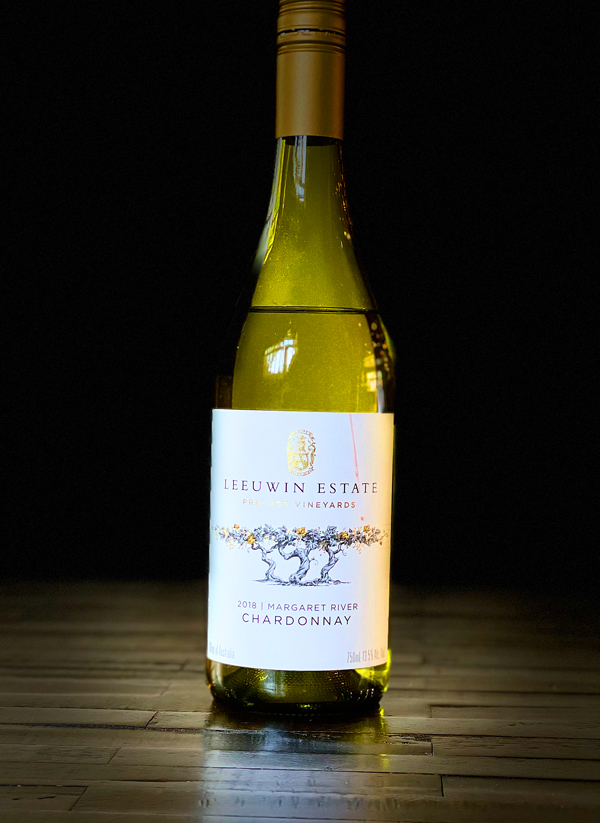
2018 Leeuwin Estate, Chardonnay “Prelude Vineyards” Margaret River, Western Australia.
The 2018 Prelude Vineyards Chardonnay from the historic Aussie label Leeuwin Estate, owned by the Horgan family who pioneered this region not far from Perth, is drinking wonderfully well and aging beautifully with fine aromatics, mineral notes and textural grace, but still showing loads of vigor and vibrant acidity with classic apple and Bosc pear fruits leading the way along with pineapple and white peach coming through on the almost chalky medium bodied palate. The wine opens up well gaining richness and depth, without any flabby elements emerging, it turns round and subtly creamy, but remains balanced with a touch of saline, wet rock, clove spice and it makes for a Chardonnay that plays well with food, especially with fleshy fish dishes and or soft farm cheeses. With food, there is an orangey, citrus blossoms and honeysuckle delicacy that comes through, as well as having some nice hazelnut completing the impressions of flavors, this is solid effort again from Leeuwin and brings back my memories of my first experiences with these Margaret River wines. The barrel aged Prelude Chardonnay, the second label for Leeuwin, sees up to 40% new oak, but it is very restrained and never becomes overt and the wine does not go through malolactic fermentation to preserve freshness and energy, all of which puts this Aussie Chard somewhere between France and California in style with its own distinct personality.
The famed family owned, Leeuwin Estate, which is one of the five founding wineries of the now famous Margaret River region of Western Australia, is mainly known for their amazing Artist Series Chardonnay, that usually ranks in the world’s top 25 wines if not higher, though they also do some fantastic Bordeaux inspired red wine as well. Interestingly, it was our Napa legend, Robert Mondavi that first identified the potential here, a what would become the site of the Leeuwin vineyard, believing it to be an ideal terroir for the production of premium wine and he even provided an early mentorship to owners Denis and Tricia Horgan. He encouraged them all along the way, as they note, as they worked hard turning their remote cattle ranch and farm into what would become the famed Leeuwin Estate. The winery first released wine back in 1979 and was an almost instant hit with that Art Series Chardonnay wowing wine critics around the world, including as the winery remembers, Decanter magazine, which surprisingly gave the wine, the 1981 vintage, their highest recommendation to Leeuwin, putting along side wines from famous addresses in places like Montrachet! I’ve been enjoying the Leeuwin wines since the late 1990s and have long ben a fan, though I can’t always enjoy them here in California and I can’t often afford the Artist Series bottlings, so I was happy to find the lightly tropical Prelude Vineyards Chardonnay to catch up with the more recent releases, it especially pleases me that it is a fabulous value too. Once mainly, only highly regarded for Chardonnay and Cabernet, Leeuwin also does a Brut Sparkling Wine, Sauvignon Blanc, Riesling and a cool climate Shiraz, all that deserve attention too.
($25 Est.) 91 Points, grapelive
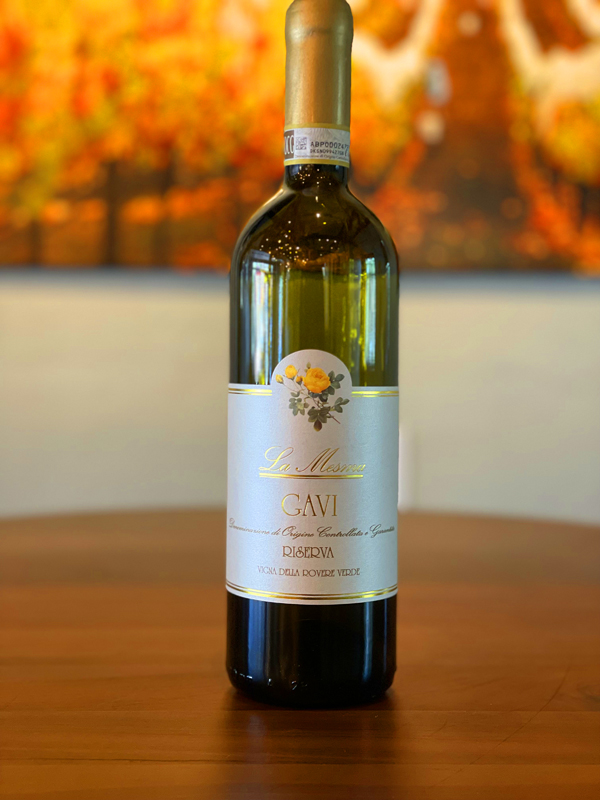
2017 La Mesma, Gavi Riserva DOCG, Vigna Della Rovere Verde, Piedmonte, Italy.
I don’t know about you, but this was the first time I’ve seen and tasted a Gavi Riserva and it was incredible, with mineral driven intensity and even with its age it was filled with electric vibrancy and clarity of form with bright citrus beaming throughout, but also showing enough leesy roundness to have an almost white Burgundy like presence in the glass, this La Mesma is very tasty stuff. This La Mesma, who’s cellar is in the small Piedmonte local of Tassarolo, 2017 Gavi Riserva, 100% Cortese, made by winemaker Massimo Azzolini, is a rare single vineyard wine that saw hand harvested grapes and was vinified in cement tanks with a temperature controlled fermentation, then raised for one year in the cement and then another six months in the bottle before release, following the DOCG rules to qualify for a Riserva. This vintage, which was a warm one, shows loads of lemony character along with hints of muskmelon, white peach and zesty kumquat, as well as wet stones, an herbaceous note, verbena and green almonds in a golden and straw colored medium bodied white. The Azienda Agricola La Mesma, that was founded in 2003, is an organic certified winery following strict organic and holistic practices, they are faithful stewards of their land and promote biodiversity to grow better grapes, as this lovely wine clearly proves is the right way to farm. A leader in the Slow Wine movement, La Mesma’s Gavi wines have been recognized as some of the top sustainable wines in Italy and they are committed to the best environmental practices, including going as green as possible, even adding solar panels to reduce their carbon footprint, as well as trying to be socially conscious by hiring and training displaced peoples, that had to flee war zones.
The La Mesma winery is a small family run business being owned and managed by three sisters, Paola, Francesca, and Anna Rosina that have turned a small plot of land into a very noteworthy estate making precise and soulful wines. Their importer Tanaro River were impressed by the quality of the wines here and note Paola and her two sisters were raised in the city of Genoa on the Ligurian coast, without any viticulture background, but that didn’t stop them from making a success of their project. The Rosina sisters’ journey to producing Gavi wines began about 20 years ago when they decided to turn their family country house, which is nestled in the peaceful hills on the border between Piemonte and Liguria into a tiny self contained estate winery. La Mesma, introduced to me by my Italian Sommelier friend Giuseppi Cossu, is located in famous the Piemonte region noted for little and zingy white wines made from the native Cortese grape. It was, as they explain, their mother that suggested to the sisters, that they plant a small vineyard here, thinking they could just make wine for family and friends. So what originally started out as a hobby vineyard would blossom into a viable, successful business with outstanding quality well beyond their imagination! While not born into a family of winegrowers, the Rosina sisters used their individual professional talents to good effect and their passion and hardworking or grit has served them well, creating winery that is now the pride of the region. The Rosina’s La Mesma is also the only producer to make the full range of Gavi wines adhering to the DOCG rules, including a still Gavi, Gavi Frizzante, Gavi Spumante Traditional Method and this Gavi Riserva. This wine, traditionally packaged, but with a gold wax capsule, still has plenty of life is an intriguing example of this region’s most acclaimed varietal, is well worth chasing down. This wine has whet my appetite for Gavi, a wine that is wonderfully refreshing with racy acidity, perfect for light Summer cuisine.
($25 Est.) 93 Points, grapelive
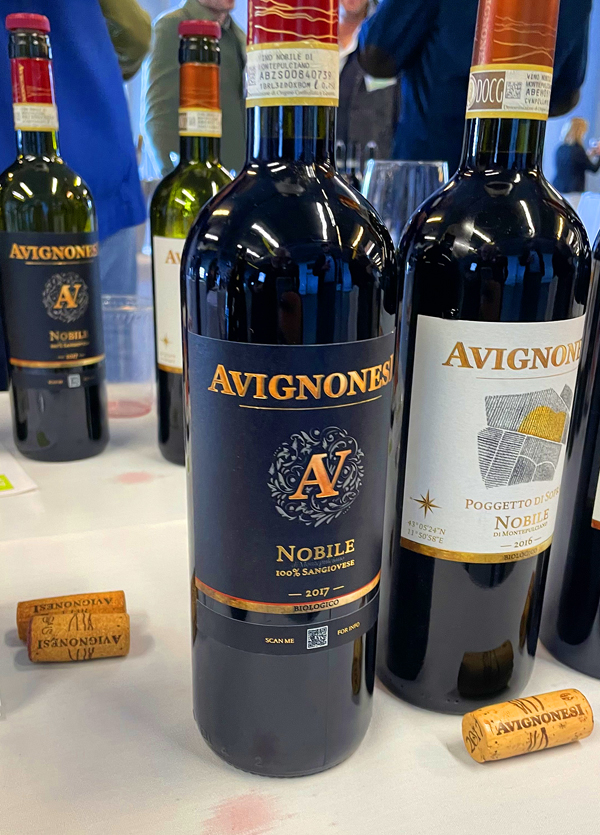
2017 Avignonesi, Vino Nobile di Montepulciano DOCG, Tuscany, Italy.
Sangiovese fans will want to find some bottles of this ripe and expressive 2017 Vino Nobile by the famous Avignonesi winery in Montepulciano, it is a full bodied and opulent wine with classic terror and varietal character showing deep red fruits, a touch of spice, cedar and delicate earthy elements. The palate quite luxurious in feel with sweet tannin, a highlight of the warm vintage, and there is a smooth layering of raspberry, dark cherry, mulberry and strawberry fruits that a nicely accented by dried minty herbs, pipe tobacco, anise and a hint of candied orange rind. As it opens up it gains a sense of black fruit and adds some contrasting savory and pretty florals, making for an excellent example of Nobile that will thrill most lovers of the Sangiovese grape and it is a great food wine as well, going lovely with a selection of meat or mushroom dishes. The Montepulciano region has soils are mainly made of marine sediments and clay with some sandy areas that provide the perfect conditions, along with the warm days, for hillside Sangiovese to thrive, as this wine proves with its depth, complexity and old world charm. The Avignonesi Vino Nobile di Montepulciano saw a natural fermentation and was traditionally aged 18 months mainly in large Slavonian oak casks, with just a small selection seeing smaller barriques, all to deliver the region’s authentic profile and capture the nature of this region. There’s a lot to admire here already and the structure underneath should allow mid term aging, with the 2017 not quite having the stuffing of the legendary 2016s, but the gap is not that far off and I really enjoyed this wine, which is a steal at under $25 bucks.
It was great to catch up with Avignonesi’s lineup of wines at the San Francisco Slow Wine tasting, these Montepulciano wines are beautifully made and very authentic terroir bottlings, with this 2017 Nobile being the star of the table, along with the 100% Merlot and the Amphora raised Da-Di, which I reviewed earlier. Avignonesi has a collection of about 444 acres of vineyards in Montepulciano and Cortona regions, all of which fully certified organic and biodynamic in the southern part of Tuscany. Named after the original founders of the estate, the Avignonesi family, the historic winery, has really taken a huge step up in quality in the last 15 years, and mainly as a result of it being acquired by Virginie Saverys in 2009, who has put so much passion and resources into Avignonesi, putting it into Tuscany’s elite group of producers. Saverys has grown the estate holdings in size adding some top vineyard sites and at the same time helping Avignonesi become a leader in biodynamic viticulture in the region. As well as the innovation in farming Virginie has built a state-of-the-art winemaking facility, which has become the pride of the Montepulciano appellation. She also brought in the youthful winemaking talent of Matteo Giustiniani, who was trained in Bordeaux as well as in Florence and who has crafted a gorgeous set of new releases here, including this dark garnet Nobile. This wine saw its fermentation carried out by pied de cuve (vineyard yeasts). Which the winery explains, the Pied de cuve is the process by which a vat of grapes is harvested in advance and used to prepare a natural yeast, specific for a grape variety and (or) vineyard to provide true site flavors. This Botti aged Sangiovese, which rivals more than a few Brunello wines three times the price, is highly entertaining and wildly delicious, I recommend getting a few bottles to enjoy now and for another 5 to 10 years.
($25 Est.) 94 Points, grapelive
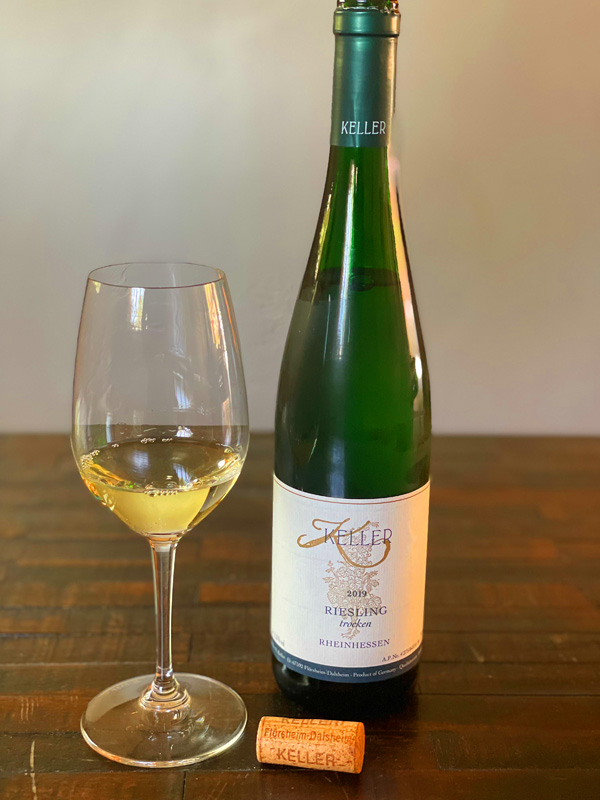
2019 Weingut Keller, Riesling Trocken, Estate QbA, Rheinhessen, Germany.
This crystalline and pure 2019 Estate Riesling Trocken from Klaus Peter Keller, one of Germany’s greatest winemakers, is an exceptional bottling and a sublime value, it drinks more like a Erste Lage or a baby GG, but with a little less concentration and no oak, showing fine aromatics, mineral notes and stone fruits. This dry Riesling delivers an energy driven performance in the glass with vibrant lime, green apple, tart white peach, grapefruit and quince fruits, along with orange blossoms, chamomile, wet stones, verbena and bitter almonds that accent this bracing wine. Klaus Peter Keller, a huge Burgundy fan, worked with Hubert and Roman Lignier and Eric Rousseau in the Cote d’Or, brings that experience to his wines here in the Rheinhessen, and he has a star studded collection of Rieslings which are coveted by enthusiasts with savvy Riesling fans grabbing these Estate versions. This wine has that amazing tension you want in Riesling, but is also impeccably balanced with nicely ripe flavors and is flexible with food choices, going with everything from oysters to cured ham.
Klaus Peter Keller and Philippe Wittmann have inspired an entire generation of young winemakers leading to a Renaissance in the Rheinhessen, a region that includes historic vineyards, including Grand Cru sites, like Kirchspiel, Hubacker, Morstein and Abtserde, as well as the workman like vineyard of Hipping, where these superstars have made some of Germany’s most sought after wines, with Keller’s G-Max bottling being one of the world’s most expensive white wines. Klaus Peter and Julia Keller have made Keller an iconic label, focusing on dry wines and now have a cult like following for their GGs, but don’t miss the basic estate efforts, like this Riesling Trocken, which has seen a huge rise in quality, with Keller using older vines here. While I can only dream about Keller’s Grosses Gewachs, which get Montrachet like money, wines like this one are cherished and give just a hint of just how good the top bottlings are. Keller also does fabulous work with other varietals, besides Riesling, crafting very tasty versions of Scheurebes, Rieslaners and Sylvaners, one I have really enjoyed in recent vintages. I highly recommend buying these entry level estate wines, especially on pre-sale (arrival) to get the best price, as they are exceptional efforts, like this one.
($25-$38 Est.) 93 Points, grapelive
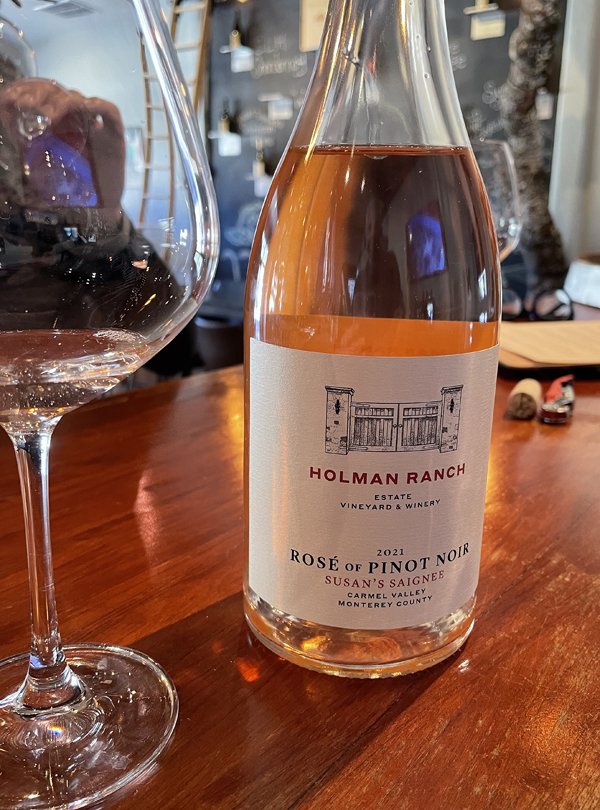
2021 Holman Ranch Winery, Rosé of Pinot Noir, Susan’s Saignée, Carmel Valley AVA, Monterey County.
The estate grown dry Rosé from Holman Ranch is a refreshing and well rounded wine that was a treat on a warm Spring day with its mineral tones, wet stones and bright fruits makes for a tasty experience that gets better and better with every sip, especially extra chilled and with a bowl of steamed mussels. I hadn’t had the Holman Ranch wines in a while and after a few tough vintages they seem to have things going in a good direction, especially with this crisp Rosé of Pinot Noir, known as the Susan’s Saignée, that was crafted using ripe juice bled off their normal picks of Pinot Noir sourced from their picturesque Carmel Valley vines and clones 777 and Pommard. The 2021 retained good acidity and has a pleasing mouth feel with a nice tension between the zesty citrus and silken texture, it is a Rosé that looks to be a real crowd pleaser, perfect for outdoor dinning and or beach sipping. The Holman Ranch Susan’s Saignée shows ruby grapefruit, sour cherry, crushed raspberry, strawberry water and peachy fruits along with a hint of spice, seeped roses, orange rind and mouth watering saline. The historic Holman Ranch property was originally founded back in 1928, though the grape vines, mainly a selection of Pinot Noir parcels named after family members, came much later, with wine production beginning in earnest with the 2012 vintage, with quality getting better and better as the vines mature.
The Holman Ranch wines are hand crafted by the father and son team of local pros, Greg and Chris Vita, who also consult for a number of Carmel Valley producers, using 100% estate grapes and employing traditional and sustainable methods, with this wine seeing 100% stainless steel for a cool temperature fermentation and short aging period which lasted just three months before they bottled this pretty dry pink wine. These small production wines include a range of Chardonnay and Pinot Noir with just about 400 cases done of this Rosé, it should be a popular Summer release to be enjoyed as soon as possible. According to the winery, the 2021 growing season began with bud-break at the beginning of April, starting growth out a little later than usual that ended up being a blessing with the extra hang time allowing for concentration and zippy energy in the must. The even but cool weather led to promising flowering and a good set, which the team at Holman only hung a modest crop. They add, that restricted yields allowed the small clusters to progress through verasion with very little irrigation, and the ripeness was achieved at the end of September, giving some floral perfume and opulence to this Rosé, which finished at about 13.5% natural alcohol, that resulted in full Pinot flavors to shine through on the medium bodied palate. This pale salmon hued Rosé is inspired by the Burgundy versions of Pink wines, like those from the Marsannay area, and while I recommend drinking it now, the winery suggests more patience and some bottle aging to let it fill out, but I personally like the youthful vibrancy it shows now.
($35 Est.) 90 Points, grapelive
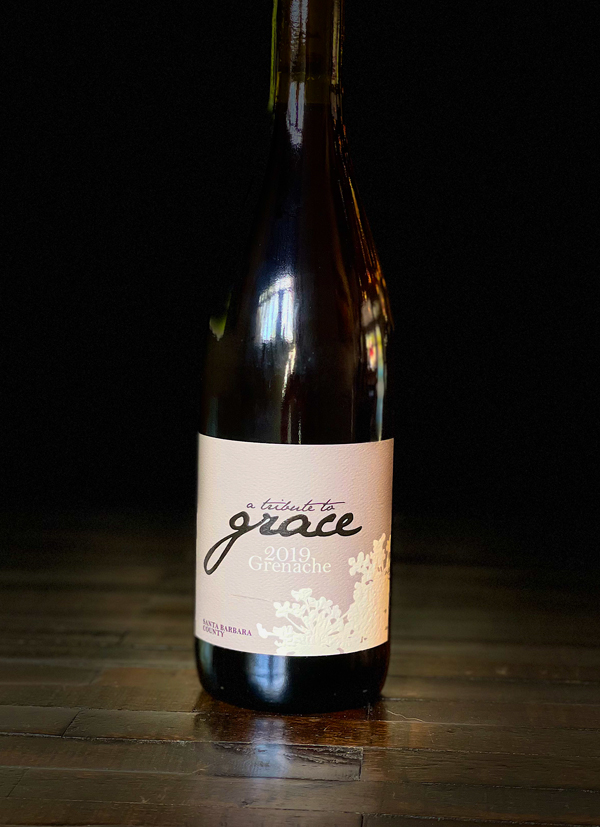
2019 A Tribute to Grace, Grenache, Santa Barbara County.
The incredibly hard to come by Grenache bottlings, by Kiwi winemaker Angela Osborne have become quite an obsession for this grape’s fans, making them extremely coveted bottles, are very nuanced examples and are transparent and silky wines, as this new 2019 Santa Barbara County version shows with aplomb and an almost Pinot Noir like elegance. I got a few bottles from Osborne’s website, just before almost everything was completely sold out, with this one being the first I decided to open and share, thankfully it is already drinking nicely and pretty much all together with satiny layers of strawberry, plum, macerated cherries and briery raspberry fruits leading the way on the smooth medium bodied palate, which are well lifted by a pretty floral bouquet, a touch of earth, Asian spices, dried garden herbs, sassafras or cola bean, sandalwood and wild fennel accents. There is a lot to admire here and while I couldn’t find any flaw or faults, I might have been expecting or wanting too much from it, which is not this wine’s problem and I think it might get more appealing in a year or so, This dark ruby colored 2019 is delicious and never puts a foot wrong and it is flexible for a range of cuisine choices, serve with a slight chill, to allow a touch more acidity through, and have it with any of your favorite dishes, from grilled chicken to burgers, it is a wine that without question gets much better with food. Angela Osborne, a New Zealand born winemaker, who moved to California in 2006 with the dream of making Grenache, has quietly become one of the state’s best producers, with a truly gifted touch, and a fixture in the Santa Barbara area, after exploring northern Spain, southern France, southern Australia.
The Tribute to Grace Santa Barbara Grenache is 100% Grenache, made from five distinct vineyards and three different Grenache clones, with some Alban clone, coming from the Vie Caprice Vineyard and the Thompson Vineyard, and Tablas C clone, off the Santa Barbara Highlands Vineyard (Mesa block), plus the 362 clone, sourced from the Santa Barbara Highlands Vineyard again, but at their J block, and the Spear Vineyard, an organic site in the Sta. Rita Hills. Angela made about 800 cases of this wine, making it an easier get, as most of her Grenache offerings sell out fast, mostly going to her fanatic fans on her mailing list, with very few bottles making to wine merchants or bistro lists. Osborne says, she made this vintage, a result of the marriage of all five picks represents 23% whole-cluster love, 11 months in neutral barrique(s) and puncheon(s), with her wine seeing, as she continues, one racking under August’s new moon, then her SB Grenache was bottled under a Libra moon, as she again notes, in honor of all the beautiful flower energy espoused by these air signs. The 2019 vintage finished with a ripe 14.2% natural alcohol and is wonderfully balanced, textural and perfumed with just enough of that whole bunches (savory) pop to cut into the grape’s more expressive fruit overtness, it is a wine that lives up to the name, it is a graceful effort in every way. Grenache is having its moment in the spotlight and there are many awesome examples in California these days from which to chose from, including these lovable and exceptional A Tribute to Grace wines, which include a Sparkling version as well as many single cru efforts, there’s no time like the present to explore them.
($30 Est.) 90 Points, grapelive
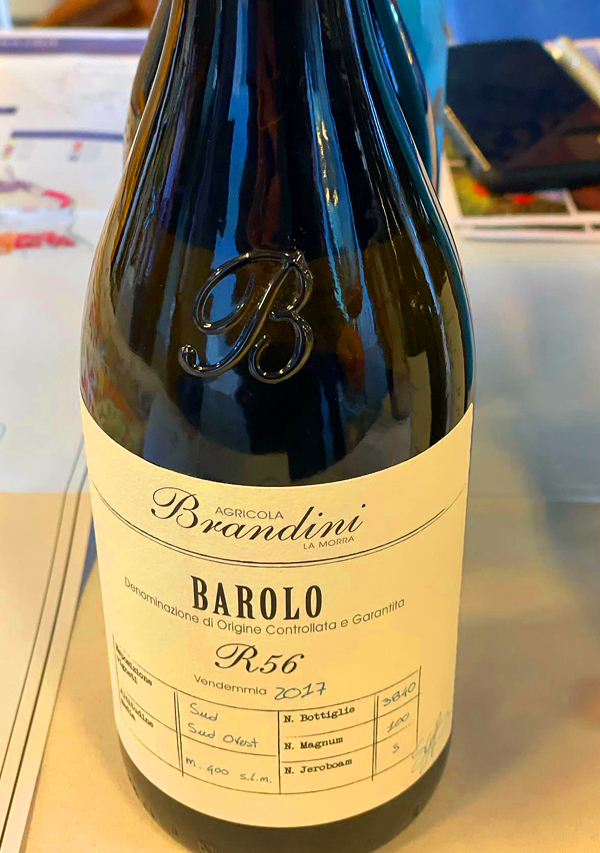
2017 Agricole Brandini la Morra, Barolo DOCG, R56, Piedmonte, Italy.
The 2017 R56 Barolo from Brandini is a classically styled and impeccably made Nebbiolo with fine tannins, pure red fruits, mineral and a delicate earthy charm, this is a wine for traditional enthusiasts that really shows a sense of place in the glass. This lovely wine, as the winery says, is born from the Cru that surrounds their cellar, and it is the result of a unique microclimate formed by altitude, ventilation, as well as the clayey and sandy soils here. This R56 saw a cool maceration and native yeast fermentation in tank and then was raised exclusively in old large cask. When Giovanna showed me this R56, from the La Morra zone, I spellbound by the gorgeous floral aromatics and seamless layers of red fruits with dusty raspberry, black cherry, damson plum and red currant fruits, a touch of cedar, minty herbs, anise, sweet tobacco leaf, dried violets and rose petals. This medium bodied Barolo looks to fill out over time and be its best in 3 to 5 years, its youthful taut features here hide the depth and complexity at this point, but the potential is clearly all here. The estate-owned vineyards that Agricole Brandini la Morra farm are all in the Barolo DOCG area and cover an area of just about 20 hectares now, in mainly in the municipality of La Morra, as well as newer plots in Serralunga and Monforte d’Alba, all prime spots, with this wine coming from their own Brandini Cru (R56) that has great southern exposure and high elevation influence, giving their wines a prestigious terroir backbone. This R56 saw a maceration on the skins for a full month and got frequent hand pump-overs to maximize a gentle extraction, but still allowing for the distinct lighter garnet/orangey hue and structural grip. The aging is done, as noted, in large oak barrels, lasting for 30 months, which is followed by close to eight months in bottle before release.
The Agricola Brandini La Morra Estate, as noted in my prior review, is owned by Piero Bagnasco and run by his daughters, Giovanna and Serena, it is a new producer for me and in fact they are a pretty recent venture, just starting back in 2007, they have a tiny collection of prime Barolo vines and I found the wines to be beautifully made and very exciting. It was nice to meet Giovanna at the Slow Wine tasting event in San Francisco and learn about her wines, especially her cru Annunziata Barolo and the R56 Barolo, which made my top ten Nebbiolo(s) list of the Slow Wine tour in the City (SF) and of which I really admired for it’s elegance and exceptional length. Agricola Brandini La Morra uses the phrase “Organic Human Barolo” to describe its wines, as all of their vineyards are certified organic, hand tended and their wines are traditionally hand crafted, with their Barolo being aged in large, used oak casks with minimal intervention and only minimal amounts of added sulfur at bottling. The grapes come from high elevation parcels, 450 meters up in some sites, which is amongst the highest-altitude vines in the Barolo zone all set on the classic clay and limestone marl soils, which all contribute to the wines quality and character. The color of the wines, as noted above, in particular their Annunziata, which I reviewed earlier and this R56 Barolo, were as Nebbiolo as it gets with those slightly orangey/bricky edges with a bright ruby core. Bradini does a number of other wines from Barbera, Arneis and Moscato, including a series of Champagne style Alta Langhe sparkling wines that I look forward to trying in the future. I was deeply impressed with Brandini’s 2017s, at this point, the aromas were inviting and very enchanting indeed, as was, the long finish, making for seriously seductive Barolo, this is a winery to follow and this signature R56 bottling, the single vineyard Brandini, in La Morra, should be one to search out.
($125 Est.) 94 Points, grapelive
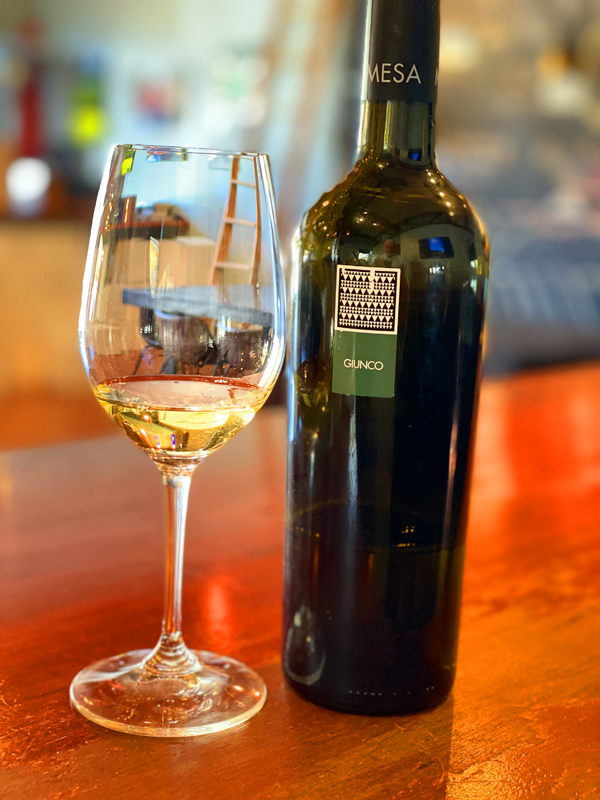
2016 Cantina Mesa, Giunco, Vermentino di Sardinia DOC, Sulcis, Sardinia, Italy.
The 2016 Giunco by Cantina Mesa is a pure and maturing Vermentino with lovely vibrancy, complexity and a fine stony quality, it delivers an almost Riesling like performance in the glass with bright acidity, a distinct, but delicate petrol note along with racy citrus and stone fruits leading the way on the light to medium bodied palate. There was a short period of cold skin contact that lasted about 48 hours, which adds depth, texture, color and a touch of phenolic savoriness that greatly enhance the personality of this Vermentino, making it even more intriguing as it gets age with an array of spices and tropical fruit in the background behind orangey layers of tangerine, dried apricot, mango and nectarine fruits, as well as flinty wet rock, tangy herbs, sea breeze and creamy verbena. The golden/straw hued white is evolving nicely and has plenty of charm and tanginess to go with a range of foods from sea food dishes, soft cheeses to roast chicken and or Middle Eastern cuisine. This was my first time tasting the Cantina Mesa wines and I was highly impressed with what I sampled here, the winery which was founded by Gavino Sanna, who wanted to create an estate that embodied the pride or soul of Sardinia. Cantina Mesa is now owned by the giant Santa Margherita and has an ultra modern facility, taking this label to the next level with a high quality collection of offerings, including a series of reds made from Cannonau di Sardegna DOC and Carignano del Sulcis DOC, as well as whites, like this one, made from Vermentino. Vermentino, a variety native of Liguria, where it is called Pigato, here in Sardinia, but is also successfully grown in Tuscany, Corsica, Piedmonte (Favorita), Provence and in the Southern Rhone Valley, as well as in the new world from Australia to California and Oregon.
Coming from the Sulcis area, in the far south west of Sardinia the Giunco is 100% Vermentino that is an all stainless steel fermented and aged wine that shows exceptional clarity, mineral intensity and has a crisp, salty freshness. The winery notes that the Vermentino for this Giunco grows on mainly sandy soils, and goes on to say it is made up of alluvial deposits and cemented aeolian sandstone with an underpinning of clay, with loam, formed during the Pleistocene era. These soils have a ph that is slightly alkaline, well-structured, with a good level of stony particles, rich in calcium, magnesium and potassium, all of which influences this wine’s character adding a bit of iodine and a chalky element. This is an island wine through and through with Mediterranean sense of place, the climate here is warm and dry, but gets frequent refreshing Mistral winds and cool nights that help give this Vermentino a fine balance and a zesty nature. The all hand picked grapes, which come from vines that are extremely close to the sea and at sea level, are chilled to 10 °C before de-stemming and then see a gentle pressing, with the mentioned skin contact and then the wine is raised for about four months of the lees before bottling to preserve the Giunco’s vitality. I am grateful to my Giuséppi Còssu, an Italian Sommelier and proud Sardinian, who is studying to be a winemaker and who has introduced me to some unique Sardinian wines as well as providing me a good winemaking background of this beautiful island, which has an incredible amount of history of wine growing, which goes back thousands of years, thank you my friend. Vermintino, which is now grown around the world, is now making a name for itself here in California, but is more commonly seen in Italy and France, where it is sometimes called Rolle. The winery says to drink this wine up while young, in the first 2 to 4 years, but I find this 2016 to be in a great spot right now and think it can go another few years.
($22 Est.) 92 Points, grapelive
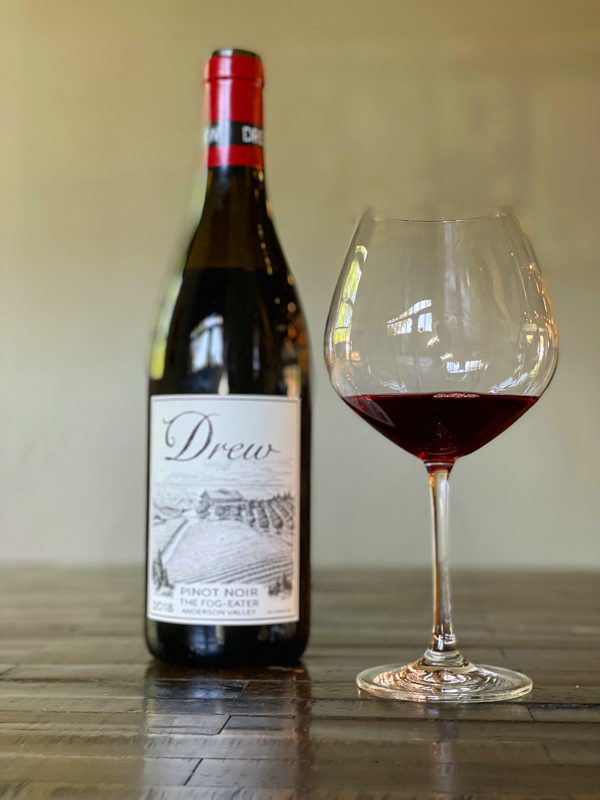
2018 Drew Family Cellars, Pinot Noir “The Fog-Eater” Anderson Valley.
Still youthfully fresh and expressively floral the Drew 2018 The Fog-Eater Pinot is bursting with Italian Cherry, crushed raspberry, strawberry and spiced plum fruits, bramble, seeped rose petals, tangy herbs and delicate wood notes with a sense of electric energy and silky muscle(s), this is exceptional Pinot Noir again from one of California’s very best producers. The pretty dark ruby red colored 2018 The Fog-Eater by Drew is absolutely stunning now, but really looks to reward patience as well, air brings added depth and texture, this year is fantastic and Pinots lovers would be best served to stock up on as many as they can get. Winemaker Jason Drew selects several sites within the Anderson Valley and brings them together to make this gorgeous “The Fog-Eater” Pinot Noir with the aim as it has always been, his says, to layer and elevate complexity and showcase this very special northern California coastal valley growing region. The 2018 vintage crop yield was roughly two tons per acre for us and a relatively cool vintage, no extreme heat spikes and some extended hang time. We combined two deep end vineyards and one east ridge site along with one mid valley site to complete this special blend, with various elevations from about 100 feet to over 1200 feet above sea level. The 2018 saw the lions share of fruit coming from the true ‘deep end’ or Mendocino Ridge, closer to Drew’s home estate, and with the coolest Ocean influences. The Drew family is quite smitten with this 2018 vintage, as am I, these will age exceptionally well without a doubt. The Drew’s are calling it the best in over a decade, and I’m not going to argue with that, after tasting it and enjoying it in the glass. At just 13.3% natural alcohol, this very Burgundian style Pinot with go with many food options and Drew suggests pairing it with slow cooked pork shoulder and roasted butternut squash, though it can go with almost anything and I might go with blackened salmon. There are a fabulous array of California cool climate Pinots available, but Drew still is a step above and this might be one of the finest wines for the money you can find, I enthusiastically recommend this The Fog-Eater, along with Jason’s single vineyard collection and estate offerings.
The Fog-Eater, an appellation blend, from several sites from both bench and hillside locales along with outer western rim vineyards in the Anderson Valley which Drew uses to create, as he puts it, a classic expression of (the) Anderson Valley. The term Fog-eater, as Drew notes, is a Boontling term, from the local dialect in the area, that is used to describe those who live out on the coastal margins, as the Drew family does and the outliers in the fog. Very fitting for this Pacific Ocean influenced area near the Mendocino coast, which delivers its signature on these wines, giving balance, low alcohol and long hang-time concentration. As with most all of the Drew wines, Jason used 100% native yeasts during the fermentation on this lovely and authentic Pinot Noir and he employed close to 20% whole clusters in this 2018, as he says brings additional structure and spice into The Fog-Eater. The charm and form of this great wines is also due to the complex Franciscan Series soils, with vines on the alluvial, gravel, loam and ancient seafloor uplift elements, as well as the special clonal selections of Pinot Noir used here, that in this vintage includes the Dijon Clones, 115, 667, 828 as well as heritage Mt. Eden and Rochioli clones. As per normal, The Fog-Eater saw just 10% new French oak and was aged just about a year in the barrel with just two gentle rackings, highlighting, as I’ve mentioned many times now, Drew’s graceful touch and desire to present wines of elegance, substance and transparency. After half an hour, this 2018 just raised its game, making for an excellent and textural wine that seduces the senses and the length, which is already impressive, lingers on and on with echos of the kirsch led fruits, adding cinnamon, pomegranate, an earthy sultry note, mineral and briar. Going on, as to why these wines move me, they have that great play between tension and textural pleasure, they are authentic, not flashy and they represent California with sublime grace and honesty. These Drew 2018 have a taut structure, sharp clarity of detail and alluring flavors, making them ideal wines to save a little longer, interestingly the younger 2019s are more plush, even though similar in numbers, and seem more ready to dig into, though I am quite sure they too will age wonderfully, these are two vintages you don’t want to miss, especially from Drew.
($45 Est.) 95 Points, grapelive
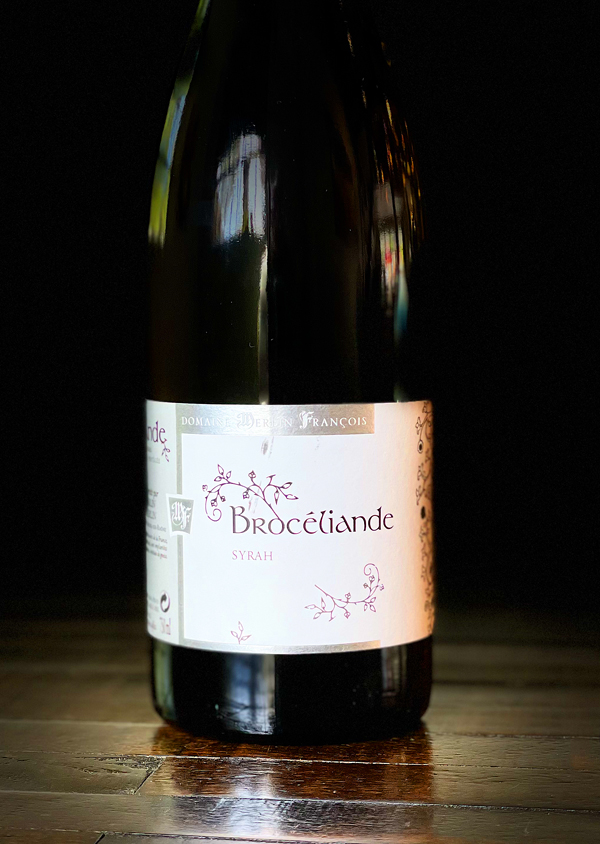
2018 Domaine François Merlin, Syrah “Broceliande” IGP Collines Rhodaniennes, Northern Rhone, France.
The brilliant, complex and meaty 2018 Broceliande Syrah from François Merlin is an absolute steal with pure terror and varietal character on full display, it is a medium to full bodied effort with layers of earthy blue fruits, bacon, smoky meat drippings, pepper, subtle floral tones and lingering creme de cassis and tarry licorice. Coming from vines between 20 and 60 years old and aged in used French oak barriques, François Merlin’s latest Broceliande gets better and better as it opens with boysenberry, damson plum, black cherry and an echo of currant fruits coming into focus on the palate along with snappy herbs and crushed violets, this is an old world Syrah that offers a tremendous value with a flavor profile that is very much inline with a Crozes-Hermitage that would cost you twice or three times the price. There is a lovely play between the supple fruit core and the savory elements, this is full of personality with rustic charms that does everything to tell you this is a Northern Rhone wines with its hints of sanguine iron rich mineral, a touch of funk and camphor, it is best to enjoy this with hearty cuisine, which would help bring out its pleasing fruit density. François has gained an admirable reputation as a grower producer in the Northern Rhone with some vineyards that he planted himself using ancient massele (Syrah) selections, in Saint-Joseph and in Cote-Rotie, he has refined his winemaking style, preferring riper de-stemmed fruit and an opulent elegance in his top bottlings.
François Merlin is a new discovery for me, this last year, and I’ve been very impressed by what I’ve tasted so far, this small domaine, run by Francois is a rarity here, being a first-generation Northern Rhône winemaker. He is the son of a chemical engineer, and he moved to Saint-Michel-sur-Rhône, just south of Condrieu, in 1989 to pursue a self taught dream of making wines in this historic region. He, as the winery notes, has officially never studied wine in school, but was mentored by some impressive names, including stints at Domaine René Rostaing, making Cote-Rotie, as well as learning about Condrieu at Georges Vernay, all of which shows in his wines. Now, François’s son Laurent, who studied viticulture has joined the family domaine in 2013 and has put in a huge effort in the vines here and it looks to have raised the game at Merlin, who now have a coveted array of parcels in top sites, including both Cote-Rotie and Condrieu, as well as vines in Saint-Joseph and areas without AOC status, like in this one. The farming is leaning towards organic, all sustainable with the grapes getting picked by hand, and, from I understand, the Merlin’s use of new oak has gradually been reduced, and they use the Austrian oak Stockinger demi-muids (mainly in their Condrieu) alongside the mostly used French barriques. The Broceliande is sourced from some sandy areas, some red clay, along with a galet stone covered mix of granite and decomposed gneiss soils. This dark garnet Syrah is too good to pass up on, I highly recommend these François Merlin wines, especially their Saint-Joseph Rouge, the Cote-Rotie which reviewed already, and this Syrah “Broceliande” IGP Collines Rhodaniennes that is itself a very tasty little treat!
($17 Est.) 92 Points, grapelive
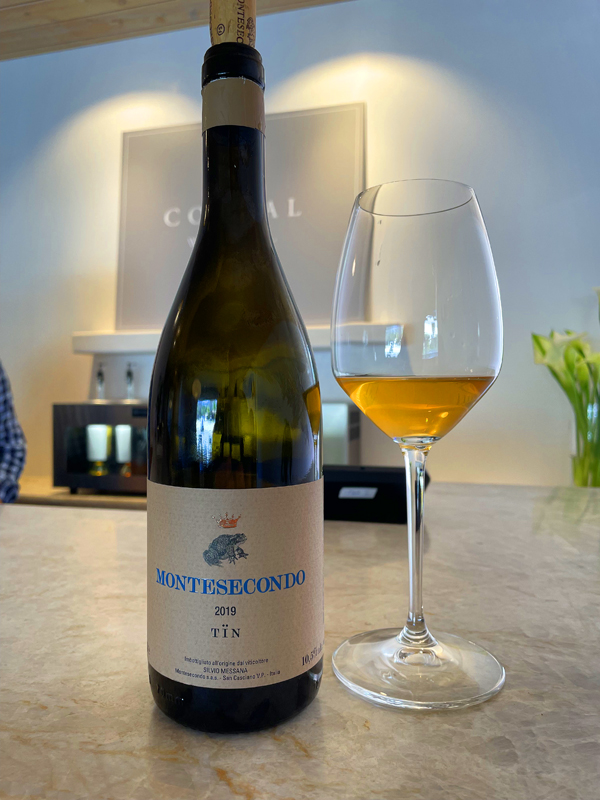
2019 Montesecondo, Trebbiano “TÏN” IGT Toscana Bianco, Italy.
The organic and natural wine estate of Montesecondo, in Chianti Classico’s Val di Pesa, is a small property in San Casciano in the northern zone of the this famous Tuscan region near Florence, well regarded for their native varietal wines, especially the Sangiovese based offerings, but they also do a unique white made from skin contact Trebbiano, the TÏN Bianco that is aged in Amphora. I hadn’t had any Montesecondo in many vintages, so I was thrilled when a friend shared this 2019 with me, and even though I don’t always enjoy “Orange” wines, this one was full of charm and easy to enjoy with dried apricot, tangerine and nectarine fruits, along with dusty stones, mineral notes, almond oil, verbena and savory tones, adding a touch of garden herbs, dry extract (tannin), earth and delicate florals. The best thing, to me, is the energy and texture here, there is a really nice mouth feel and a crisp dry zesty quality that refreshes the medium bodied palate, it gives this usually mediocre grape some thrill and complexity. Montesecondo’s all biodynamic gently sloping hillside vines are set on deep clay and galestro rocks that give loads of fruit intensity, especially in the reds and winegrower Silvio Messana has a gifted and low intervention touch, making wines that a elegant and rustically charming. Montesecondo is not an ancient or old winery, in fact Messina founded it just over twenty years ago, and his first vintage was in 2000, but his wines were instant hits and continue to deliver authentic, raw and transparent flavors, they are always a treat to experience. Interestingly, Trebbiano, which is found all over Italy, may have originated in the Eastern Mediterranean, and has known in Italy since Roman times, it is also known as Ugni Blanc, and it made its way to France, possibly during the Papal retreat to Avignon in the fourteenth century. The grape is known to be bland, but helps provide acidity to blended wines as found a home in the Rhone, Provence and in Cognac, where it goes into the famous brandy.
Montesecondo’s Silvio Messana’s having been influenced by Alto Adige’s Elisabetta Foradori, has made a 100% Sangiovese aged in amphora since around 2011 with amazing results, and later added a skin contact Trebbiano to the lineup. This golden/yellow TÏN Toscana Bianco comes from Chianti Classico grown grapes is an outstanding orange style (skin contact) wine of distinction. Raising wine in ceramic vessels is an ancient art and a studied craft, and it is coming back in fashion in most regions of the world now, not just in the making of geeky or orange style wines, like this, but in places from Oregon to in fact Bordeaux! Even some top Chateaux are using amphora, including the famed Chateau Pontet-Canet, they even make the vessels from the local clay rich soils of their Pauillac estate. Italy has embraced Amphora, which is also much more common now, and to me it seems, amphora gives the texture and expansion that wood does, without inputting the sweet toasty elements or oak footprint on the wine. Montesecondo, which is more like Burgundy than Bordeaux in style, doesn’t always have wines that qualify to be called Chianti Classico, with certain cuvees, like their IGT Rosso, a 100% Sangiovese, is a bottling I adore, it delivers an elegant version of the varietal with bight flavors, subtle earthiness and medium weight, these wines are wonderful values too, I highly recommend searching them out. While growing many native grapes, Montesecondo has parcels of Sangiovese, Colorino, Canaiolo, Cabernet Sauvignon (for a single varietal offering), Trebbiano, Malvasia and a little Vernaccia as well. TÏn is Arabic for clay, and the winery says it is a nod to Silvio’s time living in North Africa with his family and the fact this wine is made in amphora, from all de-stemmed Trebbiano grapes and a eight month maceration and fermentation, aging on the skins, bottled unfined and unfiltered with ultra low SO2 addition. Also, Messana does a Rosé fizz, the Vino Frizzante “Ghazii” that is really fun, so there’s plenty of cool stuff to chose from at Montesecondo, with this TÏN white and TÏN red being wines that are tasty rarities that are well worth the chase.
($38 Est.) 91 Points, grapelive
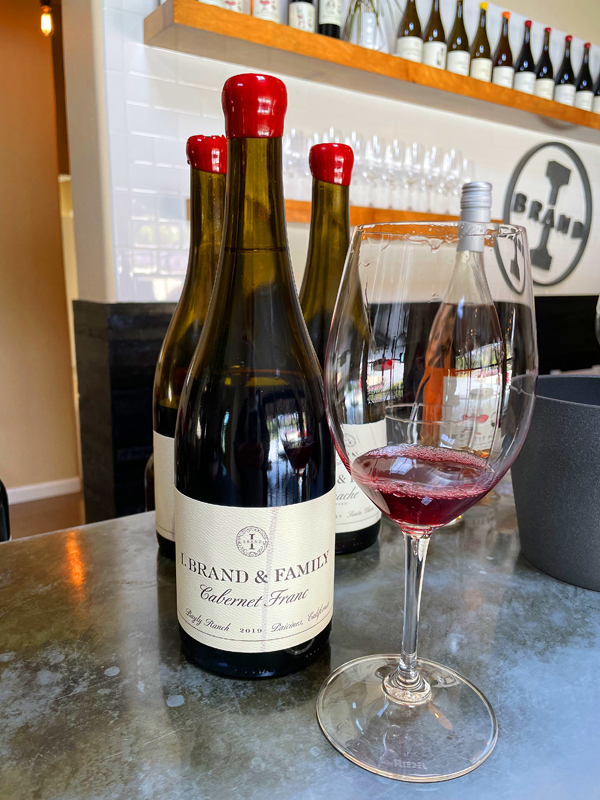
2019 I. Brand & Family, Cabernet Franc, Bayly Ranch Vineyard, Paicines AVA, San Benito County.
Ian Brand’s latest releases include some of his classics, some new gems and a few swan songs, with this Bayly Ranch Cabernet Franc being a standout with an earthy Loire style profile, but showing the vintage’s deep concentration, vital acidity and exceptional aromatics, it is a wine I don’t want to miss, as it has been a favorite Cab Franc of mine for more than a few years now. While Brand’s Bates Ranch Cabernet Franc is more Bordeaux like, luxurious and will cellar brilliantly, I just love this more raw and rustic bottling that reminds me of Bernard Baudry Chinon and or Thierry Germain’s Domaine des Roches Neuves Saumur-Champigny, which is high praise, with this 2019 Bayly almost eclipsing these old world stars. The dark saturated garnet and ruby edged I. Brand & Family Cabernet Franc Bayly Ranch starts with a sultry combination of chalky stones, violets, a touch of bell pepper and crushed raspberries that grabs your attention along with layers of black cherry, red currant, plum and mulberry fruits, as well as forest floor, brambly spices, cedar and anise accents. Everything folds together seamlessly and the tannins are ripely sweet and the structure is smooth, but there is enough underlying firmness and energy to provide the guts to age well too, this is wine that will benefit greatly and be more rewarding when paired with a hearty meal. My own notes from the last four vintages have been consistent, this vineyard provides a certain set of flavors that are very similar year in and year out, but as much as I loved the 2017 and 2018 versions, this 2019 might even be better and more rewarding, I highly recommend it and all of the new stuff under this label, but don’t wait this wines are pretty limited and sell out quickly.
The I. Brand Bayly Ranch Cabernet Franc, crafted using traditional methods, was vinified using carefully sorted whole berry (grapes)with some whole bunches that were picked at moderate sugars, usually with indigenous yeasts, with a cool, almost three week, maceration. Then it is raised for just under a year neutral (well seasoned) French oak, including old barriques and larger puncheons. The winemaking is non intervention within reason, all to highlight and promote this beautiful wine’s terroir character, varietal purity and natural vitality. Ian is a vineyard whisperer and has found many unique and remarkable sites through the years, he has also a way that gets the best and most authentic expressions out of these places, like this Bayly Ranch demonstrates in the glass. As mentioned in prior reviews, Ian has found some cool vineyards in the wilds of San Benito County, where some of California’s earliest settlers to this part of the state planted vines back in the 1800s, though were largely forgotten until Brand came on the scene in the last dozen or so years. Brand, who says he rather just drive his ugly trucks (to vineyards) and make wine, does a wide selection of offerings, including his fun Le P’Tit Paysan line and the hugely successful La Marea Albarino and Spanish style Grenache, as well as his amazing set of signature single vineyard wines under his I. Brand & Family label, where you find wines like this Franc, his Mourvedre and old vine Grenache bottlings. As noted before, The Bayly Ranch is located in the San Benito County, within the Paicines zone, which is near the Tres Pinos Creek and the San Andreas Fault with some limestone like influence. The soils here consist of a stony mix including ancient alluvial deposits with an array of geologic structures, which adds to the complexity here. This place has a warm climate that is refreshed by cool nights and some coastal breezes, making it a sublime place for Cabernet Franc, as this wine confidently displays. There are plenty of things to admire in Ian’s collection, just don’t overlook this one, it’s a very understated and transparent Cabernet Franc for the grape’s enthusiasts, drink over the next 5 to 10 years.
($34 Est.) 93 Points, grapelive
Grapelive.com – Reviews – March 2022
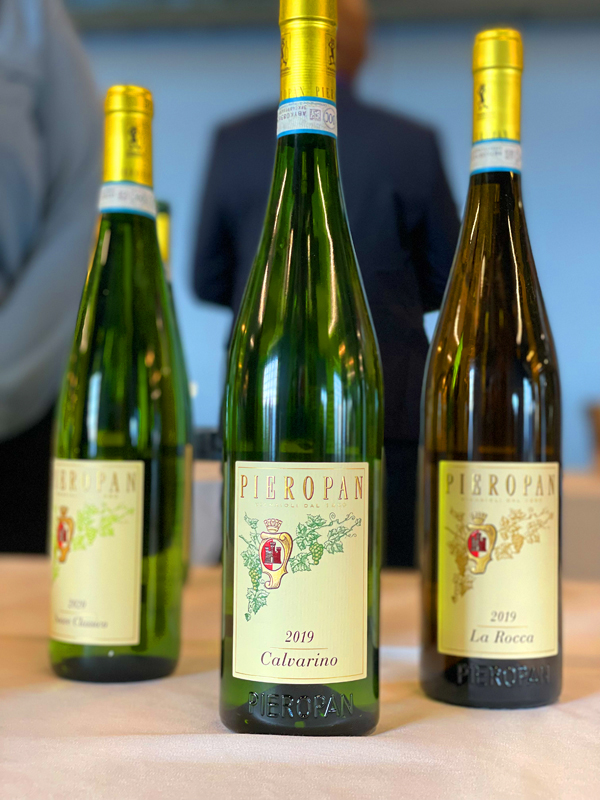
2019 Pieropan, Soave Classico DOC “Calvarino” Veneto, Italy.
The Pieropan Calvarino Soave Classic is a distinct and beautiful with crisp detail and surprising depth, it highlights Pieropan’s commitment to quality and this wine’s unique terroir character, but it also, as I have been mentioning for a few years now, puts a spotlight on incredible rise in greatness of Italian white wines in general and in Soave in particular. At the recent Slow Wine stop in San Francisco I was impressed by the whites, even with my expectations, they were well crafted and focused efforts, made from vast array of varietals, including rarities, from Falanghina and Fiano in the South to Manzoni and Kerner in the North, there are some amazing whites available, especially from this region and the Garganega grape found in this Soave. The 2019 Pieropan Calvarino is bright and energetic with a delicate white blossom nose and stony detail, it is a light golden wine with vibrant lemon/lime, peach and a hint of green apple fruit, along with snappy herbs, almond oil, dense round leesy notes and lingering jasmine. This dry Calvarino has a nice mouth watering saline, refreshing acidity and mineral tones, but feels rich on the medium bodied and elegant palate, making it a superb meal wine with enough depth and substance to go with many cuisine choices, though it is exceptionally good with Linguini and Clam pasta, as well as a nice pairing with roast poultry. The winery goes on to suggest that this Calvarino would be a lovely aperitif wine and great as a starter for a leisurely evening meal and adds, it partners a wide range of dishes, especially vegetable quiches, fish and cheese soufflés, which all sounds good to me.
The Pieropan winery, like Inama and Prà, makes a stellar Soave and were one of the first to do single vineyard wines, like this Calvarino, up at close to 300 meters, which comes from 30 to 60 year old organic vines set on a hillside in the Classico zone on complex volcanic soils with tufaceous elements and basalt, which gives this wine its soul and terroir flavor profile. The Calvarino is made from 70% Garganega and 30% Trebbiano di Soave, which is another name for Ugni Blanc, and crafted using hand-picked fruit, usually in two harvests to select only the best and the ripest grapes. The winemaking focuses on purity with the grapes getting a gentle de-stemming and crushed with the free run juice being fermented separately at cool temps in glass-lined cement tanks, where the wine is also aged for a year with lees contact before bottling. After a further rest in bottle to mature this Calvarino is then released from the cellars at Pieropan, to allow for everything to come together and this 2019 is a harmonious and delicious white wine, it is one of the stars in Pieropan’s excellent collection, just a few notches behind their awesome La Rocca bottling and a big step up from their base Soave Classico, which is an outstanding value. The winery notes that, Calvarino, that was first bottled as a single vineyard wine in 1971, is situated in the heart of the Soave Classico zone and is a cornerstone of the Pieropan’s family vineyards, who bought this cru site back in 1901. The name, they say, was derived from ‘Little Calvary’ referring to the difficulties in working the land here and the tortuously winding path that takes you from top to bottom. The Catina Pieropan, originally founded in 1880, continues to lead the way in this region and this Calvarino is one of stars, I highly recommend this bottle and exploring Soave wines, there’s plenty to admire here and discover, the wine here is a real bargain!
($30 Est.) 93 Points, grapelive
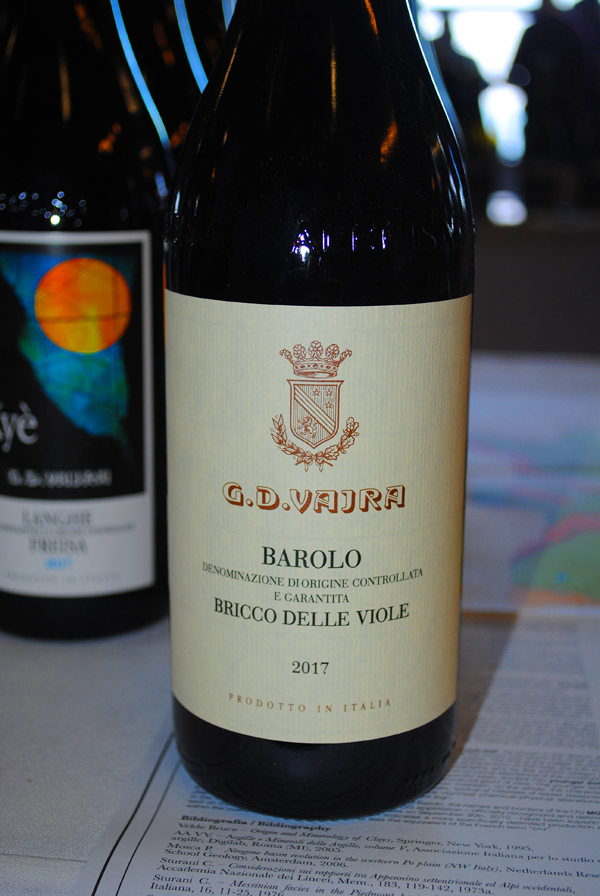
2017 G.D. Vajra, Barolo DOCG, Bricco Delle Viole, Piedmonte, Italy.
The pretty and aromatic Bricco Delle Viole, from the warm and small yielding 2017 vintage, over delivers in depth and pleasure in a tough year and I was very impressed, especially coming after such a legendary vintage in 2016, it has a more supple mouth feel and silky red fruits, making it an attractive wine even at this stage. Giuseppe Vajra is one of the region’s brightest stars and I was thrilled with the latest wines, which I got to sample at this year’s Slow Wine 2022 tour stop in San Francisco, with this 2017 Bricco Delle Viole Barolo and the 2016 Ravera cru Barolo really standing out. I first tried Vajra’s Bricco Delle Viole with the 2008 vintage, and I have been a huge fan ever since, it is always a treat to experience, it gives me the same thrill as a Grand Cru Burgundy does and this latest version does not disappoint. This 2017 shows off in the glass with a dark ruby hue and a subtle floral perfume that leads to a full bodied palate of black cherry, fig/hoisin, damson plum and red currant fruits, along with dried herbs, earth, sandalwood, orange rind and tarry anise accents. Bricco delle Viole is one of the historical vineyards of Barolo, it is unique being one of the highest sites and the closest to the Alps. This vineyard, as the winery notes, rises from 400 to 480 meters above sea level, on the Western ridge of the village. Its name, which translates to “Hill of Violets”, comes from the flowers that blossom early here due to the perfect south exposure. Set on classic marl limestone and lots of sand and above the fogline, the Bricco delle Viole sees the earliest sunrise and gets the last rays of the sun every day. These vines date back to 1949, a they enjoy a dramatic diurnal temperature range that helps this Bricco Delle Viole Barolo with natural acidity and complexity, this is gorgeous stuff with lovely details and balance.
The G.D. Vajra wines are fantastic and getting better and better, they are one of my favorite producers in the world, with their Barolo’s being the top stars within the winery’s stellar collection, with their signature Bricco Delle Viole always displaying everything you’d want from Nebbiolo grapes, their Ravera, which is outstanding and their exotic and perfumed Coste di Rose Barolo, the newest in the Cru lineup here. The estate of GD Vajra is situated in Vergne, the highest village in the Commune of Barolo with Nebbiolo, being the main varietal, but also planted with Dolcetto, Barbera, Freisa, Pinot Noir, Chardonnay and of course their legendary Riesling, which is one of my favorites. The vineyards are at heights of 350-400 meters, which plays a big part in terms of complexity and aromatic quality that winemaker Giuseppe Vajra achieves with his amazing set of offerings. The Vajra Barolo wines, like this one, see close to 30-40 days of maceration in stainless, with a submerged cap, which allows for a gentle extraction the tannins from the skins, also as Vajra notes, that there is a small percentage of stems are left in durning the primary fermentation depending on the vintage, with the riper years seeing more. The G.D. Vajra wines are not adorned with flashy sweet/toast French barriques, these wines are exceptionally pure, terroir driven and transparent versions of Barolo and this wine was aged in large (mostly older) Slovenian oak barrels for 25 months before bottling. This Bricco Delle Viole is a wine for collectors and enthusiasts, and while this 2017 is already drinking great, you should be patient here, though for immediate pleasure, I highly recommend the Vajra Albe Barolo, the entry level Barolo, as it is a hugely rewarding wine and a great value. If you open this 2017 in the near term, decant it and enjoy with hearty cuisine, I think 5 to 10 years will bring extra layers and allow its full maturity to shine through here in this 2017 Bricco Delle Viole, as it is softer and less tightly wound than the 2016, which will go decades.
($89 Est.) 94 Points, grapelive
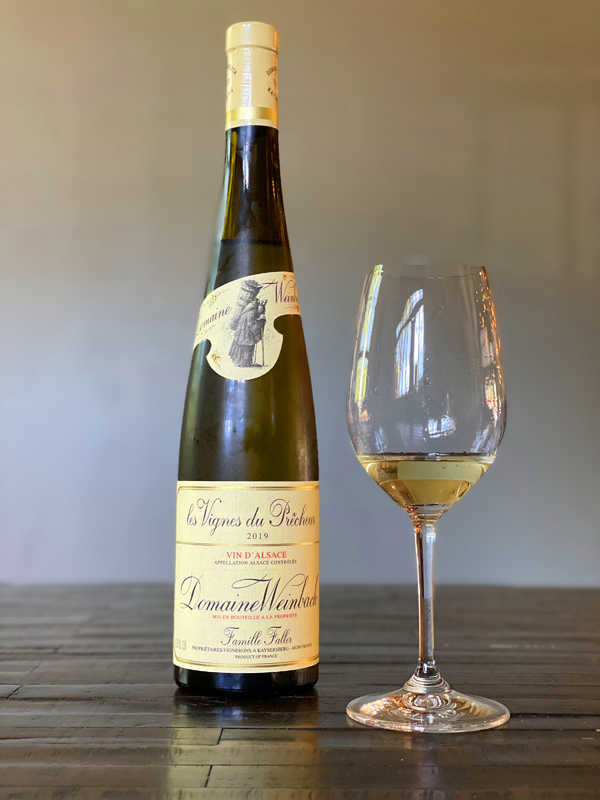
2019 Domaine Weinbach, Les Vignes du Prêcheur, White Field Blend, Vin d’Alsace AOC, France.
The newest wine in Domaine Weinbach’s stellar collection of Alsace wines is their Les Vignes du Prêcheur, which is single vineyard co-fermented white field blend of 5 native Alsatian grape varietals, with about 40% Riesling, 30% Auxerrois, 20% Pinot Gris, 5% Muscat and 5% Sylvaner. This vineyard, knowns as the Preacher’s Vineyard has mixed grape make up and sits just below the famous Grand Cru Kaefferkopf site that is set on sandy and clay based soils, which makes for expressive and ripe fruit. I have a long history with Domain Weinbach, it is one of my favorite wineries and I’ve tried almost everything they have produced, but this was brand new for me and I was very excited to try this Les Vignes du Prêcheur, which may have been inspired by historic blend of the past here in Alsace or the modern versions of field blends, as done fantastically well by Marcel Deiss or Marc Tempe. This 2019 Les Vignes du Prêcheuris nicely and subtly perfumed with citrus blossoms and jasmine flowers along with wet stones, orchard fruits and a hint of honey leading to a brisk dry medium bodied palate of kumquat, white peach, apricot and green apple fruits that are accented by almonds, quince paste, mint, chalk, spices and tropical essences. The wine gains a textural roundness, but stays firm and saline rich throughout with just right amount of tangy, savory and bitter elements to balance the fruit, this wine adds charm, complexity and purpose with every sip. This wine is very unique and distinct, it really impressed me, even though I am such a huge fan of the single varietal wines at this estate and I will certainly be getting more bottles. Weinbach is a celebrated and historic property run by the Faller family best known for Riesling, like Trimbach and Zindt-Hambrecht, with a top lineup of cru bottlings, but none of other grapes, like Pinot Gris, Pinot Blanc, Gewürztraminer and Sylvaner should be overlooked as they too are some of the finest in the region.
Domaine Weinbach, one of Alsace’s great estates, was originally founded by the Order of Capuchin monks back in 1612, property was a walled in and a totally self contained site making some of the best wine in the region for the better part of a hundred years. The “Clos des Capuchins” is the vineyard that surrounds the domaine, it sits directly below the prestigious Schlossberg Cru (the first terroir in Alsace to receive the status of Grand Cru), along with the Grand Cru Furstentum (known for Gewürztraminer and as well as to the adjacent Altenbourg Cru (known for Pinot Gris) vineyard that rises above the Weinbach clos. The domaine is in the heart of Kayserberg’s hills and its valleys are some of the most picturesque places in Europe. The Les Vignes du Prêcheur vineyard is In the process of certification and has been converted to all organic and biodynamic farming methods, just like the Weinbach estate vines see. The Weinbach’s have employed a short pruning of the vines to keep yields low, to promote concentration and allow for aromatic intensity, which shows on this 2019 version, which looks like the debut release, as far as I can tell. The winemaking here is always impeccably clean and non interventionist in technique with this wine seeing a gentle whole cluster pressing in a soft pneumatic press, with indigenous yeasts and aging exclusively in large neutral oak casks. The Les Vignes du Prêcheur got an elevage on the lees of close to 8 months before bottling without fining, as Weinbach is all vegan, it saw just a light filtration for clarity and stabilization. The winery says this Les Vignes du Prêcheur white makes for an excellent aperitif, but can also be enjoyable also with a refreshing lunch. They suggested the following pairings, continuing on, it would be great with quiche, onion pie, fish terrine, cheese soufflé, light appetizers and grilled chicken, all of which I will not argue with, this is tasty stuff, perfect for the warm days and evenings of late Spring and Summer time.
($26 Est.) 92 Points, grapelive
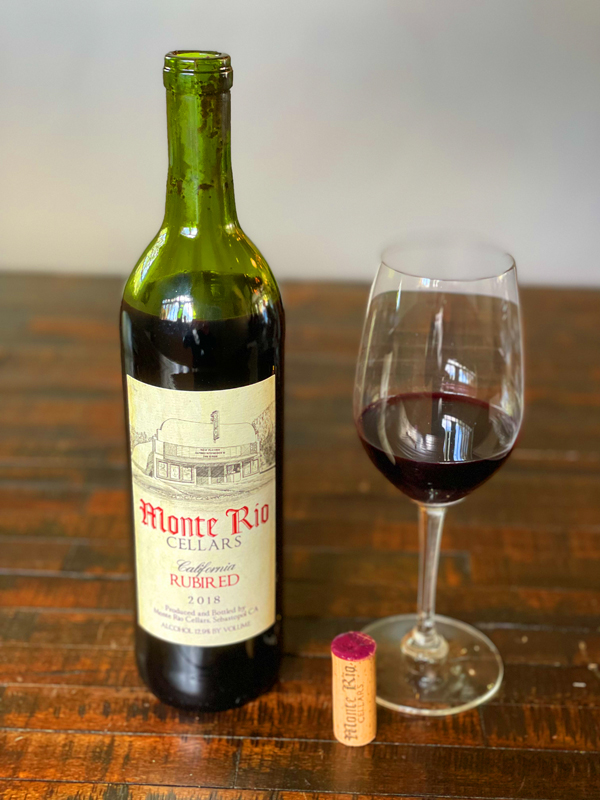
2018 Monte Rio Cellars, Rubired, Central Valley, California.
The Monte Rio Rubired is a no oak dark and intensely grapey red wine, seriously opaque, almost purple/black in the glass with a spicy floral nose and a full bodied palate of tangy concord grape like flavors with black plum, blueberry and marionberry fruits. The wine gains depth and savory complexity as it gets air, it reminds me a bit of Envinate’s Alicante Bouschet based “Albahra” from the south of Spain, and or a Saperavi from Georgia, with an array of spices, anise and stemmy/earthy crunch that nicely cuts into the primary fruit. Rubired is a hybrid grape developed at UC-Davis in the 1950’s. It is a cross between Alicante Ganzin and Tinta Cao, a Port grape, created by Dr Harold Olmo in 1958. Due to its relationship to Alicante Bouschet, it produces a dark red/purple juice which is used to add color in many jug wines. Like Ruby Cabernet, a crossing between the vitis vinifera (noble wine grapes) varieties Cabernet Sauvignon and Carignan that was first trialed by Dr. Olmo in 1936 before being released in 1948, Rubired was bred to produce significant yields in hot climates, and in the California Central Valley it regularly yields 8 to 10 tons per acre. However, Rubired is a teinturier variety with red flesh and pigmented juice. Most red wine grapes have clear juice, the red color of wines coming from extraction of pigment from the grape skins. Rubired, I understand, was originally intended for producing fortified port-style wines, and since the late 20th century, producers in Australia have included it in some port-style blends. Its intensely dark color is often useful in blending to intensify the color of other red wines, which is common in California, but it can also be used to create single varietal wines, like this one. Interestingly, Olmo created many hybrids or Frankenstein grapes, some more successful than others, from Emerald Riesling, a cross of Riesling and Muscadelle, plus a few version of crossing of Carignan, Cabernet Sauvignon or a Cabernet/Grenache (cross like Marselan) and the Symphony grape, which is a crossing of Muscat of Alexandria and Grenache Gris, which is used by Theopolis Vineyards to make a fruity off dry white wine.
Patrick Cappiello, a famous Sommelier and restaurant owner, says Rubired, an inky dense hybrid, has been an obsession of his since he first tasted it in a blind tasting almost 5 years ago now. He goes on to thank Pax Mahle, the winemaker, for his diligent searching that finally found a vineyard owner in the Central Valley that allowed them to send a team in to hand harvest (this grape is almost always machine harvested and de-stemmed) the vines and get enough grapes to make this one of kind single varietal bottling. The sustainably farmed grapes were, as mentioned, hand harvested and left in whole bunches with Patrick and Pax employing a natural full carbonic maceration for this 2018 version. The fermentation and aging all happened in stainless steel, where it aged on the lees for 6 months. This clean, ripe and pure example of Rubired finished at 12.9 % natural alcohol making it a nicely dry and flavorful wine. As mentioned here and in prior reviews, Monte Rio Cellars is owned by Patrick Cappiello, who along with his friend and famed Syrah maker Pax Mahle produce a series of ultra small production, hand crafted and naturally made wines under this rebel label. Most of which are a collection of Zinfandels, one of which is labeled Primitivio, though they have started exploring other and or rare varietals, including this Rubired, a bottling of the Mission grape (also known as Pais or Listen), Petite Sirah, Sauvignon Blanc, Chardonnay and Sangiovese, plus a couple of blended wines as well as some light sparkling wines called Piquette. This Monte Rio Rubired, like hybirds can be, is at first simple, but really grew on me, it would be great with pizza, and I would certainly buy it again, it offers a very distinct and quaffable experience, especially the teeth staining color and attractive aromatics. These latest releases from Cappiello are pretty big steps up in terms of quality, helped by some fine vintages, and the no pretense and natural style. The other thing is, these Monte Rio wines are ridiculously under-priced, in fact this wine is now offered (on sale) at almost half the release price, making it a steal! I highly recommend visiting their website and joining the mailing list, you get a lot for your money.
($18 Est.) 90 Points, grapelive
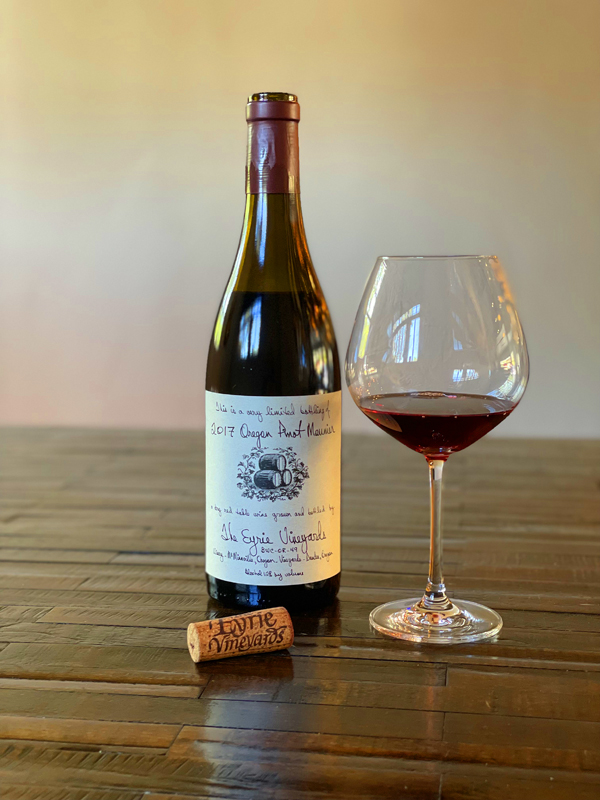
2017 The Eyrie Vineyards, Pinot Meunier, Dundee Hills, Willamette Valley, Oregon.
This is a very distinctly old world style wine, made from 100% Meunier, with burst of tart cherries and an earthy character, reminding me of an old school Fleurie Cru Beaujolais, especially after getting some air it gains dimension of a striking floral nature and a leathery element with added layers of wild plum, red current and strawberry fruits, accented by herbal tones, mineral, baking spices, violets and orange peel. Tangy fresh and with silky tannins, even in warm and ripe year this wine shows off is vibrant natural acidity, making for a medium bodied wine that is wonderfully detailed and balanced, best served slightly chilled and with food, which will allow the fruit to fill out and open up its complexity. The Eyrie estate vineyards are all certified organic, and two of the three local growers they purchase fruit from are also certified organic, while the third is organic, but not officially certified. Lett uses native/natural fermentations and old barrels for aging with a small percentage of whole cluster, with his Pinots especially this works brilliantly to showcase vintage nuance and terroir and this Meunier benefits from his approach and I am very impressed with the raw allure of this dark garnet and sultry wine.
Jason Lett, winemaker here at Eyrie, is a second generation winegrower, his dad David Lett, an Oregon legend, pioneered both Pinot Noir and its white wine cousin Pinot gris in the Willamette Valley, the two grapes that have defined Oregon wine the last three decades. David established the style of authentic wines with his artisanal, individualistic, transparent and even idiosyncratic in the state, that many later arrivals here been inspired by. David and Diana Lett founded Eyrie in the early 70s and had even back then believed in sustainable farming, an idea that was way before the current push toward holistic wine growing. Lett the younger is very much keeping the faith and things at The Eyrie Vineyard remain purposefully rustic and charming with a set of iconic Pinot Noirs, as well as still doing Pinot Gris, with some bottlings seeing skin contact for both a orange wine and a delicate Rosé like version, plus some interesting alternative varietals, like this Meunier, a Chasseles Doré, Trousseau, Pinot Blanc and Muscat. In fact, Jason Lett planted the Willamette Valley’s first Trousseau vines and his version of this Jura grape is highly coveted, and I think if people get this Meunier in their glass it will also attract a significant following, if it already doesn’t. This rare 2017 The Eyrie Meunier, the lesser known Champagne grape, has lots to admire, which the Dundee volcanic soils add to, makes for a deviously good wine and I look forward to seeing what the next vintage looks like.
($40 ESt.) 93 Points, grapelive
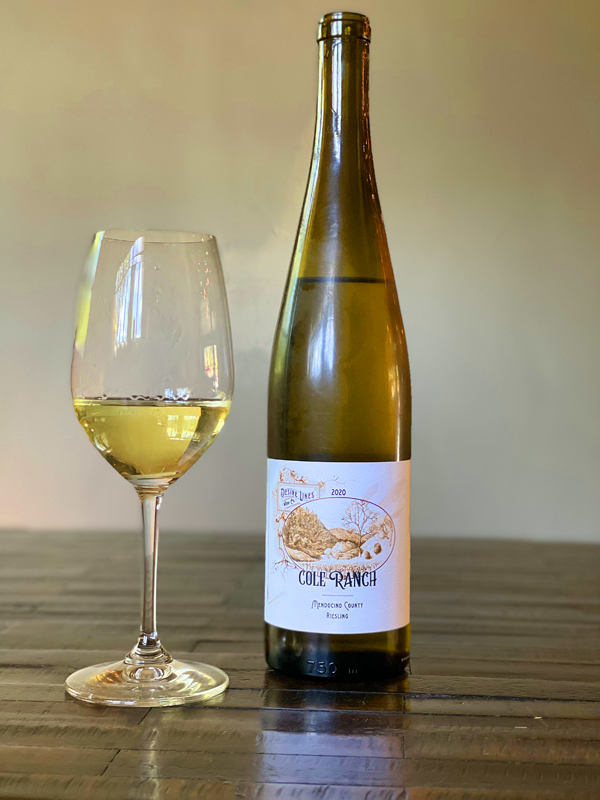
2020 Desire Lines Wine Co, Dry Riesling, Cole Ranch Vineyard & AVA, Mendocino County.
The beautifully aromatic and crisply bone dry Cole Ranch Riesling from Desire Lines Wine Co is a stellar california version of this varietal with mineral intensity, racy acidity and chiseled stony detailing that perfectly transmits the combination of rocky soils, that includes some limestone, gravel and loam. Desire Lines Wine Co, best known for their impressive, if not outstanding Syrah wines, also do a few intriguing whites, including a Shake Ridge Viognier, their Experimental Series Kick Ranch Sauvignon Blanc and this awesome Riesling from Cole Ranch, a site that benefits from Ocean breezes and cold nights that help store up the vibrant energy, while allowing an even ripening of the grapes. Interestingly, the Cole Ranch AVA, originally established in 1983, but the vines date back to 1971 when former owner Joe Cole planted them here, is an American Viticultural Area, and a single vineyard, located in Mendocino County, California. This area of vines, at less than a quarter of a square mile, about 60 acres, makes it the smallest AVA (appellation) in the United States. This tiny AVA is located between the Russian River and Anderson Valley and is home to some of the state’s most prized Riesling, as well as having small parcels of Cabernet Sauvignon, Merlot and Pinot Noir, all of which is sold to just a few wineries. This vineyard is set on a series of high hills ranging from 1,400-1,600 feet in elevation, and is now owned by the Sterling family, proprietors of the Esterlina Winery, that is located in Philo, controlling the entire vineyard acreage of the appellation, suppling Desire Lines with a some Riesling, as well as Pinot Noir guru Ross Cobb, who’s own version of dry Riesling has a cult like following. Cody and Emily Rasmussen started their own micro-winery and label, Desire Lines Wine Co. with a small batch of Syrah in 2014 and now has a wonderful collection of wines from which to chose. To make his Rieslings, Cody Rasmussen, uses traditional old world methods, with grapes seeing a whole cluster pressing with cold settling in tank, which bleeds out, or drops out the green phenolics, that, as Cody explains, is followed by fermentation in neutral barrels, where the wines are left on fine lees until bottling in the following summer, or about 9 months in total, which allows for a charming roundness, while focusing on absolute purity.
This dusty dry and steely 2020 Desire Lines Wine Co Cole Ranch Riesling shows off a lime citrus, tart peach, green apple and grapefruit led palate that adds tangy quince, bitter melon and a subtle tropical note as well as verbena, minty herb and crushed stones notes. As the wine opens you really take in the complexity, high toned floral aromatics, chamomile, clove spice, chalky sweet tarts and a gripping sense of dry extract, making me think of Rieslings from the Pfalz, and the Rheinhessen, like Keller’s Limestone bottling as well as a quality similar to what the best Aussie version from the Clare and Eden, this is outstanding stuff. Winemaker at Desire Lines Wine Co, Cody Rasmussen, as always, says that the Cole Ranch Riesling is a wine that’s especially close to his heart and this vintage is his fifth year working with the old-vine Riesling from Cole Ranch, a unique site that both a single vineyard and an AVA all to itself. Rasmussen adds, he tied his business card to the gate with the brown paper handle from his lunch sack in October of 2016, he didn’t ever imagine or think he’d get any grapes from here in the first place. Going on to reveal he never would have dared to dream that he’d grow to know and love the vineyard over half a decade (and counting) now, while I say he has done magic with this fruit and the Desire Lines Cole Ranch Dry Riesling is one of the best new world examples I’ve ever tasted. The 2020 Cole Ranch Riesling is cut in the mold of Rasmussen’s 2018, one of my favorites, with the numbers coming in at just 3.4 g/L residual sugar with a 3.03 pH and 7.3 titratable acidity, making it almost perfectly structured in a severe Trocken or Alsace mold. Cody sees this as a wine that’s going to age beautifully, though thinks, as I do, that it is delicious now. If you’ve not discovered Cody Rasmussen’s wines yet, you really should do your best to change that, as I’ve said before, and especially look for his Desire Lines Wine Co Syrah and Riesling bottlings. I highly recommend their Griffin’s Lair and Shake Ridge Syrahs, plus this fabulous wine, of course, as well as the Carignane and Mourvedre red blend from the Evangelho Vineyard in Contra Costa, which is owned by Cody’s boss, Morgan Twain-Peterson MW of Bedrock Wine Co. This Cole Ranch Riesling is a lovely and refreshing Summer sipper, but it really rises to the occasion when served with food, from briny oysters to traditional Alsace dishes it is up to the challenge and it should drink nicely for many years to come. There are very few wines that offer this much quality for the price, Riesling fans will want to find this wine and I suggest getting on the mailing list, as the 2021s should be equally compelling if not even better!
($25 Est.) 95 Points, grapelive
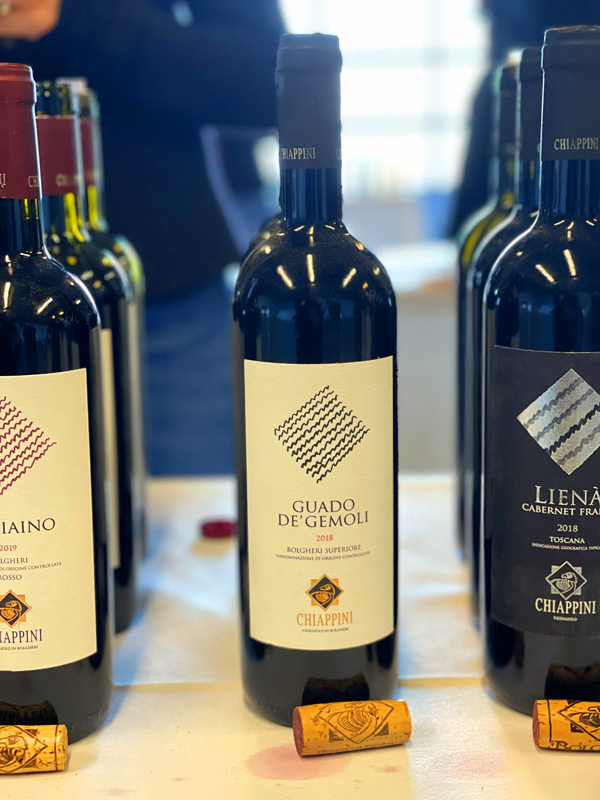
2018 Chiappini, Guado De’ Gemoli, Bolgheri Superiore DOC, Tuscany, Italy.
There’s a lot to love with the Chiappini wines, and it was great to taste through them at this year’s Slow Wine tasting, especially good was their latest Guide De’ Gemoli Bolgheri Superior, which shows gorgeous depth and graceful mouth feel with this 2018 vintage showing blackberry, plum, cherry and mulberry fruits along with polished French oak shadings, as well as anise, tobacco, sandalwood and creme de cassis. This is Chiappini’s signature wine, modeled after their famous neighbor at Ornellaia, is classic Bordeaux blend featuring mainly Cabernet Sauvignon 70%, Merlot 15% and Cabernet franc 15% coming from their Bolgheri estate vines, including the Le Grottine Vineyard, which was planted back in 1978 along with Felciaino, that got planted in 1986, both set on the region’s alluvial and clay like soils with a concentration of calcareous deposits, which along with the Tuscan Coast climate makes for outstanding fruit density, flavor richness, elegant tannic structure and complexity. This vintage is exceptional and the Cab Franc has some nice exotic spice and violets, while the Merlot adds roundness and fills the gaps, backing up the dominate and powerful Cabernet Sauvignon perfectly, making for a wine that impresses the senses with a full body and a divine lingering dark fruited finish that has a touch of smoky vanilla and racy cinnamon accents. The Guado De’ Gemoli has long been a favorite of mine and this release is delicious, and the other one I usually go for is the Ferruggini, a blend of Sangiovese 50%, Cabernet Sauvignon 30% and Syrah 20%, which is a great value and maybe a touch juicier in style, though I must also mention the single cru Felciaino, which is a site blended red of Cabernet Sauvignon 50%, Merlot 40% and the rest a small dose of Sangiovese, it is in some years the best wine.
The wine making at Chiappini is a study in not doing too much, but giving the customer everything they expect with natural fermentation in steel tanks and a cool maceration period to extract color, flavor intensity and a tannic backbone. The maturation or elevage for the Guado De’ Gemoli lasts at least 18 months in classic French oak barrels, with just 15% being brand new and the rest seeing second or third use wood that tone down the sweet, smoky toast to an acceptable and well judged amount. The wines at Chiappini try to capture the essence of place and are an artful and soulful expression of the Bolgheri region that give a warmth of character that I find distinctive, it is shared by the legendary estates here, like the mentioned Ornellaia, as well as Tenuta San Guido (Sassicaia) and Le Machiole, to name a few. This is the region of Super Tuscans, with Cabernet Sauvignon being the star, but in recent times the wines with Cabernet Franc leading the way are being standouts, and of course the Merlot here has a cult following, as witnessed in the Masseto and Messorio bottlings by Ornellaia and Le Machiole respectively. Chiappini also does a line of single varietal wines as as the Bordeaux and hybrid Tuscan blends, this line known as Liena, includes a stunning Cab Franc, that I recently reviewed here at grape live.com, as well as a pure Cabernet Sauvignon, a Merlot, and a unique 100% Petit Verdot, which I am very much looking forward to trying. The Chiappini family is led by their patriarch Giovanni, who represents the beating heart of the estate and who has put his heart and soul into the dirt here, this place is a mirror of his hard work, and his son Alessandro makes the wines. I know his daughter Martina, the sales director for Chiappini, through her trips here to California and it was great to see her at Slow Wine, where she wowed this year’s gathering with these wines, and as mentioned, especially this Guado De’ Gemoli, which is awesome, it compares well with wines twice or three times the price.
($65 Est.) 94 Points, grapelive
2015 Borgogno, Barolo DOCG, Cannubi, Piedmonte, Italy.
When I tasted the 2015 Borgogno Cannubi, I felt a sense inner peace and the presence of classic Nebbiolo purity, it excited my palate with layers of opulent density, showing macerated cherry, damson plum, strawberry and mulberry fruits that were admirably seamless on the full bodied palate, these flavors were joined by earth cedar, anise, mineral tones, distilled ros petals and a light truffle note. I should mention that there was a welcome tame feeling of tannins, rather than the usual youthful harshness and I think the 2015, which is more overt in fruit, seductive and or hedonistic is less fierce in grip than I expected and I believe it will appeal throughout its drinking window, which will be considerable, measured in decades. Maybe the warm of the year and transparent winemaking have benefited this gorgeous wine, I loved every sip of this Cannubi and the length is fabulous, making for a glorious Nebbiolo experience. I hope to re-visit this one in 10 years, I was lucky enough to try a Borgogno 2006 not too long ago and that was amazing, these are exceptional wines. Founded in 1761, Borgogno is the oldest continuously operating winery in Barolo, is now run by Farinetti family, who bought the estate in 2008. As noted in my prior reviews and as the winery explains, this historic property under Andrea Farinetti’s leadership, has seen an organic conversion and the winery reverted to using only cement vats for fermentation, and a return to the original or the estate’s original winemaking style. All the wines are made at the estate’s winemaking facility in the village of Barolo in their underground network of historic fermentation and aging rooms. Another bonus for Nebbiolo lovers, Borgogno has one of the deepest wine libraries in the world, with Barolo vintages stretching back decades. This brickish dark ruby/garnet 2015 gains from air and gets seductively aromatically in the glass, it is a wine that deserves to be a center of attention with a hearty meal.
The Borgogno Cannubi cru Barolo, like all of their single vineyard and riserva wines, was hand crafted with traditional methods, made only from the best grapes from Cannubi and fermented with native yeasts and sees a gentle extraction to allow for delicacy, while building age worthy structure. This spontaneous natural fermentation takes place in cement tanks at low temperatures and is followed by a long submerged cap maceration, which the winery says, can in some vintages like this one, reach 50 days before being raked off to mainly large oak casks. The Cannubi site is set on calcareous soils, with clay marl, and is slightly sandy, with Borgogno’s patch being perfectly situated to capture the sun, this terroir delivers power, chalky stoniness and ripe flavors. The aging for the Barolo Riserva happens exclusively in big Slavonian oak barrels for a massive six years, then this wine, like all Borgogno’s Riservas, was rested almost a year in bottle before being released from the cellar, while the Cannubi, as the winery says, gets 4 years in Slavonian oak casks (4500L) with a further 6 mounths in bottle before release. Cannubi is maybe the most famous and renowned cru of Barolo with a long history, that dates back to the 1700s, the Nebbiolo here is legendary and it is always a special treat to drink wines from this prestigious Piedmonte vineyard. Even though the year was marked by an extended period of heat, Borgogno’s vines weren’t overly stressed and even they had to pick early, they highly rate this vintage, which I cannot disagree with, as much as I enjoyed their effort here. This 2015, is quite expressive for a young Borgogno and it opens luxuriously, maybe this is baby fat and it performs as well as the nose and first impressions promised. In the past, I remarked that these wines had a hardness or an austere personality, but now I am thrilled by these wines, especially this one and can’t wait to try the upcoming Cru Vineyard 2016 releases, especially their Cannubi Barolo, which has wonderfully over delivered in the difficult 2014 and the warm 2015 vintages!
($150 to $195 Est.) 95 Points, grapelive
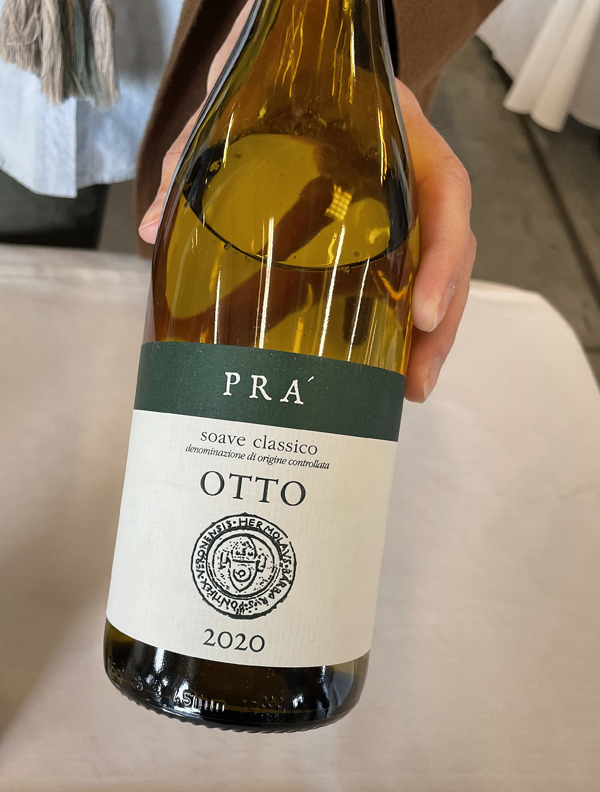
2020 Prá, Soave Classico DOC “Otto” Veneto, Italy.
Another brilliant example of just how good these modern Soave wines can be by Prá, one of the best producers here in the greater Veneto area, who put on a good display at this year’s Slow Wine tasting event in San Francisco. The Otto Soave Classico DOC from this 2020 vintage is wonderfully expressive, lively with good acidity and nicely textural in mouth feel, making it quite impressive and deep, especially for the price, this crisply detailed white flows gracefully, but brightly across the palate with juicy dry citrus fruits, plus white peach and white cherry notes, along with crushed stones, verbena, almond oil, delicate florals and spices. The Prá Otto Soave Classico DOC is made from Garganega, it is a white grape variety believed to be native to northern Italy and chiefly cultivated here in the hills around the ancient town of Soave, just east of Verona and near Lake Garda.
Prá is a historic, benchmark producer of Soave, along with Pieropan, Inama and Gini, and an often under-the-radar, as well as a solid producer of Valpolicella and famous also for Amarone, with vineyards that are all certified organic. Winemaker and grower, Graziano Prà uses grapes grown on volcanic soils with basalt and chalk for his Otto Soave that are entirely made of Garganega, the native varietal found here. The Otto, named after Graziano’s dog, sees stainless steel tank fermentation and aging, with no oak being used, getting six months in tank to mature and it reveals absolute purity of form and has a transparent personality and charm, it is an excellent sipper and food wine. I had a hard choice deciding between the Prá wines to review here, all of them deserve great attention and all were beautifully crafted, but I went with the Otto Soave because of it’s value and ease of use, it is a great way to start exploring this winery and the region and I highly recommend it.
($23 Est.) 90 Points, grapelive
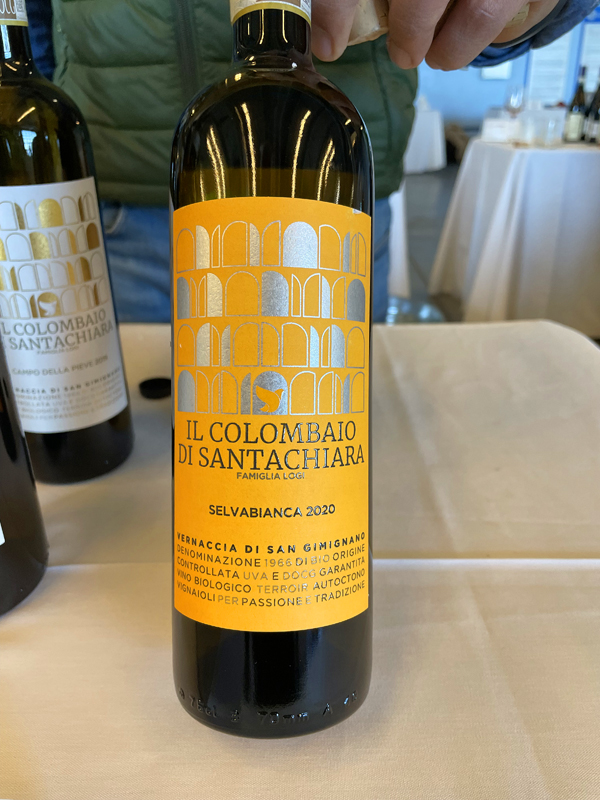
2020 Il Colombaio di Santachiara, Vernaccia di San Gimignano DOCG “Selvabianca” Tuscan Wine Wine, Italy.
I recently reviewed one of the Il Colombaio di Santachiara Vernaccia di San Gimignano wines, but I could not move on without talking about this one, the 2020 Selvabianca, which is distinctly unique in this winery’s collection and is utterly delicious on its own and in its own right with brisk mineral intensity and hyper clarity of flavors and aromas, while having a beautiful textural presence in the glass. Two winemaking friends, Dylan and Tobe Sheldon of Sheldon Wines, are currently visiting Tuscany and taking a few romantic days in Florence, and by chance they had this wine while they were there and it looked perfect on a warm evening in such a dramatically beautiful setting, kicking me to get my own notes out on this one. The prior review on Il Colombaio di Santachiara, I wrote about the cement tank fermented version, which also saw an extended elevage, while this Selvabianca saw only stainless steel, both for fermentation and lees aging, to allow absolute varietal purity, vintage nuance and terroir transparency here. This steely 2020 edition shines brightly with an array of racy citrus, including lemon/lime, white peach, kiwi and quince fruits, as well as a hint of orange blossoms, wet stones, snappy herbs and a touch of almond paste. This is tasty white wine that has lots of character and charm that will be fabulous for Summer sipping and is a great food wine, it is wines like this that show that this region is not a one trick pony where only red wines, usually Sangiovese, rule the day, Tuscany has now a full range of quality white wines. I truly miss Italy and Tuscany, so this wine gave me a wonderful reminder of the joys of travel and this special place, bringing back fond memories of wandering through the narrow alleys of San Gimignano with the ancient towers above, this famous hilltop town is a must visit when in the region, along with the near by Siena and of course Florence.
The small family run winery, Il Colombaio di Santa Chiara, formerly a historic Parish known as San Donato, with buildings, chapel and farmland, has being become one of San Gimignano’s best producers, focusing on the Vernaccia grape and making wine of precision and elegance far removed from the generic light versions, which were far too common in this region until recently. The property, owned Mario Logi, and run by his three sons Giampiero, Stefano and Alessio, who is the winemaker here, is now called Locanda dei Logi, and is beautiful inn and winery just a short distance from the famous hilltop town with those ancient towers, San Gimignano, and just a short drive away from Siena. The Il Colombaio di Santa Chiara’s three fabulous bottlings of DOCG Vernaccia di San Gimignano, that I tried, one wood aged, one cement aged and this Selvabianca, as mentioned, done in stainless, all are outstanding examples that deserve attention, I highly recommend them, especially this one. Il Colombaio di Santa Chiara was, as I noted before, one of my best finds at the 2022 San Francisco Slow Wine tasting. The estate is holistically farmed and Mario and his sons are constantly among their vines, and like most producers, they believe a great wine is the result of great vines in a great terroir. The vineyard’s health requires hard work and lots of attention, and the Logi’s put the time in here, it shows in the wines. Mario, who has worked the land here since his teens in the 1950s, and his sons wanted to create a healthy biosphere on the estate for the vines and surrounding plants and it is for that the reason they worked hard to obtain full organic certification. This single vineyard, 100% Vernaccia di Gimignano, was sourced from vines set on chalky soils composed of old Pliocene sands and clays, it saw a soft pressing of the grapes, with indigenous yeast fermentation all cool and temperature controlled to preserve those pretty aromatics. Again, I recommend chasing these down, they have elevated this region greatly and are very exciting wines.
($23 Est.) 92 Points, grapelive
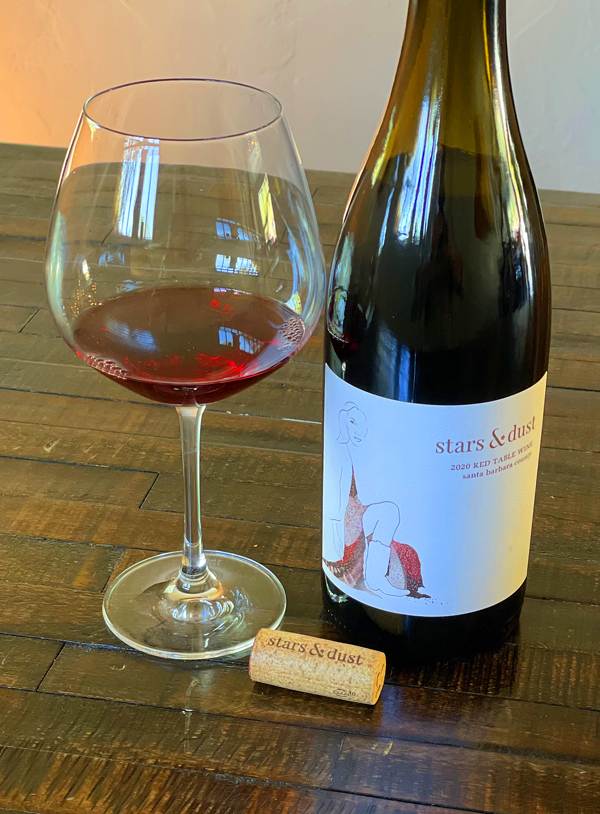
2020 Stars & Dust, Red Table Wine, Tierra Alta Vineyard, Santa Barbara County.
The dark ruby/magenta all Grenache Stars & Dust Red Table Wine is a single vineyard wine with loads of fresh pop and a quaffable personality, it is a wine that is more serious and aromatic that you first think, gaining complexity, spice and savory tones with every pleasing sip with brandied cherries, cranberry, juicy plum and crushed raspberry fruits, dried lavender, anise, cola bean, earthy elements, bright stem (peppery) bitterness and tangy pomegranate. This is delightful and medium bodied low alcohol Grenache that is very much a Cotes du California effort, no pretense, but absolutely delicious, perfumed and great with a wide range of foods. I am loving all the releases so far from the new Stars & Dust label, which started just a few years ago and best known for some stunning Rosé offerings, one made from 100% Mourvedre, which is incredible and Bandol like, plus a sublime Grenache based version, coming from the same Tierra Alta Vineyard where Stars & Dust got the grapes for this nice effort. Owner Nikki Pallesen has created a very tidy collection of small lot wines, most being four barrel each, like this one that saw just 80 cases being made. The more I sip on this Grenache, the more I want, and I can’t wait for Pallesen’s up coming 2021 Rosés, they are sure to be even better, since the vintage was more intense with great acidity, which will make for exciting wines, especially in the style she is looking to make.
Stars & Dust was founded by Nikki Pallesen, ex Liquid Farm, in 2020, focusing on small production, Santa Barbara County wines, featuring what she calls mineral driven Rosés, Single Vineyard Old Vine Chardonnays and now a few fun Reds, like this one. This wine, a Winter release, came as a bit of a surprise, but a very welcome one, even though I had been eagerly waiting Nikki’s set of Chardonnays, which I was also lucky enough to grab at the same time, coming from Old Vine sites they do look like special offerings, and I’ll review them soon. The Red Table Wine, 100% handpicked Grenache, was picked a bit early for freshness and comes in at just 12.4% natural alcohol, but to add a bit of refinement it was aged for 10 months in 100% neutral barrel, used French oak. This was made to be an enjoyable lighter style red, with a bit of Beaujolais like crisp stony character, and Nikki says that a friend playfully nicknamed it “Grenjolais” and I can see why, it is also good with a slight chill on a warm day. The Los Olivos District AVA, which was recently formed in 2016, is in the Santa Ynez Valley, mostly formed from an area between the Santa Ynez River, between the Purisima Hills above Solvang and set on on a broad alluvial terrace plain with well drained soils with gravel, Orcutt sandy terraces, clay loams and the locally unique complex of Positas-Ballard-Santa Ynez alluvial deposits. The climate here is heavily influenced by maritime conditions and a long growing season with some warm Summer days helping ripen the Grenache at the Tierra Alta Vineyard. If you are looking for a Summer red, you would be advised to grab some of this stuff and get on the Stars & Dust mailing list to get the Rosés!
($28 Est.) 91 Points, grapelive
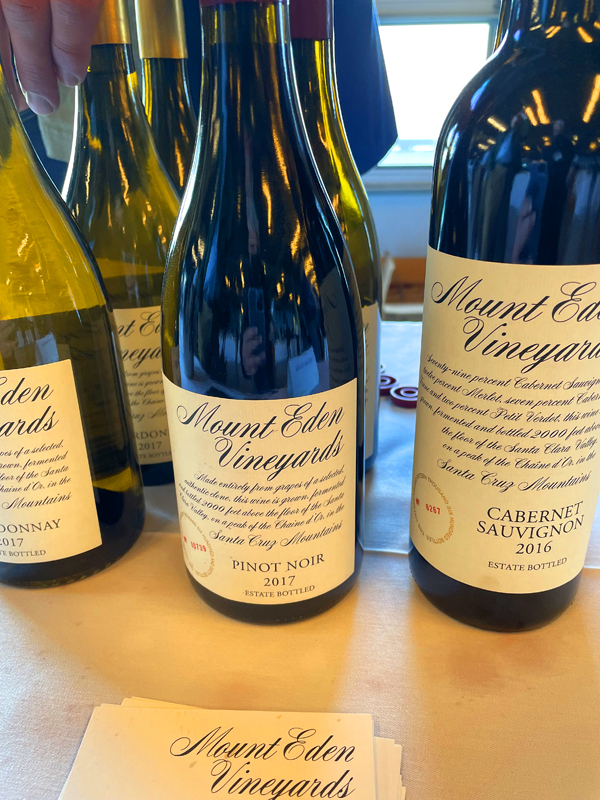
2017 Mount Eden Vineyards, Pinot Noir, Estate, Santa Cruz Mountains.
The dark ruby colored and richly flavored 2017 Mount Eden Estate Pinot Noir is silky and ripe, this is exactly what you’d expect and want in such an iconic California wine with gorgeous layers of black cherry, plum and raspberry fruits along with tea spices, dried rose petals, smoky/toasty oak framing and blood orange accents. This medium/full bodied effort from Jeffery Patterson is showing fabulous right now, it was one of the stars of this year’s Slow Wine event in San Francisco and it looks like it will age very nicely, providing outstanding quality and depth, gaining complexity with every sip. In the more modern era of Mount Eden Vineyards, as I have noted here, Jeffrey Patterson, a traditional winegrower (vigneron) has made this historic estate one of California’s absolute best labels. This wine from the Saratoga area of the Santa Cruz Mountains is one of the state’s Grand Cru Pinots, joining legends like Rochioli, Williams Selyem, Joseph Swan, Calera and Hanzell, with this vintage impressing for its deep fruit density and energy, it is a very rewarding wine.
The famed Martin Ray originally planted Pinot Noir vines here at Mount Eden in 1945, with the budwood coming from Paul Masson’s original vineyard at the Mountain Winery that Masson, who was a good friend of the Louis Latour family of Burgundy, brought to California during the 1880s. This Mount Eden Pinot Noir vines occupy seven acres of the estate vineyard and typically yield a meager one to one-and-a-half tons per acre, which adds to the richness and concentration in these wines. Patterson employs natural yeasts, and his fermentations are done in small open-top fermentors, where maceration usually extends to between ten to fourteen days, with the musts seeing gentile punch downs by hand. The new wine, after primary is finished, is then immediately put into 75% new and 25% one-year-old French oak barriques. The Estate Pinot sees a long elevage, it matures in the barrel for eighteen months before being bottled unfined and unfiltered, plus it ages in bottle in the cellar for close to another year. I was great to taste through these beautiful Mount Eden Estate offerings at the Slow Wine show, and as you can see (from my reviews), I was very impressed with their Chardonnay as well as this Pinot and the awesome 2016 Cabernet Sauvignon, these wines all are fantastic values too.
($65 Est.) 95 Points, grapelive
2019 Krupp Brothers Winery, Chardonnay, Stagecoach Vineyards, Napa Valley.
The very polished and decadently creamy Krupp Chardonnay retains the 2019 vintage’s cool inner brightness, making for an opulent full bodied version that still has energy, a mineral charm and complexity, it performs in the glass like one would expect from top Napa Chardonnays, in the vein of Kongsgaard and or Pahlmeyer. The mouth feel is lush with lemon curd, apple, white peach, pineapple and golden fig fruits, along with leesy brioche, clove spice, buttercream, toasty oak vanilla and wet stones accents. While weighty and with a serious presence, this vintage can surprise for its agility and the natural acidity comes through at the perfect moment to balance the luxurious personality here, it also allows real enjoyment with food, especially things like lobster tail, crab and soft cheeses. This Krupp Chardonnay, which comes from a special cool parcel on the Stagecoach Vineyard and hillside vines and saw barrel fermentation and aging, with an elevage of close to a year, after going through full malo-lactic conversion, with a high percentage of medium plus French oak barriques being employed. I gotta say, while I was nonchalant at first, tasting this wine with the Krupp’s awesome lineup of reds, this wine ended up impressing me with how well it stood up during my visit and I went back to it frequently to admire it.
As mentioned in recent reviews, it was long overdue to taste through the Krupp Bother wines and everything I tasted was impeccably well made and showing a purity of form, especially good on the day was their gorgeous 2018 Synchrony, a Bordeaux blend with good dose of Cab Franc, the dark and powerful Veraison Stagecoach Cabernet Sauvignon, the classic bottling from this small family winery, and the inky violet Black Bart Stagecoach Syrah, which has long been a favorite of mine. The winery, now located just off the Silverado Trail in a beautiful Tuscan style villa, which has surrounding vineyards that will go into some future bottlings, but still focuses on the Stagecoach fruit, even after the Krupp’s sold it off a few years back. The Stagecoach Vineyard, that the Krupp’s planted in pure rock, is a modern marvel that required a moving of heaven and earth to plant, is a rocky site, one of Napa’s most prized, situated between Howell Mountain and Pritchard Hill provides top notch grapes to some of the valley’s elite wines. The first time I visited the Krupp Brothers I visited Stagecoach, so this time felt different, but exciting to tour their new property and see a glimpse of their future, especially as winemaker Desiree O’Donovan is getting a chance to show off her talents going forward. After using top consultants for many years, the Krupp’s have put their faith in O’Donovan, a Napa native, who has loads of experience with these wines, being the long time assistant winemaker here, as well as some other boutique labels. The textural and expressive Krupp Chardonnay sometimes gets overlooked, but is a delicious effort and is performing exceptionally nicely right now.
($65 Est.) 93 Points, grapelive
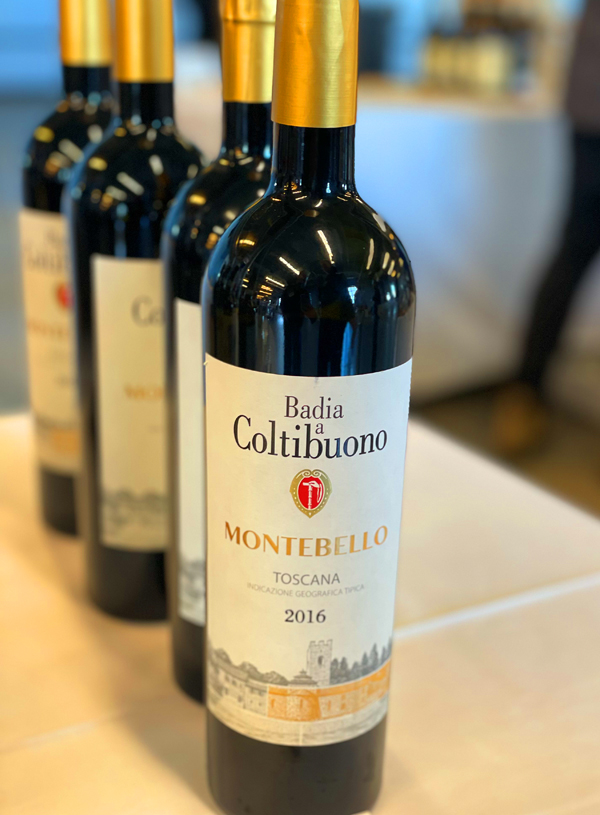
2016 Badia a Coltibuono, Montebello, Toscana IGT Rosso, Italy.
The Gaiole based Badia a Coltibuono, which dates back to 1846, makes some of the Chianti Classico’s most desirable wines and tasting the lineup recently at the 2022 Slow Wine tasting in San Francisco reminded me of how much that I miss Tuscany and how much I enjoy these wines. This 2016 IGT Rosso “Montebello” made by Roberto Stucchi Prinetti, along with consultant Maurizio Castelli really shined on the day, it is an interesting wine, because rather than focusing on Sangiovese (or international varieties), the winery uses a blend of nine of Chianti’s most important indigenous red varieties in equal parts, including Canaiolo Nero, Ciliegiolo, Colorino, Foglia Tonda, Malvasia Nera, Mammolo, Pugnitello, Sanforte and Sangiovese. This dark garnet colored and robust wine shows an earthy intensity and layers of dark berries, plum, currant and cherry fruits, along with tobacco leaf, cedar, minty herbs and a iron note, going some nice floral tones and anise with air. This wine is from a gorgeous vintage and brings an opulent sense and ripe character, making it an intriguing and compelling effort. All the grapes are from sustainable vines set on classic limestone and clay loam soils, that are Organic & Certified Organic. In some ways this wine is a throw back to another age, but done impeccably well and with finessed winemaking, this is not stuff you ever found in the straw basket bottles of the 1970s. Unlike old school field blends, each variety is fermented, with native yeasts, and aged individually in small lots and then blended after a year of barrel aging in a mix of mostly used French wood, with just 10% being new oak. Badia a Coltibuono was originally founded as an abbey (badia) in 1051 by St. Giovanni Gualberto, the founder of the Vallumbrosan Order of Benedictine monks, who may have been the first to cultivate Sangiovese in Chianti and these monks, who were very instrumental in wine growing, helped establish the traditions that have made this estate one of the best known and loved in the region.
The Tuscan sun and hillsides have been looking on the Badia a Coltibuono property for almost a thousand years with winemaking predating the Romans, and while the buildings here now were constructed long after wine was first made on the estate the is evidence that the wine-savvy Etruscans were present here as well. Grape-seeds, tartaric acid residue and amphorae from the first century A.D. Roman period, used for wine production, were found here. An archaeological dig on the estate unearthed ruins from these ancient times, but still, the modern version of Coltibuono is an old estate even by local standards and the vineyards, which are in the Chianti Classico commune of Gaiole in Chianti are led by the fifth generation of the Prinetti family. There are 150 acres of vineyards on the property, along with another 50 acres of olive trees, surrounded by the beautifully forested hillsides. Of course, as the Prinetti’s note, that this being Chianti Classico, Sangiovese is naturally the most important grape variety planted here, though following traditions, they also have Canaiolo Nero, Ciliegiolo, Colorino, Foglia Tonda, Malvasia Nera, Mammolo, Pugnitello, and Sanforte, all native varietals, as well as Trebbiano and Malvasia for their famous Vin Santo dessert wine. Owners, Emanuela, Paolo, and Roberto Stucchi Prinetti, winemaker, really have continued the long history here with lots of respect for nature and look to the future with pride of place and I can say the wines have never been better. While this wine really did captivate me, I must also report that the Sangiovese based wines were beautiful and rewarding as well, with the regular 2019 Badia a Coltibuono Chianti Classico and the 2017 Badia a Coltibuono Chianti Classico Riserva being outstanding examples, both offering immense comfort, complexity and drinking pleasure. This Badia a Coltibuono Montebello IGT Rosso bottling, with about 11% percent of each of the nine local grapes, is a wine that while not within the DOCG Chianti Classico labeling rules, that has plenty of terroir charm, serious fruit density (depth) and the structure to impress, I highly recommend chasing some down.
($60 Est.) 94 Points, grapelive
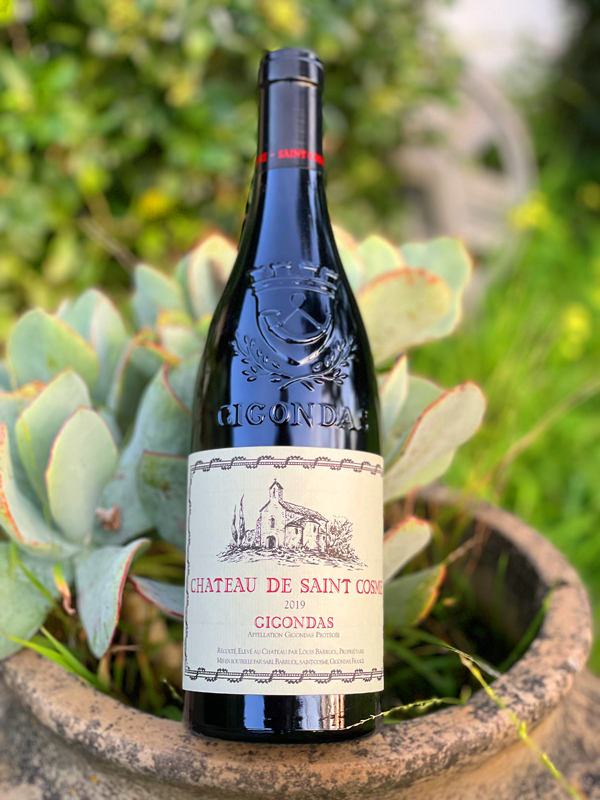
2019 Chateau de Saint Cosme, Gigondas, Rhone Valley, France.
As readers of this website will most certainly know, Chateau de Saint Cosme Gigondas is one of my personal favorites and a wine I drink for my own pleasure and try to review every vintage, it always seems to get better and better, even with such expectations this wine, especially this stunning 2019, continues to thrill me and impress for the depth and quality for the price, there may not be a better wine value anywhere! I am a huge admirer of Louis Barroul’s wines, from his outstanding 100% Syrah Cotes du Rhone to his signature Grenache led Gigondas, as well as his set of beauties from the Northern Rhone sites, including his Cote-Rotie, Saint-Joseph, Crozes-Hermitage and the Condrieu. This deeply saturated 2019 Gigondas opens with a mix of dark berry fruit, spice, heady aromas and savory elements with boysenberry, black plum, pomegranate and wild strawberry fruits flowing across the full bodied palate along with lavender, pepper, anise and subtle earthy tones, gaining impact and presence in the glass with every sip, while providing immediate pleasure. This is another sensational effort from Saint Cosme with fine grained tannins, raw transparency and a lingering creme de cassis finish, well worth aging, for those that have patience there will be tremendous rewards, even though the youthful fruit intensity makes for a hedonistic experience that is hard to resist even in such a youthful wine. Best to have this wine with simple, but hearty cuisine and I would, as always, suggest a 30 minute to an hour decanting here, which will bring additional joy and a more chocolatey mouth feel.
The Chateau de Saint Cosme estate in the Southern Rhone is one of the best and most consistent wineries in France, their signature Gigondas continues to be as good as anything made in the old world, with these latest three or vintages being nearly perfect in every way imaginable. Chateau de Saint Cosme was one of the earliest wineries in the region with caves that go back to before Roman times. Louis Barruol is one of the greatest Rhone vignerons of his generation and makes some of the best value selections in the region with estate holdings primarily in Gigondas, he also has a thrilling set of negociant wines from growers in both the Southern side as well as in top areas of the Northern Rhone. As I have noted in prior reviews, Barruol, who father was a pioneer and a traditionalist loved to co-ferment his grapes and paid great attention to detail and focused his vines to achieve individual varietal ripeness. Louis continues that today with his current Gigondas collection, he explains that this is why at Saint Cosme, the early-ripening cultivars (grapes) are planted in the late-ripening sites and the late-ripening varieties in the early-ripening sites, adding that, in this way, they all ripen at the same time and can therefore be co-fermented. This 2019 was a blend of 70% Grenache, 15% Mourvèdre, 14% Syrah and about 1% Cinsault, as mentioned, co-fermented in concrete from all organic vines. The Gigondas was then aged in a combination of vessels with nearly 20% in new oak, 50% in used oak and with close to 30% of this Rhone in cement vats, to promote purity and terroir, which this vintage does exceptionally well. This is a modern classic, very similar to the wildly good 2016, that should not be missed!
($40 Est.) 95+ Points, grapelive
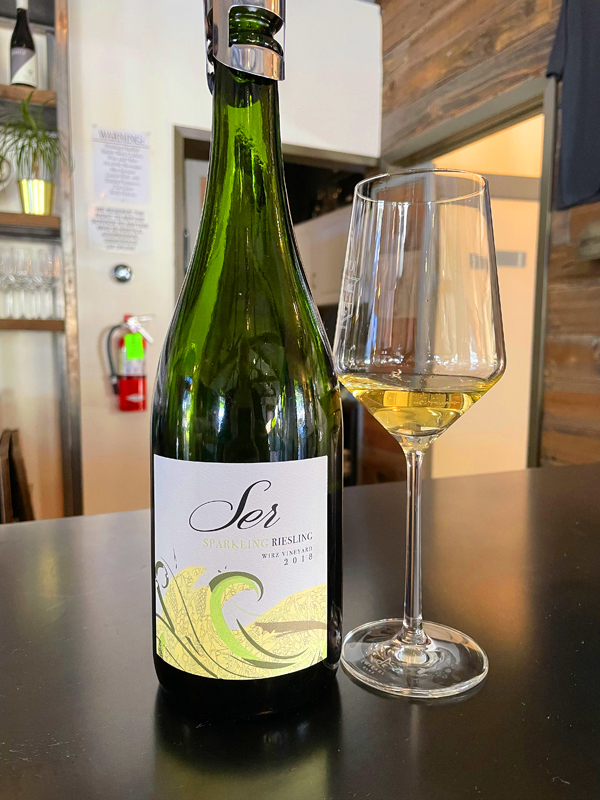
2018 Ser, Sparkling Riesling, Wirz Vineyard, Cienega Valley, San Benito County.
I hadn’t had Ser in a while, so it was great that a colleague who works for another winery splashed me this zesty and bright Sparkling Riesling, it really hit the spot and reminded me that I need to check out this small winery’s latest releases. This 2018 Wirz Vineyard dry Riesling bubbly was made in the classic Methode Champenoise style, and the wine spent 16 months en tirage, on the lees and then disgorged for impeccable clarity and elegance. The pure Riesling flavor profile, with green apple, tart peach, racy lemony citrus along with the doughy brioche make for an easy to love sipper that can be enjoyed with or without food, though I highly recommend having it with shellfish, like oysters, clams or mussels. The aromas are muted, but the mineral chalkiness is delightful and as someone that is a noted Riesling geek, I loved how Sekt (German Sparkling Wine) like this wine is and how zingy the acidity is. I have been a fan of Nicole Walsh’s Ser wines for a while now and in the past was thrilled by her Enz Vineyard Cabernet Pfeffer, coming from those 133 year old vines. Cab Pfeffer is, as Walsh notes, a synonym for a rare grape variety grown in Southern France, called Mourtaou, and hers is a beauty, putting a spotlight on this dry farmed, head trained, and sustainable grown vines set on decomposed granite and limestone soils, like what this Wirz Riesling comes from. Ser also does a fabulous Cab Pfeffer Rosé to go with the red and I am looking forward to see the 2021 version that should be coming out soon.
Winemaker, Nicole Walsh, who has been girl Friday behind Randall Grahm at Bonny Doon for more than 15 years, created her Ser label to step out of the shadows of other wineries and present her own style to the world, with many unique bottlings, like this Sparkling Riesling. She says that Ser is an artisanal winery, crafting small lots wines, based out of Santa Cruz, CA, and specializes in pure varietal offerings, single vineyard designate, old world style wines. These are produced in a natural way, which she adds, to allow the expression of their varietal character and the vineyards from which they are sourced, highlighting the terroir influence. Ser works closely with Pat Wirz, getting 90+ year old Cabernet Pfeffer and 60 year old Riesling grapes from his all tended vines. The Wirz vineyard is located in the Cienega Valley (San Benito County), in the foothills of the Gabilan Mountain Range, it sits at about 1100 ft above sea level and nearly 25 miles from the Pacific. Some of the crazy may have rubbed off Mr Grahm, but certainly the joy of being different and celebrating wine has, and Walsh’s wines reflect this and her wines are lovely and rewarding bottles. Ser was founded in 2012 with grapes sourced from coastal sites primarily, with a collection of vineyards that were and are influenced by the Pacific Ocean. Nicole focused on these cool climate, central coast vineyards, which included vines in appellations like the Santa Cruz Mountains, Cienega Valley in San Benito, where Wirz sits, as well as Santa Lucia Highlands and more recently, she added Edna Valley to the lineup. These make up the core of the Ser efforts, they give Nicole a fresh palate of flavors to work with, providing vibrancy and balance throughout her collection.
($34 Est.) 90 Points, grapelive
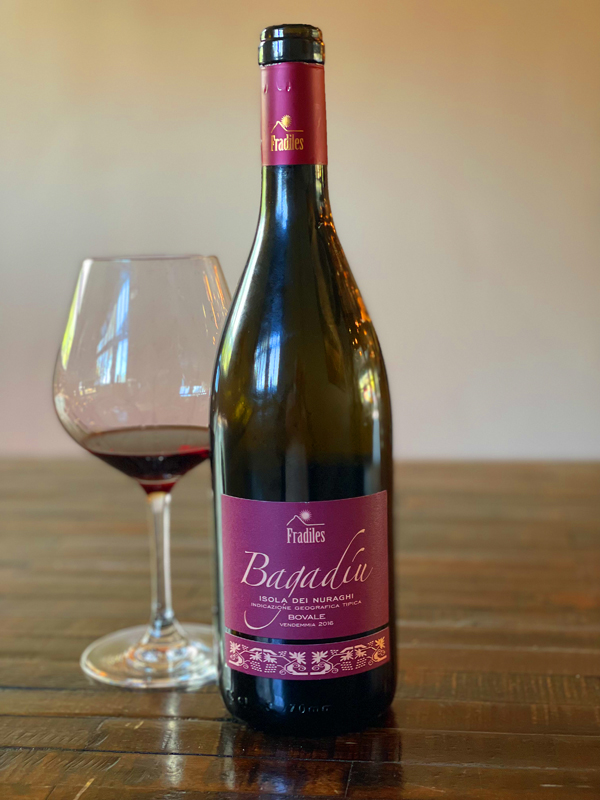
2016 Cantina Fradiles Vitivinicola, Muristellu – Bovale Sardo, Bagadìu, Red Wine, Isola dei Nuraghi IGT, Sardinia, Italy.
The Fradiles winery on Sardinia, was all new to me, as was the red grape Muristellu (also known as Bovale Sardo), but I am very interested now in both this organic and traditional producer and this deeply flavored varietal, after tasting this fabulous 2016 Bagadìu IGT Rosso, which is 100% Muristellu and reminds me a bit of the powerful Aglianico wines of Taurasi in Campania. This wine, oddly not allowed to be labeled under the DOC rules because it is all Muristellu, is very dark with a garnet crimson hue in the glass and has firm dusty tannins that support a beautiful array of fruit with black cherry, plum, mulberry and fig on the full bodied, slightly rustic, palate. There is a layer of earthy old world charm here that keeps things complex with hints of cut tobacco, leather, iron and truffle, as well as minty wild herbs, dried flowers, cedar, grilled orange peel and red spices. With few reference points, I can only say that this is intriguing stuff by Fradiles and I can’t wait to try more wines from this ancient indigenous grape, plus I am feeling a huge pull to visit Sardinia and explore the wines much more intensely than I have in the past, clearly there are many more treasures to discover here. Coming from a highly regarded vintage and with a bit of age, this wine is showing extremely well and only getting better, I’ll have to see if there is more available out there, it would be thrilling to re-visit this rarity in 5 to 10 years. I am incredibly grateful for the chance to try this wine and learn more about the history of this mysterious Mediterranean island with its many different terroirs, with this one being dominated by its decomposed granite sandy red soils, in the Southern part of the Island, not too far from Cagliari. This serious and compelling wine, which still retains good natural acidity, with be great with hard sheep cheeses as well as with grilled meats, wild boar and or lamb dishes, its a taut wine that will benefit from robust cuisine choices, that will allow the density of fruit to shine and soften the tannins.
My friend and Sardinian sommelier/winemaker Giuseppe Cossu has provided me with some incredible information on Sardinia and was kind enough to share this rare wine and varietal with me, he added many curious (facts) points to my own limited research into this and other mysterious local grapes. He even linked me up to the latest documentation on Muristellu, which was compiled by vinifera experts (which I need to credit and thank) that shows from the genetic analysis that it is definitively evident that Muristellu (Bovale Sardo) and Bovali Mannu (Cagnulari) are two distinctly different vines, but of which share in some family relations and excludes a possible relationship of direct kinship. Was thought to be similar or related to Bobal in found in Southern Spain, Muristellu is now known to be indigenous to Sardinia, which many experts believe is like Grenache (Cannonau) and born here on this island. Many Sardinian varieties are genetically close to Muristellu and analyses have also identified relationships of descent, while complicated this suggests that Sardinia itself is one of the oldest known wine growing regions in Europe dating back to the 11th century BC. It was once thought that the Spanish brought Muristellu and Cannonau (Grenache/Garnacha) to this strongly Mediterranean island, but it may just be the other way round. Interestingly, in Corsica, Muristellu is called Carcajolo Noir, where it is also now found, though it remains a rarity on both islands, but makes wines that are well worth searching out. Fradiles Vitivinicola makes a lineup of native varietal wines, as well as a blended wine made from Bovale Sardo (Muristellu), Cannonau (Grenache), Monica, another rare local red grape. The Bagadiu comes from mature 40 to 60 year old vines at close to 2,000 feet up that are all hand tended, that are, as mentioned all organic and the wine saw a native yeast fermentation in stainless steel, where it spent 6 months before being racked to large used oak casks for another 10 months. Fradiles, and winemaker Paolo Savoldo, made just about 200 cases of this sultry and captivating Bagadìu, so it will be a hard get for us in California, though I am motivated to find some more, along with their other offerings, especially their co-fermented field blends.
($45 Est.) 93 Points, grapelive
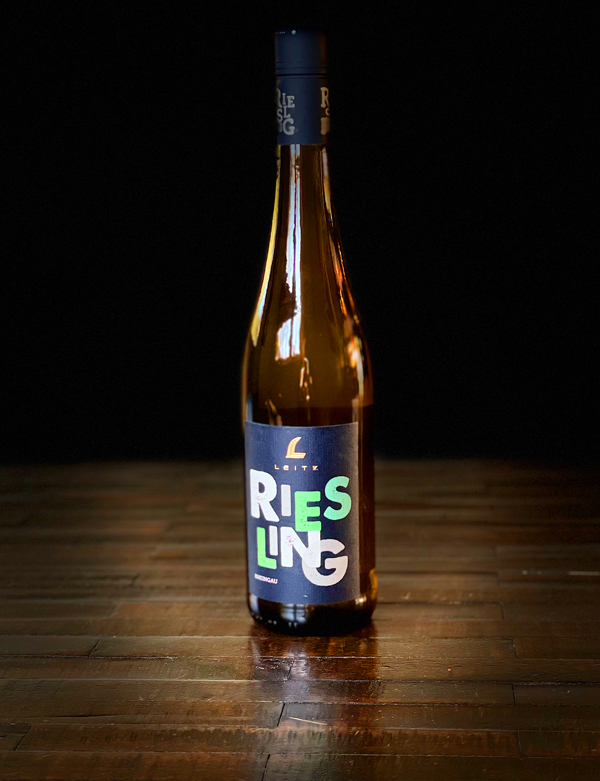
2019 Weingut Leitz, Riesling Feinherb, Rheingau, Germany.
The basic Rheingau Riesling is fresh, fruity, but a bit drier in style than some and this 2019 offers up loads of classic varietal character with a range of citrus and stone fruits leading the way, all pushed ahead with racy acidity and crystalline mineral tones. While Leitz’s top wines come from the estate vineyards that lie entirely on the westernmost part of the Rheingau on the Rüdesheimer Berg, or Magic Mountain as Leitz himself calls it. This part of the Rheingau is a steep, south-facing hillside of extremely weathered old slate and quartzite and almost exclusively planted to Riesling, which encompasses the Grand Crus of Schlossberg, Rottland, Kaisersteinfels and Roseneck, while some of bigger bottlings see fruit coming from a mix of terroirs throughout the area. So, as we celebrate International’s Riesling Day and Riesling’s birthday, I just wanted to share an easy version and this hit the spot on a warm March afternoon with its grapefruit, mint, white peach and green apple fruits, zesty acidity and steely light personality, adding hints of green tea, citron, wet stones, clove spice and better almond notes. A bit of white flowers come through, but this Riesling is not overly aromatic and any RS is well hidden, it feels more like a Trocken as it opens up in the glass, and while not in the league with the Cru wines in Leitz’s impressive lineup, this wine has a no fuss charm and is quality enough for less serious occasions. Johannes Leitz has a sublime collection of offerings, like the mentioned Rudesheimer Berg (Grosses Gewachs) as well as traditional Kabinett, Spatlese and Auslese Rieslings, which deserve your attention, to wines like this, part of a regional range of drier stuff, and there’s never been a better time to explore them, with a string of exciting vintages to chose from.
Johannes Leitz, has taken the original Weingut Josef Leitz to the top of German wine and he has earned the reputation of being one of Rheingau’s top growers, with unbelievable care being given to the vines he uses, Leitz is without question one of the most innovative minds and one of finest producers in Germany. Since taking over his family estate in 1985, Johannes has grown his holdings from just 2.6 hectares to over 40, most of which are Grand Cru sites on the slate slopes of the Rüdesheimer Berg, and he’s been instrumental in preserving and rebuilding many historic parcels, including the old stone terraces at Kaisrersteinfels. Once the home of some of the world’s most sought after and expensive wines, and the most likely birthplace of Riesling, the Rheingau is a small, but mighty important region, it stretches only about 20 miles from east to west from the Main confluence past the tiny hamlet of Assmannshausen. It is marked by a course change in the Rhein River’s flow to the North Sea from its origins in the Swiss Alps as it passes the Nahe where it narrows from its widest point. As the Rhein flows north along the eastern edge of the Pfalz and Rheinhessen, it runs directly into the Taunus Mountain range which has a subsoil comprised of pure crystalline quartzite, which shows up in Leitz’s Drachenstein (Dragon Stone) bottlings. Leitz is focused clarity and transparency and is know for working gently in the press house and aging the wines on their gross lees. Johannes selects bottle closures to reflect, and more crucially serve, the individual cellar practices employed for each wine; Stelvin closures are used for wines raised in stainless steel to preserve freshness while wines raised in cask are bottled under cork to allow for a long development in the cellar. This Rheingau Riesling is pure and ready to drink, it is crisply refreshing and crafted without pretense to just be enjoyed with smiles, enjoy it over the next year or so. This wine, usually pretty easy to find, is a solid value and I recommend checking it out, but for a step up in complexity without busting the bank, I really love Leitz’s beautiful Dragon Stone.
($16 Est.) 90 Points, grapelive
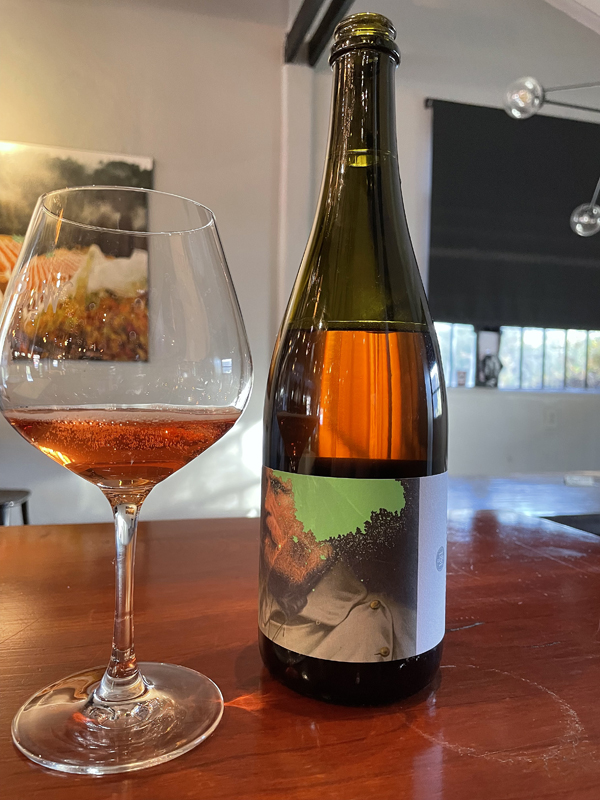
2020 Cruse Wine Co, Pétillant Naturel Rosé, Sparkling St. Laurent, Ricci Vineyard, Carneros AVA, Sonoma County.
In a change up, the 2020 Cruse Sparkling St. Laurent is a Rosé rather than a Blanc de Noirs, and it is like Spring in the glass with pretty floral aromatics and a supple fruity palate with sweet pea, strawberry, red peach and zesty citrus leading the way, gaining a leesy mouth feel with air. This vintage is generous and even seems to have an off dry character, making it easy to sip on its own and good with more spicy dishes. Cruse does a fabulous set of bubbles and even does some custom versions for other wineries, like Stolpman’s Trousseau “Combe” Pet-Nat, with some interesting and rare varietals, like St. Laurent, an Austrian red grape, non too common here in California, as well as using traditional Champagne grapes, Chardonnay and Pinot Noir in his upper end fizz. This light pinkish Pétillant Naturel Rosé Sparkling St. Laurent is Cruse’s most open and fruit forward version with a refined creamy mousse and is nicely rounded, without overt frothy bubbles. The San Pablo bay climate and clay based spoils bring out a rich fruit detail, but retains lots juicy acidity, making for a bubbly that is balanced and will appeal to a wide range of palates, it will go great with sunsets.
The Cruse Sparkling St. Laurent grapes were whole cluster pressed using the same slow steady cycle as for his traditional method sparkling wines. The wine was then fermented a small stainless steel tank with a touch of skin contact to achieve that light pink tint, finishing at about 11.5% natural alcohol, which left plenty of fruit and a hint of RS, helping with texture here. Towards the end of the fermentation Cruse bottles the wine where it is stored a bit before it is classically riddled and disgorged for clarity, as Michael notes, (that) there was zero additions made in his Pet-Nats, no yeast, no sugar, or sulfur added, it is pure, fermented, grape juice, and that is exactly what you taste in this expressive version. As I’ve mentioned with prior reviews, Cruse is making some of California’s best sparkling wines and is certainly gifted with Pet-Nats, and I am fond, in particular, of his Sparkling Valdiguié Pétillant Naturel, it really is a pure California treat, as this one is too, they are quality efforts. all of Michael Cruse’s sparkling wines are joyous stuff rom his super rare and luxurious Methode Champenoise “Ultramarine” to these fun Pet-Nats that offer lots of drinking pleasures at a tasty price. Cruse has just released his new editions, and from what I hear they are some of his stuff to date and look forward to checking them out!
($32 Est.) 90 Points, grapelive
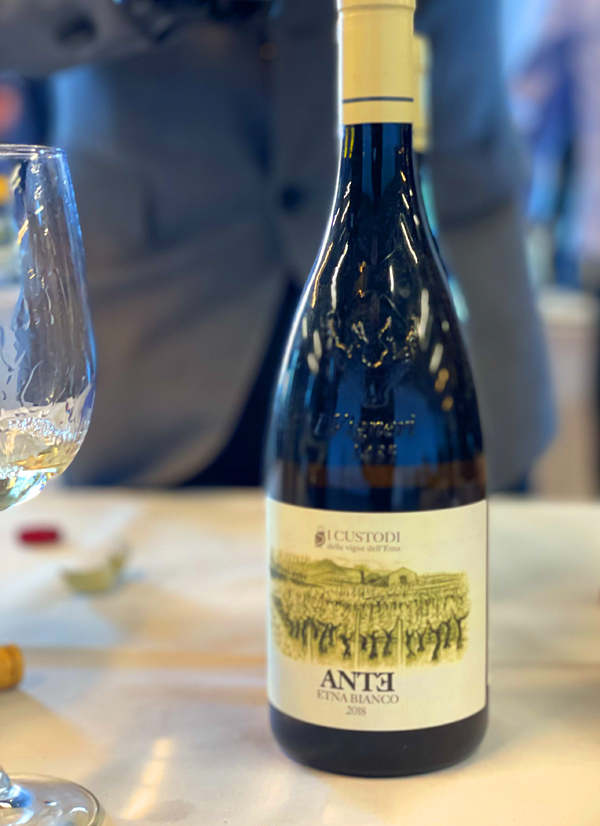
2018 I Custodi delle vigne dell’Etna, Etna Bianco DOC “Ante” Mount Etna, Sicily, Italy.
An outstanding dry Etna white from Mario Paoluzi’s I Custodi winery, the Ante comes from 2,500 feet up on north side of Sicily’s active volcano and made from a field or Contrada (vineyard) blend of native varietals with 90% Carricante, along with minor amounts of Grecanico and Minnella that was fermented and aged solely in stainless steel to preserve purity and freshness. This 2018 is beautifully detailed and starting to reveal its true nature and textural quality with mineral intensity, coming from that ancient lava (volcanic), mineral rich, sandy soils, as well as a saline persistence on the rounded, but steely medium bodied palate with white peach, tangerine, pear, delicate tropical and quince fruits, boosted as well by spicy accents, clove, crushed stones and a lingering lime tanginess. This lightly floral and crisp, greenish/straw hued Etna Bianco is energy filled and grows in presence with air and gains a more serious mouth feel as it warms in the glass, making for a stylish and delicious companion with an array of cuisine choices, though I can say for sure it is best with fresh catch sea foods from swordfish to octopus, as well as ceviche and or Moroccan inspired lemon chicken and couscous. As the price for white Burgundy and especially top Chablis goes up and up, the wine world has began to explore other options and certainly these mineral and terroir driven Carricante based Etna Bianco wines are great and slightly exotic alternatives, especially with efforts like this one.
The I Custodi delle vigne dell’Etna is an exciting label and is part of the I Vigneri collective dedicated to preserving historic traditions and natural wine growing from vines to bottle, overseen by the legendary Salvo Foti, the godfather of Mount Etna wines. The mission here is healthy vines and environment, with these grapes growing in densely planted parcels on ancient dry stone terraces on the slopes of the volcano. They are cultivated in harmony with the nature that surrounds them, hand tended only by the manual labor of the mention I Vigneri group, the skillful Etnean winegrowers with methods that have been employed on Mt. Etna for centuries, without synthetic chemicals or pesticides, in respect of the people and the land here. The Ante comes from a selection of younger vines, located at Contrada Puntalazzo, Mascali and Versante Est dell’Etna with the grapes being hand harvested and brought into the winery with great care in shallow crates and then gently whole cluster pressed with a cool fermentation, finishing with just about 12.5% natural alcohol. Then the wine is matured in the stainless steel vats for 12 months on the natural lees and allowed to go through malolactic conversion, after which the Ante Etna Vianco sees about 6 months of bottle aging before release. There were close to 800 cases made of the 2018 I Custodi Ante white, so while somewhat rare, it can be found and it is a fabulous and exciting example of Etna Bianco that I highly recommend, along with all of the I Custodi and any of the Salvo Foti wines. I tasted through the lineup of the I Custodi offerings at this year’s Slow Wine event in San Francisco and as I had in the past, was very impressed by them, especially the Nerello Mascalese based Saeculare Etna Rosso Riserva 2012, which I already reviewed, and this brightly focused Ante.
($36 Est.) 93 Points, grapelive
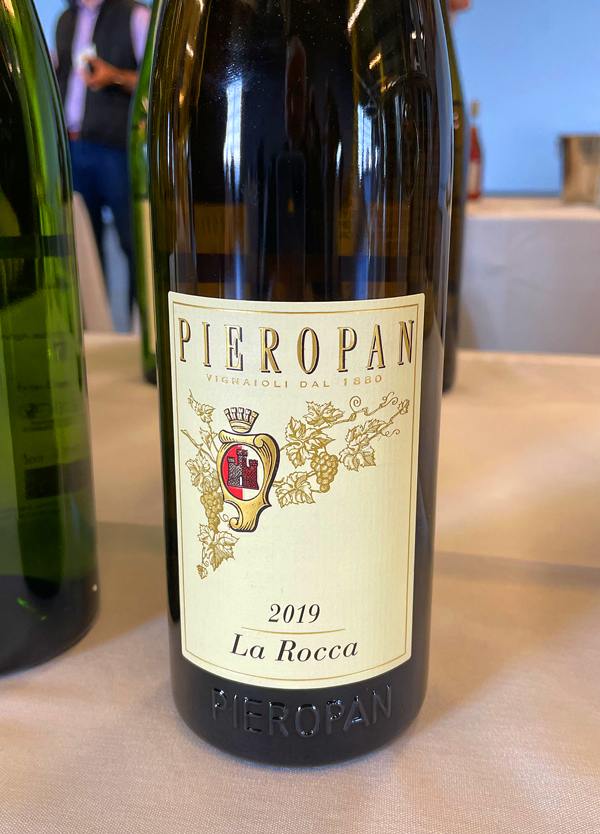
2019 Pieropan, Soave Classico DOC “La Rocca” Veneto, Italy.
What an absolutely delicious and serious white wine, this single cru Soave “La Rocca” by Pieropan is a stunning example of pure Garganega with deep complexity and textural grace. This is an outrageously good edition, showing citrus and orchard fruit and loads of mineral intensity and a dry presence in the glass. There is a sense of depth and power in this La Rocca with palate impact that sometimes reminds me on a Hermitage Blanc or Condrieu with crushed stones, white flowers, orchard fruits, clove spice, a touch of bacon fat, a flinty mineral tone and leesy pleasure, all in an almost full bodied palate and with an underlying energy from the natural acidity. The oldest family-owned estate in Soave, Pieropan, which was founded back in 1880, oversees some of the most acclaimed and coveted vineyards in the region that sits between Lake Garda and the Veneto’s main hillside area. Among the most vaunted are Calvarino and this La Rocca, which is the richest Soave in the Pieropan portfolio, and crafted exclusively from 100% Garganega grapes. La Rocca sits below a medieval castle on the Monte Rocchetta hill and is notably characterized by its calcareous like hardened clay soils, it’s at between 200-300 meters above sea level and, as Pieropan explains, encompassing several long, narrow terraces facing southwest, picking up the sun, but also getting a balancing cooling influence. The soil and climate at La Rocca, together with its other singular or distinct qualities, gives the wines a unique jasmine and or orange blossom perfume and the mentioned mineral tones. The aromatic and lengthy La Rocca Soave Classico DOC comes from 10 to 50 year old vines, set on those chalky clay soils that allows that richer dimension to show through, and it was indigenous yeast fermented and then aged 12 months on lees in a combination of larger format 500-2000L Slavonian oak barrels. Historically, Soave has been a flexible food friendly wine, it goes fabulously well with many pasta dishes, soft cheeses, lighter poultry fare, with linguini and clams being an excellent pairing, while this more exotic and denser version being able to handle more robust cuisine.
In the last 10 years I’ve noticed a huge rise in quality in this region and wineries like Pieropan have shown the world the true potential of the Garganega grape, crafting outstanding versions throughout there range, along with the likes of Prà and Inama pushing Soave to new heights. The Pieropan family has been a force here, helping to revolutionize the winemaking in Soave, on the way to becoming one of the most critically acclaimed Italian wine families. The Pieropan legacy began, as the winery itself notes, in the late 1800s when their visionary winemaker Leonildo Pieropan purchased the historic Palazzo Pallucci in the medieval village of Soave and searching out top hillside vineyards. Today, the traditions carry on with Leonildo’s great-grandsons, Andrea and Dario, the winemaker, carry on the family’s patriarch’s vision making top quality Soave wines from all organically grown grapes. The Pieropan’s are committed to native varietals and minimalist winemaking, as is the trend in all of Italy, resulting in expressive, terroir-driven wines, such as this gorgeous La Rocca cru example. The Pieropan family cultivates the land with an environmentally-conscious, low-impact approach, which Dario believes, brings the wines to life here in their historic and modern cellars that perfectly blend tradition with the latest technology. Pieropan was the first winery to label and offer a single-vineyard (Cru) Soave Classico with the release of their Calvarino in 1971, and Pieropan is widely credited with initiating a renaissance in quality winegrowing in Soave, which has seen a new burst in excellence in modern times. The family’s persistence in releasing single-vineyard Soave Classicos from select hillsides makes them leaders here, but honestly their base regional blend Soave Classico bottling is pretty darn good and tasty stuff too, it is a superb value and something I look forward to during the warm Spring and Summer months, so if you’ve not explored Soave, it is a great place to start. This 2019 La Rocca, my favorite in the lineup, is just hitting the market and it is really worth hunting down, I tasted it along with the mentioned basic Soave and their signature Calvarino bottling at this years Slow Wine event and was incredibly impressed by the beauty and texture in these exceptional whites.
($39 Est.) 94 Points, grapelive
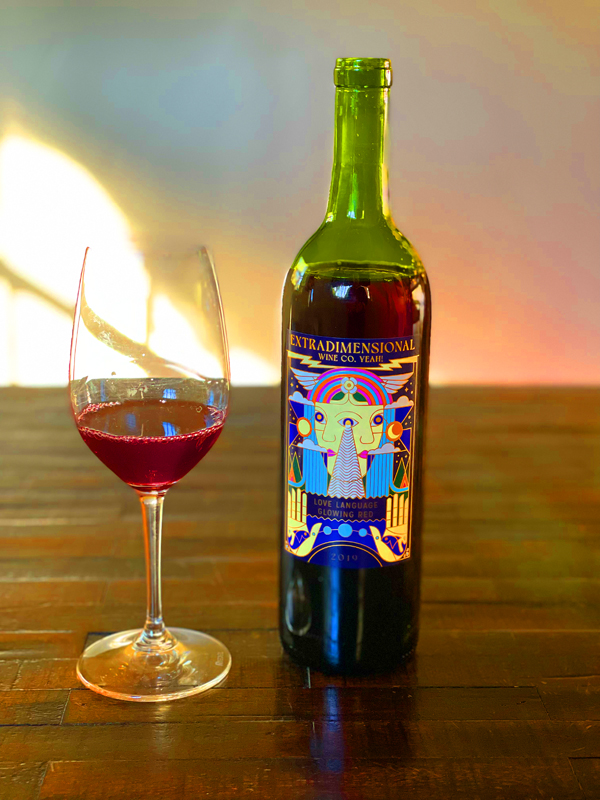
2019 Extradimensional Wine Co. Yeah!, Love Language Glowing Red, California.
To take a walk on the wild side, get on the Extradimensional Wine Co. Yeah! list and try these completely unique bottlings, like this The Love Language Glowing Red that completely confuses the senses and makes you rethink about what expectations your palate has for a red wine, it is very different, with a light to medium weight, textural form, a range of flavors that includes reduced strawberries, wild plums, golden raisins and bright Italian cherries, all accented by dried herbs, earthy/savory elements, unsweetened honey and a touch of floral highlights. Winemaker Hardy Wallace, who is pushing the limits with his new Extradimensional Wine Co, Yeah! label is a huge fan of Mourvedre and Orange wine, and with this wine, he combines both his passions in this offering, he blended lots of Mourvedre, Barbera and skin fermented Chenin Blanc. At first I was dumbfounded and not too convinced by this Glowing Red, but it slowly grew on me and after I had it with food it became a much more pleasing experience with the Mourvedre coming through more clearly and allowing a sunny array of red fruits to fill the mouth. This is stuff that should be slightly chilled and drunk young and fresh, as many natural style wines should be served. This wine joins a unique set of counter culture releases in California, like those from Ruth Lewandowski Wines, Martha Stoumen and others, that takes its own path, very much at odds with mainstream ideas of wine, and while I wouldn’t want a full cellar of this one, I admire the brave risk taking here.
The Love Language Glowing Red is a totally different wine and concept from Hardy Wallace, formerly the co-founder and winemaker at Dirty & Rowdy wines, who has taken his ideas to the level here at his and Kate’s, his wife’s Extradimensional Wine Co. Yeah! label, with this new release being a blend of 54% Shake Ridge Vineyard Mourvèdre, from the Sierra Foothills and 12% Old Vine Barbera, along with 34% Old Vine skin contact Chenin Blanc from Mendocino County. Because of multi-regional collection here, this is a “California” red table wine, but the grapes do come from top sites in highly regarded AVAs, including Amador and Mendocino Counties. The high percentage of the white varietal in this red wine, certainly sets it apart from most wines, especially considering it is Chenin Blanc, which I don’t believe I’ve ever had in a red wine before. This crazy Love Language Glowing Red, as Hardy says, is a wine that is an ode to a juicy wild love, and who could resist that imagery, not me, that’s for certain, though he then goes on to suggest pairing it with love and your best dance moves, which I’m only half on board with. Like most modern natural winemakers, Wallace sources from organic vines and uses indigenous yeasts, after which the wine is aged in very seasoned used oak, in order to promote raw transparency, with almost no additional sulfites. This Extradimensional Wine Co. Yeah! wine has soft tannin, low alcohol and a good dose of natural acidity, making it crisply refreshing, it won’t be crowd pleaser, but will challenge you in a most interesting way! I am looking forward to seeing how Hardy’s new straight Mourvedre bottlings turn out, especially the Old Vine Evangelho version that I just got.
($47 Est.) 90 Points, grapelive
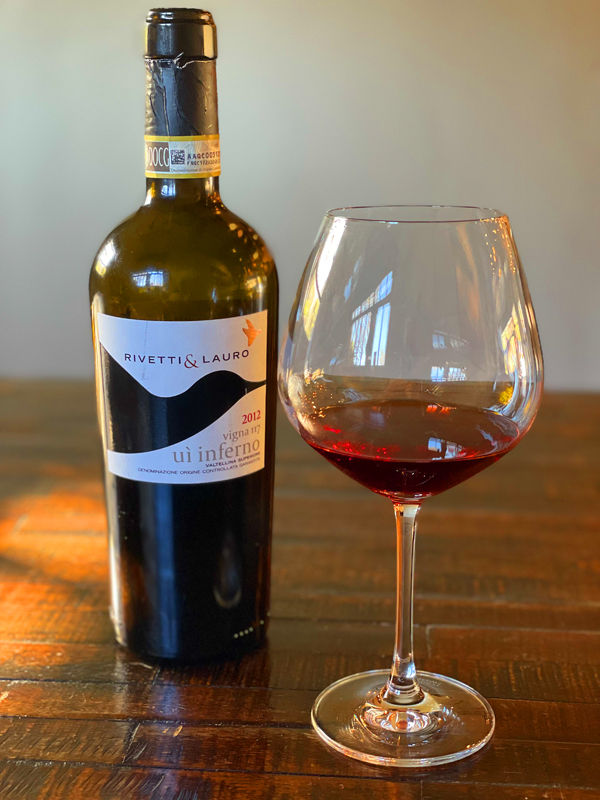
2012 Rivetti & Lauro, Valtellina Superiore DOCG, Uì Inferno – Vigna 117, Lombardy, Italy.
This gorgeous and fully mature 2012 Uì Inferno – Vigna 117 Valtellinna Superiore by Rivetti & Lauro comes from terraced vines in this alpine region in upper Lombary and is made from Chiavennasca, the local name for Nebbiolo, it is a wonderfully open wine with outstanding purity, silken well integrated tannin(s) and opulent red berry fruit, with black cherry, earthy currant, wild plum and balsamic strawberries leading the way, along with hints of herbs, spice, black licorice, tobacco leaf and sandalwood. As this Rivetti & Lauro, with its classic amber/brick edged dark ruby color, opens on the medium bodied palate pretty dried flowers and sultry kirsch liqueur come through and the natural acidity becomes more and more refined, making for a seamless Nebbiolo experience, and this wine would be exceptionally good with simple meat dishes, as well as a welcome partner with seared duck breast with a red berry reduction or woody mushroom risotto. This example of Valtellina drinks with an aged grace and sophisticated elegance that is usually reserved for elite Barbaresco wines or even a Premier Cru Burgundy with a compelling textural quality and this Valtellina is an extraordinary value too. This was my first ever taste of Rivetti & Lauro and I hope to try more from this producer, especially their Grumello and Sassela crus, which are highly regarded and coveted bottles. The 2012 Uì Inferno, a steep sun soaked site, Vigna 117, a single terraced parcel, is made from 100% Nebbiolo and comes in at about 14% natural alcohol, it highlights the ripe flavor intensity of the vintage and lush mouth feel, as well as its lingering, long and divine finish, this is a very pleasing wine and reminds me why I love this region. I will add Rivetti & Lauro to my watch list along with another new favorite, Tenuta Scerscé, as well as long time favorites Nino Negri, Nobili, Alfio Mozzi, Conti Sertoli Salis and in particular Ar. Pe Pe (Arpepe), which are a bit easier to find here in the states.
Valtellina is a high Alpine valley in the Lombardy region of northern Italy, bordering Switzerland and renown for its mountain Nebbiolo wines, which have really gained worldwide attention in recent times, even though this area has flourished since Roman times. During the 16th, 17th and 18th centuries, the Valtellina region belonged to what was know as the Three Leagues (the “Grey Leagues”), which was then a mutual-defense zone that was independent of Switzerland, but was part the easternmost Swiss Canton of Graubünden. This remote area in which German, Romansh, Lombard and Italian languages are all spoken, the region became known variously as Veltlin, or Westtirol (West Tyrol) in the 1800s, but now proudly Italian. Interestingly, because of Valtellina’s remote location and easy to defend terrain, during the last months of World War II, the Italian dictator Benito Mussolini and other diehard fascist leaders of the Italian Social Republic (RSI) proposed making a “last stand” against the advancing Allied forces in the Valtellina, but their plans never got a chance to came into being and the area became much more well known for its wine culture. As noted, In Valtellina, the wines are mostly made from Chiavennasca (the local name of Nebbiolo), along with some percentage other local varieties such as Rossola Nera of which is permitted up to 20% in the DOC and just 10% for the DOCG bottlings like this one. Grapes, by local rules must be small yields for the utmost quality and the finished wines have to be aged for at least 24 months prior to their release or three 3 years if labeled a Riserva bottling, also they need to be at least 11% natural alcohol. The yields for the DOCG wines are restricted as well to promote concentration, with requirements of a minimum alcohol level for the DOCG wine at 12%. The Cru Villages for red wines in Valtellina are Grumello, Sassella, Inferno, where this Rivetti & Lauro comes from, Valgella, and Maroggia. The village names, as in Burgundy are normally indicated on the labels, plus Valtellina also has an Amarone style DOCG Nebbiolo wine called Sforzato, where the grapes see a period of drying on straw mats to give hedonistic density and richness of flavors. If you’d not discovered Valtellina, above Milan and the lake district, yet, it is a great time to get started.
($30 Est.) 92 Points, grapelive
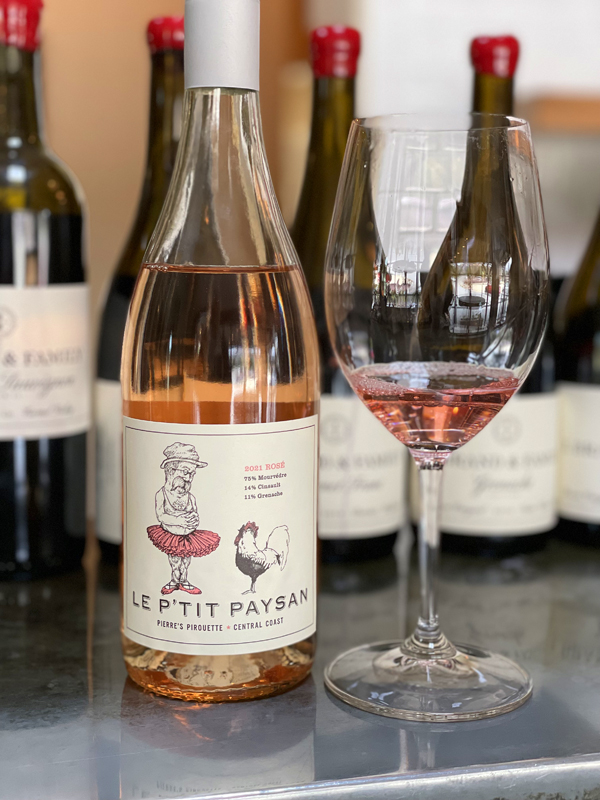
2021 Le P’Tit Paysan, Rosé, Pierre’s Pirouette, Central Coast, California.
Ian Brand’s delicious and more serious than the name Pierre’s Pirouette would suggest, dry Provence style Rosé, made with 75% Mourvedre, 14% Cinsault and 11% Grenache Noir is Bandol like blend that gives the right amount of structure and intensity to impress even the most high brow wine enthusiast, especially this vintage which is one of my favorite to date with its driving acidity and bone dry crisp detailing. The racy palate is nicely balanced between fruit and savory elements and has a lovely mineral core showing ruby grapefruit, sour cherry, strawberry, watermelon and orange rind, along with chalky wet stone, snappy herb, spice and a touch flinty/smoky cured bacon. The Mourvedre is dominate with its meaty grip, but with air the 2021 Pierre’s Pirouette adds rosewater and fresh crushed raspberry along with a textural feel in the mouth, which is from the Grenache and the zesty Cinsault that makes this wine even more compelling and fabulous with steamed mussels in spiced broth or Marseille bouillabaisse, while local to Monterey a bottle would be awesome with cioppino. Along with this tasty Le P’Tit Paysan Rosé, Brand is releasing a Spring collection, all of which are as good as expected, especially the new 2019 Bayly Ranch Cabernet Franc and the outstanding old vine Massa Estate Vineyard Cabernet Sauvignon! This Rosé is steely with low alcohol, it comes in at just about 12%, and still has loads of flavor, plus the twist top makes it great for beach use and or picnics.
The pale pinkish Le P’Tit Paysan Pierre’s Pirouette Rosé shines youthfully in the glass with a hint of vivid magenta and salmon hues, it comes from grapes grown in various plots in the Central Coast, including Arroyo Seco, in Monterey County and San Benito County. The grapes are picked early to retain vibrancy and this wine really benefits from that fresh acidity and the stony elements that come from, what Ian Brand calls, the calcium rich Aguajito Shale bluffs above the dry river bed in the Arroyo Seco AVA, as well as the calcareous alluvial soils around the San Benito Arroyo. Brand, a noted geology (dirt) geek and vineyard whisperer, along with his team employed a clean and transparent approach to their P’Tit Pays Pierre’s Pirouette Rosé, choosing to pick at a tick under 22 Brix and doing a direct pressing in separate small lots with between 3 to 6 hours of skin maceration. To promote the zingy character they chose to arrest secondary fermentation after the lots finished their cool temperature primary in stainless steel, where the wine aged as well with a minimum lees contact and bottled after just a few months. This vintage was cold stablized and sterile filtered to be as clear and as zesty as possible, making it a perfect Spring and Summer sipper, I highly recommend enjoying this one over the next 6 to 12 months. The latest offerings by Ian Brand, throughout the range and regardless of price are some of his best efforts to date and deserve your immediate attention, from the Le P’Tit Paysan Rosé and Le P’Tit Pape Rhone Blend to his La Marea Albarino and the top line I. Brand & Family stuff, like the mentioned Cab Sauvignon and Cab Franc, as well as the Grenache and Syrah bottlings are stunning!
($19 Est.) 90 Points, grapelive
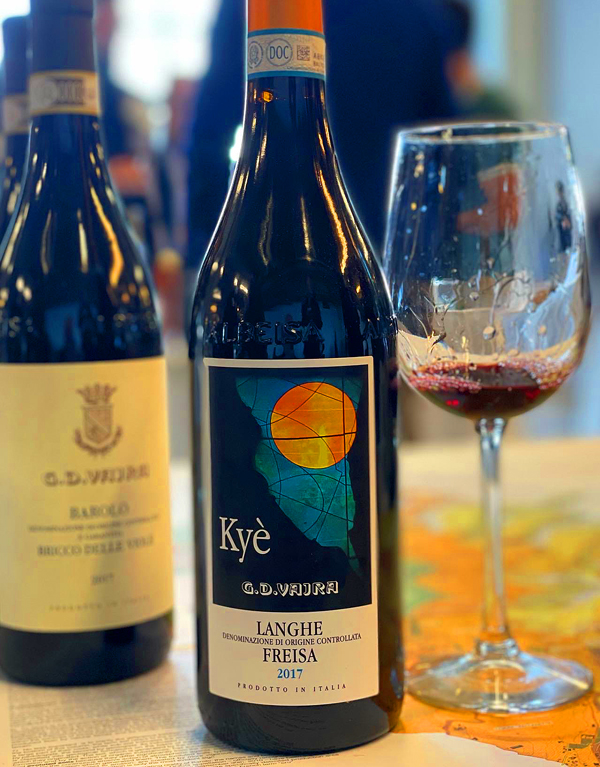
2017 G.D. Vajra, Langhe Freisa DOC “Kye” Piedmonte, Italy.
I first tried Vajra’s Kye Langhe Freisa DOC in 2013 with their 2009 version being shown at a trade show and I was blown away, and every time I’ve had it since it continues to entrance and intrigue me, with the 2017 being remarkably similar to the 2009 with a deep perfume and wonderfully exotic fruit layer, all wrapped up in a silky, but structured wine, this is as good as this rare Piedmonte grape gets! Coming from estate vineyards, the oldest located in San Ponzio, on the lower west border of Bricco delle Viole (a top Barolo cru on classic Marl, sand and limestone), and as the winery notes, this is the closest vineyard to the winery, and a selezione massale planted by Aldo Vajra back in 1980. The Freisa, which has loads of strawberry, plum, vine picked berry and tangy cherry fruits, presented with spicy accents and a bit of Nebbiolo like character, but slightly more floral (roses and geraniums) on the nose, making for beautifully detailed, structured and lengthy wine that adds hints of earth, cedar and mineral with air. There is a lot going on here and you can see why this grape is making such an impressive comeback and winemaker Giuseppe Vajra has done a masterful job in a tough vintage with searing heat and where the vines struggled to produce worthwhile yields, especially considering how fabulously balanced this wine is and how utterly delicious it is on the palate. This wine is highly rewarding already and delivers seamless pleasures in a medium full red wine that goes stylishly well with a variety of dishes and authentic Northern Italian cuisine, being a gracious companion with meat and or mushroom dishes as well as hard cheeses. I tasted this terroir driven Freisa at the Slow Wine tour stop in San Francisco along with Vajra’s signature 2017 Bricco delle Viole Barolo and the sublime Ravera cru Barolo from the epic 2016 vintage, which was easily the best wine at the show.
In 2004, Freisa was discovered to be the closest relative to Nebbiolo, Vajra explains, thus explaining the deep bond this variety has with Piemonte and its people. With a noble profile and similar characteristics to the Nebbiolo, we have been bottling a dry Langhe DOC Freisa ever since 1989. Kyé means ‘who is?’ and represents the surprise for this indigenous and forgotten grape that has seen a glorious resurrection in modern times, especially good is this one, as well as Vietti’s, which has also become a fan favorite. In 1971, Aldo Vajra was one of the earliest adopters of organic farming in Piemonte and his vineyards have been nurtured holistically and soil preserved by grassing and cover crop for almost 50 years now. Vajra gained full organic certification in 2019 and the new generation here, led by Giuseppe Vajra, continues the family traditions here, but have also opened a new and world class cellar facility and the wines get better and better here. The winemaking for this wine is pretty close to how Vajra makes their Barolo with the Langhe Freisa DOC Kyé being aged for 26 months, mostly in large oak casks with incredible attention to details from vine to bottle. This Kye bottling is a rare and rewarding treat, and while not easy to get it certainly is well worth the chase, it drinks lovely on release, so no extra waiting is needed, though it will be fun to see it get some years on it too. Freisa is one of the latest varietals to be picked by the Vajra family, due to its late ripening pattern and the grapes are sorted manually three times, including directly on the vine, as whole clusters on the sorting tables, and lastly as single berries after a gentle de-stemming. Fermentation, according to the winery, lasts around 15 to 25 days in vertical vats, and is followed by spontaneous malolactic fermentation before going into the big boti (wood). As you might have noticed in my reviews, this winery is making some of my favorite Piedmonte wines from Dolcetto to Riesling, as well as this Freisa and their exceptional Barolo offerings and I highly recommend all of them!
($50 Est.) 94 Points, grapelive
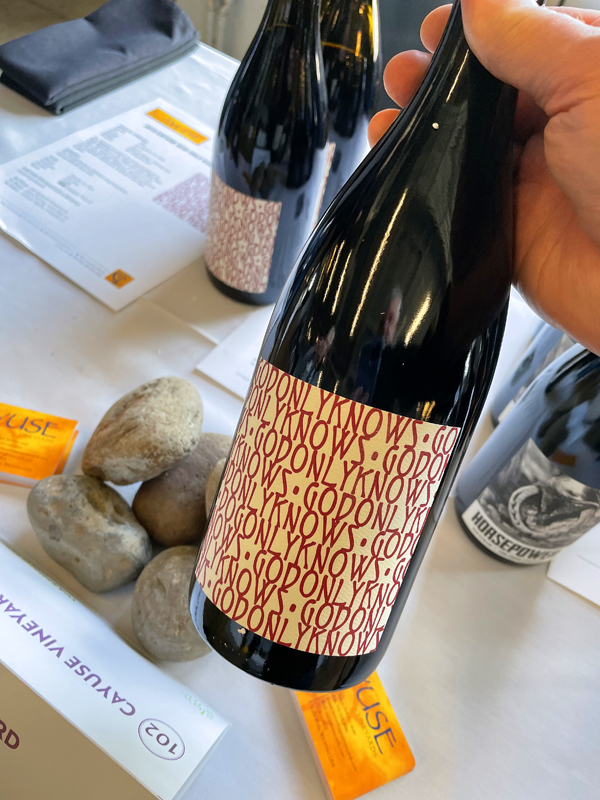
2018 Cayuse Vineyards, Grenache, Armada Vineyard “God Only Knows” Walla Walla Valley.
The amazing 2018 God Only Knows Grenache from Cayuse’s legendary winemaker Christophe Barron, who’s roots are from the Champagne region in France, is an absolute rock star wine and one of the most unique Grenache based wines in the world. This vintage with its deep purple/garnet hue, fruit density and a raw earthy sex appeal is close to perfection, but not over worked and with loads of umami with a sultry spicy edginess. Some Grenache fans, and maybe rightly so, compare Barron’s Grenache to Chateau Rayas, standing head and shoulders above all the rest in its own style, especially as it has such depth and truly distinct singular character, unlike almost any other wine made from this varietal. This vintage has layers of black raspberry, brambly huckleberry, creme de cassis, tree picked plum, pomegranate and kirsch all accented by a array of spices, dried flowers, minty herbs, leathery notes and woodsy elements that all make this wine incredibly compelling, along with the year’s bright acidity, stony/savory expression and cool toned mineral charm. The bouquet perks up as the wine unfolds in the glass, fading the more rustic edginess and allowing the inner beauty of this taut God Only Knows Grenache to shine though its youthful intensity with peony florals, anise, cinnamon and sweet smoke coming through. Barron, who originally came to America to make Oregon Pinot but ended up turning to Rhone and Bordeaux grapes, has an amazing touch for Syrah and Grenache, as this bottling proves. He makes riveting wines, that combine power, sensuality and texture, again proven majestically in this wine and of course in his epic Bionic Frog Syrah, the flagship Cailloux Vineyard Syrah and the awesome Flying Pig, which I also tasted recently, made from a right bank collection of grapes led by Cabernet Franc, think Cheval Blanc! I was lucky to taste with Christophe before he got famous and was blown away by his En Cerise Vineyard Syrah in the early 2000s, a wine I compared to Chapoutier’s Le Meal ‘Ermitage in presence, it was an experience I didn’t soon forget and his current set of wines are even more memorable and monumental! Barron has also gone back to his roots and crafts a small lot grower producer style Champagne, it is also creating a lot of buzz.
The creation of Cayuse, more than twenty years ago now, as well reported and told by the winery, is an almost mythical story, about how a brash, young French Vigneron who visited the then little-known town called Walla Walla, and fell in love with a few acres of seemingly useless, stone-covered farmland. This district, the Rocks, that sits between Oregon and Washington has become an iconic sites in the new world. While the nay-sayers nayed, as Cayuse continues, Christophe Baron deftly turned that field of stones into this acclaimed and remarkable area into one of the most coveted in the world. And borrowing again from the winery, the rest, as they say, is history. Cayuse Vineyards, is like the Pacific Northwest’s Sine Quo Non and one of their top cult wines along with the famed Leonetti. The Armada Vineyard, as Barron notes, at 1815 vines per acre, this 7-acre vineyard, planted back in 2001, was the highest vine density planting in the Walla Walla Valley at the time. The notable Cayuse wines from this vineyard wines include their Armada Vineyard Syrah, this outrageous God Only Knows Grenache and the rare Edith Grenache Rosé, which I’ve never even seen. Currently, Cayuse farms five vineyards spread over 47 acres in the Walla Walla Valley, all of which are planted in stony soils. This rock terroir and rugged terrain is what first caught Christophe’s attention in 1996 and led him away from making his home in the Willamette Valley. The resulting conditions here are tough and the vines are highly stressed, meaning that vineyards average a low yield, of about only two tons per acre, helping explain the deep flavors and concentration in this wines. The winemaking is traditional minimal intervention, with this God Only Knows Grenache typically seeing 100% whole cluster fermentation in concrete and it is aged mainly in well seasoned French oak, normally using a combination of neutral puncheons and foudre, with a little bit of it getting elevage in concrete eggs. This is brilliant and gripping stuff, I am grateful I got to taste the latest set of Cayuse at the Slow Wine tasting in San Francisco, I only wish I could afford these bottles! In recent years I’ve managed to score some of Barron’s other label bottlings under his Horsepower and No Girls labels, which are tasty in their own right, but the Cayuse still take it to the next level, they are bucket list wines.
($150 to 180 Est.) 96 Points, grapelive
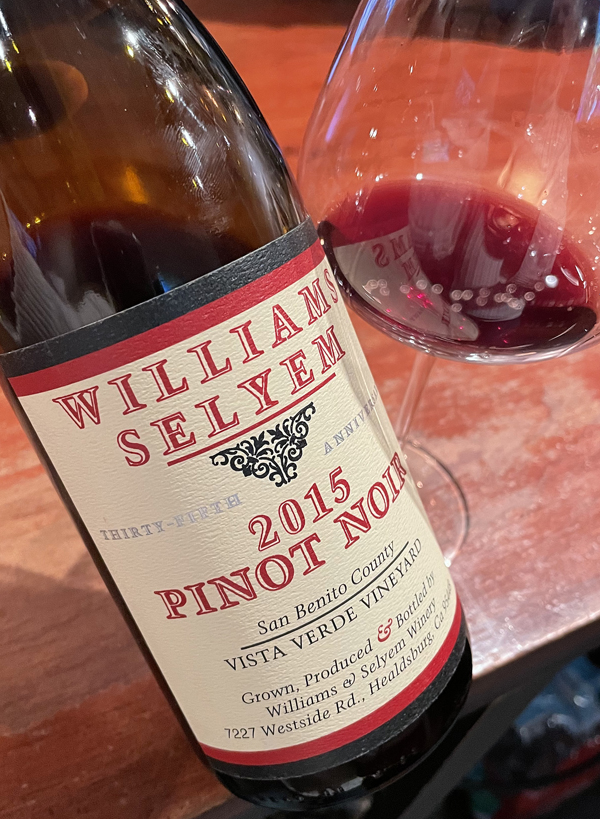
2015 Williams Selyem, Pinot Noir, Thirty-Fifth Anniversary Vintage, Vista Verde Vineyard, San Benito County.
One of the first post Bob Cabral era wines from Williams Selyem, the 2015 vintage, which was the winery’s 35th Anniversary release, was highly anticipated by Pinot lovers and fans to see where this iconic producer’s wines were headed and if this Vista Verde Vineyard, from the wilds of San Benito County, not far from the famed Calera winery and Mt. Harlan, is anything to go by, there is good times ahead here. This gorgeous dark ruby Pinot Noir has beautiful fruit and a sensual textural quality with ripe flavors and surprising depth with layers of black cherry, earthy vine picked berries, plum and red currant fruits, a light touch of oak and a rustic charm that is sometimes missing in modern wines. The satiny medium bodied, but richly detailed Vista Verde adds dimension with air helping give it more presence in the mouth and adds floral tones, a dusty/stony saline note and lingers with burnt orange and kirschwasser. This bottling, sometimes declassified to Central Coast, can sometimes pull off a surprise, and this 2015 certainly does, drinking on equal terms, with pleasure and personality, to some of the more famous vineyard sites in the Russian River, Sonoma Coast, Yorkville Highlands and the Anderson Valley, quite impressive for a warm year too! One of California’s most famous Pinot producers since 1980, Williams Selyem, made legendary by Bert Williams and later by Bob Cabral, still makes lustful wines, from their cellars almost across the road from Rochioli on Westside Road a stones throw from Healdsburg in the Russian River Valley.
The Vista Verde Vineyard, an ex cattle ranch near the town of Hollister, is planted to a mix of Pinot Noir selections, including heritage David Bruce, Pommard and Calera as well as some modern Dijon clones set at between 700 and 1,000 feet above sea level with a under pinning of fractured limestone with gravelly loams over the top. The climate sees big day to night temperature swings as well as coastal breezes, making for a more suitable terroir for Pinot Noir that one would expect and in combination with the soils this place consistently provides complexity and intensity. The winery says, this area, near the small town of Tres Pinos, directly east of the better-known Monterey County, on the other side of the Gavilan Mountains, in San Benito County, which is one of the oldest growing regions in the central coast, boasts four recognized AVAs with La Cienega Valley, Paicines, Lime Kiln Valley and the famed Mt. Harlan. This area, boasts, like Chalone, lots of limestone, with a complex maze of mountains, canyons and valleys, as Williams Selyem notes, some of which run east-west rather than north-south, this channels substantial marine influence into San Benito from the Pacific Ocean, only 20-30 miles away, which gives the freshness in the wines. As per normal here, the Vista Verde Pinot was de-stemmed and fermented in small lots then aged for close to 16 months in French oak with about 50 to 60% new wood. It seems that the Williams Selyem wines have a touch more maceration and pigment than the prior bottlings, but that could be my imagination, either way the 2015 Vista Verde is impeccably well made and utterly delicious, just starting to reveal its full potential, it is a sleeper in the lineup!
($56 to 70 Est.) 94 Points, grapelive
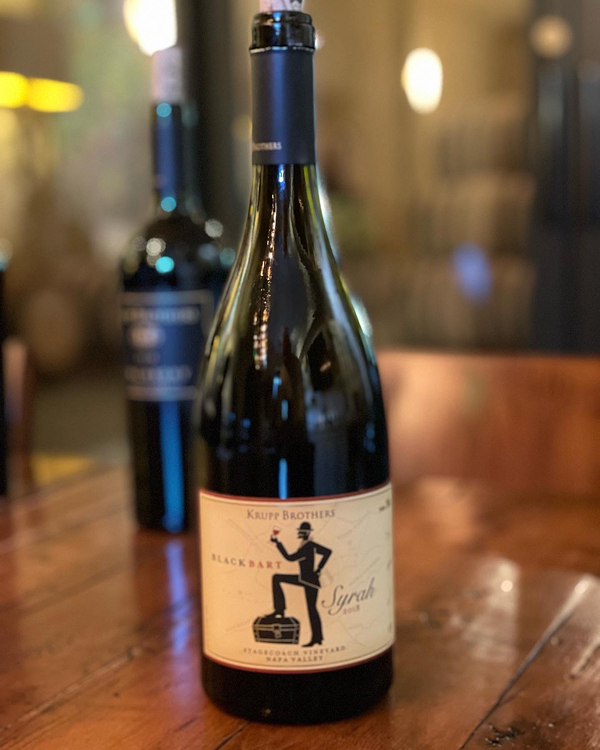
2018 Krupp Brothers, Syrah “Black Bart” Stagecoach Vineyard, Napa Valley.
The deep and inky purple Black Bart Syrah by the Krupp Brothers coats the palate with fine grained tannins and opulent fruit density with seamless layers of blackberry coulis, blueberry, black currant and sweet plum fruits along with mocha, smoky embers, kirsch liqueur, anise, dark floral aromas and light forest floor earthiness along with dried sage and peppery spices. This is pure and hedonistic Syrah with a powerful, but ripe presence in the glass, the 2018 vintage brings a lively burst of coolness and acidity that really gives this wine an extra pop and while weighty and chocolatey, it feels remarkably well balanced, it was one of the many highlights of a recent visit to this winery. Jan and Bart Krupp, who founded and planted the Stagecoach Vineyard, which is one of the premier sites in the eastern hills of the Napa Valley, nestled between Pritchard Hill and Howell Mountain, and widely acclaimed for the incredible quality of the grapes. This awesome vineyard, that the brothers Krupp sold recently, still provides the fruit for their collection of wines, including this fantastic and heady Syrah bottling. From the beginning Rhone grapes played a passionate role with the Krupp wines, and I remember visiting Stagecoach early on and talking with the Krupp family about them and how excited by the Syrah and their white Rhones that they had started experimenting with at the time, so it was great to see they still have a love for them and that the wine has become so good. Of Course Stagecoach is mostly known for Cabernet Sauvignon, and the Bordeaux varietals, with the Krupp Brothers doing some fabulous versions, but on this trip I was blown away with their Tempranillo based “The Doctor” Red Wine, also from the 2018 vintage and this wine, which especially was showing well and is one of the best values in the limited small lot lineup. I highly recommend visiting the estate off the Silverado Trail, the tuscan style villa and views are absolutely stunning, as well as the wines.
The Stagecoach Vineyard, with its many different exposures and grades, provides many top wineries with premier grapes, from Chardonnay to Cabernet Franc, along with the mentioned Cabernet Sauvignon, as well as Petit Verdot, Malbec, Roussanne, the Syrah for this wine and many other intriguing varietals. The red, rocky volcanic soils, and hillsides that rise up to 1,900 feet above sea level, helps Stagecoach produce some of Napa Valley’s most prized fruit and the cool night time temps help refresh these vines, that were planted via dynamite blasting, with good natural acidity. Unlike the coastal Syrah in California, this Napa Hillside version is more polished, less edgy in style and was crafted to cater to its own niche, it’s more like Guigal’s La La’s (Cote-Rotie) rather that Clape’s Cornas with all de-stemmed grapes and aging in small barriques, with some toasty new oak. While I admit to loving the whole cluster and more stemmy examples, there is a lot to admire here too and this wine really grew on me as it opened up in glass and even at 15% it never felt hot or flabby, in fact with a bite of hard cheese it came across as sublimely elegant. No question this is a big wine, it never hides that fact, but it really is delicious stuff and I got a bottle tucked away for some extended cellar aging, which I believe will prove very rewarding. Dr. Jan Krupp and Bart Krupp founded Krupp Brothers with the release of their first wine in 1999 and have build a strong following over the years, and the future looks very exciting, especially with Desiree O’Donovan, their winemaker, now taking the helm in the cellar and many years as the assistant here, working under some of the valley’s top gun consultants and other boutique wineries. As a longtime fan of this label, it was very much impressed with everything I tasted here, the wines have never been better and I cannot wait to taste O’Donovan’s new wines, that are coming out this fall.
($90 Est.) 94 Points, grapelive
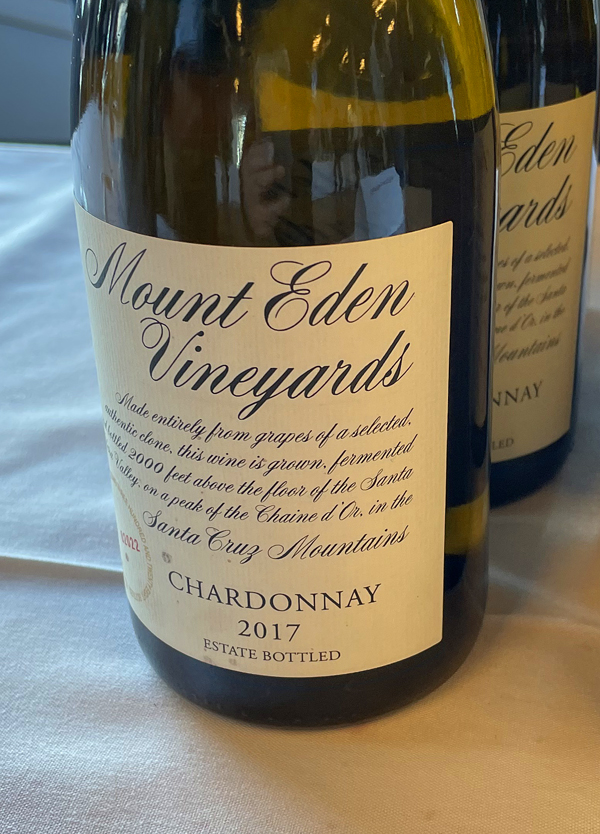
2017 Mount Eden Vineyards, Chardonnay, Estate, Santa Cruz Mountains.
The 2017 Estate Chardonnay by Jeffery Patterson and his team at Mount Eden is everything that expectations had imagined and is a gorgeous full bodied wine with opulence, elegance and hedonism, but still finely detailed, balanced and a reflection of place, it impresses from start to finish and shouldn’t be missed. Over the past couple of years with Covid and general unease, I haven’t had many chances to taste the Mount Eden Vineyard wines, but when I have, I have been rewarded with exceptional efforts and at San Francisco’s Slow Wine tasting I was treated to this beautiful and classic version of their Chardonnay. The nose is stony with subtle orange blossoms, saline and clove spice that leads to the dense mouth filling palate that delivers layers of golden apple, pear and lemon curd that are accented by wet chalk, brioche (leesy notes), golden fig, vanilla and mineral tones. This vintage, which saw a bit of heat, will likely mature a tad faster than the upcoming 2018 and 2019 vintages, but there is still a underlying acidity that keeps things energetic and makes this edition great with a variety of flavorful cuisine, including lobster and thick soft cheeses. Patterson notes that his Chardonnay, which come from unique Burgundy clonal material, is know known as Mount Eden Clone, which has become a California heritage clone. He details the winemaking here as follows, with this Estate Chardonnay, the grapes get harvested when slightly yellow to yellow-green and are pressed without crushing. All of the juice is barrel-fermented in new and one-year-old French Burgundy barrels, where the wine undergoes primary and full malolactic fermentation and sees an elevage on the lees lasting for close to ten months before being lightly filtered prior to bottling. Patterson likes to give his wines time to mature and fill out, so his Estate Chardonnay is rested in Mount Eden’s cellar for two solid years before being released into the wild. As I have said before, we all benefit from that dedication to quality, with the later release of these wines, we get stunning more evolved bottles.
Mount Eden’s winery and vines, as I’ve written before, sit about 2,000 feet up above what is now Silicon Valley, it was originally founded as the Martin Ray Estate back in the mid 1940s and over the following 20 plus years became known for exceptional Chards and Pinots. In 1970 Ray lost the property to an investor coup and in 1972 it became Mount Eden, and they hired Pinot guru Richard Graff who had founded Chalone, who crafted the legendary 1972 and 1973 vintages before the owners brought on the little known woman winemaker Merry Edwards, who is now a California legend! In the more modern era of Mount Eden Vineyards Jeffrey Patterson, a traditional winegrower (vigneron) has made the estate one of California’s absolute best labels, after he was originally hired as the assistant winemaker back in 1981. Having graduated in biology from UC Berkeley in 1975, Patterson was fortunate to have been in Berkeley in the 1970s when local food and wine in the Bay Area were becoming relevant with the likes of Alice Waters creating a huge buzz. This is when she opened the famed Chez Panisse and Kermit Lynch had just started bringing in some of the great undiscovered wines of France, and the public were getting their first chance to explore French cuisine as well as have it paired with famous old world wines, all of which inspired and helped form Patterson’s future approach to his wines. There is so the admire in the latest releases from Mount Eden, with their 2017 Estate Pinot and 2016 Cabernet, which I reviewed recently, being fantastic examples of terroir and varietal. For those that love elite California Chardonnay, like Kongsgaard, Hanzell, Stony Hill, Aubert and Peter Michael, will want to get this Mount Eden Vineyards Estate Chardonnay, which remains a fabulous value for what you get. There’s a good reason why Mount Eden is one of the most celebrated and cherished small boutique wineries in California, making their world class estate Pinot Noir, this Chardonnay and the Cabernet Sauvignon from this hillside estate. Jeffery along with his wife Ellie have made Mount Eden an iconic producer and have influenced many wineries and winemakers, their wines speak for themselves.
($65 Est.) 95 Points, grapelive
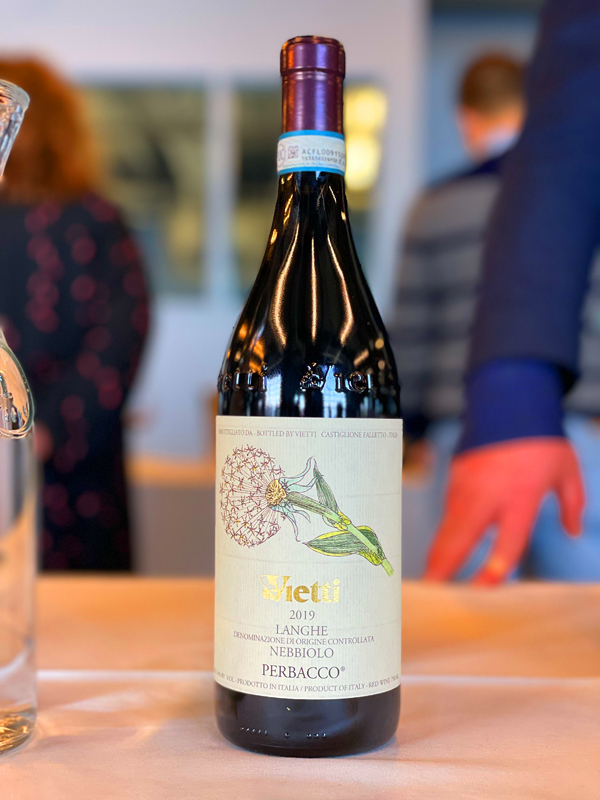
2019 Vietti, Langhe Nebbiolo DOC “Perbacco” Piedmonte, Italy.
One of the first tables I visited at this year’s Slow Wine 2022 tasting event in San Francisco was of course Vietti, especially since they had just a lineup of their Nebbiolo wines, it included the majestic Lazzarito cru Barolo, their main Castiglione Barolo and this savvy Perbacco Langhe Nebbiolo, which is a bargain hunters favorite and a wine I can’t seem to get enough of. This 2019 version is fabulously pure and youthfully bold in the glass with pretty aromatics, taut structure and delightful fruit definition, depth and fresh acidity, it delivers a Nebbiolo experience and quality way above its price class. Not far off the basic Barolo and Barbaresco in terms of class with a traditional array of comforting Nebbiolo character showing crushed raspberry, black cherry, plum and currant fruits along with subtle earthy elements, minty herb, anise, burnt orange rind, seeped dark flowers and a hint of cedar and chalk. The lingering echos of kirsch and rose petals are lovely and the Perbacco turns silken and graceful, but with just enough tannic bite to remind you where this wine was born and tells you to enjoy it with robustly simple cuisine.
Known to many as a “baby Barolo”, Vietti’s Perbacco is always 100% Nebbiolo, made by the legendary Luca Currado, sourced from some of the fifteen different Grand Cru vineyards in Barolo and now more recently the winery started using a small portion of grapes from its vineyards in Barbaresco. In order to create a stylish gateway wine, Vietti only uses top quality sites to be part of the blend of this valued packed Perbecco Langhe Nebbiolo. The finished wine is a barrel and or tank selection, with each Cru being vinified separately, then lots are chosen and aged for two years in oak (as with the Barolo) after which a selection is made that highlights the region as well as the expression of the vintage. Vietti, one of Piedmonte’s great producers, does an impeccable job on this wine, it is an incredible value, the Perbacco is intended to show, as the winery says, the full complexity of the zone and the Nebbiolo varietal to novice and seasoned wine lovers alike. Vietti’s collection of varietal wines are always on point, from their Arneis, Timorasso, Barbera and Freisa to Dolcetto, Moscato d’Asti and this Langhe Nebbiolo, there’s no slouch in this set, all are ready to please and rewarding, so if you are looking to get your Piedmonte on, this is a great place to start!
($25 Est.) 91 Points, grapelive
Grapelive.com – Reviews – February 2022
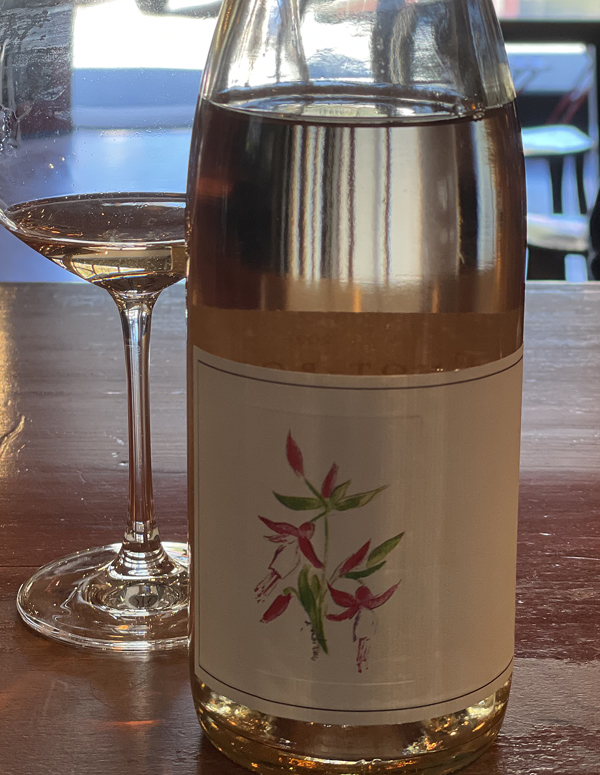
2021 Arnot-Roberts, Rosé, California.
The latest Arnot-Roberts Rosé is really tasty stuff, made from mainly from Touriga Nacional, the famous Port grape though rare here, as per normal, but this year also includes some Gamay, Grenache and another Port varietal Tinto Cao, which adds to the complexity to this excellent Californian bone dry, mineral driven and low alcohol pink wine. This crisp and pale Rosé which comes it at just about 11% natural alcohol, but is filled with flavor, depth and even a sense of texture, making it a fabulous wine with a touch of savory smoky elements going nicely with a zesty array of retained fruit. The nose intrigues with a delicate floral note, ruby citrus, a hint of bacon and crushed stones that leads to a vibrant, but subtle palate of racy grapefruit, strawberry, sour cherry and melon fruits, plus rosewater, dried/dusty herbs and wet rocks. Totally unique in make up and style, this wine has the class and quality of the top Provence Rosé, though true to its own sense of place, being a wine that could only be made here in California, it speaks to the passion and pride of the winemakers here. This year’s Light salmon hued Rosé is 67% Touriga Nacional, 21% Gamay Noir, 10% Tinto Cao and just 2% of Grenache, picked early with low sugars and was crafted with precision and with a short maceration and aging period for freshness.
This beautifully detailed 2021 Rosé comes from various sites, depending on the varietals, but mostly it is Touriga Nacional that is sourced from the Luchsinger in Kelseyville, Lake County, where Arnot-Roberts first found Trousseau and still use. The Touriga Nacional for Arnot-Roberts Rosé loves the cool nights and warm days here, the Luchsinger Vineyard is up at 1400’ and set on volcanic alluvium soils, which are laid over ancient riverbed cobblestones, in the Big Valley area west of Clear Lake. The winery adds, Clear Lake is the second largest natural body of water in California after Lake Tahoe and is an influence on the climate and the quality in the grapes grown here. There are, an ever growing set, of fine Californian examples of dry Rosé and I am thrilled by what I’m tasted and reviewed in recent years, though this Arnot-Roberts version is still right at the top of my list of must haves and it remains a great value too. Arnot-Roberts was founded in Healdsburg in 2001 by childhood friends from Napa Valley, Duncan Arnot Meyers and Nathan Lee Roberts, who have excelled in creating some cult like favorites made from alternative varietals, like the mentioned Trousseau, Falanghina, Ribolla Giallo, Gruner Veltliner and this Touriga Nacional based Rosé, as well as an awesome set of Syrah, Chardonnay, Pinot Noir, Cabernet and Gamay offerings, all of which are worthy of searching out!
($22 Est.) 92 Points, grapelive
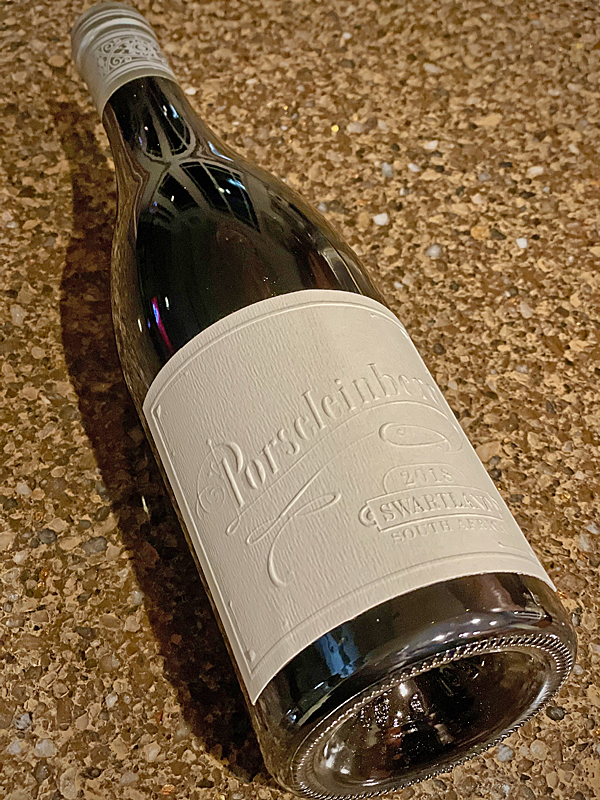
2018 Porseleinberg Farm 798, Syrah, Riebeek Kasteel, Swartland, South Africa.
This little known Porseleinberg wine by winemaker Callie Louw, part of the Boekenhoutskloof collection is an absolutely stunning Syrah, I can honestly it is one of the best versions in this style I’ve ever had, seriously rivaling Thierry Alemand’s famed Cornas and or Domaine Jamet’s iconic Cote-Rotie! This awesome full whole cluster Syrah from South Africa’s Swartland region bursts from the glass with a tantalizing mix of savory meatiness and utterly perfumed violets and an array of dark fruits that all leads to a full bodied and youthfully taut palate with layers of boysenberry, blueberry, damson plum and dusty black cherry fruits that are perfectly accented by an echoing of violets, anise, Greek black olive tapenade, lavender, cinnamon, garden herbs and rich creme de cassis. This wine starts slow, but really hits the gas when fully open, a few swirls and time turns this chiseled Syrah into one of the most fascinating experiences you’ll ever have and is a monumental effort, proving again that Syrah is a world class varietal that produces some of the greatest wines and values in the wine world, this wine is as pleasing and as complex as anything from Bordeaux or Burgundy and has intense palate impact. This is a special wine, it is without question an exciting discovery and one of the best South African examples of Syrah I have tried and joins an elite set of labels here, like Sadie Family and Badenhorst, if you can find it, don’t miss a chance to get it.
Started in 2010, this Porseleinberg (Syrah) project, has become one of the Cape’s most exciting reds, which after tasting this vintage, I can see why and from what I hear this 2018 is a more finessed edition than prior offerings that have been described as monsters or tannic powerhouses. It’s been said that Callie Louw has been very Influenced by some time spent at the mentioned Domaine Jamet in Cote Rotie and the employment, as noted by the winery, of a submerged cap maceration during primary fermentation. In a traditional nod, this 2018 Porseleinberg was 100% whole-cluster fermented in concrete vats using native yeasts, making for an old school style Syrah that excites the senses with a world of spices, camphor, mineral notes with raw peppercorns, snappy cloves, rosemary that never takes away from the deep blue fruits and depth of flavors. Porseleinberg started when South African Marc Kent (Boekenhoutskloof) searched out a unique site for Rhône grapes, which led him to the Swartland, where top Cape wines have been gaining notoriety. He believed he found the perfect place and purchased this small wine farm atop the Porseleinberg mountain and put the talented Callie Louw to work, with unbelievable results now in the bottle. Grown on this area’s schist soils, this Porseleinberg Syrah saw a maturation or elevage in a combination of mainly large and seasoned foudres and concrete eggs, this ended up contributing to the fantastic purity and fabulous concentration here. I can imagine this rare bottle aging for decades with your patience being well rewarded, though I don’t think I’d have the will power to wait!
($90 Est.) 98 Points, grapelive
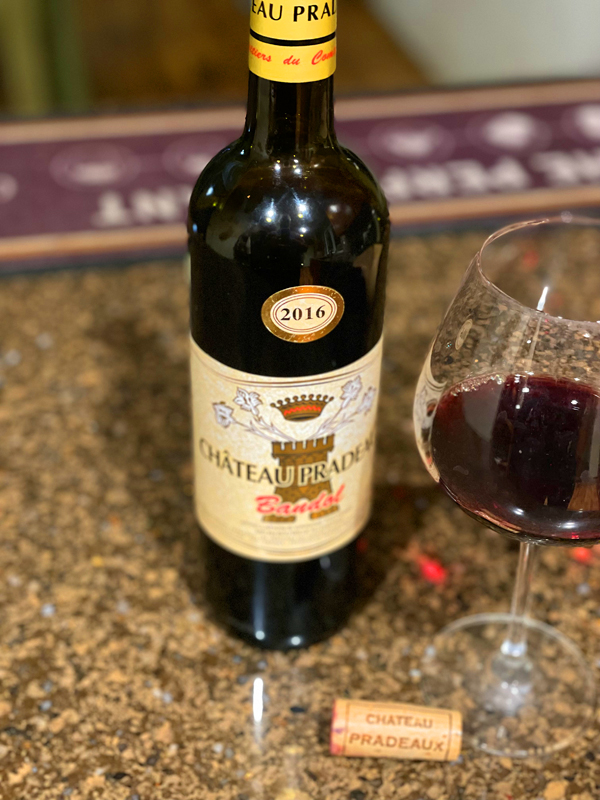
2016 Chateau Pradeaux, Bandol Rouge, Provence, France.
Etienne Portails’ 2016 Bandol Rouge from his family’s Chateau Pradeaux is a rich and full bodied effort, showing a soulful Mourvedre dominated palate with earthy dark fruits, led by mulberry, black currant, plum and cherry, along with a light dusting of spices and accented by wilted flowers, leather and anise. There is a sense of raw transparency here, no flashiness or glitz, this is pure as it gets, but still the wine charms and beguiles in the glass and opens up nicely for complete enjoyment, even in its youthful form and its firm tannins melt away with food, this is very fine version from Pradeaux. This dark garnet and purple Bandol is a wine of place, first and foremost, and shows pride and passion for its terroir, taking its clues from its limestone influenced Provence soils, adding dimension and savory/stony elements as well as echoing its fruit for a long complex finish. Bandol, one of the great wines of France, often ages decades or more, rivaling Bordeaux, and are great with robust and protein rich cuisine, going great with lamb and mushroom dishes and or hard sheep cheeses.
The Château Pradeaux, run by Cyrille Portalis along with his two sons Edouard and current winemaker Etienne, is situated on the outskirts of the town of Saint Cyr-sur-Mer that lies directly on the gorgeous azur (Blue) Mediterranean between Toulon and Marseilles. The estate has been in the hands of the Portalis family since before the French Revolution and the wines themselves transmit that long history and tradition and Pradeaux has been farmed to organic principles for many years. The estate is all about Mourvedre and this classic cuvée is 95% Mourvèdre and 5% Grenache, all whole cluster and with indigenous yeasts the wines then get a long élevage in large oak foudres, in fact they can last as long as four years. The concentration comes from the old vine fruit with the grapes only coming from vines at least 25 years of age, with most much older. The wines of Château Pradeaux are authentic, bold and sometimes rustic, though under Etienne this wines have been elevated and the quality is exceptional, without losing the domaine’s traditional character, as this 2016 shows. I a big fan of the Pradeaux lineup, especially this bottling, which is a stunning value too, plus I can’t seem to get enough of their Bandol Rosé cuvée classique, which is always outstanding.
($40 Est.) 93 Points, grapelive
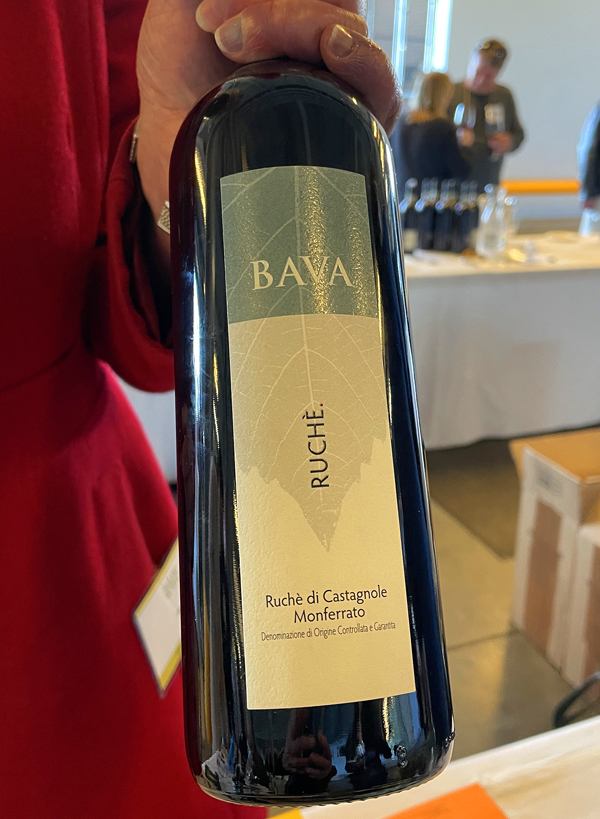
2019 Bava, Ruchè di Castagnole Monferrato DOCG, Piedmonte, Italy.
The heavenly perfumed, but dry Ruchè di Castagnole Monferrato by Bave is cherry and plum fruit wine with a liquid rose petal nose, a sultry earthiness and a lightly tannic medium bodied palate. This is pretty stuff and distinctly Piedmonte in the glass with some fine almost Nebbiolo like details, a ruby/garnet color and brambly spicy, with hints of candied orange, minty herbs and with a chalky mineral element. All of which making this an exciting example of this rare Langhe red grape that has made a big come back in recent years largely due to the quality of the Bava and Montalbera wineries versions. Montalbera’s Ruchè, which I love, is more high profile and has more availability stateside and maybe setting the standard for quality, at least in what I’ve tasted so far, so it was nice to see Bava’s version right up there.This varietal is highly unusual with incredible aromatic character, Ruchè is as the Bvga family asserts, simply original and unique, once only found in sweet wines it has found a new life and following as a fragrant dry wine, with sweet and light tannins and moderate acidity and a good alcohol content. Ruchè can only be produced in seven municipalities of Monferrato, with Castagnole Monferrato being the highest regarded. Castagnole Monferrato, became a DOC in 1987, then a full DOCG, the more prestigious classification in 2010 and locals claim Ruchè as their own and it is considered the legacy wine of the Parish’s Priest, claiming that Father Cauda was in fact the creator of the modern Ruchè, though the grape has been grown in the region for hundreds of years. Ruchè is a mysterious grape once believed to have originated in the hills northeast of the town of Asti and I haven’t encountered too many notable versions, as noted, here in the states, especially as it is made in very low numbers and not imported often, though when done right it can be exceptional and very memorable, as Bava’s 2019 is.
The history of the Bava Family also goes back six generations, over 100 harvests, and starts in the village Cocconato, near vineyards that dominated by the Romanesque church of La Pieve and the Bava’s most cherished Barbera vines. They are know equality for whites and reds, but I really only tried a collection of the red wines at San Francisco’s Slow Wine 2022 tasting, with this Ruchè and their Nizza DOCG Barbera being the two standouts. This all stainless Ruchè di Castagnole Monferrato was crafted to highlight the gorgeous aromatics and purity of this grape, making it bright and crisp, allowing its true personality to shine through without the use of wood. The Ruchè di Castagnole Monferrato terroir is similar to Barolo and is up at about 200 meters with classic limestone soils with some hardened clay, sand and mineral sediments all of which add to the complexity and balance here. The Bava’s say, as a grape with primary aromas and few tannins, Ruchè does not need a long period maceration and finishes fermentation quite quickly, and they try to preserve the grape’s natural fragrance and avoid aging in barrels, preferring to bottle early as well in the following Spring. The exact origins of Ruchè are still unknown with ampelographers holding different theories, with two most prominent theories, one being an indigenous Langhe grape native to the Piedmont region or that it originated in Burgundy and was brought to Piedmont sometime in the 18th century, though that idea seems a touch far fetched as I have yet to see a grape similar in character in that part of France. For most of its history in Piedmont, the grape has been cultivated in relative obscurity, but now the secret is out and there plenty of excitement for it at home and even abroad, like here in California, where excitingly, ex Bonny Doon founder Randall Grahm is planting some Ruchè for his Popelouchum estate in San Juan Bautista. Imported now by Siena Imports, Bava should get easier to find, look for this Ruchè, and get to know this grape, it is well worth your time.
($25 Est.) 91 Points, grapelive
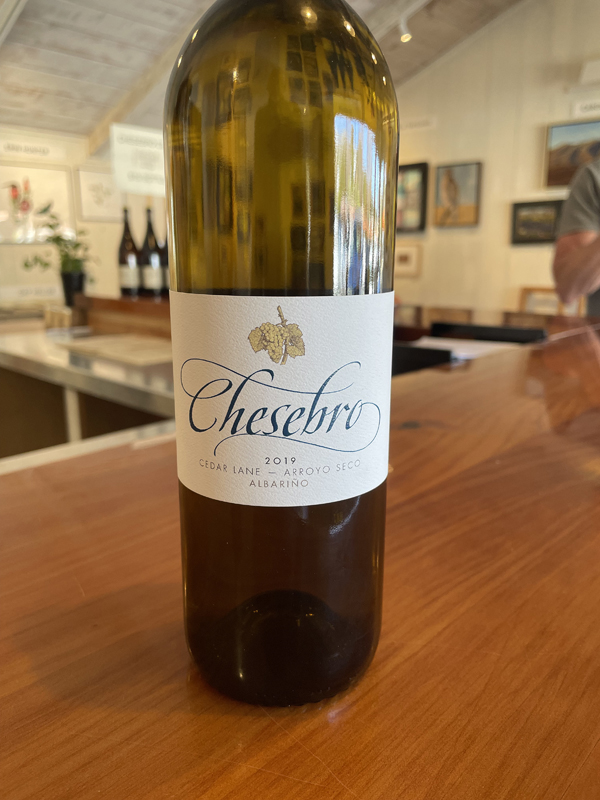
2019 Chesebro, Albarino, Cedar Lane Vineyard, Arroyo Seco AVA, Monterey County.
Mark Chesebro’s crisp and bone dry Albarino is a delightfully fresh and pure version that goes great with everything from oysters to lemon chicken dishes and it highlights just how good this varietal is when grown in a coastal climate and the saline rich stony alluvial soils here in Arroyo Seco. This 2019 is maturing well and has a nice background textural quality while still being racy and refreshing on the lighter framed palate with vibrant citrus, tart cider apple, peach and melon fruits leading the way in a zingy mineral driven wine that is lightly floral, salty and has a faint touch of straw and almond nuttiness. The 2019 is pretty sold out out, but the 2021 is out now and I look forward to trying it soon, but the vintages are likely not all that different, in fact I think the long cool growing season, while similar, should enhance the zesty style Chesebro goes for, making it a wine that looks to perk up those warms days ahead. Chesebro sells most of the grapes he grows, supplying some of the fine artisan brands that are better known, but these small lot wines under his own label are solid authentic wines without pretense, I highly recommend discovering the range of wines here, especially this Albarino and the Vermentino, a favorite of mine, made in the Favorita (Piedmonte) style, more zippy and lighter than Sardinian, Tuscan or Corsician versions. Chesebro is mainly known for the Rhone inspired reds as well as Sauvignon Blanc, but he also does some Bordeaux varietals, Gamay and Pinot Noir, all of which lean a more old world and less oaky style.
Albarino, a Spanish and Portuguese grape, most in the Rias Baixas region of Galicia, came to California in the late 1990s and has been a huge success throughout the cooler zones of the state. The first California Albarino was made by Michael Heavens (now of Cave Dog wines) from his small parcel of vines in Carneros and it was almost revolutionary, given us a great alternative to grassy Sauvignon and overly butter Chardonnay that was popular at the time. The grape made its way here to the central coast in the mid 2000s and has become a star in the Monterey region with some exciting versions really taking off in recent years, in particular the La Marea line by Ian Brand, which are delicious and includes a version with some skin contact, as well as Russell Joyce’s Joyce Wine Co Albarino that has a huge following too. Mark Chesebro, who was a winemaker at Bernardus, went 100% stainless steel with his Albarino and focuses on purity and transparency here, preserving all the intensity of the grapes natural acidity in the finished wine. As a fan of Rias Baixas wines, especially those of Nanclares and the like, this Chesebro version really appeals. Chesebro, who studied chemistry and biology at UC Riverside and UC Santa Cruz, before going back to school at UC Davis to study enology and viticulture with an eye toward creating a sustainable farm and vineyard, as he puts it, to live off the land, based on a suggestion of some Europeans he met while at Davis. He and his family presently on a ranch in Carmel Valley, where they grow grapes, apples, near to the vines in Arroyo Seco, which he farms. It’s a great time to discover these Chesebro wines and the Albarino is tasty way to start.
($24 Est.) 90 Points, grapelive
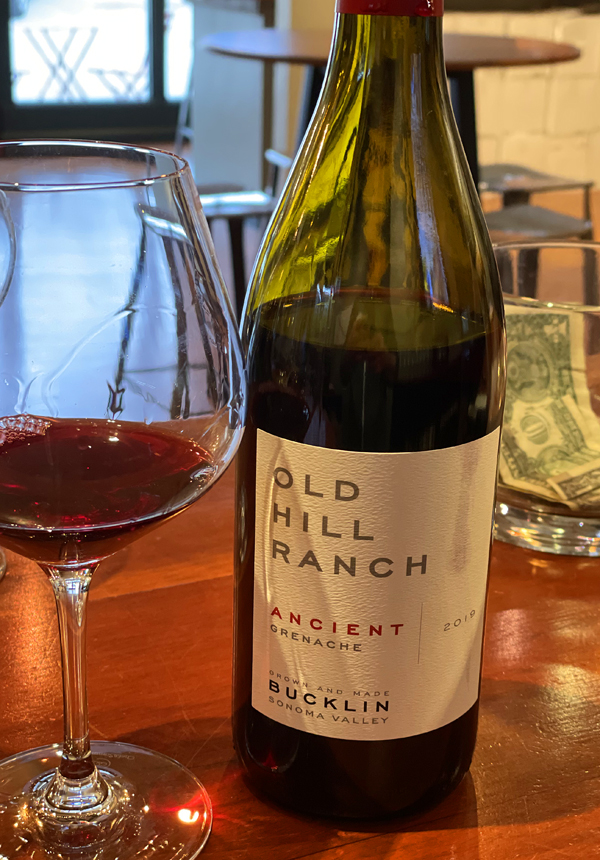
2019 Bucklin, Grenache “Ancient” Old Hill Ranch, Sonoma Valley.
The beautiful full bodied old vine “Ancient” Grenache by Will Bucklin at his family’s legendary Old Hill Ranch, home to California’s oldest Zinfandel, and most likely Grenache vines, is a deep and pleasure filled wine with seductively smooth layers of red fruits, hints of spice, sweet floral aromas and elegant wood shadings. These Grenache vines were mostly planted here in 1882 and they deliver amazing concentration and vinous mouth feel in a wine that is uniquely like if you took a Chateauneuf du Pape and blended it with 100 year old vine Zin in the way this wine sensuous hits the palate with thick fruit density and subtle earthiness. In mouth this Grenache delivers raspberry, candied cherry, plum and pomegranate fruits, white pepper, briar notes, sandalwood, lavender and anise. Will Bucklin’s wines are transparent and eager to please, he says that healthy, well-grown grapes are predisposed to becoming (great) wine. Going on he adds, the grapes are coated in natural yeasts, full of minerals and sugar that ferment without the need for nutrient additives, and they are not over-ripe from excessive hang time (late picking) that would require dilution or acid additions. Bucklin is mostly known for his Old Hill Ranch Zinfandels, but he does a few micro bottlings, like this “Ancient” old vine Grenache, as well as single parcel field blends, as well as a tasty Rosé and a Cabernet Sauvignon, all of which are incredible values and distinct wines. This dark garnet and ruby colored 2019 Grenache is rich and robust, but even at close to 15% natural alcohol, it has a Pinot Noir like elegance and drinks gracefully, it is sublime now and should age nicely for the nest 5 to 10 years.
One of Sonoma’s oldest and most historic vineyards, Old Hill Ranch was founded in 1851 by pioneer William McPherson Hill. The vineyard, which has 30 or so varieties inter-planted, that existed that was re-planted in the 1880s to include its famous Zinfandel, was purchased by Otto and Anne Teller in 1981 and today, Anne’s children, the four Bucklin siblings, including winemaker Will Bucklin, produce field-blended wines from the vines on the family ranch. This Grenache is selectively and exclusively harvested from the ancient vines, and is thus some of the oldest vine Grenache in the state. The blend consists of approximately 85% Grenache, with the remaining grapes a blend of Syrah, Carignane, Mourvedre, and Alicante Bouschet. Will Bucklin’s Old Hill Ranch farms its grapes all sustainably, he follows in the footsteps of his stepfather Otto Teller, a renowned conservationist who started a more holistic style farming in Sonoma Valley in the late 1950s. Otto, says Bucklin, was an ardent organic farmer, decades before this notion caught hold in this part of California and who thought dry farming was the only way to go, to protect ground water and save steams locally, so generations could still fish these natural treasures. After graduating from UC Davis in 1986, Bucklin interned at Château Lafite Rothschild before moving to Oregon to make wines, where he learned that the best wines were the result of healthy soil, that produces a healthy plant and in turn healthy fermentation(s), believing that if you farm the soil, the rest will follow. He employs low intervention winemaking adding no nutrients or the like, preferring natural fermentation and low sulfites, with aging done in mainly used barrels as to not hide the wine’s true nature and personality, and trying to make wine in the vineyard and to express the vineyard.
($40 Est.) 94 Points, grapelive
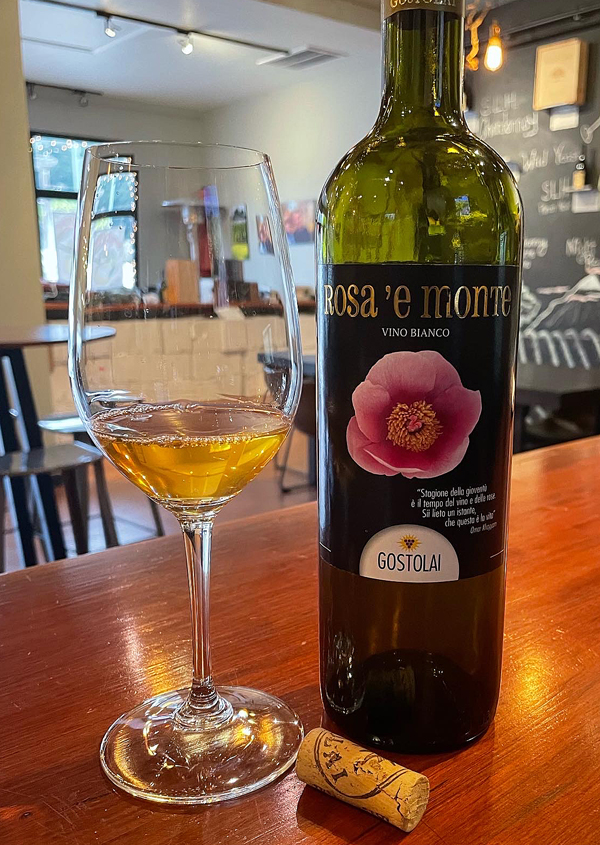
2017 Cantina Gostolai, Rosa ‘e Monte, Vino Bianco Secco, Sardinia, Italy.
Based in Sardinia’s Nepente di Oliena, Cantina Gostolai is one of the island’s most interesting and influential producers, widely admired for their traditional and authentic wines and mostly for their beautiful Cannonau (Grenache) and Vermentino efforts, which I have only recently discovered, along with this rare and intriguing skin contact white blend Rosa ‘e Monte made mainly from an indigenous ancient varietal. This wonderfully textural and aromatic Rosa ‘e Monte white, is made outside of the regional and DOC rules, crafted from 70% Vernaccia di Oristano, an at least 3,000 year old local grape with no know relatives outside of Sardinia and 30% Vermentino that was fermented naturally with 24 hours of skin maceration and lees aged in stainless steel. The wine, which cannot be labeled with a year, is from the 2017 vintage and glows in the glass with a rich yellow/gold hued with a hint of amber, it fills the palate with a structured array of flavors and complexity, led by white stone fruits, preserved lemon, dried apricot and fleshy melon fruits that are nicely accented by mountain herbs, fennel, almond, verbena and a sense of tannin or gripping extract in a mineral crisp bone dry wine. This wine is joyously pleasing in the mouth, not at all funky or oxidative with a refreshing vibrancy and a stony finish, making it great to sip on and especially good with sea food, in this case I had it with Paella, that really suited this Mediterranean wine. This Vernaccia di Oristano grape can develop flor and be sherry like if desired, but this Gostolai version is clean and lively. It should noted that DNA testing has shown that there is a possible close genetic relationship of parent-offspring between Vernaccia di Oristano and the white Emilia-Romagna wine grape Santa Maria, though it looks it originally to have been born on Sardinina.
Sardinia has some of the longest history in wine growing of all of western Europe and while still controversy still persists, it could be the home or birth place of commercial wine trading in the Mediterranean, predating the Geeks, the Etruscans (who came to both Sardinia and Corsica) and likely thousands of years before the Romans. Gostolai fermented their Rosa ‘e Monte dry white was done completely in stainless steel, it was whole cluster pressed with the grapes allowed 24 hours of skin contact in temperature controlled vats. This skin contact allows for a touch more pigment, extract and that structure I mentioned above, enough to be noticeable on the palate, but without any hard edges, in fact this wine gains a vinous, almost oily silkiness with air and time in the glass. I was introduced to this winery by the Sardinia native and Italian sommelier Giuseppi Cossu, for which I am grateful as he has provided insights and history that I wouldn’t ever found on my own. Interestingly, ampelographers believe that the Vernaccia di Oristano grape, unrelated to the Vernaccia found in Tuscany, may be native to the Tirso river valley that crosses the island of Sardinia before emptying into the Gulf of Oristano, hence the name. This Vernaccia, first documented in 1327, was thought to have been introduced to the island of Sardinia by the Phoenicians, but grape seeds now have been found here that were over 3,000 years old, making it almost certainly that it here even earlier. The vines here are located at about a 1,000 feet of elevation on the Dolomite like granite based sandy soils on the the northeast side of Sardinia, that, as mention, is mostly known for their Vermentino di Sardegna and Cannonau (Grenache) di Sardegna wines, but Gostolai also produces small lot real rarities as well, including a sweet Muscat, an almost unheard of other local varietal Arvesiniadu and of course this wine. Gostolai, was founded and started making wines in 1988 and strives to preserve the region’s tradition, history, terroir and culture, producing wines of transparency, rustic charm and natural character, a mission that shows in their wines, like this one.
($24 Est.) 92 Points, grapelive
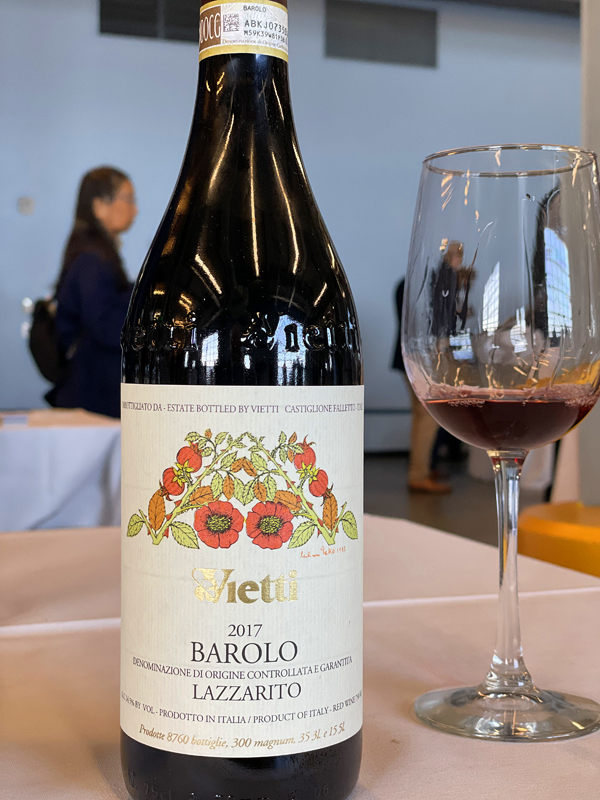
2017 Vietti, Barolo DOCG, Lazzarito, Piedmonte, Italy.
One of the greats of Barolo, View’s Lazzarito never fails to disappoint and this 2017 is a stunning wine, tasted at this year’s Slow Wine tasting in San Francisco, it was one of the wines of the show with incredible depth, complexity and purity of flavor, it delivers a knock out performance, especially considering the vintage conditions. The 2017 is a powerhouse of classic Nebbiolo showing branded Italian cherries, plum, red currant and strawberry fruits on the full bodied and structured palate, accented by balsamic notes, iron, cedar, licorice and wild herbs. The tannins are firm, but allow seamless enjoyment even in such a young wine and melt away with food, while aromatics lean toward lavender and rose petals along with leather and sandalwood, all making for impactful and gorgeous wine. Vietti, originally founded back in 1873, is now owned by Americans, the Krause family, but the wines are still made by the legendary Luca Currado (Vietti) and these are some of the best wines in the region, with this Lazzarito being the flagship wine, and the 2017 version might be one of the wines of the vintage, it is a truly stunning Barolo. While most people would agree the 2010 and 2016 vintages are Barolos for the long term, 2013 and 2017 are fine vintages to enjoy in the more near term, though they still are top notch in terms of complexity and pleasure, and for savvy buyers they might be a bit less expensive and more available, with this Lazzarito lacking for nothing, with its muscular presence, aromatics and elegant length, it is hard not to swoon when tasting this edition. I think extra care was given here to make such an incredible wine as the year was searingly hot in the region and the yields were dramatically reduced to ensure the resulting quality found here. This year’s Slow Wine tasting in San Francisco was a showcase of the glories of Piedmonte and the Nebbiolo grape with many stars on display, with Vietti’s being some of the standouts on the day.
Having tasted through most of the Vietti collection of Barolo wines, I find their Lazzarito cru bottling singular and iconic, it usually tops my list in their exceptional lineup. This 2017 vintage is proof of the quality here at Lazzarito, and it is not far off the brilliant 2016, one of my favorite years since the mighty 2010s and 2006s, and the Lazzarito impresses with every sip and will please Nebbiolo lovers for many years to come. Located, as the winery notes, at a top of hill near Serralunga, the Lazzarito vineyard, which is now all organically farmed, is set in a historic site long known for its fresh air and favorable exposition, making for Nebbiolo of density, gripping structure, but with loads of natural acidity and beautiful perfumed fruit. Located in the Eastern part of the Barolo region, wines from this vineyard, the winery continues, are best known for their more “masculine” style, with intensity and powerful, which is true to the territory and Barolo, as it is also known as the King of Wines. This epic Barolo comes from mature vines, planted in 1983 on clay and limestone, this along with the climate here make for Nebbiolo of Grand Cru quality, think Mazi-Chambertin! Luca Currado does a natural yeast fermentation and cool maceration with the Lazzarito then seeing close to 30 months in cask, which vary slightly with each vintage’s nuances, with a combination of small French barriques and traditional large Slovenian casks employed. People were concerned when Vietti sold recently, but I can tell you that so far there is absolutely nothing to worry about with the quality of the wines, in fact they are even more precise than they have ever been and the future looks secure. This winery is one of Piedmonte’s best and continues to lead with pride and passion, this Lazzarito Barolo is a masterpiece and helps cements Vietti’s place in the regions elite producers. I hope to re-visit this Lazzarito in the future to see how it progresses, in the meantime I will drink Vietti’s “Perbacco” Langhe Nebbiolo, which is one of the best values and a great way to start exploring the Vietti wines.
($175 Est.) 95 Points, grapelive
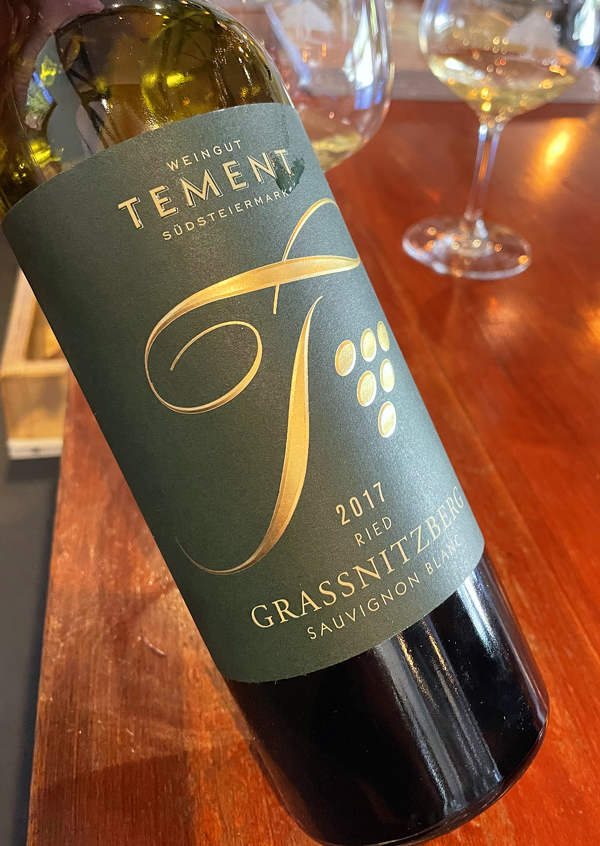
2017 Weingut Tement, Sauvignon Blanc, Reid Grassnitzberg, STK 1er Cru, Südsteinermark DAC, Styria, Austria.
An area that doesn’t get much attention, but one that can producer remarkable Sauvignon Blanc, like this wine from the renown Tement winery in southern Austria, a region very different from the other parts of Austria, like the Wachau or Bergenland in the northeast of the county where Gruner Veltliner and or Blaufrankisch are more famously grown. This aromatic and crisply dry2017 Tement Reid Grassnitzberg Sauvignon is a very distant white wine with a steely mineral core and stony elements on display behind layers of lemon/lime, guava, gooseberry and white orchard fruits. There’s tons of personality here and terroir character shows throughout, the single vineyard Grassnitzberg was the first vineyard owned by the Tement family and was planted in the early 1950’s, making for old vine concentration as well. The medium bodied bone dry palate delivers exceptional quality and highlights Armin Tement’s gifted touch and the careful and organic work in the vineyard. The Grassnitzberg Vineyard, as the winery states, is a special site with coralline limestone soil with south-southeast facing slopes, which adds to the complexity and the ripe nature in the wines, with this wine adding spicy accents, a crystalline mineral note and a faint trace of grassy herbs that provides a nice contrast to that expressive tropical fruit. A big thank you to my friend Alex Lallos, who kindly shared this bottle and reminded me just how good this producer and region’s wine are, it is nice to have colleagues that are curious and keep you on your toes.
Weingut Tement is a small family run winery, run by vigneron Armin Tement, who took over from his father Manfred and turned this label in to one of world’s Sauvignon Blanc producers, he is supported by brother Stefan and his wife Monika, along with his parents who continue to help out here at this Styrian estate. Armin has since then made Weingut Tement Southern Austria’s number one artisan winegrower and who’s father has helped create what is known as STK, the official Styrian Terroir and Klassik growers association that has lifted the image in this lesser known region. Over the years Tement has built a huge reputation for their Sauvignon Blanc, in fact they have won the title of world’s best Sauvignon Blanc many times, and tasting this single vineyard wine certainly cements that view and honor, it is a serious version of this grape, putting it in league with some of top names in Sancerre and Pouilly-Fume with Dageneau coming to mind. The single vineyard wines, including this Reid Grassnitzberg Sauvignon Blanc, are made without any sulfur during vinification or aging. These whites, mainly Sauvignon and Chardonnay, which is known as Morillon locally, only get a little sulfur at bottling, allowing the wines to display a full expression of their sites. They are fermented and lees aged in large neutral Austrian oak barrels for eighteen to twenty months to develop their full range of flavors and texture and are bottled without filtration. This pretty, lightly floral and charming pale golden Sauvignon Blanc has a seductive charm and goes great with a range of food, especially soft cheeses, smoke trout and or roast poultry, keep an eye out for these Tement SBs, they are rare, wildly enertaining and delicious treats!
($35 Est.) 93 Points, grapelive
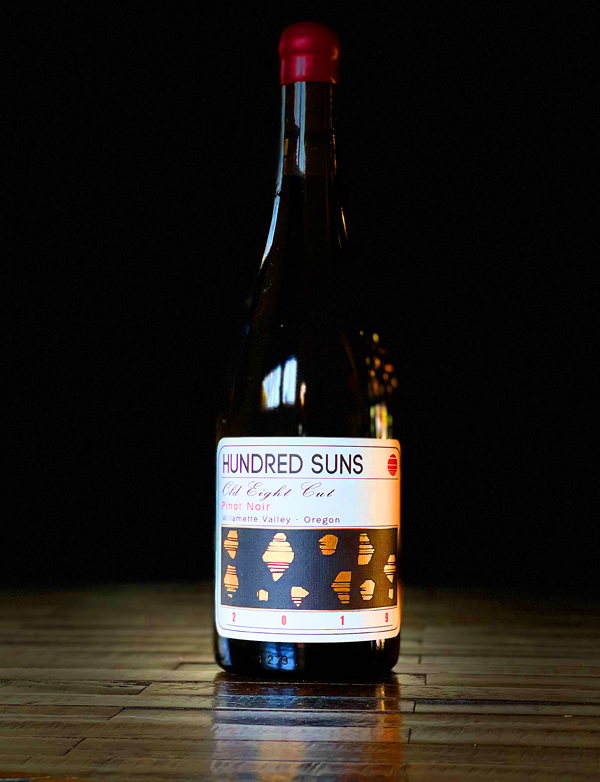
2019 Hundred Suns, Pinot Noir, Old Eight Cut, Willamette Valley, Oregon.
In a vintage that winemaker Grant Coulter says was kind of a return to normal or a classic Willamette year, cooler and on edge with loads of natural acidity, the 2019 Hundred Suns Old Eight Cut Pinot shines with bright intensity and tart Gamay like flavors, in fact as I have in prior reviews, I find this naturally styled Pinot thrilling in the same way I love the Cru Beaujolais wines from Morgon legendary producers Lapierre and Foillard. Dark garnet and with a touch of stemmy crunch, this spicy Oregon Pinot opens up to reveal black cherry, tangy red currant, pomegranate and garden grown strawberry fruits along with subtle earthiness, sweet and sour herbs, cinnamon, mineral, rose petal and a crisp saline finish that highlights the zippy acidity. With time and air the more sensual and textural side of this exciting Pinot comes through and the wine settles into a more elegant mood and get back into its varietal character with impressive flair, especially for a wine in this price class. The Hundred Suns Old Eight Cut Pinot, is, as Coulter puts it, a cellar selection (that) stitches together pieces from unique sites across the Willamette Valley, including some elite vineyard sites. The separate lots are fermented with all native yeast, partial whole cluster (25% this vintage) and with a variety of traditional and experimental techniques, sometimes including carbonic maceration and or amphora, all to create a layered and transparent wine of great complexity, which I can attest to in the last three or four vintages I’ve tried.
Grant Coulter, the ex Beaux Freres winemaker and his wife Renée Saint-Amour’s Hundred Suns label, which focuses on innovative hand crafted single vineyard Pinots, is one of the most coveted newer wineries in the Willamette region and while once under the radar, is now fully discovered. The top set of Pinots come from unique parcels at Shea Vineyard, in the Yamhill-Carlton district, Mike Etzel’s Sequitur Vineyard in Ribbon Ridge, and the classic Bednarik Vineyard that was planted back in 1998 with a selection of Pommard and Wadensvil clones on marine sedimentary soil. All the vines providing grapes for the Hundred Suns wines are fully sustainable and or organic and the winemaking employed by Coulter is very much on the natural side of things with ancient and traditional methods, but mostly it is about minimal intervention, almost no new wood and very low sulfites, to promote purity and freshness in the wines. I also have fallen in love with the limited Gamay bottling here from the Tualatin Estate Vineyard, it has become one of my geeky favorite Oregon wines, and it is worth being on the mailing list here just to get a few bottles, though I due recommend gripping the killer Pinots too of course, this one, the Old Eight Cut Pinot Noir is one of the best values in the state. The next release from Hundred Suns is this Spring (2022) and it will feature some new things, a Eola-Amity AVA Pinot, a co-ferment Cabernet/Syrah from the Rocks District (Oregon/Washington border area), an amphora raised Syrah and a follow up release of Chardonnay, which I am sure will be awesome, as the last release was excellent. These are not to be missed wines and while they are getting much harder to get, they are well worth the effort!
($30 Est.) 93 Points, grapelive
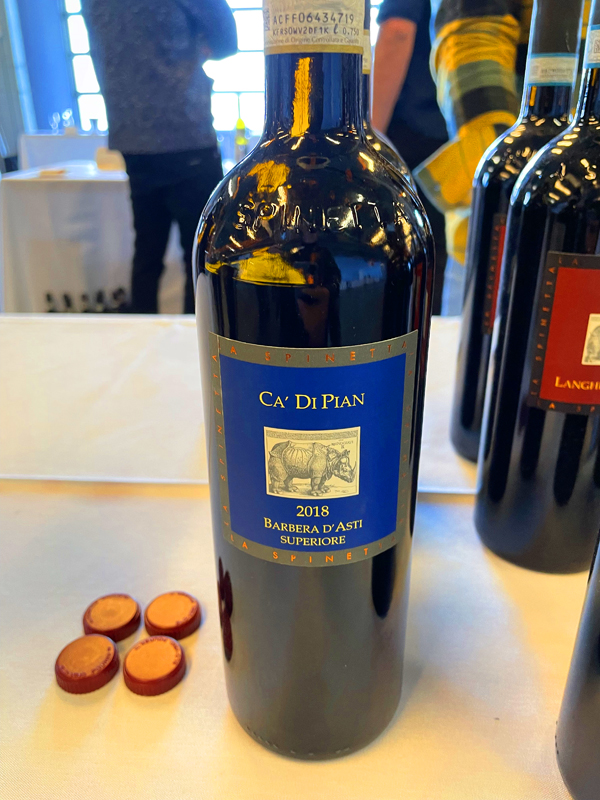
2018 La Spinetta, Barbera d’Asti Superiore DOCG “Ca’ Di Pian” Piedmonte, Italy.
One of my secret favorite wines, La Spinetta’s Ca” Di Pian Barbera is a wine I like to stock up on and drink with simple meals and this 2018 is easily a vintage to continue my trend, I love the expressive fruit, jazzy acidity and dark floral aromatics, it is a wine that goes great with all kinds of foods, especially classic northern Italian cuisine as well as our local dishes, here in California. I have long been a fan of Giorgio Rivetti’s wines and while the Nebbiolo bottlings are legendary, it has always been the seriously taken Barbera at La Spinetta that has thrilled me, especially the single Cru Gallina and this Ca’ Di Pian for its ability to be noteworthy in quality, but still a non pretense, pure and authentic wine that makes for casual pleasure. Barbera and Docetto, known for ages as peasant wines, when grown in the right spot and made with passion can rise to unexpected heights and complexity, in particularly for Barbera in the hills of Asti, Alba and Roero where it thrives on the same soils as the Nebbiolo enjoys. The Ca’ Di Pian is purple/garnet colored and inviting in the glass with black currants, cherry and blackberry fruits leading the way on the full bodied palate, it gains depth as it opens and gets nicely textural, while still very lively and tartly fresh, adding hints of sweet violets, minty herbs, anise, earth and touch of mocha and cedary wood. This Barbera Superiore gets a treatment in the cellar that is close to what you’d expect from a known perfectionist, it is crafted more like a Burgundy, or a California Pinot than the old school and rustic version of this grape, but that extra care is appreciated each time you open a bottle of the Ca’ Di Pian. The La Spinetta lineup is impressive, and throughout the range there is quality, though it is hard not lust after the top set of Barbaresco offerings, the Valeriano, the Gallina and Starderi, and the Campe Barolo, which are some of Piedmonte’s most sexy bottles.
The Rivetti family, Giorgio’s dad and two brothers, started humbly and were mainly growers and makers of Moscato d’Asti into the late eighties before Giorgio pushed La Spinetta into the wine world’s spotlight with a series of fabulous Barbaresco and Barbera wines in the nineties. After which Rivetti turned his attention to Piedmonte’s King of Wines, Barolo, first making a single cru version with his epic 2000 Campe Barolo, which I was lucky enough to taste as a cask sample in 2002, when I first met and tasted with Giogio in San Francisco. I have been a huge fan ever since that first tasting, and I’ve been grateful to have had the opportunity to catch up with Rivetti a few more times over the years and I have learned a lot from him. The winery in Barbaresco has notably focused on native varietals and sustainable farming, while not being afraid to change it up a bit in the cellar, where they blend modern techniques with traditional methods. This Ca’ Di Pian, which is a full Superiore DOCG, meaning it was from smaller yields and saw a year in wood, 100% Barbera, is sourced from mainly younger vines grown in two premier sites, in the Castagnole area of presigious Asti zone, including the Bionzo Vineyard, which is also the source of La Spinetta’s single cru bottling. The vines are between 10 and 25 years old about now, set on the calcareous soils with classic marl, sand, limestone and clay at close to 300 meters of elevation with a perfect Southern exposure. The Ca’ Di Pian, as the winery notes, sees a short fermentation and maceration in tank, it lasts for 6 or 7 days, but still has plenty of extraction, as this wine shows, before being aged 12 months in a mix of new and old, medium toasted, French oak barriques, allowing for a clean, sleek and elegant style. At this year’s Slow Wine event, I also tasted La Spinetta’s Langhe Nebbiolo 2019, which was also an excellent value, with grapes sourced from the younger part of the Starderi Cru (The famous Barbaresco vineyard) in Neive, along with the entry level 2019 Barolo Garretti and 2019 Barbaresco Bordini, that were youthfully fresh, but showing nicely as well.
($24 Est.) 93 Points, grapelive
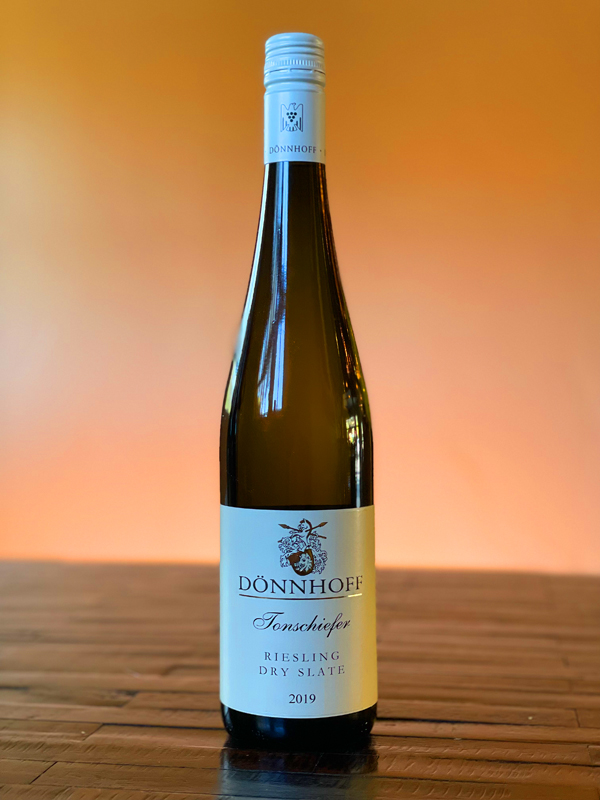
2019 Weingut Donnhoff, Dry Slate Riesling, Tonschiefer, Nahe Germany.
Like the 2018 version the 2019 Donnhoff Tonscheifer (Dry Slate) Riesling is pristine and crystalline with crisp details and a salty freshness with a slate/stony core, it shows a range of tangy white and yellow orchard fruits and racy citrus. The nose is smoky and lightly floral, it leads nicely to a poised lighter framed palate that hints at green apple, tangerine and peach all in perfect proportion as one expects from this famous winery in the Nahe region. Terry Theise, one of the world’s most renown Riesling gurus, has often quoted Helmut Dönnhoff “Extraordinary wines are based on extraordinary vineyards.” has always stuck with me, and it shows in these Donnhoff wines, throughout their full range of offerings, and I also feel grateful whenever I can sit back and enjoy a bottle, which I did with this 2019 Tonscheifer with sushi recently. The terroir driven Tonschiefer is heavenly weightless, bone dry and zesty with flinty intensity, wet rock and with laser like focus, while still being nicely generous in the glass, it was perfect with the purity of the raw briny selection of fish, proving an excellent companion and palate cleansing, it was especially joyous with the Spanish mackerel and local catch crab roll. As the wine opened it gave even more, adding apricot and a white currant fruits, as well as chamomile, delicate rosewater and orange blossom. This bottling is value priced and well crafted with Cornelius Donnhoff choosing to ferment and age this Tonsheifer in a well judged combination of stainless & used large oak to preserve its dynamic personality and transparent flavors, while also allowing a subtle textural presence. Tonschiefer, which means “clay slate”, is named for the soils that dominates the Leistenberg vineyard, that rarely sees any botrytis, making it perfect for wines like this. This is also the original Donnhoff vineyard site, so for the family it holds a very special place in their hearts, and I can feel the pride in this wine, as well as in their Oberhäuser Leistenberg Kabinett.
The Dönnhoff’s, one of the great German winemaking families, first came to the Nahe region over 200 years ago, and after establishing a modest farm, it slowly evolved into a full-fledged wine estate, in more modern times it became world renown when in 1971 Helmut Dönnhoff began the making the wine here. Now Helmut’s son Cornelius runs the show and crafts the wines, and as I’ve suggested, the wines seem to just get better with his gift touch, both the ultra premium dry stuff led by his awesome GG’s and the off-dry and sweeter versions from Kabinett to Eiswein, which maybe be one of the greatest wine I ever tasted, are just fantastic and elegant examples! I love their Spatlese and Auslese bottlings too, these are high residual sugar wines that do not taste overly sweet, the they are impeccably balanced, complex and glorious wines of class and refinement. That said, it is almost impossible to resist these Dönnhoff Trockens, like this one, and especially Cornelius’ drop dead gorgeous Hermannshohle GG, one of the planet’s absolutely best dry white wines! The Nahe, and Dönnhoff, have a wide variety of soils from loess to volcanic, as well as gravel, sandstone and a mix of slates to work with and Donnhoff puts them all to good use. The Tonschiefer Dry Slate Riesling comes from a pure slate set of vines, all between 25 and 40 years old, at the Oberhausen Leistenberg estate vineyard. The weathered grey slate and clay Leistenberg vineyard, a VDP Grosse Lage (Grand Cru), lies in a small side valley of the Nahe just outside Oberhausen where these warm, carbon-laced decomposed argillaceous slate soils and steep terraced hillsides provide ideal conditions for Riesling, and the cooler afternoon conditions here allow for long hang times and lower natural alcohol, making for sophisticated versions of this grape. Like all of the Donnhoff wines, this Tonscheifer comes from organically grown grapes with Fair’n Green certification and while it was made to be drunk young, the quality here allows for solid midterm aging as well. Now, I can’t wait for the much hyped and acclaimed 2020s, though I will happily cherishing these 2019s in the meantime!
($28 Est.) 92 Points, grapelive
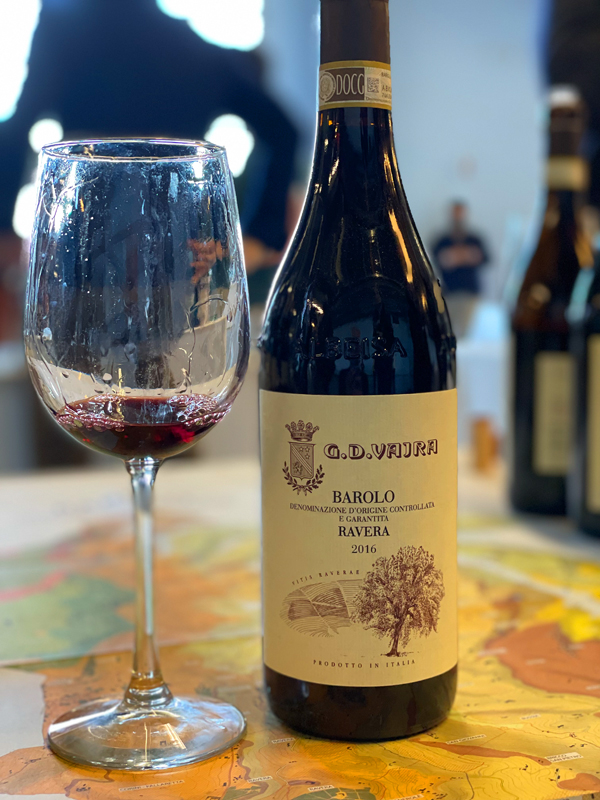
2016 G.D. Vajra, Barolo DOCG, Ravera, Piedmonte, Italy.
I recently attended the fabulous Slow Wine tasting in San Francisco, an event that highlights small sustainable and organic producers and always is filled with authentic and thrillingly honest wines with this year’s being no exception, but there was one wine that stood head and shoulders above the rest, it was no surprise though it was made by Giuseppe Vajra. His family’s wines have always stood out and speak me, it was even with these high expectations that I was blown away with this 2016 Ravera Barolo! The ’16 G.D. Vajra Barolo Ravera Cru starts with a chorus of angels singing a heavenly tune and your senses weep in gratitude for what they are experiencing, well it seemed that way at the time, but seriously this is near divinely perfect and a wine of chiseled feminine beauty. This 2016 Ravera is perfumed with dark blossoms and a mix black and red fruits, spice, earth, along with hints of game, ceps and minty herbs. The texturally sensual Ravera is powerful, but the ripe tannin is silken, a hallmark of this exceptional Nebbiolo wine past and present. Layers seamlessly guide by with accents of dried roses, distilled violet, lavender oil, tar, salted black licorice, stony mineral, cedar all playing supporting roles to a core palate of black cherry, damson plum, balsamic strawberry and tangy currant fruits. Everything is a heightened thrill and exciting with a burst of natural acidity providing a lift and the length here is extraordinary, even by Vajra’s standards this is next level stuff and it never takes the foot of the gas. The vinification was carried in Vajra’s custom-designed vertical tini, with gentle punch downs and pump-overs during the maceration and primary fermentation of the carefully hand sorted berries. This lengthy start goes for close to 60 days, including a submerged cap, for complete extraction. After which, the winery notes, spontaneous malolactic fermentation took place in Spring and the wine was racked to large Slavonian casks of 25HL and 50HL sizes where it matured for two years before bottling.
In 2016, when I tried Vajra’s 2012 cru Barolo(s), I said, Giuseppe Vajra’s work with these these vineyards, Bricco delle Viole and Ravera was something truly magical, and today I feel the same. These are thrilling wines and true expressions of place, and in particular I loved this Ravera, claiming then as now, it is as good as Nebbiolo gets and then some! It is worth noting that all of Vajra’s top Crus, this one, the newer Coste di Rose and his signature Bricco delle Viole are gorgeous wines. I thought at that time, that in bottle the Bricco delle Viole might just surpass the 2012 Ravera, but this time I think the 2016 Ravera could be the wine of the vintage, it’s heavenly deep, layered and hauntingly beautiful wine, like in the 2012 version, it has Burgundy like elegance and if you were comparing to a Grand Cru Burgundy, and I did and will, for all the right reasons, you’d say Ravera was a bit more Chambertin, think the iconic Armand Rousseau, while the Vajra Bricco delle Viole is no slouch either, which I have likened to Musigny in the past! Giuseppe Vajra himself explains Ravera this way “I am intrigued by Ravera’s indomitable personality. It is crisp like the sound of a Telecaster, straight and electric.” Going on, he points out that Ravera is the most important single vineyard in Comune di Novello and it’s on a very complex soils, including marls of Tortonian origin mix with sandstones and clays of the Serravallian period, that contributes to the depth and serious nature of this wine. Vajra’s parcels at Revera are located in the most southern amphitheater, getting good exposure and even ripening and up at between 320 and 340 meters to get a cooling influence that allows for the amazing balance you find in the wines. It is also important to remember, in 1971, Aldo Vajra, Giuseppe’s dad, then still a university student, was one of the earliest to adopt organic farming in Piemonte, something the Vajra’s are proudly continuing with all their vines being sustainable and organic certified, and they pay respect to traditions as they do to nature in their wines. Nebbiolo lovers are going to want this wine, I can already tell you that this 2016 Ravera is going to be in my top wines of the year, I highly recommend grabbing it while you can.
($90 Est.) 98 Points, grapelive
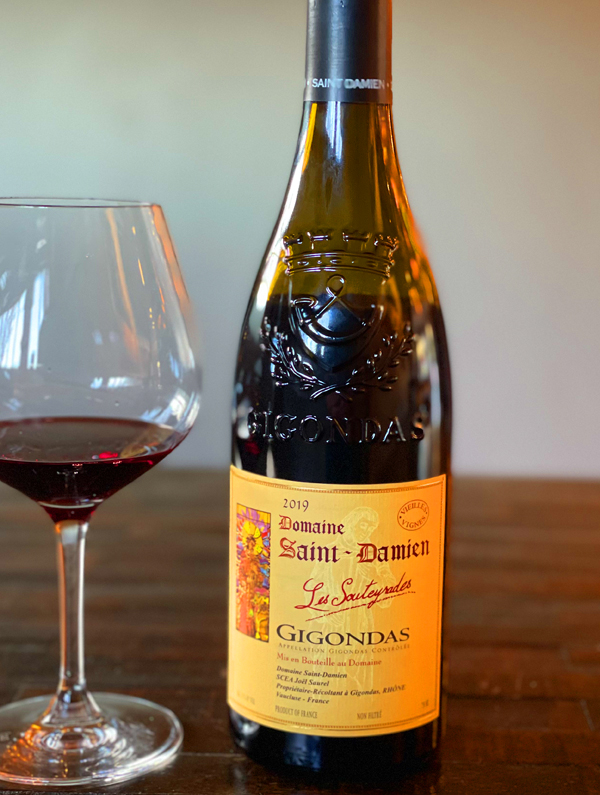
2019 Domaine Saint-Damien, Gigondas, Les Souteyrades, Vieilles Vignes, Rhone Valley, France.
The fabulous and sultry Grenache based 2019 Saint-Damien Les Souteyrades Gigondas has layers of black raspberry, boysenberry, plum and grenadine on the full bodied palate along with that anise, floral incense, baked cherry, chalky stones and peppery spices. This vintage is less gamy/earthy than the prior couple of years and there is a thrilling sense of energy and an exceptional sense of purity in this dark purple/garnet Rhone red, the good dose of Mourvedre does add a meaty and savory dimension to this outstanding version, making for wine that way over delivers for the price, competing with Chateauneufs that go for three times the cost of this Saint-Damien single Lieu-Dit bottling. This winery has become a must have to satisfy my personal Grenache and Rhone habit, along with Saint-Cosme’s legendary Gigondas. The aromatics and mouth feel are really seductive, and air only brings more excitement and complexity here with a heady mix of dark florals and grenadine going to the fore. The underpinning tannin is sweet, but there is some serious structure to this Les Souteyrades, this wine has tremendous potential for long term cellaring and is a savvy buy for bargain hunters. The winery is named after St. Damien, who was an early Christian saint considered the patron saint of doctors, and was an ancient chapel honoring him in the tiny hamlet of La Baumette, just outside the village of Gigondas, where Joel Saurel has his Saint-Damien cellars, hence the name his family used for the domaine. This is a killer bottle of wine, it thrills and completely pleases the senses and is a wine that lacks for nothing, glad I bought a few to enjoy now and into the future.
Joel Saurel’s Domaine Saint-Damien is a top estate in Gigondas offering amazing set old vine wines classical crafted by Joel’s son, Romain who now is becoming more and more involved in the winemaking at this famous winery. Saint-Damien has many old vine cuvées, though mainly known Gigondas, also does a lovely Cotes du Rhone, as well as a Gigondas Rosé that is in high demand. The Vieilles Vignes Gigondas lieu-dit “Les Souteyrades” sits on a small hill with the vineyard being a blend of 80% Grenache and 20% Mourvèdre (and the wine here is the same percentage) with the main plot consisting of old Grenache Noir vines, that were planted back in 1948 and 38 year old Mourvèdre vines that are set on an outcropping of pure grey clay soils with a scattering of stones. This cru site makes for deep fruit intensity and rich concentration, which this gorgeous 2019 shows with flamboyant hedonism in the glass. The Saint-Damien “Les Souteyrades” Gigondas is fermented traditionally with old school techniques with a long maceration, lasting for between 6 to 8 weeks on the skins, in concrete vats before moving to large oak foudres for about a year. This unfined and unfiltered and native yeast fermented cuvée sees all from organic grapes that are carefully hand picked and sorted to best show off the terroir here and while hefty and close to 15% natural alcohol, this Les Souteyrades doesn’t feel hot or flabby, in fact the balance is fantastic. This entertaining and rewarding Southern Rhone wine deserves a big robust meal to allow all its pleasures to shine through, and this vintage never puts a foot wrong, it is close to perfection in every way, I highly recommend these Saint-Damien 2019s, especially this one, along with their “La Louisiane” that has become their signature wine.
($38 Est.) 96 Points, grapelive
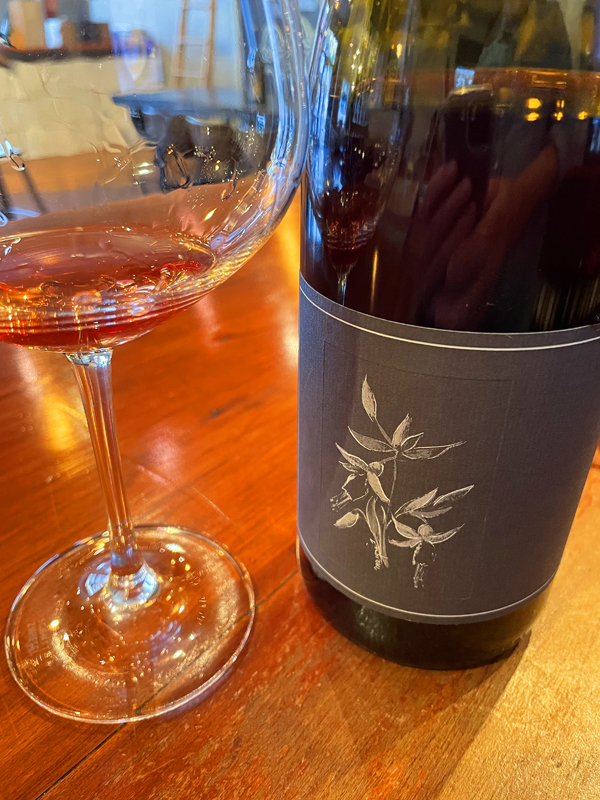
2019 Arnot-Roberts, Trousseau, North Coast, California.
Just when you thought this wine couldn’t get better, especially after the pretty 2018 version, the guys at Arnot-Roberts step it up again with their translucent and wonderfully pale North Coast Trousseau, it delivers tangy fresh details, a light and enchanting floral nose and layers of of minerally sour cherries, strawberry, wild plum and cranberry fruits accented by snappy herbs, cinnamon and red spices, wilted roses and orange peel. This lighter red loves a slight chill, which enhances the purity and true nature of this rare Jura varietal that these guys at Arnot-Roberts have excelled with and who have made it their own here in California. This version comes off three distinct sites, two on the Sonoma Coast’s marine sedimentary soils and one in Lake County on volcanic soils, all of which, as well as the natural whole cluster winemaking, adds to the complexity and personality of this tasty wine. The Trousseau grape remains a bit of a mystery in its origins and is thought to have a distant relationship to Petit Verdot, but has been in the remote and high elevation region of France’s Jura for longer than anywhere else that we currently know of, where it is the top red grape and famous in the wines of Tissot, Ganevat (Pein Sud), Labet and Jacques Puffeney to name a few of my favorites. Trousseau is also often blended with Gamay, Poulsard, another rare Jura (pale colored) varietal, and Pinot Noir as well, both in its native home in the Jura as well as here in California, with Jolie-Laide doing a stellar blended version of the Jura grapes. It is also worth mentioning that Trousseau is sometimes a component in Crémant de Jura sparkling wines, highlighting the grape’s flexibility and its importance. In California, largely with the success of Arnot-Roberts, you are seeing more quality Trousseau, like those of Whitcraft, Stolpman’s Combe, Sandlands and Pax, all worth chasing down.
The Arnot-Roberts label, founded in Healdsburg in 2001 by Duncan (Arnot) Meyers and Nathan Roberts, two Napa Valley boys, has, as I have said in prior reviews, helped elevate many unique varietals including Trousseau, like in this post modern classic, Gruner Veltliner, soured from Richard Alfaro’s estate vineyard in Corralitos (Santa Cruz Mountains) and Touriga Nacional, from the Luchsinger Vineyard in Lake County, which they make one of the state’s best Rosé wines out of, in California. The Arnot-Roberts North Coast Appellation Trousseau, as revealed by the winery, is sourced from the three distinct vineyards; the mentioned Luchsinger, Bohan Ranch and Bartolomei, all of which have distinct soils and climate influences in these sites that results in a wine that shows their singular personalities. Duncan and Nathan harvest and ferment the each vineyard separately with whole-cluster and native yeasts, without de-stemming the grapes you can taste the stemmy crunch and punchiness, that adds to the thrill here. After the different lots of Trousseau are through primary fermentation these are gentle pressed and racked to barrel, they then aged separately in a mix of neutral (old)French oak barrels and stainless steel. I’ve reviewed and followed this wine since the 2011 vintage, often tasting it with Duncan at trade tastings and this one is without question my favorites in their lineup, and I was told this ’19 was good so I had high expectations, which were easily met, this is delicious stuff again, one that I’m glad I stocked up on, along with their Chards, which have also made a real step up in 2018 and 2019 too, especially the Trout Gulch, sourced from Richard Alfaro in the south Santa Cruz Mountains! It is a good time to get on the Arnot-Roberts list as they are about to put out their new release offer, that includes the Touriga Nacional based Rosé, which I try not to miss.
($35 Est.) 93 Points, grapelive
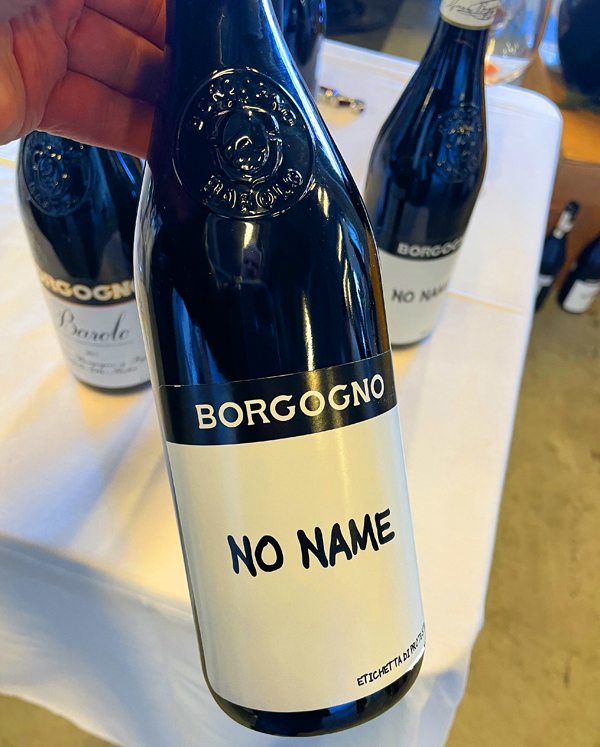
2018 Borgogno, No Name, Langhe Nebbiolo DOC, Piedmonte, Italy.
The impeccable and finely detailed 2018 Borgogno No Name Langhe Nebbiolo, which really is a de-classified Barolo that saw the same winemaking and treatment as the rest of the Barolo wines, with a rumor that this wine was from an identical batch of Nebbiolo that was no certified and came from a large cask that was divided into two lots, one got approved as Barolo and this one didn’t, but whatever the truth is, this is a delicious value with classic terroir character. The nose is a mix of dried roses and earth that leads to a bright and youthfully tannic medium to full bodied palate of brandied cherries, damson plums and red currant fruit, along with savory/meaty elements, black licorice, mint, cedar and orange rind. This wine is much more serious than the No Name would have you believe and it has potential to reward those that tuck a few bottles away, its structure and core of fruit density are compelling indicators of future rewards, while the price and overall grace allow for guiltless pleasures in the short term as well. This garnet/brick red hued wine has made me a fan, especially after getting to try it over the course of a few hours, it gains a sense of pedigree and poise with air, adding more dimension, aromatic excitement and elegance, it also whets your desire for Borgogno’s cru bottlings, in particular their gorgeous Cannubi Barolo! The No Name offers remarkable drinking at a fair price, giving a vinous and sensual Nebbiolo experience, with this 2018 proving very nice and will be an eager companion to robust and hearty meals, with dishes like quail, wild mushrooms and roasts being good pairings, as well as more simple things like pasta or risotto working well too.
The historic Borgogno & Figli label and winery has been restored to the highest level of respect and quality under the ownership of Andrea Farinetti, who has a string of intriguing wineries and projects throughout Italy and who is dedicated to native varietals and traditions within the regions. The No Name Langhe Nebbiolo comes from vineyards located in the Langhe area in the villages around Barolo set on the classic Marl limestone and clay soils with all the estates vines being certified organic and is crafted with the idea of being a more early drinking example of Nebbiolo, but with real Barolo presence in the glass. Borgogno, as mentioned in my prior reviews, is one of Piedmonte’s oldest and most revered Barolo properties, founded back in 1761, employs traditional winemaking, and the No Name Langhe Nebbiolo shares in this, getting the same fermentation and long maceration of about 2 weeks as the Barolos, The primary fermentation, with all de-stemmed grapes, is done in temperature controlled tanks, with what the winery says was a submerged cap maceration with a variable duration between 10 and 20 days, to allow the gentle extraction of structure and depth of flavors. After going dry the No Name juice gets the Barolo like treatment of being aged in large Slovenian oak botti for an extended period of about 24 months before bottling. Again as noted before, Borgogno has some incredible plots in some of Barolo’s most admired Crus including Liste, Fossati and the mentioned Cannubi, one of the world’s greatest vineyards, so for Nebbiolo, this is a must try winery. Tasted at the San Francisco stop of the 2022 Slow Wine tour, Borgogno, again impressed with their trio of Nebbiolo wines they were pouring, with their 2015, 2017 and 2018 all showing purity and class.
($45 Est.) 92 Points, grapelive
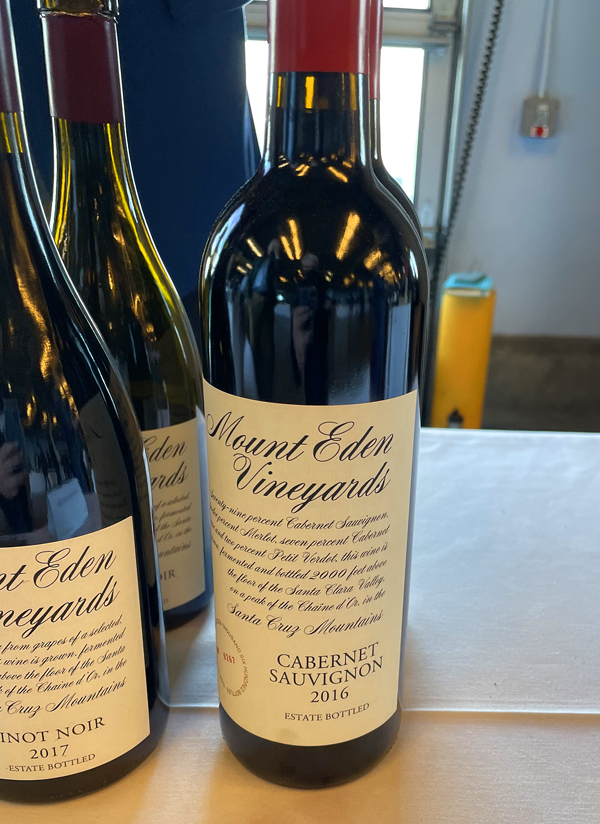
2016 Mount Eden Vineyards, Cabernet Sauvignon, Estate, Santa Cruz Mountains.
The 2016 Santa Cruz Mountains Estate Cabernet Sauvignon from Mount Eden Vineyards is a stunning bottle and has the stuffing to age decades, I was thrilled by what I found in these new releases from Jeffery Patterson, his son Reid and his team, especially the top estate offerings like this Cabernet with its inky dark color, full bodied density and exceptional length, this has to be one of my favorite vintages, even though I said that about the 2014. The 2016 no doubt has the edge on concentration, but the balance is lovely and the ripe tannins melt in your mouth with opulence, even though they are still youthfully firm, this is a California Cabernet for Bordeaux lovers, much the same way as neighbor Ridge Monte Bello is. This 2016 leads with rich currant, blackberry, plum and black cherry fruits, along with hints of pencil lead, anise, creme de cassis, smoky sandalwood and savory tobacco leaf and age notes. The Soils at Mountain Eden are very thin with a dominant base of Franciscan shales, which are found in these coastal range vineyards, which suits these vines and adds to the concentration of flavors. The climate is cool, with the Pacific Ocean near by, especially for Cabernet, and influenced by the vineyard’s altitude and its proximity to San Francisco bay as well. The vines are trellised in a modern fashion, which promotes even ripening, with the long growing season adding refined tannins and complexity, along with nice natural acidity. The Mount Eden Cabernet Sauvignon was fermented in small 1,000-gallon stainless steel tanks, with Patterson doing punch downs manually and macerated it, as he notes, for about ten days after fermentation completed, then was transferred into new Bordelaise chateau (French oak) barrels where aged twenty-two months in the cellar.
Mount Eden’s estate as started by Martin Ray and now run by the Patterson family sites on a rugged mountaintop in the Santa Cruz Mountains with 40 acres of low-yielding Chardonnay, Pinot Noir, Cabernet Sauvignon, plus tiny amounts of Merlot and Cabernet Franc vines that go into the Cabernet Sauvignon bottlings. Mount Eden Vineyards is one of the longest running family estates in California that is maybe most famously known for Pinot Noir and Chardonnay, but has always done a fantastic Cabernet Sauvignon. Interesting, separate from the relationship with Paul Masson, the heritage of Mount Eden Cabernet Sauvignon dates back to the 1890s, when the famed viticulturist Emmett Rixford of Woodside, California, obtained selected cuttings from Chateau Margaux in Bordeaux and it’s from Rixford’s famous La Questa Vineyard with these selections that were used to plant parcels at Mount Eden. This historic winery is perched up at 2000 feet, with an eastern exposure above Saratoga and overlooking the Silicon Valley in the Santa Cruz Mountain Appellation, just about 50 miles south of San Francisco. Mount Eden was founded in 1945 and was one of the original “boutique” California wineries by famed vintner Martin Ray, who as mentioned, focused on small lots of Pinot Noir, Chardonnay and Cabernet Sauvignon. Since 1981 Jeffrey Patterson, the current owner along with his wife Ellie, has guided the winemaking and grape growing at Mount Eden, taking it to the very top in terms of quality and distinction, making it an iconic California winery. Mount Eden is still turning out some of the best wines in the state, as this powerful, complex and acacia flower scented 2016 Estate Cabernet proves. Tasting at the 2022 Slow Wine tasting in San Francisco, normally an Italian themed affair, but the American wineries that were in attendance really put on a phenomenal display of class, with Mount Eden being one of the best on the day.
($90 Est.) 97 Points, grapelive
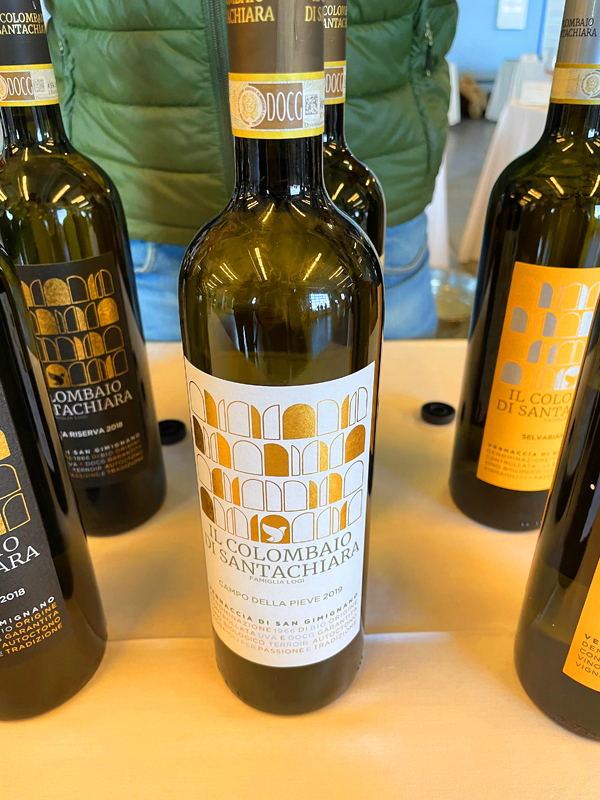
2019 Il Colombaio di Santachiara, Vernaccia di San Gimignano DOCG “Campo della Pieve” Tuscan Wine Wine, Italy.
The small family run winery, Il Colombaio di Santa Chiara, formerly a historic Parish known as San Donato, with buildings, chapel and farmland, has being become one of San Gimignano’s best producers, focusing on the Vernaccia grape and making wine of precision and elegance far removed from the generic light versions, which were far too common in this region until recently. The property, owned Mario Logi, and run by his three sons Giampiero, Stefano and Alessio, who is the winemaker, is now called Locanda dei Logi, and is beautiful inn and winery just a short distance from the famous hilltop town with those ancient towers, San Gimignano, and just a short drive away from Siena. The Il Colombaio di Santa Chiara’s three fabulous bottlings of DOCG Vernaccia di San Gimignano are each distinct and delight the palate, with a stainless, wood aged and this “Campo della Pieve” being cement raised are all stunning whites with depth and grace, but I chose this one for the purity, energy and complexity, though it was a tougher choice than I could have imagined. The “Campo della Pieve” is wonderfully mineral driven with delicate aromas and a light herbal/spicy element and a fine salty crispness, it shows white blossoms, wet stones, lemon/lime, tart peach and a hint almond oil. There is a brisk dryness here and it is mouth watering, but there is a lovely vinous quality that puts everything into a harmonious state of balance, this is incredible stuff. This golden straw yellow Vernaccia di San Gimignano is brilliant with food and especially fish dishes, though flexible enough to go with a lot of different things, including as the winery suggests, soft and hard cheeses or wild mushroom risotto.
Il Colombaio di Santa Chiara was one of my best finds at the 2022 San Francisco Slow Wine tasting and I owe Santi, of Vinity Wine Company (importer), a big thank you for finding me and taking me over to these wines, which I could have easily overlooked and missed out on an incredible set of white wines. The estate is holistically farmed and Mario and his sons are constantly among their vines, and like most producers, they believe a great wine is the result of great vines in a great terroir. The vineyard’s health requires hard work and lots of attention, and the Logi’s put the time in here, it shows in the wines. Mario, who has worked the land here since his teens in the 1950s, and his sons wanted to create a healthy biosphere on the estate for the vines and surrounding plants and it is for that the reason they worked hard to obtain full organic certification. All this has paid off handsomely, and with the help of oenologist, Nicola Berti, who has mentored Alessio in the cellar and who has instigated shorter maceration(s), resulting in wines that, the winery says, are more balanced, fresher and elegant, while still having sensational palate impact and mouth feel, as I found here in this lovely Campo della Pieve. This single vineyard, 100% Vernaccia di Gimignano, was sourced from vines set on chalky soils composed of old Pliocene sands and clays, it saw a soft pressing of the grapes, with indigenous yeast fermentation all cool and temperature controlled to preserve those pretty aromatics. The Campo della Pieve’s maturation is done on the fine lees and takes place in cement vats, seeing, the winery says, periodic bâtonnage (stirring) for close to 20 months, which adds the texture and length, while maintaining vitality and lift. This wine opens up and keeps getting better and better, giving me confidence that this will age well too, I highly recommend searching for these Il Colombaio di Santa Chiara wines.
($28 Est.) 93 Points, grapelive
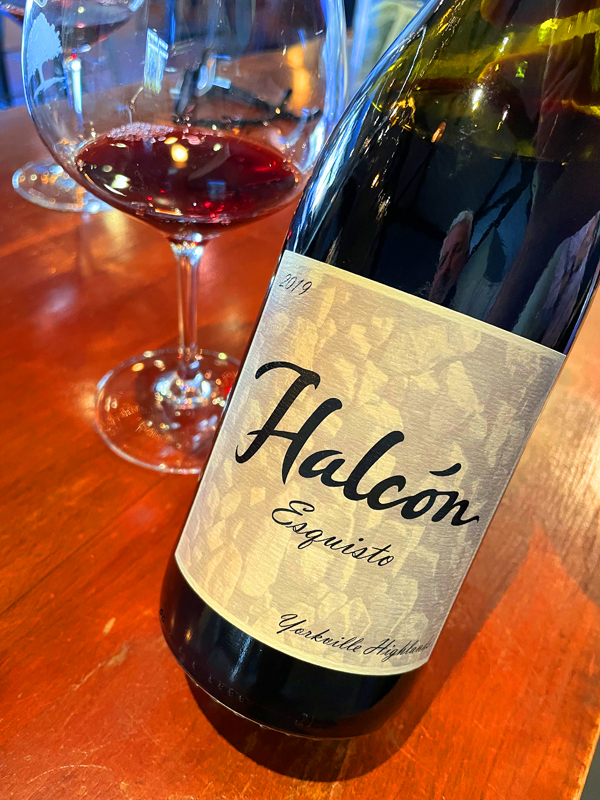
2019 Halcon Vineyards, Esquisto, Grenache/Syrah, Halcon Estate, Yorkville Highlands, Mendocino County.
While mainly known for their fantastic Domaine Jamet like estate Syrah bottling(s), Halcon Vineyards has done a stellar job in 2019 with their Esquisto Grenache based red, which is turning out to be a gorgeous effort with loads of concentration, opulent fruit and savory crunchiness. This vintage was close to 80% Grenache and 20% Syrah, not unlike some of the best Gigondas and or Vacqueyras wine, but with lots of whole cluster and stemmy bite and raw tannins, making for a deep, wildly aromatic and complex Rhone styled wine. Winegrowers Paul and Jackie Gordon, who have just announced the sale of this vineyard and estate and sadly will not continue the Halcon Vineyards label, which had become a real favorite of mine over the last 7 or 8 years, bit least they are going out with a bang and a fabulous set of wines, including this full bodied Esquisto with its sweet Grenache core and earthy/floral Syrah meatiness. The 2019 is showing boysenberry, damson plum, pomegranate, strawberry and black Italian cherry fruits that are accented by spicy peppercorns, graphite, pronounced bay leaf, anise, bacon and a touch of sandalwood all framed by a firm structure and plenty of umami that balances the juicy Grenache. The Esquisto opens slowly and takes on the darker note with tangy blueberry and violets, both from the percentage of Syrah adding an extra dimension to this fine effort, this wine is best decanted and served with robust cuisine. Those, like me, who are fans of Halcon, fear not the vineyard is in good hands, with Pax Mahle, one of California’s Syrah masters, and the future looks bright, I hear there are some exciting things coming in the next vintage or so, so stay tuned.
The Halcon Vineyard, set on what is known to be Yorkville Complex soils, for those that geek out on geology, a rare soil type based on fractured shale, mica-schist, some compressed sandstone, and quartz-rich rock, and is located in the Mendocino County’s highest elevation appellation of the Yorkville Highlands. Once thought to be better for Pinot Noir, Halcon Vineyards overlooks the Anderson Valley and the Pacific to the west sitting up at 2500ft and it is one of the highest elevation vineyard sites in California, which has certainly contributed to the iconic nature of these wines. The northerly location, north of Sonoma, the cool Pacific Ocean influences and altitude combine to produce a climate remarkably similar to that of the Northern Rhône region of France and the wines have that kind of personality and similar character. The vines here are mostly Syrah, with heritage clone selections planted here that are originally from both of the most classic areas for this grape, Hermitage and Côte-Rôtie, with some of the best genetic material available, rumored to be legendary Chave Hermitage clones. On a warmer and more protected south facing slope, there is a small planting of Grenache and Mourvedre that are used to make this blended Southern Rhone influenced wine, though this vintage Esquisto saw no Mourvedre, which can be fickle here. Note, the 2018 edition saw almost 20% Mourvedre and seemed much tightly wound. The impressive swan song of Halcon Esquisto is one of the most exciting and unique Grenache based wines of the vintage, and it is well worth chasing down any bottles left out there, they are delicious now, but should age exceptionally well for the next 5 to 10 years. Again, it makes me sad that the Halcon Vineyards label is disappearing, it has been the source of my drinking pleasure and I wish the Gordon’s well on their next adventure in Life, I have really appreciated their efforts and will enjoy each of my last bottles.
($38 Est.) 94 Points, grapelive
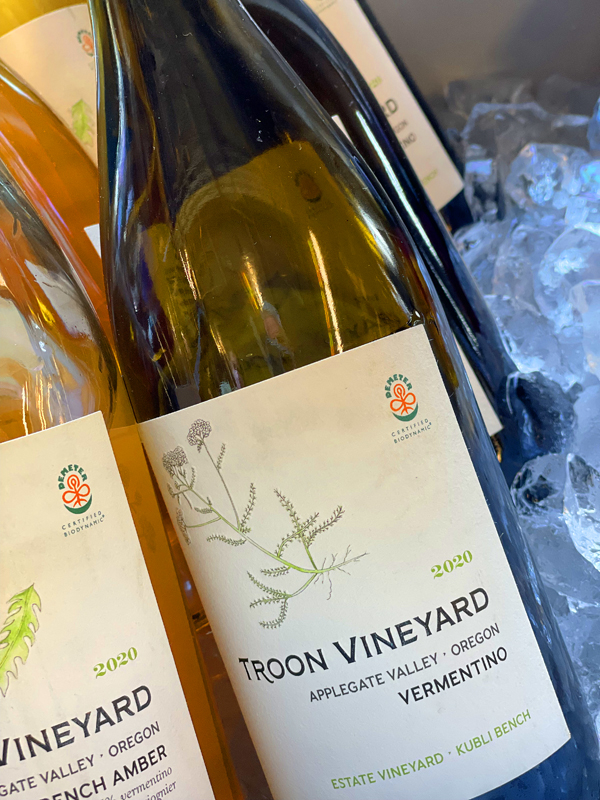
2020 Troon Vineyard, Vermentino, Kubli Bench, Estate Vineyard, Applegate Valley AVA, Oregon.
Much credit and attention needs to be directed at Craig Camp and his team at Troon Vineyard for the quality of their wine and equally for their work in organic and holistic wine growing, turning this little known winery in Grant’s Pass, in Southern Oregon, into a new world leader in biodiversity. I am a huge fan of their wines, especially this bright and crisp Vermentino and their Rhone style wines and I was thrilled with the new releases I recently tasted at the Slow Wine 2022 Tour in San Francisco. The Troon Vineyard winery is a Demeter Biodynamic Certified and Regenerative Organic Certified farm in Oregon’s Applegate Valley, making small batch natural style wines. The Vermentino shows racy acidity and vitality and has energetic layers of lemon/lime, peach and honeydew melon fruits, along with a hint of spice, wet stones, verbena, orange blossom and a fine salty note that excites the saliva glands, making for a vividly fresh and almost tangy white wine that will go beautifully with briny seafoods as well as lighter cuisine. Vermentino, also known as Rollé, is a Mediterranean varietal mainly, found mostly along the coasts of France and Italy, along with the islands of Sardinia and Corsica. It is also one of the classic Chateauneuf du Pape grapes and does well in a range of climates, from Piedmonte to Paso Robles. In California, Vermentino has really taken off with wineries like Ryme Cellars, Tablas Creek, who brought over Vermentino cuttings over in the late1990s, Chesbro in Monterey County’s Arroyo Seco, Unti Vineyards and Filomena Wine Co, all doing exceptional versions in a variety of styles. The delicious Troon Vermentino is a wine that delivers plenty of tang and zest, but with it being aged on the lees for five months also gives it a pleasing vinous quality, which adds to the enjoyment in this 2020 edition.
Troon, owned by visionaries Denise and Bryan White, is located on the Kubli Bench, high above the Applegate River in the Siskiyou Mountains, as mention, in the wilds of Southern Oregon. It is a biodiverse farm of almost 100 acres, with a mission to make special wines from what they believe is a special vineyard, a unique and largely undiscovered terroir, with what they hope has exceptional potential, and they wines I’ve tried so far certain are good indicators that Troon is on to something here. The life on the farm, here at Troon, includes cider apples, a vegetable garden, re-wilded honeybees, sheep, chickens, wildlife, dogs, humans and, of course, grapevines, all of which are treat with the same care and respect, they all pieces of the circle of life, with each’s energy ending its way into the bottle. The goal, as expressed by the winery, is to express our vineyards rather than winemaking techniques in our wines. All Troon Vineyard wines are fermented only with native yeasts and no commercial yeasts, acids, sugar, enzymes or additives are added to any of the wines, in a traditional fashion adopted by passionate natural producers. Troon’s white wines, like this Vermentino, are whole-cluster pressed then barrel fermented in mature French Oak barrels, and for their “Orange Wines” they, like in parts of Italy and the Public of Georgia, are now using clay amphorae to allow extended skin contact after fermentation. Troon also makes a range of fun Pétillant Natural sparkling wines, naturally fermented in bottle, including a Tannat based bubbly, which I hope to get soon. For their red wines, Troon focuses on lots of whole-cluster and whole berry fermentation, which gives these wines some nice savory elements, they use only mature French Oak barrels for aging so, as they put it, that they can capture every nuance of our unique Applegate Valley fruit, and lets each wine express itself in Troon’s wines. I was lucky enough to taste through some of Troon’s latest and upcoming bottlings, including this Vermentino, with winemaker Nate Wall, who is full of insight and obviously very talented, these new Troon wines are exciting and serious, I highly recommend checking them out.
($30 Est.) 93 Points, grapelive
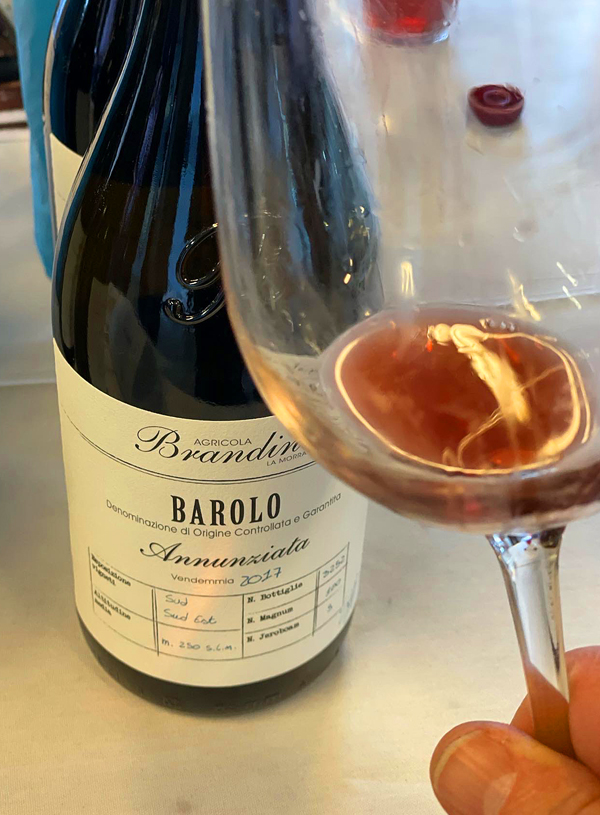
2017 Agricole Brandini la Morra, Barolo DOCG, Annunziata, Piedmonte, Italy.
The Agricola Brandini La Morra Estate, owned by Piero Bagnasco and run by his daughters, Giovanna and Serena, is a new producer for me and in fact they are a pretty recent venture, starting back in 2007, they have a tiny collection of prime Barolo vines and I found the wines to be beautifully made and very exciting. It was nice to meet Giovanna at the Slow Wine tasting event in San Francisco and learn about her wines, especially her cru Annunziata Barolo, which made my top ten Nebbiolo(s) list of the Slow Wine tour (SF) and of which I really admired for it’s elegance and exceptional length. Agricola Brandini La Morra uses the phrase “Organic Human Barolo” to describe its wines, as all of their vineyards are certified organic, hand tended and their wines are traditionally hand crafted, with their Barolo being aged in large, used oak casks with minimal intervention and only minimal amounts of added sulfur at bottling. The grapes come from high elevation parcels, 450 meters up in some sites, which is amongst the highest-altitude vines in the Barolo zone all set on the classic clay and limestone marl soils, which all contribute to the wines quality and character. The color of the wines, in particular this Annunziata, were pure Nebbiolo with slightly orangey edges with a dark ruby core at this point and the aromas were inviting with floral and herbal notes, very enchanting indeed.
The tiny production Annunziata cru Barolo by Brandini, as mentioned new winery for me, is a elegant, but firmly structured traditional Barolo with classic Nebbiolo savory intensity and power that absolutely seductive on the medium to full bodied palate with purity of flavors a raw transparency, this is an enthusiasts wine that will drink nicely for many years to come. I was very impressed by the two special bottlings I tried by Brandini at the Slow Wine tasting event in San Francisco, with both this Annunziata and their R56 Barolo being outstanding efforts, well worth searching out, though very little has so far found its way to the states. Made with all sustainable vines and organic grapes, the warm vintage, 2017 Barolo Annunziata was crafted using old school methods, it saw a cool maceration and native yeast fermentation in tank and then was raised exclusively in old large cask. When Giovanna showed me the wine I found a pretty aromatics right away and while the wine was obviously young, it opened up to reveal alluring layers of black cherry, spiced plum, earthy currant and blood orange fruits as well as tarry licorice, cedar, minty herb and dusty tannins that subtly remind you that this is (a) Barolo. I look forward to following this label in the coming years and I can see this Annunziata evolving nicely over the next decade, it certainly is wine that deserves some attention, and it is inspirational to see a new project hit the ground running and cause such a stir, bravo to the Brandini team.
($111 Est.) 94 Points, grapelive
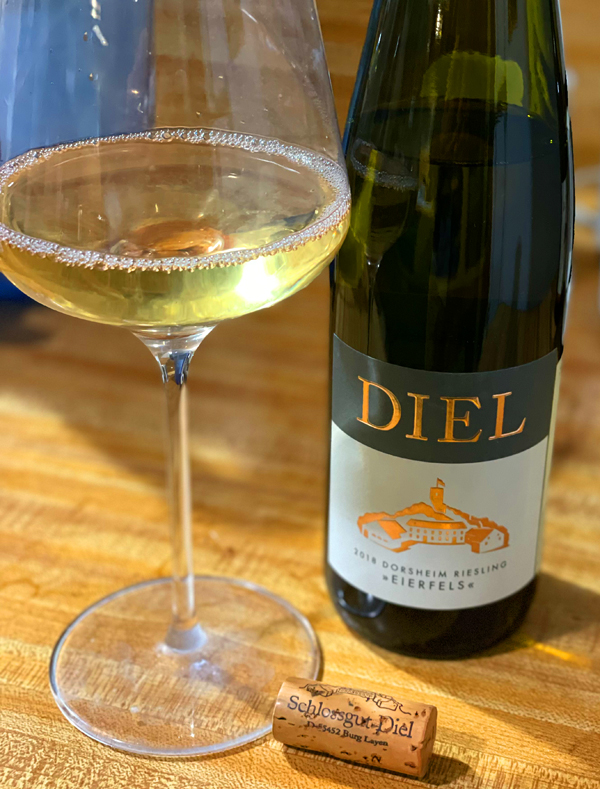
2018 Schlossgut Diel, Riesling Trocken, Eierfels Dorsheim, Nahe, Germany.
One of my favorite dry bottlings at Schloss Diel is Caroline Diel’s Dorsheim Riesling Eierfels which is a special cuvée that Diel puts together and is a remarkable value, it offers layered complexity, striking mineral intensity and Caroline’s signature elegance and this 2018 vintage is a gorgeous yellow fruited and leesy version. Brilliantly golden in the glass, this 2018 Diel Dorsheim Riesling Eierfels is beautiful aromatic and has crystalline detailing with apple, peach, kiwi, tangerine and quince leading the way on the steely medium bodied palate along with saline notes, wet flinty stone, chamomile/mint tea and verbena notes. As the wine opens it gains dimension and presence, it casually reminds you of the pedigree it has and it is slyly confident in the way that Diel’s top GGs do, there’s a lot to admire here. The aromas lift from the glass with rosewater and apricot flesh delicately present and lingering, making this wine incredibly pleasing, with all the flavors given a lift by the natural acidity and crisp mouth watering dry extract. While taut and brisk, these dry Rieslings by Diel are generous and impeccable wines of which I try to never be without and I highly recommend them, especially this wine, it is a savvy buy for Riesling lovers that want guilt free quality and terroir distinction. The Nahe is one off Germany’s smallest regions, with a great diversity of soils fro slate to volcanic and gravels plus a warm climate and steep slopes, especially around Schlossgut Diel, making for a dramatic and picturesque setting for grapevines and a quality area for all types of wines, as witnessed by the stellar producers, like Schlossgut Diel, as well as Schafer Frohlich, Kruger-Rumpf, Hexemer and the absolutely awesome Weingut Donnhoff.
The Schlossgut Diel, founded by the Diel family in 1802, is one of the great wineries in the world, not just Germany or Europe, and is widely known for the amazing dry Rieslings bottlings, especially their set of Grand Cru or Grosses Gewachs from the legendary Pittermannchen, Burgberg and the majestic Goldloch crus. Caroline Diel’s wines are some of the finest white wines you’ll ever try no question with the Goldloch Grosses Gewachs being an epic dry Riesling and one highly coveted by collectors. Not only does Caroline have a gift with Riesling, she has also mastered Pinot Noir with her Cuvee C, her signature bottling being easily an equal to some of the Cote d’Or’s most fabled wines and she has quietly crafted some amazing vintage Sekt(s) sparkling wines that see up to eight years of lees aging, these seriously rival Krug Champagne, and or among the greatest sparkling wines I’ve ever tasted. The Eierfels Riesling is a special declassified selection from the GG vineyards of Burgberg and Goldloch with the fruit, as noted by the winery, is either whole-cluster pressed or, if vintage necessitates, de-stemmed by carefully by hand, with Diel adding it is very important to not break the skins and allow oxidation and or bitter extracts during the juicing. For the Rieslings, Caroline employs her primary fermentation(s) spontaneously in large German oak casks, using stuckfass and doppelstuck mostly, though some see cement tanks. Caroline Diel, who took over the estate in 2012, after joining the cellar team in 2006 also has enjoyed winemaking stints at some famous places including Domaine de la Romanee-Conti in Burgundy and Château Pichon-Lalande in Bordeaux, as well as prestigious German vineyards such as Robert Weil, Toni Jost and Dr. Deinhard/Von Winning. Her dad Armin, had put this famous winery on the world stage in the 1990s with his dry style wines and Caroline talent(s) has since taken Schlossgut Diel to even greater heights, from her little Kabinett(s) to her GGs, these wines are all fantastic, none should be missed.
($35 Est.) 93 Points, grapelive
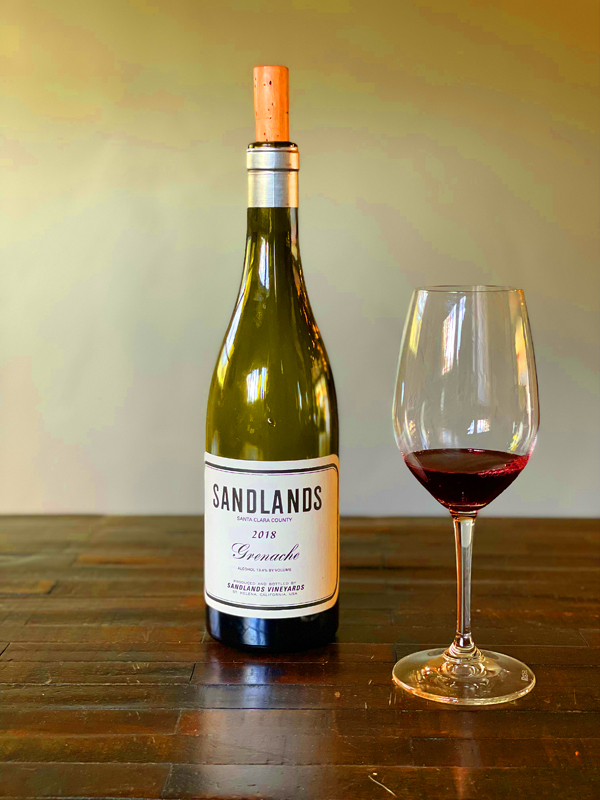
2018 Sandlands, Grenache, Besson Vineyard, Santa Clara County.
Tegan Passalacqua’s Sandlands beautifully detailed and aromatic Old Vine Grenache comes from the historic Besson Vineyard, near the Hecker Pass and the town of Gilroy, which is now way past one hundred years old and produces fantastically pure and concentrated wines, as this one shows, but also in a vintage like 2018 it gives deep flavors and low natural alcohol, making it a unique expression of this Rhone varietal, most famous in Chateauneuf du Pape, but is also the grape of Sardinian Cannonau and the fine high elevation Garnacha of Spain’s Sierra de Gredos. The 2018 Sandlands Grenache is sumptuous from the start and feels heavenly vinous on the palate while displaying a cool and crisply detailed personality that gets more and more expressive as it opens up on the medium to full bodied palate with black raspberry, candied cherry, plum and pomegranate fruits along with tangy herbs, earthy pine, subtle peppery spices, cut flowers, licorice and soft wood notes. Only a few barrels were made of this nicely structured and smooth Grenache that comes in at just 13.4% natural alcohol and as with all of Tegan’s wines it was indigenous yeast fermented with some whole bunches and aged in well used barrels, mostly if not entirely old French oak. Passalacqua, who is the head winemaker and vineyard manager for Turley Wine Cellars, makes some of the most authentic and soulful expressions of non mainstream California wines out there, and they are all exceptional values. I highly recommend joining this Sandlands mailing list, none of his offerings are to be missed, especially the Cinsault, Carignane, Trousseau, Mission, Mataro (Mourvedre) and this Grenache, as well as the Soberanes Syrah and his signature Zinfandel from his family’s Kirschenmann Vineyard in Lodi.
The Besson Vineyard is owned and farmed by third generation farmer George Besson Jr, was first planted to the Mission grape in the 1800s, then saw its Grenache planted on its own roots back in around 1910, is finally getting the acclaim and attention it deserves, it has been the source of some outstanding wines, it transmits transparent flavors and is a unique terroir. Most of this vineyard, which is organic, is set on gravelly soils with clay and loam and is a stones throw from the border with the Santa Cruz Mountains AVA and sees a nice cooling influence from the Pacific and gets some marine layer fog at night early mornings. In recent times it has had lovingly maintained vines with a focus on quality fruit and natural methods has been sustainably dry farmed ever since it was originally planted. This site, as I have noted in prior reviews of this and other wines from this vineyard, first came to the wine world’s attention when California icon Randall Grahm used these grapes in his Clos de Gilroy Grenache. Now this vineyard is well represented by Ian Brand, with his signature I. Brand & Family version being a huge hit and more recently Besson is being used by Angela Osborne of Tribute to Grace, the Kiwi who is one of California’s top Grenache producers, as well as one of Brand’s friends John Locke of Birichino, another label that is putting out a beautiful version of this Besson Vineyard. This dark magenta/ruby colored Sandlands Grenache is right up there with the best wines sourced from this site and this 2018 is drinking outstandingly well right now and makes me wish I had a bunch more of this limited bottling. I typically try to give these Sandlands wines a bit of cellar time before opening them, but I just had a feeling this 2018 was going to be a thrilling wine on the night and I was right, it is really hitting its stride and should continue to do so for another 5 to 7 years easy.
($28 Est.) 93 Points, grapelive
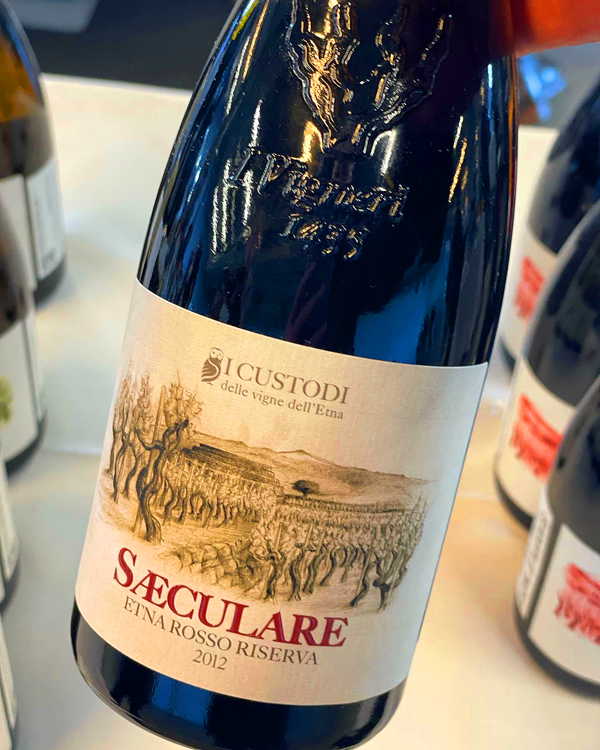
2012 I Vigneri I Custodi delle Vigne dell’ Etna, Sæculare, Etna Rosso DOC Riserva, Sicily, Italy.
The Salvo Foti made I Vigneri I Custodi delle Vigne dell’ Etna Sæculare Riserva, which I was lucky enough to try at the San Francisco Slow Wine Tasting last month, is a Nerello Mascalese based red from old vine sites on Mount Etna, Sicily’s iconic active Volcano and one of Italy’s most prized growing areas. This wine is fantastic and pure Foti excellence with everything you’d expect from this place, it is very Nuits St.-George is scale and presence in the glass, but with exceptional varietal character and intensity with brandied cherries, dried flowers, iron mineral tones and red spices leading the way on the gorgeous medium bodied palate that adds plum, candied orange peel, anise, tobacco leaf, crushed rock, sanguine and lavender. Even at almost 10 years old this wine is tightly focused and taut with natural acidity and firm old vine dusty tannins, but that said the flavors are evolving nicely and there’s an amazing depth here that is completely seductive, it is a wine that also deserves a meal built around it and local inspired dishes would be awesome with this incredible Etna Rosso. I Custodi is run by Mario Paoluzi and relies on I Vigneri, led by Salvo Foti, and his team of Etnean winegrowers, plus Ciccio the mule to tend the vines and make the wines in the ancient way of Etna, as it has always been on Mt. Etna for centuries, without synthetic chemicals, as Paoluzi puts it, in respect of the people, the classic stone terraces, the landscape and the nature.
This absolutely stunning and structured Sæculare Etna Rosso Riserva is beauty and a terroir driven wine made from mainly Nerello Mascalese (80%), Nerello Cappuccio and some Alicante, which in this case is probably Grenache and not Alicante Bouschet, grown on the lava based soils of the volcano and using parcels of top vineyards on the cooler north face of Etna. The vneyards are up at 2,000 feet with sandy and mineral soils, they include the Contrada Feudo di Mezzo, Castiglione di Sicilia and Versante Nord dell’Etna, with some vines here close to 250 years old! For this special Etna Riserva, the grapes were all hand harvested with extreme care and methodically sorted and then brought to the winery in shallow crates, where they are crushed after de-stemming, but about 20% were whole clusters with partial stems included with fermentation and maceration going, as the winery notes, for about 12 days in steel vats. After which the wine is racked and the malolactic fermentation and aging is done in 500 Liter tonneaux and the elevage was close to 24 months. The 2012 Sæculare was then bottle aged in the cellar for another two years before release to allow the wine to mature and develop, which it has with remarkable poise and palate impact. Foti, the godfather of Etna wines has made another soulful masterpiece here with this I Custodi Sæculare Riserva, and I recommend getting some if you can find, it will drink fabulous for another decade, and don’t overlook the white here at I Custodi, it also is a brilliant offering that Carricante based gem.
($55 to 75 Est.) 96 Points, grapelive
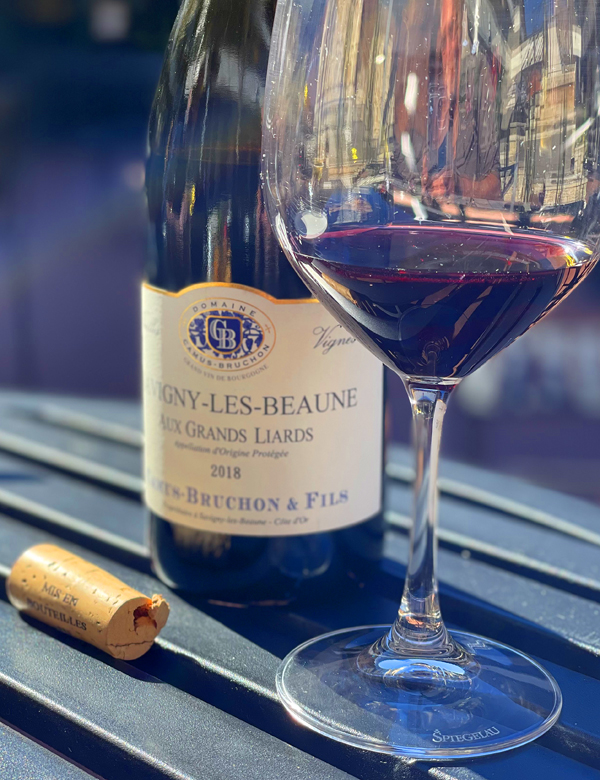
2018 Domaine Camus-Bruchon, Savigny-Les-Beaune “Aux Grands Liards” Red Burgundy, France.
Guillaume Camus at Domain Camus-Bruchon is making some incredible wines right, especially this 2018 Aux Grand Liards from this old vine Lieu-Dit in Savigny-Les-Beaune, that is quite stunning and pure with flavors that remind you of Pommard and Beaune area. This Savigny-Les-Beaune not not overt or flashy, but it’s hard to image a more quality Burgundy for the price with exceptional clarity and detail here highlighting the Pinot fruit, subtle floral perfume, mineral notes and seductive earthiness that draws you in, but never takes center stage. The Liards is a dark ruby color and wonderfully silky in texture with seamless layers of black cherry, currant, plum and red berry fruits and light accents of fresh cut roses, fine chalk and with the faintest whiffs of smoke, tea spice and baking spices on the round medium bodied palate. Guillaume’s vines are all mature averaging at least 35 years and in this case very old with 95 years old vines here in Aux Grands Liards. With these Camus-Bruchon wines there is a long lineage of continuous quality and they reflect the classic clay and limestone soils, for ages these Burgundies have fine examples of wines grown in the vineyard, and as Guillaume says, he firmly believes that one can only make wine as good as the grapes that you grow. So it is clear he spends much more time with his vines that he does in the cellar, as it should be, especially when you have the parcels at your disposal like he does. The Camus-Bruchon Savigny-Lès-Beaune 1er Crus are stunning values and this Aux Grand Liards is one of many in his collection to stock up on, this Lieu-Dit many not be Premier Cru, but this Aux Grands Liards Vieilles Vignes just might be the best Pinot for the price in all of Burgundy. I can this bottle a serious test, it was drunk with two spicy dishes and in the warm sunshine, but it came through with flying colors, handling everything with poise and grace, letting the food shine and still showing an impressive depth of form, satiny textural pleasure, as well as providing a natural freshness and cool fruit, only bringing out the best in the steamed mussels in broth with Fresno (hot) peppers and pesto like basil, as well being a fine companion to raw tuna crudo with shaved fennel and raw ginger.
Guillaume Camus, who has now taken the helm from his dad Lucien, is one of the rising stars in the Côte de Beaune, and is making outstanding and elegant wines from vineyard holdings in in the Cote de Beaune, with many parcels in Premier Cru sites, especially in the Savigny-Les-Beaune area. Like his father, Guillaume, of Domaine Camus-Bruchon, has a light touch and very much a winemaker that makes his wines in the vineyard, rather than in the cellar, everything he does is to showcase each vineyard site and produce transparent wines. He uses approximately 15% new oak in any given year, including in his top Premier Cru bottlings like this one, preferring to follow the Domaine’s tradition of crafting raw, balanced and graceful Pinots. The Camus-Bruchon wines see an extended maceration to fully extract the terroir and structure with about 18 days in total for the period of fermentation. The wines are all done with indigenous yeasts in old school concrete vats before being racked of to the French oak for over a year and then they are bottled unfined and unfiltered to capture every nuance and the full sense of place. The Camus-Bruchon Burgundies, which I have been following and buying for many years have been superb dating back many vintages and remain savvy buys for the Burgundy enthusiast, they offer great terroir driven flavors and character at an insanely good price and they age fantastically well as I have found at trade tastings, when I have experienced 20 to 30 old bottles that showed almost no signs of their age. I took a uncharacteristic gap in reviewing these wines, which isa shame, as they taste even better than I remember, with the 2008, 2009, 2010 and 2011 being excellent, as I noted, but this 2018 is looking like a step up. All the vineyard sites farmed by the Camus family are dome using sustainable methods and with great respect for the lands and to promote healthy soils, these wines really showcase each site’s distinct micro climates and are really respectful of history of this region. As with most all of the Camus-Brochon wines, you can enjoy this 2018 Savigny-les-Beaune Aux Grand Liards now, particularly with robust cuisine, though personal experience has proven that these wines can age incredibly well, so you can put some bottles away and be gloriously rewarded with patience, as I have no doubt this wine will be excellent in 10 to 15 years too.
($40 Est.) 93 Points, grapelive
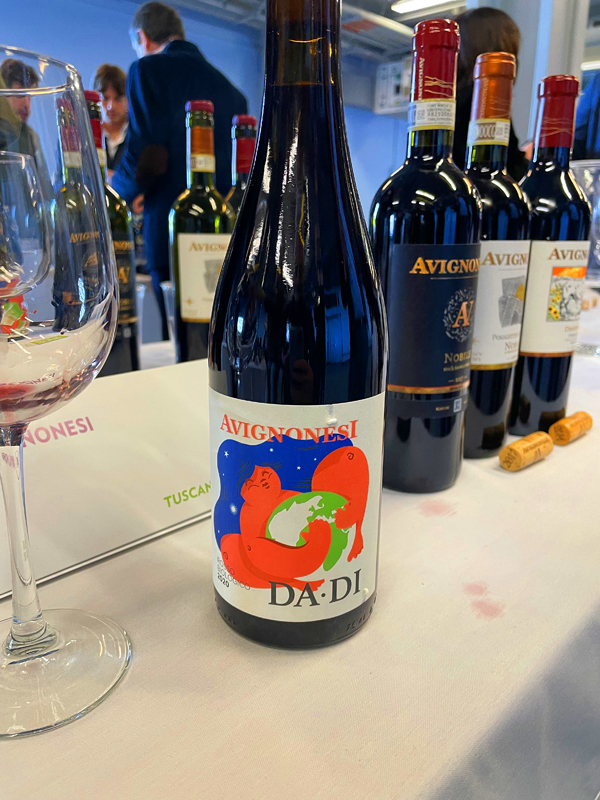
2020 Avignonesi, Da – Di, IGT Toscano Rosso Biologico, Tuscany, Italy.
This easy delicious, uniquely made Da – Di Rosso by Avignonesi, the famous producer of classic Vino Nobile di Montepulciano, is crafted from all organic Prugnolo Gentile (Sangiovese) that saw an all whole berry, partial whole cluster and carbonic fermentation with natural yeast and no sulfites added, making for a lighter and juicier style red with fresh red fruit layers, bright spices and a light to medium body. This 2020 Da – Di Rosso also was aged in terra-cotta amphora and saw no wood, all the winemaking methods used here is why this Avignonesi is not labeled under the DOC or DOCG rules for the area’s Montepulciano designation, it certainly doesn’t taste like those wines either, but it is very fun stuff. The Da – Di is vibrantly presented with tart cherry, strawberry and plum fruits leading the way along with crushed stones, a faint earthy element, a herbal crunch from the stems, anise and delicate florals, this is special project by Avignonesi, which I hope they continue and was a tiny limited bottling for now, it should be enjoyed with a slight chill, like a Cru Beaujolais. The Montepulciano region has soils are mainly made of marine sediments and clay with some sandy areas that provide the perfect conditions, along with the warm days, for Sangiovese to thrive.
It was great to catch with Avignonesi’s lineup of wines at the San Francisco Slow Wine tasting, these Montepulciano wines are beautifully made and very authentic terroir bottlings, with their 2017 Nobile being the star of the table, but I just couldn’t get enough of this rarity after it was pointed out to me by a friend, I’m glad I didn’t overlook this Da – Di, which is one of only a handful of Amphora raised Tuscan reds, joining Montesecondo’s Tin bottling from near Rada in Chianti Classico. Avignonesi has a collection of about 444 acres of vineyards in Montepulciano and Cortona regions, all of which fully certified organic and biodynamic in the southern part of Tuscany. For this particular wine, Avignonesi has put aside steel and oak in favor of Tuscan clay and the winery says this wine labeled with the Chinese phrase for “earth and soil”, hence the name Da-Di, adding it was chosen to underline the process and sense of place. All of the amphora was produced locally, with a total of eleven being used in this vintage, where the wine was raised, the maceration on the skins lasted 40-45 days with manual punching downs and the aging lasted about 90 days in total. While amphora is widely used in Italy again, this ancient vessel is seeing quite a renaissance and their use is getting more attention, with this Da – Di Rosso, the third edition to be released, having a pure expression the Sangiovese grape, it’s a fun offering that I highly recommend.
($22 Est.) 91 Points, grapelive
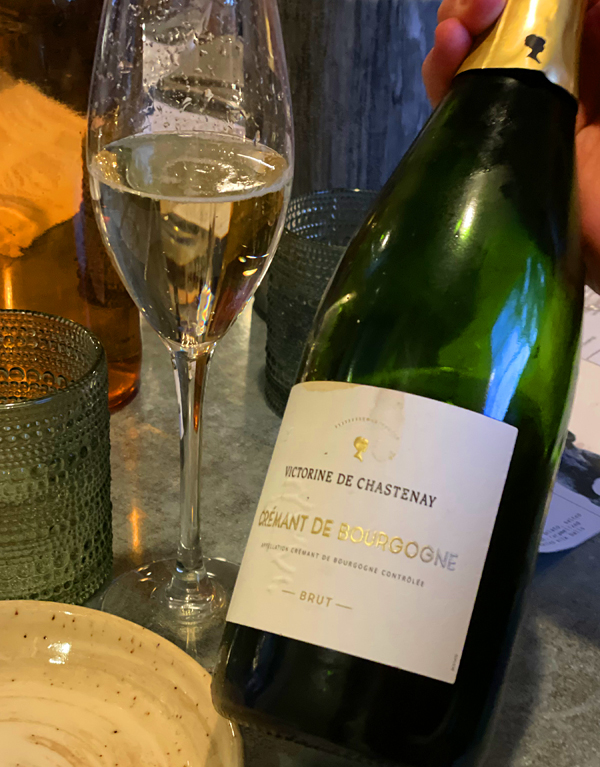
N.V. Victorine de Chastenay, Brut Crémant de Bourgogne, Sparkling Wine, Burgundy, France.
It is so nice that after more than 25 years in the wine business that I can still be totally and happily surprised by a new discovery, and this brilliant Victorine de Chastenay Brut sparkler absolutely thrilled me and it takes this category to a new level for me, this Crémant de Bourgogne Brut bubbly drinks as grand as many grower producer Champagnes! I am very familiar with Crémant and how savvy a choice they can be, but this Victorine de Chastenay blew me away and it delivered a fabulous performance both with and without food, it is almost Extra Brut like in dry intensity and its vitality, but still has remarkable depth and elegance. Kudos to Lovina Restaurant in Calistoga for finding this excellent and distinct sparkler and putting it on their tight and well thought out list, they deserve some credit, as they could have put almost anything in its place, but they chose a unique and high quality alternative, which is not all that common, gotta love that commitment to pleasure and passion. This impressive stuff is a killer value and it way over delivers, all sparkling wine lovers should make note to get this Victorine de Chastenay, it is a ridiculous bargain and guilt free bottle.
The non-vintage Victorine de Chastenay Brut Crémant de Bourgogne comes from all sustainable vines in Burgundy and it was made in the classic Methode Champenoise in the manner of fine estate hand-crafted Champagnes, it has a vigorous small beading and a delicate mousse that is just about perfect. The cepage here in the Victorine de Chastenay is a blend of about 75% Pinot Noir, 10% Gamay, 10% Aligoté and 5% Chardonnay that was stainless steel fermented and lees aged for 20 months, all of which adds to the vinous nature and complexity in this stylish and crisply focused sparkling wine. The Victorine de Chastenay Brut is sleek and zesty fresh with a range of lemony citrus fruits along with a hint of stone fruit, wet rock, brioche, hazelnut and faint florals, all presented in a light and mineral driven fizz that brings out the flavors in the companion dishes and cleanses the palate, making it an exciting addition to any meal. The grapes come from 100% Cote d’Or fruit, with Victorine de Chastenay using vines in both the Hautes Côtes de Beaune and Hautes Côtes de Nuits to craft their Crémant de Bourgogne offerings, mainly relying on Pinot Noir for the core of these well made wines, but I like the intriguing use of both Aligoté and Gamay here! Also, after enjoying this Brut, I’m really looking forward to getting the Victorine de Chastenay Rosé too!
($20 Est.) 92 Points, grapelive
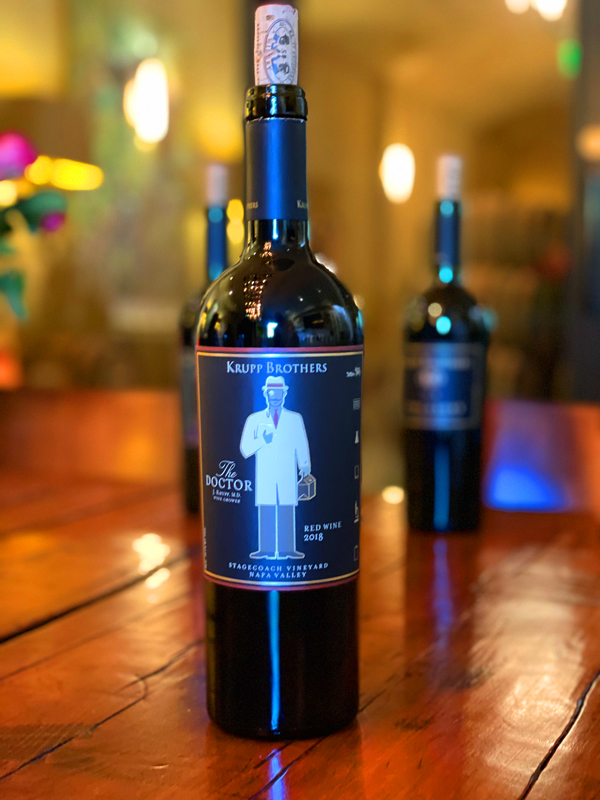
2018 Krupp Brothers, The Doctor, Red Blend, Stagecoach Vineyard, Napa Valley.
On a brilliant sunny crisp winter day I ventured out to the Krupp Brothers estate off Napa’s Silverado Trail to taste their latest releases and catch with this small high end label that has largely been focused on rich mountain Cabernet Sauvignon(s) since it was established in the 1990s by Jan Krupp, who was responsible for the heroic effort in creating the famous Stagecoach Vineyard. These new, mainly 2018 vintage, wines are a stunning set of offerings, and interestingly, as great as the Cabernet Sauvignon is, I found myself drawn to their gorgeous Cabernet Franc bottling called the Synchrony and this thrilling Tempranillo based wine, that is very much a Ribera del Duero meets Napa styled red. This youthful wine is really starting to come alive with compelling opulence and vinous fruit density with a deep purple/garnet color and heady aromatic leading the way to a rich full bodied and structured palate, it shows loads of dark fruit including layers of blackberry, plum, cherry and a touch of blueberry that are accented by toasty oak, sandalwood, licorice, crushed stones, delicate florals, cigar box and lingering mure liqueur. The Doctor opens beautifully in the glass and its texture is outstanding and mouth coating, it is a wine to pair with a meal, which would smooth out its tannins and allow all of its complexity to show through, even with just a few hard cheeses in the tasting it performed brilliantly, this is a standout and intriguing wine. Tempranillo is a Napa Valley rarity with just about 12 acres planted and has been a tough varietal to grow or get a handle on, but this is awesome stuff and well worth chasing down.
The 2018 Doctor Red Blend is made from 64% Tempranillo, 24% Cabernet Sauvignon, 6% Malbec and 6% Petit Verdot all from Stagecoach Vineyard on the eastern side of the Napa Valley between Pritchard Hill and Howell Mountain, which is set on almost pure rock formed by ancient volcanic activity, it was an incredibly hard site to plant for the Krupps, but is now one of the most prized vineyards in the region. The hand harvested grapes used in The Doctor red saw a three day cold soak and was macerated on the skins for close to four weeks, after which, once primary fermentation finished in was then racked to high end French oak barrels for aging. The elevage lasted a total of 19 months and was done with about 50% new oak with a mix of cooperage, including Taransaud and Francois Freres barriques that add a smoky sweet framing to this big wine. Once fully open this wine turns on the charm and shows off its class with the addition of a warm chocolately note and more of an exotic spiciness, making this wine, which clocks in at about 15% natural alcohol, great with duck, meat dishes and or leg of lamb. There is a lot to admire in this wine and the full lineup at the Krupp Brothers, I’m grateful for the opportunity to visit, taste and tour in this idyllic setting, so I must thank Ms Nicole Lincoln, Director of Hospitality & Regional Sales Manager for the Krupp Brothers, for being such a gracious host and taking me in on short notice. It should also be noted these wines are now being made by the talented Desiree O’Donovan, who has been with the Krupps for a while now, after working behind the scenes at a few notable wineries, and who is taking this winery to impressive new heights and giving these wines their elegance and balance!
($100 Est.) 95 Points, grapelive
Grapelive.com – Reviews – January 2022
2001 Chateau Branaire (Duluc Ducru), Saint-Julien, Grand Cru Classé, Red Bordeaux, France.
One of my favorite Bordeaux vintages to drink, 2001, and an en 1855 classified Chateau that always offers a solid value, Chateau Branaire Ducru made for a near perfect wine and food experience while celebrating Napa Valley Food Week at the fabulous Lovina Restaurant in Calistoga. The Branaire’s perfect cellaring showed here, the cork was like brand new and came out easily and the color was just as a 20 plus year old Bordeaux should be with a deep purple/garnet core and burgundy edges leading to a seductive silky mature palate. The aromatics lifted heavenly from the glass with peony, loam, currant, cedar and dusty kirsch and echoed on and on in mouth with blackberry, plum, tobacco leaf, minty anise and a hint of savory sous bois. The tannins are still sweet, but dry and add a nice tartness holding the fruit in place and make this wine lovely with food, especially hard cheeses, meat dishes and or wild mushrooms. The length here was quite impressive and lingered with a refined delicacy that you might expect from a more pricy Chateau and this Branaire stayed extremely poised for the whole evening, not letting the foot of the gas even for a moment over the couple hours it was open.
The historic Château Branaire Ducru, located in the Medoc’s Saint-Julien region, is one of the ten classified fourth growths from the Bordeaux Wine Official Classification of 1855. Branaire Ducru, which dates back to 1680, was a originally part of the huge Beychevelle estate and was sold off because of big debts owed with Jean-Baptiste Braneyre giving this place the name. Braneyre bought the land because he was convinced the outer Medoc with its gravelly soils was prime Cabernet Sauvignon terroir, which proved to be the case and the Grand Vin of Branaire is Cab dominated blend with the vineyard planted to 65% Cabernet-Sauvignon, 28% Merlot, 4% Petit Verdot, and 3% Cabernet Franc. Today, it is pretty much the same as it has been since the 1855 classification and best part of the property is very close to the Gironde River with the gravel over clay soils, bringing out a deep sense of fruit coming through in the wines. The Branaire Ducru sees fermentation in temperature-controlled stainless steel tanks, with different sized vats used for each parcel and everything is fed by gravity flow and after primary fermentation the wine is racked in French oak barrels for between 16-20 months, about which are 60 to 65% new. Sandwiched between the 2000 and 2003, the supple and generous 2001 continues to over perform in drinking grace and elegance, I couldn’t be happier with the way it is showing, wish only I had a few more bottles to enjoy over the next 3 to 5 years.
($65 to 80 Est.) 93 Points, grapelive
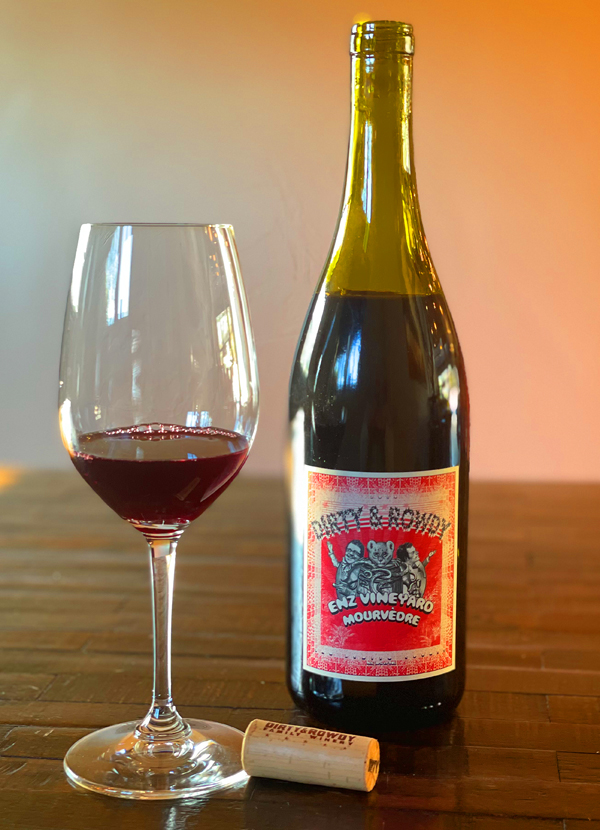
2019 Dirty & Rowdy, Mourvedre, Enz Vineyard, Lime Kiln Valley, San Benito County.
One of the very last releases from the now defunct Dirty & Rowdy Wines, the 2019 Dirty & Rowdy, Old Vine Mourvedre from the Enz Vineyard in San Benito’s Lime Kiln Valley and the 90 year old vines set on broken limestone and decomposed granite soils is a perfumed and wildly beautiful wine with seeped flowers, anise, delicate spices, crushed rock and elegant, but deep red fruits on a seamless medium/full palate that belies the natural ruggedness of this varietal, best known for powerful and meaty Bandol wines. This fresh and lively effort that shows crushed raspberries, strawberry, dusty plum and cherry fruits, comes from this head-trained, basket-pruned, dry-farmed, own rooted vineyard, that is known as one of California’s historic treasures and that has been brought to famed by Ian Brand, a vineyard whisperer who has made a signature collection of bottlings from this unique site. Hardy Wallace, the winemaker here, who will now go his own way with his passion for Mourvedre and his new label Extradimensional Wine Co. Yeah!, made sure Dirty & Rowdy went out with a bang, and this 2019 Enz just might be their best wine to date! The Enz was 100% Whole Cluster Mourvèdre fermented all naturally with indigenous yeasts and gentle maceration to capture the true nature of the vintage and the distinctive terroir here, Wallace has crafted a fabulous, silken and transparent wine with stunning aromatics.
As for getting things done, in other words the winemaking process employed by Hardy Wallace, he says they don’t make wine by numbers, recipes, or additions, but we aren’t zealots … unless we’re talking about that spicy fried chicken and try to let the wine do its own thing, embracing natural wine, but within reason. The Dirty and Rowdy wines saw fermentation(s) in cement vats, clay pots, then aged in pretty concrete eggs and well seasoned old barrels, all without additions and no added sulfur. Wallace says, the wine’s real story is about (its) source, a sense of place, and not the stamp he puts on it. He continues, If he finds a consciously farmed, unique vineyard, and he (and crew) nail our picking decisions, then the wine goes about its own business without a lot of monkeying around, and the results have proven delicious as this remarkable Enz Vineyard Mourvedre shows with divine presence and grace in the glass. Going forward, Hardy’s new project Extradimensional Wine Co. Yeah!, will carry on his mission and core beliefs and his wines will be made with that same flair and after trying his limited selection of new stuff I am very excited to see where this path takes him and I look forward to reviewing his Old Vine Mourvedre, Evangelho Vineyard, Contra Costa County bottling soon! If you can find the 2019s from Dirty & Rowdy I highly recommend grabbing them, especially the Mourvedre bottling and in particular this Enz version, but I also love their Barbera, which I hope will come back to life in Wallace’s Extradimensional Wine Co. Yeah! collection.
($50 Est.) 93 Points, grapelive
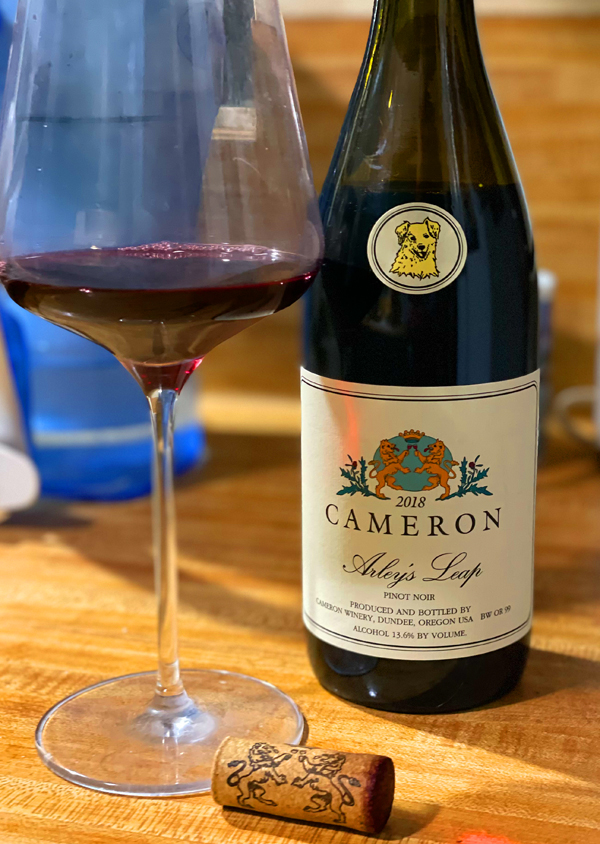
2018 Cameron Winery, Pinot Noir, Arley’s Leap, Abbey Ridge Vineyard, Dundee Hills, Willamette Valley, Oregon.
This year’s Arley’s Leap Pinot is a dead ringer for some old school Burgundian classics, in particular Bernard Maume’s famous Gevrey-Chambertin Lavaux St. Jacques bottling with a deep and earthy medium bodied, but firmly structured palate, that after air opens up wonderfully. This 2018 is complex with layers of black cherry, mulberry, currant and cranberry fruits along with reductive earthy elements, hibiscus tea, sanguine iron tones, tobacco leaf and wilted roses. Cameron’s legendary winemaker John Paul has nothing but high praises for this site, saying year after year the Abbey Ridge Vineyard produces some of the best Pinot Noir in Oregon, going on he adds that It is not the richest or the ripest, but it is clearly one of the most elegant sites in the the Dundee Hills if not the entire state. This wine really bares that out and I was incredibly impressed by the ever lasting finish and lingering violets, blue fruit, rosemary and sandalwood, making for a thrilling experience, even though it looks to have even more potential to evolve over the next decade. The Arley’s Leap, as with all of Cameron’s Pinots, it was fermented with the indigenous yeasts in open top tanks in which, Paul jokes, beautiful women immerse their nude bodies in the warm must to keep things exciting in the cellar, but more seriously the wines are made in a traditional Burgundian way with a gentle regime of daily punch downs and minimum intervention. The resulting wine was aged for nearly 2 years in a mixture of French oak barrels varying from new to completely neutral and bottled without filtration.
The Cameron Arley’s Leap Pinot Noir, named after Bill & Julia Wayne’s beloved dog Arley, is sourced from a single block of grapes that is located at the highest point within their Abbey Ridge Vineyard. This wine, as winemaker John Paul explains, is solely composed of a handful of old red burgundy clones, and the grapes from this 25 year old section are typically the very last Pinot Noir to be harvested in the Dundee Hills and have loads of energy and earthy tones, slightly less ripe than other prime spots. The resulting wines, Paul continues, are therefore relatively high in natural acidity and display old world aromatics, certainly as this one does, with a dark pigment, stoniness and lifted by red spices. Set on the red dirt and Jory volcanic soils of the Dundee Hills, there is always a unique sense of the exotic, though well contrasted by the raw and rustic personality, these Cameron wines never fail to excite Pinot Noir fans. Cameron believes the best grapes come from dry farmed vineyards and he likes to have his wine aged longer in barrel with most his top Pinots, as noted above, seeing an elevage of close to 24 months. For his barrels, he chooses a small cooper who lives in the village of Saint Romain in Burgundy. His name is Claude Gillet and together with his children and several master coopers they turn out some of the most exquisite wine barrels to be found, and almost Every year Claude and his son, Laurent, visit Paul’s winery, to taste the wines in barrels and make recommendations for choice of forest, toast level and all of the other minutia that go into crafting an oak barrel. Since Paul believes that barrels reach their perfection only after a couple vintages, he prefers to utilize cooperage which is 1-3 years old for our most precious cuvées. These are stunning artisan wines and this one is well worth searching out!
($60 Est.) 94 Points, grapelive
2014 Weingut Friedrich Becker, Pinot Noir, Pfalz, Germany.
Still fresh and gracefully textured, the basic 2014 estate Pinot Noir is nicely put together with layers of smoky black cherry, plum and strawberry fruits, all accented with spice, mineral, forest floor and black tea notes, it gains a pretty floral background and has a dry stony saline element makes it joyous on the medium bodied palate. My first German Pinots included the famed Meyer-Nakel, in the Ahr valley, August Kesseler, sourced from the historic Assmanshauser Hollenberg in the Rheingau and Friedrich Becker’s Pfalz Pinot that comes from vineyards the cross the border with France, they all left a massive impression on me and remain some of my favorite wines and this wine is a reminder of why, with its class and quality. Intriguingly, Becker has an interesting array of grapes, from rarities in Germany, Meunier and Cabernet, along with a collection of Alsace varietals, Riesling, Pinot Gris, Pinot Blanc, Muscat, Gewürztraminer and even some Sylvaner. So, there is a lot to discover here, but you really need to chase down the stellar lineup of Pinot (Spatburgunder) at Becker, with this bottling being an excellent place to start. The Becker winery isn’t that old by German standards, founded back in 1973 when Friedrich Becker Sr. filled his first bottles with the iconic fox on the label and a star was born.
As I have noted in my prior reviews, one of Germany’s best known Pinot Noir producers, Weingut Friedrich Becker, in the Pfalz crafts some beautiful and detailed wines in this unique terroir, these are wines that, especially their Pinots that have Burgundy like class and character. The winery is run by the Becker family, Friedrich Becker Senior and Junior, who’s doing most of the heavy lifting these days, they have Gerard Paul, an Alsatian as their general manager, as well as the talents of Sandrine Eichenlaub in vineyard and cellar along with Daniel Scheib. Becker’s tight team are extremely focused and the wines speak for themselves, especially the Pinot Noir and Chardonnay offerings. The Pinots come from the area’s sandstone and alluvial soils and sustainable vines, they are then produced with traditional Burgundian methods. The Becker wine-making process itself is, as they explain, rather simple and classic, using all de-stemmed berries and are macerated and fermented in open top fermenters allowing the must time to dissolve the tannins from skins. After which they take the spicy and aromatic mash by hand to the wine press where it gently pressed and then racked to toasty French oak barrels, with this one seeing a small percentage of new wood. Becker continues to raise the bar and these wines are coveted by enthusiasts and the latest Pinots are delicious, plus their Chard, which I recently reviewed is outstanding too, don’t miss a chance to try them.
($30 Est.) 91 Points, grapelive
2020 Jaimee Motley Wines, Rosé of Mondeuse, Rorick Heritage Vineyard, Calaveras County.
The latest release of the Rosé of Mondeuse, Rorick Heritage Vineyard by Jaimee Motley is brighter and more delicate in style, much more entertaining to me personally, and shows a beautiful array of subtle fruit, floral notes and a faint earthy element in a crisp, mineral driven and spicy dry pink wine. The light to medium bodied palate continues to follow a distinct profile of flavors including notes of hibiscus tea, guava, shaved cinnamon, wet stones and peach as well as pink citrus, strawberry and watermelon all supported by zesty acidity and a steely frame. There is much more clarity in this vintage, it is less rustic or funky, making it very approachable and pleasing to just sip, while still being complex and very unique. Mondeuse, the classic Savoie alpine red grape, while extremely rare here, has been in California for a long time, probably since the late 1800s and was interplanted in some of the historic heritage vineyards, where it is still found today. At one point it turned up in Santa Maria, where it was sometimes confused with Pinot Noir, and where the late great Jim Clendenen made a version that he blended with Pinot as well as a single varietal version, both of which were my first experiences with the grape in California. Jaimee’s ruby/pink colored and vinous Rosé, might be the only ever bottled dry pink version of Mondeuse in the state and it joins an outstanding group of new generation Rosé wines made from lesser known grapes, like the Arnot-Roberts Rosé of Touriga Nacional and Filomena Wine Co’s Rosé of Cabernet Pfeffer!
This rarity is from the Rorick Heritage Vineyard in the Sierra Foothills region of Calaveras County, grown on limestone with top layer of schist, with long warm days and cool nights the Mondeuse has found a happy home here developing ripe flavors, though picked early to retain fresh acidity. Motley chose a unique route with her Rosé, going somewhat old school with traditional maceration and native yeast fermentation for primary before aging and malos in neutral oak cask with the wine resting on the lees for about 5 months. As mentioned in my prior reviews, Jaimee Motley, is one of the rising stars of the California wine scene and has joined the exciting team at the famous Stony Hill Winery in Napa Valley, where she’ll lead a new generation of wines here. Motley’s own label, which has really taken off, credits her travels to the Loire and Savoie, where she fell in love with Chenin Blanc and Mondeuse wines, as being the reason to get into winemaking in a serious way and these grapes have become her signature wines. I also love the almost Syrah like, dark and violet scented Mondeuse “Argillet” Santa Maria Valley that Jaimee does. Motley, as mentioned also, formerly an assistant winemaker at Pax Wines, was born and raised in Annapolis, Maryland before moving to SF to peruse artistic talents, though after working in some of the City’s more iconic restaurants she caught the wine bug, which led to her exploration of those old world European wine regions. In recent years she has added a serious mountain Cabernet Sauvignon to her lineup, coming from the old vines in Carmel Valley, it also shows her touch with a mainstream varietal, it is well worth searching out, along with her Mondeuse based wines.
($26 Est.) 92 Points, grapelive
2018 Chiappini, Cabernet Franc “Lienà” IGT Toscana Rosso, Bolgheri Italy.
It was great fun to catch up with Martina Chiappini at this year’s Slow Wine SF Tasting and taste through her incredible collection of Tuscan coast wines from Bolgheri where her estate sits, very near the famed properties of Le Machiole and Sassicaia, I especially loved her gorgeous Lienà, crafted using 100% Cabernet Franc. Martina, who is not only here, believes Cabernet Franc is the most important grape in Bolgheri, even if Cabernet Sauvignon and Merlot, in particularly in the legendary Masseto, get all the headlines, and hers is absolutely beautiful and extremely nuanced with a divine weightlessness and stunning length, it highlights the grace and delicacy this varietal can show, in contrast to the density and power you find in the Cabernet Sauvignon and the Bordeaux blends. This 2018 is impeccable and impresses for the shear beauty it delivers with a serious likeness to some very famous Saint-Emilion right bank wines with floral and spicy notes both on the nose and on the velvety medium to full bodied palate of this Lienà, with a luxurious layering of crushed red berries, currant and plum fruits that are nicely accented by lightly smoky sandalwood, anise, mineral tones and lingering kirsch. The fermentation is initiated spontaneously and the lengthy maceration extends for close to a month using temperature controlled vats before being racked to 225L French oak barrels with a well judged use of wood, about 30% being new. The Lienà Cabernet Franc, like the Guado de’ Gemoli is bottled unfined and unfiltered after being aged between 20 and 24 months.
The Chiappini estate, founded by Giovanni Chiappini, possesses 27 hectares of prime vineyards that is spread across four different parcels and set on fabulous soils that are made up of alluvial calcareous deposits that drain well and add to the complexity and depth of the wines. Elevation is not to high here and the climate is warm but moderated by the close by Mediterranean Sea, which brings balance to this region that sees optimal ripeness and a suppleness of structural tannins. Chiappini is not an old label, with Giovanni’s first vintage being back in 1999, He learned winemaking at the feet of his father and the rest of his family that are originally from the Marche region and who, since moving to Bolgheri in the 1950s sold their wines in bulk until deciding on doing their own label. While Giovanni is still very much responsible for the vineyards and wine production, his daughters Martina, who traveled here to show off their wines, and Lisa, who joined him in the family business manage sales, marketing and the increasingly more in the cellar. The Chiappini winery is located on the Via Bolgherese, in the row of elite estates, immediately adjacent to Orenellaia and the mentioned Le Macchiole, which is now some of the most coveted land in Italy. To preserve the soul and nature of the land here, Giovanni farms the Chiappini vineyards all organically, with unique parcels of Sangiovese, Merlot, Cabernet Sauvignon, Petit Verdot, Vermentino and their Cab Franc, which makes for the secret sauce in this wine as well as their signature blend Gaudo de’ Gemoli, that is one of the top wines of the region. The Lienà range, which I hadn’t tried before, includes a single varietal Merlot, a Petit Verdot and this brilliant Cabernet Franc, they are pretty rare bottles too, none to easy to find here in the States as of yet, but are well worth the effort to get!
($78 Est.) 94 Points, grapelive
2019 Cayuse, Tempranillo “Impulsivo” En Chamberlin Vineyard, Walla Walla Valley.
While renown for his Syrah and Grenache based wines, Cayuse’s Christophe Baron also does some fantastic Bordeaux blends, Cabernet Sauvignon and this awesome Tempranillo, called the Impulsivo, which is very much in the mold of a great Ribera del Douro, with incredible fruit density and thrilling palate impact, it’s a real head turner, something you’d not want to miss. Tasted at the San Francisco Slow Wine Tasting along side Cayuse’s Grenache, the rare Cabernet Franc led Flying Pig and Baron’s Horsepower Syrah, the Tempranillo “Impulsivo” En Chamberlin Vineyard, making for amazing set of rarities to review, and super hard choices to pick a favorite, but this Tempranillo was a clear stand out in the line up. This 2019 Impulsivo has a seductive inky blue/black and garnet hue in the glass and a sultry dark and smoky nose that leads to a complex array of flavors on the concentrated full bodied pale with blackberry coulis, black cherry, plum and grilled orange fruits that are accented by graphite, cedar, sweet pipe tobacco, caramelized fennel, mineral tones and a subtle floral dimension. Think of this wine as an American Pingus! Thick and opulent for sure, but with some nice lift from natural acidity and an earthy and transparent personality, along with a young taut structure and balance that certainly gives the impression that it will age well.
Cayuse is a small domaine located in the Stones of the Walla Walla Valley, that is area that sees its vines crossing over to the Oregon side (from Washington state) and set on big cobbles, it is almost insane to think how these vines were planted in the rocky terroir here. These sites, which some compare to Chateauneuf du Pape with the large stones are some of the most unique plots in Pacific Northwest, and have made Cayuse one of the most iconic wineries in the new world. All Cayuse wines are created from estate fruit, and this one comes from the En Chamberlin Vineyard, which Christophe planted in 2000 on 10 stony acres with the Tempranillo being grafted on phyloxera resistant rootstock. This vineyard produces three of Baron’s most celebrated wines, including The Widowmaker Cabernet-Sauvignon, this Impulsivo Tempranillo and very Heritage like En Chamberlin Vineyard Syrah. These new releases from Cayuse are tight and powerful wines that should be decanted and paired with hearty cuisine, but they also posses a raw beauty and finesse that truly make them so alluring, especially the God Only Knows Grenache, which has a soulful expression, reminding me of Rayas and Sadie Family, and this very sexy Tempranillo that should drink well for decades to come. Cayuse employs all organic and biodynamic farming and minimal intervention in the cellar to make wines influenced by place first and foremost, which has made them incredibly hard to get, but well worth the effort!
($139 Est.) 96 Points, grapelive
2017 Mueller-Catoir, Scheurebe Trocken, Haardt, Pfalz, Germany.
The nose on Mueller-Catoir’s Haardt Scheurebe Trocken is exotic with lime blossom and jasmine, but not as perfumey as Muscat and the palate has a lush tropical medium body that has a nice crisp play between fruit and edgy bitter elements with some white peach and pineapple fruits accented with spearmint, zesty grapefruit and mineral spice. Shuerebe is a rare varietal, mostly found in Germany, though some exists in Austria as well, its’s a very aromatic grape, also known as Samling 88 (Austria), that was created from a seed crossing of Riesling and a little known varietal called Bukettrbe back in 1916 by Doctor Georg Sheu, hence the name, which became official as tribute to its creator. I should state my thanks for these newly researched details by Anne Krebiehl MW, who presented these now known facts in her book “The Wines of Germany” also as she notes, that for many years, it was thought Scheurebe was a crossing of Riesling and Silvaner, but more conclusive studies has proved otherwise. Scheurebe, it is said, grows best in Calcareous soils, with Muller-Catoir’s Pfalz version regarded as maybe the greatest expression of this grape, coming from mainly the sandstone soils here.
Mueller-Catoir’s Scheurebe Haardt Trocken is sourced from multiple plots in Haardt vineyard area that are composed of some primary rock (urgestein) and the mentioned sandstone, with proportion of gravel located lower on the slopes here. This famous estate and the region has a long history of winegrowing with the Burgergarten site being first planted close to 700 years ago, and, as the winery notes, and while there has been some ups and downs, it remains one of the best wineries in Germany. Mueller-Catoir which has a tradition of reductive winemaking implementing a gentle crush, a long skin contact, slow gentle pressing, and then ferments at warmer, according to the winery again, than customary fermentation temperatures in stainless steel to promote transparency, with this 2017 dry Scheurebe being full of energy and with a touch of fresh tartness, making it compelling and food friendly. Mueller-Catoir makes an exceptional st of Rieslings from lightly sweet to powerful dry GGs and I highly recommend exploring their awesome range of whites, especially those Rieslings, but don’t overlook the Scheurebe, Muskateller, Grauburgunder and Rieslaner, a grape not related to Riesling and one that makes a sublime sweet wine, you can’t go wrong with any of these and I am looking forward to grabbing some of the highly acclaimed 2020s.
($26 Est.) 91 Points, grapelive
2018 Desire Lines Wine Co, Syrah, Griffin’s Lair Vineyard, Petaluma Gap, Sonoma County.
The 2018 Desire Lines Griffin’s Lair Syrah is taut and powerful, but delivers a wonderfully pure Syrah experience on the full bodied and meaty palate with an array of dark fruits, spiciness and feral notes with some violets, creme de cassis and tarry licorice, making for an impressive wine again from winemaker Cody Rasmussen and his tiny small lot label. This vintage needs food, and robust cuisine to give a good account for itself at this young stage, so be sure to prepare something hearty. I love this Syrah, and this vineyard, with this wine, Pax’s version and Luke Nio’s Filomena versions all being excellent, with Cody’s 2018 being one of the most exciting and with potential to get even better with age. The depth of flavors lean on blue and black fruits with blackberry, damson plum, blueberry and huckleberry being the core here with accents of forest floor, camphor, sanguine, tapenade and peppercorns in the background giving this deeply saturated purple/garnet wine loads of personality and rustic umami intensity. Rasmussen has proven himself equally as good with Riesling as he is with Syrah, his Cole Ranch Dry Riesling is one of the state’s best examples and he also does a fabulous Carignan based red, the Evangelho Old Vine Red Wine (95% Carignan & 5% Mourvèdre) and the exotic, wildly perfumey and hedonistic Shake Ridge Syrah from the Amador County in the Sierra Foothills, which is also a must for Syrah lovers.
As I’ve said since first trying these wines a few years back, Cody and Emily Rasmussen’s Desire Line Wine Co. is one of the most exciting new California labels to discover with a great set of new releases to chose from, especially this thrilling cool climate dark fruited Syrah from the famed Griffin’s Lair Vineyard in the Petaluma Gap AVA near Lakeville. Cody, the winemaker, who along with his childhood sweetheart Emily moved from Iowa to Sonoma in 2011 hit the ground running, starting as an harvest intern that fall and by next harvest he was drafted into the assistant winemaker’s position at Morgan Twain-Peterson’s Bedrock Wine Co., one of the state’s best small producers. For this Griffin’s Lair Syrah, Rasmussen fermented it with 50% whole cluster, with a submerged cap for the first half of fermentation, a little like the fabled Cote-Rotie by Domaine James is done, and then it was raised in neutral large format barrels, French puncheons, for 15 months before bottling without fining or filtration. He picks during a cooler window to preserve purity and freshness and I think this really paid off with the wine showing an inner energy, vibrant black and blue fruits as well as solid structures with a nice savory tone from the stems. There is good, fresh acidity to balance and contrast to the ripe density on the palate and this vintage looks structured for the long haul, best to decant or hold for another 3 or so years.The Griffin’s Lair Vineyard in the Petaluma Gap, set on gravel and clay loamy soils always gets those “Gap” breezes and cooling influences which allows deep ripe flavors, but with vivid detailing and the noted good acidity, making for wines with a northern Rhone character, but with California concentration and smooth tannins. Not much of these Desire Line Wine Co efforts get made, so it is best to get on their mailing list, Rasmussen is about to release a new set of wines, including an all new Bedrock Vineyard Mourvedre!
($42 Est.) 94 Points, grapelive
2017 Weingut Carl Loewen, Riesling Trocken, Longuicher Maximin Herrenberg 1896, Alte Reben, Erste Lage, Mosel Germany.
I’ve long been a follower and fan of the Carl Loewen wines, but I have say since Christopher Loewen took over they are some of my absolute favorites, with this Old Vine Longuicher Maximin Herrenberg Dry Riesling being one of the wines I try to get every vintage, as it is seriously close in quality to the GGs, but almost half the price, it is a killer bargain for what is in the bottle. The 2017, I somehow missed and just found now, is gorgeous crystalline wine that is developing nicely. The historic Weingut Carl Loewen estate dates back to 1803 when a set of vineyards and buildings that was formally owned by the Maximin order, much the same way the famous Maximin Grunhaus (Von Schubert) started after the Church’s lands were sold off to fund the secular Napoleonic government, and this sale included Loewen’s prized, ultra steep, Longuicher Maximiner Herrenberg, one of the Mosel’s greatest vineyards, where this wine was born. The soils here are unique with a combination of Devonian era slate (red) with a band of red iron and volcanic veins running through these vineyards, which Christopher notes that this band of soil runs between Urzig and Longuich that which is very rare in the Mosel and adds to distinction of these amazing wines. This 2017 is lightly golden in the glass with delicate florals, smoky slate and the palate is vinous and rounded, but the early fat fat this vintage had has largely turned into a thrilling sex appeal with highly attractive layers of tangerine, apricot, quince and a touch of tropical fruit that is perfectly accented by wet shale, a salty note, tangy peach pit, apple skin, key lime, clove spice and a decedent leesy yeasty finish. This wine is really coming into its own and as it warms in the glass it gets more and more interesting and has a thrilling impact, it doesn’t get much better than this, instead of severity and or brutal force, there is a heightened sense of pleasure and beauty to be admired here.
Christopher Loewen, who’s brought in a new sense of passion and organic farming to the famous Weingut Carl Loewen after taking over the winemaking here new, has a set of offerings that are brilliant Rieslings, absolutely world class stuff, especially his gorgeous dry styles, including this Maximin 1896 Herrenberg Alte Reben Trocken Premier Cru (Erste Lage) that has the class, mineral intensity and elegance of a Grand Cru Chablis, but with the slate driven terroir of the Mosel. The GG’s and the 1896 Feinherb here are without question some of the best Rieslings in Germany, but when you get into the basic and Premier Cru stuff, you see some outrageously good values, like this one and the Kabinett bottlings, none of these wines should be missed. The Maximiner Herrenberg vineyard, as mentioned in my prior reviews and as well noted was originally planted in 1896, making it the oldest ungrafted Riesling vineyard in Germany and is now farmed by Loewen using organic methods. Loewen carefully sorts the grapes here as to not have botrytis in the dry wines with this parcel being in the lower slopes, set on red slate soils, closer to the Mosel river, where they benefit from reflective light from the river that adds to the full ripeness. Using modern natural methods in the cellar, Christopher, the grapes are all whole cluster pressed, and Loewen is careful not to move the pomace so to not get bitterness or harsh phenolic flavors, then the juice, according to the winery, is “browned” or oxidized pre-fermentation to stabilized the wine and get away from reduction. All of Loewen’s ferments are “Sponti” completely natural without addition of enzymes or nutrition, with these single vineyard wines, Christopher notes, are individually block picked with the above treated juice going directly into classic Fuder barrels (German oak) which average 25 years old to age. With the dry wines seeing about a year on the lees in these large oval casks to allow depth and complexity to develop before bottling, these wines are stunning in any vintage, but the string of years, 2016 through 2020 are extraordinary and should be on any Riesling lovers radar and wish list!
($48 Est.) 95 Points, grapelive
2019 Bow & Arrow, Gamay, Willamette Valley, Oregon.
This 2019 version of Bow & Arrow’s Gamay is one of my favorite vintage’s to date with tons of energy and stemmy crunch, it shows off deep black fruits, hints of violets and zesty orange rind along with racy acidity, mineral notes and is led on the medium bodied palate by blackberry, tangy sour cherry and plum fruits that are accented by hints of loam, leather and fennel. Bow & Arrow and winemaker Scott Frank go their own way, focusing on cool climate natural wines made from more humble grapes and sites, including this Gamay, and they use a different template to explore this different, simpler side of the Willamette Valley. Instead of Burgundy, Frank adds, he pays homage to the refreshing and decidedly working class wines of France’s Loire Valley and the wines show a rustic edgy quality and are incredibly value priced confiding the small batch and handcrafted effort that goes into them. Frank says, even after one of Oregon’s great contemporary Pinot Noir and Chardonnay masters, John Paul of Cameron Winery, drafted him to be his unproven assistant winemaker in 2007, the thought of bottling Loire Valley varieties, like Chenin Blanc, Melon de Bourgogne and Sauvignon Blanc was never far away, and his interpretation of Gamay is based on his Loire experiences, in particular in areas like Touraine and Cour-Cheverny.
The Bow & Arrow Gamay is faithfully produced using old school traditional methods with carbonic whole cluster permutations and native yeasts with exceptionally low SO2, or without sulfur added in the process which includes cement vats and used very old barrels. This wine is without pretense and even carries its rawness with a certain pride, with the 2019 having a touch of funk, stemmy bite and brett, though not enough to be off putting, it just adds to the complexity and soulfulness of the whole experience. The Hughes Vineyard, Located in the South Salem hills, an area Frank feels holds some of the best untapped potential in the valley set on Jory and Nekia soils south of Salem, with Ed and Kathy Hughes farming this 27 year old site that provides Bow & Arrow with Gamay for this Willamette Valley bottling and some Pinot Noir for a single vineyard offering. These vines at an elevation of near 700 feet, the winery notes, are own rooted and have been dry farmed using sustainable methods from the beginning. The aspect here is slightly Northernly facing which translates in a light, with more cool climate natural acidity and a savory expression of the varietal, which this 2019 shows with exceptional clarity and with an earthy effect, making for old world style wines. In recent years I have grow fond of the Bow & Arrow Air Guitar, which is a blend of Cabernet Sauvignon and Cab Franc, like seen in Anjou and the Rhinestones, a blend of Pinot Noir and Gamay, which I think is the signature wine of the winery, both of which I highly recommend, along with this 100% Gamay.
($23 Est.) 92 Points, grapelive
2021 Lepe Cellars, Rosé of Sangiovese, San Antonio Valley AVA, Monterey County.
One of the first out of the gate in the 2021 vintage is a tasty Rosé of Sangiovese from Miguel Lepe at his personal label Lepe Cellars, it is a bright and mineral focused dry Rosé that bursts from the glass with racy ruby grapefruit, strawberry, sour cherry and hibiscus leading the way with hints of rosewater, saline infused stones and watermelon. This wine is going to be a hit, maybe the best version Lepe has done, it delivers vivid clarity and has the perfect delicate color with mouth-watering natural acidity, all true to Sangiovese’s nature and personality, it reminds me of some of the best Italian Rosatos, but even more vibrant and refreshingly dry. This wine has some fun times ahead, though delicious now, it will provide great companionship to those having sea food, steamed claims and mussels in spicy broth as well as basil based dishes and Ahi tartare. Miguel, who is the assistant winemaker at Wrath and formerly a winemaker at Figge, has gained a strong following for his own wines in recent years and his downtown Carmel by the Sea tasting room is a very comfortable way to explore his wines.
Miguel’s latest lineup is a very pleasing collection of finely crafted wines and he has some even more exciting stuff in the works, like a soon to be release set of Pet-Nat’s, including a Sangiovese sparkler that has been disgorged for clarity, but still has a slightly cloudy strawberry appearance, as well as a Sauvignon Blanc bubbly in a more raw natural form, and he is planning on doing a Gamay next year, so a lot of exciting stuff for Lepe. In the here and now, I really enjoyed the 100% Petit Verdot bottling with its deep color, its spicy menthol, dried flowers and red currant led full bodied palate, and this all stainless Rosé of course. Lepe did a direct press into stainless tank with about two hours of full skins to get that beautiful light pink hue and aged it for only a few months, as mentioned, 100% in stainless, before bottling in December to keep all the energy and vitality here. The grapes come out of the warmer southern section of Monterey County, in the San Antonio AVA, which was established in 2006, though it first saw a planted vineyard as far back as 1771, when the Mission San Antonio de Padua was built, making it one of the oldest growing regions in the state. It sees warm days and a climate similar to the west side of Paso Robles, benefiting from the cooling effects of nearby Lake San Antonio and the Pacific Ocean to give ripeness and balance, which this Rosé shows.
($28 Est.) 91 Points, grapelive
2019 Jolie-Laide, Grenache/Syrah/Mourvedre/Viognier, Shake Ridge Vineyard, Amador County, Sierra Foothills.
The gorgeous 2019 Sierra Foothills Rhone style blend from Scott Schultz and his personal Jolie-Laide label is pure and transparent with a classic Gigondas or Vacqueyras feel and profile with a Grenache led full bodied palate of crushed mixed berries, including boysenberry, plum, pomegranate and a touch of blueberry compote, along with graphite, earth, anise, mocha, peony florals and lingering kirsch. At Jolie-Laide, most all the grapes were all crushed by foot trodding and fermented 100% whole cluster, with nothing more than gentle punch-downs throughout and indigenous yeasts, with aging be done in used French oak barrels, all to allow the great terroir, like here in this GSMV, to shine through. Shake Ridge Ranch Vineyard is an epic site and is farmed by the Ann Kraemer, a pioneering legend in the Sierra Foothills, who has been a consulting viticulturalist for Domaine Chandon, Swanson, Cain, Calera, Paul Hobbs, and Shafer, to name a few. The Shake Ridge Vineyard is set on geological wonderland of soils with schist, Mariposa slate, greenstone, and marble, plus the are big chunks of quartz that litter the ground. The Sierra Foothills has a warm climate, but here at this elevation it sees a huge day to night swing with the vines getting a nice cool rest during the dark hours, helping them retain natural acidity, which is evident here is this vintage and the natural alcohol is low, remarkably just 13.2% in such a concentrated and densely packed wine.
Jolie-Laide is Scott Schultz’s one-man operation based in a Sebastopol and while having gained a reputation for geeky cool wines in recent years, his Syrah is nothing but old school traditional and with loads of class and distinction with a clean and transparent profile. As mentioned in my prior reviews, Scott moved to Napa from Chicago in 2007 with mostly fine dinning experience in the restaurant business on his resume which led him into a position at famous chef Thomas Keller’s Bouchon Bistro in Napa’s Yountville, where he became head of their wine program and fell in love with California wines. He worked with Arnot-Roberts and Ryme Cellars, two modern new generation wineries, before joining Pax Mahle at Windgap and Pax Wine Cellars, where his talents have helped produce some of California’s best loved Syrahs. I must say this Grenache, Syrah, Mourvedre and a small amount of co-fermented Viognier is really drinking fantastic right now, but is still beautifully fresh and vivid, giving me the impression that it will age another 5 to 10 years, it is easy to love, though very serious too. Earlier this year I enjoyed Schultz’s Gamay Rosé and his delicious Melon de Bourgogne white, each wine in the Jolie-Laide lineup highlights a sense of place. I was a little late getting into these wines and I am thrilled by what I’ve tried, making me happy I joined the mailing list. The Jolie-Laide wines just keep getting better and better, with the lineup expanding to include some outstanding stuff, in particular I recommend their red wine offerings, this dark colored and well balanced Shake Ridge Grenache/Syrah/Mourvedre and Viognier for sure, plus his Gamay, the Jura inspired blend, the Freisa, and the Syrahs.
($38 Est.) 94 Points, grapelive
2019 Turley Wine Cellars, Zinfandel, Juvenile, California.
One of California’s best Zin values and a great way to start your journey into the fabulous collection of wines at Turley Cellars, the Juvenile bottling, comes from vines that range in age from about 6-25 years, and, as the winery notes, are pulled from a selection of their best vineyards across California, including the famous Hayne, Pesenti, Salvador, Vineyard 101, Fredericks, and Kirschenmann sites from Paso Robles to the Napa Valley, as well as Amador and Lodi. This 2019 is wonderfully balanced with expressive fruit and nice natural acidity, its ripe core includes crushed raspberries, black currants, plum and juicy kirsch along with hints of fresh ground pepper, deep violet and peony florals, dried herbs and dark cocoa. Full bodied and quite luxurious in mouth this vintage is full of pleasure and is easy to love, easily hiding its potent natural alcohol (15.3%) and it has velvet covered muscles with supple tannin and an elegant finish, not unlike youthful Chateauneuf du Pape reds, but proudly Californian to be sure.
The Turley Juvenile, made by Tegan Passalacqua and his team is sourced from close to 27 vineyards, mostly all organic and sustainably farmed and is traditionally fermented using fully de-stemmed Zinfandel grapes and native yeasts. Turley notes that the Juvenile is actually composed of a variety of young vines that have been replanted in several of their old vine sites. They tag the younger vines then pick them, which is done separately and make they make each a distinct wine in separate lots, and blended to taste and style later. Turley has been hand crafting this Juvenile since 1999 and the recipe hasn’t changed too much, though certainly under Passalacqua’s vineyard and cellar guidance Larry Turley’s wines have continued to rise in quality, highlighting the care and extreme effort he has put in here since taking over the winemaker duties. The dark garnet hued Juvenile Zin, following the classic single vineyard wines, saw about 12 months in 80% French and 20% American oak with 95% being used barrels and just 5% new here and the Zin was bottled unfined. These 2018 and 2019 wines are outstanding, I highly recommend grabbing what you and or joining their mailing list for upcoming releases.
($25 Est.) 92 Points, grapelive
2019 Monte Rio Cellars, Mission, Lodi, California.
Still very fresh and lively with a range of spicy and floral aromatic, the ruby/orangey colored 2019 Mission grape red from Patrick Cappiello, the famous New York Sommelier and Pax Mahle of Pax Wines, famous for his outstanding and iconic Syrah bottlings, under the Monte Rio Cellars label is an all natural throwback winery focused on classic old California grapes and vineyards, is a lighter colored, slightly rustic and earthy wine that is as this bottle suggests a gulpable quaffer with a certain historic charm. This distinctive dry and low alcohol red shows layers of dried cherries, dusty raspberry and tangy tree picked plum fruits, a red pepper spiciness, a hint of funk and leather, along with orange rind, garden herbs, rose oil and sprigs of lavender. This is a fine effort and nice vintage to explore the Mission grape, this rare old grape, also known as Listan Prieto, that originally came to the new world with the Spanish missionaries, hence the name it goes by here in California. The grape, a very minor one in Spain, first got planted down in Chile back in the 1500s, where it is called Pais and eventually made its way north all the way to Sonoma by the late 1700s and early 1800s, it seems to have grown best in southern California, where it was made into California’s first commercial wine, as well as in the Lodi area, where it still thrives today, like here at the Somers Vineyard that supplies fruit for some of the best examples I’ve tasted. The Monte Rio Mission is best served with a slight chill, much the same as a Beaujolais and is perfectly suited to picnics, simple foods and or beach time with friends.
The 2019 vintage Monte Rio Mission, bottled in normal 750ml and in this retro jug 1.5L bottle was made from 80 year old vines at the organic Somers Vineyard in Lodi and was 100% whole cluster fermented and aged for about 6 months in neutral barrels. It saw a full carbonic maceration for 10 days in stainless steel vats before being pressed into a combination of concrete and stainless steel tanks for 7 days to get through primary, with absolutely no sulfur used in the winemaking and an all natural indigenous yeast fermentation before in was put to the very old oak. I have really enjoyed these last few vintages from Monte Rio Cellars, these no pretense offerings are fun and unique wines, with their Zinfandel, Petite Sirah and this Mission grape red being some of my favorites from these guys. I had saved this bottle, because I liked the look, and even reviewed the 2020 version before this vintage, though it was in no way inferior and was very smooth on the palate and maybe with a more exciting nose, which has a bit of cinnamon jolly rancher and rose petals to enjoy. As noted before, it is likely that the Mission grape was first planted for trade production at the Mission San Juan Capistrano in 1779 and it is thought in 1783, the first wine was produced in Alta California emerged from this mission’s winery, about a hundred or so years before Zinfandel arrived in the state. Never always loved as a wine in the past, Mission has made a comeback in recent years and the Mission by Monte Rio, that comes in at just 11.5% natural alcohol, is juicy and very enjoyable.
($23 Est. for 750ml) 90 Points, grapelive
2019 Domaine Weinbach, Riesling, Vin d’Alsace, France.
The baby Riesling from Weinbach is a killer value and exceptional wine, crisply detailed, but with opulent texture and balance showing a real presence in the glass with apricot, white peach, melon, a crunch of apple and zesty lemon/tangerine citrus fruits along with spicy clove, verbena, chamomile, salty wet stones and touch of round leesy brioche. The aromatics are delicately floral with a wisp of jasmine and orange blossoms along with a mineral tone, not to be confused with petrol fumes and subtle a earthiness that is wonderfully appealing in this stylish dry Riesling, it is always a treat to have a Weinbach and this is no exception. Women and nature have always played a big part of the success at Weinbach, which continues today.In recent years, Catherine Faller took over the leadership of the winery, made famous in a large part by her late mother Collette who brought the winery to the very top of wine world and her late sister Laurence, who was the winemaker for many years before sadly passing away at the young age of 41, and has kept the estate in the elite of Alsace wineries, along with her sons Eddy and Théo, who lead the next generation at this historic domaine.
The grapes for the basic Riesling are all organic and or biodynamic, they are all hand picked from parcels in the Valley of Kaysersberg, home to Domaine Weinbach with sandy silt soils on granite pebbles that give this wine its mineral focus. The grapes growing in this terroir, which is a bit warmer and sees lots of sun ripen a lot earlier, which the winery notes, produces wines with complex aromatics and a potent concentration, though there is loads of zesty acidity, meaning there is lots of depth and fruit density in most years, which this 2019 coming in about 13.5%, making for a rich supple body, though very dry with a touch of bitter almond coming from the phenolic extract. The 2019 saw a gentle whole cluster press in a Champagne style pneumatic press, then a spontaneous fermentation with indigenous yeasts, that the Faller’s believe add an element of the terroir, enhancing the depth and complexity in the wine, in old oak vats. The basic Weinbach Riesling sees eight months on the lees in the large neutral wood barrels, which is just about perfect to mature this outstanding Alsatian white, and like all of the Weinbach offerings, this is an all vegan bottling, it goes great with a wide array of cuisine too, from cured ham to Cajun spiced shrimp or crayfish.
($30 Est.) 92 Points, grapelive
2016 Domaine L’Austral, Saumur Saumur Puy-Notre-Dame Rouge “Vigneaux” Loire Valley, France.
The exceptionally perfumed and pure old vine Saumur Puy-Notre-Dame Rouge “Vigneaux”, which is 100% Cabernet Franc, from Domaine L’Austral was macerated in vat on the skins for about seven days and then fermented and aged in concrete eggs for 18 months, making for a wine that drinks like a fine Burgundy or Barbaresco, but with true Cab Franc varietal character. The delicacy and depth is quite stunning here, the nose draws you in with violets and rose oil, with heavenly layering on the weightless palate of black raspberry, ripe currant, plum and kirsch along with chalky stones, wild herbs and classic bell pepper notes. Unlike the tannic and animal laced old school Chinon, this Saumur is all about grace and sublime clarity, it is a stunning wine of gorgeous detail and absolute purity that feels wonderfully textural, lingering on and on with echos of the fruit and florals. The Les Vigneux, an outstanding value, is a from small single parcel in Saumur that is set on classic Silex limestone soils and is one of the most prized sites in the region and of the former Tour Grise estate, which obtained full biodynamic certification back in 1998, this wine clearly shows this fabulous vineyard at its mature best.
La Tour Grise estate, now know as Domaine L’Austral, which is only a total of 20 Hectares, was one of the first generations of biodynamic converts in the Loire Valley along with the more well known Nicolas Joly and a few others, and Philippe Gourdon originally founded this domaine in 1990 and got biodynamic certified in the following years as noted. These wines are a true reflection of the commitment and passion in Gourdon and in the new owners, Pauline Mourrain and Laurent Traubat have faithfully made these wines their own, but continue in the prior owners footsteps, under the L’Austral label. Pauline and Laurent have employed many of the same methods that the Gourdon’s used, though in recent years have taken things to the next level, so it will be well worth following this winery that use a combination of cement, with this one seeing only those concrete eggs, and used French oak to age these wines. The L’Austral wines are all naturally vinified, with long maceration(s) and indigenous yeast fermentation(s) and then aged in the estate’s historic underground troglodyte cellar that was cut from the natural limestone for which the Saumur AOC is famous for and for, which also give these Cabernet Francs and Chenin Blancs grown their striking characteristics. Domaine L’Ausral does a fabulous collection of hand crafted wines, including this awesome Vigneaux, as well as a delicious selection of Chenin(s), a cool sparkling wine and even a full carbonic Cab Franc that is wonderfully quaffable, I highly recommend them all!
($30 Est.) 94 Points, grapelive
2019 Corral Wine Co, Sauvignon Blanc, Zabala Vineyard, Arroyo Seco AVA, Monterey County.
Very much like the premier release 2018, the new Corral Sauvignon Blanc was fermented and aged in stainless and is just as excitingly vivid, zesty and pure, as the last one, making it a great Summer sipper and a white that goes great with lighter cuisine, especially delicate fish, goat cheeses, salads and picnic foods. The nose again is striking with gooseberry, wild herbs, white flowers and citrusy, with a touch of guava in this vintage and with a bit more density and presence on the tangy refreshing palate with loads of lemon/lime, white peach, quince and melon fruits. A bright pop from the natural acidity as well as some mineral, saline and wet stone elements make it even more compelling. It has been very interesting to see, as mentioned last time I was reviewing this wine, a Monterey County renaissance of Sauvignon Blanc, it is an amazing turn around for this grape locally, in which a flood of dull wines had made Savvy B a hard pass, it’s a trend I admit I didn’t see coming at all, especially with all the cool alternative grape varietals doing so well here, like Vermentino, Picpoul, Grenache Blanc, Melon, dry Riesling, even Arneis and especially Albariño showing incredibly here. So it is good to see some focused efforts put into the grape and having wines like this one, which is superb with soft cheeses and or grilled shrimp to quaff around with. As I noted before, local winemaker and vineyard guru Ian Brand really thinks we are just beginning to see this grape’s potential in Monterey, especially in Arroyo Seco, it just needs some TLC, in a way it (this wine) reminds of how good some South African coastal climate Sauvignon Blancs can be, like those of Neil Ellis.
The Corral Wine Co., started by Larry Bell, is a family run micro (craft) winery in Corral de Tierra, set in between Carmel Valley and the Salinas Valley, that has a few acres of Pinot Noir vines and has just released their first estate Pinot Noir, which is a beauty as well (more on this one soon) and is available at their newly opened tasting room in the Carmel Valley Village. They have also done a nice job with their Zabala sourced Chardonnay, to go with this tasty Sauvignon Blanc. This wine in the 2018 vintage, was the debut for winemaker Adrien Valenzuela, at Corral, who has been patiently waiting for his chance to show of his cellar skills outside his day job at Constellation Brands in Gonzales. A Salinas and Monterey County native Valenzuela, is one of hugely talented new generation of home grown local winemakers, who was studying biology and nursing, took an internship at Estancia and caught the wine bug. His first solo wine that he made in his garage was a hit at the Mid-State Fair, taking a Gold Medal. As mentioned before, young winemakers have a tough road to success and there are many roadblocks along the way, so it is great to see young people taking their chance and making it in this business. The lineup at Corral is well worth checking out, from this Sauvignon Blanc to their set of Pinots, as well as a deeply colored and full bodied Petite Sirah, I highly recommend trying the full collection. This 2019 Zabala Sauvignon Blanc by Corral is an interesting white, grown on an alluvial wash, ancient river bed and extremely rocky soils, with crisp dry details and mouth watering freshness, it makes for a nice change from the generic versions coming in from New Zealand and its heightened Musqué clone aromatics just adds to the wine’s personality and charm, it is nicely done and it is worth checking out.
($28 Est.) 91 Points, grapelive
2017 Weingut Georg Breuer, Riesling, Rauentaller Nonnenberg “Monopol” Rheingau Germany.
This 2017 Rauenthaller Nonnenberg, that was sourced from Breuer’s all organic monopole vineyard site, was fermented with native yeasts and traditionally aged in old wood, is one of the winery’s top dry bottlings and one of my favorite Rheingau Rieslings, with this vintage showing a wonderfully concentrated and balanced drier palate, highlighting the ripe, almost plush nature of the vintage in the region. While I love the Breuer Rudesheimer Berg, slate driven, offerings, especially the Roseneck and the mighty Schlossberg, this Rauenthaller Nonnenberg Monopol is iconic and uniquely distinct in their lineup of dry Rieslings with its textural depth and earthy complexity, making it one of the great wines of the region. This 2017 has really come together nicely, getting much better after a few years in the bottle showing an array of citrus and orchard fruits with layers of tangerine, yellow peach, apricot, apple and tropical fruits along with dried honey, an earthy stony and mineral core, as well as having an inner energy, zesty but smooth acidity and fine floral aromatics. I am always impressed with the transparency and rustic charms in these Breuer wines and I have really loved my visits to their tasting room in downtown Rudesheim, both times, back in 2009 and more recently in 2016, when I got to taste through a great selection of their wines, including a few older vintages of this Nonnenberg. This vintage is nicely expressive, lightly spicy and deep, giving a generous mouth feel and lingering saline quality, making it great with classic pairings and with just enough residual sugar to stand up to a little heat, great with Asian cuisine and or poultry dishes.
The Weingut Georg Breuer, now run by Theresa Breuer, was one of the key members of Charta, an organization founded before the VDP started their Dry classifications, formed to promote a drier style of Rheingau wine and were proponents and leaders of this style of wine to great effect in the region. Theresa’s late father, Bernard, believed that the Rheingau was perfectly suited to producing very fine, elegant and flavorful dry Rieslings, and he has been proven right, especially in recent years and by his talented daughter. Bernard, as mentioned in my prior reviews, was also a strong advocate for a vineyard classification system based on geology, historical precedent, and the quality of wines, he also is credited with discovering the potential of the Rauenthal zone, which has become one of the top crus in the Rheingau and in particular the incredible Nonnenberg Monopole site. Theresa Breuer, the director of Weingut Georg Breuer, has taken a more natural approach to her wines and has gone holistic in her farming of her estate vines looking for physiological and aroma ripeness, which she feels are more important than must weight numbers and the grapes are only picked when Theresa and her team feel the fruit is perfect, giving the wines a sense of delicacy, earthy transparency and elegance, rather than power or overtness. This Nonnenberg Monopole, a unique geological area is a South facing site, with deep Phyllite soils with a covering of gravel deposits, always has a lovely perfume of white flowers and a parade of citrus and stone fruits that leans on the yellow spectrum of flavors, as this 2017 shows perfectly. While waiting for the Covid pandemic to subside, I’m dreaming of returning to Germany and getting back to Rhein wine growing area, with this wine transporting me back there.
($60 Est.) 94 Points, grapelive
2019 Jean-Paul & Charly Thevenet, Morgon “Vieilles Vignes” Cru Beaujolais, France.
The 2019 Thevenet Old Vine Morgon is vibrant and zingy with loads of natural acidity, mineral notes and subtle fruit density, highlight the lively personality of the vintage that reminds me of 2010 and 2014, or a more classic year, but as it opens it turns on the charm and gets much more rounded and exciting with dark fruits bursting from the glass with air. Thevenet just makes one wine and only 2,000 cases per year are made, making this a treat, especially with the demand for top notch Gamay these days. The Morgon Vieilles Vignes, which shows a delicate floral note, pecan husk, crushed raspberry and earthy elements on the nose, then reveals zesty currant, plum, strawberry and citrusy fruits on the taut medium bodied palate. The old vine concentration shines especially when you give this wine time to awaken and it gets more entertaining and pretty, losing some of its rustic sharpness with food. There is more of a reserved quality here and a savory edginess that time with resolve, so if you do lack the patience it deserves (like me), I suggest decanting and a leisurely meal to allow all the best comes out here. The Thevenet’s employ long fermentations in cement cuve, with 100% whole clusters, for 15-25 days at low temperatures to allow for longest skin contact possible, delivering depth, extract and firm tannins. Made with all indigenous yeasts, with punch downs and pressing uniquely only after primary fermentation is complete and then it is aged on the lees for about 8 months in used Burgundy barrels. This is pure and raw in style, but the fruit ultimately leads to pleasure here and it is vivid terroir driven example of the Morgon cru.
One of Kermit Lynch’s original Gang of Four, and known as “Paul-Po” among friends, Jean-Paul is a reserved yet fun-loving third generation winemaker who along with his son make some of the best Gamay in the world. This old vine Morgon, the only wine they focus on at this famed Beaujolais estate comes from two parcels, one from 110 year old vines planted, as Kermit Lynch notes, before WWI and another plot that is 45 years old, set on decomposed granite and sandy soils. Thevenet farms this small five-hectare domaine with his son, Charly, who also makes his own fabulous Gamay from the neighboring Grand Cru Régnié, and who has taken over the helm here in recent years. Charly is a rising star with huge charisma and who is staunch advocate of natural wine just like his father, and since 2008 the two have taken the domaine to the next level by adopting all organic and biodynamic viticultural practices here, adding to the quality and intensity to this Morgon bottling. It’s well noted, that In the early 1980s Beaujolais was flooded with mass-produced, over-commercialized wine, destroying the reputation of this once highly regarded region that was once the equal to Burgundy, but the push back came when winemaker and viticultural prophet Jules Chauvet influenced a generation to return to more traditional holistic practices and love of their land. Jean-Paul and three other local vignerons, Marcel Lapierre, Guy Breton, and Jean Foillard, as Lynch famously chronicled, soon took up the torch of this “natural wine” movement, with Kermit dubbing them the Gang of Four, and the rest is history, and Beaujolais has never been better. Of course there are many other great producers here, but you’ll never be a miss when you get a bottle of this wine, with Thevenet’s 2019 being a classic.
($40 Est.) 92 Points, grapelive
2019 Brovia, Langhe Freisa DOC “La Villerina Secca” Piedmonte, Italy.
In recent years Freisa, a local rarity, has made a comeback from obscurity to be a darling of the Piedmonte region as top producers like G.D. Vajra, Vietti and Brovia put their talents to it. Freisa, a close but little-known relative of Nebbiolo has some similar characteristics, got popular in the 1800s and was used for sparkling, still and sweet wines and there are two major clonal varieties of Freisa-a small berried clone known as Freisa Piccolo which is more widely planted, and used here, and a larger berry Freisa Grossa or Freisa di Nizza, which is not known to produce any wines of merit. This perfumed, vibrant and delicious organic Brovia Freisa comes from the Barolo region and their estate vines in the Castiglione Falletto area, set on the historic clay and limestone soils. This 2019 La Villerina Secca Langhe Freisa DOC is mineral intense and chalky with a weighted rose petal bouquet and with a fresh medium bodied palate of strawberry, crushed spicy raspberry and Italian cherry fruits along with dried herbs, candied orange peel and white licorice. The Brovia wines are vinified in the classic style, especially the higher end Barolo wines, with all the grapes being fully de-stemmed and then lightly crushed before going into the cement fermentation tanks, all with native yeasts. The length of the fermentation period depends on the grape variety but the Nebbiolo for various Barolo cuvées can extend as long as a month or more, while the Freisa is a shorter period to retain fresh fruit detail and aromatics. The Baroli are aged for at least two years in mainly large format casks of Slavonian and French oak, while the Freisa sees just the stainless steel, which is usually an elevage of 6 to 12 months, with the wine staying on the lees through malo-lactic fermentation with the Freisa getting a racking to another tank to clarify before bottling. The Brovia wines are all bottled unfined and without filtration, then released only after the wine is matured in bottle for an extended time, for the Freisa it is typically again 6 months to a year, with the Barolo coming to the market after an additional 18 to 24 months of bottle-aging.
The famous Brovia estate, now run by Elena Brovia, was originally established in 1863 by Giacinto Brovia, who founded the winery in the village of Castiglione Falletto, in the heart of the Barolo district. The family has been continually engaged in the growing of grapes and the production of wine since that time, through many up and downs and have emerged as one of the top properties with a focus on traditional Barolo and native varietals, like Nebbiolo, Barbera and this rare Freisa, as well as notable efforts with Dolcetto and Arneis. The Brovias have concentrating their efforts in their home village of Castiglione Falletto and the neighboring Serralunga d’Alba. Brovia has an elite collection of parcels in a variety of the best crus in this part of Piedmont, including awesome plots in Rocche, Villero and Garblét Sue, which, as the winery notes, are all in their home district of Castiglione Falletto, as well as Brea, located just down the road in Serralunga. These different vineyard plots, Brovia adds, represent a range of soil types, from heavier clay to friable limestone, which goes from heavier fruit density to a more structured and tannic wine. The family is extremely conscientious of nature and the environment and as winegrowers they farm organically, though without being formally certified they are passionate about being sustainable and holistic in their methods, both in the vineyard and in the cellar. With some digging around I found that plantings of Freisa in the Piedmont region date back to at least the 11700s, but it is believed to have been there much longer, and ampelographers believe that the grape likely originated in Piedmonte, in the hills between Asti and Turin. It was only recently that DNA profiling by the UC Davis revealed that Freisa has a parent-offspring relationship with Nebbiolo, as mentioned above. I’ve been a fan of Brovia for a decade or so now, especially their Nebbiolo and Barbera based offerings, but now that I’ve had this Freisa for the first time, it moves right up to the top of my list, this was an unexpected pleasure not unlike when I had the Kye Freisa from Giuseppe Vajra for the first time, this was a lovely experience and it is a wine that can be enjoyed with a wide range of foods, I highly recommend it.
($35 Est.) 93 Points, grapelive
2020 Filipa Pato & William Wouters, Baga “Dinamico” Vinho Tinto, Bairrada D.O.C., Portugal.
One of my favorite producers in Portugal, Filipa Pato, along with her husband, Belgian sommelier and restaurateur William Wouters, make what they call vinhos autênticos sem maquilagem, which translates to ‘Authentic Wines Without Makeup.’ and use only ancient native varietals like Baga, the grape in this lovely little red wine wine from her home region of Bairrada. The no wood Dinamico Vinho Tinto is deliciously fresh and a ridiculous bargain, it delivers a ripe and vibrant array of racy red fruits on the medium bodied palate, along with zingy acidity, like a Gamay or Pinot Noir, spice and mineral notes, it way over performs for the price, which puts in with some generic and or bland stuff, making this wine even more attractive. The 2020 version has brandied cherry, plum, strawberry and earthy cranberry fruits, as well as a touch of saline, leather, all spice, blood orange and dried lavender notes. Filipa could be considered a star in the wine world along the lines of a Arianna Occhipinti or Elisabetta Foradori, working her estate with biodynamic practices, and with very minimal-intervention or natural winemaking in the cellar and with a focus of local and historic grapes to the region. The use of different sites in this wine helps round out the personality with the clay and limestone soils producing Baga with lighter tannins and more depth of concentration, whereas the schist-based soils produce firmer tannins and some highlight the spice and mineral dimension. This is certainly a wine without make up, it is raw and pure with good balance, for those that like old world and authentic regional wines will very much enjoy this Dinamico Vinho Tinto and I highly recommend Pato’s wines.
The 100% Baga “Dinamico” Vinho Tinto, Bairrada D.O.C. by Filipa Pato is sourced partially from Filipa and William’s estate vineyards in Ois do Bairro, and partially from other growers in various villages in the Bairrada zone. For this cuvée Filipa uses 100% handpicked and fully de-stemmed grapes that are all organic with native yeast fermentation employed and it is raised entirely in tank with a very gentle extraction to promote absolute purity of terroir and varietal. Filipa, who is intensely passionate about her region of the unique varietals here, like this Baga, as well as Bical, Cercial and Maria Gomes, the main local white grapes found in Bairrada, does a beautiful series of single varietal wines, plus some amazingly tasty sparkling wines that include a blend of these grapes, especially good is her 3B Extra Brut Rosé. Pato use of various plots throughout the Bairrada appellation and of individual terroirs make all of her wines very singular and distinct, with this one highlighting the Atlantic continental climate and nature exceptionally well. The soils here, in the Bairrada DOC, set slightly inland are mainly of the limestone and clay types, but with some schist and alluvial areas too, all of which Baga enjoys and helps give the Pato wines their complexity and noted age worthy (longevity), in particular the thin-skinned Baga grape wines, which sometimes are compared to a combination of Nebbiolo and Pinot Noir. This vividly ruby/garnet Baga is a crisply dry red wine that has plenty of charm and flexibility for cuisine options, going with lots of dishes from pizza/pasta to grilled octopus, and it can be served with a slight chill too for outdoor dining or sipping. For a little more seriousness, depth and distinction try Pato’s single cru versions as well, they can pretty special, in particular the amphora raised Post-Quercus bottling.
($16 Est.) 90 Points, grapelive
2019 Yann Chave, Crozes-Hermitage Rouge, Classique, Northern Rhone, France.
My very first quality Crozes-Hermitage was this Yann Chave’s basic no oak version and it really opened my eyes to Northern Rhone Syrah and I quickly became a huge fan of this region and still am today, it is one of my go to areas for great value in Northern Rhone Syrah with many delicious options, like this one, plus the wines of the other Chave (Jean-Louis), Yves Cuilleron, Alain Graillot, Saint Cosme and Vincent Paris to name a few. So, coming back to Yann’s Crozes always brings a smile and a delight to the senses, especially in vintages like this dark purple/ruby 2019 with its gorgeous and pure bouquet and palate of blue fruits, violets, earth and spice. The full bodied mouth feel is vinous and shows boysenberry, blueberry, damson plum and creme de cassis along with camphor, iron, fresh cut violets, anise and cracked peppercorns accents in a youthfully firm, but fruit forward and joyously expressive wine.Yann took over from his father, Bernard Chave, and released his first solo effort in 2001, when the name of the Domaine also changed to Yann Chave, he instantly became a star and gained a cult like following with Syrah enthusiasts. While at that time, mostly what we saw coming from Crozes was pretty rustic and lean, but Chave’s wines had a richness and depth that set them apart and pushed the region to make higher quality stuff. He also has a tiny section of vines on the legendary Hermitage hill, though those bottlings are unicorn wine and almost impossible to find, while this one is a bit easier to get and a superb value.
Yann Chave’s The traditional (Classique) Crozes cuvée, 100% de-stemmed Syrah, is produced from vines grown around the three villages of Mercurol, La Roche de Glun and Pont de l’Isère with large round pebbles over loess soils. There are several plots of Syrah used here and they were planted at different times, but the winery says the average age of vines is close to 20 years. The farming of all of the Yann Chave vineyards is done with organic methods and the leaves of the canopy are trimmed around the fruit clusters for optimal exposure to sunlight, and grapes are harvested by hand and these picks are late to give ripe density to the wines. As with Yann’s white wines, he does not use selected yeasts, relying on indigenous yeasts to ferment his reds. Grapes as mentioned, are de-stemmed, and Chave then allow the vinification temperature to warm up gradually from 20° to 30°C, which he carefully maintains to achieve optimal extraction and coax out beautiful aromatics from the Syrah. Vatting or maceration lasts about three weeks on average, with pump-overs done twice a day, and Chave always tries to wet the whole surface of the cap. The aging is very shot on this Crozes-Hermitage lasting only a few moths and is exclusively in tank to preserve the fresh fruit character and avoiding any wood influence. This inky dark purple/black Crozes will appeal to Northern Rhone fans certainly, though it will equally impress even new world wine drinkers and it gets better and better in the glass, it is an exceptional vintage to stock up on and have with a robust winter meal.
($32 Est.) 93 Points, grapelive
2018 Tablas Creek Vineyard, Le Complice, Rhone Blend, Adelaida District, Paso Robles.
A wine that I have not tried before the Le Complice Rouge from Talbas Creek in Paso Robles is a classic California Rhone that is uniquely different from their flagship Esprit de Beaucastel Rouge that features Mourvedre more dominantly. While this Le Complice is an alternative Chateauneuf style blend of 60% Syrah, 24% Grenache and intriguingly 15% Terre Noir, one of the rarest Chateauneuf du Pape red grapes, and one that provides a bit of ying and yang to the heavy dose of the dark fruited Syrah here, as it is lighter and brighter toned, meanwhile the Grenache adds some forward fruit density and hedonism, all making this wine incredibly attractive, elegant and complex on the palate. The rich palate of black raspberry, plum, pomegranate and blueberry compote fruits has a lively energy behind it and the layering is especially beautiful and it show a real nuanced delicacy with a fine mineral detail, brambly spice, a touch of earthiness and well judged oak framing with a full bodied texture, as well as excellent length. With some air the nose opens up delivering some dark florals, a hint of graphite, pepper and anise that also echo in the mouth and linger on with a bit of fig and creme de cassis. The Syrah allows the other grapes to really lift this wine and it is absolutely brilliant as a total package, making it a delicious version to enjoy with robust cuisine.
The Tablas Creek Vineyard 2018 Le Complice, is the third vintage of their first new blend in a decade, and interestingly one that doesn’t rely on Mourvedre, it celebrates, as the winery puts it, the kinship between Syrah and the vineyard’s newest red grape, Terret Noir. In French, the winery adds, Le Complice means, roughly, “partners in crime” with the note that although the Syrah is dark and the Terret light, both share some common characteristics, including wild herbs and black spice, and Terret’s high acids bolster (the) Syrah’s tendency, what Tablas says, toward stolidity. Tablas explains that they added some Grenache for mid-palate fleshiness, which I noted above, and there was a touch of Roussanne, that was co-fermented with a Syrah lot, but it didn’t equal a percentage. The grapes for the Tablas Le Complice were grown on their Regenerative Organic Certified™ and biodynamic estate vineyard in the Adelaida District AVA and the wine, which was fermented in separate varietal lots was blended after 9 months and raised for close to 10 months in large French oak foudres. There is a lot to love here and shows the quality and flexibility of Tablas Creek in crafting some ultra small lot bottlings that shine with vastly different combinations of varietals and percentages, it highlights the terroir and vintage perfectly, it should drink nicely for years to come as well.
($55 Est.) 94 Points, grapelive
2019 Sheldon Wines, Tempranillo Brut Rosé, Luc’s Vineyard, Fountaingrove AVA, Sonoma County.
Super crisp and bone dry this 2019 Sheldon Brut Rosé, made from 100% Tempranillo and has a nice cut of tartness and fresh acidity to go with an array of citrus, red apple and strawberry fruit along with hints of stones and subtle leesy brioche. This is very tasty and refreshing going great with steamed mussels, oysters and crostini bites with a variety of toppings, it also works beautiful as a starter aperitif with its low alcohol feel and brisk nature. Unlike some frothy Pet-Nat bottlings, this Tempranillo Brut Rosé was hand made done with Champagne method and the mousse is energy filled with small bubbles, a luxurious creamy beading, but still naturally racy and mouth watering. The Brut Rosé is a very limited bottling with only 50 cases made in this vintage, with Sheldon just releasing the new 2020 version now on their website and mailing list.
Sheldon Wines says this zero dosage sparkling wine is made in the traditional method by hand from a tiny organic vineyard in the Fountaingrove AVA in Sonoma County, in the cooler hills around Healdsburg, that is set on rocky soils and Sonoma volcanics. Winemaker Dylan Sheldon, who is getting close to his 20th professional vintage, has to hand riddle each bottle of his Brut Rosé 200 times during the process, as he notes, taking it from still wine to sparkling to coax this elixir into being, as we now see it in the bottle. Sheldon has taken his own path as a winemaker and has focused on unique varietals and a lower alcohol style, even before it was all the rage, he has in particular championed cool climate Grenache and he makes one of California’s best versions of Graciano, the rare Rioja grape that he is doing as a still and sparkling red, as well as some intriguing field blends, Sangiovese, a tawny Port and he is even exploring Frappato, the signature grape of the Vittoria region of Sicily.
($30 Est.) 92 Points, grapelive
2020 Vincent Paris, Syrah, Vin de Pays des Collines Rhodaniennes, Northern Rhone, France.
The basic 2020 Vin de Pays des Collines Rhodaniennes Syrah from Vincent Paris is a bright and fresh wine that is round and earthy with a salty and stony core with vibrant blue fruits, spice and a soft easy texture, making it a wine to just enjoy young and with pretense. The 2020 is less elevated and serious as some of the other recent vintages, especially the string from 2016 to 2019 which were much closer to being a true baby Cornas or like his Crozes-Hermitage, but still very nice and a great value. This all tank raised Syrah comes exclusively from young organic Crozes Hermitage vines and set on alluvial soils with a lot of galets roulés scattered the vines, which absorb heat and that restore the soils in the evening. This electric ruby hued vintage, which gets more entertaining with air, opens up with boysenberry, fresh currant, juicy plum and tart cherry fruits, along with a mix of spices and wild herbs, all lifted by zesty acidity, mineral notes and subtle floral tones in a wine with a lighter frame, velvety tannins and a medium body.
Vincent Paris, as I have noted in my prior reviews, is a native of Cornas and one of the new superstars in the region, joining legends and cult heroes like Clape, Allemand and one of my other favorites Domaine Lionnet to name a few. Vincent inherited most of his vines, which are mature and well cared for, including a fabulous plot well over 100 years old, from his grandfather and he also rents vines from his famous uncle and Cornas vigneron Robert Michel. These ideal biodynamically farmed vines, which are set in various parcels along the southeast facing Cornas slope, these include the steep set that make backbone of two of Paris’ most famous bottlings, his Granit 30 and Granit 60, they take their names from the slope and grade in these vineyards and average vine age, respectively. His famed Geynale single Cornas parcel wine, La Geynale, is comprised exclusively of old vines in Genale that were planted in 1910, making for a wine that is highly prized and almost impossible to get. I highly recommend checking out these terroir driven and soulful Paris wines, in particular his Granit 30 Cornas, which is one of the great values in the collection, and this highly quaffable Vin de Pays des Collines Rhodaniennes Syrah, which was 100% de-stemmed and aged in vat for nine months, there’s a lot to admire here.
($18 Est.) 87 Points, grapelive
2016 J. Rochioli, Pinot Noir, West Block, Estate Grown, Russian River Valley.
Sometimes, you pull a special bottle out of the cellar, just because, and the experience takes on a life of its own, taking an unremarkable Tuesday evening in early January to almost unimaginable heights and this West Block with its sensual palate and hedonistic fruit density did just that. The 2016s are turning out to be epic here at Rochioli and the West Block is a luxurious example of the vintage in its best form with an outrageous deep color, powerful fruit concentration and structure, but with layer upon layer of silky flavors that include classic Russian River black cherry, along with crushed raspberry, sweet plum and some blueberry fruits that are wonderfully accented by wilted rose petal, a hint of loamy earth, sandalwood, cola bean and shaved vanilla. This wine really engages the senses with its opulent richness and complexity, it easily overcomes the influence of the toast sweet oak that provides the framework to show off the gorgeous fruit here and it impresses for its textural pleasure and length. Sometimes it is different to put into exact words just how good a wine is, and this is the case here, with this 2016 West Block, it brings a massive amount of quiet joy that is hard to explain, but thrilling to endure, this Pinot is simply spectacular from start to finish with energy and impact, it is not a copy of anything else, it is a singular wine that couldn’t be confused for anything but a Rochioli. Of course this is not news for those that are on Rochioli’s mailing list, they are the lucky ones when they open their bottles and I wish I could afford and be allocated cases of this stuff, these wines has a long life span and I am always amazed by just how great they are when allowed to mature properly, and while this 2016 is a tad early to open, it was almost absolutely perfect, though I would say it will go easily another ten to fifteen years more. This bottling is one of the wines that truly put California on the map during the 1990s and it lives up to its glorious reputation, it is still one of the state’s benchmarks and most prized.
I’ve always been a fan of Rochioli’s West Block, sourced from vines originally planted back in 1969 and with a newer section parcel that saw a more recent re-planting in 2008, with it’s heritage selection of clones, it always delivers an incredible dark ruby/garnet hue in the glass and intense full bodied depth, making it one of the California’s great wines. Originally known as Fenton Acres, the Rochioli names came into being in 1983 as Tom took over the winemaking here and in 1987 they released the first estate wine, the 1985 Rochioli Pinot Noir and the rest they say is history, going on to be one of America’s greatest estates, know primarily for these Pinots, but also with fabulous Chardonnays, an old vine Sauvignon Blanc and even still producing a Valdeguié (once known as Napa Gamay). As noted before, Joe and son Tom Rochioli are second and third generation Italian farmers and pioneers of Russian River Pinots, they have always believed it was the grapes and individual sites that make the best and most intriguing wines here on their historic estate that sits on sloping hillsides on the bench lands above the near by Russian River, which sucks in the cool Pacific Ocean air, not far from Healdsburg on the famous Westside Road. Because of, the winery notes, the diverse terroir across their 140 acres under vine, Tom, now at the helm here, and his winemaking team ferment each block separately in traditional fashion using a mainly hands off approach, they firmly believe the wine is made in the vineyard and it should not be messed with in the cellar. While this is a common practice in Burgundy, and in California in modern times, Rochioli was one of the first premium Pinot Noir house to employ this a micro-batch hand crafted method. Tom, like his dad, believes that the unique differences between the diverse soils and clonal diversity can be tasted in every terroir here and adds to the regal distinction in each cuvee in the collection and sets their the Russian River estate apart. The original West Block selection clone, which is now regarded as a California heritage clone, known by some as the Rochioli clone, was most likely the old Martini clone, which was mainly replaced by modern Dijon selections in the mid to late 90s, but has proven to be truly special, as witnessed here in this amazing wine!
($125-185 Est.) 98 Points, grapelive
2019 Sandlands Vineyards, Syrah, Soberanes Vineyard, Santa Lucia Highlands.
Winemaker Tegan Passalacqua crafted a beauty with his 2019 Soberanes Syrah from the Santa Lucia Highlands, though with only a mere four barrels produced it will be a prize for those lucky enough to be on the Sandlands mailing list, it delivers a gorgeous array of blue and black fruits, spice, feral meaty notes and perfumed florals in a style that unmistakably Californian, but with a nod to the northern Rhone with pure varietal character and low natural alcohol. Soberanes, set over the next ridge from Garys’ Vineyard, but higher up, just might be the most exciting plot in the Santa Lucia Highlands right now and is planted with an excellent selection of clones, like the Alban clone, which is originally from suitcase cuttings from Cote-Rotie, for Syrah. This is a very primary young wine, so it needed time to open up, but when it did, wow, this is awesome stuff, it gained incredible dimension, aromatics and an intensity of detail that is spellbinding with layers of blackberry, boysenberry, plum and currant fruits that are accented by violets, peppery sage, cedar, flinty mineral, sanguine, bacon fat, grilled fennel, kirsch and espresso bean. The purple/garnet hued Sandlands Soberanes Syrah joins an elite group of sexy cooler climate Syrah bottlings in California that includes the Pisoni family’s own versions of Soberanes, both Jeff Pisoni’s Lucia and his wife Bibiana Gonzalez Rave-Pisoni’s Cattleya, plus Pax’s excellent collection of single vineyard Syrahs, Piedrasassi, Halcon, Filomena, Jolie-Laide, Samuel Louis Smith, Lagier-Merideth, Peay, Desire Lines Wine Co and Drew to name a few.
The Soberanes Vineyard, impeccably farmed by the Pisoni family, is planted on the Santa Lucia Highlands well drained Arroyo Seco sandy loam soils, and riddled with chunks of quartz and granite, that along with the cool ocean breezes coming off the deep cold water in the Monterey Bay, create near perfect growing conditions for exceptional Syrah. Each vintage of this Sandlands Soberanes Syrah seems to get better and better with more complexity and nuance coming out as these vines come into full maturity. Passalacqua himself seems in awe of the fruit quality here noting that he he sees a reoccurring theme in this wine with a classic rotation of lavender, graphite, dark berries and smoked meats showing up each year, with this 2019 having more of a medium body, but with an exceptionally long and structured finish, which I agree, quite amazing to is the concentration for a wine with just 12.8% alc. Tegan, who is the head winemaker and vineyard manager at Turley, used whole bunches and employed native yeasts in the fermentation achieved a semi carbonic like effect here, giving the wine a supple mouth feel and smooth tannins. The Soberanes Syrah was raised in used barrels for about a year before bottling, with everything done to promote transparency and keep the wines natural energy, this vintage is stunning and as pure as it gets and it certainly looks forward to a long life and even more excitement looks a given with additional age. There is a no pretense and rawness to these Sandlands wines that is completely seductive, they are unapologetic old school California wines that highlight terroir and transmit the individual nature of each vintage, in particular look for their Carignane, Zinfandel, Mataro and this Syrah!
($35 Est.) 94 Points, grapelive
2019 Weingut Peter Lauer, Riesling Feinherb, Fass 9 Kern, Ayler Kupp, Saar, Germany.
I’m always thrilled to try the wines from the Peter Lauer estate in the Saar , as winemaker Florian Lauer is one of the region’s best and the wines all show a crystalline purity and are mineral intense with lots of dry extract, but with a divine sense of lightness to them, and this off-dry Fast 9 Kern, Riesling Feinherb, is no exception. For Lauer, the large size of Ayler Kupp Lage (vineyard) gives it many different terroirs, as he puts it, rather than a single, defining character. With subtle changes in soil composition, exposition, altitude, and micro-climate as well as vine age all play influential roles, giving each wine their own soulful expression as is on display here with the 2019 Fass 9 Kern, which comes from a vertical parcel of old vines, showing smoky slate influence and a pleasing roundness from the concentration of fruit, but with loads of fresh acidity, all which makes this Riesling feel and drink on the drier side. There is a racy array of citrus, green apple and tart apricot fruits that lead the way on the palate here along with quince, wet shale, muskmelon, rose oil and with a bit of saliva inducing salinity. These modern Feinherbs are serious efforts, they are really fabulous wines with depth, generous mouth feel and structure with zesty acidity keeping things lively and fresh, especially these Saar Rieslings by Lauer.
The winery notes that “Kern” is named after the 19th century industrialist that cleared this more-western part of the Ayler Kupp Vineyard, it is a small parcel that spans the entire top-to-bottom reach of the Kupp. The vines are old here, well over 70-years-old with mostly slate intense soils. Coming into the winery the golden Riesling grapes are whole-cluster pressed directly in a gentle pneumatic press, with the juice occasionally pumped back in for a short maceration with the skins. Florian Lauer does his Riesling fermentations with native yeasts and is committed to very natural style with no fining agents or any other additions are ever added, except a touch of SO2. The Lauer wines see a fairly short aging period with elevage in a combination of vessels, with the majority done in stainless steel, but also fiberglass vats and with most of the Cru trockens going into traditional Fuder oak casks for 1-6 months, with varying time on the lees, depending on the cuvée. The wines at Peter Lauer are lightly filtered with diatomaceous earth, and for those that quite particular about it, all wines are completely vegan. This 2019 Fass 9 Kern wears its residual sugar nicely, it gives this brilliantly balanced Riesling Feinheb a less severe personality, it’s less fruity than a Kabinett, coming across crisply dry, making it easy to sip and even more exciting with food, excelling with things like lighter curries and or sushi.
($45 Est.) 93 Points, grapelive
2017 Tenuta Tascante, Contrada Rampante, Etna Rosso DOC, Sicily, Italy.
The 2017 Tenuta Tascante Contrada Rampante is warmly ripe and spicy, highlighting the year’s heat and the terroir influence here in Mount Etna with its lava and basalt based soils and the elevation allowing a depth and finesse here that is very alluring and enjoyable. The fruit concentration is pure and lush here with a silky medium/full bodied palate of brambly raspberry, racy cherry, wild plum and candied orange rind, dried red peppers, anise, crushed stones, Thai basil and delicate floral notes. Made from 100% Nerello Mascalese, the most noble of Mount Etna’s varietals, with all the grapes being grown sustainably and the vines are hand tended, with the Contada Rampante being planted in 2000 and just entering full maturity. This Cru bottling by the Tasca family and Tenuta Tascante was crafted by Stefano Masciarelli, the winemaker here using all de-stemmed grapes and fermented in tank with a selected yeast with a gentle and cool maceration to promote clarity and give the wine a less rustic or earthy personality. This ruby/garnet hued wine is very polished and smooth, it is delicious effort that will certainly appeal to newcomers to this region’s wines.
Mount Etna, which is Europe’s largest active volcano, is the Island’s most significant landmark, it is located on the eastern side of Sicily and is home to some of Italy’s best terroir driven and nuanced wines. The Contrada Rampante (Cru) single vineyard is located in Sicilies Castiglione di Sicilia, between Passopisciaro and Randazzo, in maybe the Volcano’s best grape growing zone, on the Northern side of Mount Etna, where the vines see cooler conditions and the grapes show a finer balance and complexity, it’s why these wines are nicknamed the Burgundy of the south or Sicily. This vineyard that has large dry-stone wall terraces at an average slope of 4.7% with soils that were formed between 4,000 – 15,000 years ago, the Etna DOC is divided into 132 Contrade, or wine districts, with each Contrada being characterized by its soil components and the age of the lava underpinning of each site. Masciarelli did his best here to make this wine appealing to a wide range of wine lovers, but to also wanted it to be expressive with a sense of place, and to achieve this he aged this Contrada Rampante in large Slavonian oak casks for a full 12 months and kept it in bottle for another year in the cellar before release. There’s a lot to like here and this wine is a great way to start exploring the wines of Mount Etna, with this wine’s poise and polish makes it easy to love, especially with Sicilian inspired cuisine and or hard cheeses.
($45 Est.) 90 Points, grapelive
2001 Chateau Charmail, Cru Bougeois, Haut-Medoc, Red Bordeaux, France.
The Chateau Charmail is an old estate that dates back to the later have of 17th century and is located in the Haut-Medoc region on the Left Bank of Bordeaux’s famous the Gironde river and is planted to Merlot, Cabernet Sauvignon, Cabernet Franc and a small quantity of Petit Verdot. The soils here are largely made up of classic gravel and clay that most common on this side on the river, which along with the mild climate, are perfectly suited to grape growing, allowing Cabernet Sauvignon to get fully ripe and structured as shows in this beautifully drinking 2001 vintage. Opening this 20 year Bordeaux, which is more of a value, rather than a prestigious growth, brought the best kind of surprise in that is impeccably cellared and had a perfect cork and fill as well as being wonderfully fresh and fleshy with a classic nose of mulberry, creme de cassis, cedar, pencil lead, subtle floral notes and loamy earth leading to medium/full bodied palate of blackberry, dark currant, kirsch and plum fruits that are accented by tobacco leaf, black olive, graphite, anise and a touch of vanilla. Things just kept getting better and better as it opened gaining some nice secondary character with a fine mineral elegance emerging and the vintage’s purity and lift really shines through, it lingers on and on, making for an impressive performance for a wine that mostly was drunk young, delivering pleasure way beyond its price, both new and now.
This 2001 Chateau Charmail was made up of a blend of close to 55% Merlot, 30% Cabernet Sauvignon and 15% Cabernet Franc, plus I believe a tiny fraction of Petit Verdot, which Charmail has planted more of in recent years, along with a bit more Cabernet, that is always clearly present in the profile regardless of percentage in the final blend of the property’s Grand Vin. The soil types here in the Haut-Medoc consist mainly of gravel and clay, along with sand and colluvial sediments. This combination, the winery suggests, is what gives Charmail wines their balance and distinctive qualities, with wines having a subtle elegance from the stones, a sense power and concentration from the clay, which also gives richness to the body, especially with Merlot. Chateau Charmail has moved towards sustainable farming and has refined its techniques over the years, according the winery, to get the best out of their vines and now everything is hand tended and picked, then after the sorting table, where only the best grapes are selected, the fruit is handled in a very gentle manner and by gravity only, so that no pumps or screws damage the grapes as they are fed into the tanks for a slow and cold maceration and fermentation. cold skin contact, developed on the estate, serves to extract from the grape skins all the components that will ensure an optimal tannic structure in the wines. The aging on this Haut-Medoc lasts 12 months in barrels, all of which are, of course, French oak, but with only one third of which are new. I’ve always been a fan of 2001s and this Charmail certainly confirms my views and made for a compelling experience.
($40 Est.) 92 Points, grapelive
